
- •THE BANK OF THE FUTURE
- •The ABCs of Digital Disruption in Finance
- •Contents
- •The Bank of the Future
- •A is for Artificial Intelligence and Automation
- •B Is for BigTech, Especially in Asia and Emerging Markets
- •C Is for Core Banking, Cloud, and Challengers
- •Where in the World?
- •Disruption by Product and Geography
- •Re-imaging versus Re-engineering Finance
- •Bank of the Future
- •Interview with Exponential View: Azeem Azhar
- •About Azeem Azhar
- •Evolution of AI – Why Now?
- •Industrialization of AI – Spending and Investing More
- •Banking & Securities Is the Largest Non-Tech Industry for AI
- •Interview with Citi Ventures: Ramneek Gupta
- •About Citi Ventures
- •About Ramneek Gupta
- •AI-driven Applications in Banking
- •Use Cases in Consumer Banking
- •Interview with Active.Ai: Ravi Shankar
- •About Active.AI
- •About Ravi Shankar
- •Use Cases in Commercial Banking
- •Use Cases in Capital Markets Banking
- •Interview with Behavox: Erkin Adylov
- •About Behavox
- •About Erkin Adylov
- •AI Enables FTE Reduction, Optimizes Distribution
- •Chinese BigTech and Financial Services
- •[A] Ant Financial Builds an Empire of Services
- •[B] Tencent's WeChat Is China's App for Everything
- •Interview with Kapronasia: Zennon Kapron
- •About Kapronasia
- •About Zennon Kapron
- •China and India on Different FinTech Paths
- •India on the Frontline of Digital Finance
- •India's Transformation Towards Digital
- •Google's m-wallet (Tez) Sees Early Success
- •New RBI Directive Could Threaten Digital Payments
- •About Aditya Menon
- •GAFAs at the Gate with PSD2; But Do Bank Clients Care?
- •What is PSD2?
- •The New Banking Model under PSD2
- •U.K.'s Open Banking Standard
- •Impact of PSD 2/Open Banking on Banks – Risk of Disintermediation?
- •Chapter C: Core Banking, Cloud and Challengers
- •Challenge of Legacy Core Banking Systems
- •Banks Face Multiple Pain Points
- •Do Banks Need To Update Core Systems?
- •IT Change: Incumbents, Neobanks and Vendors’ Views
- •[A] The Incumbent Banks’ View
- •[B] The Neobanks’ View
- •Case Study: Leveris Banking Core
- •Journey to the Cloud
- •Cloud Ecosystem – The Vision for Hardware, Applications and Data
- •There Are Many Different Ways to Move Applications to the Cloud…
- •Some Application Workloads Are Easier to Move to Cloud than Others
- •And Core Banking Applications Are the Hardest to Address
- •Interview with Ping An: Jonathan Larsen
- •About Jonathan Larsen
- •Chapter D: Digital Assets
- •Bitcoin, Blockchain and All Things Crypto
- •Internet vs. Blockchain Financial Value Capture
- •2017: The Year of Crypto
- •Who is Buying Bitcoins?
- •2018: The Year of Second-Layer Protocols?
- •About PwC – FinTech and RegTech Team
- •About Henri Arslanian
- •Blockchain Applications
- •A.] The Power of Smart Contracts
- •B.] KYC-Chain and Digital Identity
- •C.] Reg-Tech
- •D.] ICOs – A Risky New Paradigm?
- •Regulatory approach to ICOs differ significantly across countries
- •Regulatory Approaches to Bitcoin
- •About King & Wood Mallesons
- •About Urszula McCormack
- •What is Ripple? How is it Different?
- •Ripple XRP – The Cryptocurrency
- •Banks and the Ripple Protocol
- •How Are Central Bank Cryptocurrencies Different
- •What Are Central Bankers Saying on CBCCs?
- •Epilogue: Emerging Market BRATs beyond China and India
- •Introducing the BRATs
- •A.] Share Unique Banking Sector Characteristics
- •B.] Favorable Demographics
- •C.] Technology Enablers
- •FinTech Investments Trends
- •About Vostok Emerging Finance
- •About David Nangle
- •NOW / NEXT
- •Contents
- •Investment summary
- •Reporting schedule
- •Earnings revisions
- •Reporting trends: 2H18E vs 2H17
- •Reporting trends 2H18E vs 1H18
- •Results previews
- •Commodity price and exchange rate forecasts
- •Peer comp charts
- •African Rainbow Minerals
- •Alrosa
- •Anglo American
- •Assore
- •Exxaro
- •Glencore
- •Kumba Iron ore
- •NorNickel
- •Rio Tinto
- •Rusal
- •Vale
- •Gold Fields
- •Harmony
- •Polymetal
- •Anglo American Platinum
- •Lonmin
- •Northam
- •Royal Bafokeng Platinum
- •Acron
- •PhosAgro
- •Evraz
- •Disclosures appendix

vk.com/id446425943
Disclosures appendix
Renaissance Capital
6 February 2019
Metals & Mining
Analysts certification
This research report has been prepared by the research analyst(s), whose name(s) appear(s) on the front page of this document, to provide background information about the issuer or issuers (collectively, the “Issuer”) and the securities and markets that are the subject matter of this report. Each research analyst hereby certifies that with respect to the Issuer and such securities and markets, this document has been produced independently of the Issuer and all the views expressed in this document accurately reflect his or her personal views about the Issuer and any and all of such securities and markets. Each research analyst and/or persons connected with any research analyst may have interacted with sales and trading personnel, or similar, for the purpose of gathering, synthesizing and interpreting market information. If the date of this report is not current, the views and contents may not reflect the research analysts’ current thinking.
Each research analyst also certifies that no part of his or her compensation was, or will be, directly or indirectly related to the specific ratings, forecasts, estimates, opinions or views in this research report. Research analysts’ compensation is determined based upon activities and services intended to benefit the investor clients of Renaissance Securities (Cyprus) Limited and any of its affiliates (“Renaissance Capital”). Like all of Renaissance Capital’s employees, research analysts receive compensation that is impacted by overall Renaissance Capital profitability, which includes revenues from other business units within Renaissance Capital.
Important issuer disclosures
Important issuer disclosures outline currently known conflicts of interest that may unknowingly bias or affect the objectivity of the analyst(s) with respect to an issuer that is the subject matter of this report. Disclosure(s) apply to Renaissance Securities (Cyprus) Limited or any of its direct or indirect subsidiaries or affiliates (which are individually or collectively referred to as “Renaissance Capital”) with respect to any issuer or the issuer’s securities.
A complete set of disclosure statements associated with the issuers discussed in this Report is available using the ‘Stock Finder’ or ‘Bond Finder’ for individual issuers on the Renaissance Capital Research Portal at: http://research.rencap.com/eng/default.asp
Investment ratings
Investment ratings may be determined by the following standard ranges: Buy (expected total return of 15% or more); Hold (expected total return of 0-15%); and Sell (expected negative total return). Standard ranges do not always apply to emerging markets securities and ratings may be assigned on the basis of the research analyst’s knowledge of the securities.
Investment ratings are a function of the research analyst’s expectation of total return on equity (forecast price appreciation and dividend yield within the next 12 months, unless stated otherwise in the report). Investment ratings are determined at the time of initiation of coverage of an issuer of equity securities or a change in target price of any of the issuer’s equity securities. At other times, the expected total returns may fall outside of the range used at the time of setting a rating because of price movement and/or volatility.
Such interim deviations will be permitted but will be subject to review by Renaissance Capital’s Research Management.
Where the relevant issuer has a significant material event with further information pending or to be announced, it may be necessary to temporarily place the investment rating Under Review. This does not revise the previously published rating, but indicates that the analyst is actively reviewing the investment rating or waiting for sufficient information to re-evaluate the analyst’s expectation of total return on equity.
Where coverage of the relevant issuer is due to be maintained by a new analyst, on a temporary basis the relevant issuer will be rated as Coverage in Transition. Previously published investment ratings should not be relied upon as they may not reflect the new analysts’ current expectations of total return. While rated as Coverage in Transition, Renaissance Capital may not always be able to keep you informed of events or provide background information relating to the issuer.
If issuing of research is restricted due to legal, regulatory or contractual obligations publishing investment ratings will be Restricted. Previously published investment ratings should not be relied upon as they may no longer reflect the analysts’ current expectations of total return. While restricted, the analyst may not always be able to keep you informed of events or provide background information relating to the issuer.
Where Renaissance Capital has neither reviewed nor revised its investment ratings on the relevant issuer for a period of 180 calendar days, coverage shall be discontinued.
Where Renaissance Capital has not provided coverage of an issuer for a period of 365 calendar days, coverage shall be discontinued.
Where Renaissance Capital has not expressed a commitment to provide continuous coverage and/or an expectation of total return, to keep you informed, analysts may prepare reports covering significant events or background information without an investment rating (Not Covered).
Your decision to buy or sell a security should be based upon your personal investment objectives and should be made only after evaluating the security’s expected performance and risk.
Renaissance Capital reserves the right to update or amend its investment ratings in any way and at any time it determines.
http://new.guap.ru/i04/contacts |
75 |
|

vk.com/id446425943
Renaissance Capital
6 February 2019
Metals & Mining
Renaissance Capital equity research distribution of ratings
Investment Rating Distribution |
|
Investment Banking Relationships* |
Renaissance Capital Research |
|
Renaissance Capital Research |
Buy |
138 |
49% |
Hold |
99 |
35% |
Sell |
33 |
12% |
Under Review |
4 |
1% |
Restricted |
0 |
0% |
Cov. in Trans. |
10 |
4% |
Buy |
6 |
75% |
Hold |
2 |
25% |
Sell |
0 |
0% |
Under Review |
0 |
0% |
Restricted |
0 |
0% |
Cov. in Trans. |
0 |
0% |
284 8
*Companies from which RenCap has received compensation within the past 12 months. NR – Not Rated
UR – Under Review
http://new.guap.ru/i04/contacts |
76 |
|

vk.com/id446425943
Renaissance Capital research team
Head of Research – Eurasia |
Daniel Salter |
+44 (207) |
005-7824 |
DSalter@rencap.com |
Head of Research – Africa |
Johann Pretorius |
+27 (11) |
750-1450 |
JPretorius2@rencap.com |
Head of Research – Sub-Saharan Africa |
Yvonne Mhango |
+27 (11) |
750-1488 |
YMhango@rencap.com |
Head of Research – MENA |
Ahmed Hafez |
+20 (122) |
774-4911 |
AHafez@rencap.com |
Name |
|
Telephone number |
Coverage |
|
Macro |
|
|
|
|
Charles Robertson |
+44 |
(207) |
005-7835 |
Global |
Yvonne Mhango |
+27 |
(11) |
750-1488 |
Sub-Saharan Africa |
Oleg Kouzmin |
+7 (495) |
258-7770 x4506 |
Russia/CIS |
|
Equity Strategy
Name |
Telephone number |
Coverage |
|
Oil & Gas |
|
|
|
Alexander Burgansky |
+44 (207) |
005-7982 |
Russia/CIS, Africa |
Temilade Aduroja |
+234 (1) |
448-5300 x5363 |
Sub-Saharan Africa |
Oleg Chistyukhin |
+7 (495) |
258-7770 x4073 |
Russia/CIS |
Richard Wisentaner |
+44 (207) |
005-7954 x8954 |
Russia/CIS, Africa |
Daniel Salter |
+44 |
(207) |
005-7824 |
Global |
Metals & Mining |
|
|
|
|
Charles Robertson |
+44 |
(207) |
005-7835 |
Global |
Johann Pretorius |
+27 |
(11) |
750-1450 |
South Africa |
Vikram Lopez |
+44 |
(207) |
005-7974 |
Global |
Steven Friedman |
+27 |
(11) |
750-1481 |
South Africa |
|
|
|
|
|
Kabelo Moshesha |
+27 |
(11) |
750-1472 |
South Africa |
Fixed Income Strategy |
|
|
|
|
Siphelele Mhlongo |
+27 |
(11) |
750-1420 |
South Africa |
Gregory Smith |
+44 |
(207) |
005-7761 |
Frontier/Emerging Markets |
Derick Deale |
+27 |
(11) |
750-1458 |
South Africa |
Oleg Kouzmin |
+7 (495) |
258-7770 x4506 |
Russia/CIS |
|
|
|
|
|
|
|
|
|
|
|
Consumer/Retail/Agriculture |
|
|
|
|
Financials |
|
|
|
|
David Ferguson |
+7 (495) |
641-4189 |
Russia/CIS, Africa |
|
Ilan Stermer |
+27 |
(11) |
750-1482 |
South Africa |
Kirill Panarin |
+7 (495) |
258-7770 x4009 |
Russia/CIS, Africa |
|
Phago Rakale |
+27 |
(11) |
750-1498 |
South Africa |
Adedayo Ayeni |
+234 (1) |
448-5390 |
Sub-Saharan Africa |
|
Olamipo Ogunsanya |
+234 (1) |
448-5300 x5368 |
Sub-Saharan Africa |
Robyn Collins |
+27 |
(11) |
750-1480 |
South Africa |
|
Metin Esendal |
+44 |
(207) |
005-7925 |
Europe/Georgia |
Metin Esendal |
+44 |
(207) |
005-7925 |
Turkey |
Oluwatoyosi Oni |
+234 (1) |
448-5300 x5356 |
Sub-Saharan Africa |
Hadeel El Masry |
+01(00) |
388-0822 |
MENA |
||
Ivan Kachkovski |
+44 |
(207) |
005-7862 |
Russia/Kazakhstan/Georgia |
|
|
|
|
|
Nancy Fahmy |
+20 |
(122) |
255-7445 |
MENA |
Healthcare |
|
|
|
|
|
|
|
|
|
Robyn Collins |
+27 |
(11) |
750-1480 |
South Africa |
Telecoms/Transportation |
|
|
|
Alexander Kazbegi |
+41 |
(78) |
883-4527 |
Georgia/Russia |
|
Alexander Kazbegi |
+41 |
(78) |
883-4527 |
Global |
Metin Esendal |
+44 |
(207) |
005-7925 |
Turkey/Georgia |
Artem Yamschikov |
+7 (495) |
258-7770 x7511 |
Russia/CIS |
|
|
|
|
|
|
Mikhail Arbuzov |
+7 (495) |
258-7770 x4594 |
Russia/CIS |
Diversified/Industrials |
|
|
|
|
|
Metin Esendal |
+44 |
(207) |
005-7925 |
Pakistan |
Brent Madel |
+27 |
(11) |
750-1160 |
South Africa |
|
|
|
|
|
Metin Esendal |
+44 |
(207) |
005-7925 |
Turkey |
Real Estate |
|
|
|
|
|
|
|
|
|
David Ferguson |
+7 (495) |
641-4189 |
Russia/CIS, Africa |
Materials |
|
|
|
|
|
Kirill Panarin |
+7 (495) |
258-7770 x4009 |
Russia/CIS, Africa |
Temilade Aduroja |
+234 (1) |
448-5300 x5363 |
Sub-Saharan Africa |
||
Phago Rakale |
+27 |
(11) |
750-1498 |
South Africa |
|
|
|
|
|
|
|
|
|
|
Utilities |
|
|
|
|
Media/Technology |
|
|
|
|
Ahmed Hafez |
+20 |
(122) |
774-4911 |
Egypt |
David Ferguson |
+7 (495) |
641-4189 |
Russia/CIS, Africa |
Sergey Beiden |
+7 (495) |
258-7770 x4205 |
Russia |
||
Kirill Panarin |
+7 (495) |
258-7770 x4009 |
Russia/CIS, Africa |
|
|
|
|
|
|
Renaissance Capital research is available via the following platforms: |
|
Renaissance research portal: research.rencap.com |
Thomson Reuters: thomsonreuters.com/financial |
Bloomberg: RENA <GO> |
Factset: www.factset.com |
Capital IQ: www.capitaliq.com |
|
http://new.guap.ru/i04/contacts
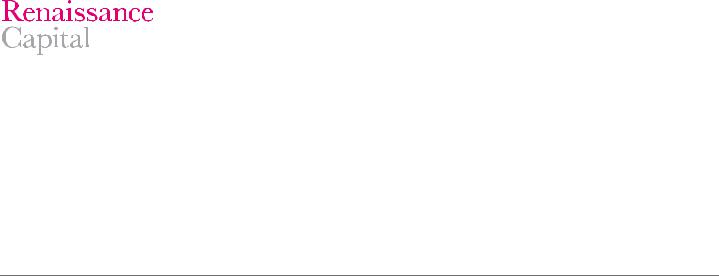
vk.com/id446425943
Renaissance Capital |
Renaissance Capital Ltd. |
Renaissance Capital |
Moscow |
London |
Johannesburg |
T + 7 (495) 258-7777 |
T + 44 (203) 379-7777 |
T +27 (11) 750-1400 |
Renaissance Securities (Nigeria) Ltd. |
Renaissance Capital |
Renaissance Capital |
Lagos |
Nairobi |
Cape Town |
T +234 (1) 448-5300 |
T +254 (20) 368-2000 |
T +27 (11) 750-1164 |
Renaissance Securities (Cyprus) Ltd. |
Renaissance Capital Egypt for Promoting |
|
Nicosia |
and Underwriting of Securities S.A.E. |
|
T + 357 (22) 505-800 |
Cairo |
|
© 2019 Renaissance Securities (Cyprus) Limited, a subsidiary of Renaissance Financial Holdings Limited ("Renaissance Capital"), which together with other subsidiaries operates outside of the USA under the brand name of Renaissance Capital, for contact details see Bloomberg page RENA, or contact the relevant office. All rights reserved. This document and/or information has been prepared by and, except as otherwise specified herein, is communicated by Renaissance Securities (Cyprus) Limited, regulated by the Cyprus Securities and Exchange Commission (License No: KEPEY 053/04).
This document is for information purposes only. The information presented herein does not comprise a prospectus of securities for the purposes of EU Directive 2003/71/EC or Federal Law No. 39-FZ of 22 April 1994 (as amended) of the Russian Federation "On the Securities Market". Any decision to purchase securities in any proposed offering should be made solely on the basis of the information to be contained in the final prospectus published in relation to such offering. This document does not form a fiduciary relationship or constitute advice and is not and should not be construed as an offer, or a solicitation of an offer, or an invitation or inducement to engage in investment activity, and cannot be relied upon as a representation that any particular transaction necessarily could have been or can be effected at the stated price. This document is not an advertisement of securities. Opinions expressed herein may differ or be contrary to opinions expressed by other business areas or groups of Renaissance Capital as a result of using different assumptions and criteria. All such information and opinions are subject to change without notice, and neither Renaissance Capital nor any of its subsidiaries or affiliates is under any obligation to update or keep current the information contained herein or in any other medium.
Descriptions of any company or companies or their securities or the markets or developments mentioned herein are not intended to be complete. This document and/or information should not be regarded by recipients as a substitute for the exercise of their own judgment as the information has no regard to the specific investment objectives, financial situation or particular needs of any specific recipient. The application of taxation laws depends on an investor’s individual circumstances and, accordingly, each investor should seek independent professional advice on taxation implications before making any investment decision. The information and opinions herein have been compiled or arrived at based on information obtained from sources believed to be reliable and in good faith. Such information has not been independently verified, is provided on an ‘as is’ basis and no representation or warranty, either expressed or implied, is provided in relation to the accuracy, completeness, reliability, merchantability or fitness for a particular purpose of such information and opinions, except with respect to information concerning Renaissance Capital, its subsidiaries and affiliates. All statements of opinion and all projections, forecasts, or statements relating to expectations regarding future events or the possible future performance of investments represent Renaissance Capital’s own assessment and interpretation of information available to them currently.
The securities described herein may not be eligible for sale in all jurisdictions or to certain categories of investors. Options, derivative products and futures are not suitable for all investors and trading in these instruments is considered risky. Past performance is not necessarily indicative of future results. The value of investments may fall as well as rise and the investor may not get back the amount initially invested. Some investments may not be readily realisable since the market in the securities is illiquid or there is no secondary market for the investor’s interest and therefore valuing the investment and identifying the risk to which the investor is exposed may be difficult to quantify. Investments in illiquid securities involve a high degree of risk and are suitable only for sophisticated investors who can tolerate such risk and do not require an investment easily and quickly converted into cash. Foreign-currency-denominated securities are subject to fluctuations in exchange rates that could have an adverse effect on the value or the price of, or income derived from, the investment. Other risk factors affecting the price, value or income of an investment include but are not necessarily limited to political risks, economic risks, credit risks, and market risks. Investing in emerging markets such as Russia, other CIS, African or Asian countries and emerging markets securities involves a high degree of risk and investors should perform their own due diligence before investing.
Excluding significant beneficial ownership of securities where Renaissance Capital has expressed a commitment to provide continuous coverage in relation to an issuer or an issuer’s securities, Renaissance
Capital and its affiliates, their directors, representatives, employees (excluding the US broker-dealer unless specifically disclosed), or clients may have or have had interests in the securities of issuers described in the Investment Research or long or short positions in any of the securities mentioned in the Investment Research or other related financial instruments at any time and may make a purchase and/or sale, or offer to make a purchase and/or sale, of any such securities or other financial instruments from time to time in the open market or otherwise, in each case as principals or as agents. Where Renaissance Capital has not expressed a commitment to provide continuous coverage in relation to an issuer or an issuer’s securities,
Renaissance Capital and its affiliates (excluding the US broker-dealer unless specifically disclosed) may act or have acted as market maker in the securities or other financial instruments described in the Investment Research, or in securities underlying or related to such securities. Employees of Renaissance Capital or its
affiliates may serve or have served as officers or directors of the relevant companies. Renaissance Capital and its affiliates may have or have had a relationship with or provide or have provided investment banking, capital markets, advisory, investment management, and/or other financial services to the relevant companies, and have established and maintain information barriers, such as ‘Chinese Walls’, to control the flow of information contained in one or more areas of Renaissance Capital, into other areas, units, groups or affiliates of the Firm.
The information herein is not intended for distribution to the public and may not be reproduced, redistributed or published, in whole or in part, for any purpose without the written permission of Renaissance Capital, and neither Renaissance Capital nor any of its affiliates accepts any liability whatsoever for the actions of third parties in this respect. This information may not be used to create any financial instruments or products or any indices. Neither Renaissance Capital and its affiliates, nor their directors, representatives, or employees accept any liability for any direct or consequential loss or damage arising out of the use of all or any part of the information herein
Bermuda: Neither the Bermuda Monetary Authority nor the Registrar of Companies of Bermuda has approved the contents of this document and any statement to the contrary, express or otherwise, would constitute a material misstatement and an offence.
EEA States: Distributed by Renaissance Securities (Cyprus) Limited, regulated by Cyprus Securities and Exchange Commission, or Renaissance Capital Limited, member of the London Stock Exchange and regulated in the UK by the Financial Conduct Authority (“FCA”) in relation to designated investment business (as detailed in the FCA rules).
Cyprus: Except as otherwise specified herein the information herein is not intended for, and should not be relied upon by, retail clients of Renaissance Securities (Cyprus) Limited. The Cyprus Securities and Exchange Commission Investor Compensation Fund is available where Renaissance Securities (Cyprus) Limited is unable to meet its liabilities to its retail clients, as specified in the Customer Documents Pack.
United Kingdom: Approved and distributed by Renaissance Capital Limited only to persons who are eligible counterparties or professional clients (as detailed in the FCA Rules). The information herein does not apply to, and should not be relied upon by, retail clients; neither the FCA’s protection rules nor compensation scheme may be applied.
Kenya: Distributed by Renaissance Capital (Kenya) Limited, regulated by the Capital Markets Authority.
Nigeria: Distributed by RenCap Securities (Nigeria) Limited, authorised dealing member of The Nigerian Stock Exchange, or Renaissance Securities (Nigeria) Limited, entities regulated by the Securities and Exchange Commission.
Russia: Distributed by Renaissance Broker Limited regulated by the Central Bank of Russia.
South Africa: Distributed by Rencap Securities (Proprietary) Limited, an authorised Financial Services Provider and member of the JSE Limited. The information contained herein is intended for Institutional investors only.
United States: Distributed in the United States by RenCap Securities, Inc., member of FINRA and SIPC, or by a non-US subsidiary or affiliate of Renaissance Financial Holdings Limited that is not registered as a US broker-dealer (a "non-US affiliate"), to major US institutional investors only. RenCap Securities, Inc. accepts responsibility for the content of a research report prepared by another non-US affiliate when distributed to US persons by RenCap Securities, Inc. Although it has accepted responsibility for the content of this research report when distributed to US investors, RenCap Securities, Inc. did not contribute to the preparation of this report and the analysts authoring this are not employed by, and are not associated persons of, RenCap Securities, Inc. Among other things, this means that the entity issuing this report and the analysts authoring this report are not subject to all the disclosures and other US regulatory requirements to which RenCap Securities, Inc. and its employees and associated persons are subject. Any US person receiving this report who wishes to effect transactions in any securities referred to herein should contact RenCap Securities, Inc., not its non-US affiliate. RenCap Securities, Inc. is a subsidiary of Renaissance Financial Holdings Limited and forms a part of a group of companies operating outside of the United States as "Renaissance Capital.". Contact: RenCap Securities, Inc., 780 Third Avenue, 20th Floor, New York, New York 10017, Telephone: +1 (212) 824-1099.
Other distribution: The distribution of this document in other jurisdictions may be restricted by law and persons into whose possession this document comes should inform themselves about, and observe, any such restriction.
Renaissance Capital equity research disclosures (Stocks)
http://new.guap.ru/i04/contacts
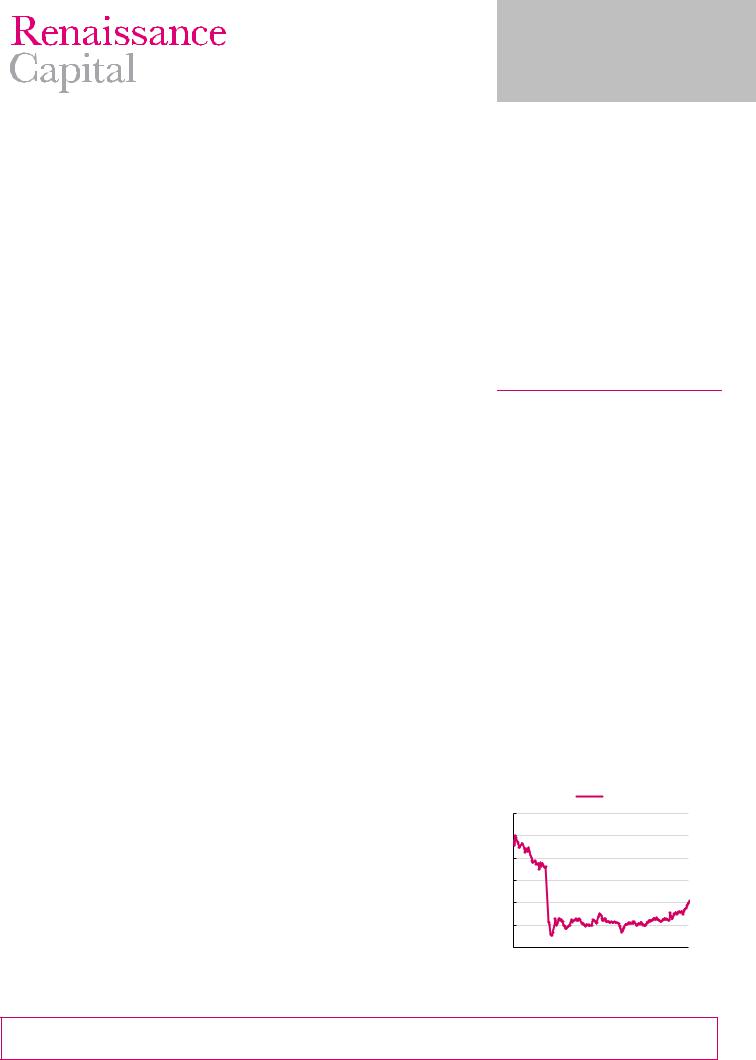
vk.com/id446425943
Rusal
Resuming coverage
Rusal has been removed from the Office of Foreign Assets Control's (OFAC) Specially Designated Nationals List. We resume coverage on Rusal with a TP of HKD6.0 and a BUY rating (previously Suspended). We have a positive outlook on the aluminium market, and believe Rusal’s medium-term deleveraging and longer-term dividend yield potential could be positive catalysts.
Deleveraging and dividends driven by attractive FCF yield
We forecast Rusal’s FCF to equity shareholders (FCFE) yield at 25% on average over the next three years, after capex of $700-850mn. Deleveraging the balance sheet is a strategic priority for Rusal and its medium-term dividend policy is to pay up to 15% of EBITDA plus dividends from its investment in Norilsk Nickel (BUY, TP $24.0, CP $20.7). Despite this conservative policy, we calculate supportive dividend yields of 6.5% on average over the next three years. We forecast net debt falling from $7.6bn in FY17, to $4.7bn at the end of FY20, implying comfortable net debt/(EBITDA + Norilsk dividend) of 1.5x.
Favourable cost position and strategy to improve margins
Rusal’s operations are competitively positioned in the first half of the aluminium cost curve. The company’s strategy to enhance margins further include: increasing the share of value-added products to achieve higher sales realisations; expanding sales in Russia and the CIS; achieving self-sufficiency in raw materials to be independent from third-party suppliers; pursuing R&D projects to develop new aluminium alloys and products; introducing innovative technologies to improve operating efficiency; ensuring a secure supply of energy through access to competitive sources; and maintaining secure transport via optimal logistics.
Risks
Our discounted cash flow (DCF) valuation is calculated using a weighted average cost of capital (WACC) of 12.5%, which reflects an equity risk premium of 8%. We employ a higher equity risk premium for Rusal than for other diversified miners under coverage to account for risks and uncertainties that we may not have reflected in our cash-flow forecasts. Key risks to our positive investment stance on Rusal are: 1) lower-than-forecast aluminium, nickel, palladium and copper prices; 2) a stronger- than-forecast rouble; 3) value destruction through low returns on capital expenditure; 4) risks associated with a potential “shoot-out” price auction between Rusal and
Vladimir Potanin’s investment companies for up to 30% of Norilsk Nickel; 5) potential higher taxes or government requirements for increased investment in social infrastructure; 6) the potential for regulation to result in higher electricity tariffs (major input cost) for industrial consumers; and 7) sanctions.
Resumption of coverage
BUY (previously Suspended) TP: HKD6.0 (previously Suspended)
Metals & Mining Russia
Johann Pretorius +27 (11) 750-1450
JPretorius2@rencap.com
Steven Friedman +27 (11) 750-1481
SFriedman@rencap.com
Kabelo Moshesha +27 (11) 750-1472
KMoshesha@rencap.com
Siphelele Mhlongo +27 (11) 750-1420
SMhlongo@rencap.com
Derick Deale
+27 (11) 750-1458 DDeale@rencap.com
Report date: |
|
5 February 2019 |
||
Current price, HKD |
|
|
|
3.3 |
Upside/downside, % |
|
|
|
88.2 |
MktCap, $mn |
|
|
|
6,350.9 |
Average daily volume, $mn |
|
|
3.2 |
|
Free float, $mn |
|
|
|
628.1 |
Bloomberg |
|
|
|
486 HK |
|
|
|
||
Summary valuation and financials |
|
|
||
IFRS |
2017 |
2018E |
2019E |
2020E |
Underlying EPS, $ |
0.08 |
0.13 |
0.09 |
0.12 |
EPS growth, % |
3.6 |
56.9 |
-29.2 |
36.9 |
DPS, $ |
0.02 |
0.03 |
0.02 |
0.03 |
Dividend yield, % |
3.4 |
6.9 |
5.1 |
6.3 |
EBITDA margin, % |
21.3 |
22.1 |
17.4 |
20.7 |
Capex/EBITDA, % |
26 |
24 |
33 |
22 |
FCF yield, % |
10.4 |
12.0 |
15.5 |
18.8 |
RoCE, % |
12.6 |
13.3 |
8.8 |
12.3 |
RoE, % |
32.9 |
39.4 |
23.4 |
26.4 |
Net debt/EBITDA, x |
2.4 |
2.2 |
2.3 |
1.5 |
P/E, x |
7.2 |
3.0 |
4.7 |
3.4 |
EV/EBITDA, x |
6.0 |
3.9 |
4.7 |
3.5 |
BVPS, $ |
0.3 |
0.3 |
0.4 |
0.5 |
Priced at market close on 1 February 2019
Source: Company data, Renaissance Capital estimates
Figure 1: Price performance – 52 weeks, HKD
486 HK
7 |
|
|
|
|
|
|
6 |
|
|
|
|
|
|
5 |
|
|
|
|
|
|
4 |
|
|
|
|
|
|
3 |
|
|
|
|
|
|
2 |
|
|
|
|
|
|
1 |
|
|
|
|
|
|
Jan |
Mar |
May |
Jul |
Sep |
Nov |
Jan |
Source: Bloomberg
Important disclosures are found at the Disclosures Appendix. Communicated by Renaissance Securities (Cyprus) Limited, regulated by the Cyprus Securities & Exchange
Commission, which together with non-US affiliates operates outside of the USA under the brand name of Renaissance Capital.
http://new.guap.ru/i04/contacts

vk.com/id446425943
Miners ranked by potential returns
Renaissance Capital
5 February 2019
Rusal
Figure 2 shows the companies under our coverage ranked by potential 12-month returns, based on our TPs.
Rusal offers a total potential one-year return of 88.2% based on our TP of HKD6.0 and our forecast one-year forward rolling dividend yield of 5.3%.
Figure 2: Summary sector ratings and TPs (ranked by total potential 12M return, including estimated dividends)
|
Unit |
12M TP |
Previous |
Current |
12M target |
12M fwd |
Total 12M |
12M forward |
Rating |
|
12M TP |
price* |
capital return |
dividend yield |
return |
rolling P/E |
|||
|
|
|
|
||||||
Rusal |
HKD |
6.0 |
Susp |
3.3 |
82.9% |
5.3% |
88.2% |
4.5x |
BUY |
Evraz |
GBp |
640.0 |
640.0 |
507.6 |
26.1% |
14.1% |
40.2% |
6.1x |
BUY |
Severstal |
$ |
18.1 |
18.1 |
15.4 |
17.2% |
11.9% |
29.1% |
8.1x |
BUY |
Phosagro |
$ |
16.0 |
16.0 |
13.5 |
18.8% |
7.7% |
26.4% |
6.5x |
BUY |
Norilsk |
$ |
24.0 |
24.0 |
20.8 |
15.6% |
10.4% |
26.0% |
9.8x |
BUY |
NLMK |
$ |
27.0 |
27.0 |
24.0 |
12.5% |
12.9% |
25.4% |
8.4x |
BUY |
MMK |
$ |
10.1 |
10.1 |
8.6 |
17.2% |
6.6% |
23.8% |
12.4x |
BUY |
Alrosa |
RUB |
109.0 |
109.0 |
99.5 |
9.5% |
13.0% |
22.6% |
7.3x |
BUY |
Polyus |
RUB |
6,300.0 |
6,300.0 |
5,521.5 |
14.1% |
6.0% |
20.1% |
7.1x |
BUY |
Rio Tinto |
GBP |
48.0 |
48.0 |
42.3 |
13.5% |
6.3% |
19.7% |
9.6x |
BUY |
Exxaro |
ZAR |
170.0 |
170.0 |
156.5 |
8.6% |
9.8% |
18.4% |
5.8x |
BUY |
ARM |
ZAR |
160.0 |
160.0 |
147.3 |
8.6% |
9.6% |
18.2% |
5.9x |
BUY |
Impala Platinum |
ZAR |
45.0 |
45.0 |
38.8 |
16.1% |
0.0% |
16.1% |
8.1x |
BUY |
ArcelorMittal SA |
ZAR |
4.0 |
4.0 |
3.5 |
15.9% |
0.0% |
15.9% |
-139.9x |
HOLD |
South32 |
ZAR |
37.0 |
37.0 |
33.9 |
9.0% |
6.7% |
15.7% |
11.4x |
HOLD |
BHP |
ZAR |
315.0 |
315.0 |
297.3 |
6.0% |
9.2% |
15.2% |
11.7x |
HOLD |
Fortescue |
AUD |
6.0 |
6.0 |
5.8 |
2.7% |
8.7% |
11.4% |
7.6x |
BUY |
Glencore |
ZAR |
55.0 |
55.0 |
53.1 |
3.7% |
6.7% |
10.3% |
11.6x |
HOLD |
Vale |
$ |
13.6 |
13.6 |
12.6 |
8.2% |
0.0% |
8.2% |
6.3x |
HOLD |
Polymetal |
GBP |
8.6 |
8.6 |
8.6 |
-0.1% |
6.6% |
6.5% |
7.7x |
HOLD |
Acron |
RUB |
4,600.0 |
4,600.0 |
4,670.0 |
-1.5% |
6.9% |
5.4% |
7.8x |
HOLD |
Anglo American |
ZAR |
340.0 |
340.0 |
345.2 |
-1.5% |
6.0% |
4.5% |
8.9x |
HOLD |
Assore |
ZAR |
320.0 |
320.0 |
346.8 |
-7.7% |
8.6% |
0.8% |
6.6x |
HOLD |
Sibanye - Stillwater |
ZAR |
11.1 |
11.1 |
12.1 |
-8.3% |
0.2% |
-8.1% |
5.6x |
HOLD |
Kumba Iron Ore |
ZAR |
270.0 |
270.0 |
340.6 |
-20.7% |
12.3% |
-8.4% |
8.2x |
SELL |
RBPlats |
ZAR |
25.0 |
25.0 |
28.8 |
-13.0% |
0.0% |
-13.0% |
8.2x |
SELL |
Anglo American Platinum |
ZAR |
540.0 |
540.0 |
636.0 |
-15.1% |
1.9% |
-13.2% |
15.7x |
HOLD |
Gold Fields |
ZAR |
43.0 |
43.0 |
53.8 |
-20.0% |
3.2% |
-16.8% |
9.7x |
SELL |
Northam |
ZAR |
40.0 |
40.0 |
48.5 |
-17.5% |
0.0% |
-17.5% |
13.1x |
SELL |
Harmony |
ZAR |
21.0 |
21.0 |
26.9 |
-22.0% |
3.6% |
-18.5% |
4.1x |
SELL |
Lonmin |
ZAR |
7.0 |
7.0 |
9.6 |
-26.8% |
0.0% |
-26.8% |
1.7x |
SELL |
AngloGold |
ZAR |
110.0 |
110.0 |
190.0 |
-42.1% |
1.1% |
-41.0% |
8.4x |
SELL |
Note: Priced at market close on 1 February 2019
Source: Thomson Reuters Datastream, Renaissance Capital estimates
http://new.guap.ru/i04/contacts |
2 |
|
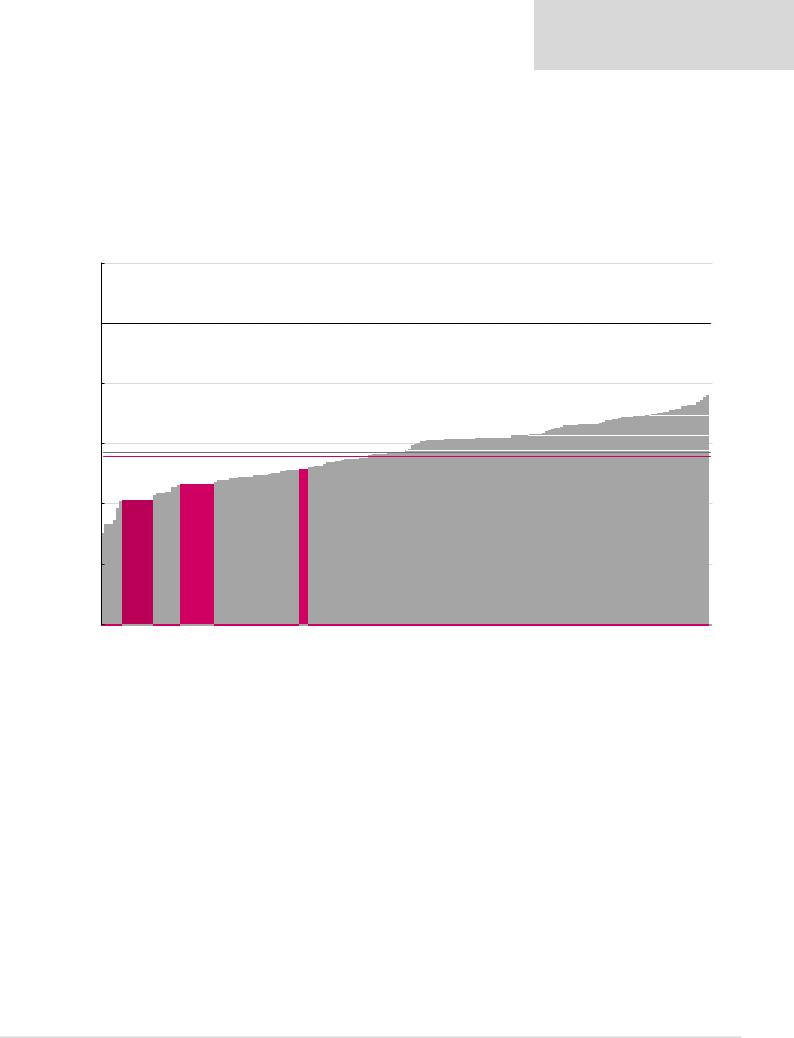
vk.com/id446425943
Renaissance Capital
5 February 2019
Rusal
Favourable cost curve position
Rusal’s operations are competitively positioned in the first half of the aluminium cost curve.
Figure 3 shows our calculation of the estimated breakeven price per tonne of aluminium for Rusal in FY18 relative to the aluminium industry.
Figure 3: 2018E aluminium cash costs plus sustaining capex (reflecting 67.5mnt supply), $/t
3,500
3,000 |
Incentive price: $3,000/t |
|
|
|
|
||
2,500 |
|
|
|
|
|
|
90th percentile: $2,231/t |
|
|
|
70th percentile: $2,072/t |
2,000 |
Average cash cost: $1,927/t |
|
|
|
Spot price: $1,892/t* |
50th percentile: $1,939/t |
|
|
South32,1,783 |
||
1,500 |
1,530Tinto, |
1,658Rusal, |
|
|
|
|
|
1,000 |
Rio |
|
|
500
Note: Priced as at 1 February 2019
Source: Bloomberg, CRU, Renaissance Capital estimates
We believe Rusal and Norilsk’s favourable cost-curve positions would allow for positive
FCF generation through the cycle.
http://new.guap.ru/i04/contacts |
3 |
|
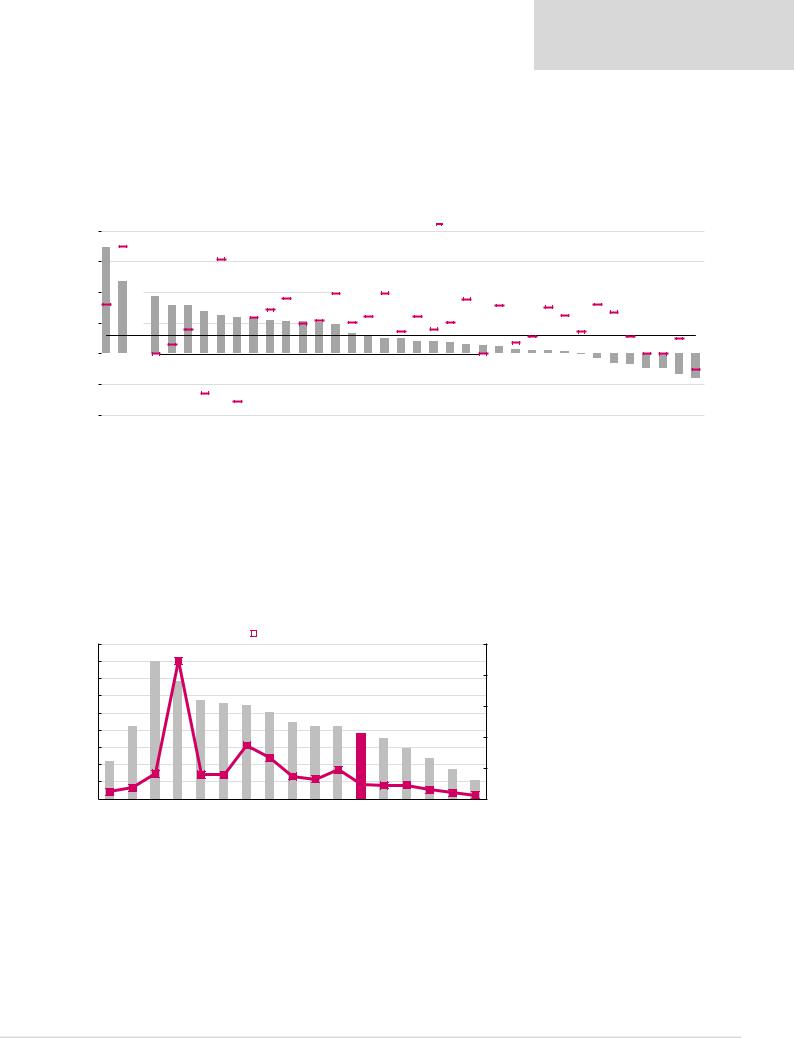
vk.com/id446425943
Renaissance Capital
5 February 2019
Rusal
Deleveraging and dividends
We forecast Rusal’s net debt/(EBITDA + Norilsk dividends) at around 2.3x at the end of
FY19E, which is among the highest in our coverage universe. However, this is based on below mid-cycle EBITDA, which in turn is based on our average aluminium price forecast of $1,953/t.
Figure 4: Miners ranked by CY19E net debt/EBITDA compared with their historical averages
4x |
|
3.5x |
|
|
|
|
|
|
|
|
|
|
|
|
|
|
|
||
|
|
|
|
|
|
|
|
|
|
3x |
|
|
|
|
|
|
|
|
|
2x |
|
|
|
|
|
|
|
|
|
|
|
|
|
|
|
|
|
|
|
|
2.4x |
|
2.3x |
1.9x |
1.6x |
1.6x |
1.4x |
||
|
|
|
|||||||
1x |
|
|
|
|
|
|
|
|
|
|
|
|
|
|
|
|
|
|
|
0x |
|
|
|
|
|
|
|
|
|
|
|
|
|
|
|
|
|
|
|
-1x |
|
|
|
|
|
|
|
|
|
-2x |
|
Northam Glencore |
Rusal* |
Sappi |
Sasol |
Norilsk |
RBPlats |
||
|
|||||||||
|
|
||||||||
Note: Priced at market close on 1 February 2019
|
CY19E Net debt/EBITDA |
|
LT average |
|
|
1.3x |
1.2x |
1.1x |
1.1x |
1.1x |
1.1x |
1.0x |
1.0x |
|
|
|
|
|
|
|
|
|
|
|
|
|
|
|
|
|
|
|
|
|
|
|
|
|
|
|
|
|
|
0.7x |
0.6x |
0.5x |
0.5x |
0.4x |
0.4x |
0.4x |
0.3x |
0.3x |
0.2x |
0.1x |
0.1x |
0.1x |
0.1x |
|
|
|
|
|
|
|
|
|
|
|
|
||||||||||||
|
|
|
|
|
|
|
|
|
|
|
|
|
|
|
|
|
|
|
|
|
|
|
|
|
|
|
|
Sector average, 0.6x |
|
||||||||
|
|
|
|
|
|
|
|
|
|
|
|
|
|
|
|
|
|
|
|
|
|
|
|
|
|
|
|
|
|
|
|
|
|
|
|
|
|
|
|
|
|
|
|
|
|
|
|
|
|
|
|
|
|
|
|
|
|
|
|
|
|
|
|
0.0x |
-0.1x |
-0.3x |
-0.4x |
-0.5x |
-0.5x |
-0.7x |
-0.8x+ |
||||
Evraz |
AMSA |
PhosAgro |
Mondi |
Polymetal |
Polyus |
Sibanye |
Russian* |
Gold Fields |
Severstal |
Fortescue |
Others* |
AngloGold |
BHP |
NLMK |
Alrosa |
Harmony |
Vale |
Exxaro* |
Impala |
MMK |
Anglo |
Rio Tinto |
Hulamin |
Amplats |
Merafe |
Kumba |
South32 |
ARM* |
Assore* |
||||||||
Source: Company data, Renaissance Capital estimates
Deleveraging the balance sheet is a strategic priority for Rusal and its medium-term dividend policy is to pay up to 15% of EBITDA plus dividends from Norilsk. We forecast net debt falling from $7.6bn in FY17 to $4.7bn at the end of FY20, implying comfortable net debt/(EBITDA + Norilsk dividend) of 1.5x.
Figure 5: Rusal’s net debt and net debt/(EBITDA plus Norilsk dividends)
|
Net debt, $mn |
|
|
|
Net debt/(EBITDA+dividends from associates) |
18,000 |
|
|
|
|
|
|
|
|
|
|
|
|
|
|
|
|
25.0x |
16,000 |
|
|
|
|
|
|
|
|
|
|
|
|
|
|
|
|
|
14,000 |
|
|
|
|
|
|
|
|
|
|
|
|
|
|
|
|
20.0x |
|
|
|
|
|
|
|
|
|
|
|
|
|
|
|
|
|
|
12,000 |
|
|
|
|
|
|
|
|
|
|
7,648 |
|
|
|
|
|
|
10,000 |
|
|
|
|
|
|
|
|
|
|
6,982 |
|
|
|
|
15.0x |
|
|
|
|
|
|
|
|
|
|
|
5,937 |
|
|
|
|
|||
8,000 |
|
|
|
|
|
|
|
|
|
|
4,740 |
|
|
10.0x |
|||
|
|
|
|
|
|
|
|
|
|
|
3,393 |
|
|||||
6,000 |
|
|
|
|
|
|
|
|
|
|
2,172 |
|
|||||
4,000 |
|
|
|
|
|
|
|
|
|
|
5.0x |
||||||
|
|
|
|
|
|
|
|
|
|
|
|||||||
|
|
|
|
|
|
|
|
|
|
|
|
||||||
2,000 |
|
|
|
|
|
|
|
|
|
|
2.4x |
2.2x |
2.3x |
1.5x 1.0x |
0.7x |
|
|
|
|
|
|
|
|
|
|
|
|
|
|
|
|
||||
|
|
|
|
|
|
|
|
|
|
|
|
|
|
|
|
|
|
0 |
|
|
|
|
|
|
|
|
|
|
|
2018E |
2019E |
2020E |
2021E |
2022E |
0.0x |
2006 |
2007 |
2008 |
2009 |
2010 |
2011 |
2012 |
2013 |
2014 |
2015 |
2016 |
2017 |
|
|||||
Source: Company data, Renaissance Capital estimates
http://new.guap.ru/i04/contacts |
4 |
|
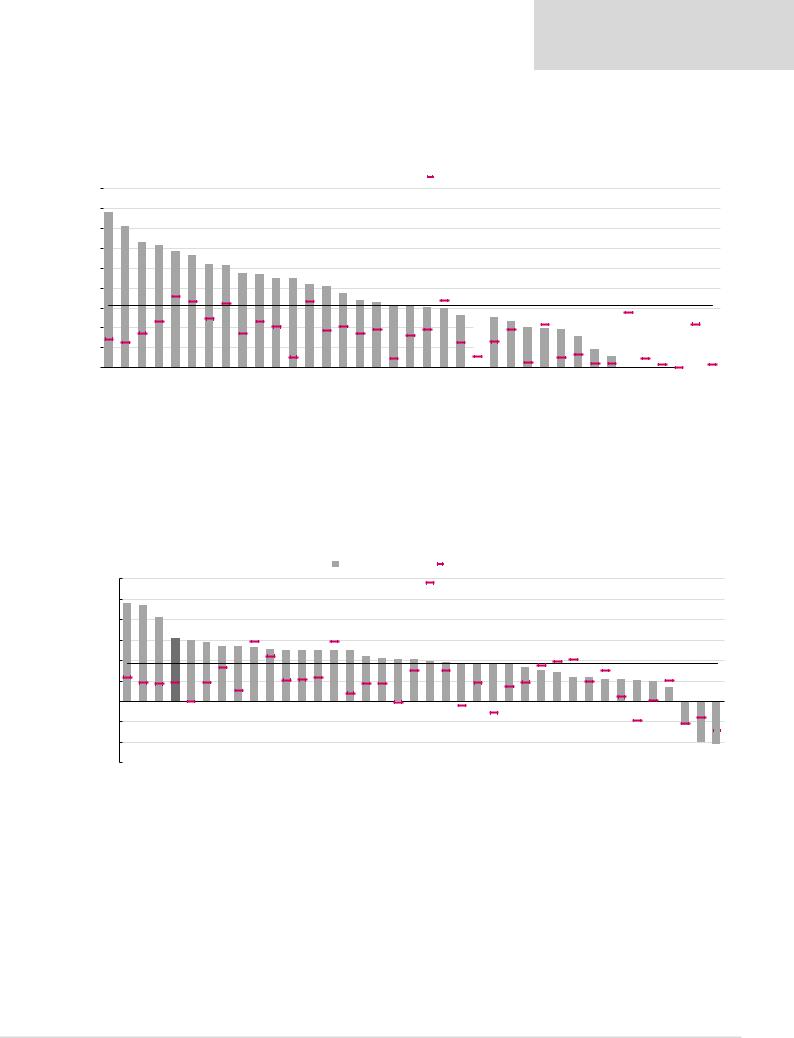
vk.com/id446425943
Renaissance Capital
5 February 2019
Rusal
Despite Rusal’s conservative dividend policy, we forecast a supportive FY19E dividend yield of 5.1%. We forecast Rusal’s dividend yield over the next three years to be 6.5% on average.
Figure 6: Miners ranked by CY19E dividend yield compared with their historical averages
18% |
|
15.6% |
14.2% |
12.6% |
12.3% |
11.7% |
11.3% |
|
|||||||
16% |
|
||||||
|
|
|
|
|
|
|
|
14% |
|
|
|
|
|
|
|
12% |
|
|
|
|
|
|
|
10% |
|
|
|
|
|
|
|
8% |
|
|
|
|
|
|
|
6% |
|
|
|
|
|
|
|
4% |
|
|
|
|
|
|
|
2% |
|
|
|
|
|
|
|
0% |
|
Merafe |
Evraz |
Alrosa |
NLMK |
Severstal |
Kumba |
|
|||||||
|
|
Note: Priced at market close on 1 February 2019
10.4% |
10.3% |
9.5% |
9.4% |
9.0% |
8.9% |
8.4% |
|
|
CY19E Dividend yield |
|
|
LT average |
|
|
|
|
|
|
|
|
|
|
|
|
|
|
|
||||||||
|
|
|
|
|
|
|
|
|
|
|
|
|
|
|
|
|
|
|
|||||||||||||||||
8.2% |
7.5% |
6.8% |
6.6% |
6.3% |
6.2% |
6.1% |
5.9% |
5.2% |
5.1% |
5.1% |
4.6% |
4.0% |
4.0% |
3.8% |
3.1% |
1.9% |
1.1% |
0.0% |
0.0% |
0.0% |
0.0% |
0.0% |
0.0% |
||||||||||||
|
|
|
|
|
|
|
|
|
|
|
|
|
|
|
|
|
|
|
|
|
|
|
|
|
|
|
|
Sector average, 6.2% |
|
||||||
|
|
|
|
|
|
|
|
|
|
|
|
|
|
|
|
|
|
|
|
|
|
|
|
|
|
|
|
|
|
|
|
|
|
|
|
|
|
|
Russian* |
|
|
|
|
|
|
|
|
|
|
|
|
|
|
|
|
|
|
|
|
|
|
|
|
|
|
Impala |
|
|
|
|
|
Exxaro |
Norilsk |
ARM |
Fortescue |
Hulamin |
PhosAgro |
Assore |
BHP |
MMK |
Polymetal |
South32 |
Glencore |
Rio Tinto |
Polyus |
Anglo |
Rusal |
Others* |
Sasol |
Sappi |
Mondi |
Harmony |
Gold Fields |
Amplats |
AngloGold |
Vale |
Northam |
RBPlats |
Sibanye |
AMSA |
|||||||
Source: Company data, Renaissance Capital estimates
Attractive valuation relative to peers
Rusal’s CY19E FCF yield of 15.5% is well above the sector average of 9.4%.
Figure 7: Companies ranked by CY19E FCF yield compared with their historical averages
30.0%
25.0%
20.0%
15.0%
10.0%
5.0%
0.0% -5.0% -10.0% -15.0%
24.0% |
|
|
|
|
|
|
|
|
|
|
|
|
|
CY19E FCF yield |
|
|
LT average |
|
|
|
|
|
|
|
|
|
|
||||||
23.4% |
20.5% |
15.5% |
15.0% |
14.4% |
13.5% |
13.4% |
13.2% |
12.8% |
12.5% |
12.4% |
12.4% |
12.4% |
12.4% |
11.0% |
10.4% |
10.2% |
10.2% |
9.8% |
9.4% |
9.4% |
9.3% |
9.2% |
9.1% |
8.4% |
7.6% |
7.2% |
|
|
|
Sector average, 9.4% |
|||
5.9% |
5.9% |
5.4% |
5.3%+ |
4.8% |
3.5% |
||||||||||||||||||||||||||||
5.1% |
|||||||||||||||||||||||||||||||||
|
|
|
|
|
-6.0% |
-10.0% |
-10.5% |
|
|
Hulamin ARM Merafe Rusal Harmony Exxaro Fortescue AngloGold Alrosa Kumba Anglo NLMK Assore Evraz Gold Fields BHP Polyus PhosAgro Russian* South32 Rio Tinto Impala Polymetal Sibanye Others* Vale Glencore MMK Severstal Mondi Norilsk Amplats Northam Sasol Sappi Lonmin |
RBPlats |
AMSA |
||
*Proportionately consolidated **Excluding marketing business
Source: Company data, Renaissance Capital estimates
http://new.guap.ru/i04/contacts |
5 |
|
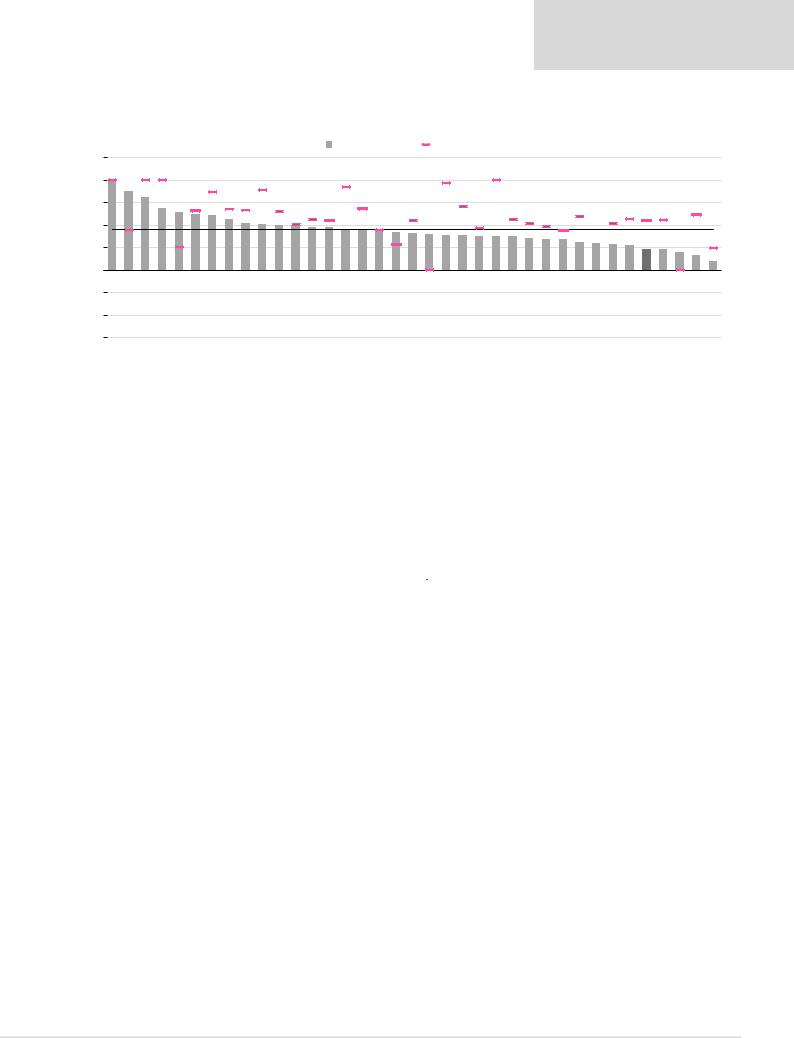
vk.com/id446425943
Renaissance Capital
5 February 2019
Rusal
Rusal’s CY19E P/E multiple of 4.7x is well below the sector average of 9.1x.
Figure 8: Companies ranked by CY19E P/E multiples compared with their historical averages
15.x |
|
20.0x |
17.6x |
16.2x |
13.6x |
12.8x |
12.5x |
||
25.x |
|
|
|
|
|
|
|
|
|
20.x |
|
|
|
|
|
|
|
|
|
10.x |
|
|
|
|
|
|
|
|
|
5.x |
|
|
|
|
|
|
|
|
|
0.x |
|
|
|
|
|
|
|
|
|
-5.x |
|
|
|
|
|
|
|
|
|
-10.x |
|
|
|
|
|
|
|
|
|
-15.x |
|
AMSA |
Fortescue |
Amplats |
Northam |
South32 |
MMK |
||
|
|||||||||
|
|
||||||||
Note: Priced at market close on 1 February 2019
|
|
|
|
|
|
|
|
CY19E P/E multiple |
LT average |
|
|
|
|
|
|
|
|
|
|
|
|
|
|
|||||||
12.1x |
11.3x |
10.5x |
10.1x |
10.0x |
9.8x |
9.6x |
9.4x |
9.0x |
8.9x |
8.9x |
8.3x |
8.2x |
7.9x |
7.8x |
7.7x |
7.6x |
7.6x |
7.5x |
7.0x |
6.8x |
6.8x |
6.2x |
5.9x |
5.7x |
5.6x |
4.7x |
4.6x |
3.9x |
3.4x |
2.0x |
|
|
|
|
|
|
|
|
|
|
|
|
|
|
|
|
|
|
|
|
|
|
|
Sector average, 9.1x |
|
|
|
||||
GoldRio GlencoreBHPMondiFieldsNorilskTintoAngloOthers*AngloGoldNLMKKumbaSasolSeverstalSappiImpalaPolymetalAlrosaRBPlatsRussian*PolyusValeAssoreEvrazSibanyeMerafeARMRusalExxaroHarmonyHulaminPhosAgro
Source: Company data, Renaissance Capital estimates
Rusal’s earnings sensitivity to aluminium prices and rouble
The figures below show Rusal’s FY19 earnings per share and P/E multiples on a range of aluminium prices and RUB/$ exchange rates. We use our base case earnings for Norilsk in all cases.
Figure 9: Rusal’s FY19E EPS at different aluminium prices and exchange rates, USc
|
|
RUB/$ |
57 |
60 |
64 |
67 |
70 |
74 |
77 |
|
$/t |
1,367 |
-7.5 |
-5.4 |
-3.6 |
-2.0 |
-0.5 |
0.8 |
2.0 |
|
price, |
1,562 |
-3.8 |
-1.8 |
0.0 |
1.7 |
3.1 |
4.4 |
5.6 |
|
1,757 |
-0.1 |
1.9 |
3.7 |
5.3 |
6.7 |
8.1 |
9.3 |
|
|
|
|
|
|
|
|
|
||
|
Aluminium |
1,953 |
3.5 |
5.6 |
7.3 |
8.9 |
10.4 |
11.7 |
12.9 |
|
|
2,148 |
7.2 |
9.2 |
11.0 |
12.5 |
14.0 |
15.3 |
16.5 |
|
|
2,343 |
10.8 |
12.8 |
14.6 |
16.2 |
17.6 |
18.9 |
20.1 |
|
|
2,538 |
14.4 |
16.4 |
18.2 |
19.8 |
21.2 |
22.5 |
23.7 |
Source: Bloomberg, Renaissance Capital estimates
Figure 10: Rusal’s FY19E P/E multiple at different aluminium prices and exchange rates
|
RUB/$ |
57 |
60 |
64 |
67 |
70 |
74 |
77 |
||
$/t |
1,367 |
-5.6 |
-7.7 |
-11.5 |
-20.7 |
-77.7 |
53.5 |
21.0 |
||
price, |
1,562 |
-11.0 |
-23.5 |
1112.3 |
25.1 |
13.4 |
|
9.4 |
7.4 |
|
1,757 |
-340.8 |
22.0 |
11.3 |
|
7.9 |
6.2 |
|
5.2 |
4.5 |
|
Aluminium |
1,953 |
11.9 |
7.5 |
5.7 |
4.7 |
4.0 |
|
3.6 |
3.2 |
|
|
2,148 |
5.8 |
4.6 |
3.8 |
3.3 |
3.0 |
2.7 |
2.5 |
||
|
2,343 |
3.9 |
3.3 |
2.9 |
2.6 |
2.4 |
2.2 |
2.1 |
||
|
2,538 |
2.9 |
2.5 |
2.3 |
2.1 |
2.0 |
1.9 |
1.8 |
||
Note: Priced as at market close on 1 February 2019
Source: Bloomberg, Renaissance Capital estimates
http://new.guap.ru/i04/contacts |
6 |
|

vk.com/id446425943
Commodity price and exchange rate forecasts
Figure 11 sets out our average commodity price and exchange rate forecasts per calendar year.
Renaissance Capital
5 February 2019
Rusal
Figure 11: Average commodity prices and exchange rates*
Average per calendar year |
2016 |
2017 |
2018 |
2019E |
2020E |
2021E |
2022E |
2023E |
LT real |
Precious commodities |
|
|
|
|
|
|
|
|
|
Gold, $/oz |
1,248 |
1,258 |
1,269 |
1,350 |
1,338 |
1,311 |
1,337 |
1,364 |
1,250 |
Silver, $/oz |
17 |
17 |
16 |
17 |
18 |
19 |
19 |
20 |
18 |
Platinum, $/oz |
988 |
950 |
880 |
870 |
1,070 |
1,153 |
1,177 |
1,200 |
1,100 |
Palladium, $/oz |
614 |
871 |
1,030 |
1,216 |
1,088 |
1,049 |
1,070 |
1,091 |
1,000 |
Rhodium, $/oz |
694 |
1,108 |
2,218 |
2,379 |
2,163 |
2,097 |
2,139 |
2,182 |
2,000 |
3PGM basket (57% Pt, 36% Pd, 7% Rh), $/oz |
833 |
933 |
1,028 |
1,100 |
1,153 |
1,182 |
1,206 |
1,230 |
1,127 |
Rough diamond index, $/ct |
197 |
198 |
202 |
202 |
208 |
215 |
219 |
224 |
205 |
Base metals |
|
|
|
|
|
|
|
|
|
Aluminium, $/t |
1,604 |
1,968 |
2,110 |
1,953 |
2,166 |
2,254 |
2,300 |
2,346 |
2,150 |
Bauxite, $/t |
40 |
43 |
42 |
41 |
49 |
51 |
52 |
53 |
48 |
Copper, $/t |
4,867 |
6,170 |
6,532 |
6,000 |
6,367 |
6,606 |
6,739 |
6,875 |
6,300 |
Copper, USc/lb |
221 |
280 |
296 |
272 |
289 |
300 |
306 |
312 |
286 |
Nickel, $/t |
9,599 |
10,404 |
13,130 |
11,530 |
14,285 |
14,680 |
14,975 |
15,277 |
14,000 |
Nickel, USc/lb |
435 |
472 |
596 |
523 |
648 |
666 |
679 |
693 |
635 |
Zinc, $/t |
2,091 |
2,891 |
2,923 |
2,543 |
2,732 |
2,831 |
2,888 |
2,946 |
2,700 |
Zinc, USc/lb |
95 |
131 |
133 |
115 |
124 |
128 |
131 |
134 |
122 |
Lead, $/t |
1,867 |
2,314 |
2,241 |
2,033 |
2,459 |
2,548 |
2,599 |
2,652 |
2,430 |
Cobalt (99.8%), $/lb |
12 |
25 |
33 |
25 |
26 |
26 |
27 |
27 |
25 |
Steelmaking materials |
|
|
|
|
|
|
|
|
|
Iron ore fines (62% Fe, CIF China), $/t |
58 |
71 |
66 |
75 |
67 |
65 |
66 |
68 |
62 |
Iron ore fines (58% Fe, CIF China), $/t |
48 |
52 |
45 |
54 |
52 |
51 |
52 |
53 |
48 |
Iron ore lump premium (62% Fe), $/t |
10 |
15 |
20 |
17 |
13 |
14 |
14 |
14 |
13 |
Freight charges, $/t |
|
|
|
|
|
|
|
|
|
- Australia to China |
4.5 |
6.7 |
7.6 |
8.1 |
7.6 |
7.4 |
7.5 |
7.7 |
7.0 |
- Brazil to China |
9.1 |
14.8 |
18.4 |
19.5 |
18.5 |
17.8 |
18.2 |
18.5 |
17.0 |
- South Africa to China |
6.8 |
11.2 |
13.8 |
14.4 |
13.7 |
13.2 |
13.5 |
13.7 |
12.6 |
Hard coking coal - spot, $/t |
144 |
188 |
206 |
178 |
160 |
157 |
160 |
164 |
150 |
Manganese ore (44%, CIF China), $/mtu |
4.30 |
6.00 |
7.11 |
5.48 |
5.33 |
5.45 |
5.56 |
5.67 |
5.20 |
Ferrochrome (EU), $/lb |
1.0 |
1.5 |
1.4 |
1.2 |
1.3 |
1.3 |
1.3 |
1.4 |
1.3 |
Steel |
|
|
|
|
|
|
|
|
|
China HRC, $/t |
377 |
508 |
564 |
471 |
471 |
484 |
494 |
504 |
461 |
China export Rebar, $/t |
348 |
517 |
580 |
445 |
449 |
460 |
469 |
478 |
438 |
Energy |
|
|
|
|
|
|
|
|
|
Brent crude oil, $/bl |
45 |
55 |
72 |
65 |
60 |
63 |
64 |
65 |
60 |
WTI oil, $/bl |
43 |
51 |
65 |
62 |
57 |
60 |
61 |
62 |
57 |
Henry Hub (US) gas, $/MMBtu |
2.5 |
3.0 |
3.2 |
3.4 |
3.5 |
4.2 |
4.3 |
4.4 |
4 |
Thermal coal (FOB Richard's Bay), $/t |
64 |
85 |
98 |
93 |
86 |
84 |
86 |
87 |
80 |
Uranium, $/lb |
26 |
22 |
25 |
33 |
43 |
47 |
48 |
49 |
45 |
Chemicals |
|
|
|
|
|
|
|
|
|
Ethane (US), $/t |
146 |
184 |
244 |
260 |
374 |
419 |
428 |
436 |
400 |
Ethylene (US), $/t |
585 |
613 |
402 |
548 |
831 |
944 |
963 |
982 |
900 |
Paper & packaging |
|
|
|
|
|
|
|
|
|
Testliner, EUR/t |
432 |
476 |
534 |
532 |
507 |
494 |
499 |
504 |
482 |
Uncoated fine paper, EUR/t |
824 |
815 |
869 |
898 |
873 |
860 |
869 |
878 |
840 |
Fertilisers |
|
|
|
|
|
|
|
|
|
MOP Potash Soluble FOB Saskatchewan, $/t |
228 |
230 |
261 |
289 |
283 |
283 |
289 |
295 |
270 |
Baltic sea Urea granular, $/t |
202 |
220 |
251 |
263 |
269 |
273 |
278 |
284 |
260 |
Baltic DAP, $/t |
357 |
358 |
421 |
434 |
429 |
430 |
439 |
447 |
410 |
Black sea 16-16-16, $/t |
324 |
321 |
318 |
340 |
347 |
353 |
360 |
367 |
337 |
Currency exchange rates |
|
|
|
|
|
|
|
|
|
ZAR/$ |
14.70 |
13.31 |
13.24 |
14.31 |
14.14 |
14.17 |
14.45 |
14.74 |
13.00 |
$/AUD |
0.74 |
0.77 |
0.75 |
0.72 |
0.78 |
0.80 |
0.80 |
0.80 |
0.80 |
$/EUR |
1.11 |
1.13 |
1.18 |
1.17 |
1.21 |
1.22 |
1.22 |
1.22 |
1.20 |
CLP/$ |
676 |
649 |
642 |
689 |
674 |
673 |
687 |
701 |
630 |
BRL/$ |
3.49 |
3.19 |
3.65 |
3.78 |
3.50 |
3.42 |
3.49 |
3.56 |
3.20 |
COP/$ |
3,053 |
2,952 |
2,956 |
3,193 |
3,031 |
3,015 |
3,138 |
3,265 |
2,800 |
RUB/$ |
67 |
58 |
63 |
67 |
68 |
67 |
66 |
66 |
58 |
Inflation |
|
|
|
|
|
|
|
|
|
US consumer price index |
240 |
245 |
251 |
256 |
261 |
266 |
272 |
277 |
|
US inflation |
1.3% |
2.1% |
2.5% |
2.0% |
2.0% |
2.0% |
2.0% |
2.0% |
|
*The above amounts represent the average per calendar year
Source: Bloomberg, Thomson Reuters Data stream, Renaissance Capital estimates
http://new.guap.ru/i04/contacts |
7 |
|

vk.com/id446425943
Rusal – BUY
Renaissance Capital
5 February 2019
Rusal
Figure 12: Rusal, $mn (unless otherwise noted)
|
|
|
|
|
|
|
|
|
|
|
|
|
|
|
Rusal |
|
0486.HK |
|
|
|
|
|
Target price, HKD: |
|
|
6.0 |
|||
Market capitalisation, $mn: |
|
6,351 |
|
|
|
|
|
Share price, HKD: |
|
|
3.3 |
|||
Enterprise value, $mn: |
|
13,999 |
|
|
|
|
|
Potential 12-month return: |
|
88% |
||||
|
|
|
|
|
|
|
|
|
|
|
|
|
|
|
Dec-YE |
|
2016 |
2017 |
2018E |
2019E |
2020E |
Dec-YE |
2016 |
2017 |
|
2018E |
2019E |
2020E |
|
Income statement |
|
|
|
|
|
|
|
Balance sheet |
|
|
|
|
|
|
Revenue |
|
7,983 |
9,969 |
10,136 |
9,588 |
10,694 |
|
Net operating assets |
11,377 |
12,139 |
|
12,303 |
12,287 |
12,548 |
Underlying EBITDA |
|
1,489 |
2,120 |
2,240 |
1,671 |
2,209 |
|
Financial instruments |
32 |
-50 |
|
-36 |
-36 |
-36 |
Underlying EBIT |
|
1,024 |
1,607 |
1,738 |
1,154 |
1,634 |
|
Equity |
2,988 |
4,441 |
|
5,285 |
6,315 |
7,772 |
EBIT |
|
1,068 |
1,523 |
1,572 |
1,154 |
1,634 |
|
Minority interest |
0 |
0 |
|
0 |
0 |
0 |
Net interest |
|
-860 |
-855 |
-534 |
-626 |
-576 |
|
Net debt |
8,421 |
7,648 |
|
6,982 |
5,937 |
4,740 |
Equity accounted income |
|
848 |
620 |
1,049 |
918 |
979 |
|
Balance sheet ratios |
|
|
|
|
|
|
Taxation |
|
-175 |
-66 |
-170 |
-90 |
-180 |
|
|
|
|
|
|
|
|
Other |
|
298 |
0 |
0 |
0 |
0 |
|
Gearing (net debt/(net debt+equity)) |
73.8% |
63.3% |
|
56.9% |
48.5% |
37.9% |
Net profit for the year |
|
1,179 |
1,222 |
1,917 |
1,357 |
1,857 |
|
Net debt/(EBITDA+dividends from associat |
4.7x |
2.4x |
|
2.2x |
2.3x |
1.5x |
Underlying earnings |
|
1,179 |
1,222 |
1,917 |
1,357 |
1,857 |
|
RoCE |
8.8% |
12.6% |
|
13.3% |
8.8% |
12.3% |
Underlying EPS, USc |
|
7.76 |
8.04 |
12.62 |
8.93 |
12.22 |
|
RoIC (after tax) |
5.7% |
10.3% |
|
10.8% |
7.5% |
10.3% |
|
|
RoE |
56.3% |
32.9% |
|
39.4% |
23.4% |
26.4% |
||||||
Thomson Reuters consensus EPS, USc |
|
|
|
12.49 |
12.91 |
13.69 |
|
|
|
|
|
|
|
|
DPS declared, USc |
|
1.65 |
1.97 |
2.61 |
2.15 |
2.63 |
|
Cash flow statement |
1,331 |
2,869 |
|
2,365 |
2,754 |
2,786 |
Income statement ratios |
|
|
0.036471 |
|
|
|
|
Operating cash flow |
|
|||||
|
|
|
|
|
|
|
Capex |
-575 |
-842 |
|
-770 |
-850 |
-700 |
|
EBITDA margin |
|
19% |
21% |
22% |
17% |
21% |
|
Other FCF |
508 |
-311 |
|
-65 |
0 |
0 |
EBIT margin |
|
13% |
15% |
16% |
12% |
15% |
|
FCF |
1,264 |
1,717 |
|
1,530 |
1,904 |
2,086 |
EPS growth |
|
111% |
4% |
57% |
-29% |
37% |
|
Equity shareholders' cash |
201 |
1,072 |
|
1,062 |
1,372 |
1,597 |
Dividend payout ratio |
|
21% |
24% |
21% |
24% |
22% |
|
Dividends and share buy backs |
-250 |
-299 |
|
-396 |
-327 |
-400 |
Input assumptions |
|
|
|
|
|
|
|
Surplus (deficit) cash |
-49 |
773 |
|
666 |
1,045 |
1,197 |
|
|
|
|
|
|
|
Cash flow ratios |
|
|
|
|
|
|
|
Aluminium, $/t |
|
1,604 |
1,968 |
2,110 |
1,953 |
2,166 |
|
|
|
|
|
|
|
|
Alumina, $/t |
|
283 |
376 |
485 |
391 |
412 |
|
Working capital days |
77 |
64 |
|
81 |
74 |
72 |
RUB/$ |
|
67 |
58 |
63 |
67 |
68 |
|
Cash conversion |
0.2x |
0.9x |
|
0.6x |
1.0x |
0.9x |
Estimated aluminium breakeven price, $/t |
|
1,341 |
1,588 |
1,658 |
1,629 |
1,719 |
|
FCF yield |
9.3% |
10.4% |
|
12.0% |
15.5% |
18.8% |
Production volumes, kt |
|
|
|
|
|
|
|
Equity shareholders' yield |
3.8% |
12.2% |
|
18.4% |
21.6% |
25.1% |
|
|
|
|
|
|
|
Capex/(EBITDA+Norilsk dividends) |
32.3% |
26.0% |
|
24.3% |
32.5% |
21.9% |
|
Aluminium |
|
|
|
|
|
|
|
Valuation |
|
|
|
|
|
|
Russia Aluminium |
|
3,562 |
3,584 |
3,622 |
3,632 |
3,670 |
|
|
|
|
|
|
|
|
Other |
|
161 |
144 |
148 |
147 |
147 |
|
SoTP DCF valuation and calculation of target price |
|
|
|
$mn |
HKD/sh |
|
Total |
|
3,723 |
3,728 |
3,770 |
3,779 |
3,818 |
|
Aluminium |
|
|
|
|
10,901 |
5.6 |
|
|
|
|
|
|
|
|
Norilsk Nickel |
|
|
|
|
8,493 |
4.4 |
Alumina |
|
|
|
|
|
|
|
Total enterprise value |
|
|
|
|
19,394 |
10.0 |
Ireland |
|
1,967 |
1,938 |
1,925 |
1,970 |
1,970 |
|
Net debt as at 31 December 2017 |
|
|
|
|
-7,648 |
-3.9 |
Jamaica |
|
608 |
582 |
601 |
615 |
615 |
|
Cash used in share buy-backs |
|
|
|
|
0 |
0.0 |
Ukraine |
|
1,510 |
1,675 |
1,693 |
1,733 |
1,733 |
|
Other investments |
|
|
|
|
-50 |
-0.0 |
Russia |
|
2,730 |
2,821 |
2,844 |
2,911 |
2,911 |
|
Minority interest |
|
|
|
|
0 |
0.0 |
Australia (JV) |
|
760 |
755 |
754 |
772 |
772 |
|
Equity value as at 4/2/2019 |
|
|
|
|
11,696 |
6.0 |
Total |
|
7,528 |
7,772 |
7,816 |
8,000 |
8,000 |
|
|
|
|
|
|
|
|
TP |
|
|
|
|
|
6.0 |
||||||||
Bauxite |
|
|
|
|
|
|
|
Share price on 3/2/2019 |
|
|
|
|
|
3.3 |
|
|
|
|
|
|
|
Expected share price return |
|
|
|
|
|
82.9% |
|
Jamaica |
|
2,123 |
1,954 |
2,235 |
2,462 |
2,462 |
|
Plus: expected dividend yield |
|
|
|
|
|
5.3% |
Russia |
|
5,432 |
5,524 |
6,274 |
6,909 |
6,909 |
|
Total implied one-year return |
|
|
|
|
|
88.2% |
Guinea |
|
3,539 |
3,123 |
3,751 |
4,700 |
6,000 |
|
|
|
|
|
|
|
|
Guyana |
|
1,094 |
1,044 |
1,538 |
1,693 |
1,693 |
|
Share price range, HKD: |
|
|
|
|
|
|
Total |
|
12,187 |
11,646 |
13,794 |
15,764 |
17,064 |
|
12-month high on 5/2/2018 |
6.0 |
12-month low on 17/4/2018 |
1.3 |
|||
Nepheline |
|
4,432 |
4,333 |
4,629 |
4,720 |
4,720 |
|
Price move since high |
-45.5% Price move since low |
|
150.4% |
|||
|
|
Calculation of discount rate |
|
|
|
|
|
|
||||||
Aluminium foil and packaging |
|
85 |
101 |
101 |
101 |
101 |
|
|
|
|
|
|
|
|
|
|
WACC |
12.5% |
Cost of debt |
|
|
6.0% |
|||||||
Sales volumes |
|
|
|
|
|
|
|
Risk-free rate |
4.0% |
Tax rate |
|
|
15% |
|
|
|
|
|
|
|
|
Equity risk premium |
8.0% |
After-tax cost of debt |
|
5.1% |
|||
Aluminium, kt |
|
3,818 |
3,955 |
3,650 |
3,779 |
3,818 |
|
Beta |
1.30 |
Debt weighting |
|
20% |
||
Value added products, % of total |
|
44% |
47% |
46% |
46% |
50% |
|
Cost of equity |
14.4% |
Terminal growth rate |
|
2.0% |
||
Contribution to enterprise value of $19bn |
|
|
|
|
|
|
Valuation ratios |
|
|
|
|
|
|
|
|
|
|
|
|
|
Dec-YE |
2016 |
2017 |
|
2018E |
2019E |
2020E |
||
|
|
|
|
|
|
|
|
P/E multiple |
4.4x |
7.2x |
|
3.0x |
4.7x |
3.4x |
Norilsk Nickel |
|
|
|
|
|
|
Dividend yield |
4.8% |
3.4% |
|
6.9% |
5.1% |
6.3% |
|
44% |
|
|
|
|
|
|
|
EV/(EBITDA+Equity income) |
5.8x |
6.0x |
|
3.9x |
4.7x |
3.5x |
|
|
|
|
|
|
|
|
P/B |
1.8x |
2.0x |
|
1.1x |
1.0x |
0.8x |
|
|
|
|
|
|
|
|
NAV per share, USc |
19.7 |
29.2 |
|
34.8 |
41.6 |
51.2 |
|
|
|
|
|
|
|
|
NAV per share, HKD |
1.5 |
2.3 |
|
2.7 |
3.3 |
4.0 |
Aluminium
56%
Source: Bloomberg, Thomson Reuters, Company data, Renaissance Capital estimates
http://new.guap.ru/i04/contacts |
8 |
|

vk.com/id446425943
Disclosures appendix
Renaissance Capital
5 February 2019
Rusal
Analysts certification
This research report has been prepared by the research analyst(s), whose name(s) appear(s) on the front page of this document, to provide background information about the issuer or issuers (collectively, the “Issuer”) and the securities and markets that are the subject matter of this report. Each research analyst hereby certifies that with respect to the Issuer and such securities and markets, this document has been produced independently of the Issuer and all the views expressed in this document accurately reflect his or her personal views about the Issuer and any and all of such securities and markets. Each research analyst and/or persons connected with any research analyst may have interacted with sales and trading personnel, or similar, for the purpose of gathering, synthesizing and interpreting market information. If the date of this report is not current, the views and contents may not reflect the research analysts’ current thinking.
Each research analyst also certifies that no part of his or her compensation was, or will be, directly or indirectly related to the specific ratings, forecasts, estimates, opinions or views in this research report. Research analysts’ compensation is determined based upon activities and services intended to benefit the investor clients of Renaissance Securities (Cyprus) Limited and any of its affiliates (“Renaissance Capital”). Like all of Renaissance Capital’s employees, research analysts receive compensation that is impacted by overall Renaissance Capital profitability, which includes revenues from other business units within Renaissance Capital.
Important issuer disclosures
Important issuer disclosures outline currently known conflicts of interest that may unknowingly bias or affect the objectivity of the analyst(s) with respect to an issuer that is the subject matter of this report. Disclosure(s) apply to Renaissance Securities (Cyprus) Limited or any of its direct or indirect subsidiaries or affiliates (which are individually or collectively referred to as “Renaissance Capital”) with respect to any issuer or the issuer’s securities.
A complete set of disclosure statements associated with the issuers discussed in this Report is available using the ‘Stock Finder’ or ‘Bond Finder’ for individual issuers on the Renaissance Capital Research Portal at: http://research.rencap.com/eng/default.asp
United Company Rusal |
Bloomberg: 486 HK |
Renaissance Capital is either a market maker or on a continuous basis has sold to/bought from customers on a principal basis the securities or related securities of the issuer at prices defined by Renaissance Capital.
MMC Norilsk Nickel OJSC |
Bloomberg: MNOD LI |
Renaissance Capital is either a market maker or on a continuous basis has sold to/bought from customers on a principal basis the securities or related securities of the issuer at prices defined by Renaissance Capital.
Investment ratings
Investment ratings may be determined by the following standard ranges: Buy (expected total return of 15% or more); Hold (expected total return of 0-15%); and Sell (expected negative total return). Standard ranges do not always apply to emerging markets securities and ratings may be assigned on the basis of the research analyst’s knowledge of the securities.
Investment ratings are a function of the research analyst’s expectation of total return on equity (forecast price appreciation and dividend yield within the next 12 months, unless stated otherwise in the report). Investment ratings are determined at the time of initiation of coverage of an issuer of equity securities or a change in target price of any of the issuer’s equity securities. At other times, the expected total returns may fall outside of the range used at the time of setting a rating because of price movement and/or volatility.
Such interim deviations will be permitted but will be subject to review by Renaissance Capital’s Research Management.
Where the relevant issuer has a significant material event with further information pending or to be announced, it may be necessary to temporarily place the investment rating Under Review. This does not revise the previously published rating, but indicates that the analyst is actively reviewing the investment rating or waiting for sufficient information to re-evaluate the analyst’s expectation of total return on equity.
Where coverage of the relevant issuer is due to be maintained by a new analyst, on a temporary basis the relevant issuer will be rated as Coverage in Transition. Previously published investment ratings should not be relied upon as they may not reflect the new analysts’ current expectations of total return. While rated as Coverage in Transition, Renaissance Capital may not always be able to keep you informed of events or provide background information relating to the issuer.
If issuing of research is restricted due to legal, regulatory or contractual obligations publishing investment ratings will be Restricted. Previously published investment ratings should not be relied upon as they may no longer reflect the analysts’ current expectations of total return. While restricted, the analyst may not always be able to keep you informed of events or provide background information relating to the issuer.
Where Renaissance Capital has neither reviewed nor revised its investment ratings on the relevant issuer for a period of 180 calendar days, coverage shall be discontinued.
Where Renaissance Capital has not provided coverage of an issuer for a period of 365 calendar days, coverage shall be discontinued.
Where Renaissance Capital has not expressed a commitment to provide continuous coverage and/or an expectation of total return, to keep you informed, analysts may prepare reports covering significant events or background information without an investment rating (Not Covered).
Your decision to buy or sell a security should be based upon your personal investment objectives and should be made only after evaluating the security’s expected performance and risk.
Renaissance Capital reserves the right to update or amend its investment ratings in any way and at any time it determines.
http://new.guap.ru/i04/contacts |
9 |
|
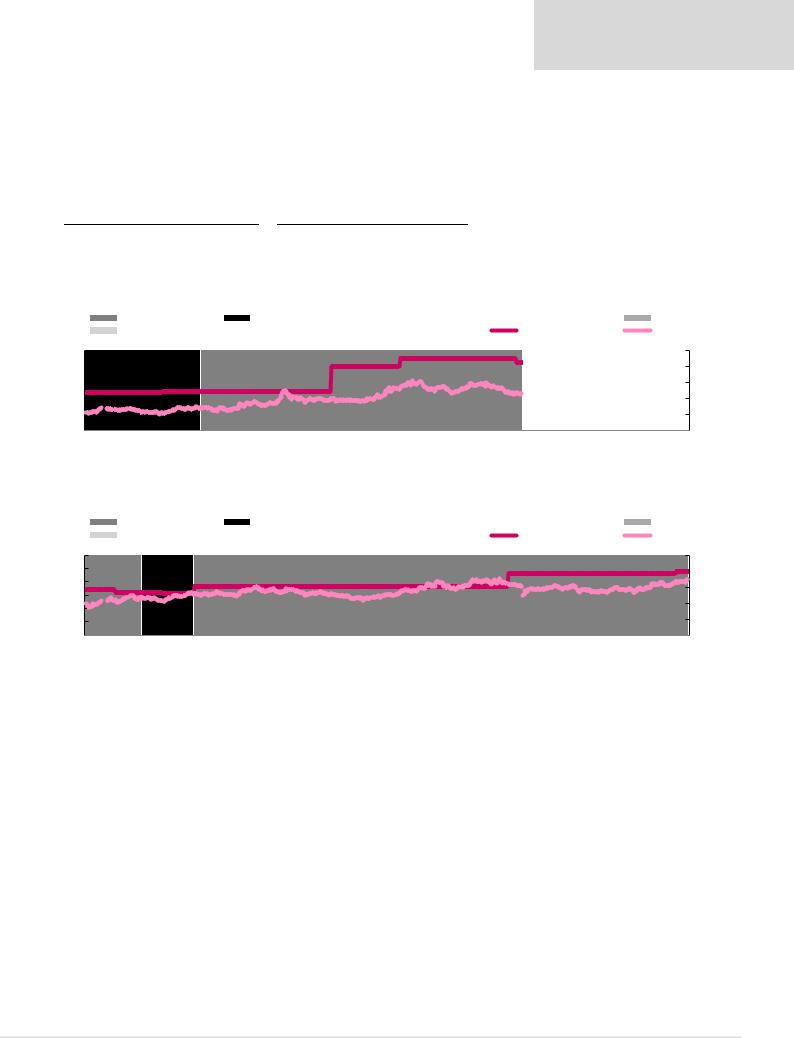
vk.com/id446425943
Renaissance Capital
5 February 2019
Rusal
Renaissance Capital equity research distribution of ratings
Investment Rating Distribution |
|
Investment Banking Relationships* |
Renaissance Capital Research |
|
Renaissance Capital Research |
Buy |
138 |
49% |
Hold |
99 |
35% |
Sell |
33 |
12% |
Under Review |
4 |
1% |
Restricted |
0 |
0% |
Cov. in Trans. |
10 |
4% |
Buy |
6 |
75% |
Hold |
2 |
25% |
Sell |
0 |
0% |
Under Review |
0 |
0% |
Restricted |
0 |
0% |
Cov. in Trans. |
0 |
0% |
|
|
|
284 |
|
|
|
|
|
|
|
|
8 |
|
|
|
|
|
|
|
|
|
|
|
|
|
|
|
*Companies from which RenCap has received compensation within the past 12 months. |
|
|
|
|
|
|
|
|
|
|
|
|
|
|
|||||||||||||
NR – Not Rated |
|
|
|
|
|
|
|
|
|
|
|
|
|
|
|
|
|
|
|
|
|
|
|
|
|
||
UR – Under Review |
|
|
|
|
|
|
|
|
|
|
|
|
|
|
|
|
|
|
|
|
|
|
|
|
|
||
RUSAL share price, target price and rating history |
|
|
|
|
|
|
|
|
|
|
|
|
|
|
|
|
|
|
|
|
|||||||
|
|
Buy |
|
|
|
|
Hold |
|
|
|
|
|
Sell |
|
|
|
|
|
|
Not covered |
|
|
|
|
Cov. in Trans. |
||
|
|
Under Review |
|
|
|
Restricted |
|
|
|
|
|
Suspended |
|
|
|
|
|
Target Price |
|
|
|
|
Last Price |
||||
10 |
|
|
|
|
|
|
|
|
|
|
|
|
|
|
|
|
|
|
|
|
|
|
|
|
|
|
100% |
8 |
|
|
|
|
|
|
|
|
|
|
|
|
|
|
|
|
|
|
|
|
|
|
|
|
|
|
80% |
6 |
|
|
|
|
|
|
|
|
|
|
|
|
|
|
|
|
|
|
|
|
|
|
|
|
|
|
60% |
4 |
|
|
|
|
|
|
|
|
|
|
|
|
|
|
|
|
|
|
|
|
|
|
|
|
|
|
40% |
2 |
|
|
|
|
|
|
|
|
|
|
|
|
|
|
|
|
|
|
|
|
|
|
|
|
|
|
20% |
0 |
Mar-16 |
Apr-16 May-16 |
Jun-16 Jul-16 |
|
Sep-16 Oct-16 |
Nov-16 |
Dec-16 Jan-17 Feb-17 |
Mar-17 |
Apr-17 |
|
Jun-17 |
Jul-17 |
|
Oct-17 |
Nov-17 |
Dec-17 |
Jan-18 |
|
Mar-18 |
Apr-18 May-18 Jun-18 Jul-18 |
|
|
Oct-18 |
Nov-18 |
Dec-18 |
Jan-19 |
0% |
Feb-16 |
Aug-16 |
May-17 |
Aug-17 Sep-17 |
Feb-18 |
Aug-18 |
Sep-18 |
Feb-19 |
||||||||||||||||||||
|
|
|
|
|
|
|
|
|
|
|
|
|
|
|
|
|
|
|
|
|
|
|
|
|
|
Source: Bloomberg |
|
Norilsk Nickel share price, target price and rating history |
|
|
|
|
|
|
|
|
|
|
|
|
|
|
|
|
|
|
|
||||||||
|
|
Buy |
|
|
|
|
Hold |
|
|
|
|
|
Sell |
|
|
|
|
|
|
Not covered |
|
|
|
|
Cov. in Trans. |
||
|
|
Under Review |
|
|
|
Restricted |
|
|
|
|
|
Suspended |
|
|
|
|
|
Target Price |
|
|
|
|
Last Price |
||||
30 |
|
|
|
|
|
|
|
|
|
|
|
|
|
|
|
|
|
|
|
|
|
|
|
|
|
|
100% |
25 |
|
|
|
|
|
|
|
|
|
|
|
|
|
|
|
|
|
|
|
|
|
|
|
|
|
|
80% |
|
|
|
|
|
|
|
|
|
|
|
|
|
|
|
|
|
|
|
|
|
|
|
|
|
|
|
|
20 |
|
|
|
|
|
|
|
|
|
|
|
|
|
|
|
|
|
|
|
|
|
|
|
|
|
|
60% |
15 |
|
|
|
|
|
|
|
|
|
|
|
|
|
|
|
|
|
|
|
|
|
|
|
|
|
|
|
|
|
|
|
|
|
|
|
|
|
|
|
|
|
|
|
|
|
|
|
|
|
|
|
|
|
40% |
|
10 |
|
|
|
|
|
|
|
|
|
|
|
|
|
|
|
|
|
|
|
|
|
|
|
|
|
|
|
|
|
|
|
|
|
|
|
|
|
|
|
|
|
|
|
|
|
|
|
|
|
|
|
|
|
|
|
5 |
|
|
|
|
|
|
|
|
|
|
|
|
|
|
|
|
|
|
|
|
|
|
|
|
|
|
20% |
|
|
|
|
|
|
|
|
|
|
|
|
|
|
|
|
|
|
|
|
|
|
|
|
|
|
|
|
0 |
|
Apr-16 May-16 |
Jun-16 Jul-16 |
|
Sep-16 Oct-16 |
|
|
|
Apr-17 |
|
|
Jul-17 |
|
Oct-17 |
|
|
|
|
|
Apr-18 May-18 Jun-18 Jul-18 |
|
|
Oct-18 |
|
|
|
0% |
Feb-16 |
Mar-16 |
Aug-16 |
Nov-16 |
Dec-16 Jan-17 Feb-17 |
Mar-17 |
May-17 |
Jun-17 |
Aug-17 Sep-17 |
Nov-17 |
Dec-17 |
Jan-18 |
Feb-18 |
Mar-18 |
Aug-18 |
Sep-18 |
Nov-18 |
Dec-18 |
Jan-19 |
Feb-19 |
||||||||
Source: Bloomberg
http://new.guap.ru/i04/contacts |
10 |
|

vk.com/id446425943
Renaissance Capital research team
Head of Research – Eurasia |
Daniel Salter |
+44 (207) |
005-7824 |
DSalter@rencap.com |
Head of Research – Africa |
Johann Pretorius |
+27 (11) |
750-1450 |
JPretorius2@rencap.com |
Head of Research – Sub-Saharan Africa |
Yvonne Mhango |
+27 (11) |
750-1488 |
YMhango@rencap.com |
Head of Research – MENA |
Ahmed Hafez |
+20 (122) |
774-4911 |
AHafez@rencap.com |
Name |
|
Telephone number |
Coverage |
|
Macro |
|
|
|
|
Charles Robertson |
+44 |
(207) |
005-7835 |
Global |
Yvonne Mhango |
+27 |
(11) |
750-1488 |
Sub-Saharan Africa |
Oleg Kouzmin |
+7 (495) |
258-7770 x4506 |
Russia/CIS |
|
Equity Strategy
Name |
Telephone number |
Coverage |
|
Oil & Gas |
|
|
|
Alexander Burgansky |
+44 (207) |
005-7982 |
Russia/CIS, Africa |
Temilade Aduroja |
+234 (1) |
448-5300 x5363 |
Sub-Saharan Africa |
Oleg Chistyukhin |
+7 (495) |
258-7770 x4073 |
Russia/CIS |
Richard Wisentaner |
+44 (207) |
005-7954 x8954 |
Russia/CIS, Africa |
Daniel Salter |
+44 |
(207) |
005-7824 |
Global |
Metals & Mining |
|
|
|
|
Charles Robertson |
+44 |
(207) |
005-7835 |
Global |
Johann Pretorius |
+27 |
(11) |
750-1450 |
South Africa |
Vikram Lopez |
+44 |
(207) |
005-7974 |
Global |
Steven Friedman |
+27 |
(11) |
750-1481 |
South Africa |
|
|
|
|
|
Kabelo Moshesha |
+27 |
(11) |
750-1472 |
South Africa |
Fixed Income Strategy |
|
|
|
|
Siphelele Mhlongo |
+27 |
(11) |
750-1420 |
South Africa |
Gregory Smith |
+44 |
(207) |
005-7761 |
Frontier/Emerging Markets |
Derick Deale |
+27 |
(11) |
750-1458 |
South Africa |
Oleg Kouzmin |
+7 (495) |
258-7770 x4506 |
Russia/CIS |
|
|
|
|
|
|
|
|
|
|
|
Consumer/Retail/Agriculture |
|
|
|
|
Financials |
|
|
|
|
David Ferguson |
+7 (495) |
641-4189 |
Russia/CIS, Africa |
|
Ilan Stermer |
+27 |
(11) |
750-1482 |
South Africa |
Kirill Panarin |
+7 (495) |
258-7770 x4009 |
Russia/CIS, Africa |
|
Phago Rakale |
+27 |
(11) |
750-1498 |
South Africa |
Adedayo Ayeni |
+234 (1) |
448-5390 |
Sub-Saharan Africa |
|
Olamipo Ogunsanya |
+234 (1) |
448-5300 x5368 |
Sub-Saharan Africa |
Robyn Collins |
+27 |
(11) |
750-1480 |
South Africa |
|
Metin Esendal |
+44 |
(207) |
005-7925 |
Europe/Georgia |
Metin Esendal |
+44 |
(207) |
005-7925 |
Turkey |
Oluwatoyosi Oni |
+234 (1) |
448-5300 x5356 |
Sub-Saharan Africa |
Hadeel El Masry |
+01(00) |
388-0822 |
MENA |
||
Ivan Kachkovski |
+44 |
(207) |
005-7862 |
Russia/Kazakhstan/Georgia |
|
|
|
|
|
Nancy Fahmy |
+20 |
(122) |
255-7445 |
MENA |
Healthcare |
|
|
|
|
|
|
|
|
|
Robyn Collins |
+27 |
(11) |
750-1480 |
South Africa |
Telecoms/Transportation |
|
|
|
Alexander Kazbegi |
+41 |
(78) |
883-4527 |
Georgia/Russia |
|
Alexander Kazbegi |
+41 |
(78) |
883-4527 |
Global |
Metin Esendal |
+44 |
(207) |
005-7925 |
Turkey/Georgia |
Artem Yamschikov |
+7 (495) |
258-7770 x7511 |
Russia/CIS |
|
|
|
|
|
|
Mikhail Arbuzov |
+7 (495) |
258-7770 x4594 |
Russia/CIS |
Diversified/Industrials |
|
|
|
|
|
Metin Esendal |
+44 |
(207) |
005-7925 |
Pakistan |
Brent Madel |
+27 |
(11) |
750-1160 |
South Africa |
|
|
|
|
|
Metin Esendal |
+44 |
(207) |
005-7925 |
Turkey |
Real Estate |
|
|
|
|
|
|
|
|
|
David Ferguson |
+7 (495) |
641-4189 |
Russia/CIS, Africa |
Materials |
|
|
|
|
|
Kirill Panarin |
+7 (495) |
258-7770 x4009 |
Russia/CIS, Africa |
Temilade Aduroja |
+234 (1) |
448-5300 x5363 |
Sub-Saharan Africa |
||
Phago Rakale |
+27 |
(11) |
750-1498 |
South Africa |
|
|
|
|
|
|
|
|
|
|
Utilities |
|
|
|
|
Media/Technology |
|
|
|
|
Ahmed Hafez |
+20 |
(122) |
774-4911 |
Egypt |
David Ferguson |
+7 (495) |
641-4189 |
Russia/CIS, Africa |
Sergey Beiden |
+7 (495) |
258-7770 x4205 |
Russia |
||
Kirill Panarin |
+7 (495) |
258-7770 x4009 |
Russia/CIS, Africa |
|
|
|
|
|
|
Renaissance Capital research is available via the following platforms: |
|
Renaissance research portal: research.rencap.com |
Thomson Reuters: thomsonreuters.com/financial |
Bloomberg: RENA <GO> |
Factset: www.factset.com |
Capital IQ: www.capitaliq.com |
|
http://new.guap.ru/i04/contacts
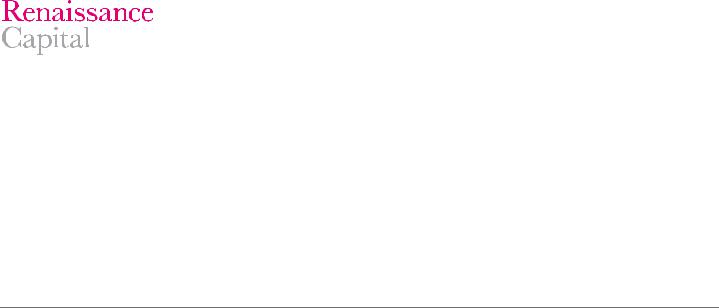
vk.com/id446425943
Renaissance Capital |
Renaissance Capital Ltd. |
Renaissance Capital |
Moscow |
London |
Johannesburg |
T + 7 (495) 258-7777 |
T + 44 (203) 379-7777 |
T +27 (11) 750-1400 |
Renaissance Securities (Nigeria) Ltd. |
Renaissance Capital |
Renaissance Capital |
Lagos |
Nairobi |
Cape Town |
T +234 (1) 448-5300 |
T +254 (20) 368-2000 |
T +27 (11) 750-1164 |
Renaissance Securities (Cyprus) Ltd. |
Renaissance Capital Egypt for Promoting |
|
Nicosia |
and Underwriting of Securities S.A.E. |
|
T + 357 (22) 505-800 |
Cairo |
|
© 2019 Renaissance Securities (Cyprus) Limited, a subsidiary of Renaissance Financial Holdings Limited ("Renaissance Capital"), which together with other subsidiaries operates outside of the USA under the brand name of Renaissance Capital, for contact details see Bloomberg page RENA, or contact the relevant office. All rights reserved. This document and/or information has been prepared by and, except as otherwise specified herein, is communicated by Renaissance Securities (Cyprus) Limited, regulated by the Cyprus Securities and Exchange Commission (License No: KEPEY 053/04).
This document is for information purposes only. The information presented herein does not comprise a prospectus of securities for the purposes of EU Directive 2003/71/EC or Federal Law No. 39-FZ of 22 April 1994 (as amended) of the Russian Federation "On the Securities Market". Any decision to purchase securities in any proposed offering should be made solely on the basis of the information to be contained in the final prospectus published in relation to such offering. This document does not form a fiduciary relationship or constitute advice and is not and should not be construed as an offer, or a solicitation of an offer, or an invitation or inducement to engage in investment activity, and cannot be relied upon as a representation that any particular transaction necessarily could have been or can be effected at the stated price. This document is not an advertisement of securities. Opinions expressed herein may differ or be contrary to opinions expressed by other business areas or groups of Renaissance Capital as a result of using different assumptions and criteria. All such information and opinions are subject to change without notice, and neither Renaissance Capital nor any of its subsidiaries or affiliates is under any obligation to update or keep current the information contained herein or in any other medium.
Descriptions of any company or companies or their securities or the markets or developments mentioned herein are not intended to be complete. This document and/or information should not be regarded by recipients as a substitute for the exercise of their own judgment as the information has no regard to the specific investment objectives, financial situation or particular needs of any specific recipient. The application of taxation laws depends on an investor’s individual circumstances and, accordingly, each investor should seek independent professional advice on taxation implications before making any investment decision. The information and opinions herein have been compiled or arrived at based on information obtained from sources believed to be reliable and in good faith. Such information has not been independently verified, is provided on an ‘as is’ basis and no representation or warranty, either expressed or implied, is provided in relation to the accuracy, completeness, reliability, merchantability or fitness for a particular purpose of such information and opinions, except with respect to information concerning Renaissance Capital, its subsidiaries and affiliates. All statements of opinion and all projections, forecasts, or statements relating to expectations regarding future events or the possible future performance of investments represent Renaissance Capital’s own assessment and interpretation of information available to them currently.
The securities described herein may not be eligible for sale in all jurisdictions or to certain categories of investors. Options, derivative products and futures are not suitable for all investors and trading in these instruments is considered risky. Past performance is not necessarily indicative of future results. The value of investments may fall as well as rise and the investor may not get back the amount initially invested. Some investments may not be readily realisable since the market in the securities is illiquid or there is no secondary market for the investor’s interest and therefore valuing the investment and identifying the risk to which the investor is exposed may be difficult to quantify. Investments in illiquid securities involve a high degree of risk and are suitable only for sophisticated investors who can tolerate such risk and do not require an investment easily and quickly converted into cash. Foreign-currency-denominated securities are subject to fluctuations in exchange rates that could have an adverse effect on the value or the price of, or income derived from, the investment. Other risk factors affecting the price, value or income of an investment include but are not necessarily limited to political risks, economic risks, credit risks, and market risks. Investing in emerging markets such as Russia, other CIS, African or Asian countries and emerging markets securities involves a high degree of risk and investors should perform their own due diligence before investing.
Excluding significant beneficial ownership of securities where Renaissance Capital has expressed a commitment to provide continuous coverage in relation to an issuer or an issuer’s securities, Renaissance
Capital and its affiliates, their directors, representatives, employees (excluding the US broker-dealer unless specifically disclosed), or clients may have or have had interests in the securities of issuers described in the Investment Research or long or short positions in any of the securities mentioned in the Investment Research or other related financial instruments at any time and may make a purchase and/or sale, or offer to make a purchase and/or sale, of any such securities or other financial instruments from time to time in the open market or otherwise, in each case as principals or as agents. Where Renaissance Capital has not expressed a commitment to provide continuous coverage in relation to an issuer or an issuer’s securities,
Renaissance Capital and its affiliates (excluding the US broker-dealer unless specifically disclosed) may act or have acted as market maker in the securities or other financial instruments described in the Investment Research, or in securities underlying or related to such securities. Employees of Renaissance Capital or its
affiliates may serve or have served as officers or directors of the relevant companies. Renaissance Capital and its affiliates may have or have had a relationship with or provide or have provided investment banking, capital markets, advisory, investment management, and/or other financial services to the relevant companies, and have established and maintain information barriers, such as ‘Chinese Walls’, to control the flow of information contained in one or more areas of Renaissance Capital, into other areas, units, groups or affiliates of the Firm.
The information herein is not intended for distribution to the public and may not be reproduced, redistributed or published, in whole or in part, for any purpose without the written permission of Renaissance Capital, and neither Renaissance Capital nor any of its affiliates accepts any liability whatsoever for the actions of third parties in this respect. This information may not be used to create any financial instruments or products or any indices. Neither Renaissance Capital and its affiliates, nor their directors, representatives, or employees accept any liability for any direct or consequential loss or damage arising out of the use of all or any part of the information herein
Bermuda: Neither the Bermuda Monetary Authority nor the Registrar of Companies of Bermuda has approved the contents of this document and any statement to the contrary, express or otherwise, would constitute a material misstatement and an offence.
EEA States: Distributed by Renaissance Securities (Cyprus) Limited, regulated by Cyprus Securities and Exchange Commission, or Renaissance Capital Limited, member of the London Stock Exchange and regulated in the UK by the Financial Conduct Authority (“FCA”) in relation to designated investment business (as detailed in the FCA rules).
Cyprus: Except as otherwise specified herein the information herein is not intended for, and should not be relied upon by, retail clients of Renaissance Securities (Cyprus) Limited. The Cyprus Securities and Exchange Commission Investor Compensation Fund is available where Renaissance Securities (Cyprus) Limited is unable to meet its liabilities to its retail clients, as specified in the Customer Documents Pack.
United Kingdom: Approved and distributed by Renaissance Capital Limited only to persons who are eligible counterparties or professional clients (as detailed in the FCA Rules). The information herein does not apply to, and should not be relied upon by, retail clients; neither the FCA’s protection rules nor compensation scheme may be applied.
Kenya: Distributed by Renaissance Capital (Kenya) Limited, regulated by the Capital Markets Authority.
Nigeria: Distributed by RenCap Securities (Nigeria) Limited, authorised dealing member of The Nigerian Stock Exchange, or Renaissance Securities (Nigeria) Limited, entities regulated by the Securities and Exchange Commission.
Russia: Distributed by Renaissance Broker Limited regulated by the Central Bank of Russia.
South Africa: Distributed by Rencap Securities (Proprietary) Limited, an authorised Financial Services Provider and member of the JSE Limited. The information contained herein is intended for Institutional investors only.
United States: Distributed in the United States by RenCap Securities, Inc., member of FINRA and SIPC, or by a non-US subsidiary or affiliate of Renaissance Financial Holdings Limited that is not registered as a US broker-dealer (a "non-US affiliate"), to major US institutional investors only. RenCap Securities, Inc. accepts responsibility for the content of a research report prepared by another non-US affiliate when distributed to US persons by RenCap Securities, Inc. Although it has accepted responsibility for the content of this research report when distributed to US investors, RenCap Securities, Inc. did not contribute to the preparation of this report and the analysts authoring this are not employed by, and are not associated persons of, RenCap Securities, Inc. Among other things, this means that the entity issuing this report and the analysts authoring this report are not subject to all the disclosures and other US regulatory requirements to which RenCap Securities, Inc. and its employees and associated persons are subject. Any US person receiving this report who wishes to effect transactions in any securities referred to herein should contact RenCap Securities, Inc., not its non-US affiliate. RenCap Securities, Inc. is a subsidiary of Renaissance Financial Holdings Limited and forms a part of a group of companies operating outside of the United States as "Renaissance Capital.". Contact: RenCap Securities, Inc., 780 Third Avenue, 20th Floor, New York, New York 10017, Telephone: +1 (212) 824-1099.
Other distribution: The distribution of this document in other jurisdictions may be restricted by law and persons into whose possession this document comes should inform themselves about, and observe, any such restriction.
Renaissance Capital equity research disclosures (Stocks)
http://new.guap.ru/i04/contacts
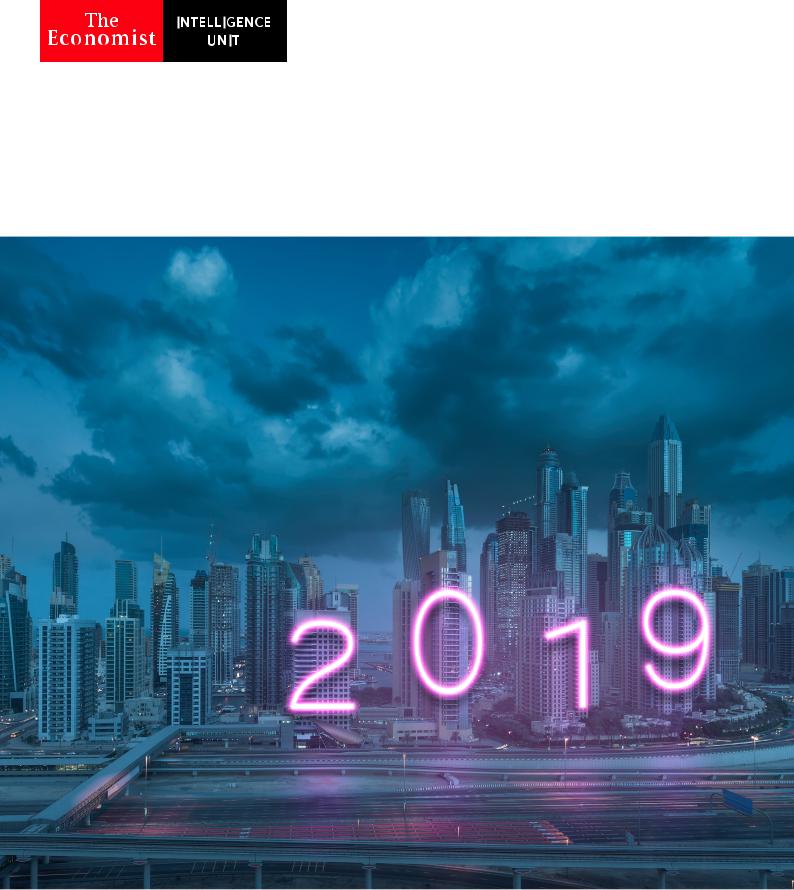
РЕЛИЗ ПОДГОТОВИЛА ГРУППА "What's News" VK.COM/WSNWS
vk.com/id446425943
Industries in 2019
A special report from The Economist Intelligence Unit
www.eiu.com/industry
http://new.guap.ru/i04/contacts

РЕЛИЗ ПОДГОТОВИЛА ГРУППА "What's News" VK.COM/WSNWS
vk.com/id446425943
The world leader in global business intelligence
The Economist Intelligence Unit (The EIU) is the research and analysis division of The Economist Group, the sister company to The Economist newspaper. Created in 1946, we have over 70 years’ experience in helping businesses, financial firms and
governments to understand how the world is changing and how that creates opportunities to be seized and risks to be managed.
Given that many of the issues facing the world have an international (if not global) dimension, The EIU is ideally positioned to be commentator, interpreter and forecaster on the phenomenon of globalisation as it gathers pace and impact.
EIU subscription services
The world’s leading organisations rely on our subscription services for data, analysis and forecasts to keep them informed about what is happening around the world. We specialise in:
•Country Analysis: Access to regular, detailed country-specific economic and political forecasts, as well as assessments of the business and regulatory environments in different markets.
•Risk Analysis: Our risk services identify actual and potential threats around the world and help our clients understand the implications for their organisations.
•Industry Analysis: Five year forecasts, analysis of key themes and news analysis for six key industries in 60 major economies. These forecasts are based on the latest data and in-depth analysis of industry trends.
EIU Consulting
EIU Consulting is a bespoke service designed to provide solutions specific to our customers’ needs. We specialise in these key sectors:
•EIU Consumer: We help consumer-facing companies to enter new markets as well as deliver greater success in current markets. We work globally, supporting senior management with strategic initiatives, M&A due diligence, demand forecasting and other issues of fundamental importance to their corporations. Find out more at eiu.com/consumer
•Healthcare: Together with our two specialised consultancies, Bazian and Clearstate, The EIU helps healthcare organisations build and maintain successful and sustainable businesses across the healthcare ecosystem. Find out more at: eiu.com/ healthcare
•Public Policy: Trusted by the sector’s most influential stakeholders, our global public policy practice provides evidencebased research for policy-makers and stakeholders seeking clear and measurable outcomes. Find out more at: eiu.com/ publicpolicy
The Economist Corporate Network
The Economist Corporate Network (ECN) is The Economist Group’s advisory service for organisational leaders seeking to better understand the economic and business environments of global markets. Delivering independent, thought-provoking content, ECN provides clients with the knowledge, insight, and interaction that support better-informed strategies and decisions.
The Network is part of The Economist Intelligence Unit and is led by experts with in-depth understanding of the geographies and markets they oversee. The Network’s membership-based operations cover Asia-Pacific, the Middle East, and Africa. Through a distinctive blend of interactive conferences, specially designed events, C-suite discussions, member briefings, and high-calibre research, The Economist Corporate Network delivers a range of macro (global, regional, national, and territorial) as well as industry-focused analysis on prevailing conditions and forecast trends.
http://new.guap.ru/i04/contacts

РЕЛИЗ ПОДГОТОВИЛА ГРУППА "What's News" VK.COM/WSNWS
vk.com/id446425943
INDUSTRIES IN 2019
A SPECIAL REPORT FROM THE ECONOMIST INTELLIGENCE UNIT
Contents
Overview |
2 |
Automotive in 2019: Supply shocks |
5 |
Global automotive: Emission critical |
8 |
2019 calendar: Automotive |
9 |
Consumer goods and retail in 2019: Selling short |
11 |
China retail: Dimming hopes |
14 |
2019 calendar: Consumer goods |
15 |
Energy in 2019: The Iran effect |
17 |
Global renewables: Gradual greening |
20 |
2019 calendar: Energy |
21 |
Financial services in 2019: Bigger buffers |
24 |
UK finance: Brexit and the City |
27 |
2019 calendar: Financial services |
28 |
Healthcare in 2019: Health checks |
30 |
US-China: Medtech rivals |
33 |
2019 calendar: Healthcare and pharmaceuticals |
35 |
Telecoms in 2019: Are we secure? |
37 |
India telecoms: A market under stress |
40 |
2019 calendar: Telecoms |
41 |
1 |
© The Economist Intelligence Unit Limited 2018 |
|
http://new.guap.ru/i04/contacts |
||
|

РЕЛИЗ ПОДГОТОВИЛА ГРУППА "What's News" VK.COM/WSNWS
vk.com/id446425943
INDUSTRIES IN 2019
A SPECIAL REPORT FROM THE ECONOMIST INTELLIGENCE UNIT
Overview
The world's major industries are all set for further growth in 2019, but there are some worrying risks.
Two years ago, when The Economist Intelligence Unit issued Industries in 2017, we predicted that the election of Donald Trump as US president in November 2016 could bring huge changes for global business. We were not wrong. This edition of our annual report discusses the changes that Mr Trump's policies—and other global trends—have already brought to six industry sectors: automotive, consumer goods and retailing, energy, financial services, healthcare, and telecoms. And we look ahead to the challenges facing these businesses in 2019.
This report highlights five major risks that could affect our industry forecasts for the year ahead.
The US-China trade war: we have cut our 2019 growth forecasts for the automotive and consumer-goods sectors in particular compared with six months ago.
A global slowdown: even those countries not directly affected by growing trade barriers could be vulnerable to a change in business confidence in 2019, with the most likely impact being on emerging markets.
Brexit: the UK's exit from the EU in March 2019 will be a drag on sectors including financial services, automotive and healthcare, regardless of any deal that is struck.
Sanctions on Iran: the US's decision to backtrack from the international Joint Comprehensive Plan of Action could push up global oil prices in 2019.
Cybersecurity and technology risks: a tussle for technological dominance is at the core of the US-China trade dispute, while regulators are also struggling to ensure safe connectivity.
Most of these risks are, to some degree, certainties. The UK will officially leave the EU on March 30th 2019, while US sanctions on Iran have already been imposed. It is not yet clear, however, what the full effects of these will be. Brexit's impact in 2019 depends on whether the transition deal that was negotiated in mid-November of this year is finalised, easing the UK's trade problems as it exits. In the case of Iran, much hinges on how successful the US—unsupported by the EU—is in blocking Iran's exports. If global oil supplies tighten sharply, then oil prices could yet soar. As for cybersecurity and technology risks, they are always present but are likely to increase in 2019 as connectivity spreads.
The power struggle between the US and China has already come to a head in 2018. In a threestage process, the US has imposed additional tariffs of between 10% and 25% on Chinese imports worth about US$200bn a year. China has retaliated with its own trade barriers against the US, while liberalising terms with some of its other trading partners. However, a further round of retaliation now looks likely in either December 2018 or early 2019, and could cover all of the remaining trade between the two countries.
2 |
© The Economist Intelligence Unit Limited 2018 |
|
http://new.guap.ru/i04/contacts |
||
|

РЕЛИЗ ПОДГОТОВИЛА ГРУППА "What's News" VK.COM/WSNWS
vk.com/id446425943
INDUSTRIES IN 2019
A SPECIAL REPORT FROM THE ECONOMIST INTELLIGENCE UNIT
The risk for next year is that this will escalate into a full-blown global trade war, involving more than just these two countries. Although the US has agreed a new trade pact with Canada and Mexico,
dubbed the United States-Mexico-Canada Agreement (USMCA), some doubts remain over Mr Trump's long-term commitment to such a deal. New tariff barriers involving the EU, Japan, Latin America and others remain possible, particularly in the automotive sector. Moreover, as companies divert trade during 2019 in an effort to avoid tariffs, other countries may resort to protectionism to stem a sudden surge in imports.
How businesses react to rising tariffs will be as important as the tariffs themselves. Faced with increases in their trading costs, they can swallow the extra expense, pass it on to end buyers, or seek out new suppliers and new markets. They may also respond by reducing investment, laying off staff and reducing costs. Should that happen, we would expect global trade to shrink, inflation to rise, consumers' purchasing power to fall and global economic growth to slow.
This could also have knock-on effects for the global financial system, particularly if accompanied by monetary tightening. We currently forecast that the US monetary tightening cycle will be controlled and relatively gradual in 2019, with inflation picking up only modestly. This view is largely built into financial markets, meaning that stockmarket volatility will be low and not long-lasting. However, markets will be extremely sensitive to any shifts in policy.
Moreover, there is a risk that contagion could spread to emerging markets. The past year has already seen currency crises in Turkey and Argentina, but pressure on emerging markets as a group could intensify if market sentiment deteriorates further than we currently expect. In this scenario, capital outflows from emerging markets would be higher and more indiscriminate. That could force some countries with external imbalances to make painful adjustments, while the most vulnerable suffer a financial crisis. Emerging-market GDP growth would fall sharply as a result, weighing on the global economy.
Several of the world's major economies—and their industries—would suffer if that happens. There are weaknesses in the economies of China, the euro zone, the Middle East and elsewhere that could all pose risks. These are all markets that companies are looking to for stable, high-value sales or for rapid growth. China in particular is now the biggest market, or second only to the US, for many goods. A hard landing there has so far been avoided but remains possible.
Even so, these remain just risks for now. Unless circumstances worsen, we still expect all six of the industries covered here to report growth in 2019, and in most cases it will be strong growth.
New-car sales in the 60 markets covered by this report will rise by 2.7%, with commercial-vehicle sales rising at the same rate.
World retail sales will increase by 2.8%, led by 6.1% growth in China.
Global energy consumption will rise by 1.8%, with particularly strong growth for renewables, while oil prices will firm.
Total deposits with the global financial industry will increase by 5.8%, while lending will rise by 6%.
Healthcare spending will climb by 5.1% worldwide, including 5.7% higher spending on pharmaceuticals.
3 |
© The Economist Intelligence Unit Limited 2018 |
|
http://new.guap.ru/i04/contacts |
||
|
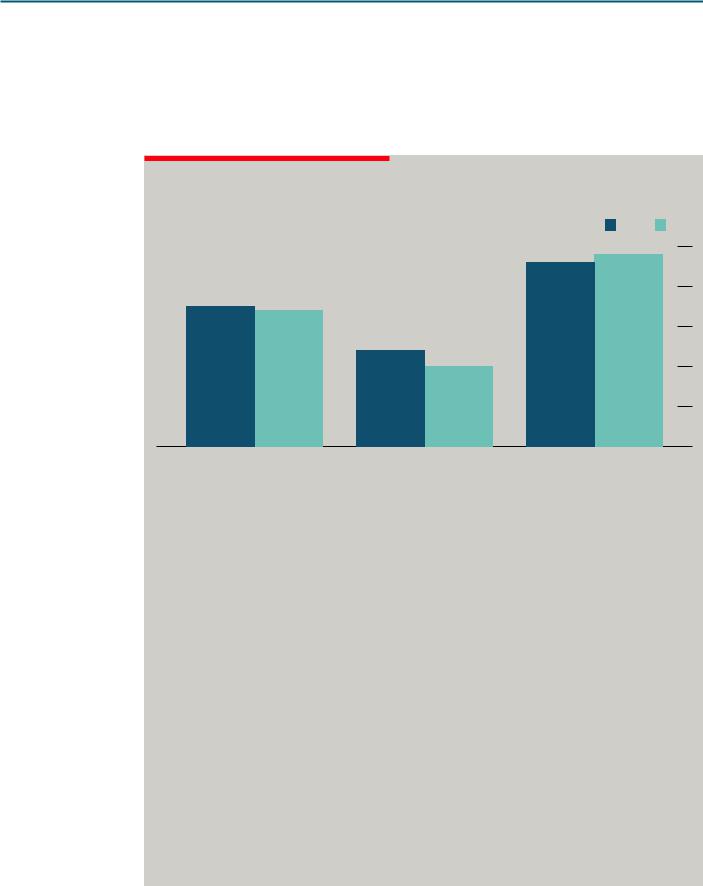
РЕЛИЗ ПОДГОТОВИЛА ГРУППА "What's News" VK.COM/WSNWS
vk.com/id446425943
INDUSTRIES IN 2019
A SPECIAL REPORT FROM THE ECONOMIST INTELLIGENCE UNIT
Global mobile subscriptions will increase by 3%, fixed lines by nearly 2% and broadband subscriptions by 6%.
This overall growth will give companies some breathing space as they manoeuvre to avoid the risks.
Even so, the least adaptable will undoubtedly struggle during the sometimes difficult year ahead.
EIU forecast: The global economy
OECD drag: change in real GDP
(%) |
|
|
|
2018 |
2019 |
5.0 |
|
|
|
|
5.0 |
|
|
|
4.6 |
4.8 |
|
4.0 |
|
|
|
4.0 |
|
|
|
|
|
||
3.0 |
3.5 |
3.4 |
|
|
3.0 |
2.0 |
|
2.4 |
|
|
2.0 |
|
|
|
2.0 |
|
|
1.0 |
|
|
|
|
1.0 |
0.0 |
|
|
|
|
0.0 |
|
World |
OECD |
|
Non-OECD |
|
Note. At purchasing power parity.
Source: The Economist Intelligence Unit.
In 2019 we expect the trade war to dampen growth in both the US and China and to act as a drag on growth in the wider global economy. The trade war comes at a challenging time for the Chinese economy. Concerns over the strength of domestic demand have returned, as momentum in both private consumption and investment has weakened. As a result, we expect a slowdown in China's real GDP growth in 2019, to 6.2%, from an estimated 6.6% this year.
The trade war will also affect the US economy, which has so far had a stellar year in 2018. Combined with monetary tightening by the Federal Reserve (the US central bank), it will start to weigh on the economy in 2019. We expect real GDP growth to slow to 2.2%. The US manufacturing and agricultural sectors, in particular, will be hit by the trade dispute, and rising interest rates will cause private consumption to slow. Financial markets
may also prove more sensitive than we currently assume.
The growing geopolitical tensions will add to the risks facing emerging markets, which have come under growing pressure in 2018 as a result of a strengthening US dollar and tightening global liquidity conditions. In many emerging markets, a significant rise in debt levels in recent years
has increased their vulnerability, as has political instability.
Even so, in our core forecast we expect real GDP growth in non-OECD markets to accelerate slightly in 2019. The OECD, on the other hand, will see a fairly sharp deceleration. This will pull down growth in global real GDP to 3.4% in 2019, from 3.5% in 2018. However, we rate as moderate the likelihood of a sharp global slowdown brought about by a faster than expected increase in US interest rates.
4 |
© The Economist Intelligence Unit Limited 2018 |
|
http://new.guap.ru/i04/contacts |
||
|

РЕЛИЗ ПОДГОТОВИЛА ГРУППА "What's News" VK.COM/WSNWS
vk.com/id446425943
INDUSTRIES IN 2019
A SPECIAL REPORT FROM THE ECONOMIST INTELLIGENCE UNIT
Automotive in 2019: Supply shocks
New-vehicle sales will grow in 2019 but are very vulnerable to trade and environmental risks.
The world’s new-vehicle sales have now been growing for nine consecutive years since the downturn of 2009. In 2019 they should report yet another good year, but the industry will face substantial risks that could depress sales. The US-China trade dispute has already disrupted global supply chains, while the UK’s exit from the EU could add to trade barriers in Europe. Meanwhile, the move from fossil fuels (particularly diesel) to electric cars will accelerate as China enforces its sales targets for new-energy vehicles (NEVs). Thanks to the relative stability of the past few years, most vehicle-makers should be able to withstand these pressures. However, they will still need to manoeuvre adroitly to survive— particularly if consumer and business confidence also wavers.
Our key forecasts
New-car sales will increase by 2.7% in 2019 for the 60 countries covered by The Economist Intelligence Unit’s forecasts. Commercial-vehicle (CV) sales will also rise by 2.7%.
The industry will remain vulnerable to trade shocks and uncertainty as tariff barriers rise and fall around the world.
Global sales of new fully electric vehicles (EVs) will reach 2.2m units, spurred by new emissions targets in the EU and NEV targets in China.
Still driving forward
The past few years have, on balance, been unusually easy ones for the global automotive industry. Before and during the global financial crisis, there was always at least one major vehicle-maker teetering on the brink of bankruptcy. Now, however, vehicle manufacturers’ finances are generally more secure, buoyed by continuing—if volatile—demand from emerging markets. After a sharp slowdown in 2017, when the slump in global oil prices affected markets from Russia to Brazil, we expect global car sales to rise by 2.7% in 2019, up from 1.7% in 2018. CV sales will also see 2.7% growth in 2019, although in this case it will mark a slowdown from estimated growth of 6.8% in 2018.
The fastest growth will be in those countries recovering from the drop in global commodity prices, including many in the Middle East, the former Soviet Union and Latin America. Yet, as usual, much will depend on what happens in China and the US, which between them will account for half of the global vehicle market. Given the trade dispute between the two countries, there are considerable risks to our forecasts. Both the US and China have already targeted the automotive industry in the first three
rounds of tariff rises during 2018. On the US side, the tariffs have mainly affected imports of automotive parts from China, as well as imports of steel and aluminium. China, for its part, has raised tariffs on vehicle imports from the US, while lowering them for other countries.
5 |
© The Economist Intelligence Unit Limited 2018 |
|
http://new.guap.ru/i04/contacts |
||
|
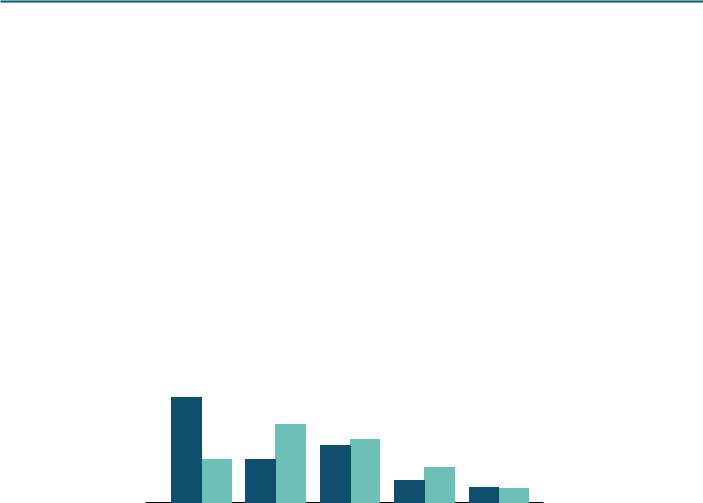
РЕЛИЗ ПОДГОТОВИЛА ГРУППА "What's News" VK.COM/WSNWS
vk.com/id446425943
INDUSTRIES IN 2019
A SPECIAL REPORT FROM THE ECONOMIST INTELLIGENCE UNIT
The impact of the trade dispute on Chinese auto parts exports, which were worth US$31bn in 2017, will be painful for both sides. Although parts account for only a small share of China’s exports, the US is the sector’s biggest market. US vehicle-makers will have to seek out alternative suppliers, probably from countries such as Thailand. These may well be more expensive, meaning that US consumers will end up paying higher prices for their cars. We currently expect US car sales to drop by 3.6% in 2019, while CV sales edge down by 0.3%.
For its part, China accounted for almost 20% of US finished-vehicle exports by value in 2017, equivalent to goods worth US$10.3bn. Ironically, however, some of the companies that will be worst affected are German luxury carmakers such as BMW and Mercedes-Benz, which export from their US plants to China. US carmakers, including Ford and General Motors, make most of their cars destined for the Chinese market in China itself, although they have seen sales drop in recent months on the back of anti-US sentiment. We forecast that overall car sales in China will grow by 2.9% in 2019, while CV sales will rise by 7.5%.
Latin lessons: new vehicle registrations in 2019
(% change)
10.0 |
|
|
|
|
8.0 |
9.1 |
|
|
|
6.0 |
|
6.7 |
|
|
|
|
|
|
|
4.0 |
|
|
4.9 |
5.4 |
|
3.7 |
|
|
|
2.0 |
3.7 |
|
|
|
|
|
|
|
|
0.0 |
|
|
|
|
-2.0 |
|
|
|
|
-4.0 |
|
|
|
|
-6.0 |
|
|
|
|
-8.0 |
|
|
|
|
|
Latin |
Asia & |
Transition |
|
|
America |
Australasia |
economies |
|
*60 biggest economies only.
Sources: The Economist Intelligence Unit; local sources.
1.9 |
3.0 |
|
|
1.3 |
1.2 |
||
|
Middle East |
Western |
& Africa |
Europe |
|
|
Cars |
|
Commercial vehicles |
|||||
|
|
|
|
|
|
|
|
10.0 |
|
|
|
|
|
|
|
|
|
|
8.0 |
|
|
|
|
|
|
|
|
|
6.0 |
|
|
|
|
|
|
|
|
|
4.0 |
|
|
|
|
|
|
|
|
|
2.0 |
0.0 |
|
|
2.7 |
2.7 |
|||||
|
|
0.0 |
|||||||
|
|
|
|
||||||
|
|
|
|
|
|
|
|
-2.0 |
|
|
|
|
|
|
|
|
|
|
|
|
|
|
|
|
|
|
|
-4.0 |
|
-6.0 |
|
|
|
|
|
|
|
||
|
|
|
|
|
-6.0 |
||||
|
|
|
|
|
|
|
|
|
|
|
|
|
|
|
|
|
|
-8.0 |
|
|
|
North |
|
|
World* |
|
|
||
|
America |
|
|
|
|
|
|
||
Rising and falling barriers
The US-China dispute, however, is only part of a bigger shift in trade barriers around the world. The US also recently concluded a renegotiation of the North American Free-Trade Agreement (NAFTA), which underpins automotive trade between the US, Canada and Mexico. This is now being replaced by the US-Canada-Mexico Agreement, which will oblige vehicle-makers to source more of their components from within North America and to seek out suppliers paying higher wages. Mexico’s automotive sector is likely to lose out under these terms in 2019—although not nearly as badly as it would have done if NAFTA had been scrapped altogether.
In Europe, meanwhile, the UK’s exit from the EU in March 2019 poses considerable risks for countries on both sides of the English Channel. UK carmakers such as Jaguar Land Rover have already warned that they may be forced to slash production if no long-term deal is reached. However, Brexit will also
6 |
© The Economist Intelligence Unit Limited 2018 |
|
http://new.guap.ru/i04/contacts |
||
|

РЕЛИЗ ПОДГОТОВИЛА ГРУППА "What's News" VK.COM/WSNWS
vk.com/id446425943
INDUSTRIES IN 2019
A SPECIAL REPORT FROM THE ECONOMIST INTELLIGENCE UNIT
affect European carmakers, notably Germany’s Volkswagen Group (which is the market leader in the UK) and France’s Groupe PSA, which bought the UK’s Vauxhall Motors in 2016. Moreover, EU vehicle- makers—along with those from Japan—still face threats from the US president, Donald Trump, that he could impose tariffs on their automotive exports to the US market, as well as on their steel and aluminium exports. Then there is Iran, whose automotive boom has been cut short by the reimposition of US sanctions.
The picture will not be solely one of rising trade barriers in 2019, however. In many places, particularly in Asia, the trend is still towards liberalisation. While raising automotive trade barriers against the US, China has dropped them against other countries. It has also allowed carmakers to set up wholly owned plants in China, rather than being obliged to form joint ventures as before. Tesla, a US EV-maker, has already bought a plot in Shanghai and will probably secure the necessary building permits in 2019.
The Association of South-East Asian Nations (ASEAN) continues to head towards greater integration—and is expanding its list of external free-trade agreements with nations that already include China. Japan has secured an economic partnership deal with the EU that will see automotive tariffs fall and vehicle standards align; both sides are likely to ratify this deal during 2019. Meanwhile, the 11 remaining countries in the Trans-Pacific Partnership will continue to defy the US decision to pull out as they ratify their new deal. Several countries, including Japan, are also mulling over the idea of a Regional Comprehensive Economic Partnership or a comprehensive Asia-Pacific free-trade deal that would cover 60% of the global economy.
While all these negotiations continue, vehicle-makers will face huge uncertainty. Many are already starting to reorganise their supply chains and their production plans to fit the new world order. However, some are already seeing upsides. In particular, vehicle-makers outside the US are likely to benefit from falling input costs in 2019, as Chinese steelmakers and parts manufacturers divert their exports. The automotive industry’s biggest immediate concern, therefore, is not necessarily the tariff barriers themselves, but the impact that these may have on consumer and business confidence—and therefore on the global economy. A sharp slowdown in economic growth, particularly in crucial markets such as China, would certainly dampen vehicle sales in 2019.
7 |
© The Economist Intelligence Unit Limited 2018 |
|
http://new.guap.ru/i04/contacts |
||
|
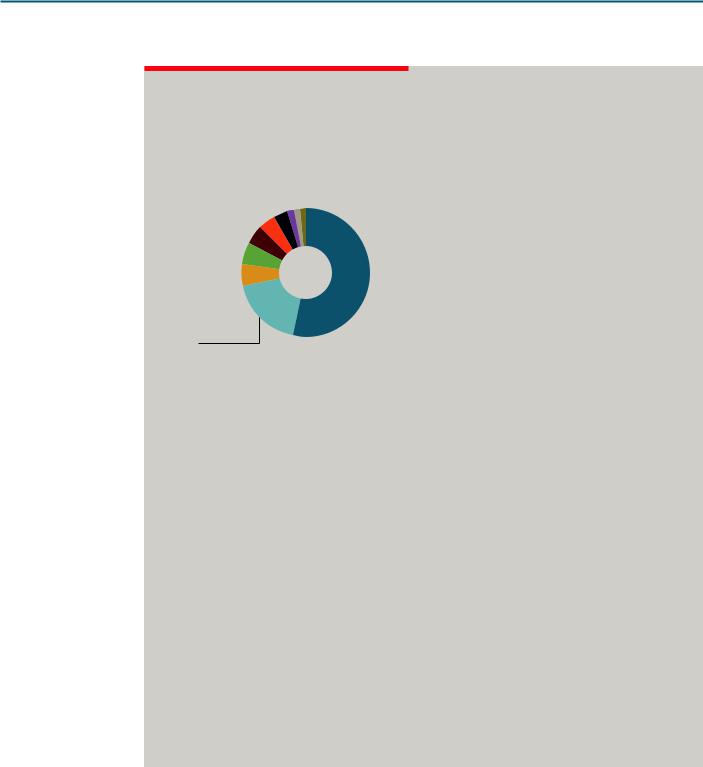
РЕЛИЗ ПОДГОТОВИЛА ГРУППА "What's News" VK.COM/WSNWS
vk.com/id446425943
INDUSTRIES IN 2019
A SPECIAL REPORT FROM THE ECONOMIST INTELLIGENCE UNIT
Global automotive: Emission critical
Before lift-o : Electric car sales in 2017
(’000 units)
South Korea, 14.7 |
|
|
|
|
|
|
|
|
China, |
||||||||||||||||||
Canada, 16.7 |
|
|
|
|
|
|
|
|
|
|
|
|
|
|
|
|
|
|
|
|
|
|
579.0 |
||||
|
|
|
|
|
|
|
|
|
|
|
|
|
|
|
|
|
|
|
|
|
|
||||||
Sweden, 19.7 |
|
|
|
|
|
|
|
|
|
|
|
|
|
|
|
|
|
|
|
|
|
|
|||||
France, 36.8 |
|
|
|
|
|
|
|
|
|
|
|
|
|
|
|
||||||||||||
|
|
|
|
|
|
|
|
|
|
|
|
|
|
|
|||||||||||||
UK, 47.3 |
|
|
|
|
|
|
|
|
|
|
|
|
|
|
|
|
|
|
|||||||||
|
|
|
|
|
|
|
|
|
|
|
|
|
|
|
|
|
|||||||||||
Japan, 54.1 |
|
|
|
|
|
|
|
|
|
|
|
|
|
|
|
|
|
|
|
|
|
|
|
||||
|
|
|
|
|
|
|
|
|
|
|
|
|
|
|
|
|
|
|
|
|
|
|
|||||
Germany, 54.6 |
|
|
|
|
|
|
|
|
|
|
|
|
|
|
|
|
|||||||||||
|
|
|
|
|
|
|
|
|
|
|
|
|
|
|
|
||||||||||||
Norway, 62.3 |
|
|
|
|
|
|
|
|
|
|
|
|
|
|
|
|
|
||||||||||
|
|
|
|
|
|
|
|
|
|
|
|
|
|
|
|
|
|||||||||||
US, 198.4
Source: International Energy Agency, ACEA and EIU.
Trade barriers are only one of the major risks facing vehicle-makers in 2019. The other is the continued tightening of emission controls as they come under pressure to scale back their use of fossil fuels, particularly diesel. The short-term implications of this were obvious in the autumn of 2018, when the EU introduced its new Worldwide Harmonised Light Vehicles Test Procedures. Car sales slumped in most EU markets amid a testing backlog, and will struggle to recover in 2019.
Undeterred, in January 2019 China will bring into force its NEV regulations, which state that manufacturers of mass vehicles in the country must earn NEV credits worth 10% of their sales. Although each NEV (a term that covers most types of EVs) may earn up to six credits, the rules pose a massive challenge to carmakers such as Volkswagen and General Motors. Although they are planning plenty of EV launches in 2019, they
will struggle to dent the market dominance of Chinese carmakers. Those car manufacturers that fail to meet the targets will either have to buy NEV credits from rivals or face large fines.
Spurred by China, the global trend towards full adoption of EVs will become even clearer in 2019. Most other countries will continue to roll out ambitious targets for vehicle emissions or pollution, as they pledged to do under the
Paris Climate Change Agreement. Indeed, many countries plan to ban sales of new fossil-fuel cars altogether over the next couple of decades. We forecast that global sales of full EVs will rise to around 2.2m in 2019, up from 1.5m in 2018, with China accounting for over half the market.
The US, as so often, is resisting the trend. In 2018 federal regulators decided to scale back the emission and fuel-economy targets previously set for 2021-25, freezing them at 2020 levels. Yet that decision, while welcomed by some vehicle-makers, has already encountered legal challenges from states, including California, that want to keep the targets in place. The uncertainty will add to vehiclemakers’ challenges in 2019, as they try to plan around the risk that they will have to produce to two separate sets of standards for the US market.
Given this constraint, those strong EV growth forecasts must be put into context. Total global new-car sales are likely to touch 69m units in 2019, while CV sales top 28m—meaning that EVs will have a market share of only a little over 2%. Even so, carmakers must step up their launches of EVs over the coming year, regardless of how hard the vehicles prove to sell.
8 |
© The Economist Intelligence Unit Limited 2018 |
|
http://new.guap.ru/i04/contacts |
||
|

РЕЛИЗ ПОДГОТОВИЛА ГРУППА "What's News" VK.COM/WSNWS
vk.com/id446425943
INDUSTRIES IN 2019
A SPECIAL REPORT FROM THE ECONOMIST INTELLIGENCE UNIT
2019 calendar: Automotive
January
19-27: European Motor Show, Brussels, Belgium
14-27: North American International Auto Show, Detroit, US 23: Ford reports 2018 results
30: Volvo Car Corp reports 2018 results
February
6: Daimler reports 2018 results 9-14: New Delhi Auto Expo, India 9-18: Chicago Auto Show, US
14: Groupe Renault reports 2018 results
15-24: Canadian International Auto Show, Toronto, Canada TBC: General Motors reports 2018 results.
March
7-17: Geneva International Motor Show, Switzerland 12: Volkswagen reports 2018 results
27-April 7: The 40th Bangkok International Motor Show, Thailand 28-April 7: Seoul Motor Show 2019, South Korea
29: UK leaves the EU unless extension to Article 50 process is agreed 30-April 8: New York International Auto Show, US
31-April 5: Zagreb Auto Show, Croatia
April
5-14: The Washington Auto Show, Washington DC, US 25-May 4: Beijing Motor Show, China
25-May 5: Indonesia International Motor Show, Jakarta, Indonesia 30-May 2: Commercial Vehicle Show, Birmingham, UK
May
16-19: The London Motor Show, UK
June
4-6: TU Automotive ‘18, Detroit, US
16-17: International Vienna Motor Symposium, Austria
July
TBC: Seoul Auto Salon, South Korea
August
26-29: MIMS Automechanika, Moscow, Russia
9 |
© The Economist Intelligence Unit Limited 2018 |
|
http://new.guap.ru/i04/contacts |
||
|

РЕЛИЗ ПОДГОТОВИЛА ГРУППА "What's News" VK.COM/WSNWS
vk.com/id446425943
INDUSTRIES IN 2019
A SPECIAL REPORT FROM THE ECONOMIST INTELLIGENCE UNIT
September
10-12: Electric and Hybrid Vehicle Technology Expo, Michigan, US 12-22: IAA International Motor Show, Frankfurt am Main, Germany TBC: IAA Commercial Vehicles 2019, Hannover, Germany
October
15-19: Mondial de l’Automobile, Paris, France
24-Nov 4: Tokyo Motor Show, Japan
November
14-19: Dubai International Motor Show
TBC: Salon Internacional Automovil, Barcelona, Spain TBC: Los Angeles Auto Show, US
10 |
© The Economist Intelligence Unit Limited 2018 |
|
http://new.guap.ru/i04/contacts |
||
|

РЕЛИЗ ПОДГОТОВИЛА ГРУППА "What's News" VK.COM/WSNWS
vk.com/id446425943
INDUSTRIES IN 2019
A SPECIAL REPORT FROM THE ECONOMIST INTELLIGENCE UNIT
Consumer goods and retail in 2019:
Selling short
The US-China trade conflict will damage the outlook for retail sales in both countries in 2019, but especially in China.
In 2019 consumer sentiment and sales will be vulnerable to a volatile geopolitical environment, with the chief risk being the US-China trade war. Just as the global economy will suffer at the hands of protectionism, so too will retail sales, according to our new forecasts, which reflect the downgrading in August 2018 of our GDP projections. The internet continues to lure shoppers away from stores, while pricing pressures will be exacerbated by the rise in trade barriers.
Our key forecasts
Global retail volume growth will be 2.8% in 2019, down from a predicted 2.9% previously.
We have lowered our forecast for retail sales growth in the US from 2.5% to 2.4%.
The biggest impact of the trade dispute will be in China, where we have cut our retail sales growth forecast from 6.7% to 6.1%.
What’s in store worldwide?
The trade policies of the US president, Donald Trump, will not weigh too heavily on the US retail market in 2019. Although tariffs could push prices higher for some goods, conditions will remain propitious for shoppers: incomes are rising, while unemployment and inflation are low. As a result, the US will remain the world’s largest centre of consumption, accounting for just over a fifth of the US$20trn of retail sales expected globally in 2019. Sales growth in the US will stay level with 2018, albeit down slightly compared with our pre-August forecast.
In the next-biggest retail market, China, the impact of the trade war will be far greater, and will be exacerbated by other factors (see box). Consumer expenditure, previously on course for growth of 7.3%, will rise by just 3%. Most significant, however, is the diminished outlook for China’s retail sector, which is central to the growth plans of so many consumer-goods companies. Before the trade war flared up we forecast that retail sales would grow by 6.7% in 2019. The new outlook is for a slower expansion, at 6.1%.
Slower still will be western Europe. Sales there will be stagnant, as price sensitivity and the continued rise of discount shops crimp spending. In the UK, we forecast that retail sales will shrink by 0.7%. The Middle East and Africa, meanwhile, will recover only slowly from the low oil prices of 2014-16 and the ensuing austerity. Geopolitical risk will also hang over the region. In similarly commodity-dependent Latin America, low oil prices have weakened currencies and fuelled inflation; consumer confidence is returning only slowly.
11 |
© The Economist Intelligence Unit Limited 2018 |
|
http://new.guap.ru/i04/contacts |
||
|
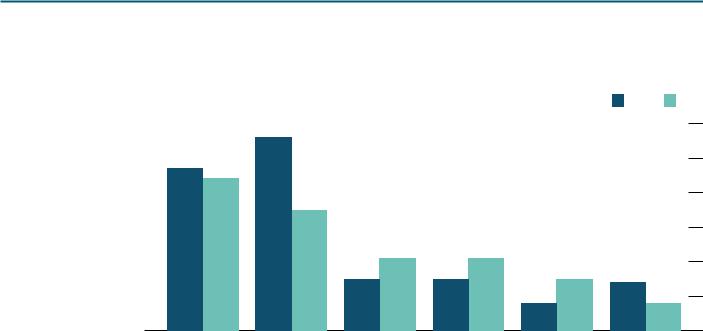
РЕЛИЗ ПОДГОТОВИЛА ГРУППА "What's News" VK.COM/WSNWS
vk.com/id446425943
INDUSTRIES IN 2019
A SPECIAL REPORT FROM THE ECONOMIST INTELLIGENCE UNIT
Retail around the world: sales by region in 2019
(% change) |
|
|
|
|
2018 |
2019 |
|
6.0 |
|
|
|
|
|
|
6.0 |
5.0 |
|
5.6 |
|
|
|
|
5.0 |
|
|
|
|
|
|
||
4.0 |
4.7 |
|
|
|
|
|
4.0 |
4.4 |
|
|
|
|
|
||
3.0 |
|
3.5 |
|
|
|
|
3.0 |
2.0 |
|
|
2.1 |
2.1 |
|
|
2.0 |
|
|
|
|
|
|
||
1.0 |
|
|
1.5 |
1.5 |
1.5 |
1.4 |
1.0 |
0.0 |
|
|
|
|
0.8 |
0.8 |
0.0 |
|
|
|
|
|
|
||
|
Asia & |
Transition |
North |
Middle East |
Latin |
Western |
|
|
Australasia |
economies |
America |
& Africa |
America |
Europe |
|
Sources: The Economist Intelligence Unit.
Sales in the transition economies of central and eastern Europe will sustain their pick-up, four years after the turmoil in Ukraine and the annexation of Crimea led to international sanctions on Russia. Pent-up demand and recovering global oil prices bode well for retail sales in the region.
Once again, however, the star performer will be Asia. Reliance on Asia is a mixed blessing for retail and consumer-goods companies: consumers there tend to have shallower pockets, and can be prone to swings in sentiment. The business environment can also be tough. Yet, given the travails of Western high streets and turbulence elsewhere, ignoring Asia is not an option for many. Retail volumes there will grow by 4.4% in 2019, despite China’s downgrade. Fortunately, other markets are rising—notably Vietnam, the Philippines, Indonesia and Malaysia. Only India, however, will really be able to take up any slack left by China’s slower than expected expansion.
The growing and the groaning
It is India’s e-commerce sector that is growing particularly quickly—as is e-commerce worldwide. Internet retailing will continue to be both a disruptor and an enabler in 2019, offering opportunities to those that succeed in selling online or through a multichannel approach, but damning those that fail. For the traditional incumbents, though, making the transition will remain a process of trial and error. Take Walmart, a giant of bricks-and-mortar retail. The company will be staking its future on its online ventures, including its recent acquisition of a majority stake in India’s Flipkart. In 2019, however, that investment will mostly be a weight on profits.
How the balance between internet and bricks and mortar plays out will largely depend on the products sold. In 2019, we expect soaps and cosmetics to be the standout performer in terms of market demand (see chart next page). The consumer electronics sector, as well as household audio and video equipment, will also do well. However, the year is likely to be a far more troubled one for the food and beverage sector, where margins that are already slim could be shaved still further by rising tariffs and supply problems.
12 |
© The Economist Intelligence Unit Limited 2018 |
|
http://new.guap.ru/i04/contacts |
||
|
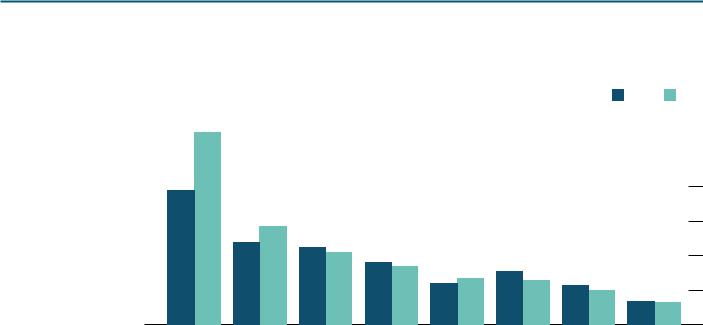
РЕЛИЗ ПОДГОТОВИЛА ГРУППА "What's News" VK.COM/WSNWS
vk.com/id446425943
INDUSTRIES IN 2019
A SPECIAL REPORT FROM THE ECONOMIST INTELLIGENCE UNIT
Selling high, and low: Market demand for consumer products
(% change) |
|
|
|
|
|
|
|
|
|
|
|
2018 |
|
2019 |
|
12.0 |
|
|
|
|
|
|
|
|
|
|
|
|
|
|
12.0 |
10.0 |
11.1 |
|
|
|
|
|
|
|
|
|
|
|
|
|
10.0 |
8.0 |
|
|
|
|
|
|
|
|
|
|
|
|
|
|
8.0 |
|
7.8 |
|
|
|
|
|
|
|
|
|
|
|
|
|
|
6.0 |
|
|
|
|
|
|
|
|
|
|
|
|
|
|
6.0 |
|
|
5.7 |
|
|
|
|
|
|
|
|
|
|
|
|
|
4.0 |
|
4.8 |
4.5 |
4.2 |
|
|
|
|
|
|
|
|
|
|
4.0 |
|
|
|
|
|
|
|
|
|
|
|
|
|
|
||
|
|
|
|
3.6 |
|
|
|
|
|
|
|
|
|
|
|
2.0 |
|
|
|
|
3.4 |
|
|
3.1 |
|
|
|
|
|
2.0 |
|
|
|
|
|
|
|
2.7 |
2.6 |
|
|
|
|
||||
|
|
|
|
|
|
2.4 |
2.3 |
2.0 |
|
|
|||||
|
|
|
|
|
|
|
|
|
|
|
|
|
|||
|
|
|
|
|
|
|
|
|
|
|
|
1.4 |
1.3 |
|
|
0.0 |
|
|
|
|
|
|
|
|
|
|
|
|
0.0 |
||
|
|
|
|
|
|
|
|
|
|
|
|
|
|
||
|
Soaps an |
Household |
Electrical |
Household |
Household |
Clothing |
Footwear |
Food, beverages |
|||||||
|
cleaners |
audio & video |
appliances |
textile |
furniture |
|
|
|
|
& tobacco |
|
||||
|
|
equipment |
& houseware |
products |
|
|
|
|
|
|
|
|
|
||
Sources: The Economist Intelligence Unit.
Growth in consumption of food and beverages is slowing, most strikingly in the case of alcoholic beverages, where per-capita consumption is falling. Generally in food and beverages, established players are being harried by an assortment of challengers: cheaper private-label goods; pricier “craft” products; agile start-ups in the premium segment; and increasingly acquisitive emerging-market firms, many from India and China. Consumers’ growing preference for products perceived as healthy will make life for food processors harder still, as will regulators’ tightening oversight (often on health grounds). In 2019, expect major food and beverage companies to continue to shed businesses considered “non-core” and to seek to gobble up more of their smaller, faster-growing competitors.
13 |
© The Economist Intelligence Unit Limited 2018 |
|
http://new.guap.ru/i04/contacts |
||
|

РЕЛИЗ ПОДГОТОВИЛА ГРУППА "What's News" VK.COM/WSNWS
vk.com/id446425943
INDUSTRIES IN 2019
A SPECIAL REPORT FROM THE ECONOMIST INTELLIGENCE UNIT
China retail: Dimming hopes
The hopes of companies and governments around the world rest squarely on the shoulders of Chinese consumers. In the past decade, private consumption has contributed around two-fifths of the growth in China’s economy. However, the US-China trade war has dimmed the outlook
for Chinese consumption. It will harm consumer confidence and push up inflation from 2.1% in 2018 to 2.8% in 2019, and is the primary reason why we have lowered our forecasts for retail sales and private consumption. Even before trade frictions worsened, however, Chinese retail sales were on a slower path.
China’s elevated property prices have stoked higher levels of household debt. Amid a government campaign to constrain credit, capital has become harder and costlier to come by, affecting companies and consumers alike.
Cheap fast foods like instant noodles and pickles—
previously thought to have peaked in popularity— have made a comeback, encouraging talk in China of a “consumption downgrade”.
Yet rumours of the death of the Chinese consumer are exaggerated. The country’s policymakers are acutely aware of the importance of consumption for growth, but must balance support for consumption with continued deleveraging. They are thus turning to fiscal measures to encourage spending. An increase
in the tax threshold was brought forward to October 2018, while reforms to individual income tax legislation will take effect at the beginning of 2019. Subsidies and tax breaks for purchases of consumer goods and services could also be in the offing.
Also boding well for consumption, household debt is now falling. All of these factors will help to keep retail sales growth above 6% in 2019. China’s retail sales will account for 20% of the global total in 2019, almost level with the US—hardly cause for a wholesale loss of faith in the Chinese consumer.
14 |
© The Economist Intelligence Unit Limited 2018 |
|
http://new.guap.ru/i04/contacts |
||
|

РЕЛИЗ ПОДГОТОВИЛА ГРУППА "What's News" VK.COM/WSNWS
vk.com/id446425943
INDUSTRIES IN 2019
A SPECIAL REPORT FROM THE ECONOMIST INTELLIGENCE UNIT
2019 calendar: Consumer goods
January
Dubai Shopping Festival, UAE
5-7: London Fashion Week Men’s, UK
8-11: International Consumer Electronics Show, Las Vegas, US 13-15: Retail’s BIG Show, New York, US
17-21: Paris Men’s Fashion Week, France
21-24: Paris Haute Couture, France 31: Unilever reports 2018 results
February
7: Yum! Brands reports 2018 results
8-16: New York Fashion Week, Autumn/Winter 15: Metro General Meeting
15-19: London Fashion Week, Autumn/Winter, UK 19: Walmart reports fiscal 2019 results
19-25: Milan Fashion Week, Autumn/Winter, Italy
25-28: Global Food Safety Conference, Nice, France 25-March 5: Paris Fashion Week, Autumn/ Winter, France
March
29: UK leaves the EU unless extension to Article 50 process is agreed TBC: Carrefour reports 2018 results
April
4-5: Global Retailing Conference, Tucson, Arizona 8-10: Next Generation Retail Summit US, Colorado, US 10: Tesco reports 2018/19 results
May
1-2: Retail Business Technology Expo, London, UK
14-16: The World Retail Congress, Amsterdam, Netherlands
June
18-23: Paris Men’s Fashion Week, France
22-23: The Global Consumer Goods Summit, Vancouver, Canada 30-July 4 Paris Haute Couture, France
September
6-14: New York Fashion Week, Spring/Summer, US
17-23: Milan Fashion Week, Spring/Summer, Italy
23-October 1: Paris Fashion Week Spring/Summer, France TBC: London Fashion Week Spring/Summer, UK
15 |
© The Economist Intelligence Unit Limited 2018 |
|
http://new.guap.ru/i04/contacts |
||
|

РЕЛИЗ ПОДГОТОВИЛА ГРУППА "What's News" VK.COM/WSNWS
vk.com/id446425943
INDUSTRIES IN 2019
A SPECIAL REPORT FROM THE ECONOMIST INTELLIGENCE UNIT
November
11: Singles Day, China
29: Black Friday
December
2: Cyber Monday
21: Super Saturday
16 |
© The Economist Intelligence Unit Limited 2018 |
|
http://new.guap.ru/i04/contacts |
||
|

РЕЛИЗ ПОДГОТОВИЛА ГРУППА "What's News" VK.COM/WSNWS
vk.com/id446425943
INDUSTRIES IN 2019
A SPECIAL REPORT FROM THE ECONOMIST INTELLIGENCE UNIT
Energy in 2019: The Iran effect
Renewed sanctions on Iran will create risks for global oil markets in 2019, but demand for renewables will carry on rising.
For the global energy sector, the reimposition of US sanctions on Iran’s oil exports places an upside risk on oil prices in 2019. At present, concerns regarding oversupply are outweighing fears about the sanctions, dampening prices. How much prices will rise again depends on whether the US
administration led by the country’s president, Donald Trump, can prevent Iran from selling oil to buyers in Europe and Asia. Some importers have already secured temporary waivers from the sanctions. Moreover, the oil market will be cushioned by a slight easing in oil demand growth combined with strong non-OPEC supply, keeping the ceiling price for 2019 below US$80/barrel. Nevertheless, the upside risk is that, due to lower Iranian supply, oil markets still remain exposed to a severe supply disruption elsewhere, such as in Venezuela, Nigeria or Libya.
Our key forecasts
A decline in Iran’s oil output will keep prices slightly buoyant, with dated Brent blend expected to average US$75.5/b in 2019, up from an estimated US$73.2/b in 2018.
Global consumption of petroleum products will increase by less than 1.5% in 2019, down from 1.7% in 2018, with the US, China and India all reporting slower growth.
We forecast that global generation from non-hydro renewables will increase by 11.7% in 2019, outpacing any other energy source.
The US decision
Mr Trump’s administration withdrew from the Joint Comprehensive Plan of Action (JCPOA) agreement in May 2018. The JCPOA was the agreement between Iran and the US, the UK, France, Germany, Russia and China (known as the P5+1) in which Iran agreed to restrict its nuclear programme if the EU and the US lifted the sanctions that they had previously imposed to curb Iran’s nuclear activities. In August the US reimposed the first round of sanctions on Iran, impacting sectors such as automotive, as well as Iran’s access to financing. This was followed in November by a second and more important round, which covered oil. However, the US did grant six-month waivers to eight countries that buy Iranian
oil—China, India, Greece, Italy, Taiwan, Japan, Turkey and South Korea—on the understanding that they would reduce their intake of Iranian oil over that period.
We take the view that the sanctions will last throughout 2019. The reimposed US sanctions are now aimed at discouraging Iran’s policies that go well beyond the nuclear remit, such as its military presence in Syria and its support for Hezbollah in Lebanon and the Houthi rebels in Yemen. Iran is unlikely to bow to this pressure, as changing these policies would mean giving up some of the core rationales for the Islamic Republic. Thus, the US-Iranian stand-off could last for a while.
17 |
© The Economist Intelligence Unit Limited 2018 |
|
http://new.guap.ru/i04/contacts |
||
|

РЕЛИЗ ПОДГОТОВИЛА ГРУППА "What's News" VK.COM/WSNWS
vk.com/id446425943
INDUSTRIES IN 2019
A SPECIAL REPORT FROM THE ECONOMIST INTELLIGENCE UNIT
So what does this mean for oil markets in 2019? |
Asia bound: Iran's crude oil and condensate |
||||||||||||||||||
After sanctions on Iranian oil exports were lifted |
exports by destination in 2017 |
|
|
|
|||||||||||||||
in early 2016 following the full implementation of |
(% share) |
|
|
|
|||||||||||||||
|
|
|
|
|
|
|
|
|
|
|
|
|
|
|
|
|
|
|
|
the JCPOA, Iran’s production and exports returned |
Others, 13 |
|
|
|
|
|
|
China, 24 |
|||||||||||
|
|
|
|
||||||||||||||||
to normal fairly quickly. Output reached around |
|
|
|
|
|
|
|
|
|
|
|
|
|
|
|
|
|
|
|
3.8m barrels/day (b/d) in 2017, of which 2.4m b/d |
UAE, 5 |
|
|
|
|
|
|
|
|
|
|
|
|
|
|
|
|
|
|
|
|
|
|
|
|
|
|
|
|
|
|
|
|||||||
was exported to buyers led by China (see chart). In |
France, 5 |
|
|
|
|
|
|
|
|
|
|
||||||||
|
|
|
|
|
|||||||||||||||
|
|
|
|
|
|
|
|
|
|||||||||||
2019, we expect Iran’s oil exports to fall back to an |
Italy, 7 |
|
|
|
|
|
|
|
|
|
|
|
|
|
|
|
|
|
|
annual average of 1.2m b/d. |
|
|
|
|
|
|
|
India, 18 |
|||||||||||
|
|
|
|
|
|
|
|
|
|
|
|
|
|
|
|
|
|
||
This is still far higher than the US hopes: the |
South Korea, 14 |
|
|
|
|
|
|
|
|
|
|
|
|
||||||
|
|
|
|
|
|
|
|
|
|
||||||||||
|
|
|
|
|
|
||||||||||||||
Trump administration has said that it wants Iran’s |
Japan, 5 |
|
|
|
|
|
|
|
|
|
|
|
|
|
|
|
Turkey, 9 |
||
exports to fall to zero. This is an unrealistic target, |
|
|
|
|
|
|
|
|
|
|
|||||||||
|
|
|
|
|
|
|
|
|
|
||||||||||
|
|
|
|
|
|
|
|
|
|
|
|
|
|
|
|
|
|
|
|
given that the US has no diplomatic support from |
Source: US Energy Information Administration, Clipper Data. |
|
its European allies, Russia or China for its withdrawal from the JCPOA, let alone for the reimposition of its sanctions. The US has, however, given up on its “zero imports” target, at least in the short term, due to the granting of 180-day waivers to eight countries. Meanwhile, Iran continues to make overtures to key buyers such as China and India, offering price discounts, bartering and the ability to pay in local currencies, as well as the option of switching off geolocation transponders so that its oil tankers will not be detected.
That said, the reimposed US sanctions will still have a considerable impact on the volumes that Iran will be able to export (see chart next page). Mr Trump’s administration intends to punish any buyer of Iranian oil unless they are given a formal waiver. Penalties include preventing the buyer from
operating in the US market, trading in US dollars or accessing the US financial system. Buyers of Iranian oil will also find it difficult to get their purchases insured. Given this, many buyers will acquiesce to US demands rather than continue purchasing Iranian crude. The EU has a mechanism in place to protect European interests from secondary sanctions, but it will still find it difficult to dissuade European companies from complying with US measures if the risk of incurring penalties is too great. Indeed, many firms have already started avoiding the Iranian market.
Price calculations
However, the halving of Iran’s exports will have only a muted impact on global oil markets, partly because it will coincide with a global slowdown in demand growth for oil. We expect global consumption of petroleum products to increase by less than 1.5% in 2019, down from 1.7% in 2018, with the US, China and India all reporting slower growth. This compares with 1.8% growth in overall consumption of energy.
Anticipation of this slowdown in demand for petroleum, together with renewed oil stockpiling in the US and the issuing of waivers, has already pushed the price of Brent down from US$80/b in October 2018 to US$70/b in mid-November. We now estimate that Brent prices will average US$73.2/b in 2018 and expect them to average US$75.5/b in 2019 (compared with US$75.2/b and US$76.8/b previously).
Nevertheless, the extent to which Iranian supply is taken off the market will be a key issue for OPEC to watch in 2019, as it mulls how long it will keep in place its November 2016 agreement to cut output.
18 |
© The Economist Intelligence Unit Limited 2018 |
|
http://new.guap.ru/i04/contacts |
||
|
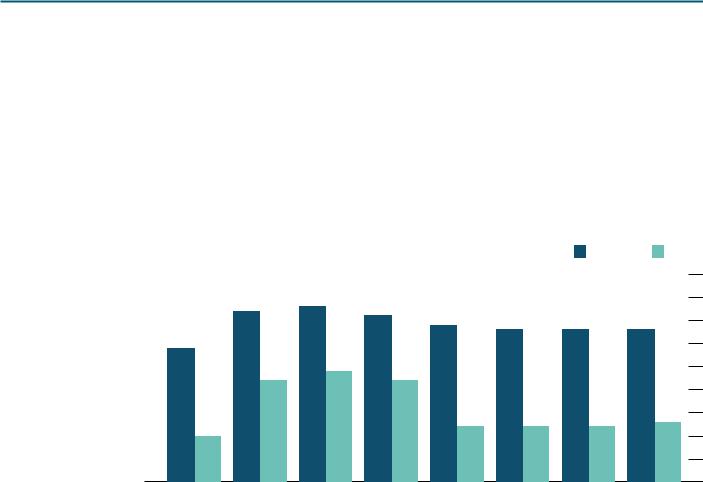
РЕЛИЗ ПОДГОТОВИЛА ГРУППА "What's News" VK.COM/WSNWS
vk.com/id446425943
INDUSTRIES IN 2019
A SPECIAL REPORT FROM THE ECONOMIST INTELLIGENCE UNIT
In September 2018 Saudi Arabia, with its non-OPEC partner Russia, rejected calls from Mr Trump to increase output, stating that the market was well supplied. The two producers had already increased output in June. Now OPEC is grappling with the possibility of an oversupplied market in 2019, amid slower demand growth, robust supply from non-OPEC sources (mainly the US) and more Iranian supply than expected, at least during the first half of the year. Even so, the loss of Iranian oil could still represent an upside risk to oil prices. If the cuts to exports go far deeper than forecast and if supply losses also occur elsewhere, such as in Venezuela or Libya, prices could yet spike.
Sanctions biting: Iran's crude oil production and exports
(m barrels/day) |
|
|
|
|
|
Production |
Exports |
|||
4.5 |
|
|
|
|
|
|
|
|
|
4.5 |
4.0 |
|
|
|
|
|
|
|
|
|
4.0 |
3.5 |
|
3.7 |
3.8 |
3.6 |
|
|
|
|
|
3.5 |
|
|
|
3.4 |
|
|
|
|
|
||
3.0 |
|
|
|
|
|
|
|
3.0 |
||
|
|
|
|
3.3 |
3.3 |
3.3 |
|
|||
|
|
|
|
|
|
|||||
2.5 |
2.9 |
|
|
|
|
|
|
|
|
2.5 |
|
|
|
|
|
|
|
|
|
||
2.0 |
|
2.2 |
2.4 |
2.2 |
|
|
|
|
|
2.0 |
|
|
|
|
|
|
|
||||
|
|
|
|
|
|
|
|
|
||
1.5 |
|
|
|
|
|
|
|
|
|
1.5 |
1.0 |
1.0 |
|
|
|
1.2 |
1.2 |
1.2 |
|
1.3 |
1.0 |
|
|
|
|
|
|
|
||||
0.5 |
|
|
|
|
|
|
|
|
0.5 |
|
|
|
|
|
|
|
|
|
|
||
0.0 |
|
|
|
|
|
|
|
|
|
0.0 |
|
2015 |
2016 |
2017 |
2018 |
2019 |
2020 |
2021 |
2022 |
|
|
Source: The Economist Intelligence Unit.
19 |
© The Economist Intelligence Unit Limited 2018 |
|
http://new.guap.ru/i04/contacts |
||
|
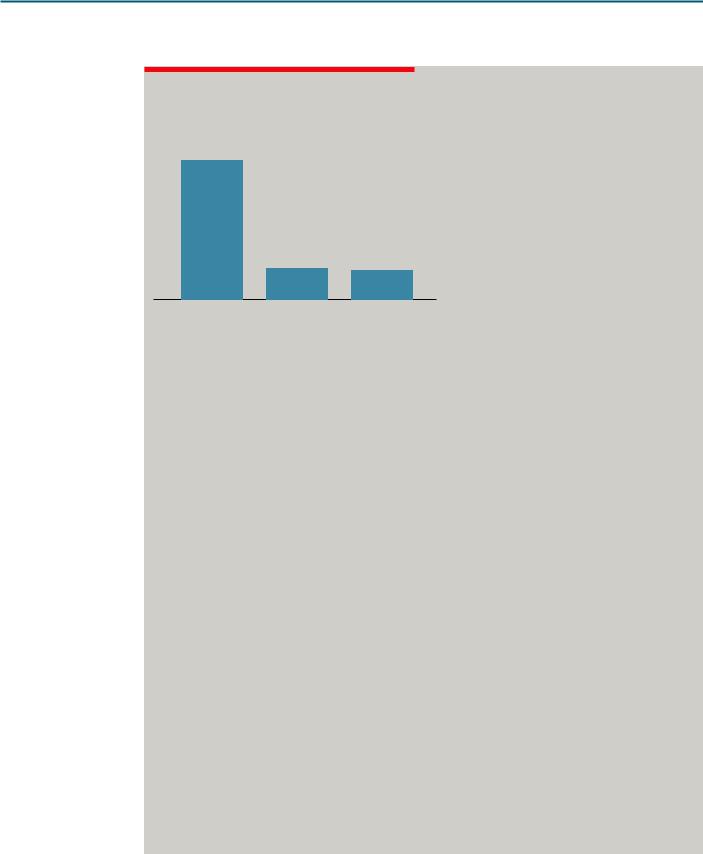
РЕЛИЗ ПОДГОТОВИЛА ГРУППА "What's News" VK.COM/WSNWS
vk.com/id446425943
INDUSTRIES IN 2019
A SPECIAL REPORT FROM THE ECONOMIST INTELLIGENCE UNIT
Global renewables: Gradual greening
Green power: electricity generation growth by source, 2019
(%) |
|
|
|
14.0 |
|
|
|
12.0 |
12.7 |
|
|
|
|
|
|
10.0 |
|
|
|
8.0 |
|
|
|
6.0 |
|
|
|
4.0 |
|
|
|
2.0 |
|
2.8 |
2.7 |
|
|
||
0.0 |
|
|
|
-2.0 |
|
|
|
-4.0 |
|
|
|
|
Non hydro |
Hydro |
Natural gas |
|
renewables |
|
|
|
|
|
|
|
14.0 |
|
|
|
|
|
|
12.0 |
|
|
|
|
|
|
10.0 |
|
|
|
|
|
|
|
8.0 |
|
|
|
|
|
|
6.0 |
|
|
|
|
|
|
4.0 |
|
|
|
|
3.8 |
|
2.0 |
|
|
|
|
|
||
|
|
|
|
|
0.0 |
|
-0.4 |
|
-1.8 |
|
|
-2.0 |
|
|
|
|
|
|
|
|
|
|
|
|
|
-4.0 |
|
Coal |
|
Oil |
|
Nuclear |
|
|
Sources: The Economist Intelligence Unit; International Energy Agency © OECD/IEA 2018 IEA statistics, www.iea.org/statistics; Licence: www.iea.org.
Renewables will be the fastest-growing source of energy in 2019, driven by continued robust growth in solar and wind for power generation. In most major economies, power generation from renewables will be buoyed by the falling cost of deploying renewables technologies; by policy drivers such as targets, auctions and the use of feed-in tariffs; and by carbon pricing and trading.
We forecast that global generation from non-hydro renewables will increase dramatically in 2019, driven mainly by growth in solar and wind power. By contrast, generation from other fuel sources will grow more slowly (see chart).
The expansion in the use of renewables will be driven in no small measure by China, as the country tries to wean itself off coal. China already accounts for a significant share of global wind and solar power capacity, and both private and public investment is rising rapidly. India, too, has ambitious targets for renewables, and especially for solar power (one government minister has said that 40 GW of solar and wind power could be added each year over the next ten years).
In western Europe, meanwhile, renewable energy deployment will be driven by national and regional policies and mandates (the EU has targeted renewables to supply 27% of final energy consumption by 2030). The UK and Denmark will expand their use of offshore wind power. In
Germany, use of renewables reached a new record level in 2018 and is continuing to grow rapidly. Even coal-dependent Poland intends to pursue rapid development of offshore wind power.
In theory, the US should be the exception to this rule, given Mr Trump’s decision to withdraw the US from the Paris Agreement on climate change. Despite the president’s misgivings about green energy, however, the US Congress (the legislature)
has maintained tax credits for wind and solar power. The outlook for solar is particularly bright, despite the imposition of tariffs on the import of Chinese solar panels. Overall, in North America we expect continued deployment of solar and wind capacity, while the US will continue to trim its coal use.
20 |
© The Economist Intelligence Unit Limited 2018 |
|
http://new.guap.ru/i04/contacts |
||
|

РЕЛИЗ ПОДГОТОВИЛА ГРУППА "What's News" VK.COM/WSNWS
vk.com/id446425943
INDUSTRIES IN 2019
A SPECIAL REPORT FROM THE ECONOMIST INTELLIGENCE UNIT
2019 calendar: Energy
January
14-17: World Future Energy Summit, Abu Dhabi, UAE 20-24: Arctic Frontiers, Tromso, Norway
24: Santos reports 2018 results
February
1: Ørsted reports 2018 results
1: ConocoPhillips reports 2018 results
6:BP reports 2018 results
7:Naturgy reports 2018 results
7:Equinor reports 2018 results
7:Peabody reports 2018 results
13-15: International Conference on Clean and Green Energy, Milan, Italy
21:OMV reports 2018 results
21:Novatek reports 2018 results
26:Sasol reports 2018/19 results
26:Eni reports 2018 results
26:Pemex reports 2018 results
27:Ecopetrol reports 2018 results
27:Acciona reports 2018 results
27:Pakistan Petroleum reports 2018/19 H1 results
March
2: Petronas reports 2018 results
5: Chevron security analyst meeting 8: Engie reports 2018 results
12: E.ON reports 2018 results
15: Petrobras reports 2018 results 19: Rosneft reports 2018 results
19-21: Oil and Gas Asia 2018, Karachi, Pakistan 22: Enel reports 2018 results
22: Petrochina reports 2018 results 27: Sinopec reports 2018 results 29: Orano reports 2018 results
29: UK leaves the EU unless extension to Article 50 process is agreed
April
4-5: 2019 MIT Energy Conference, Boston, US
12-23: CNOOC reports 2018 results
19-30: Energean reports 2018 results 26: Gazprom reports 2018 results
21 |
© The Economist Intelligence Unit Limited 2018 |
|
http://new.guap.ru/i04/contacts |
||
|

РЕЛИЗ ПОДГОТОВИЛА ГРУППА "What's News" VK.COM/WSNWS
vk.com/id446425943
INDUSTRIES IN 2019
A SPECIAL REPORT FROM THE ECONOMIST INTELLIGENCE UNIT
26:TEPCO reports 2018/19 results
27:CEPSA reports 2018 results
May
2-8: KEPCO reports 2018 results
6-9: Offshore Technology Conference, Houston, US
26-30: ONGC reports 2018/19 results
June
11-13: Global Petroleum Show, Calgary, Canada
July
11-25: Novatek reports 2018 H1 results 20: Enel reports 2019 H1 results
24: Peabody reports 2019 H1 results
26:Naturgy reports 2019 H1 results
26:Acciona reports 2019 H1 results
26:ConocoPhillips reports 2019 H1 results
26:Royal Dutch Shell reports 2019 H1 results
26:Total reports 2019 H1 results
26:Equinor reports 2019 H1 results
27:Orano reports 2019 H1 results
27: Engie reports 2019 H1 results 27: Eni reports 2019 H1 results
27: Exxon Mobil reports 2019 H1 results 27: Pemex reports 2019 H1 results
31: BP reports 2019 H1 results
August
2:OMV reports 2019 H1 results
3:Petrobras reports 2019 H1 results 3-4: Cepsa reports 2019 H1 results
7:Rosneft reports 2019 H1 results
8:E.ON reports 2019 H1 results
9:Ørsted reports 2019 H1 results
14:Ecopetrol reports 2019 H1 results 20-21: Sasol reports 2018/19 results
21-23: World Renewable Energy Technology Congress, New Delhi, India
23:Santos reports 2019 H1 results
24:CNOOC reports 2019 H1 results
27:Sinopec reports 2019 H1 results
29:Gazprom reports 2019 H1 results
30:Petronas reports 2019 H1 results
30:Petrochina reports 2019 H1 results
22 |
© The Economist Intelligence Unit Limited 2018 |
|
http://new.guap.ru/i04/contacts |
||
|

РЕЛИЗ ПОДГОТОВИЛА ГРУППА "What's News" VK.COM/WSNWS
vk.com/id446425943
INDUSTRIES IN 2019
A SPECIAL REPORT FROM THE ECONOMIST INTELLIGENCE UNIT
September
12: Energean reports 2019 H1 results
18: Pakistan Petroleum reports 2018/19 results
October
12: KEPC reports 2019 H1 results
27: ONGC reports 2019/20 H1 results 30: TEPCO reports 2019/20 H1 results
November
11-22: UN Climate Change Conference (COP 24), Katowice, Poland
23 |
© The Economist Intelligence Unit Limited 2018 |
|
http://new.guap.ru/i04/contacts |
||
|

РЕЛИЗ ПОДГОТОВИЛА ГРУППА "What's News" VK.COM/WSNWS
vk.com/id446425943
INDUSTRIES IN 2019
A SPECIAL REPORT FROM THE ECONOMIST INTELLIGENCE UNIT
Financial services in 2019: Bigger buffers
Financial firms face a variety of risks, but healthy profits and stricter regulation have made them more resilient.
Banks and money managers face dangers in 2019 from a variety of forces beyond their control. A global trade war, US monetary tightening and emerging-market volatility could all pose risks to commercial flows, inflation, investment and economic output, with knock-on effects for the global financial services sector. Unlike in 2008-09, however, we expect the global financial system to be strong enough to withstand the foreseeable shocks.
Our key forecasts
We expect total loans and deposits in the global financial services sector to expand by 6% in 2019, twice as fast as in 2018.
Trade barriers and interest-rate rises in the US will bring increased risks, however, particularly in emerging markets.
The rollout of regulation will peak as the Basel III reforms come into full force in January 2019.
The UK’s exit from the EU in March 2019 could cost the country up to 80,000 financial services jobs as foreign banks decamp.
An emerging markets crisis?
The biggest risk to the financial services sector in 2019 stems from the US-China trade conflict, even though financial services companies are not directly involved. Other than within the EU’s single market, financial business is rarely conducted under the terms of trade pacts. Moreover, cross-border financial services business between the US and China is limited. Nevertheless, profits at financial firms are tightly connected to GDP growth. They would find little shelter from a protracted commercial conflict between, and perhaps beyond, the world’s two largest economies.
A second important danger—although it is not our central forecast—is the risk of a full-blown emerging-market crisis as global financial flows shift in response to a rise in US interest rates. We foresee the Federal Reserve (the US central bank) lifting its base rate three times more in 2019, while the UK is also due a rate rise in the second quarter. The European Central Bank and Japan are likely to hold off until 2020-21.
The tide of global funds flowing into the US has led to falling currencies and widening currentaccount deficits across the developing world, but so far there have been only a handful of crises— notably those in Argentina, Turkey and Pakistan. However, the additional rate rises that we expect in the US, and the tightening of the policy stance in the EU, could accelerate the flows. By contrast, a steadying of rates, or a fall in rich-world share prices, would attenuate it. One trigger would be if another major emerging market, like Russia or Brazil, were to enter a crisis. Another would be the escalation of current crises into banking sector meltdowns in Argentina or Turkey. Although the
24 |
© The Economist Intelligence Unit Limited 2018 |
|
http://new.guap.ru/i04/contacts |
||
|
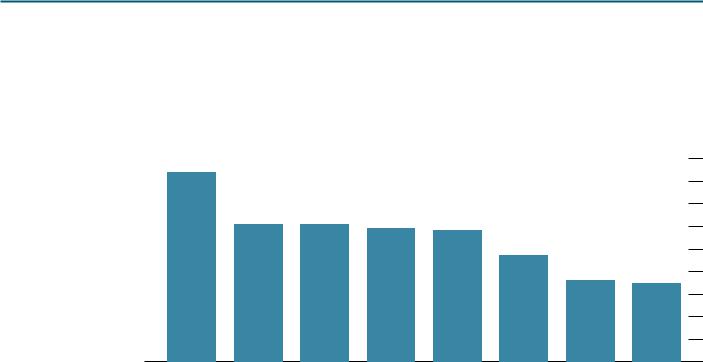
РЕЛИЗ ПОДГОТОВИЛА ГРУППА "What's News" VK.COM/WSNWS
vk.com/id446425943
INDUSTRIES IN 2019
A SPECIAL REPORT FROM THE ECONOMIST INTELLIGENCE UNIT
impacts would be most severe in the crisis-stricken economies themselves, lenders and investors with positions in them would also suffer.
Healthy finances: Global growth rates in 2019
(%) |
|
|
|
|
|
|
9.0 |
|
|
|
|
|
9.0 |
8.0 |
8.4 |
|
|
|
|
8.0 |
|
|
|
|
|
|
|
7.0 |
|
|
|
|
|
7.0 |
6.0 |
|
|
|
|
|
6.0 |
5.0 |
6.1 |
6.1 |
5.9 |
5.8 |
|
5.0 |
|
|
|
||||
4.0 |
|
|
|
4.7 |
|
4.0 |
3.0 |
|
|
|
3.6 |
3.5 |
3.0 |
2.0 |
|
|
|
|
|
2.0 |
1.0 |
|
|
|
|
|
1.0 |
0.0 |
|
|
|
|
|
0.0 |
Number of |
Total loans |
Bank loans |
Deposits in |
Total deposits |
Financial |
Number of |
Total personal |
high net worth |
by financial |
outstanding |
banking |
with financial |
industry |
bankable |
disposable |
households |
industry |
(US$ trn) |
system |
industry |
lending per |
households |
income |
(m) |
(US$ trn) |
|
(US$ trn) |
(US$ trn) |
household |
(m) |
(US$ trn) |
|
|
|
|
|
(US$ '000) |
|
|
Source: The Economist Intelligence Unit.
Within developed markets, higher interest rates are likely to dampen down the markets for housing and mortgages, as well as discouraging business investments made with borrowed money. However, on the positive side of the equation, financial firms generally benefit from moderately higher rates. Banks can widen the margin between the rates they pay to depositors and those they charge to borrowers. Insurers and money managers can shift their investment portfolios into newer, higheryielding fixed-income securities. A bit of volatility bolsters trading—and hence trading revenue—in markets for shares, bonds, currencies and commodities.
Perils in Europe
Although the EU as a whole has rebounded from its sovereign debt and banking crisis of a few years ago, the recovery has been uneven and dangers could easily reappear. Italy is a country that is big enough to matter, and its new government appears keen to take a confrontational approach to economic policy. It has proposed to boost spending and make tax cuts, driving up the budget deficit and adding to its already large pile of government debt. The plans have brought the government into conflict with the EU bureaucracy, which enforces limits on deficits in order to maintain the financial integrity of the euro area. It has also put pressure on the share prices and financing positions of weak Italian banks, which continue to be major owners of Italian government securities.
Although euro zone economies north of the Alps are in acceptable shape these days, some of their biggest banks are important financial market players in Italy and have large investment positions there. A full-blown crisis in Italy could set back lenders, particularly in France and Germany. It could even, in extreme circumstances, lead to a renewed movement for countries to leave the euro area. The UK’s break with the EU (see box page 5) will also disrupt Europe’s financial services sector, although London will bear the brunt of the problems.
25 |
© The Economist Intelligence Unit Limited 2018 |
|
http://new.guap.ru/i04/contacts |
||
|
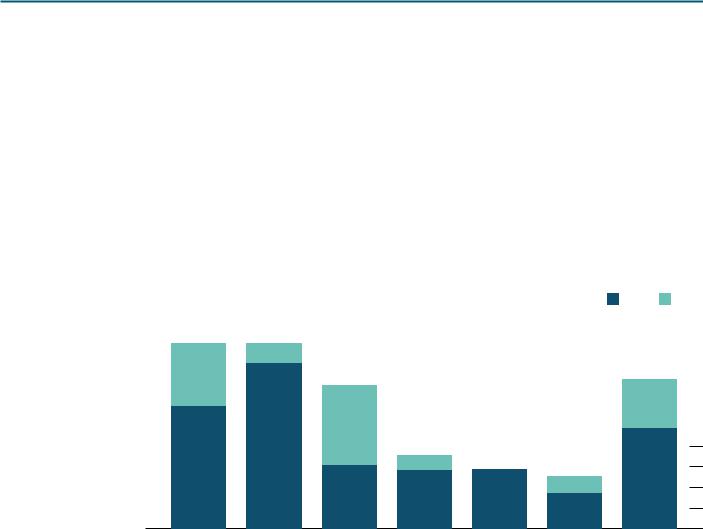
РЕЛИЗ ПОДГОТОВИЛА ГРУППА "What's News" VK.COM/WSNWS
vk.com/id446425943
INDUSTRIES IN 2019
A SPECIAL REPORT FROM THE ECONOMIST INTELLIGENCE UNIT
More solid foundations
Although the date will pass largely unnoticed, the beginning of 2019 will mark a milestone in the reform of the global financial system. January 1st is the date by which countries are slated to have enacted the core Basel III banking reforms agreed to by the G20 group of major nations in the wake of the 2007-08 financial crisis. These include stiffer requirements for banks to retain base capital, holding more liquid assets in case they suffer a funding freeze, and operate under heightened regulatory oversight . Twiceyearly report cards from the Bank for International Settlements show that most G20 members are making steady progress on these reform, although not all are earning straight A grades. It is little short of remarkable that, despite international tensions and populist pressures, the world’s major nations are carrying out a long-term co ordinated improvement of banking standards.
In debt: lending as % of GDP in 2019
(% of GDP) |
|
|
|
|
|
Bank |
Other |
|
200 |
|
|
|
|
|
|
|
200 |
180 |
|
|
|
|
|
|
|
180 |
160 |
|
19.4 |
|
|
|
|
|
160 |
|
|
|
|
|
|
|
||
140 |
60.3 |
|
|
|
|
|
|
140 |
|
|
|
|
|
|
|
||
120 |
|
|
|
|
|
|
46.5 |
120 |
|
|
|
|
|
|
|
|
|
100 |
|
|
77.0 |
|
|
|
|
100 |
80 |
|
159.6 |
|
|
|
|
|
80 |
60 |
118.1 |
|
|
14.6 |
|
|
97.2 |
60 |
40 |
|
|
|
|
|
16.1 |
40 |
|
|
|
61.0 |
56.8 |
|
|
|||
20 |
|
|
57.6 |
34.6 |
|
20 |
||
0 |
|
|
|
|
|
|
0 |
|
|
|
|
|
|
|
|
||
|
Asia-Pacific |
Western |
North |
Transition |
Middle East |
Latin |
World |
|
|
|
Europe |
America |
economies |
& Africa |
America |
|
|
Source: The Economist Intelligence Unit.
To meet the requirements, banks have bolstered their balance sheets by amassing more and better capital and making their cashflows less precarious. This has probably constrained their profitability, but it appears also to have bolstered their competitive position. Insurance companies, too, have strengthened in response to new rules like the EU’s Solvency II, widely copied outside that economic bloc, which forced firms to hold more capital, for example through retaining earnings, to reduce the risk of insolvency.
Helped by their more solid finances, financial incumbents are seeing off what once seemed like a dire threat from more nimble financial technology (fintech) firms. Instead, the financial services sector itself has learnt a few tricks in terms of innovation, often purchasing or allying with start-ups . Many of these insurgents have lacked financial depth or have crafted business models that have worked well only in ideal market conditions.
The exception is in China, where fintech companies such as Alipay are likely to increase their dominance in 2019 unless they are held back by regulators. Even there, financial services companies should be well placed to fight back—as long as they can withstand the wider geopolitical and economic ructions that 2019 will bring.
26 |
© The Economist Intelligence Unit Limited 2018 |
|
http://new.guap.ru/i04/contacts |
||
|

РЕЛИЗ ПОДГОТОВИЛА ГРУППА "What's News" VK.COM/WSNWS
vk.com/id446425943
INDUSTRIES IN 2019
A SPECIAL REPORT FROM THE ECONOMIST INTELLIGENCE UNIT
UK finance: Brexit and the City
Most financial firms have already accepted that Brexit, which formally take place on March 29th, will sever the single market in financial services shared by the UK with the rest of the EU. Provided that the UK and the EU can come to a negotiated break-up, financial firms will have passporting rights to operate across borders out of the UK,
or into it, through the end of 2020 . However, early UK hopes of securing a “mutual recognition” deal that would allow for business as usual have been scuppered. There is still the possibility of “equivalence”, in which the EU would alone decide whether it wanted to grant market access. This provision appears not to offer the security that most financial firms require, however.
As a result, the UK-based firms that rely on passporting—including many US and Asian banks that use London as their European base—have already moved to establish licensed subsidiaries in locations within the EU27. From 2019, much
of their EU business will be conducted from Frankfurt, Paris, Dublin, Luxembourg, Amsterdam or elsewhere. Managers of newly granted business licences report that the French and German authorities have been keen to award them but have been thorough in their vetting. As for the reverse move, most continental European firms already have the necessary UK subsidiaries to conduct post-Brexit business .
There is no consensus on how many jobs the British financial sector will lose due to Brexit. The
City of London Corporation has estimated the losses at between 5,000 and 13,000, but other thoughtful estimates run much higher. One key variable is the timeframe for each forecast.
Although the number of announced job losses is low so far, the shift in jobs is likely to occur over a long period, perhaps a decade. Many of the losses will not be announced in advance, but will instead become clear as data on staffing, revenue and taxes emerge. So too will the knock-on effects on other sectors, including consultancies, retailers and the housing market.
The financial services industry is, after all, Britain’s largest economic sector, generating 6.3% of GDP and 3.2% of total employment in 2017. It provides £70bn a year in tax revenue. If financial sector activities, and jobs, shift over time to other European countries as we anticipate, the UK could lose around 80,000 jobs, pushing the sector’s share of the labour force down to 3%. However, the UK should remain a major global financial centre.
A more immediate risk come March 2019, however, is that many existing financial contracts could become invalid if clauses around jurisdiction no longer hold after a no-deal Brexit. In October 2018 the Bank of England (the UK central bank) issued a warned that this could affect £69trn
in insurance, derivatives and other contracts. Although companies are working to reduce these risks, many appear to have been banking on a Brexit deal that is now looking increasingly unlikely.
27 |
© The Economist Intelligence Unit Limited 2018 |
|
http://new.guap.ru/i04/contacts |
||
|

РЕЛИЗ ПОДГОТОВИЛА ГРУППА "What's News" VK.COM/WSNWS
vk.com/id446425943
INDUSTRIES IN 2019
A SPECIAL REPORT FROM THE ECONOMIST INTELLIGENCE UNIT
2019 calendar: Financial services
January
1: Basel III takes full effect
1: European Banking Authority final guidelines on fraud reporting under PSD2 apply.
14:Citigroup reports 2018 results
15:Wells Fargo reports 2018 results
15:JPMorgan reports 2018 results
16:Bank of America reports 2018 results
21:UBS reports 2018 results
23:Bank of Japan releases outlook
29-30: First US Federal Reserve meeting of the year (Federal Open Market Committee)
30:Santander reports 2018 results
February
1: Deutsche Bank reports 2018 results 6: Nordea reports 2018 results
6: Raiffeisen reports 2018 results
12: Investing for Impact 2019, Economist Events, New York, US
14:Credit Suisse reports 2018 results
15:Allianz reports 2018 results
19:HSBC reports 2018 results
20:Lloyds report 2018 results
21:Barclays reports 2018 results
26: Standard Chartered reports 2018 results
March
14: Islamic Finance Summit, Economist Events, Kuala Lumpur, Malaysia 19-20: US Federal Reserve Meeting (Summary of Economic Projections) 29: UK leaves the EU unless extension to Article 50 process is agreed 31: Deadline for Indian banks to conform to Basel III
April
15-17: The Financial Brand Forum 2019, Las Vegas, US 25: Bank of Japan releases outlook
30-May 1: US Federal Reserve meeting
May
15-17: FINRA Annual Conference, Washington DC, US
June
18-19: US Federal Reserve meeting, Washington DC, US
27: General Council meeting of the European Central Bank, Frankfurt, Germany
28 |
© The Economist Intelligence Unit Limited 2018 |
|
http://new.guap.ru/i04/contacts |
||
|

РЕЛИЗ ПОДГОТОВИЛА ГРУППА "What's News" VK.COM/WSNWS
vk.com/id446425943
INDUSTRIES IN 2019
A SPECIAL REPORT FROM THE ECONOMIST INTELLIGENCE UNIT
July:
30: Bank of Japan releases outlook 30-31: US Federal Reserve meeting
September
17-18: US Federal Reserve meeting
October
29-30: US Federal Reserve meeting 31: Bank of Japan releases outlook
December
10-11: US Federal Reserve meeting
29 |
© The Economist Intelligence Unit Limited 2018 |
|
http://new.guap.ru/i04/contacts |
||
|

РЕЛИЗ ПОДГОТОВИЛА ГРУППА "What's News" VK.COM/WSNWS
vk.com/id446425943
INDUSTRIES IN 2019
A SPECIAL REPORT FROM THE ECONOMIST INTELLIGENCE UNIT
Healthcare in 2019: Health checks
Trade tensions and political pressures will fail to derail long-term progress in the healthcare and pharmaceuticals sector.
The political events of the past two years have brought considerable uncertainty to the global healthcare sector. That will continue in 2019. In the US, efforts to rein back state involvement in the health sector mean that from January 1st it will no longer be mandatory for individuals to buy insurance. In Europe, Brexit is likely to bring disruption to pharmaceutical markets, healthcare
recruitment and research in the life sciences. In China, the government will continue to push through far-reaching reforms to all aspects of healthcare, as it tries to stem a rise in non-communicable diseases. And in nearly every market drug pricing will remain under pressure from strained healthcare budgets. None of this will prevent healthcare spending and pharmaceutical sales from rising in most markets, although the market will be weighed down by weaker economic growth.
Our key forecasts

РЕЛИЗ ПОДГОТОВИЛА ГРУППА "What's News" VK.COM/WSNWS
vk.com/id446425943
INDUSTRIES IN 2019
A SPECIAL REPORT FROM THE ECONOMIST INTELLIGENCE UNIT
will rise yet again, increasing by 5.1% in nominal US dollar terms. Drivers will include the expansion of healthcare coverage in developing markets, the increasing care needs of elderly populations, and
advances in treatments and health technologies. Healthcare workers should also benefit from pay rises in all but the most cash-strapped countries, amid growing international competition for healthcare staff. Pharmaceutical sales will rise by 5.7% amid strong demand—and despite the continuing pressure on prices.
Not spared
Yet despite this steady growth, the healthcare sector will still be vulnerable to disruption. Global trade tensions will not target the sector specifically—most developed markets maintain zero tariffs on pharmaceuticals, while even emerging markets keep them low. Nevertheless, the industry has not been entirely sheltered from the US-China trade tensions (see box page 5). The US has imposed tariffs on some medical technology imports from China, as well as on some active pharmaceutical ingredients (APIs). That could backfire if US pharma companies end up paying more for APIs or failing to find alternative suppliers. China, in contrast, has dropped tariffs on some of its medicine imports, particularly those for cancer.
Brexit, meanwhile, still poses considerable risks for the UK’s healthcare sector and its important life sciences industry. The European Medicines Agency will move from the UK capital, London, to the Dutch city of Amsterdam by the end of March 2019, and there remains huge uncertainty about how regulations surrounding drug approvals, clinical trials and drug safety will change. If a transition deal is secured, it could stave off the immediate need to stockpile drugs in case they are held up at the border in March. However, it will not solve longer-term problems, including whether the UK will still be able to secure enough research and development (R&D) funding or staff and whether its pharma companies will need to reroute their supply chains. The UK’s National Health Service has also become reliant on EU staff to plug gaps during the past decade. It will now need to lure workers in from further afield.
The biggest trade risk, however, is the indirect one: whether a global trade war will slow the world economy. Many governments, particularly in the euro zone and in commodity-dependent economies, are only just emerging from a period of austerity that obliged them to rein back healthcare spending. Expenditure carried on rising regardless in nominal terms in most countries, but often failed to keep up with increasing demand for care. The strains on public health systems are still clear, meaning that there is limited room for more cost-cutting measures. This is particularly true in countries struggling with population ageing, including Japan, South Korea and most of western Europe.
Universal pressures
In most countries, however, governments will remain keen to improve access to healthcare in 2019, often by expanding or deepening public insurance. South Africa is aiming to pass its long-awaited law on a national health insurance system in 2019, with a view to rolling it out by 2025. Oman’s government has also said that it aims to introduce mandatory health insurance next year, although it will struggle to implement this by January as hoped. In Nigeria, the government approved a basic public health package in 2018 and will start to roll this out during 2019. It is aiming for universal healthcare by 2030.
China, meanwhile, long ago set itself some ambitious health goals for 2020, by which year it aims to provide “safe, effective, convenient and affordable” healthcare to all residents. In 2019 it will scurry to implement yet more far-reaching reforms in an effort to promote this ideal. It has already been working
31 |
© The Economist Intelligence Unit Limited 2018 |
|
http://new.guap.ru/i04/contacts |
||
|
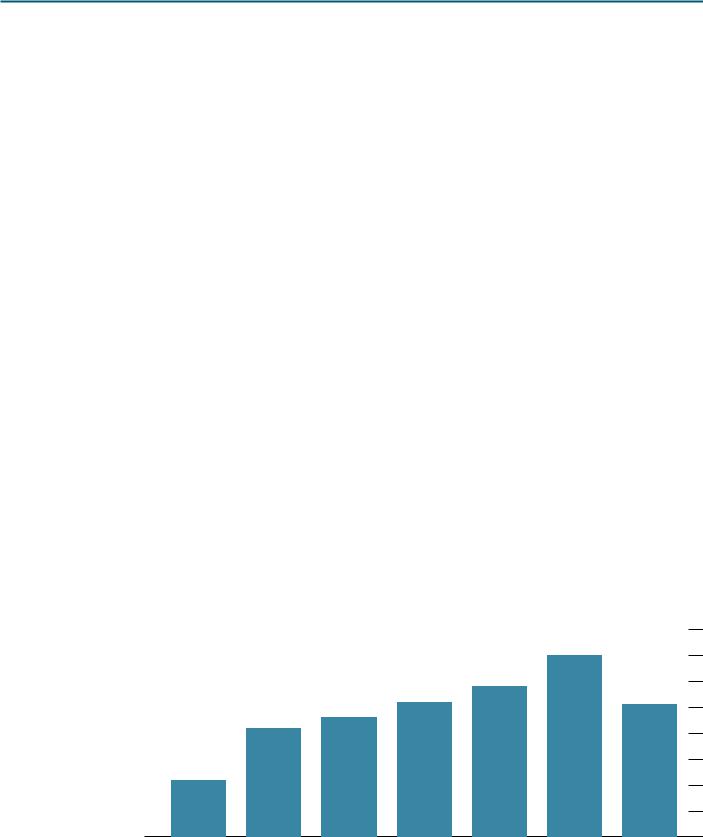
РЕЛИЗ ПОДГОТОВИЛА ГРУППА "What's News" VK.COM/WSNWS
vk.com/id446425943
INDUSTRIES IN 2019
A SPECIAL REPORT FROM THE ECONOMIST INTELLIGENCE UNIT
hard to strengthen competition in the pharmaceuticals sector, reforming the distribution chain and attempting to prevent providers from demanding extra payments from patients. These efforts will continue next year, with the new National Health Commission (set up in March 2018) taking the lead. China has said that its priorities include better-trained general practitioners, a robust referral system that directs people to the right specialists, and raising health awareness among the population.
Going against the trend, as so often, is the US. Although efforts by the administration of the president, Donald Trump, to repeal and replace the 2010 Patient Protection and Affordable Care Act (known informally as Obamacare) have failed, his administration has used piecemeal legislation to reverse some of the law’s provisions. Most importantly, tax reforms in December 2017 mean that from January 2019 Americans will no longer face a penalty if they do not buy health insurance, eliminating the individual mandate. This will widen choice, but will also undermine the risk-sharing principles that underpinned Obamacare. The administration claims that enrolment will rise, while many other commentators say it will fall.
The US will also step up its pressure on pharmaceutical companies to reduce their prices. While other counties have been bearing down on pharma prices for years, prices in the US have carried on climbing. This is partly because Medicaid and Medicare, the federal funds for low-income people and the elderly respectively, have been barred from considering prices when it comes to reimbursement decisions. That is starting to change and could alter further in 2019, although the idea of “health rationing” remains hugely controversial.
Even if pricing pressures increase in the US, it will remain by far the world’s biggest pharmaceutical market, accounting for around one-third of the global total (see chart). Moreover, the US pharmaceutical industry will continue to be buoyed by the tax reforms passed in November 2017, which helped to free up more money for investment in R&D. Innovations will continue to emerge: in 2019 US scientists are likely to begin their first trials using CRISPR, a gene-editing technique that holds huge potential. With artificial intelligence, robotics, stem cells and other technologies also developing, the world’s health should continue to improve.
Russian recovery: health spending growth in 2019
(% change in nominal US$)
8.0 |
|
|
|
|
|
|
8.0 |
7.0 |
|
|
|
|
|
|
7.0 |
6.0 |
|
|
|
|
|
7.0 |
6.0 |
|
|
|
|
|
|
||
5.0 |
|
|
|
|
5.8 |
|
5.0 |
|
|
|
5.2 |
|
|
||
|
|
|
4.6 |
|
|
5.1 |
|
4.0 |
|
4.2 |
|
|
|
4.0 |
|
|
|
|
|
|
|
|
|
3.0 |
|
|
|
|
|
|
3.0 |
2.0 |
2.2 |
|
|
|
|
|
2.0 |
|
|
|
|
|
|
|
|
1.0 |
|
|
|
|
|
|
1.0 |
0.0 |
|
|
|
|
|
|
0.0 |
|
Western |
Asia & |
North |
Latin |
Middle East |
Transition |
World |
|
Europe |
Australasia |
America |
America |
& Africa |
economies |
|
Source: The Economist Intelligence Unit.
32 |
© The Economist Intelligence Unit Limited 2018 |
|
http://new.guap.ru/i04/contacts |
||
|
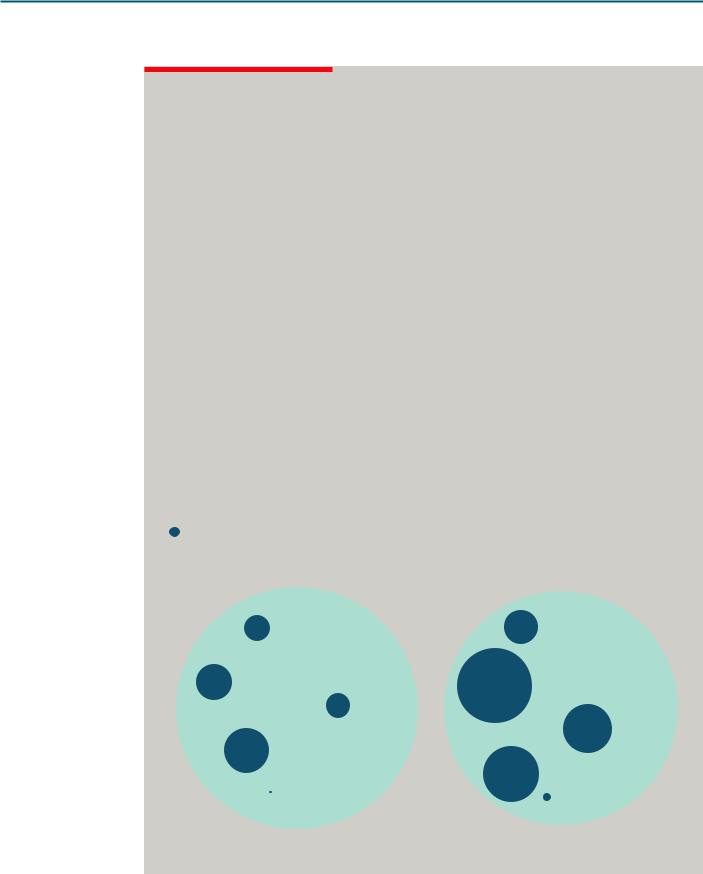
РЕЛИЗ ПОДГОТОВИЛА ГРУППА "What's News" VK.COM/WSNWS
vk.com/id446425943
INDUSTRIES IN 2019
A SPECIAL REPORT FROM THE ECONOMIST INTELLIGENCE UNIT
US-China: Medtech rivals
Although the pharmaceutical industry was mostly spared, the medical technology (medtech) sector became embroiled in the US-China trade dispute during 2018. The first tranche of US tariffs, which came into effect in July, affected Chinese medtech imports worth around US$1bn a year—roughly one-fifth of all US medtech imports from China. For its part, China has imposed tariffs in the range of 5% to 25% on US imports in 33 medtech product categories, ranging from low-value medical consumables such as syringes to high-value items such as computed tomography (CT) equipment.
On both sides, the tariffs were intended to benefit domestic companies at the expense of foreign rivals by raising import costs. However, this aim ignores the role of global supply chains in the medtech sector. Global medtech companies with operations and manufacturing facilities in both the US and China have been caught in the middle, with those in the medical-imaging sector the clearest
casualties. With the US now likely to impose a fourth round of tariffs in December or January, the trade risks to other segments will increase in 2019.
The battle over medical imaging
The Made in China 2025 plan, which aims to develop particular industries in China, has been a focus of US tariffs. So far, those tariffs have targeted only one of the many medtech categories identified under the plan: imaging equipment. This is China’s biggest medtech
market segment and the US is a major buyer, not only of finished products but also of inputs.
The Medical Imaging & Technology Alliance (MITA), an industry association in the US, estimates that US tariffs will cost imaging companies in the US about US$138m a year, by raising the cost of supplies. In order to pay for this, medical-imaging industry representatives surveyed by MITA say that they will have to reduce investment in research and development, hurting the competitiveness of their products in global markets.
US-China trade tari s on medical-imaging technology and equipment
Medical technology products covered by tari s
US - Medtech imports from China, 2017 China - Medtech imports from US, 2017
(US$ 5.0bn) |
|
(US$ 4.7bn) |
|
|
|
||
Magne c resonance |
|
Magne c resonance |
|
|
imaging (MRI) |
||
imaging (MRI) |
|
||
|
US$ 78.9m |
||
US$ 44.9m |
|
||
|
|
||
Ultrasound |
|
Ultrasound |
|
scanning |
|
||
|
scanning |
||
US$ 86.0m |
|
||
-ray* |
US$ |
||
|
|||
|
|
||
|
US$ 40.1m |
-ray* |
|
|
|
||
Computed tomography |
US$ 162.7m |
||
|
|||
US$ 134.8m |
|
Computed tomography |
|
|
|
||
|
|
US$ 208.2m |
|
Gamma scanning |
|
Gamma scanning |
|
US$ 0.4m |
|
||
|
US$ 4.4m |
||
|
|
||
*X-ray equipment for medical, surgical and veterinary use
Sources: Flexport; Ministry of Finance (China); US Census; United States Trade Representative (USTR).
33 |
© The Economist Intelligence Unit Limited 2018 |
|
http://new.guap.ru/i04/contacts |
||
|

РЕЛИЗ ПОДГОТОВИЛА ГРУППА "What's News" VK.COM/WSNWS
vk.com/id446425943
INDUSTRIES IN 2019
A SPECIAL REPORT FROM THE ECONOMIST INTELLIGENCE UNIT
It will become even more challenging for multinationals to grasp opportunities in the fast-growing imaging market in China, where The Economist Intelligence Unit expects recent healthcare reforms to expand and develop the infrastructure for imaging.
Medtech segments at risk
Forecasting all the trade risks to other medtech market segments in 2019 is difficult. Areas where intensifying competition between the US and China can be expected—either owing to government policies such as the Made in China 2025 plan, or as a result of medtech companies driving activity and innovation in fast-growing, lucrative markets—are likely spaces for fresh trade tensions to emerge.
The other medtech areas where China wants to boost local development of high-performance, high-value medical devices include medical robots, high-value medical consumables (such as degradable vascular stents), remote diagnosis and treatment devices and gene sequencing technologies. As with medical imaging, it is the
sectors that are growing rapidly that are most likely to be targeted by tariffs.
These include CT equipment. In the past five years, US imports of Chinese CT equipment have doubled, from US$64m in 2012 to almost US$135m in 2017. As a result, China has overtaken Japan
as the second-largest exporter of CT equipment to the US. Chinese companies such as Shanghai United Imaging now offer buyers a wide choice of good-quality and innovative imaging equipment.
Other segments that the US may target include in-vitro diagnostics (IVD) and high-value medical consumables. These are sectors where Chinese companies have emerged as strong competitors in recent years and are hot on the heels of global market leaders. According to analysis by EIU Healthcare, four of the top ten companies in China’s IVD market are domestic firms, whose sales growth has outpaced that of foreign rivals. The fast-growing companies in major IVD market segments, such as molecular diagnostics and point-of-care testing, are all domestic players.
Chinese medtech companies are increasingly winning a larger share not just of their domestic market but also of overseas markets, and are doing so in higher-value segments. During 2019 that may put them at risk from the US-China trade dispute.
34 |
© The Economist Intelligence Unit Limited 2018 |
|
http://new.guap.ru/i04/contacts |
||
|

РЕЛИЗ ПОДГОТОВИЛА ГРУППА "What's News" VK.COM/WSNWS
vk.com/id446425943
INDUSTRIES IN 2019
A SPECIAL REPORT FROM THE ECONOMIST INTELLIGENCE UNIT
2019 calendar: Healthcare and pharmaceuticals
January
Gilead to launch generic sofosbuvir (Sovaldi)
Deadline for Brazil’s Anvisa to clear backlog of generic approvals 21: US implements revised Common Rule for clinical trials
24: Bristol-Myers Squibb reports 2018 results
29:Pfizer report 2018 results
30:Novartis reports 2018 results
31:Roche reports 2018 results
February
5:Gilead reports 2018 results
6:GlaxoSmithKline 2018 results
7:Sanofi reports 2018 results
9: EU’s Falsified Medicines Directive comes into force
13:Eli Lilly reports 2018 results
14:AstraZeneca reports 2018 results
21: Patient Value Summit, Economist Events, Brussels, Belgium 27: Bayer reports 2018 results
March
6-7: European Pharma CI Conference, Milan, Italy 7: Merck KGaA reports 2018 results
12: War on Cancer Middle East, Economist Events, Dubai, UAE 18-20: 18th World Pharma Congress, Edinburgh, UK
24: WHO World TB Day
28:War on Cancer Asia, Economist Events, Singapore
29:UK leaves the EU unless extension to Article 50 process is agreed
29: Deadline for European Medicines Agency to move from London to Amsterdam
April
4-6: HIV and Hepatitis in the Americas, Bogota, Colombia 7: World Health Day
24-30: WHO World Immunisation Week 25: WHO World Malaria Day
28-May 1: 16th Annual World Health Care Congress, Washington, DC
May
8-9: 11th Asia Pacific Global Summit on Healthcare, Tokyo, Japan 18-22: ISPOR 24th Annual International Meeting, New Orleans, US 20-28: 72nd World Health Assembly, Geneva, Switzerland
27-29: 15th International Conference on Health and Primary Care, Barcelona, Spain 14: WHO World No Tobacco Day
35 |
© The Economist Intelligence Unit Limited 2018 |
|
http://new.guap.ru/i04/contacts |
||
|

РЕЛИЗ ПОДГОТОВИЛА ГРУППА "What's News" VK.COM/WSNWS
vk.com/id446425943
INDUSTRIES IN 2019
A SPECIAL REPORT FROM THE ECONOMIST INTELLIGENCE UNIT
June
14: WHO World Blood Donor Day
17-21: World Preclinical Congress, Boston, US 28: WHO World Hepatitis Day
August
22-23: 21st International Conference on Medical, Biological and Pharmaceutical Sciences, Kuala Lumpur, Malaysia
September
16-19: WHO Regional Committee for Europe, Copenhagen, Denmark
November
12-18: WHO Antibiotics Awareness Week
December
1: WHO World AIDS Day
36 |
© The Economist Intelligence Unit Limited 2018 |
|
http://new.guap.ru/i04/contacts |
||
|

РЕЛИЗ ПОДГОТОВИЛА ГРУППА "What's News" VK.COM/WSNWS
vk.com/id446425943
INDUSTRIES IN 2019
A SPECIAL REPORT FROM THE ECONOMIST INTELLIGENCE UNIT
Telecoms in 2019: Are we secure?
Cyber-attacks, stuttering revenue and heavy investment needs will be the main risks facing the telecoms sector in 2019.
The world of technological innovation is, by its nature, disruptive and there are plenty of disruptions on the horizon in 2019. The biggest will emerge from the rollout of fifth-generation (5G) networks, which will help to support the development of a sharing economy, autonomous technology, artificial intelligence (AI), big data analytics and an expanding internet of things ecosystem. Most of these disruptions will, in the end, be positive, but in 2019 we will also see increased risks.
Our key forecasts
Global mobile-phone penetration will grow only slightly in 2019, to 117 per 100, from 114 per 100 in 2018, owing to market saturation. Instead of enticing new subscribers, companies are promoting value-added mobile services that will bolster average revenue per user (ARPU).
A nervy geopolitical environment, US-China trade tensions and an uncertain Brexit outlook could result in exchange-rate fluctuations that stifle investment in technological innovations and M&A activity, jeopardising telecommunications sector growth in 2019.
A host of major data breaches in 2018 have highlighted the risks of cyber-attacks as regulators and the private sector struggle to respond effectively. In 2019 this could undermine consumer confidence in electronic communications and transactions. In a worst-case scenario, it could also cripple national infrastructure and slash global growth prospects.
Phone numbers
Demand for internet services is already high globally and will increase further in 2019. Businesses in all sectors are using more agile and sophisticated technology to make operations more efficient or to open up new revenue streams. Consumers, too, are turning to smartphones, tablets and wearables in ever greater numbers, stoking demand for data and forcing operators and technology companies to accommodate increasingly digitally driven lifestyles.
Mobile subscriber numbers across the 60 countries covered by our forecasts are expected to rise to 6.6bn in 2019, up from 6.4bn in 2018. Internet user penetration is also set to rise steadily to 61.3 connections per 100 population in 2019, while broadband penetration will see steady growth too, albeit from a smaller base, to 18.4 per 100 population in 2019. Many developing nations continue to push for greater internet coverage, especially among rural populations, while networks in mature markets focus on providing greater speed.
Tentative steps towards 5G
Much of this developed-market growth will come from the expansion of 5G in 2019. Co operation and partnerships between technology companies, manufacturers and operators has ensured that
37 |
© The Economist Intelligence Unit Limited 2018 |
|
http://new.guap.ru/i04/contacts |
||
|
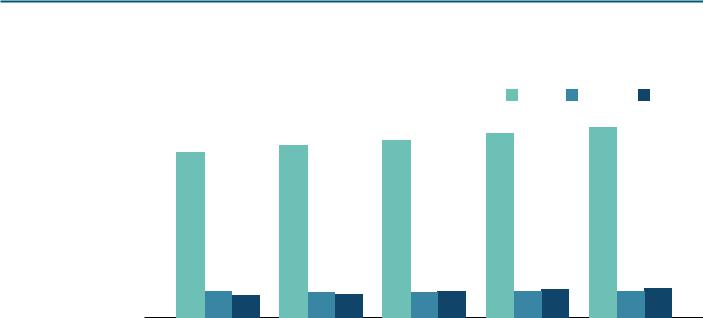
РЕЛИЗ ПОДГОТОВИЛА ГРУППА "What's News" VK.COM/WSNWS
vk.com/id446425943
INDUSTRIES IN 2019
A SPECIAL REPORT FROM THE ECONOMIST INTELLIGENCE UNIT
Phone numbers: global subscriptions
(m) |
|
|
Mobile |
Fixed line |
Broadband |
7,000 |
|
|
|
|
7,000 |
6,000 |
|
|
|
|
6,000 |
5,000 |
|
|
|
|
5,000 |
4,000 |
|
|
|
|
4,000 |
3,000 |
|
|
|
|
3,000 |
2,000 |
|
|
|
|
2,000 |
1,000 |
|
|
|
|
1,000 |
0 |
|
|
|
|
0 |
2015 |
2016 |
2017 |
2018 |
2019 |
|
Sources: The Economist Intelligence Unit.
commercial 5G networks will start rolling out in several markets next year. In the UK, EE aims to roll out a 5G network by October 2019, well in advance of plans outlined by most European rivals. In the US, Sprint is preparing for 5G rollout in nine states in the first half of 2019, while its competitor, T-Mobile, is also looking at an initial rollout next year. Device manufacturers, too, will be ready to deploy 5G-ready smartphones, with Motorola and LG scheduling launches for 2019.
These developments will be supported by government policies in many markets. In particular, both China and the US see the development of 5G as an issue of national security, as they vie for technological supremacy and try to prevent each other from gaining the upper hand. Even so, 5G is likely to be hampered by a combination of technological obstacles and an underdeveloped regulatory
framework. There remains, for example, no technical definition of what constitutes a 5G standard, with some telecoms operators using the term purely as a marketing tool.
There will also be revenue, cost and cashflow challenges for 5G operators, given that it is unclear how much consumers and businesses will be willing to pay for higher internet speeds and greater bandwidth. Moreover, 5G rollouts will require a mix of technologies, as operators work to tackle range and coverage shortfalls. All of these technologies will entail significant investment.
At the same time, operators will need to contend with increasing levels of competition, decreasing voice revenue, and slimmer margins from broadband and mobile packages. Overall telecoms revenue is set to fall slightly in 2019, to US$1.18trn, from US$1.2trn in 2018. Regulatory uncertainty, consumer demand for investment in next-generation technology and the search for new revenue streams will further constrain earnings potential. Despite this, mobile revenue will rise from US$848bn in 2018 to US$870bn in 2019, even as ARPU stalls. This revenue growth will be vital to fund the rollout of networks.
Even so, finances will be tight. Many operators will continue to push for consolidation, as a way to fund the testing and rollout of fibre broadband and 5G. If stockmarket values fall and interest rates rise in 2019, however, raising the financing for such deals may become more difficult. Some operators will instead opt for network-sharing agreements, which offer temporary respite. Others will have to lay off staff in a bid to improve productivity and operational efficiency. Developments in AI could accelerate that trend beyond 2019.
38 |
© The Economist Intelligence Unit Limited 2018 |
|
http://new.guap.ru/i04/contacts |
||
|
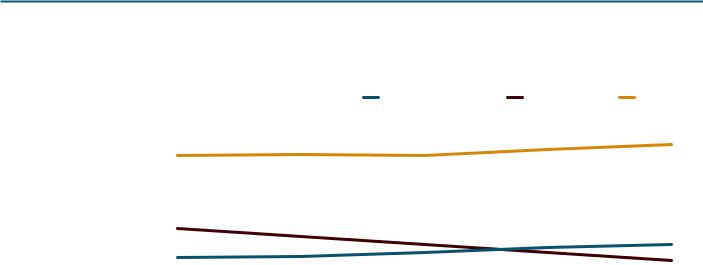
РЕЛИЗ ПОДГОТОВИЛА ГРУППА "What's News" VK.COM/WSNWS
vk.com/id446425943
INDUSTRIES IN 2019
A SPECIAL REPORT FROM THE ECONOMIST INTELLIGENCE UNIT
Delicate balance: telecoms investment and revenues
(US$ bn) |
|
Total telecoms investment |
Fixed-line revenue |
Mobile revenue |
|
|
|||
1,000 |
|
|
|
1,000 |
800 |
|
|
|
800 |
600 |
|
|
|
600 |
400 |
|
|
|
400 |
200 |
|
|
|
200 |
0 |
|
|
|
0 |
2015 |
2016 |
2017 |
2018 |
2019 |
Source: The Economist Intelligence Unit.
Vulnerable to attack
Technical problems aside, however, increasing connectivity will also raise difficult questions in terms of cybersecurity, lifestyles and ethics. Much has been made of how advances in autonomousvehicle technology will reshape transport use. But the technology may end up exacerbating problems of congestion, poor air quality and physical inactivity in cities around the globe. The ethical considerations, meanwhile, were highlighted by the death of a pedestrian in Arizona in 2018. If car
technology is making life-or-death decisions, then what guidelines need to be programmed in and who will be liable for mistakes? This debate will rage on during 2019.
Security will, however, be an even bigger issue in 2019, bringing into sharp focus the trade-offs involved in advanced connectivity. Severe breaches at Facebook and in the Singaporean healthcare system during 2018 were just the latest in a long line of incidents. A large cyber-attack, particularly against the financial system, health systems or crucial energy assets, could pose a significant geopolitical risk. Even an attack on a company could cripple supply chains at all levels of society, from transport to food distribution.
In 2019 many countries will respond to this threat by using regulations to maintain network security, which arguably lags too far behind the speed of technological advances. In the US, the National Defense Authorization Act will include efforts to improve cybersecurity in both the military and civilian life. In the EU, member states will be putting into action the requirements of the 2016 Directive on Security of Network and Information Systems, which includes the establishment of a regional cybersecurity agency.
Vietnam, meanwhile, will in January 2019 implement a cybersecurity law that obliges telecoms and internet service providers to monitor any cyber activity that could disrupt national security, public order, or the reputations of any organisation or individual. The controversy over this law highlights the ways in which concern for cybersecurity may topple over into political controls. This has worrying
echoes of the cybersecurity law introduced in China in 2017, which, rather than securing internet safety, has impeded access to information. That is an issue that will become even more high-profile in 2019.
39 |
© The Economist Intelligence Unit Limited 2018 |
|
http://new.guap.ru/i04/contacts |
||
|

РЕЛИЗ ПОДГОТОВИЛА ГРУППА "What's News" VK.COM/WSNWS
vk.com/id446425943
INDUSTRIES IN 2019
A SPECIAL REPORT FROM THE ECONOMIST INTELLIGENCE UNIT
India telecoms: A market under stress
On the face of it, India’s telecoms market will enjoy strong growth in 2019. The number of mobile subscribers will rise by 4.2%, while broadband subscribers (most of whom access the internet via smartphones) will rise by 14%. But this is a market under severe pressure. An aggressive pricing strategy by a newcomer, Reliance Jio, has cut into revenue streams, cashflow and profitability across the industry. Many of Jio’s rivals are imploring the government to help them find a way out during 2019.
Jio’s growth has been astonishing. In little over two years the company has grown to become the second-biggest operator in India in terms of adjusted gross revenue, surpassing Bharti Airtel in early October 2018. In first place is Vodafone Idea, recently formed from the merger of the Vodafone and Idea businesses. The combined company now boasts a 38% share of the subscriber market, compared with Airtel’s 32% share and Jio’s 18%.
Yet the merger itself points to the cutthroat pricing competition between the three providers, as Jio used ultra-cheap—or sometimes even free—
subscription packages to build up its market share. While consumers benefited, Jio’s rivals saw their finances drained. The industry’s debt is estimated at Rs7.7trn (US$112bn), according to the Indian Banks’ Association, and it owes about Rs3trn to the government in spectrum payments.
Over the coming year the pressures could be exacerbated by the government’s decision in October 2018 to double the customs duties on network equipment to 20% and to impose an additional 10% tariff on some other telecoms imports. In the same month, the Ministry of Telecommunications announced a probe into whether telecoms companies have been underreporting their revenue. If so, they may owe additional spectrum fees.
Exactly how long the sector can hold out for under these conditions is a matter of debate. But during 2019 providers are due to roll out more next-generation technology, such as fibre
broadband and 5G. This involves heavy investment that may end up forcing them to cut research
and development and shed jobs, or even quit the market entirely. A more stringent approach to spectrum acquisition—approved in a government policy document published in September—is a start, but it may not be enough.
40 |
© The Economist Intelligence Unit Limited 2018 |
|
http://new.guap.ru/i04/contacts |
||
|

РЕЛИЗ ПОДГОТОВИЛА ГРУППА "What's News" VK.COM/WSNWS
vk.com/id446425943
INDUSTRIES IN 2019
A SPECIAL REPORT FROM THE ECONOMIST INTELLIGENCE UNIT
2019 calendar: Telecoms
January
8-11: The International Consumer Electronics Show (CES 2019), Las Vegas, US 25: Ericsson reports 2018 results
30-31: World Congress on Wireless Technology, Osaka, Japan 31: Elisa reports 2018 results
February
7: Millicom reports 2018 results
13-15: International Exhibition & Conference for Internet of Things, Riyadh, Saudi Arabia 21: Deutsche Telekom reports 2018 results
22-23: Global Meeting on Big Data Analytics and Data Processing, Bangkok, Thailand 25-28: Mobile World Congress, Barcelona, Spain
March
25-27: Telecoms World Asia, Bangkok, Thailand
27-28: IoT Asia 2019, Singapore
29: UK leaves the EU unless extension to Article 50 process is agreed
April
2-3: Gigabit Access, Cologne, Italy
8-12: WSIS Forum 2019, Geneva, Switzerland 25: Ericsson reports Q1 2019 results
25-26: IoT Tech Expo Global, London, UK
May
9: Deutsche Telekom reports Q1 2019 results 17: World Telecommunication Day (UN)
21 (TBC): Vodafone reports 2019 results
June
20-21: 5th International Conference on Wireless, Telecommunication & IoT, Rome, Italy
July
17: Ericsson reports Q2 2019 results
31-Aug 1: China International Internet of Things Exhibition, Shenzhen, China.
September
6-11: IFA Consumer Electronics trade show, Berlin, Germany TBC: ITU Telecom World 2019, Budapest, Hungary
October
14-15: 6th World Machine Learning and Deep Learning Congress, Helsinki, Finland 18: Ericsson reports Q3 2019 results
28-Nov 22: World Radiocommunication Conference 2019, Sharm El Sheikh, Egypt
41 |
© The Economist Intelligence Unit Limited 2018 |
|
http://new.guap.ru/i04/contacts |
||
|

РЕЛИЗ ПОДГОТОВИЛА ГРУППА "What's News" VK.COM/WSNWS
vk.com/id446425943
INDUSTRIES IN 2019
A SPECIAL REPORT FROM THE ECONOMIST INTELLIGENCE UNIT
November
7: Deutsche Telekom reports Q3 2019 results
25-27: World Telecommunication/ICT Indicators Symposium (WTIS-19)
December
11 (TBC): Vodafone reports half-year 2020 results
42 |
© The Economist Intelligence Unit Limited 2018 |
|
http://new.guap.ru/i04/contacts |
||
|

РЕЛИЗ ПОДГОТОВИЛА ГРУППА "What's News" VK.COM/WSNWS
vk.com/id446425943
Industry Briefing
In-depth news, analysis, trends and forecasts for six global industries in up to 72 major economies
Providing essential data, five-year forecasts and news analysis, Industry Briefing keeps you abreast of the latest industry developments and pinpoints future trends and what they mean for your business. Additional content now allows for easy comparison of the business environment and regulatory constraints in each market, as well as their long-term outlook.
Use Industry Briefing to:
•Gain a detailed understanding of each industry, including the activities of key competitors and developments throughout the value chain.
•Systematically compare markets to examine opportunities, risks and barriers to entry.
•Assess growth prospects in your current markets, and identify markets with long-term investment potential.
•Leverage The EIU’s global network to extend your research capabilities.
Benefit from global coverage:
•Daily events analysis by sector, including regulation updates.
•Global Outlook reports updated semi-annually, highlighting upcoming global industry trends.
•News and analysis for key companies in each sector.
•Historical data to 1990 and five-year forecasts with up to 286 series per industry, as well as macrolevel series.
What’s included?
•Industry Report – keeping you informed about important legislation, company activity and demand trends.
•Market Outlook
•Business environment rankings – assessing the national investment climate.
•Economic and demographic outlook data and analysis.
•Regulatory and logistical concerns that need to be considered when making an investment.
•Long-term outlook – forecasts and analysis on both population and labour force growth, and the economic and productivity outlook.
For more information please get in touch.
43 |
© The Economist Intelligence Unit Limited 2018 |
|
http://new.guap.ru/i04/contacts |
||
|

РЕЛИЗ ПОДГОТОВИЛА ГРУППА "What's News" VK.COM/WSNWS
vk.com/id446425943
The EIU’s Competitor Intelligence service
International company intelligence for 6 key industries covering 26 industry subsectors
Find out what your competitors are doing and planning. A complement to The Economist Intelligence Unit’s Industry Briefing service, Competitor Intelligence adds important company-level information to our industry coverage. Competitor Intelligence is updated daily to provide essential and hard-to-get information on competitor activity across 72 markets.
Use Competitor Intelligence to:
•Track competitor activity including new product launches, sales initiatives, supplier changes, and strategic moves
•Discover companies rarely reached by the English-language press
•Rest assured that all information is cross-checked by our internal team for reliability
What’s included?
•Information on local and international companies, including your key competitors
•An archive of over 9,000 company news stories from 72 countries
•Available for 26 industry subsectors
•Filter by country, company, sector, date and topic
For more information, visit our website: eiu.com/competitor-intelligence
44 |
© The Economist Intelligence Unit Limited 2018 |
|
http://new.guap.ru/i04/contacts |
||
|
РЕЛИЗ ПОДГОТОВИЛА ГРУППА "What's News" VK.COM/WSNWS
vk.com/id446425943
Copyright
© 2018 The Economist Intelligence Unit Limited. All rights reserved. Neither this publication nor any part of it may be reproduced, stored in a retrieval system, or transmitted in any form or by any means, electronic, mechanical, photocopying, recording or otherwise, without the prior permission of The Economist Intelligence Unit Limited.
While every effort has been taken to verify the accuracy of this information, The Economist Intelligence Unit Ltd. cannot accept any responsibility or liability for reliance by any person on this report or any of the information, opinions or conclusions set out in this report.
Cover image - © Rasica/Shutterstock
http://new.guap.ru/i04/contacts

РЕЛИЗ ПОДГОТОВИЛА ГРУППА "What's News" VK.COM/WSNWS
vk.com/id446425943
LONDON
20 Cabot Square London
E14 4QW United Kingdom
Tel: +44 (0) 20 7576 8181 Email: london@eiu.com
NEW YORK
750 Third Avenue 5th Floor
New York, NY 10017 United States
Tel: + 1 212 698 9717 Email: americas@eiu.com
HONG KONG
1301 Cityplaza Four
12 Taikoo Wan Road Taikoo Shing
Hong Kong
Tel: + 852 2802 7288 Email: asia@eiu.com
http://new.guap.ru/i04/contacts
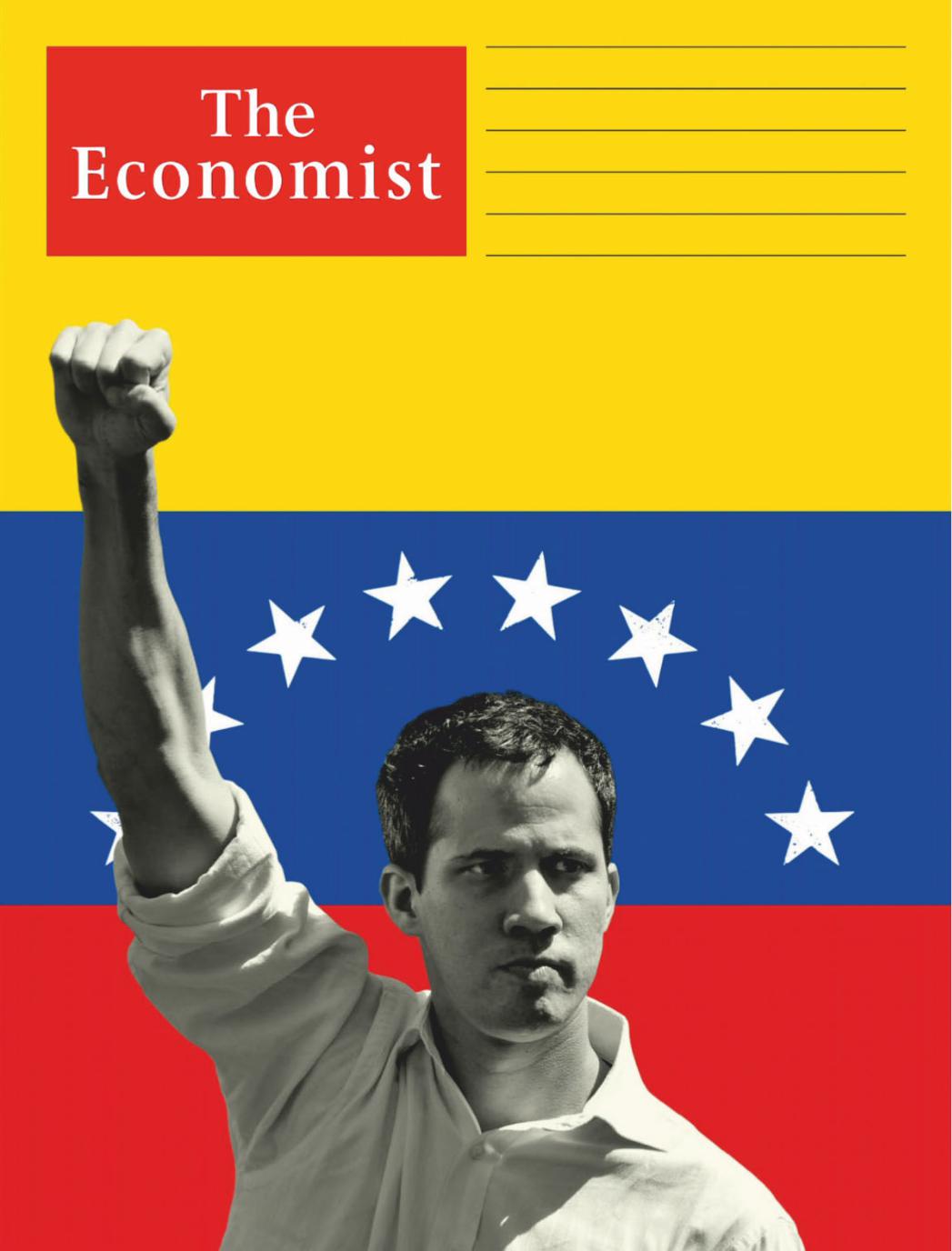
РЕЛИЗ ПОДГОТОВИЛА ГРУППА "What's News" VK.COM/WSNWS
vk.com/id446425943
How to handle Huawei
Talking to the Taliban
Better ways to tax the rich
The future of fertility
FEBRUARY 2ND–8TH 2019
The battle for Venezuela
http://new.guap.ru/i04/contacts
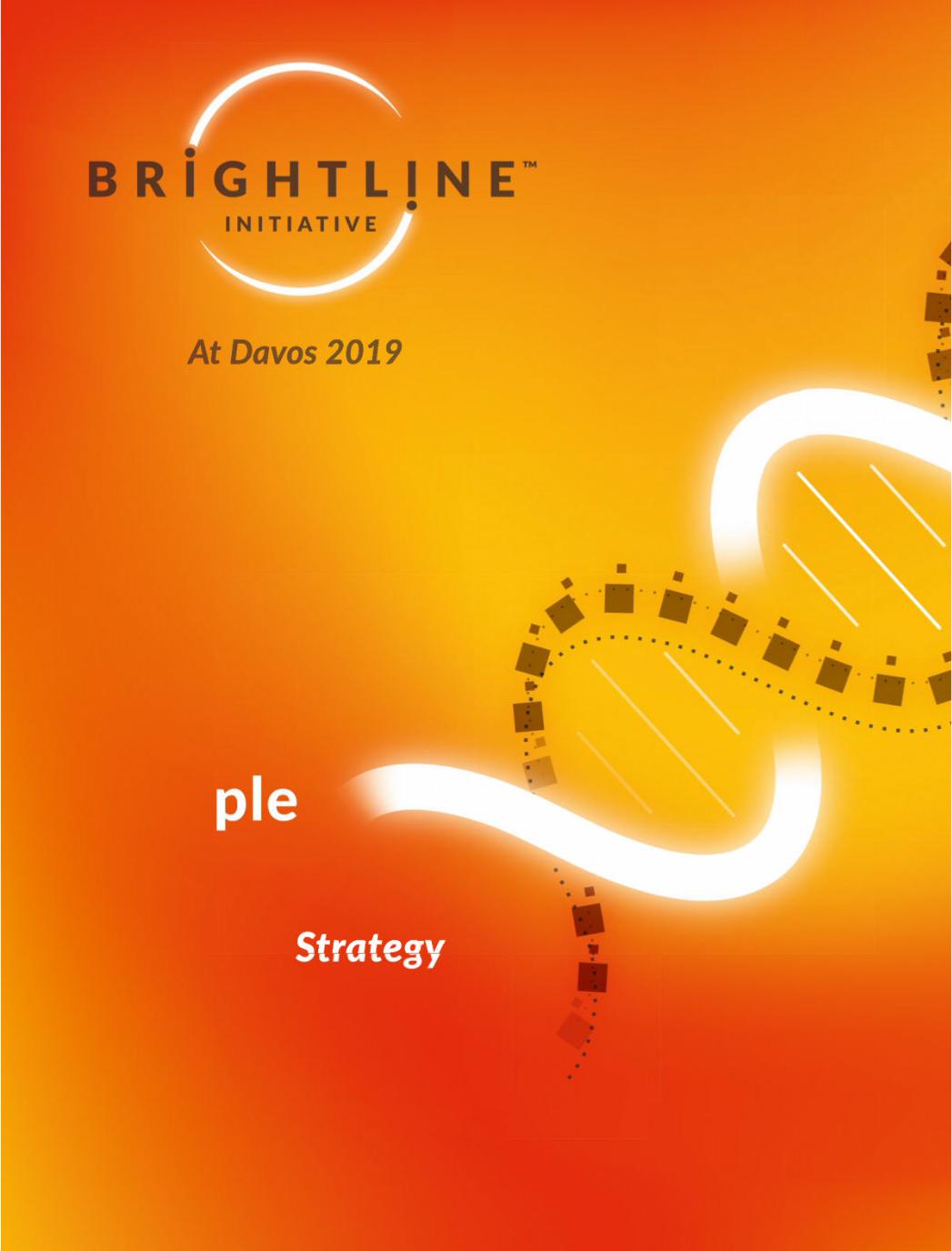
РЕЛИЗ ПОДГОТОВИЛА ГРУППА "What's News" VK.COM/WSNWS
vk.com/id446425943
Peo
Design
BRIGHTLINE COALITION |
|
ACADEMIC AND RESEARCH COLLABORATION |
PROJECT MANAGEMENT INSTITUTE ҋ BOSTON CONSULTING GROUP |
MIT CONSORTIUM FOR ENGINEERING PROGRAM EXCELLENCE |
|
! "$ ҃+ !" " &ҋ" & $+ |
$& ( !"$+ ! |
|
LEE HECHT HARRISON AGILE ALLIANCEҋ |
ҋ NETEASE |
& ( !"$+$+$) !ҋ INSPER BRAZIL |
http://new.guap.ru/i04/contacts
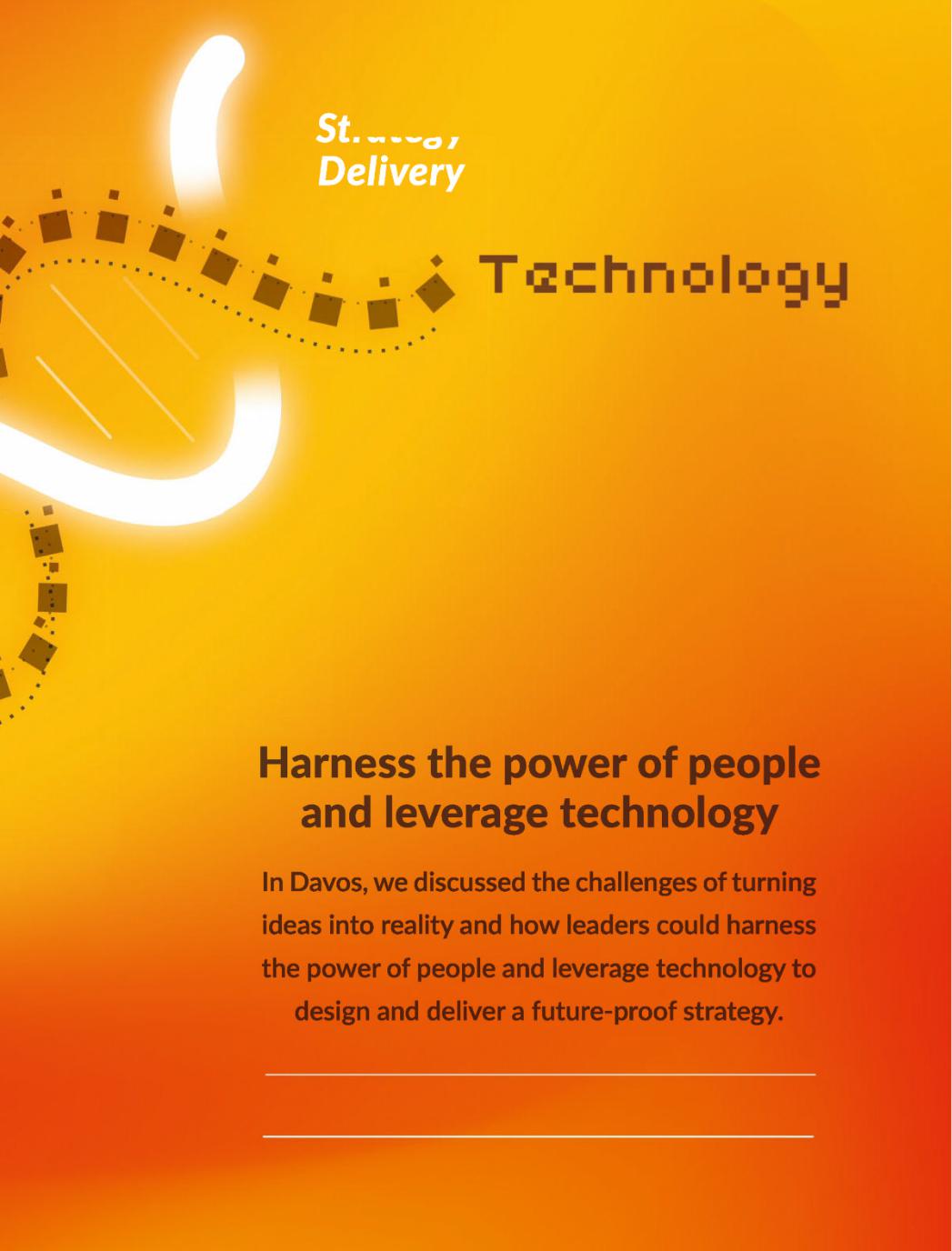
РЕЛИЗ ПОДГОТОВИЛА ГРУППА "What's News" VK.COM/WSNWS
vk.com/id446425943
trategy
Learn more at brightline.org/davos
http://new.guap.ru/i04/contacts
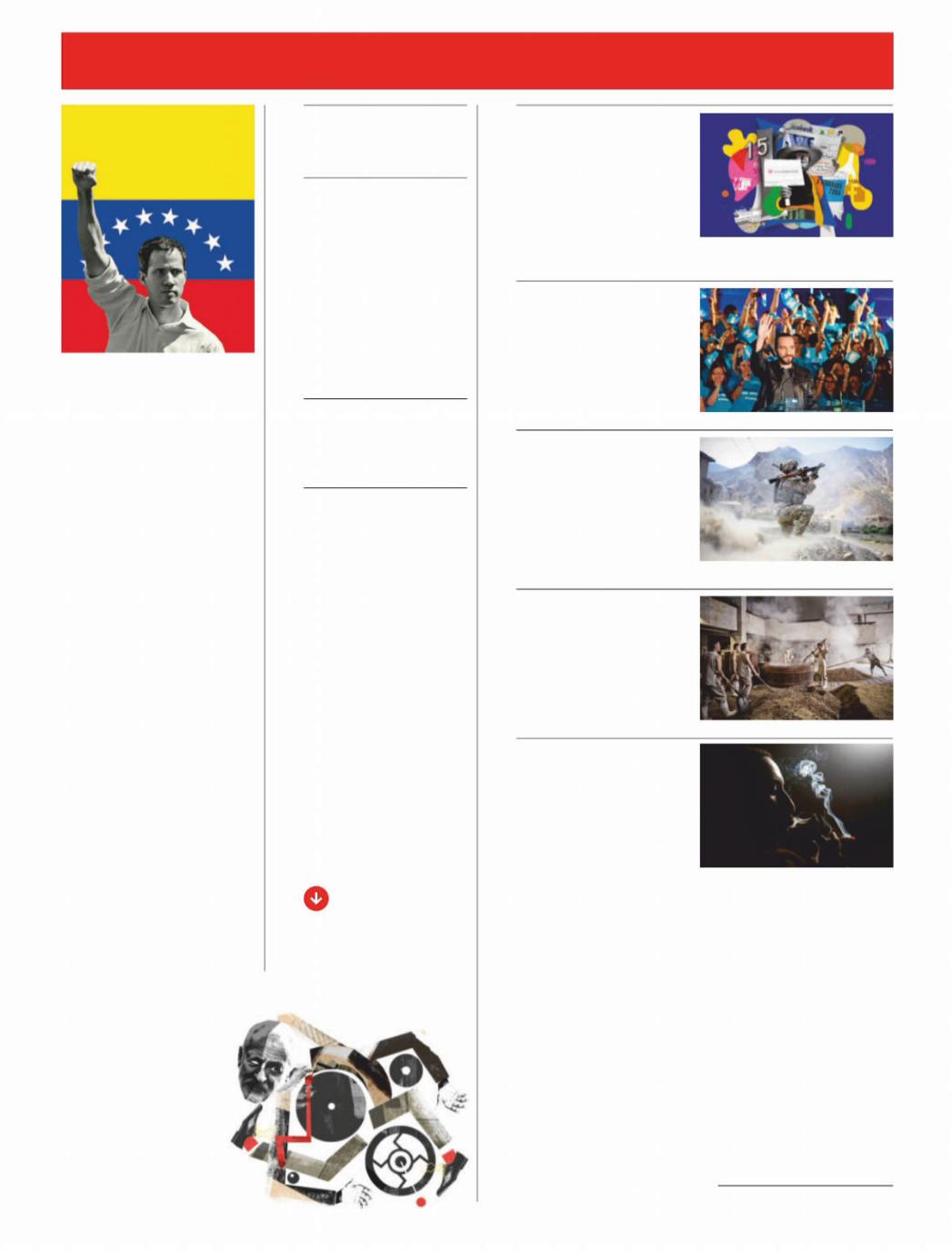
РЕЛИЗ ПОДГОТОВИЛА ГРУППА "What's News" VK.COM/WSNWS
vk.com/id446425943
4 Contents
|
|
|
|
The world this week |
|
|
|
|
6 |
A round-up of political |
|
|
|
|
|
and business news |
|
|
|
|
|
Leaders |
|
|
|
|
9 |
The battle for Venezuela |
|
|
|
|
|
How to intervene |
|
|
|
|
10 |
The war in Afghanistan |
|
|
|
|
|
Talking to the Taliban |
|
|
|
|
10 |
Chinese technology |
|
|
|
|
|
Handling Huawei |
|
|
|
|
11 |
The Brexit negotiations |
|
|
|
|
|
Over to EU |
|
On the cover |
|
12 |
Taxing the rich |
||
|
|
A way through the warren |
|||
The world’s democracies are |
|
||||
|
|
||||
right to seek change in Latin |
|
Letters |
|||
America’s worst-governed |
|
||||
14 |
On childhood, science, |
||||
country. But their |
|
||||
|
|
Wetherspoons, Disney, |
|||
responsibilities go further: |
|
||||
|
Chicago |
||||
leader, page 9 . A failed |
|
||||
|
|
||||
revolution may itself be |
|
Briefing |
|||
overthrown, page 17 |
. How |
17 |
|||
Venezue |
la’seconomy can |
Venezuela |
|||
recover from the Maduro |
|
A chance, at last, |
|||
regime, page 20. |
|
|
for liberation |
||
Hyperinflations can end quickly: |
20 |
The economy |
|||
Free exchange, page 65 |
|
|
The day after |
||
• How to handle Huawei |
|
|
|||
Banning one of China’s leading |
|
|
|||
firms from operating in the West |
|
|
|||
should be a last resort: leader, |
|
|
|||
page 10. |
The tech giant is |
|
|
||
accused of rewarding trade- |
|
|
|||
secret pilferers on staff, |
page 54 |
|
|||
•Talking to the Taliban A deal to end the Afghan insurgency would be wonderful—as long as it is not a figleaf to cover an American retreat: leader,
page 10 . Edging towards a peace deal, page 31
•Better ways to tax the rich
How to raise money, reduce inequality—and limit the economic damage: leader,
page 12 . The Democratic |
|
Bagehot Jeremy Corbyn |
|
presidential primary contest is |
|||
is having a bad Brexit, |
|||
already the most left-wing in |
|||
page 49 |
|||
decades: Lexington, |
page 28 |
||
|
|||
• The future of fertility Thanks to education, global fertility could fall faster than the UN expects, page 50
The Economist February 2nd 2019
United States
21Facebook and America
22The government is open
24Lasers in space
24Picking a mayor
25Roger Stone
28Lexington Democratic populists
The Americas
29El Salvador’s election
30Brazil’s fatal dam disaster
30El Chapo on trial
Asia
31The war in Afghanistan
32Japan and Naomi Osaka
32Jihad in the Philippines
33Religion in Pakistan
33Sexism in Australia
34Banyan In China’s debt
China
35Baijiu’s global quest
37Chaguan The politics of pigs
Middle East & Africa
38Africa’s smack track
39Pain relief in Africa
40Nigeria’s elections
40Lebanon’s debt crisis
41The pope in Arabia
1 Contents continues overleaf
http://new.guap.ru/i04/contacts
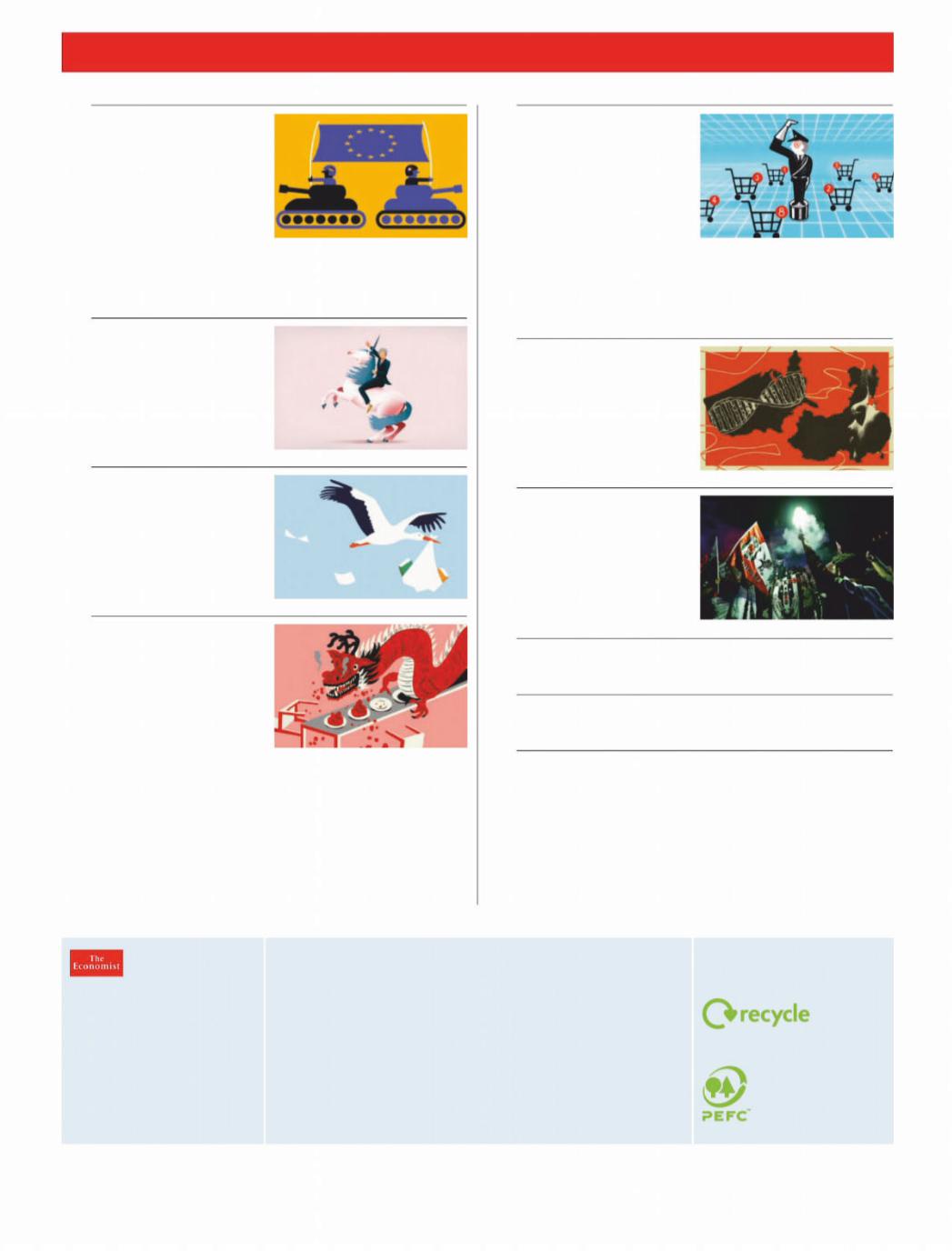
vk.com/id446425943
The Economist February 2nd 2019
Europe
42Regional defence
43How the Baltic states resist Russia
44Catalonia’s trials
44The marten menace
45The gilets jaunes organise
45A Turkish ghost town
46Charlemagne Yanis Varoufakis abroad
Britain
РЕЛИЗ ПОДГОТОВИЛА ГРУППА "What's News" VK.COM/WSNWS
Contents 5
Finance & economics
60Governing e-commerce
61Italy’s struggling economy
62Counting dirty money
62Credit-default swaps
63Buttonwood Heaven can wait
64Bank mergers in the Gulf
64Banking in Puerto Rico
65Free exchange Ending hyperinflation
47May’s temporary triumph
48Labour’s Latin love
49Bagehot Jeremy Corbyn’s bad Brexit
International
50When will humanity shrink?
Business
53The meteoric rise of a Chinese grain trader
54America v Huawei
55Bartleby The joy of missing out
56Comcast’s Sky deal
57Oleg Deripaska
57Harley-Davidson’s woes
58Netflix for video games
59Schumpeter A Brazilian mining disaster
Volume 430 Number 9128
Published since September 1843
to take part in “a severe contest between intelligence, which presses forward,
and an unworthy, timid ignorance obstructing our progress.”
Editorial offices in London and also:
Amsterdam, Beijing , Berlin, Brussels, Cairo, Chicago, Johannesburg , Madrid, Mexico City, Moscow, Mumbai, New Delhi, New York, Paris, San Francisco, São Paulo, Seoul, Shanghai, Singapore, Tokyo, Washington DC
Science & technology
66Stopping ethics dumping
67An Earth rock on the Moon
68SETI with X-rays
68A new typhoid vaccine
69Did people create pandas?
Books & arts
70Football and politics in Turkey
71Wild Bill Hickok
72Don McCullin’s camera
73Johnson Learning from mistakes
Economic & financial indicators
76Statistics on 42 economies
Graphic detail
77The “trilemma” of the Israeli-Palestinian conflict
Obituary
78Frank Blaichman, a leader of the Jewish Partisan Army
Subscription service
For our full range of subscription offers, including digital only or print and digital combined, visit:
Economist.com/offers
You can also subscribe by mail, telephone or email:
North America
The Economist Subscription Center,
P.O. Box 46978, St. Louis, MO 63146-6978 Telephone: +1 800 456 6086
Email: customerhelp@economist.com
Latin America & Mexico
The Economist Subscription Center,
P.O. Box 46979, St. Louis, MO 63146-6979 Telephone: +1 636 449 5702
Email: customerhelp@economist.com
One-year print-only subscription (51 issues):
United States.................................... |
US $158.25 (plus tax) |
Canada................................................ |
CA $158.25 (plus tax) |
Latin America....................................... |
US $289 (plus tax) |
Please
PEFC certified
This copy of The Economist is printed on paper sourced from sustainably managed forests certified to PEFC
PEFC/29-31-58 www.pefc.org
© 2019 The Economist Newspaper Limited. All rights reserved. Neither this publication nor any part of it may be reproduced, stored in a retrieval system, or transmitted in any form or by any means, electronic, mechanical, photocopying, recording or otherwise, without the prior permission of The Economist Newspaper Limited. The Economist (ISSN 0013-0613) is published every week, except for a year-end double issue, by The Economist Newspaper Limited, 750 3rd
Avenue, 5th Floor, New York, N Y 10017. The Economist is a registered trademark of The Economist Newspaper Limited. Periodicals postage paid at New York,NY and additional mailing offices. Postmaster : Send address changes to The Economist, P.O. Box 46978, St. Louis , MO. 63146-6978, USA. Canada Post publications mail (Canadian distribution) sales agreement no. 40012331. Return undeliverable Canadian addresses to The Economist, PO Box 7258 STN A, Toronto,
ON M5W 1X9. GST R123236267. Printed by Quad/Graphics, Saratoga Springs, NY 12866
http://new.guap.ru/i04/contacts
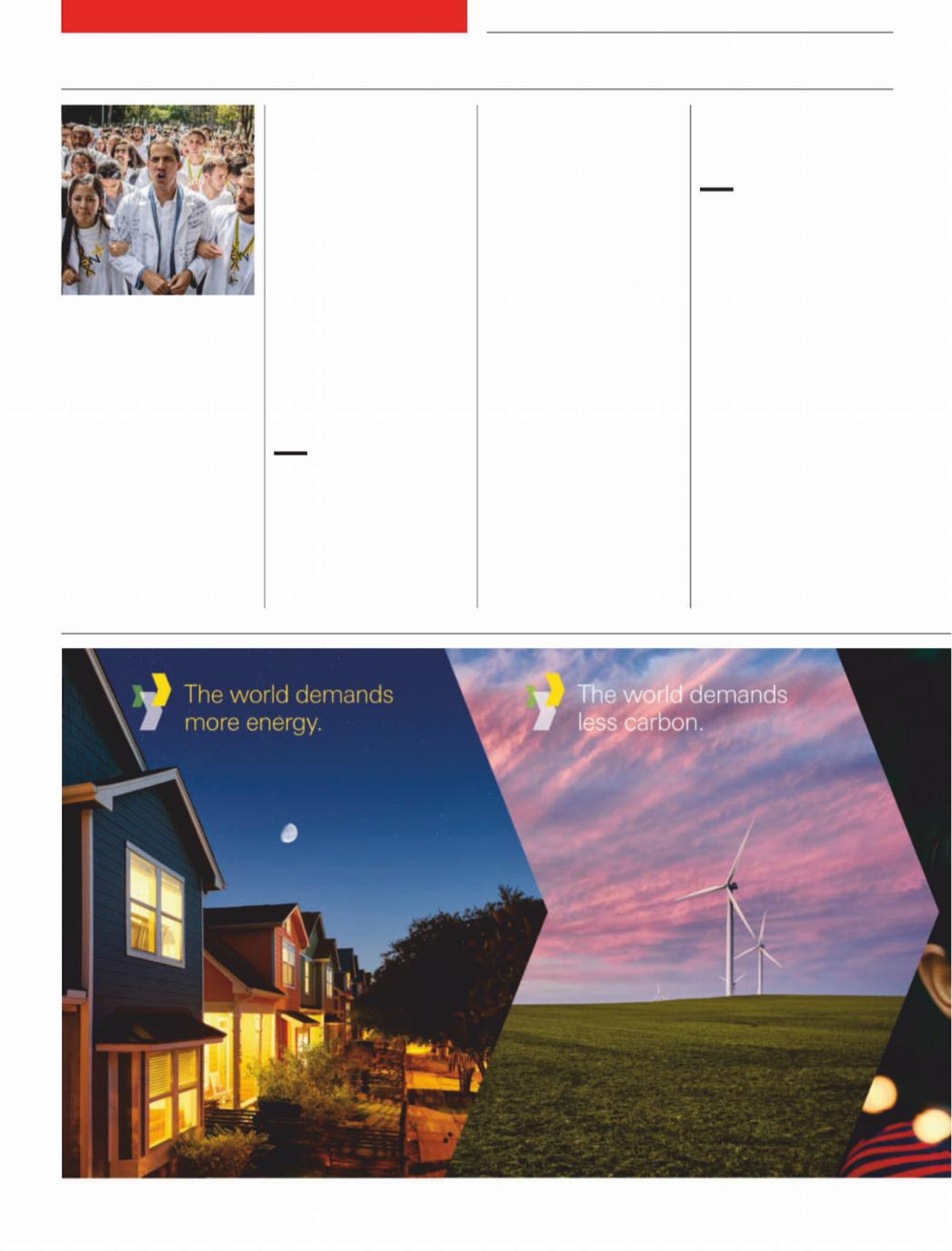
РЕЛИЗ ПОДГОТОВИЛА ГРУППА "What's News" VK.COM/WSNWS
vk.com/id446425943
6 The world this week |
Politics |
The Economist February 2nd 2019
More Venezuelans took to the streets to demand that Nicolás Maduro, who rigged an election last year, step down in favour of the head of the national assembly, Juan Guaidó, as the constitution prescribes. Mr Guaidó is recognised by most Latin American democracies, as well as the United States and Canada. Several European countries said they would recognise Mr Guaidó unless elections are called soon. Mr Maduro, whose misrule has led to hyperinflation and food shortages, retains the support of Russia, Turkey and, lukewarmly, China. Mr Guaidó
said he had held secret talks with the Venezuelan army to persuade it to switch sides.
America said that payments for oil imports from Venezuela would be put into accounts that would be available only to a democratic government.
A court in northern China sentenced a human-rights lawyer, Wang Quanzhang, to four and a half years in prison for “subversion”. He was the last to go on trial of more than 200 lawyers and activists who were detained in 2015. Journalists, diplomats and Mr Wang’s wife were barred from the proceedings.
It’s my way or the Huawei
Canada ’s prime minister, Justin Trudeau, fired his country’s ambassador to China John McCallum. Mr McCallum had ru ed feathers when he suggested that Meng Wanzhou, a senior executive of Huawei, a technology firm, might have
strong grounds to challenge a |
forces if the Taliban promise |
|
||
request for her extradition |
not to harbour terrorists, stop |
|
||
from Canada to the United |
fighting and begin talks with |
|
||
States to face fraud charges. |
the Afghan government. |
|
||
The Supreme Court of |
Paki- |
|
|
|
stan rejected a petition calling |
An artless deal |
|
|
|
for a review of its earlier deci- |
The government shutdown in |
|
||
sion to acquit Asia Bibi, a |
America ended on January 26th |
|
||
Christian woman accused of |
after 35 days, making it the |
|
||
blasphemy. Rioting zealots had |
longest in history. President |
|
||
previously called for her to be |
Donald Trump blinked first in |
|
||
hanged anyway. This time |
his dispute with Congress, |
|
||
protests were muted, as 3,000 |
having promised to keep the |
|
||
zealots had been locked up. |
government closed until he |
|
||
|
|
received funding to build a |
|
|
Two bombs exploded near a |
wall on the Mexican border. |
|
||
cathedral in the |
Philippines, |
But he warned there would be |
|
|
killing 20 people and injuring |
another shutdown—or that he |
|
||
many more. Islamic State |
would declare a national emer- |
|
||
claimed responsibility for the |
gency—if legislators did not |
|
||
attack, which came just after |
fund his wall by February15th. |
|
||
voters in the Muslim-majority |
|
|
|
|
region voted in favour of more |
Roger Stone |
, a former adviser |
||
political autonomy. |
|
to Mr Trump, was arrested in |
|
|
, |
|
Florida. The o ce of Robert |
|
|
American o cials said they |
Mueller, the special counsel |
|
||
were making progress in talks |
investigating links between |
|
||
with the Taliban about ending |
Russia and Mr Trump’s elec- |
|
||
the war in Afghanistan. Amer- |
tion campaign, levelled seven |
|
||
ica has o ered to withdraw its |
charges against Mr Stone, |
1 |
||
http://new.guap.ru/i04/contacts
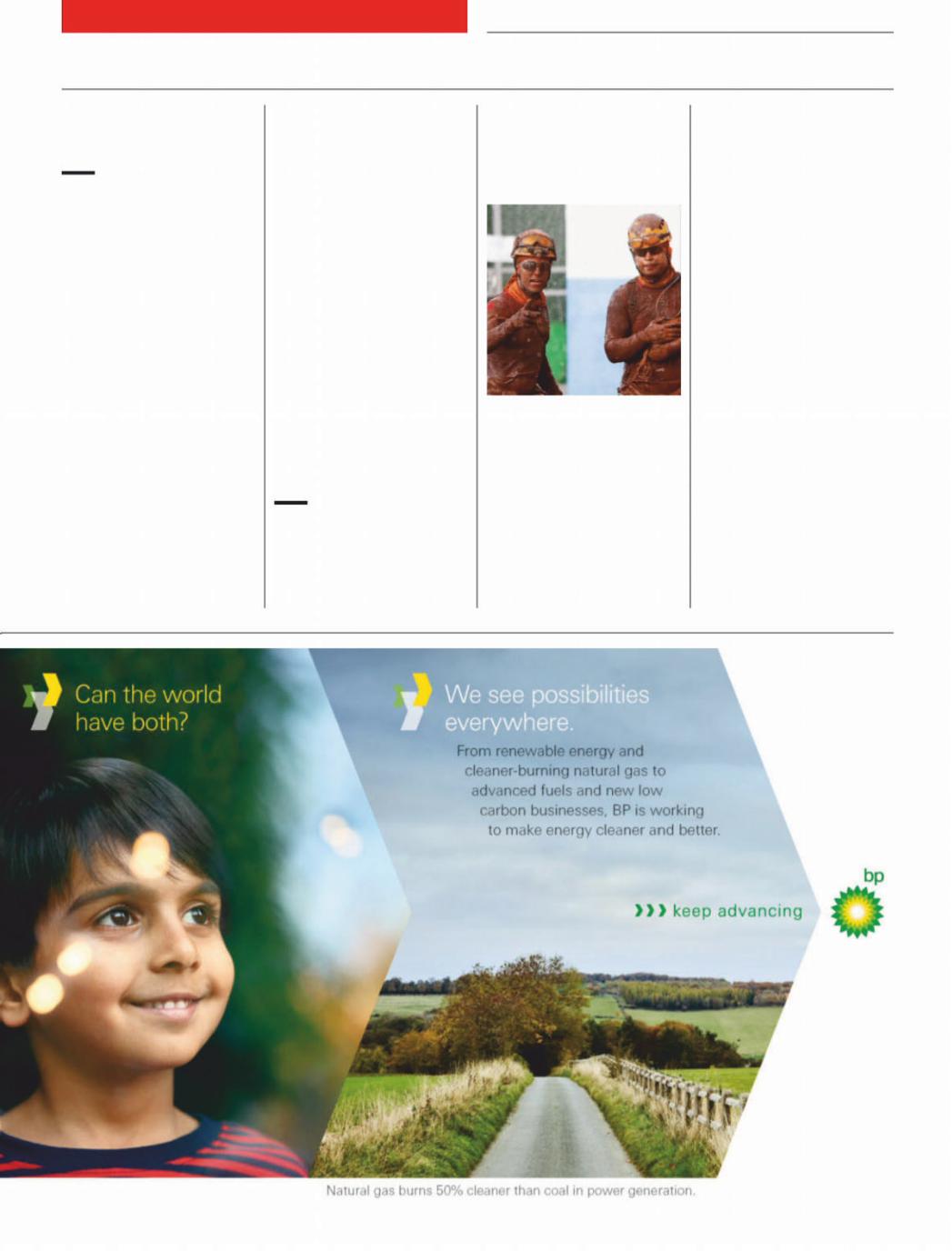
|
РЕЛИЗ ПОДГОТОВИЛА ГРУППА "What's News" VK.COM/WSNWS |
vk.com/id446425943 |
|
The Economist February 2nd 2019 |
The world this week 7 |
2including witness tampering and obstructing an o cial proceeding.
Time to smell the coffee
Howard Schultz, a former boss of Starbucks, said he was considering running as an independent candidate in the next presidential election. Critics warned that doing so would split the anti-Trump vote, thus helping the president to secure another term.
A polar vortex froze the American Midwest, with temperatures falling to -33oC in Chicago. At least eight people have died because of the inclement weather.
Britain’s Parliament voted to back the Brexitdeal proposed by Theresa May, the prime minister, so long as she replaces the Irish “backstop”, which seeks to avoid a hard border in Ireland, with some unspecified alternative. Michel
Barnier, the eu ’s lead negotiator, said he was unwilling to reconsider the previous agreement. Jeremy Corbyn, Britain’s opposition leader, met Mrs May to discuss options.
Greece voted to recognise Macedonia, its neighbour, under the new name of North Macedonia. The agreement opens the door to North Macedonia’s admission to the eu and nato.
Gilets jaunes protesters in
France set up not one but two new political parties. Neither sounds coherent. One vows to “remake politics around the heart and empathy”. Other gilets jaunes denounced the party-builders for selling out.
Pride, swallowed |
’sItalydeputy |
Matteo Salvini, |
prime minister, asked his government to bar prosecutors from pressing potential kidnapping charges against him.
He is in trouble over his order to stop177 migrants from leaving a boat. Mr Salvini had previously welcomed the trial, saying he was proud to defend his country.
Zimbabwe’s police and army have been accused of mass rapes, beatings and robbery while crushing protests against costly fuel.
Benny Gantz, a retired general, jumped in opinion polls after launching his campaign for Israel’s parliamentary elections, due in April. No one is sure what he stands for, but Mr
Gantz’s new party is expected to win more than 20 seats in the120-seat Knesset. Likud, the party of Binyamin Netanyahu, the prime minister, is expected to win 30 or so.
More than130 people are feared to have drowned o the coast of Djibouti after two boats carrying migrants capsized. The vessels were carrying people from Africa to the Arabian peninsula, where they were hoping to seek work.
A judicial commission into corruption in South Africa has heard testimony from a businessman that government o cials and members of the ruling African National Congress were put on monthly retainers, paid bribes and given gifts including sports cars by a firm that won government contracts. The daughter of one minister was also offered driver training because she kept crashing the cars she had been given.
http://new.guap.ru/i04/contacts
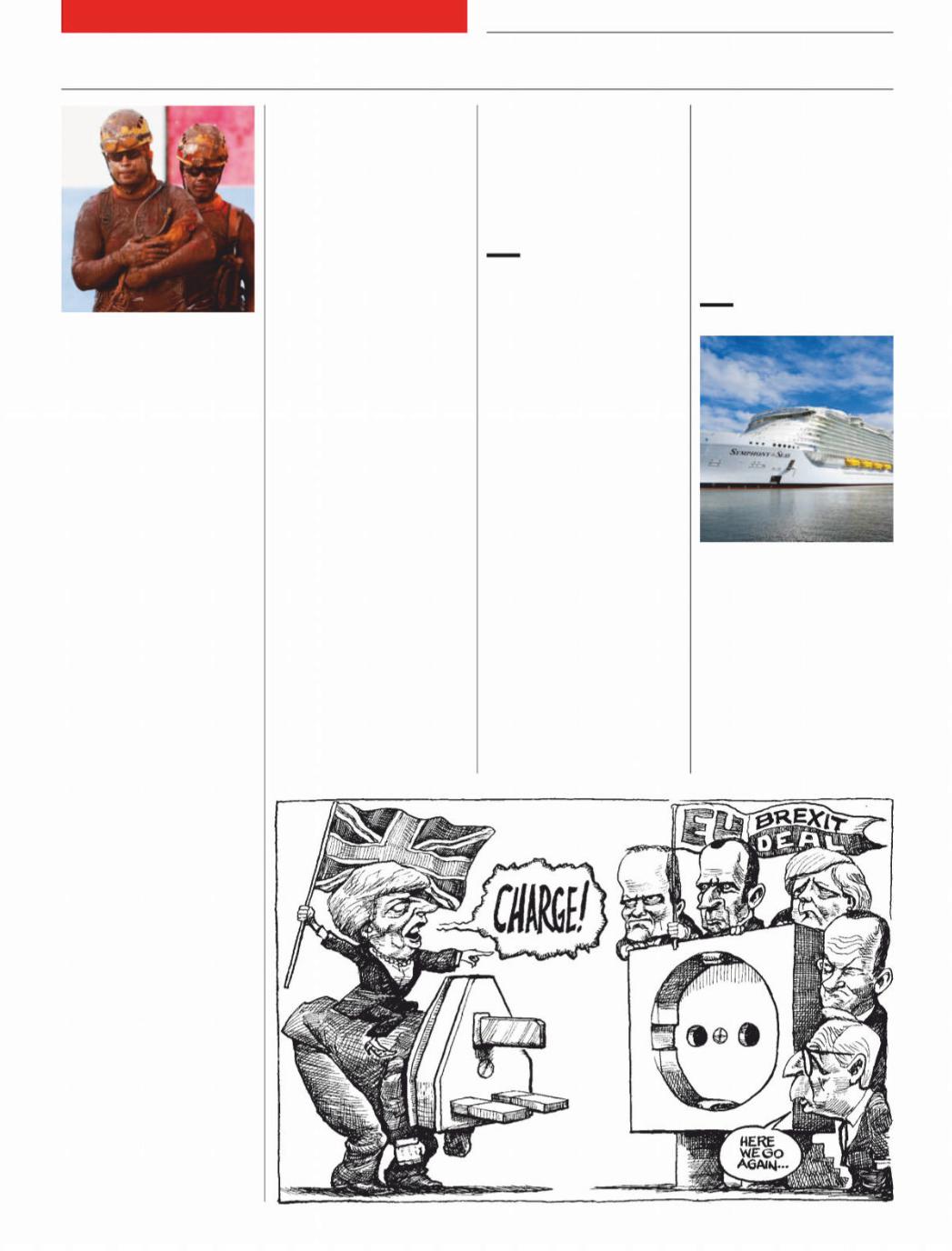
РЕЛИЗ ПОДГОТОВИЛА ГРУППА "What's News" VK.COM/WSNWS
vk.com/id446425943
8 The world this week |
Business |
The Economist February 2nd 2019
|
|
Ocean. But it is now paying the |
said the company would re- |
|
|
price for expanding too fast; |
duce its headcount by15%, or |
|
|
last year it lost NKr3.8bn. |
iagby about, 250 jobs, according to |
|
|
an airline group that owns |
the Wall Street Journal. Verizon |
|
|
British Airways, recently |
Media Group, which owns rival |
|
|
pulled out of takeover talks |
websites such as Hu Post, |
|
|
with Norwegian and sold its |
Yahoo, and aol, also said it |
|
|
stake in the airline. |
would sack 800 employees. |
|
|
The euro zone’s economy |
No pig’s land |
|
|
failed to bounce back in the |
|
|
|
final three months of 2018, |
Denmark is to build a 70km |
|
Vale |
with growth remaining at 0.2% |
fence along its German border |
A dam belonging to |
, theinboth the third and fourth |
to repel stray pigs. It will be |
|
world’s largest iron-ore pro- |
quarters. Italy fell into reces- |
constructed to stop the spread |
|
ducer, collapsed in Brazil, |
sion over the period. Mean- |
of African swine fever. The |
|
killing at least 84 people. About |
while, Spain’s unemployment |
Danes, famed for their exports |
|
276 are still missing. The com- |
rate fell to14.5% in the last |
of bacon and other pork pro- |
|
pany’s share price has fallen by |
quarter of 2018, its lowest rate |
ducts, are worried about in- |
|
18% since the collapse; in- |
in a decade. Although 3.3m |
fected wild boar bringing the |
|
vestors fear a torrent of com- |
people in the country are still |
untreatable disease north, |
|
pensation claims and regu- |
looking for work, the un- |
which could devastate live- |
|
latory fines. The firm said that |
employment rate has fallen |
stock and hurt the country’s |
|
it will decommission dams |
steadily since its peak of nearly |
farming industry. |
|
similar to the one that col- |
27% in 2013. |
De Beers , the world’s largest |
|
lapsed, a move which will |
|
||
reduce its annual output of |
Boeing , the American aero- |
producer of diamonds, said |
|
iron ore by10%. |
|
space giant, announced that |
sales fell by a quarter at the |
|
|
annual revenues last year |
start of this year. The mining |
In America, the |
Federal Re- exceeded $100bn for the first |
giant is particularly being |
|
serve ditched its guidance to |
time, helped by strong demand |
a ected by slower economic |
|
investors suggesting that |
for its commercial aircraft. Last |
growth in China, the world’s |
|
further rises in interest rates |
year the firm received 20% |
second-biggest consumer of |
|
lie ahead. The American cen- |
more orders for its civil jets |
the stones. |
|
tral bank pledged to be “pa- |
than its European rival, Airbus. |
|
|
tient”, citing low inflation and |
|
A government-appointed |
|
recent economic turbulence as |
BuzzFeed , a news website oncecommission in Germany |
||
reasons not to raise rates. It |
known for “listicles”, an- |
agreed that the country should |
|
also said it would slow down |
nounced another round of job |
phase out the use of coal by |
|
its policy of shrinking its bal- |
losses. BuzzFeed’s founder and |
2038. The body agreed that a |
|
ance-sheet if needed. |
|
chief executive, Jonah Peretti, |
total of at least €40bn ($46bn) |
America’s Justice Department accused Huawei, a Chinese technology company, of a series of misdeeds including theft of intellectual property and the obstruction of justice. Huawei is also accused of duping four banks into violating sanctions on Iran, on which basis Canadian police arrested Meng Wanzhou, its chief financial o cer, in December. America formally requested her extradition this week. If the allegations against Huawei are proven, American firms could be banned from selling it their technology.
Norwegian Air said that it would try to raise NKr3bn ($350m) in a rights issue. The troubled carrier bet the house on making a success of lowcost flights across the Atlantic
should be provided in aid for coal-mining states a ected by the move, which is less than the figure of around €60bn they had asked for. It is hoped that the new target will partly o set the extra carbon emissions caused by Germany’s abandonment of nuclear power, which its government announced in 2011.
Sailing high
Royal Caribbean , a cruise line based in America, announced
that revenues in the last three months of 2018 rose by16% and profits by 9.6%, year on year. Bookings for cruise holidays were unexpectedly healthy over the winter. Last year the company expanded by acquiring Silversea Cruises, a luxury brand, and launching into service the Symphony of the
Seas , the largest passenger ship in the world by gross tonnage.
http://new.guap.ru/i04/contacts
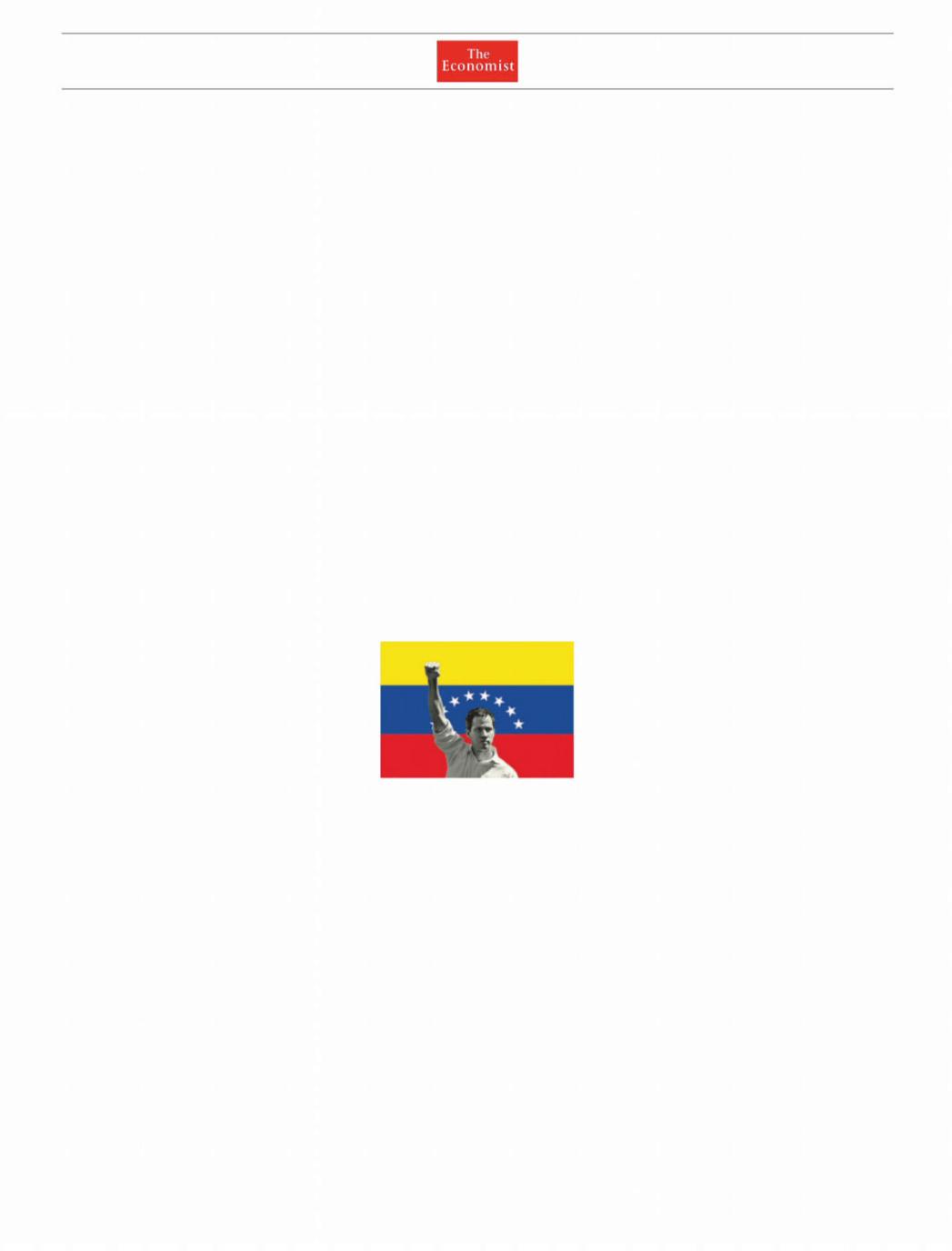
РЕЛИЗ ПОДГОТОВИЛА ГРУППА "What's News" VK.COM/WSNWS
vk.com/id446425943
Leaders
Leaders 9
The battle for Venezuela
The world’s democracies are right to seek change in Latin America’s worst-governed country
If protests alone could oust a president, Nicolás Maduro would already be on a plane to Cuba. On January 23rd at least 1m Venezuelans from across the country took to the streets demanding Mr Maduro step down. They were answering the call of Juan Guaidó, who last week proclaimed himself the rightful head of state. Mr Guaidó has won the backing of most of Latin America, as well as the United States and Europe. Protests planned for February 2nd promise to be even bigger. But Mr Maduro is sup-
ported by the army as well as Russia, China and Turkey. As Economist went to press, he was still holding on to power.
Much is at stake. Most important is the fate of 32m Venezuelans made wretched by six years under Mr Maduro. Polls suggest that 80% of them are sick of him. Other countries are also hurt by Venezuela’s failure. The region is struggling with the exodus of over 3m of its people fleeing hunger, repression and the socialist dystopia created by the late Hugo Chávez. Europe and the United States su er from Venezuela’s pervasive corruption, which enhances its role as a conduit for narcotics. And as world leaders pile in for Mr Maduro or against him, they are battling over an important idea which has lately fallen out of favour: that when a leader pillages his state, oppresses his people and subverts the rule of law, it is everybody’s business.
The scale of the disaster Mr Maduro has brought down upon Venezuela is hard to comprehend. In the past
five years gdp has fallen by half. Annual inflation is reckoned to be 1.7m per cent (the government no longer publishes the numbers), which means that bolívar savings worth $10,000 at the start of the year dwindle to 59 cents by the end. Venezuela has vast reserves of oil and gas, but the state oil company has been plundered and put under one of the country’s 2,000 generals,
who has watched production tumble to1.1m barrels a day. People are malnourished and lack simple medicines, including antibiotics. Hospitals have become death traps for want of power and equipment. Blaming his troubles on foreign conspiracies, Mr Maduro has rejected most o ers of humanitarian aid.
Despite this litany of su ering many outsiders, especially on the left, argue that the world should leave Venezuelans to sort out their di erences. Some adopt Mr Maduro’s view that Mr Guaidó’s claim to the presidency, recognised immediately by the United States, is really a coup. Russia, which has worked hard to discredit the idea that Western intervention can ever be benign or constructive, is reported to have sent 400 troops from a private military contractor, also spotted in Syria, Ukraine and parts of Africa, to protect either the regime or Russian assets.
Abandoning Venezuela to the malevolent rule of Mr Maduro would be wrong. If anyone has launched a coup it is he. He was inaugurated on January10th for a second term having stolen last year’s election. In his first term, won in 2013 in another dubious vote, he eroded democracy by silencing critical media and eviscerating the constitution. He packed the electoral commission and the supreme court with puppets and neutered the national assembly, which the opposition controls. By contrast, Mr Guaidó has a good claim to legitimacy. As head of the national assembly,
he serves as acting president if the o ce is vacant—which, because Mr Maduro is not a legitimate occupant, it is.
The question is not whether the world should help Mr Guaidó, but how (see Briefing). This week the United States, still Venezuela’s main trading partner, imposed what amounts to sanctions on oil exports and on imports of the diluents needed to market its heavy oil. By ordering that payments for Venezuelan oil must be put in bank accounts reserved for Mr Guaidó’s government, the UnitedThe States aims to asphyxiate the regime, in the hope that the armed forces will switch to Mr Guaidó.
One danger is that Mr Maduro digs in and orders the security
forces and the collectivos , organised thugs at the regime’s service, to impose terror. Another is that the United States overplays its
hand. Just now it is working with the Lima group of regional governments. But its sanctions could hurt the people more than the regime. If, bent on regime change, it acts unthinkingly, it could come to be seen once again in Latin America as imperialist and overbearing. Russia is portraying the United States’s intervention as an attempt to dominate its backyard. Its media are already saying that Vladimir Putin’s interest in Ukraine is no di erent. The situation is a test of President Donald Trump and his for- eign-policy team, including the hawkish national security adviser, John Bolton. This week Mr Bolton hinted at the use of
American troops. Barring state violence against American citizens, that would be a mistake.
Mr Guaidó’s backers have ways to help without resorting to force or dirty tricks. These fall into two categories. The first includes incentives for Venezuelans to demand change, for the army to abandon the regime and for Mr Maduro to go. Now that Mr Guaidó has been recognised as interim president, he stands to control bil-
lions of dollars of Venezuela’s foreign assets if power shifts. The national assembly has passed a law o ering an amnesty to soldiers and civilians who work to re-institute democracy. Mr Maduro is being promised the chance to flee the country.
The second way to help is to let Venezuelans know that the world is ready if Mr Guaidó takes power. The lesson from the Arab spring is that even a leader who starts by sweeping away a tyrant must bring improvements rapidly or risk losing support. The immediate priorities will be food and health care. The very fact of a new government will help stop hyperinflation (see Free exchange), but Venezuela will also need real money from abroad—international lenders, including the imf , should be generous. The to-do list is long: Venezuela will need to remove price controls and other distortions and build a social safety-net. It must restart the oil industry, which will entail welcoming foreign investment. Its debt will need restructuring—including the debt to Russia and China which is due to be paid in oil. And amid all this, Mr Guaidó’s caretaker government must hold elections.
A generation ago, Venezuela was a functioning state. It can be again. It is blessed with oil and fertile land. It has an educated population at home and in the diaspora that fled. And in Mr Guaidó it has a leader who, at last, seems to be able to unite the fractious opposition. But first it must get rid of Mr Maduro. 7
http://new.guap.ru/i04/contacts

|
РЕЛИЗ ПОДГОТОВИЛА ГРУППА "What's News" VK.COM/WSNWS |
vk.com/id446425943 |
|
10 Leaders |
The Economist February 2nd 2019 |
|
The war in Afghanistan |
|
Talking to the Taliban |
A deal to end the Afghan insurgency would be wonderful—as long as it is not a figleaf to cover an American retreat
After more than 17 years, it is the longest war in American history. American forces are no closer to defeating the Tali- ban—the repressive Islamist militia that ruled most of Afghanistan before 2001—than they were a decade ago. In fact, the share of the country under full control of the elected, Americanbacked government is humiliatingly small. The conflict has reached something close to a stalemate, but a bloody one: some 10,000 police and soldiers, 3,400 civilians and an unknown number of insurgents died in 2017 alone. Since then, the authorities have stopped releasing data on military casualties—not, pre-
sumably, because things have got better.
The news that America and the Taliban are making headway in negotiations to end the conflict is therefore welcome (see Asia section). Zalmay Khalilzad, America’s chief ne-
gotiator, says the two sides have agreed on a “framework” for a deal. America would withdraw its troops in exchange for an undertaking from the Taliban not to provide sanctuary to foreign terrorists, as they once did for Osama bin Laden. The Taliban would also have to agree to a ceasefire and begin negotiations with the Afghan government, which they have long denounced as an American creation.
The goals of drawing the Taliban into peaceful politics and thus extricating America from a costly and destructive conflict are the right ones. But there are, sadly, many reasons to fear that the framework will not produce either outcome. For one thing, the details will be thorny. The Taliban already sound lukewarm about the ceasefire and the talks. Setting the order in which the agreed steps are taken could also be a stumbling block, especially when it comes to the timing and pace of America’s withdrawal.
Another worry is that the Taliban will promise the moon to rid themselves of the Americans, on the entirely reasonable assumption that, even if they go on to break their word, the gi s are unlikely to return. The American-led mission in Afghanistan is
called Resolute Support, but the resolve of President Donald Trump, at least, is clearly dissipating. He has made no secret of his desire to bring American troops home, and given no sign that he values the things their presence achieves.
Before America toppled the Taliban regime, Afghanistan was a violent theocratic despotism. Women were not allowed out of their homes unless covered head to toe and accompanied by a male relative. Any departure from the Taliban’s barbaric version of Islam, such as dancing or shaving or educating girls, could earn floggings, imprisonment or even death. Ancient statues were dynamited as pagan idols. Keeping such zealots at bay, for as long as they try to impose their beliefs by force, is an incalculable benefit to the two-thirds of Afghans (some 24m people) who
live in government-controlled areas.
There are benefits for America, too. If the Taliban were to overthrow the Afghan government after an American withdrawal, it would be a humiliation on a par with Vietnam. Even if the government staggered on, a pull-out without a solid peace agreement would cause chaos. Regional powers such as China, India, Iran, Pakistan and Russia would all struggle to fill the
vacuum. At best, the result would be a gruesome surge in fighting; at worst, the whole region could be destabilised. An o shoot of the Taliban in Pakistan set o something close to civil war there in 2014. America could easily be sucked back in.
With a force of 140,000, America could not wipe out the Taliban. But with a mere 13,000 troops bolstering the Afghan army today, it seems able to keep the insurgents more or less in check. Mr Khalilzad should be clear that America is looking for a durable settlement, not a figleaf to cover its retreat. Its troops should stay until the Taliban show that they are sincere about taking up politics and laying down arms. Otherwise, the Taliban will have no reason to change their stripes—and Afghanistan, already at war for 40 years, will be condemned to yet more conflict. 7
Chinese technology
How to handle Huawei
Banning one of China’s leading firms from operating in the West should be a last resort
n january 28th |
Liu He, a Chinese vice-premier, landedguisein . The first is benign: it is China’s most successful global |
|
OWashington ready for talks to calm the trade war between |
firm. Last year it booked $110bn of sales and shipped 200m |
|
America and China. Instead he was met by a geopolitical tem- |
smartphones. It has built 1,500 networks, reaching a third of the |
|
pest. That day America’s attorney-general charged Huawei, one |
planet’s population. Huawei’s second face, prosecutors allege, is |
|
of China’s biggest firms, with 23 crimes, including sanctions- |
that of a grubby enterprise that breaks laws for profit. They say it |
|
busting, stealing corporate secrets and obstructing justice. |
o ered bonuses to sta who stole intellectual property and that |
|
American o cials also made clear that they view Huawei as a |
Meng Wanzhou, its finance chief and the daughter of its founder, |
|
threat to national security, since it builds the telecoms networks |
misled banks about doing business in Iran. She was arrested in |
|
that underpin modern societies. Some 170 countries that use |
Canada in December and courts there are considering an Ameri- |
|
Huawei must now decide whether doing business with it is safe. |
can extradition request. China says the allegations are a “smear”. |
|
That decision is hard, because Huawei has more than one |
Huawei’s third identity is the most disturbing and the hardest1 |
|
http://new.guap.ru/i04/contacts

|
РЕЛИЗ ПОДГОТОВИЛА ГРУППА "What's News" VK.COM/WSNWS |
vk.com/id446425943 |
|
The Economist February 2nd 2019 |
Leaders 11 |
2to pin down. It could be a vehicle for Chinese spying or even, in a time of war, sabotage. Rumours of this have circulated for years without any public evidence (including this week), but it makes sense to be wary. Huawei has a high market share in new 5g networks, which will connect everything from cars to robots. The networks’ dispersed design makes them hard to monitor. And China’s leaders are tightening their grip on business, including firms such as Huawei in which the state has no stake. This influence has been formalised in the National Intelligence Law of 2017, which requires firms to work with China’s one-party state.
The nuclear option would be to ban Huawei. Since 2012 it has, in e ect, been prevented from selling equip-
ment in America. Australia recently prohibited Huawei’s 5 equipmentg . Japan has toughened its rules. America could probably put Huawei out of business if it wanted to, by banning American firms such as Qualcomm and Intel from supplying it with crucial components and by cutting it o from the global banking system.
Such aggressive action would come with
huge costs for all, including America. The economic ones are obvious: supply chains would be wrecked, at least 180,000 jobs would go, mainly in China, and customers would have less choice. On January 29th an Australian operator deprived of Huawei gear abandoned plans for a new 5g network. But the greatest cost would be a splintering of the global trading system. The line between justice and trade negotiations has become blurred. American o cials insist that they are just enforcing the law, but President Donald Trump has said that Ms Meng’s fate is a bargaining chip. Wilbur Ross, the commerce secretary and a China hawk, was present this week when the allegations against Hua-
wei were announced. The exclusion of a firm on the say-so of American o cials, without evidence of spying, would set a dangerous precedent. The same precautionary logic would justify banning all hardware made in China or keeping Chinese firms out of industries like e-commerce or finance. Might China be entitled to impose a similar ban on American firms with a big role in its economy? Think of General Motors or Boeing.
Instead of spiralling into a cold war, leaders should create mechanisms and rules that favour trade by minimising mistrust (see Business section). Both sides have a part to play. Host countries need to develop structures to monitor Huawei and o er a fair response if things go wrong. European political leaders complain that they have not been shown evidence of Huawei spying. The more credible and law-like America’s process is, the better. Britain has a board that allows spooks to review Huawei’s equipment. Germany has copied it and Singapore may follow. Governments can lower the risk by insisting on a diversity of suppliers. A country with four networks should
have at least two that were not built by Huawei.
For its part, China Inc needs to get serious about demonstrating that it can be trusted abroad. Huawei’s governance is a mixture of obfuscation and opacity. It should appoint foreign directors, recruit Western investors and set up subsidiaries overseas that have their own boards and indigenous managers. China’s government, meanwhile, can complain that it is being treated unfairly, but if it really wants better treatment it should send a signal that it understands the anxieties it stirs up. As the Huawei a air shows, President Xi Jinping’s growing authoritarianism is undermining China’s commercial interests abroad. 7
The Brexit negotiations
Over to EU
|
How Brussels should respond to Britain’s confused demands |
|
|
|
heresa may has become so used to losing votes in the House |
keen for Britain to just go, deal or no deal, should think again. A |
|||
Tof Commons that when, on January 29th, the prime minister |
chaotic exit with no withdrawal agreement would represent a |
|||
got mp s to back her on a motion regarding her Brexit deal, it was |
colossal failure by both sides. The eucannot solve Westminster’s |
|||
treated as a breakthrough. “She did it!” announced one front |
tumultuous politics, let alone the contradictions within the |
|||
page the next morning. Another hailed “Theresa’s triumph”. |
Brexit project. But one thing Britain urgently needs in order to |
|||
Alas, it is anything but. |
mp s agreed that they would suppsortoutrt its mess is time—and that is where the can help. |
eu |
||
the exit deal she has agreed to with the European Union, so long |
Those Brexiteers urging the |
to makeu“concessions” on the |
||
as the Irish “backstop” was removed (see Britain section). But on |
Irish backstop misunderstand its purpose. Britain wants an in- |
|||
the crucial question of what might replace it—something that |
dependent trade policy, an invisible border with Ireland and no |
|||
negotiators in Brussels have spent almost two years scratching |
customs checks between Northern Ireland and the British main- |
|||
their heads over—the motion suggested no more than unspeci- |
land. These three aims are incompatible. If Britain sets its own |
|||
fied “alternative arrangements”. Mrs May vowed to take this |
tari s, it will mean customs checks on goods passing between it |
|||
vague demand to have her cake and eat it back to Brussels. |
and the eu , of which Ireland is a member. That means inspec- |
|||
She will get short shrift, and she deserves it. A sensible ap- |
tions at the border. Britain believes that in future it will be pos- |
|||
proach to the Brexit talks would have been to agree at home on |
sible to do such checks remotely, perhaps using new technology. |
|||
what kind of deal to go for, then begin negotiations. The prime |
One day that may be true. Until then, an interim solution is need- |
|||
minister did the opposite, talking to the eu for nearly two years |
ed. This is the backstop, under which Britain would remain in a |
|||
before coming back to find that her treaty could not pass her own |
customs union with the |
eu , keeping both borders open but de- |
||
Parliament. With less than two months before Brexit day, she |
laying its ability to strike trade deals. |
|
||
now proposes to reopen negotiations on what she herself recent- |
The backstop thus exists as a logical consequence of Britain’s |
|||
ly insisted was “the only possible deal”. |
own negotiating objectives, not European caprice. By definition, |
|||
It is abject. But any exasperated European leaders who are |
it expires when someone comes up with a way to carry out cus-1 |
|||
http://new.guap.ru/i04/contacts
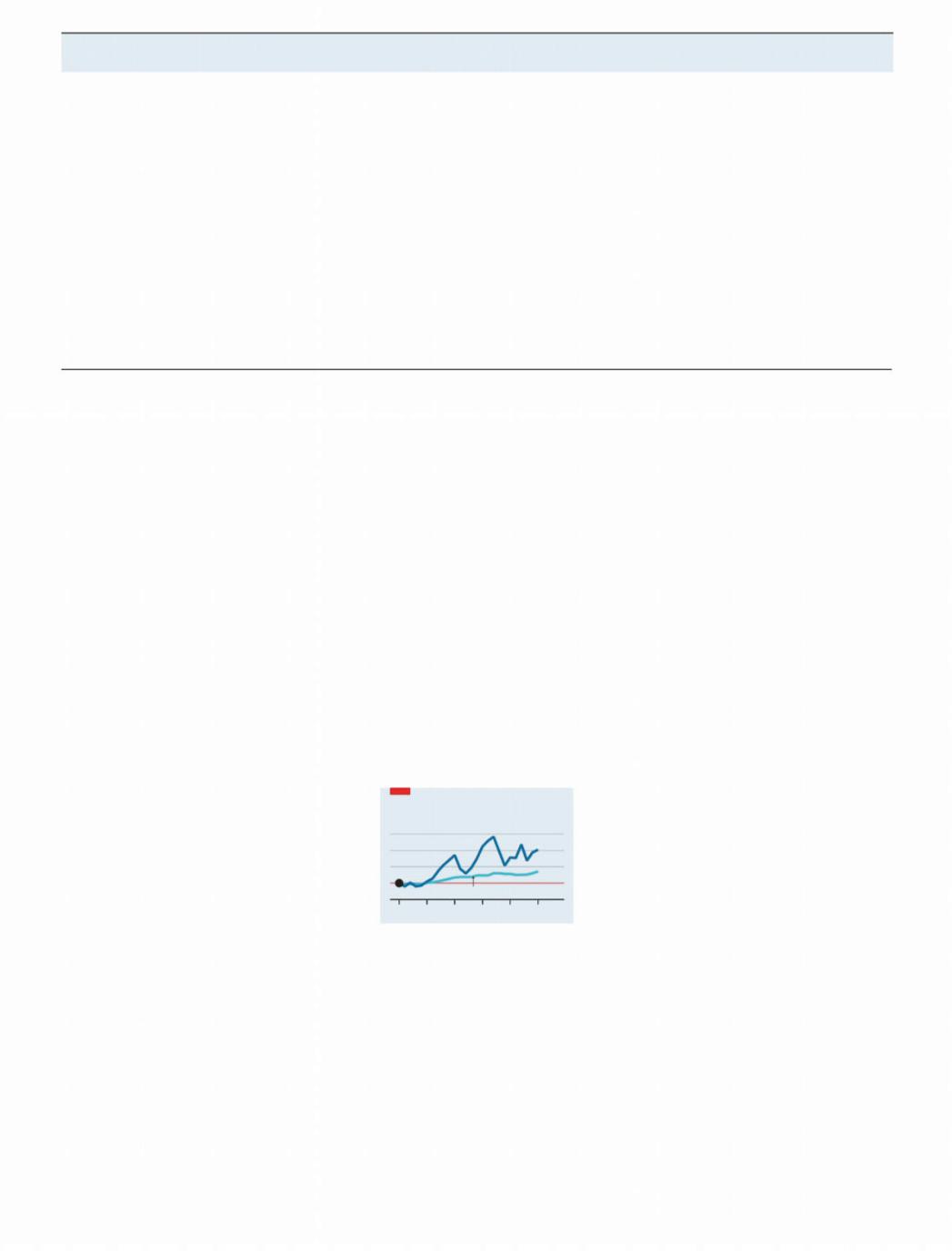
|
РЕЛИЗ ПОДГОТОВИЛА ГРУППА "What's News" VK.COM/WSNWS |
vk.com/id446425943 |
|
12 Leaders |
The Economist February 2nd 2019 |
2 toms checks with no border infrastructure. Hardline Brexiteers’ calls for the backstop to be time-limited are thus not just unrealistic but nonsensical. Beyond more words of reassurance about the arrangement’s temporary nature—which it should ladle on liberally—the eu cannot do much about the backstop.
Where it can make a di erence is on the timing. Unless Parliament agrees on a deal by March 29th, Britain will fall out of the eu without any exit arrangements in place. Britain itself would suffer most from this. But for the eu , and especially Ireland, it would also be horribly damaging to lose one of its most important members in such circumstances. Parliament this week made clear that it was against leaving with no deal. If Mrs May wants to avoid this fate, she will surely have to ask for more time. The eu should signal that it will agree to her request.
The longer Britain has to sort out its mess, the more chance that it can avoid disaster. Mrs May’s strategy has been to get the hardline Brexiteers in her Conservative Party to back the deal. The vote this week for the cake-based motion, which more or less united Conservative mp s, has helped feed the idea that this is still possible. But the response from Brussels ought to put paid to that thinking. In reality, Mrs May is likely to have more luck winning votes from the opposition. The price of Labour’s support seems to be a permanent customs union. The backstop, as Brexiteers complain, already amounts to something close to this. It is possible to imagine a deal being done, but not in the two months remaining. With more time, Parliament may yet feel its way to a solution. Brexit is a British problem that only Britain can fix. But the eu can give it the time it needs—and it must. 7
Taxing the rich
A way through the warren
How to raise money, reduce inequality—and limit the economic damage
During his lesser-known run for president, which began in 1999, Donald Trump proposed levying a wealth tax on Americans with more than $10m. He may soon find himself campaigning on the other side of the issue. That is because Democrats are lining up to find ways to tax the rich. Senator Elizabeth Warren, who wants Mr Trump’s job, has called for an annual levy of 2% on wealth above $50m and of 3% on wealth above $1bn. Alexandria Ocasio-Cortez, a prominent new left-wing congresswoman, has
floated a top tax rate of 70% on the highest incomes.
In one way these proposals are a relief. Left-wing Democrats have plenty of ideas for new spending—Medicare for all, free college tuition, the “Green New Deal”—that would need funding. Mainly because America is ageing, but also boosted by Mr Trump’s unfunded tax cuts, the debt-to- ratio is alreadygdp expected to nearly double over the next 30 years. If a future Democratic administration creates new spending
programmes while maintaining existing ones, |
|
higher taxes will be necessary. |
|
If revenues are to rise, there are good |
|
grounds to look first to the rich. Mr Trump’s tax |
|
cuts are just the latest change to have made life |
|
at the top more splendorous. Between 1990 and |
|
2015 the real income of the top1% of households, |
1990 95 2000 |
after taxes and transfers, nearly doubled. Over |
|
the same period middle incomes grew by only about a third— and most of that was thanks to government intervention. Globalisation, technological change and ebbing competition have all helped the rich prosper in recent decades. Techno-prophets fear that inequality could soon worsen further, as algorithms replace workers en masse. Whether or not they are right, the disproportionate gains the rich have already enjoyed could justify raising new revenues from them.
Unfortunately, the proposed new schemes are poorly designed. Ms Warren’s takes aim at wealth inequality, which has also risen dramatically. It is legitimate to tax wealth. But Ms Warren’s levy would be crude, distorting and hard to enforce. A business owner making nominal annual returns of around 5% would see much of that wiped out, before accounting for existing taxes on capital. That prospect would squash investment and enter-
prise. Meanwhile, bureaucrats would repeatedly find themselves having to value billionaires’ art collections and other illiquid assets. Eight rich countries have scrapped their wealth taxes since 1990, often amid concerns about their economic and administrative costs. In 2017 only four levied them.
There are better ways to raise taxes on capital. One is to increase inheritance tax, an inequality-buster that, though also too easily avoided, is relatively gentle on investment and work incentives when levied at modest rates. Another is to target economic rents and windfalls that inflate investment returns. Higher property taxes can e ciently capture some of the astronomical gains that landowners near successful cities have enjoyed. It is also possible to raise taxes on corporations that enjoy abnormally high profits without severely inhibiting growth. The trick is to shield investment spending by letting companies
deduct it from their taxable profit immediately, rather than as their assets depreciate. (Mr Trump’s reform accomplished this, but only
250 |
partially and temporarily.) |
|
200 |
||
What about income tax? Ms Ocasio-Cortez’s |
||
150 |
||
boosters point out that a 70% levy is close to the |
||
100 |
||
50 |
rate that is said to maximise revenue in one no- |
|
05 10 15 |
table economic study. In truth the study is nota- |
|
|
ble because it is an outlier—one that ignores the |
benefits of entrepreneurial innovation or of workers improving their skills. France’s short-lived 75% top tax rate, which was scrapped at the end of 2014, raised less money than was hoped. America’s top rate of federal income tax is 37%; higher is clearly feasible, but it would be wise to keep change incremental.
Although there is scope to raise taxes on the rich, they cannot pay for everything, if only because the rich are relatively scarce. One estimate puts extra annual revenue from Ms Ocasio-Cortez’s idea, which applies only to incomes above $10m, at perhaps $12bn, or 0.3% of the tax take. Ms Warren’s proposal would raise $210bn a year, her backers say—but they assume, implausibly, limited avoidance and no economic damage. Ultimately, the price of ambitious spending programmes will be tax increases that are also far-reaching. The crucial point about a strategy for taxing the rich is to realise that it has limits. 7
http://new.guap.ru/i04/contacts

РЕЛИЗ ПОДГОТОВИЛА ГРУППА "What's News" VK.COM/WSNWS
vk.com/id446425943
World-Leading Cyber AI
http://new.guap.ru/i04/contacts
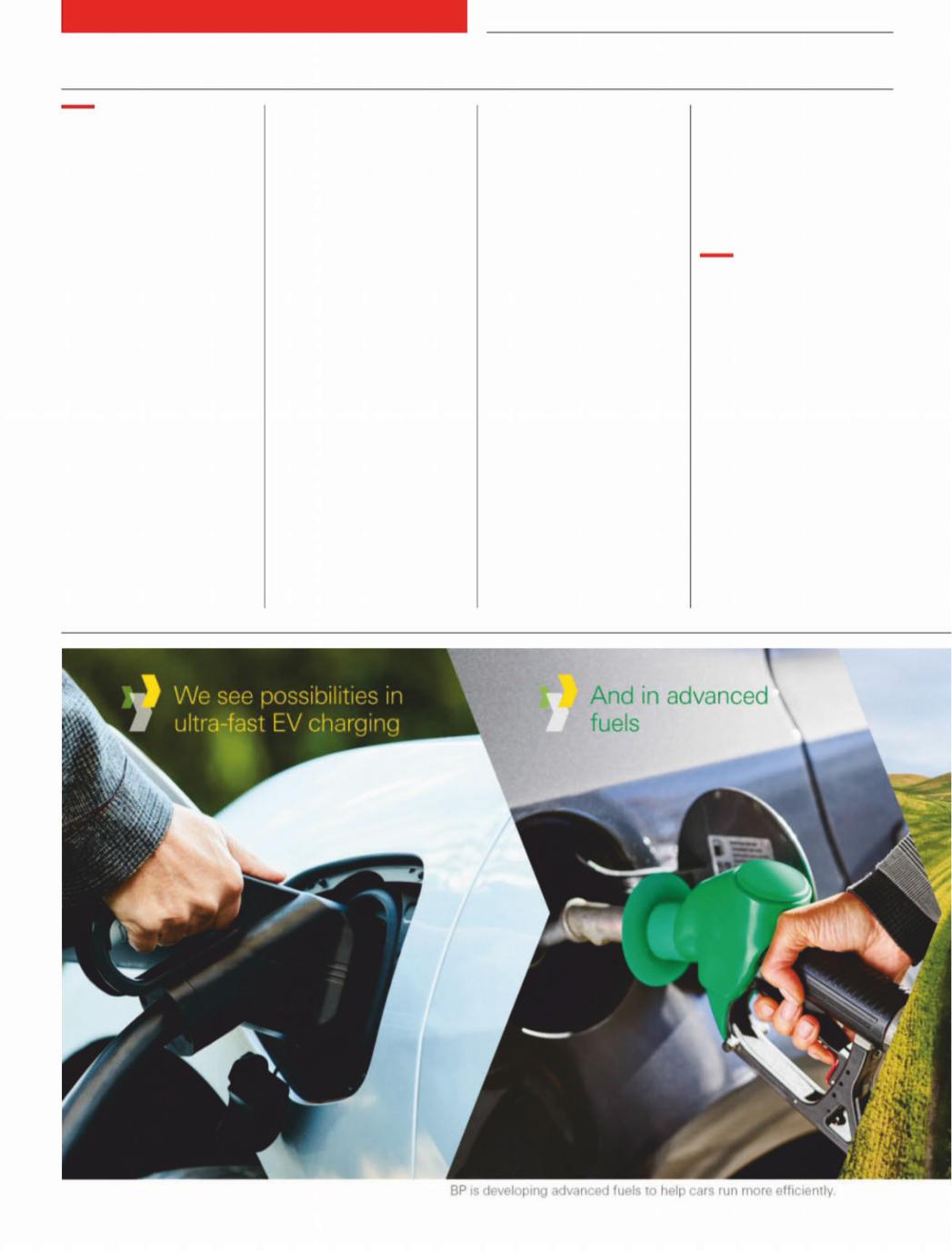
vk.com/id446425943
14 Letters
The kids were all right
Your article on the history of childhood (Special report on childhood, January 5th) was based almost entirely on the work of Philippe Ariès, whom you cited. But though we are indebted to Ariès for beginning serious scholarship on this topic, his central thesis that childhood did not exist before the17th century is now discredited. Notions of childhood existed throughout history. Across time and di erent cultures, childhood has been viewed as a distinct stage of life, and children have had cultural activities and possessions of their own.
It is simply untrue that children were viewed primarily as imperfect adults and that the stark separation of adults and children is a modern invention. It is also not true that parents did not love and cherish their children, even at a time of high infant mortality. They took part in rituals
РЕЛИЗ ПОДГОТОВИЛА ГРУППА "What's News" VK.COM/WSNWS
The Economist February 2nd 2019
around their children’s birth and grieved their death. The way children were viewed historically was extremely diverse, a point missed by Ariès. It is not helpful to assert that childhood did not exist before the17th century. robyn boeré
Toronto
Childhood seems to be losing its fun. Earlier and earlier schooling, shifting family patterns, increased time spent indoors and in cities, and constant technological evolution have created socioeconomic pressures. Your special report neatly identified four childhood revolutions from medieval times to the present day, but did not acknowledge today’s play crisis. Neuroscientific research shows that playtime is critical to developing the cognitive, creative and communications skills needed in the future, and yet time set aside for play is being squeezed everywhere.
University College London is leading research on this issue on our behalf. Its findings, to be shared later in 2019, will identify “play gaps” in more than 40 countries. Closing these gaps in access to play will support deeper learning, which science tells us is when learning is joyful, experimental, social, meaningful, hands-on and minds-on. john goodwin
Chief executive lego Foundation
Billund, Denmark
As a researcher in the field of internet addiction, I am grateful for the balanced position you took on the e ects of digital-media overuse on children’s mental health. That said, I wondered why you did not mention that the World Health Organisation has included the diagnosis “gaming disorder” in the latest draft of its classification of diseases? I am aware that scientists are still debating whether this
diagnosis is premature, but you should have raised it to provide the full picture. christian montag
Professor of molecular psychology
Ulm University
Ulm, Germany
Science and democracy
American pre-eminence in science and technology has a straightforward heritage. Astonishing experiences during the second world war, such as the Manhattan Project, the e ects of advanced radar and so on, convinced many that America must embark on a nationally planned programme of scientific research. The momentum of this thinking took us through the cold war and space race and has underpinned America’s unchallenged array of research universities and national laboratories. But now we seem to have lost our mojo, high-
lighted by the National Acad- 1
http://new.guap.ru/i04/contacts
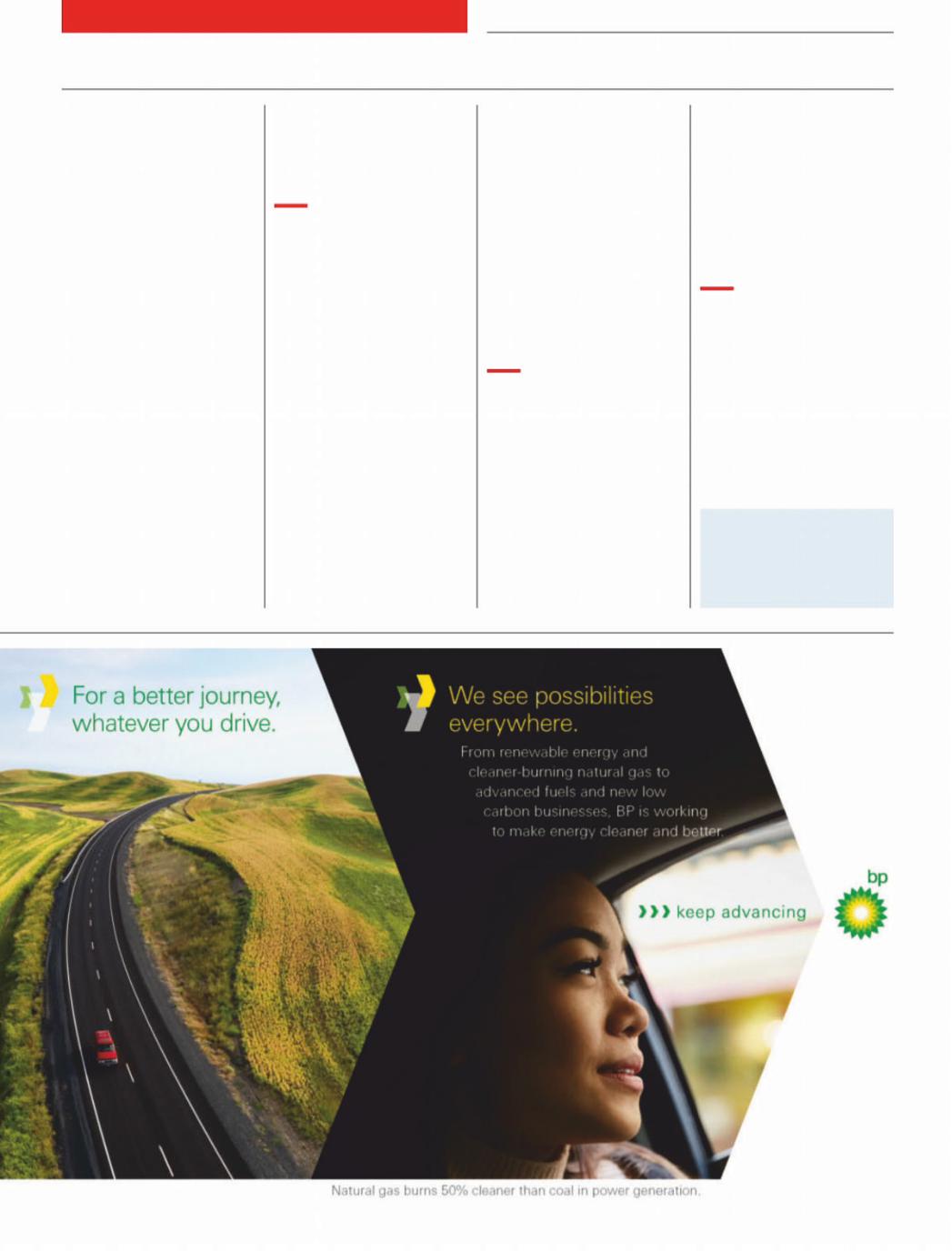
|
РЕЛИЗ ПОДГОТОВИЛА ГРУППА "What's News" VK.COM/WSNWS |
vk.com/id446425943 |
|
The Economist February 2nd 2019 |
Letters 15 |
2emy of Science’s report, “Rising Above the Gathering Storm”. Federal funding and science support is lagging just when rivals like China are making real advances (“Red moon rising”, January12th).
The seminal role of science is lacking in our national political dialogue and this is where we must make the definitive break with China. As a professional scientist, I cannot see a path for China to maintain the level of original thinking that it needs while pursuing authoritarian control in almost all other spheres. America’s founders understood this. Science played a trenchant role in forging our democracy. allan hauer
Corrales, New Mexico
Recall that the spread of scientific inquiry under Denis Diderot, Jean d’Alembert, and other figures of the18th-century Enlightenment helped undermine support for absolutist rule in France and contributed
to the end of the monarchy. Science and absolutism are uncomfortable bedfellows. michael me rtaugh
Portland, Maine
Havin’ a laugh?
I suppose it was only to be expected that an anti-Brexit, London-based weekly would want to have a giggle about Tim Martin’s free-trade tour around a hundred of his pubs (“Me and my Spoons”, January19th). Why so snide? Mr Martin founded, runs and presides over the fortunes of nearly 1,000 pubs and hotels throughout Britain, o ering wholesome food and a wonderful variety of draught beers at cheap prices. The business generates a healthy annual profit and the man is obviously a minor commercial genius. I would have thought that a newspaper supportive of free trade and hard-headed business e ciency would have wanted to sing his praises
rather than treat him and his achievements as eccentric.
Down here on Costa Geriatrica, some of us long ago concluded that no British institution did more to ease the economic and human pain of living through the austerity years than Wetherspoons. roger barnard
Chairman
Wetherspoon’s Collective of Workers, Peasants and Intellectuals
Eastbourne
An illustrious illustrator
The article on Disney’s liveaction remakes put me in mind of Cecil Beard, one of the early Disney cartoonists, whom I knew in his retirement years (“An old new world”, January 5th). Authenticity mattered in his day, too. Cecil told me how, when making the original “Bambi”, he and three other cartoonists went out in the Sierras and filmed wild animals. They then broke down
the films, frame by frame, to learn how the animals really moved. As well as enhancing the credibility of their animation, the work of those cartoonists turned out to be original research, making its way into physiology textbooks. uncle river
Pie Town, New Mexico
Ubi Est Mea?
Regarding corruption in Chicago (“On the make by the lake”, January12th), in the late1960s Mike Royko, a Pulitzer prizewinning columnist for several newspapers, suggested that the city change its motto to “Where’s Mine?”
jim spangler
Brookfield, Wisconsin
Letters are welcome and should be addressed to the Editor at
The Economist, The Adelphi Building, 1-11 John Adam Street, London WC2N 6HT Email: letters@economist.com
More letters are available at:
Economist.com/letters
http://new.guap.ru/i04/contacts
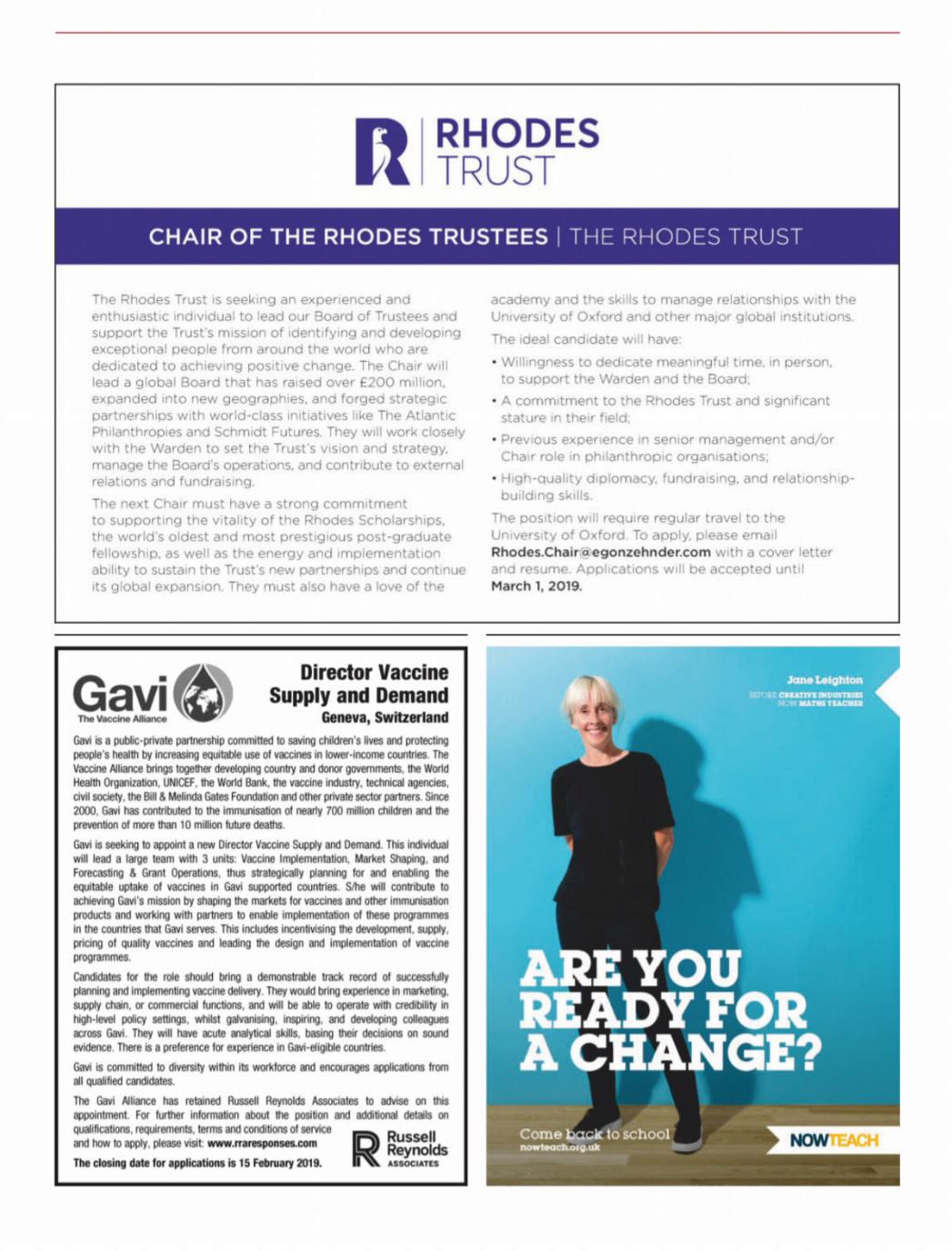
РЕЛИЗ ПОДГОТОВИЛА ГРУППА "What's News" VK.COM/WSNWS
vk.com/id446425943
16 Executive focus
http://new.guap.ru/i04/contacts
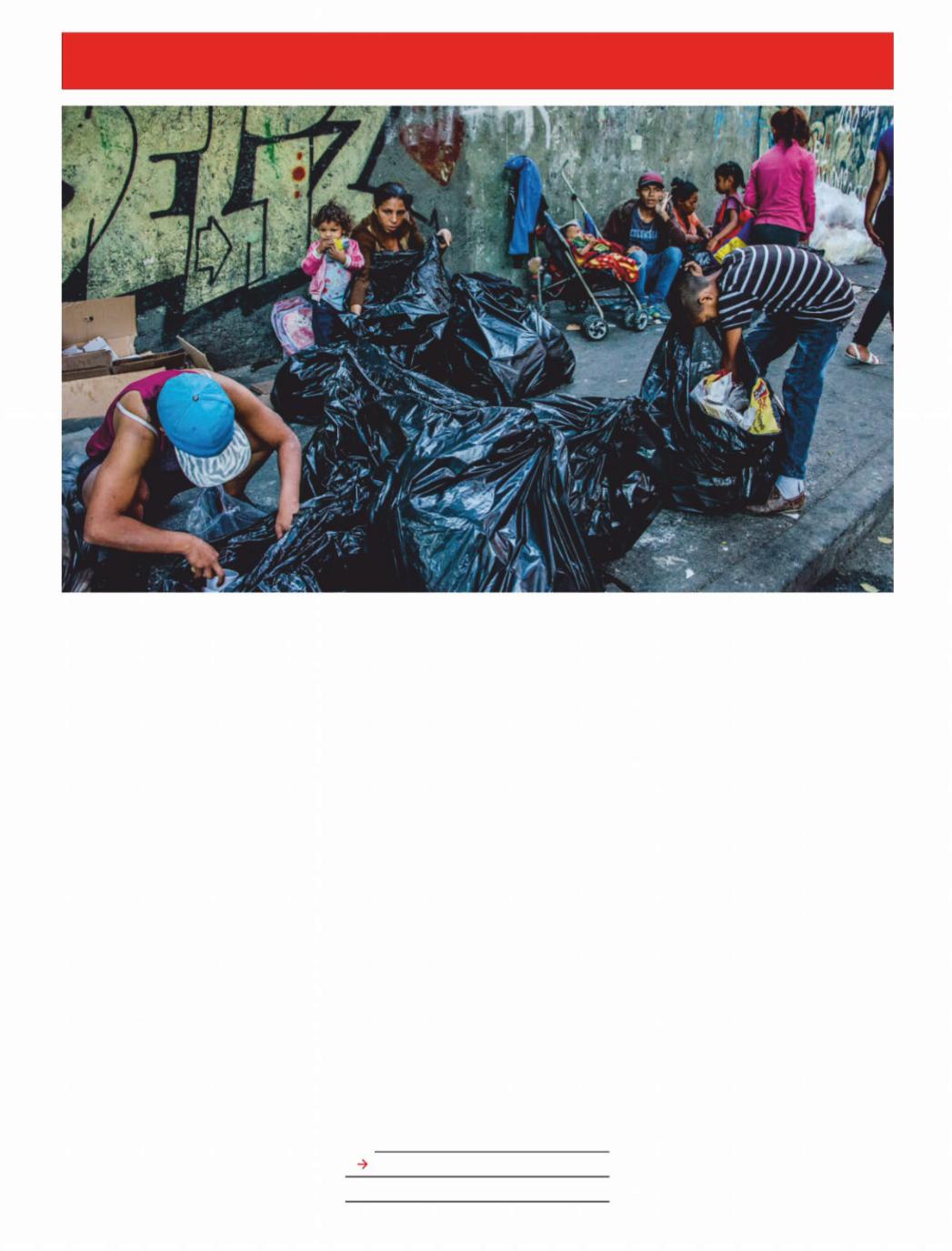
РЕЛИЗ ПОДГОТОВИЛА ГРУППА "What's News" VK.COM/WSNWS
vk.com/id446425943
Briefing Venezuela
The Economist February 2nd 2019 17
A chance, at last, for liberation
C A R A C A S A N D N E W Y O R K
A failed revolution may itself be overthrown
The op-13 building at the entrance to the Catia shantytown in Caracas is an ugly red and grey edifice, built a decade ago by a Russian company. With such housing projects Hugo Chávez, the founder of Venezuela’s “Bolivarian revolution”, established himself as the benefactor of the poor. The polyurethane cladding suits Moscow, not the tropics. The windows are too small to admit much breeze. But people who live in Catia are grateful to the government. “It’s completely chavista here,” says Ayax Ar-
mas, a cook who lives opposite.
Loyalty is reinforced by fear. Catia is controlled by pro-government colectivos which are at once local intelligence-ser- vices, neighbourhood-watch groups and criminal gangs. Protests against the leftwing regime were almost unheard of. But anger is simmering. The oil boom, which paid for Chávez’s largesse, ended soon after he died in 2013. Under Nicolás Maduro, who took over from him, the economy has slumped and food has become scarce. Annual inflation is1.7m per cent, according to the opposition-controlled legislature.
“Who wouldn’t want to change this situation?” asks Carlos, who scavenges for fruit and vegetables in the rubbish, cleans them and resells them. More than 80% of Venezuelans want Mr Maduro out, according to Datanalisis, a polling firm.
Just before midnight on January 22nd Catia erupted. Residents of op13 streamed out, set fire to rubbish that had been piling up for weeks and banged pots and pans. “This government is about to fall,” they chanted. After two decades of socialist rule that descended into ever-greater repression and economic mismanagement, they ,may just be right.
Since Catia’s rebellion events have moved at a dizzying pace. On January 23rd Juan Guaidó, a young, little-known politician who had been head of Venezuela’s legislature for just 18 days, proclaimed himself the country’s acting president before a
Also in this section
20 Rebuilding Venezue economyla’s
cheering crowd in Caracas. He declared the presidency vacant on the grounds that Mr Maduro’s re-election last May was a fraud. In those circumstances, the constitution gives the presidency to the head of the legislature until fresh elections can be held.
Along with more than 1m protesters across Venezuela that day, the United States, Canada and almost all large Latin American countries recognised Mr Guaidó. Britain, France, Germany and Spain said they would follow if Mr Maduro doesn’t call a free election within days.
President Donald Trump has moved to make Mr Guaidó’s claim a reality. On January 28th America imposed its toughest sanctions yet on Venezuela’s regime. It froze the American accounts and assets of pdvsa, the national oil monopoly, and said that it will divert the proceeds of further sales into an account that will be accessible only after pdvsacomes under the control of Mr Guaidó or an elected government. This cuts o the regime from its main source of cash. Already it has defaulted on most of its debt and is short of money to buy the loyalty of the armed forces, maintain oil production and import enough to feed 32m Venezuelans. The new sanctions will make all that even harder.
Venezuela thus finds itself part of a trial of strength. A peaceful transition to a democratic, economically literate government could restore normality to what was once one of the region’s richest countries (see next story). Equally, the Trump-1
http://new.guap.ru/i04/contacts
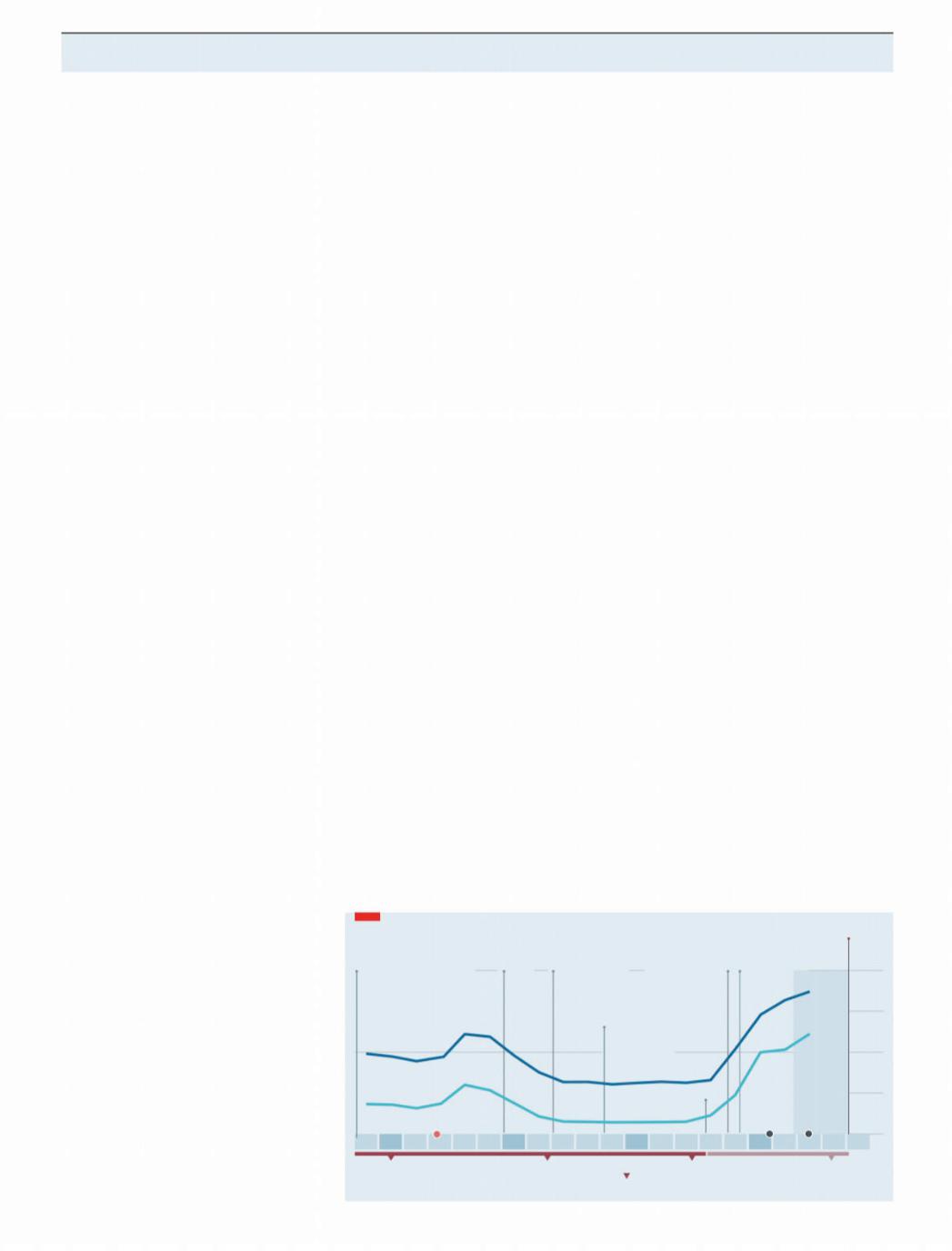
РЕЛИЗ ПОДГОТОВИЛА ГРУППА "What's News" VK.COM/WSNWS
vk.com/id446425943
18 |
Briefing Venezuela |
|
|
|
|
|
|
The Economist February 2nd 2019 |
||||
2 Guaidó gambit might lead to conflict be- |
Chávez and who served Mr Maduro as min- |
those who help “build democracy”. Volun- |
||||||||||
tween armed groups or simply fail, leaving |
isters. Troop commanders have been shuf- |
teers distributed pamphlets laying out the |
||||||||||
the regime more dominant than ever. In |
fled frequently to prevent them from build- |
terms at army bases (some soldiers burned |
||||||||||
that case, millions more Venezuelans |
ing close relations with their soldiers, |
them). To members of the regime too dis- |
||||||||||
would join the 3m who have already fled, |
according to |
Caracas Chronicles |
Politicalcredited to be part of any democratic gov- |
|||||||||
mostly to neighbouring countries such as |
Risk Report |
, a newsletter. |
|
|
ernment, including Mr Maduro, the oppo- |
|||||||
Colombia. American prestige, wagered on |
Even before the latest sanctions, the re- |
sition is o ering passage to a comfortable |
||||||||||
ousting Mr Maduro, would su er, too. |
gime was running out of money to keep the |
retirement, perhaps in Cuba. |
|
|||||||||
|
Mr Maduro has resisted growing oppo- |
generals happy. Production by |
|
, |
pdvsaHe is not ready to be pensioned o . He |
|||||||
sition since 2013, when poverty began to |
which has been mismanaged for years, was |
has called for support from China and Rus- |
||||||||||
rise (see chart). As Venezuelans turned |
expected to fall to less than1m barrels a day |
sia. On January 26th their |
ambassadorsun |
|||||||||
against him, his power came to depend on |
in 2019, its lowest level since the 1940s. If |
rebuked America for interfering. Both |
||||||||||
a |
patronage |
network of |
enchufados, or sold at world prices, that should bring in |
countries have big financial stakes in Vene- |
||||||||
“plugged-in people”, especially in the secu- |
about $20bn for the year,except that 45% of |
zuela. China, which has extended a total of |
||||||||||
rity forces. He has appointed over 2,000 of- |
the oil goes directly to China and Russia to |
$60bn in loans over the past 20 years, is its |
||||||||||
ficers to the rank of general or equivalent. |
repay debt, according to Siobhan Morden |
biggest creditor. And Russia has lent $17bn |
||||||||||
The army runs companies in as many as 20 |
of Nomura, an investment bank. Cash from |
to oil projects and to finance arms sales. |
||||||||||
industries, including an insurer, a rubber |
oil sales goes mainly to pay other claimants |
China, which takes a hard-headed view |
||||||||||
manufacturer and a television channel, ac- |
and to pay Venezuela’s import bill. Less |
of Venezuela, has promised little new |
||||||||||
cording to |
Crónica Uno |
, a newspaper. |
than $250m would be left to spend on pa- |
money. It is to Russia’s authoritarian |
||||||||
|
The armed forces collar scarce dollars at |
tronage. That is less than the wage bill for |
leader, Vladimir Putin, that Mr Maduro has |
|||||||||
an artificially cheap rate and sell them to |
Manchester City’s footballers. Venezuela |
turned. Mr Putin sees Venezuela as a stage |
||||||||||
dollar-starved companies at a much dearer |
would have to dip further into its dwin- |
for his confrontation with America. Sergei |
||||||||||
one. The national guard smuggles petrol, |
dling foreign-exchange reserves. |
|
|
Lavrov, Russia’s foreign minister, said his |
||||||||
weapons, food, gold and diamonds, ac- |
With the new sanctions, money will be |
government will do all it can to support the |
||||||||||
cording to Margarita López Maya of Univer- |
even tighter. They freeze pdvsa’s $7bn of |
Venezuelan president. Unconfirmed re- |
||||||||||
sidad Central de Venezuela, citing investi- |
assets in America, which include three oil |
ports say that 400 men from Wagner, a mil- |
||||||||||
gations by American authorities. After Mr |
refineries, and will reduce revenue from oil |
itary company owned by an associate of Mr |
||||||||||
Guaidó’s proclamation, all of the country’s |
exports by more than $11bn, says the Trump |
Putin, flew to Venezuela, perhaps to pro- |
||||||||||
top brass pledged support to Mr Maduro. |
administration. pdvsa might find other |
tect Mr Maduro from his own o cers. |
|
|||||||||
|
They have stomped on dissent. At the |
buyers, perhaps in Asia, but is likely to earn |
It is hard to see Russia committing |
|||||||||
protests in Catia the |
colectivoswere first on |
less because transport costs will be higher. |
troops or much treasure to keeping Mr Ma- |
|||||||||
the scene, followed by the dreaded |
Almostfaes ,asanpainful is the ban on the sale of |
duro in power. But Mr Putin would profit |
||||||||||
elite police force (“colectivos with a licence”, |
diluents to |
pdvsa, without which its thick |
from other outcomes, too. Violence would |
|||||||||
Mr Armas calls them). “We are not going to |
oil will not flow through pipes. |
|
|
demonstrate the risk of allowing a mob to |
||||||||
let anyone fuck with us,” said one |
colectivoThese measures will accelerate Venezu- |
subvert an established leader. An American |
||||||||||
leader in Catia after the fracas. Repression |
ela’s economic collapse. |
will shrinkgdp |
by |
military intervention could be cited as evi- |
||||||||
took place across the country on the next |
26% this year, bringing the total decline |
dence that America shares Mr Putin’s belief |
||||||||||
day. Some 700 people were detained, a re- |
since Mr Maduro took o ce to 60%, esti- |
in great powers’ spheres of influence. |
|
|||||||||
cord number for one day, according to Foro |
mates Francisco Rodríguez of Torino Capi- |
Without Chinese or Russian cash, Mr |
||||||||||
Penal, a human-rights group. Thirty-five |
tal, an investment bank. Bond prices sug- |
Maduro will have to rule on emergency ra- |
||||||||||
people were killed. |
|
gest that the markets put the odds of Mr |
tions. That can work for a while. As people |
|||||||||
|
But the oppressors are also unhappy. |
Maduro’s ousting at 50-90%. |
|
|
become poorer, the cost of patronage falls. |
|||||||
Despite the money to be made from cor- |
Mr Guaidó and Mr Trump are betting |
Voters who once expected a flat now accept |
||||||||||
ruption, the crisis a ects the armed forces |
that hardship will topple the regime before |
a box of food. But the forces working to top- |
||||||||||
as it does the rest of society, says Rocío San |
it starves the Venezuelan people. The oppo- |
ple Mr Maduro are getting stronger while |
||||||||||
Miguel, a Caracas-based military analyst. |
sition is striving to persuade the armed |
those holding him up are weakening. For |
||||||||||
The salary of a major in the national guard |
forces to switch allegiance. The national |
Venezuela’s sake and his own, he should |
||||||||||
is 36,000 bolívares a month, worth less |
assembly passed a law o ering amnesty for |
take early retirement. 7 |
|
|
||||||||
than $15. “That is not enough for two days’ |
|
|
|
|
|
|
|
|
|
|||
worth of food for a family of four,” says Ms |
Bolivarian beggars |
|
|
|
|
|
|
|
||||
San Miguel. |
|
|
|
|
|
|
Juan Guaidó proclaims |
|
||||
|
Growing disgruntlement in the security |
Venezuela, poverty rate, % |
|
|
|
|
himself interim president |
100 |
||||
forces increases the importance of the sev- |
“Bolivarian revolution” led |
Land |
ExxonMobil and |
Opposition leader |
Oil price drops |
|||||||
eral hundred Cuban counter-intelligence |
by President Hugo Chávez |
reform |
ConocoPhillips |
Leopoldo López |
below $100 |
|
|
|||||
agents (supplied in return for cheap oil) |
|
|
|
expropriated |
arrested |
a barrel |
|
75 |
||||
who also prop up Mr Maduro’s rule. They |
|
|
|
|
|
|
|
|
||||
|
|
|
|
Referendum to abolish |
|
|
|
|||||
tap Venezuelan phones to monitor dissent |
Poverty |
|
|
|
|
|
|
|||||
|
|
|
term limits for elected |
|
|
50 |
||||||
as well as looking after the president’s per- |
|
|
|
|
|
|||||||
|
|
|
|
officials passes |
|
Hyper- |
||||||
sonal security, says a western intelligence |
|
|
|
|
|
|
||||||
|
|
|
|
|
|
|
inflation |
|
||||
source. He adds that Mr Maduro gets an in- |
Extreme poverty |
|
|
|
|
|
|
|||||
|
|
|
|
National |
|
25 |
||||||
telligence briefing every morning from two |
|
|
|
|
|
Chávez dies |
Constituent |
|||||
|
|
|
|
|
assembly |
|
||||||
Cuban o cers. The most intense snooping |
Coup attempt |
|
|
|
|
election won |
assembly |
|
||||
is on the police and armed forces—anyone |
|
|
|
|
by opposition |
election |
0 |
|||||
1999 2000 |
|
05 |
|
|
10 |
15 |
19 |
|||||
with a gun, says Ms San Miguel. |
|
|
|
|
||||||||
|
|
|
|
|
|
|
|
|
||||
|
The regime has disrupted several coup |
|
Hugo Chávez |
|
PRESIDENT |
Re-elected |
Nicolás Maduro |
|
||||
attempts. Around 100 senior o cers are in |
Sources: ENCOVI; The Economist |
|
|
|
|
|||||||
|
|
|
|
|
|
|
|
|
|
|
||
prison, including several who were close to
http://new.guap.ru/i04/contacts

РЕЛИЗ ПОДГОТОВИЛА ГРУППА "What's News" VK.COM/WSNWS
vk.com/id446425943
http://new.guap.ru/i04/contacts

РЕЛИЗ ПОДГОТОВИЛА ГРУППА "What's News" VK.COM/WSNWS
|
|
|
The Economist February 2nd 2019 |
|
|
|
pends on public expectations. To succeed |
|
|
|
quickly, the state must first convince the |
|
|
|
public that it will do so. To add credibility, |
|
|
|
the plan’s sponsors favour an independent |
|
|
|
central bank and an “anchor” to discipline |
|
|
|
its policies. |
|
|
|
The choice of anchor is important. The |
|
|
|
stricter the regime, the faster it can cure |
How Venezuela’s economy can recover from the Maduro regime |
|
|
hyperinflation. A currency board (which |
|
|
would allow the central bank to create bolí- |
|
|
|
|
|
rino Capital, an investment bank. The |
vares only when it has added the equiva- |
||
queue includes China (over $13bn) and |
lent amount of dollars to its reserves) o ers |
||
Russia ($3bn), which have, in e ect, pre- |
the best chance of immediate stability, but |
||
paid for barrels of oil with past loans. Also |
might prove too rigid in the long run. An |
||
jockeying for position are the holders of |
exchange-rate peg would change inflation |
||
sovereign bonds ($24bn) and |
paperpdvsaexpectations more slowly, but would be |
||
($28bn). Other claimants include expropri- |
more suitable for the economy over time. |
||
ated firms and unpaid suppliers. |
|
Mr Hausmann favours a peg over the strict- |
|
A tempting strategy for any individual |
er alternatives. But, he says, given the dan- |
||
creditor is to let other lenders take a hair- |
gers of currency speculation, he is reluc- |
||
cut, wait for Venezuela to recover, then in- |
tant to discuss the details in public. |
||
sist on full repayment. But if every creditor |
After its economy has stabilised, Vene- |
||
pursues that course, Venezuela will never |
zuela will have to revive its oil industry. |
||
recover, and without debt restructuring, |
The reformers have drafted a hydrocarbons |
||
the imf may not be willing to lend. Lee |
law that will retain current royalty and tax |
||
Buchheit, a lawyer who advised Iraq, |
rates, and allow foreign firms to own their |
||
among other countries, and Mitu Gulati of |
ventures outright. Experienced Venezue- |
||
Duke University argue that Venezuela may |
lans are working in the global industry, in- |
||
need America’s president to issue an exec- |
cluding at Norway’s Equinor and bp . The |
||
utive order giving it the same sort of pro- |
country’s exports would benefit from re- |
||
tection from creditors as Iraq enjoyed in its |
importing some of this expertise. |
||
restructuring after 2003. |
|
|
Would such a plan win the outside sup- |
Debt relief would limit the flow of dol- |
port it needs? The interim government has |
||
lars out of the country. On top of that, the |
powerful friends in America, Brazil and |
||
imf and others will have to pour more dol- |
elsewhere. Nothing in it will shock the imf . |
||
lars into it. Mr Hausmann envisages a loan |
And although China supports Mr Maduro |
||
in excess of $60bn over three years. Rather |
in public, its oil investments give it an in- |
||
than printing bolívares to cover its fiscal |
centive to support the industry’s revival. |
||
deficit, the government would buy local |
But Mr Hausmann needs no reminder |
||
currency with the |
imf ’s dollars. This,aboutin the uncertainties. He began work on |
||
turn, would put dollars in the hands of en- |
his morning-after plan after the opposition |
||
trepreneurs, who could spend them on the |
won a two-thirds majority in the national |
||
imports needed to revive their businesses. |
legislature, when it seemed that change |
||
This mix of monetary restraint and out- |
was “imminent”. Sadly Mr Maduro has sur- |
||
put recovery should stem inflation. But the |
vived in o ce over 1,150 mornings-after |
||
speed at which prices stabilise also de- |
since then. 7 |
||
Someday, wallets will be smaller

vk.com/id446425943
United States
РЕЛИЗ ПОДГОТОВИЛА ГРУППА "What's News" VK.COM/WSNWS
The Economist February 2nd 2019 21
Facebook turns 15
Remembrance of posts past
S A N F R A N C I S C O
How the social-networking giant has changed America
On february 4th 2004 a young website with a baby-blue banner was born.
Founded in a dormitory at Harvard, TheFacebook.com tapped into people’s instinctive desire to see and be seen. Few guessed how successful it would become. In 2008 Rupert Murdoch, the media mogul who had bought the social-networking rival MySpace, called Facebook the “flavour of the month”; the following year this newspaper warned in an article about Facebook that it is “awfully easy for one ‘next big thing’ to be overtaken by the next.”
Instead Facebook has stayed on top by spreading wildly across America and the world and buying competitors, including the photo-sharing app Instagram and the messaging firm WhatsApp. Around twothirds of American adults use its original social network. At its peak, the average user spent nearly an hour a day on Facebook’s platforms. Few companies have exerted such a strong influence on society, changing people’s communication habits, reuniting lost contacts, shaping their perception of world events and redefining the meaning of the word “friend”. “Every once
in a while, changes in technology come along which are so profound, that there is a before and an after. Facebook is one of those,” says Roger McNamee, author of a forthcoming book called “Zucked”.
Birthdays are an occasion for reflection. In the15 years since its founding, Facebook has altered America in three notable ways. First, it has shaped what it means and feels like to be young. The company has done this twice: once with its flagship social network, which became the pastime and addiction of college students and high schoolers in the mid-2000s, and again with Instagram, which is the digital drug of choice for their successors today, along
Also in this section
22 Open government
24 Missile defence
24How to pick a mayor
25The Mueller investigation
28 Lexington: Populists on parade
with the rival app Snapchat.
The company has fostered a virtual “me-conomy”, where people (over)share their feelings, photos and comments. Some blame Facebook for fanning teenage narcissism and for short attention spans. Others say it has caused anxiety, depression and insecurity. Researchers have shown that people who spend more time on Facebook are more likely to think other people have it better than they do and that life is unfair.
The lasting e ects of social media, and Facebook in particular, on young people’s psyches will not be fully understood for years, but it is clear that Facebook has changed human interaction. At the safe remove of a screen, bullying on social media has become painfully common; some 59% of American teenagers say they have been bullied or harassed online. Facebook has cultivated far-flung, online friendships, but it has changed the nature of o ine ones, too. According to research by Common Sense Media, a non-profit, in 2012 around half of 13to 17-year-olds said their favourite way to communicate with friends was in person. Today only 32% feel that way, with 35% preferring texting.
Second, Facebook has changed attitudes to privacy. The social network thrives through trust. After Facebook was launched, for the first time people felt comfortable sharing intimate details online, including their phone number, relationship status, likes and dislikes, location and more, because they felt they could con-1
http://new.guap.ru/i04/contacts
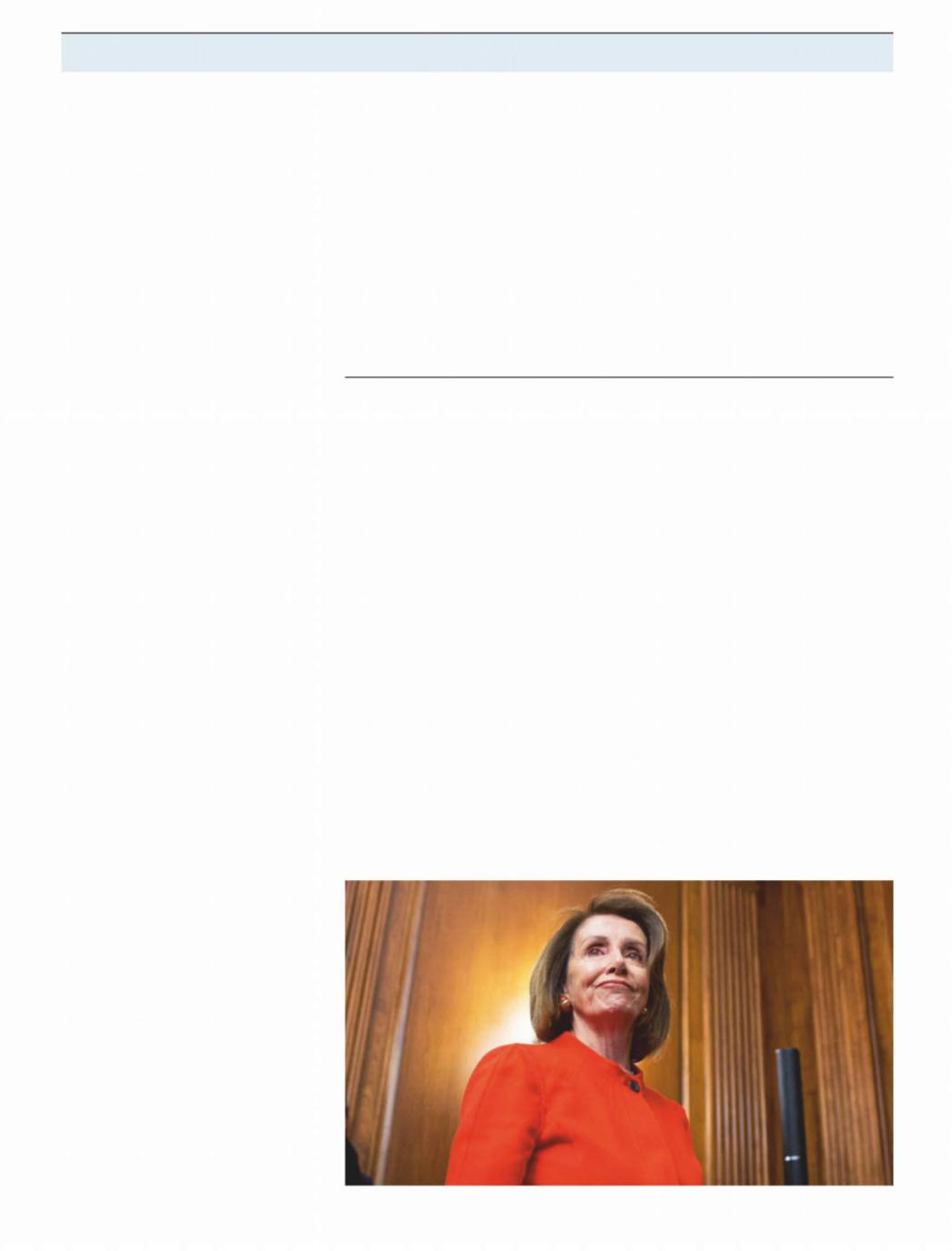
|
РЕЛИЗ ПОДГОТОВИЛА ГРУППА "What's News" VK.COM/WSNWS |
vk.com/id446425943 |
|
22 United States |
The Economist February 2nd 2019 |
2 trol who had access to them. Users were vaguely aware that Facebook was starting to make a fortune mining this data and selling advertisers access to specific types of users, but they mostly did not object.
Opinions about privacy may be shifting again at Facebook’s hands, this time in reverse. Public scandals about outside firms getting access to Facebook users’ data, including last year’s Cambridge Analytica fi- asco, have shone a light on the firms’ massive data collection. Around half of American adult users are not comfortable with Facebook compiling such detailed information about them, according to a survey by Pew Research Centre. Concerns about privacy and lax oversight probably played into the beating that Facebook’s reputation took last year. According to the Reputation Institute, a consultancy, Facebook’s standing among Americans fell sharply in 2018, and its score ranks significantly below other technology companies, including Google. A fresh scandal over Facebook spying on users’ online activities in the name of research may further dent the company’s image.
Third, Facebook has left a lasting mark on politics. The social-networking firm has become an invaluable tool for politicians seeking o ce, both through paid advertisements to reach voters and free content that spreads on the social network. “You’d be hard-pressed to find a politician who’s been elected in the last ten years who didn’t use Facebook,” says David Kirkpatrick, author of “The Facebook E ect”, a history of the social network. Two presidents, Barack Obama and Donald Trump, won election in no small part thanks to Facebook. In Mr Obama’s case, Facebook helped him fundraise and drum up support. In 2016 Facebook’s role was more controversial: false news spread wildly and Russians meddled with messages on social media, which may have helped Mr Trump gain an edge.
The rise of fake news and spread of filter bubbles, where people see their pre-con- ceptions reinforced online, have probably disillusioned many voters. Facebook has had a hand in spreading misinformation, terrorism and ethnic violence around the world. But it has also spurred civil engagement. Black Lives Matter, a campaign against police violence, began with a Facebook post and quickly spread through the social network. Much of the grassroots opposition to Mr Trump, from the women’s marches to groups like Indivisible, use the platform to organise themselves. Many other campaigns and movements have attracted members through Facebook and Twitter. “They give ordinary people a voice. That’s a net positive for society,” says Mr Kirkpatrick.
Can the social-media giant stay as influential in the next 15 years as it has already been? At the risk of being wrong about Fa-
cebook again, that seems unlikely. This is partly because its impact has already been so extensive. But it is also because of growing unease with the platform. As with all new technologies, from the printed book to the telegraph, social media can be used both for good and bad. Critics of Facebook are increasingly vocal about the harms, pointing out that Facebook is addictive, harmful for democracy and too powerful in making decisions about what content people see. “Big tobacco” is what the bosses of several top tech companies have started calling the social network, and politicians are speaking openly about regulation.
Though it has just posted record quar-
Open government
terly profits, it seems unlikely that Americans are going to increase the time they spend on Facebook proper. Time on its core social network is declining, probably because users are questioning whether it is as enjoyable as it used to be. Adults in America spent 11.5% of their online time on Facebook’s main platform, a fifth less than two years earlier, according to Brian Wieser of Pivotal Research. Instagram use is rising, but not enough to make up for the core social network’s decline. As more people question whether social media are good for them, Facebook could loosen its grip on America. The relationship with Facebook continues, but the love a air is over. 7
In search of lost time (and money)
W A S H I N GT O N , D C
The budget mess took a toll on the economy, and it’s not over yet
errible traffic, packed Metro cars, |
haps because, 11 days before it began, he |
||||
Tfull restaurants: Washington returned |
boasted that he would be “proud to shut |
||||
to work this week after the longest-ever |
down the government” if Congress failed |
||||
government shutdown ended, at least for |
to give him exactly what he wanted. |
|
|||
now. Despite vowing not to reopen govern- |
When it was over, the non-partisan |
||||
ment without the $5.7bn he demanded for |
Congressional Budget O ce ( |
|
cbo ) releas |
||
his border wall, Donald Trump did just |
a report on the shutdown’s economic ef- |
||||
that, signing a spending bill that funds the |
fects. It estimated that American |
was gdp |
|||
government through February 15th and |
$3bn lower in the last quarter of 2018 and |
||||
creates a bipartisan, bicameral commis- |
will be $8bn lower in the first quarter of |
||||
sion to develop a border-security proposal. |
2019 than it would have been without the |
||||
Ann Coulter, a far-right commentator |
shutdown. That pain was not evenly distri- |
||||
and supporter of Mr Trump, called him “the |
buted; federal workers and businesses that |
||||
biggest wimp ever to serve as President of |
rely on them felt the e ects more strongly |
||||
the United States.” A headline on the Daily |
than the economy as a whole. Though |
||||
Caller, a conservative website, blared |
much of that activity should eventually be |
||||
“ trump caves |
”. Polls showed that morecovered, the |
forecastcbo |
that around |
||
Americans blamed Mr Trump for the shut- |
$3bn—or 0.02% of projected annual |
gd |
|||
down than blamed House Democrats—per- |
has been permanently lost. |
|
1 |
||
The art of the deal
http://new.guap.ru/i04/contacts
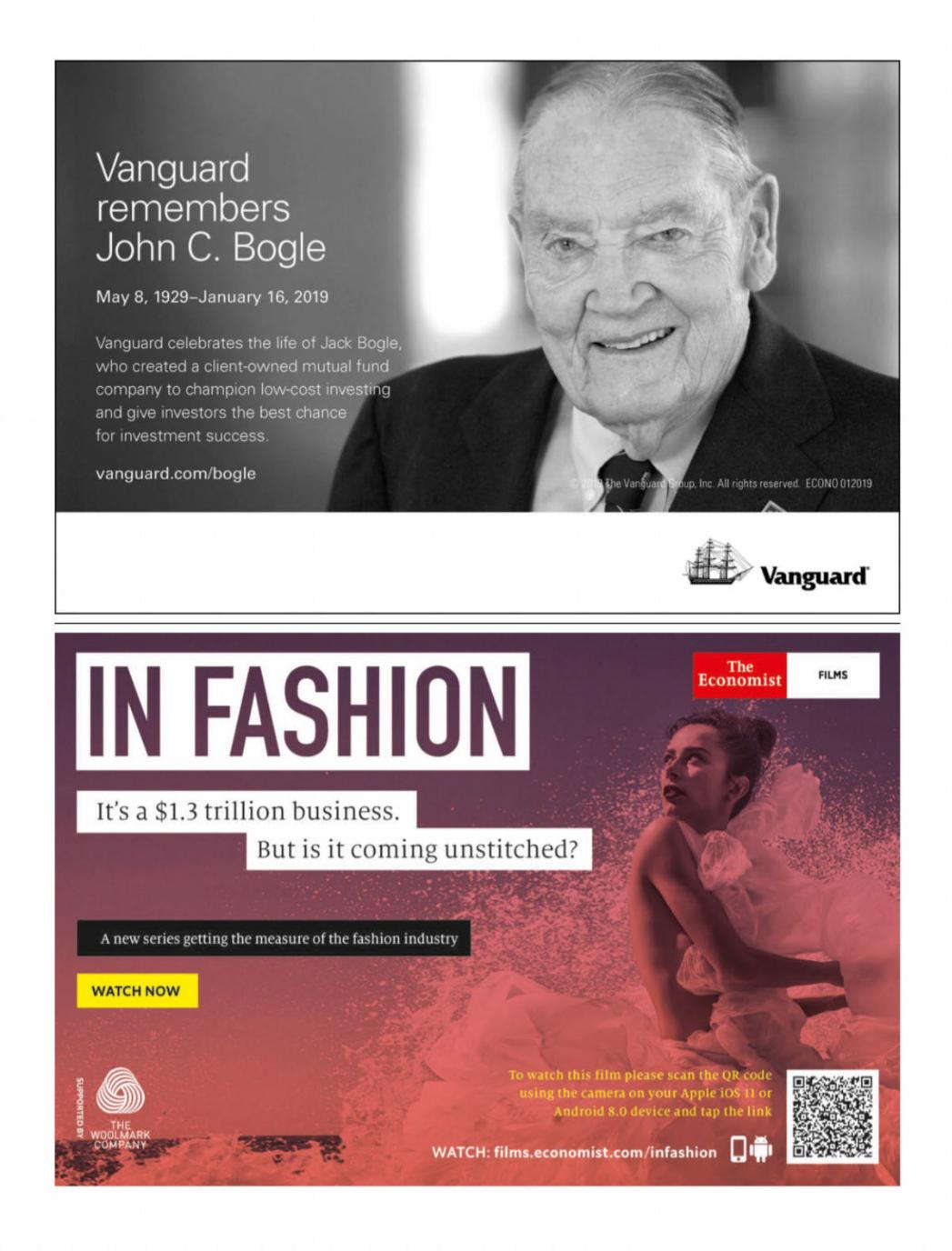
РЕЛИЗ ПОДГОТОВИЛА ГРУППА "What's News" VK.COM/WSNWS
vk.com/id446425943
http://new.guap.ru/i04/contacts
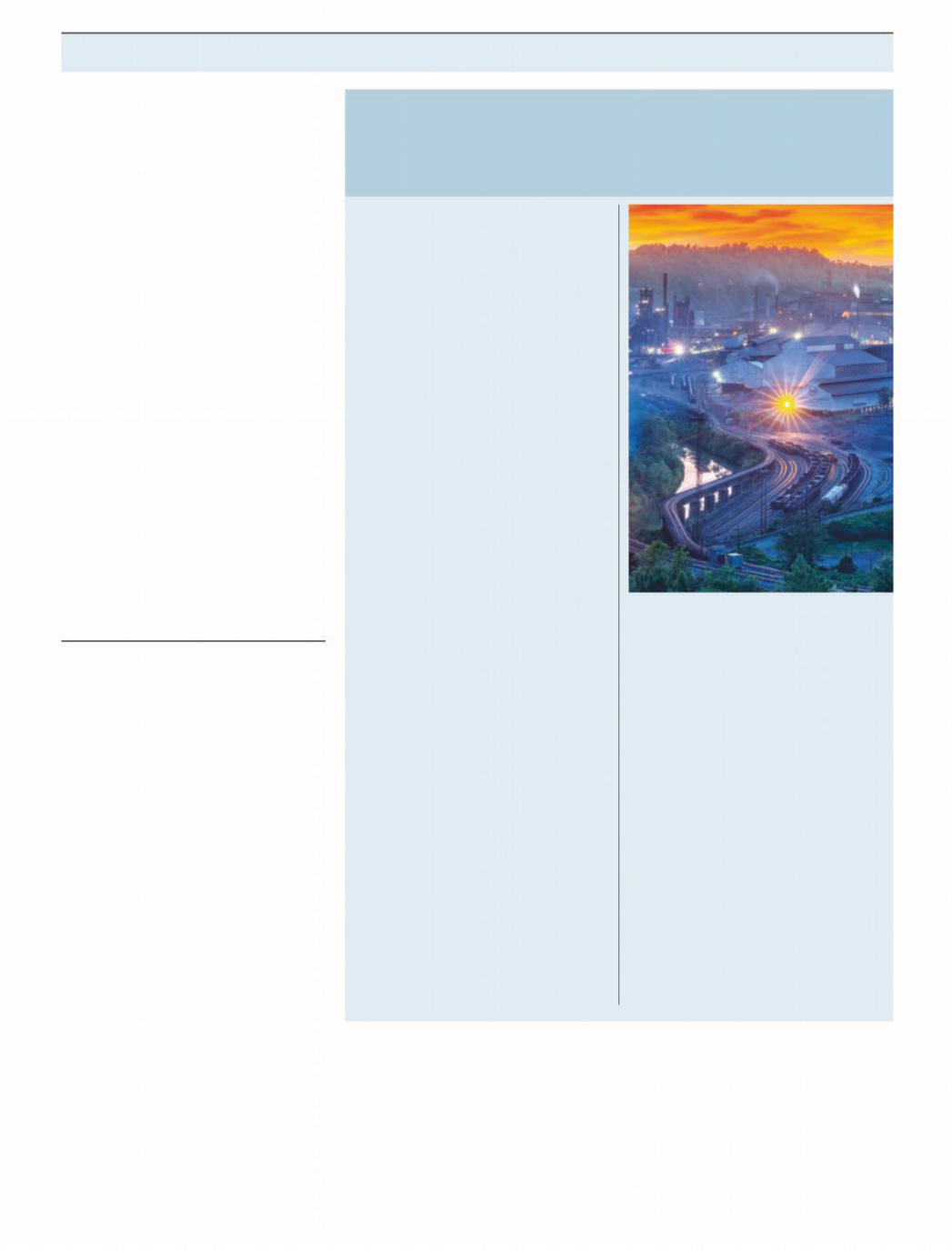
|
РЕЛИЗ ПОДГОТОВИЛА ГРУППА "What's News" VK.COM/WSNWS |
|||
vk.com/id446425943 |
|
|
|
|
24 United States |
|
|
|
The Economist February 2nd 2019 |
2 Businesses that could not receive per- |
|
Choosing a mayor |
||
mits or loans because the relevant agency |
|
|||
|
Pennsylvania Idol |
|||
vestment. Unpaid workers who had to take |
|
|||
was closed probably delayed hiring and in- |
|
|
|
|
out loans will see their future spending |
|
B R A D D O C K , P E N N S Y LV A N I A |
||
constrained by debt servicing. A lack of |
|
|||
|
A rustbelt town adapts a TV format for politics |
|||
published economic data increased eco- |
|
|||
|
|
|
||
nomic uncertainty, while funding gaps |
|
he casting call went out last month. |
|
|
probably began “to reduce the credibility of |
|
TBraddock, a small steel town ten |
|
|
the federal government,” making it harder |
|
miles from Pittsburgh, needed a new |
|
|
to attract talent and more expensive to |
|
mayor. John Fetterman, who had held the |
|
|
make contracts with private business. And |
|
post for13 years, had stepped down to |
|
|
though the 800,000 furloughed or unpaid |
|
become Pennsylvania’s lieutenant- |
|
|
federal workers will receive back wages, |
|
governor. Interested candidates had five |
|
|
private-sector workers that depend on gov- |
|
minutes each to wow the borough coun- |
|
|
ernment—suppliers, |
contractors, restau- |
|
cil in a special public session and con- |
|
rants near government o ces and the |
|
vince them that they should be the next |
|
|
like—may not. |
|
|
mayor. Only five applicants, who includ- |
|
Nor is America out of the woods. Mr |
|
ed a former chef and a wig-seller, audi- |
|
|
Trump threatened to force another shut- |
|
tioned on January 29th. Chardae Jones, a |
|
|
down if the commission fails to come up |
|
29-year-old business analyst sporting |
|
|
with a recommendation that he likes. Bills |
|
pink dreads, was the unanimous winner. |
|
|
to prevent the e ects of a shutdown |
|
The town does not usually hold open |
|
|
through “automatic continuing resolu- |
|
auditions for vacant political posts. Its |
|
|
tions”—meaning that funding will contin- |
|
council has the power to appoint an |
|
|
ue at current levels if lawmakers fail to |
|
interim mayor, but an attempt to do this |
|
|
agree on spending levels—have been float- |
|
last month derailed when questions |
|
|
ed in both houses of Congress, by members |
|
emerged about the eligibility of the |
|
|
of both parties. Mr Trump also threatened |
|
chosen candidates and the vetting pro- |
|
|
to declare a national emergency, a prospect |
|
cess. So the council decided to open the |
|
|
some congressional |
Republicans find |
|
contest to any resident of the borough |
Braddock’s got talent |
more appealing than another shutdown. 7 |
|
who is registered to vote and has not |
||
|
|
|
been convicted of a felony. |
|
Missile defence |
|
|
Braddock has struggled for gener- |
talks, appearing on “The Colbert Report”, |
|
|
ations. The hardscrabble town where |
a comedy news programme, and hustling |
|
Laser tag |
|
|
Andrew Carnegie opened his first steel |
to attract businesses and investors. |
|
|
mill and first Carnegie Library is a shad- |
When he became mayor in 2006, the |
|
|
|
|
ow of its former self. At its height in the |
town didn’t even have an atm. He went |
|
|
|
1920s the population exceeded 20,000. |
on national television to beg Subway, a |
|
|
|
Today it is less than1,800. Braddock |
restaurant chain, to open. New restau- |
|
|
|
Avenue, the main commercial artery, |
rants eventually came (though still no |
The Pentagon would like satellites with |
|
once had bustling shops, hotels and |
Subway), but Braddock’s renaissance is |
|
|
restaurants. Today it is a parade of empty |
still some way o . Carnegie’s mill, mirac- |
||
laser beams attached to their heads |
|
|||
|
lots and closed storefronts. |
ulously, is still in operation. Its chimneys |
||
|
|
|
||
aser weapons orbiting in space and |
|
Braddock’s mayor has few powers. |
dominate the skyline, but not the city’s |
|
Lwarplanes that shoot down rockets |
|
The borough has been under state fi- |
economy. It employs only10% of the |
|
sound like the doodlings of a teenage boy. |
|
nancial oversight since1988. The coun- |
5,000 workers it once did, and few of |
|
Both appear in the Trump administration’s |
|
cil, not the mayor, operates the budget |
them live in Braddock. |
|
missile-defence review, published on Jan- |
|
and hires borough employees. The |
The victor of Braddock’s talent con- |
|
uary 17th. It lays out a celestial vision of |
|
mayor has public-safety responsibilities, |
test, Ms Jones, intends to continue much |
|
homeland defence that looks cosmically |
|
but the police department is only part- |
of Mr Fetterman’s promotion, but warns |
|
expensive and technologically dubious. |
|
time and its budget is tight. |
that redevelopment means nothing if the |
|
America does not skimp on shooting |
|
The outgoing mayor, Mr Fetterman, a |
community is not safe. She will have to |
|
missiles out of the sky. Its 2018 budget allo- |
|
graduate of Harvard Kennedy School of |
audition again to keep her new job. She |
|
cated $19.3bn to the task—roughly equiva- |
|
government, did much to shine a spot- |
faces a primary, and then a more conven- |
|
lent to the entire defence budget of Canada |
|
light on Braddock, including giving ted |
tional election in November. |
|
or Turkey. Since 2001 it has splashed out |
|
|
|
|
over $130bn. Some of that is spent on ship- |
|
are spotted by infrared satellites and a ra- |
ing. But if merely a dozen missiles were |
|
based Aegis and land-based Patriot and Ter- |
|
|||
minal High Altitude Area Defence (thaad |
) dar network stretching from Cape Cod to |
volleyed at America, not only would it soak |
||
systems, which are aimed at short or medi- |
|
Japan, and then—in theory—struck by one |
up more than $3bn of interceptors but a |
|
um-range missiles. Intercontinental bal- |
|
of 44 interceptors in Alaska and California. |
single warhead would still have a 30% |
|
listic missiles (icbm s) fly higher and faster. |
Though gmd was declared ready in |
chance of getting acquainted with an |
||
For those, America has built a sprawling |
|
2004, it was not tested against an icbm - |
American city. The average revolver o ers |
|
“ground-based midcourse defence” ( |
|
type targetgmd until) 2017 and then under gener- |
better odds for a game of Russian roulette. |
|
directed at North Korea and Iran. At $67bn |
|
ous conditions. Using four interceptors |
The Trump administration has been |
|
and rising, it is the Pentagon’s fourth- |
|
against one warhead is assumed to give a |
adding interceptors, beefing up radars and |
|
most-expensive weapon system. Launches |
|
97% chance of a hit. That sounds promis- |
conducting new tests. But the latest mis-1 |
|
http://new.guap.ru/i04/contacts
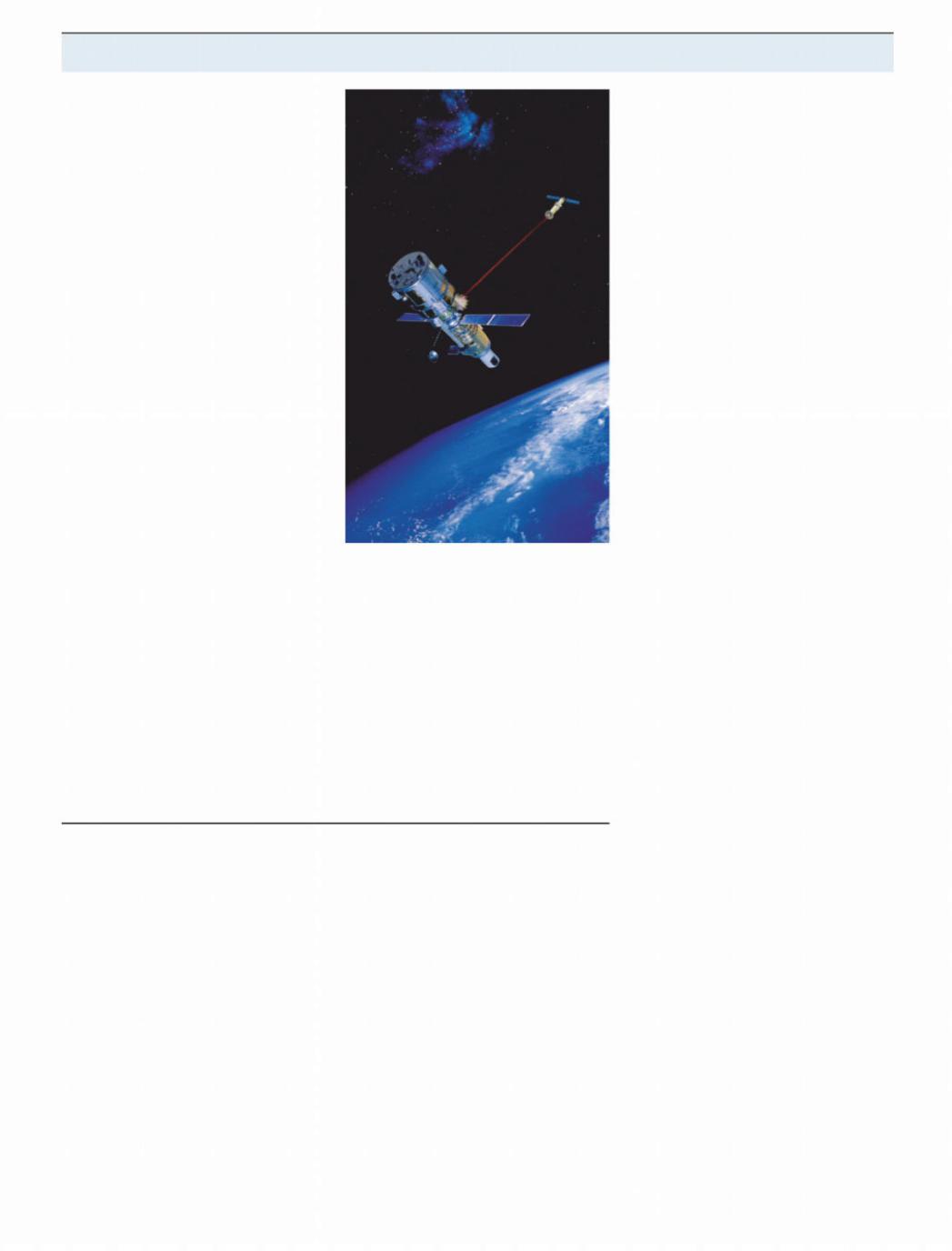
|
РЕЛИЗ ПОДГОТОВИЛА ГРУППА "What's News" VK.COM/WSNWS |
vk.com/id446425943 |
|
The Economist February 2nd 2019 |
United States 25 |
2 sile-defence review, the first in nine years, makes some more radical proposals.
One is to shoot down missiles in their “boost phase” as they take o , when they are slower and harder to disguise, rather than above the atmosphere as aims togmd do. Since the boost phase lasts for only a few minutes, that requires spotting launches and pouncing quickly. The suggestion is that fighter jets like the f -35 or even drones could be “surged” towards enemy launchpads in a crisis, armed with new interceptor missiles or compact lasers. That carries obvious risks.
So the second strategy is to do more sensing and shooting from space. This fits with Mr Trump’s galactic proclivities. In December he ordered the creation of a new Space Command to run military operations in space. A new Space Force and Space Development Agency are in the works.
The Pentagon is especially keen to put larger numbers of smaller and cheaper satellites into lower orbit for “birth to death tracking”: from detecting tell-tale plumes at launch to establishing whether an intercept is successful. O cials are also beginning a six-month study into the feasibility of putting the interceptors themselves, whether rockets or lasers, into space.
Few of these ideas are new. An airborne laser was successfully tested against missiles in 2010. The Obama administration poured hundreds of millions of dollars into space sensors. The vision of orbiting lasers harks back to the Reagan administration’s Strategic Defence Initiative, widely dubbed “Star Wars”.
In 2012 the National Research Council published a detailed and scathing judgment of such methods. Boost-phase defence, it said, “is not practical or cost e ective under real-world conditions for the
The Mueller investigation
Rogue One
foreseeable future”. It pointed out that rocket motors burn out so quickly that interceptors would have to get unfeasibly close to the launch-pad.
Space-based interceptors might deal with that problem, but would require a preposterously large constellation of satellites costing hundreds of billions of dollars. The Pentagon insists that new, commercially available technology will bring down costs. Its task is to persuade Congress that the budget, at least, is not headed to infinity and beyond. 7
Get me Roger Stone
F O R T L A U D E R DA L E A N D W A S H I N GT O N , D C
The self-professed dirty-trickster is either the missing link in the investigation, or an attention-seeking mythmaker. Or maybe both
he first time Roger Stone talked to Do- |
running. But if I did run, I’d win.” |
Tnald Trump about running for presi- |
Mr Stone’s role in Mr Trump’s eventual |
dent was in 1988. “We’re sitting in the of- |
victory has been a source of speculation |
fice. He’s looking at the newspaper, which |
ever since November 2016. On January 25th |
he did more then than now. And he says, Je- |
he was arrested at his home in Fort Lauder- |
sus Christ: George Bush and Mike Dukakis? |
dale and indicted by Robert Mueller, the |
How fuckin’ pathetic is that? How fuckin’ |
special counsel, on seven counts, includ- |
pathetic. He says, You ever shake hands |
ing obstructing an o cial proceeding, wit- |
with George Bush? I said No, what’s it like. |
ness-tampering and making false state- |
He said, Let me show you (dead-fish hand- |
ments about his communication with |
shake). He said, And this Dukakis, what is |
WikiLeaks and the Trump campaign. At his |
he? 5’5"? I said, Maybe you should run. He |
arraignment Mr Stone—in Democratic |
says, I’ll tell you this: I’m not interested in |
blue suit, tie and uncharacteristically flab- |
by pocket-square—pleaded not guilty to all seven counts. He left the courthouse through throngs of supporters and detrac-
tors waving signs that read: “ |
dirty tra |
|
tor”, lock him up |
” and “ roger stone did |
|
nothing wrong |
”. Across the street was a |
|
huge inflatable rat with a blond hairpiece. |
|
|
Mueller-watchers had awaited Mr |
||
Stone’s indictment eagerly. The investiga- |
||
tion was set up to look at “links and/or co- |
||
ordination” between the Russian govern- |
||
ment and the Trump campaign. Many links |
||
have already been revealed in indictments, |
||
but co-ordination has proved more elusive. |
||
Mr Stone, who both worked on the cam- |
||
paign for a while and seemed to have ad- |
||
vance knowledge of the emails stolen from |
|
the Democratic National Committee by |
|
Russian military intelligence (the |
g |
looked as if he might be the missing link. |
|
cnn was so sure Mr Stone’s indictment |
|
was coming that the network had a camera |
|
team outside Mr Stone’s house when the |
|
fbi turned up to arrest him. On a similar |
|
hunch, The Economist had lunch with him |
|
in December in Fort Lauderdale. Asked |
|
then if he was worried about the special |
|
counsel’s investigation into links between |
|
Russia and Mr Trump’s campaign, he |
|
sco ed: “Worry? I don’t worry. I make other |
|
people worry.” |
|
Mr Stone’s reputation as the kind of po- |
|
litical operative imagined by screenwriters |
|
owes much to his own mythmaking. For a |
|
race he worked on early in his career, in his |
|
home state of Connecticut, he and other |
|
volunteers paced the platforms at a com- |
|
muter railway station, passing out flyers |
|
with hot co ee in the mornings and freshly |
|
mixed martinis when the passengers re- |
|
turned in the evenings. His break came |
|
when working for Richard Nixon, a politi- |
|
cian Mr Stone admires so much that he has |
|
the 37th president’s face tattooed between |
|
his shoulder blades. (“Man with Richard |
|
Nixon tattoo turns out to be a criminal,” |
|
was the headline on Popdust, a gossip web- |
|
site, after the indictment.) In his book |
|
about Nixon he writes, “I was drawn to |
|
Richard Nixon not because of his philoso- |
|
phy; he had none. It was his resilience and |
|
his indestructibility that attracted me.” Mr |
|
Stone says that Nixon was “exceptionally |
|
kind”, that he called him on his birthday, |
|
remembered his wife’s and dogs’ names |
|
and sent letters when his parents died. |
|
After tasting success of a sort with Nix- |
|
on, Mr Stone worked on Ronald Reagan’s |
|
ill-starred 1976 presidential campaign. The |
|
next year he was elected president of Young |
|
Republicans in a campaign managed by |
|
Paul Manafort, convicted by Mr Mueller’s |
|
team for felonies too numerous to list in a |
|
paper that prizes concision. When Reagan |
|
won at the second attempt, Mr Stone set up |
|
a lobbying firm, Black, Manafort and Stone, |
|
that became infamous for its work for Fer- |
|
dinand Marcos in the Philippines, Mobutu1 |
|
http://new.guap.ru/i04/contacts
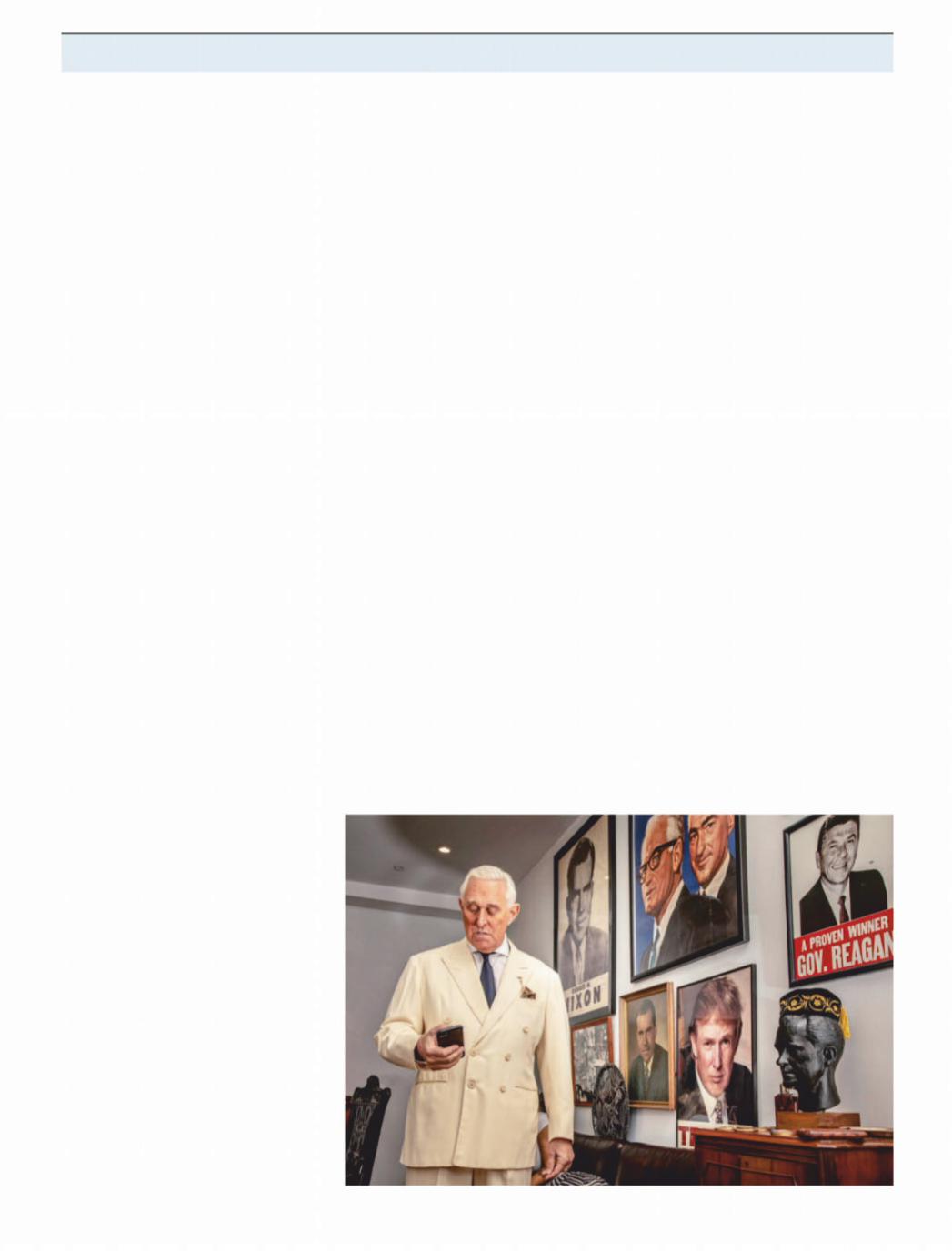
|
РЕЛИЗ ПОДГОТОВИЛА ГРУППА "What's News" VK.COM/WSNWS |
vk.com/id446425943 |
|
26 United States |
The Economist February 2nd 2019 |
2 Sese Seko in Zaire and Jonas Savimbi in An- |
the exact release date of the WikiLeaks ma- |
|||
gola, among others. The two men parted |
terial either stolen—or I should say, alleg- |
|||
ways after selling the company in the |
edly stolen and allegedly hacked.” The |
|||
1990s. They were reunited on the Trump |
word “exact” in that sentence is doing a |
|||
campaign, which Mr Manafort briefly ran |
great deal of work. Otherwise, says Mr |
|||
while Mr Stone flitted about, laying claim |
Stone, “I am not guilty of any other crime in |
|||
to an influence over the candidate and tac- |
connection with the 2016 election,” and be- |
|||
tics that was never spelled out. |
|
sides, “I’m not really sure receiving materi- |
||
The indictment fills in some gaps. It al- |
al from WikiLeaks would have been a crime |
|||
leges that in June and July of 2016, after his |
had I done so.” Not everyone would be so |
|||
o cial role with the campaign had ended, |
sanguine: campaign-finance law bars for- |
|||
Mr Stone “informed senior Trump cam- |
eign nationals from contributing—and |
|||
paign o cials that he had information in- |
campaigns from soliciting from them— |
|||
dicating |
[WikiLeaks] |
had |
documents |
money or any “thing of value” to an Ameri- |
whose release would be damaging to the |
can political campaign. |
|||
Clinton campaign.” WikiLeaks released its |
|
|||
first batch of emails on July 22nd. Four days |
Casa Bianca |
|||
later Mr Trump had nearly erased Hillary |
Mr Stone says that his subsequent testimo- |
|||
Clinton’s lead. After the release, says the in- |
ny before the House Intelligence Commit- |
|||
dictment, “a senior Trump Campaign o - |
tee, another possible source of legal trou- |
|||
cial” was directed “to contact |
aboutstoneble for him, was “completely accurate and |
|||
any additional releases and what other da- |
truthful”, and that “any discrepancy in my |
|||
maging information [WikiLeaks] had re- |
testimony would be immaterial.” The in- |
|||
garding the Clinton campaign. stone |
dictment alleges otherwise. The commit- |
|||
thereafter told the Trump campaign about |
tee asked Mr Stone whether he had any doc- |
|||
potential future releases of damaging ma- |
uments concerning “discussions you have |
|||
terial by [WikiLeaks].” |
|
|
had with third parties about” Mr Assange. |
|
Mr Mueller names neither the senior |
Mr Stone replied that he did not. The in- |
|||
campaign o cial nor the person who “di- |
dictment alleges that in fact he had multi- |
|||
rected” him or her to contact Mr Stone. Ac- |
ple emails and texts about Mr Assange, in- |
|||
cording to emails published by the New |
cluding one to a Trump supporter from |
|||
York Times |
, Mr Stone and Stephen Bannon,October 3rd 2016 that read, “Spoke to my |
|||
the campaign’s chief executive, exchanged |
friend in London last night [presumably |
|||
emails about WikiLeaks in early October. |
Mr Assange, who lives at the Ecuadorean |
|||
Over lunch Mr Stone is acerbic about Mr |
embassy there]. The payload is still com- |
|||
Bannon. “I have trouble dealing with peo- |
ing.” Four days later WikiLeaks released |
|||
ple who are slovenly,” says Mr Stone, a re- |
thousands of emails stolen from John Po- |
|||
nowned clothes horse (he dressed down |
desta, Mrs Clinton’s campaign chairman. |
|||
for lunch, wearing a white Oxford shirt and |
Mr Trump’s spokesman said the indict- |
|||
flat-fronted trousers, but did drop the |
ment has “nothing to do with the presi- |
|||
name of his favourite Japanese tailor). “If |
dent”, and called Mr Stone “somebody who |
|||
you want to know what Steve Bannon had |
has been a consultant for dozens of Repub- |
|||
for lunch, just look at the front of his shirt.” |
lican presidents and candidates”. That is |
|||
The indictment further alleges that Mr |
|
|||
Stone made several other false statements |
|
|||
regarding the nature of his communica- |
|
|||
tion with intermediaries in direct contact |
|
|||
with Julian Assange, the head of Wiki- |
|
|||
Leaks, and with Mr Trump’s campaign. The |
|
|||
witness-tampering charge stems from his |
|
|||
alleged attempts to prevent one of those in- |
|
|||
termediaries from contradicting his testi- |
|
|||
mony. Mr Stone advised the witness to |
|
|||
“Stonewall it. Plead the fifth,” and later, |
|
|||
“I’m not talking to the |
and iffbiyour [sic] |
|
||
smart you won’t either.” When the inter- |
|
|||
mediary proved less tractable than he de- |
|
|||
sired, Mr Stone called him “a rat. A stoolie. |
|
|||
You backstab your friends—run your |
|
|||
mouth my lawyers are dying Rip you to |
|
|||
shreds [sic].” He also threatened the wit- |
|
|||
ness’s therapy dog, Bianca, and suggested |
|
|||
that he “Prepare to die”. |
|
|
|
|
Over lunch in December, Mr Stone of- |
|
|||
fered a lawyerly, expansive defence of his |
|
|||
conduct. “There’s no evidence, or proof, |
|
|||
and no one can honestly say that I had ad- |
Julian, is that you? |
|||
vance notice of the source, or the content or |
||||
true, but it conceals the duration and depth of the relationship between Messrs Trump and Stone. They have been close since Mr Stone solicited donations from Donald and his father, Fred, for Reagan’s 1980 campaign. In 1988 Mr Stone oversaw the creation of a Draft Trump for President Committee, and arranged for supporters to hold “Trump for President” signs at a speech Mr Trump gave in New Hampshire. Mr Stone recalls that the speech was about how “our nato partners are ripping us o …and our trading partners are fucking us.”
After he was released on bail, Mr Stone spent the weekend talking to any briefly stationary television camera. To a local news station in Florida he boasted, grinning, “There are four phases of fame: Who is Roger Stone? Get me Roger Stone. Get me a Roger Stone-type. Who is Roger Stone? I guess I’m in phase two at the moment.” Outside the Florida courthouse where he first appeared he vowed not to testify against Mr Trump; two days later he said he would consider co-operating with Mr Mueller, whose case against him he described as “thin as piss on a rock”. He decried the “Gestapo tactics” of his arrest, though that may have been because federal agents—who were on furlough because of the government shutdown but reportedly volunteered for the job—feared he would destroy evidence. He admitted to having made errors in his testimony but said they were “inconsequential within the scope of this investigation.”
Asked whether he thought Mr Stone did what was he has been accused of doing, a former colleague was circumspect: “I don’t know, but I think he would have liked to. He always had a way of putting himself at the centre of things, and in this case he may have talked himself into a jail sentence.” 7
http://new.guap.ru/i04/contacts
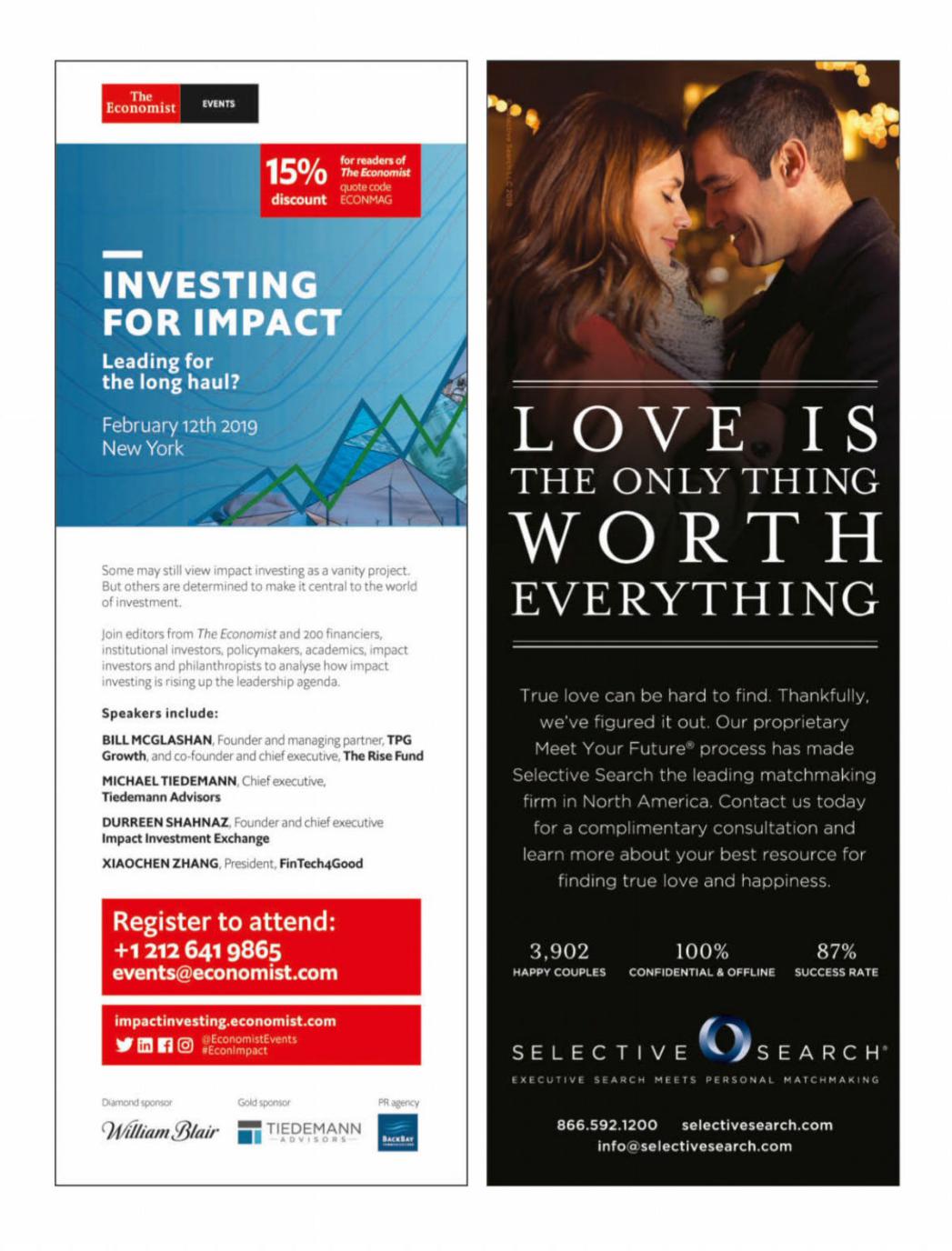
РЕЛИЗ ПОДГОТОВИЛА ГРУППА "What's News" VK.COM/WSNWS
vk.com/id446425943
http://new.guap.ru/i04/contacts
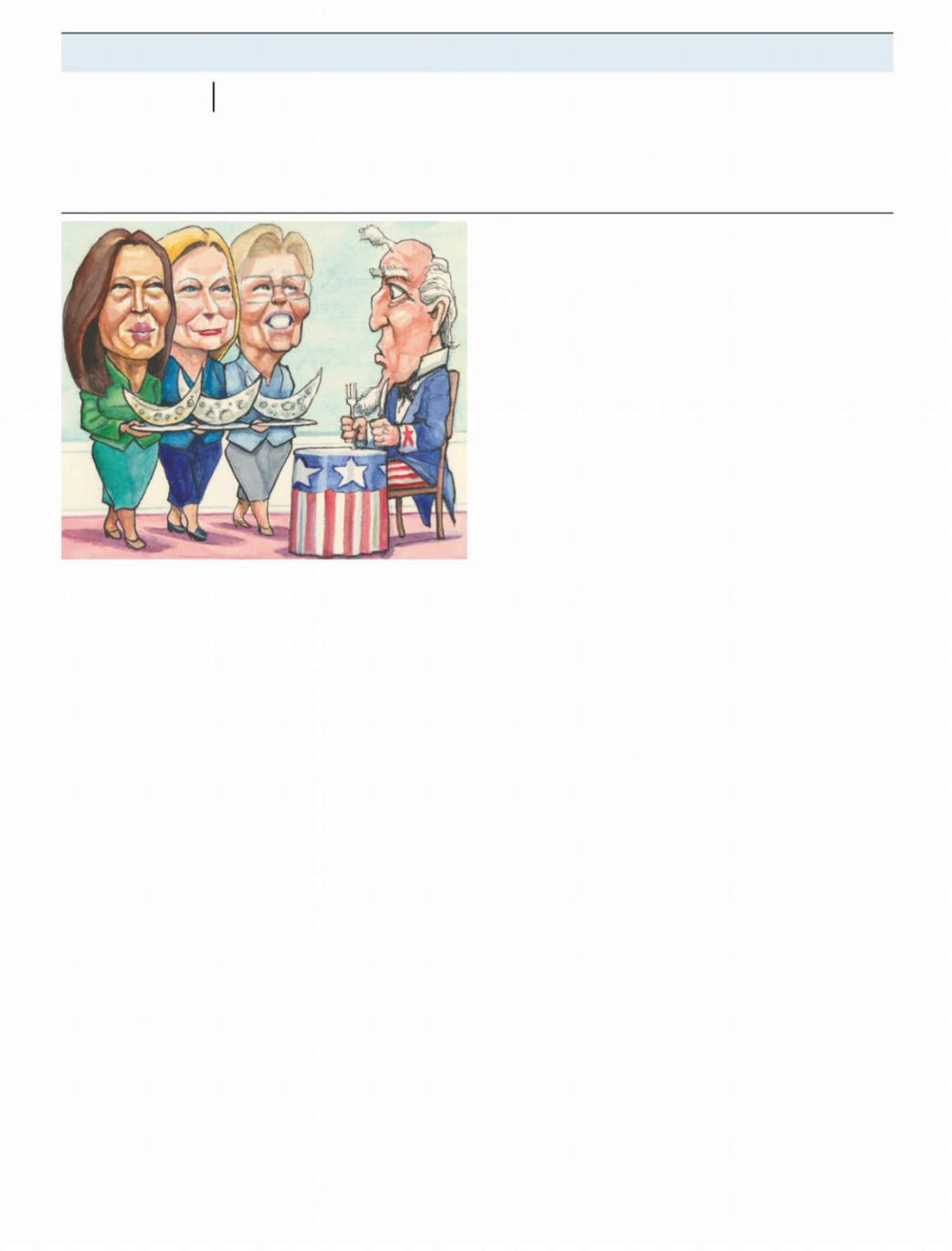
|
РЕЛИЗ ПОДГОТОВИЛА ГРУППА "What's News" VK.COM/WSNWS |
vk.com/id446425943 |
|
28 United States |
The Economist February 2nd 2019 |
Lexington |
Populists on parade |
The Democratic presidential primary contest is already the most left-wing in decades
|
the1930sand1960s. The alacrity with which Ms Harris and Ms War- |
|
ren praised Ms Ocasio-Cortez’s signature policy, the Green New |
|
Deal, supports that. (So does the fact that a 29-year-old freshman |
|
congresswoman is considered to have a signature policy.) |
|
That is one of two structural changes behind the new populism. |
|
The other is the growing importance of online fundraising, which |
|
most Democratic consultants think requires bold left-wing |
|
pledges, especially in a crowded primary field, in which cash-hun- |
|
gry populists will compete to be the boldest. That contest prom- |
|
ises, in turn, to make online fundraising even more important to |
|
those involved, because it will make Wall Street donors less gener- |
|
ous. Ms Warren’s proposed wealth tax on households worth over |
|
$50m has already given them something to hate. Still, the e ect of |
|
these structural factors can be overstated. |
|
As the mid-terms indicate, the activists are not in step with |
|
most Democratic voters, who appear more focused on opposing |
|
Mr Trump than on remaking the health-care system. Historical |
|
comparisons underline this. The leftward lurches of the 1930s and |
|
1960s were also spurred by events, in the form of the Great Depres- |
|
sion and the civil-rights struggle, which convinced millions of the |
|
need for radical change. There is little evidence that most Demo- |
|
cratic voters think today’s more complicated socioeconomic ineq- |
oderate democrats have had a good few months. They |
uities warrant the big expansion of the state that the populist can- |
Mdominated the Democratic primaries ahead of the mid-term |
didates are promising. Even in fairly liberal states such as |
elections, duly delivered a Democratic majority in the House of |
Colorado, voters have rejected proposals for a single-payer health- |
Representatives, and have been quietly getting their way there, |
care scheme. Mr Sanders’s better-than-expected run in 2016 said |
too. For all the hoopla over Alexandria Ocasio-Cortez, the House |
more about dissatisfaction with Mrs Clinton than the power of his |
agenda looks pragmatic, with a focus on fiscal prudence, infra- |
ideas. This also suggests the consultants may be wrong to demand |
structure development and not impeaching President Donald |
hard-left pledges for the purpose of fundraising. Of the three past |
Trump. House Democrats think this approach will keep on board |
masters of online fundraising, Mr Obama, Beto O’Rourke and Mr |
the centrist voters they won last year. That looks like a more pro- |
Sanders, only the last is an outright left-winger. |
mising way to get rid of Mr Trump. So why are the early Democratic |
The disruptive e ect of Mr Trump o ers more fundamental ex- |
runners for next year’s presidential election flocking to the left? |
planations for the Democrats’ lurch to the left. Activists think his |
In 2016 Hillary Clinton said Senator Bernie Sanders’s promise of |
ideological nonconformity and unpopularity a ord them an op- |
universal state-provided health care could “never, ever come to |
portunity to shift the Overton window to the left. Establishment |
pass”. Most Democratic candidates in competitive mid-terms |
figures such as Mr Booker and Ms Harris still seem mesmerised by |
races also rejected it. Yet all three heavyweights who have so far de- |
his ability to make headline-grabbing pronouncements with |
clared for 2020—the senators Kirsten Gillibrand, Kamala Harris |
which Mrs Clinton could not compete for attention. This seems to |
and Elizabeth Warren—are for it. So are several big names expected |
underappreciate his subsequent weakness. Over half of voters— |
to announce shortly, including Senator Cory Booker and Mr Sand- |
roughly the portion the Democratic candidate would need—say |
ers himself. Only Ms Warren and Mr Sanders among them have a |
they will definitely not vote for him. It is not obvious why such vot- |
record of taking populist positions. The rest have leapt to them. In- |
ers, sick of Mr Trump’s antics, would warm to a Democrat o ering |
deed the uniformity of their proposals is striking. |
a di erent set of implausible promises. “If we try to out-crazy the |
Most o er some version of Mr Sanders’s free college pledge. All |
policy announcements of a troubled president, we will do nothing |
are for giving a federal job to whomever wants one, as first suggest- |
to restore confidence,” warns Senator Chris Coons of Delaware. |
ed by Mr Booker. These proposals are not necessarily crazy; the |
Trumpish or anti-Trump |
health-care system is a mess. But the idea that they could form a re- |
|
alistic agenda for a governing system choked by partisanship is ab- |
Trying to improve on Mrs Clinton may be a better strategy—and |
surd. The light-headed fashion in which the early runners are air- |
her proposals were the least of her problems. Voters rejected her |
ing their proposals adds to that impression. Slammed on social |
because they didn’t like or identify with her, not because her jobs |
media for having promised only two years of free college, Julián |
plan was small-bore. The new populists’ reluctance to grapple with |
Castro—once Barack Obama’s centrist housing secretary—shot |
that hints at a lack of confidence in their own ability to win voters’ |
back that he’d push for four, then. Pressed for her view of private |
trust. It is surely no coincidence that they represent the main co- |
medical insurance, Ms Harris said she’d scrap it. She later tried to |
hort of hated Washington insiders in the contest. More outsider- |
walk that back. Yet what was she—what are they all—thinking of? |
ish candidates—perhaps including Mr O’Rourke, who, like Mr |
Ms Ocasio-Cortez, for one. Inspired by the demise of the cen- |
Obama before him, is not primarily associated with Washington |
tralised party structure and the rise of social media, the left-wing |
despite his time in Congress—may be better at talking to voters |
activist world she represents has rarely been more vibrant or in- |
without promising them the moon. But there is no sign of them |
timidating to the Democratic establishment. Some compare it to |
yet. For now the race is dominated by senators o ering the moon |
the supercharged activism that pushed the Democrats leftward in |
on a plate, in Swiss cheese, pepper jack, or any other flavour. 7 |
http://new.guap.ru/i04/contacts

РЕЛИЗ ПОДГОТОВИЛА ГРУППА "What's News" VK.COM/WSNWS
The Economist February 2nd 2019 29
|
Also in this section |
|
30 |
Brazil’s dam disaster |
|
30 |
El Chapo on trial |
|
— Bello is |
away |
|
|
try each year. |
|
|
|
|
The dominant political parties have not |
|||
|
solved much. The |
andfmlnarena |
, which |
|
|
were born out of two sides in a disastrous |
|||
|
civil war that ended in 1992, o er remark- |
|||
|
ably similar policies. Mr Bukele’s critics in- |
|||
|
sist that he, too, would bring only superfi- |
|||
|
cial change to the county. He “represents |
|||
Nayib Bukele, a charismatic populist, promises change to a troubled country |
the worst of the same”, says Carlos Calleja, |
|||
his nearest opponent, representing the |
||||
salary as mayor, but received around $1m |
||||
right-leaning arena . |
|
|
||
from family businesses in circumstances |
In a break from the past, however, this is |
|||
that prompted the courts to seek an inves- |
the first election in El Salvador where vot- |
|||
tigation. If victorious, he would become |
ers’ anger at corruption has taken centre- |
|||
the first president in El Salvador’s young |
stage. Past presidents have used budgetary |
|||
democracy not to belong to one of two |
tricks to divert nearly $1bn in funds to their |
|||
main political parties. |
o ce. The last three to leave o ce were in- |
|||
His electoral pledges are not limited to |
vestigated for misusing much of it to en- |
|||
nicer squares, though he vows to refurbish |
rich themselves and their friends. The cur- |
|||
historical centres in 50 towns across the |
rent president, Salvador Sánchez Cerén, |
|||
country. He has promised new ideas to |
has also directed $147m to his o ce this |
|||
“dismantle the neoliberal model” and lift |
way. No one knows how it was spent. Both |
|||
the poor. Salvadoran institutions are |
Mr Bukele and Mr Calleja pledge to do away |
|||
slightly less rickety than those in Guatema- |
with such tricks. |
|
|
|
la, where the president is attempting to de- |
Mr Bukele says he wants a Salvadoran |
|||
stroy a un -backed anti-corruption body, orversion of the graft-busting commission |
||||
in Nicaragua, where thugs have killed hun- |
under attack in Guatemala. But |
gana , |
||
dreds of people protesting against Daniel |
party he is using as a vehicle for his candi- |
|||
Ortega, its despotic president. But many |
dacy, is notoriously corrupt. It controls |
|||
fear that a populist like Mr Bukele may ne- |
only an eighth of the seats in congress, at |
|||
glect rather than strengthen them. |
least until elections in 2021, which might |
|||
Salvadorans are keen for a change. Jobs |
hinder Mr Bukele’s policy ambitions. Fuzzy |
|||
that pay a good wage are elusive. The mur- |
funding promises might, too. Tax exemp- |
|||
der rate fell by half between 2015 and 2018, |
tions for 100,000 of the poorest families |
|||
but El Salvador remains Latin America’s |
will be paid for by “the relentless fight |
|||
most violent country after Venezuela. For |
against corruption”. Some 20,000 scholar- |
|||
the poorest, the only paths to comfort are |
ships at foreign universities for young peo- |
|||
crime or departure. By one estimate, |
ple will materialise after El Salvador seeks |
|||
around1.5% of Salvadorans leave the coun- |
“strategic alliances” around the world. His1 |
|||
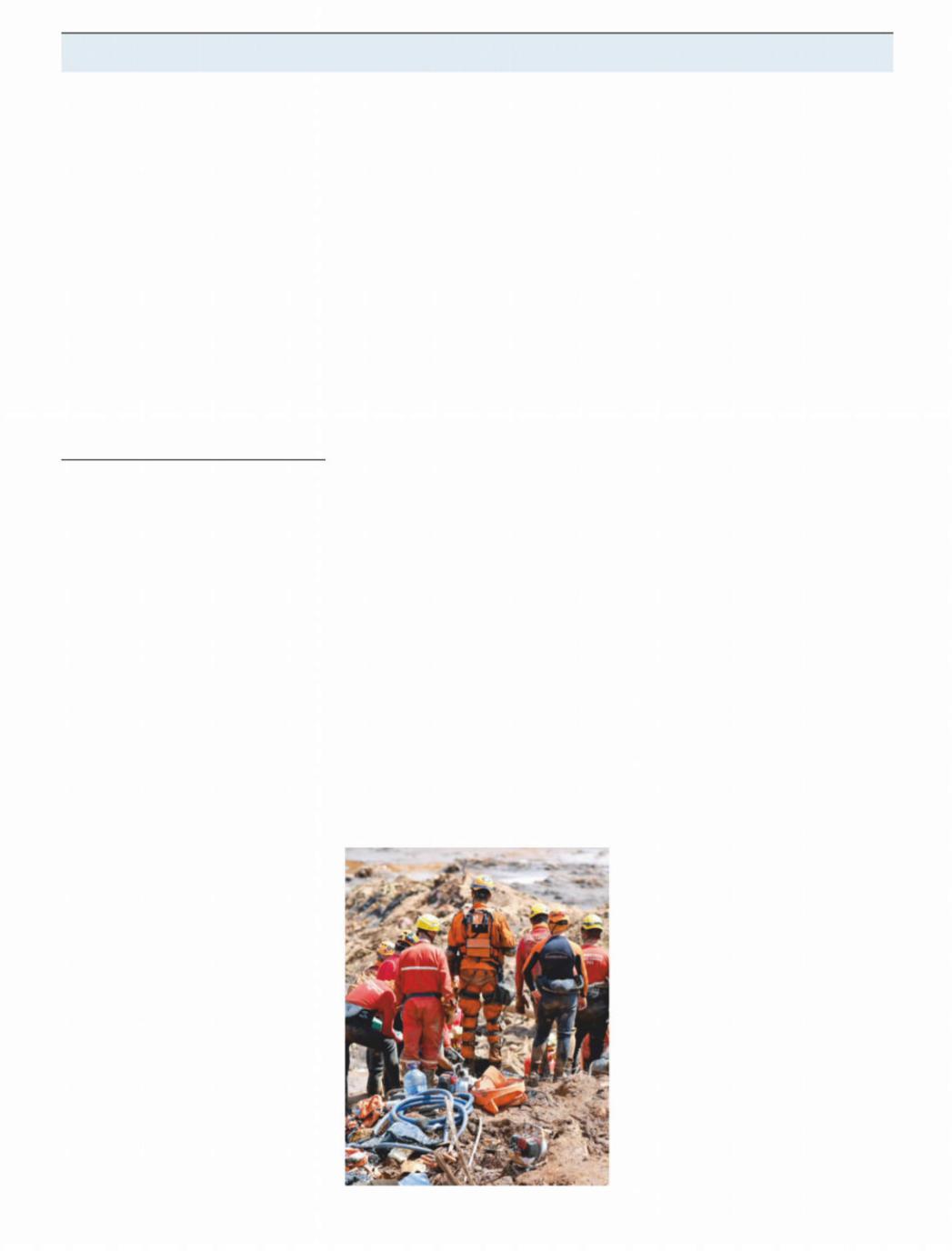
|
РЕЛИЗ ПОДГОТОВИЛА ГРУППА "What's News" VK.COM/WSNWS |
vk.com/id446425943 |
|
30 The Americas |
The Economist February 2nd 2019 |
2 pricey plazas plunged San Salvador into onerous debt.
Mr Calleja presents himself as “the true outsider” in the race. He hopes to keep Mr Bukele’s vote share below 50% and force a run-o vote in March. Unlike Mr Bukele, he has no political experience. He cites his work with the Clinton Foundation, teaching farmers to grow better crops, as proof that he can find technocratic solutions to his country’s problems. He vows to bring more foreign investment to El Salvador, which gets less than Nicaragua despite an economy twice its neighbour’s size.
Mr Calleja’s chances look slim. His party’s time in government is not recalled fondly. Salvadorans are desperate to entrust the task of remaking their country to somebody new. It is the slick Mr Bukele who seems to o er them the blankest canvas on which to project their dreams. 7
Brazil’s dam disaster
Fatal rupture
S Ã O P A U L O
The government’s special treatment of mining comes at a cost
When he saw the river of sludge roaring down the valley, José Ferreira da Silva did not fear for his son, a welder. He was working for Vale, a Brazilian mining giant, near a tailings dam at its iron-ore mine at Brumadinho. “The company always said it was safe, and we believed them,” he says. The dam’s collapse on January 25th, unleashing 12m cubic metres of mining waste, is Brazil’s worst industrial accident. As the sludge hardened and the death toll rose—the final tally may surpass 350 people—Mr Ferreira’s hopes for his
missing son faded, but not his anger. Brazil is going through a grim reckon-
ing. Miners and the government have long enjoyed cosy ties but many wonder: at what cost? Mining accounts for around 5% of gdp , according to Vale. It also employs hundreds of thousands of people and is backed by powerful politicians. That includes the new president, Jair Bolsonaro, who campaigned on promises to open up more of the Amazon forest for prospecting. The latest tragedy comes only three years after a similar collapse of a dam jointly owned by Vale at Mariana, 100 miles (160km) away, where19 people died.
Tailings dams are cheap and risky. The upstream sort have been banned in Chile and are rare in America and Europe. Their widespread use in Brazil is one way the government helps mining firms to put profit over protection, says Carlos Martinez at the Federal University of Itajubá. Miners
are favoured because they often shoulder the responsibilities of governments in remote places, building schools and hospitals, for example. In Minas Gerais (literally, “General Mines”), the state where Brumadinho is located, Vale often dominates local economies. Once state-owned, but privatised in1997, it is the biggest employer of Brumadinho’s 40,000 residents, and pays 60% of the town’s taxes.
Regulatory capture is one result, says Bruno Milanez at the Federal University of Juiz da Fora. Understa ed and underfunded, the National Mining Agency visited only a quarter of Brazil’s 790 tailings dams in 2017, leaving mining firms to hire contractors to carry out safety inspections.
Mr Bolsonaro’s government now promises a crackdown. Courts have frozen 10bn reais ($2.7bn) of Vale’s assets to pay for damages. The firm’s shares have plunged (see Schumpeter). Police arrested three employees and two contractors responsible for recent safety studies. The cabinet met to discuss the fate of the remaining high-risk dams. Yet the public outcry after the Mariana disaster led to similar lawsuits and promises. Several mining executives say that stricter oversight must be accompanied by cultural change in the industry to protect human life.
“It’s not about whether or not to mine,” says Maria Dalce Ricas of the Minas Gerais Association for the Defence of the Environment. “It’s how to mine, and where.” A worker’s cafeteria should not, for instance, have been built below a tailings dam, as was the case at Brumadinho. Dozens were probably buried alive while eating lunch. The latest tragedy is compounded by the crippling of the livelihood of the town, where mining is unlikely to continue. “People worked at the mine so that they could feed their families,” said Mr Ferreira, “but mining destroyed Brumadinho.” 7
Mining’s heavy toll
The trial of Joaquín Guzmán Loera
El Chapo’s final chapter
A court case o ers vivid insight into Latin America’s drug trade
For ten weeks the trial in New York of Joaquín Guzmán Loera, a Mexican drug lord known as “El Chapo”, has revealed sordid tales of graft, girls and gore. If the jury believes them, the former head of the Sinaloa drug gang and the protagonist in a war that has killed 100,000 Mexicans faces a
life sentence in an American jail.
Unless, of course, Mr Guzmán breaks out of prison for a third time. His second escape in 2015, from Mexico’s most secure jail, brought him global fame and prompted his extradition to America. A former minion explained to jurors how he did it. A gps -equipped watch, smuggled in to Mr Guzmán, allowed accomplices a mile away to tunnel precisely to his cell.
Other witnesses described his opulent, paranoid lifestyle. Over the years Mr Guzmán allegedly reaped $14bn. He moved between hideouts every 20 days and between his wife and mistresses more rapidly still. Panthers and crocodiles prowled his private zoo. He spied on so many phones that a flunkey had to write him summaries. And then there were the murders that Mr Guzmán ordered or committed. “I said to him, ‘Why kill people?’,” a former friend told the court. “He answered: ‘Either your mum’s going to cry or his mum’s going to cry.’”
Insights into the drug trade abounded. When a police chief on Mr Guzmán’s payroll told him American radars were tracking his cocaine-filled planes, he began using boats. Foes were bribed, allegedly including Genaro García Luna, secretary of security for President Felipe Calderón, whose drug war in 2006-2012 disproportionately arrested the Sinaloa gang’s rivals. The most explosive tale came from a henchman who said he paid $100m to Enrique Peña Nieto, Mr Calderón’s successor, in exchange for leaving Mr Guzmán be. Mr Peña and Mr Garcia deny the allegations.
Mr Guzmán did not testify. The place he most wants to have his story told is not inside a courtroom. In 2007 he tried unsuccessfully to have a Hollywood film made about his life. A meeting with Sean Penn, an actor, which he hoped would yield a deal, led to his final capture in 2016. On January 28th, as the prosecution rested its case, an unlikely guest joined the audience in court. Alejandro Edda plays Mr Guzmán in “Narcos: Mexico”, a Netflix series released in November. When the on-screen El Chapo arrived, the real El Chapo’s face lit up with glee. 7
http://new.guap.ru/i04/contacts
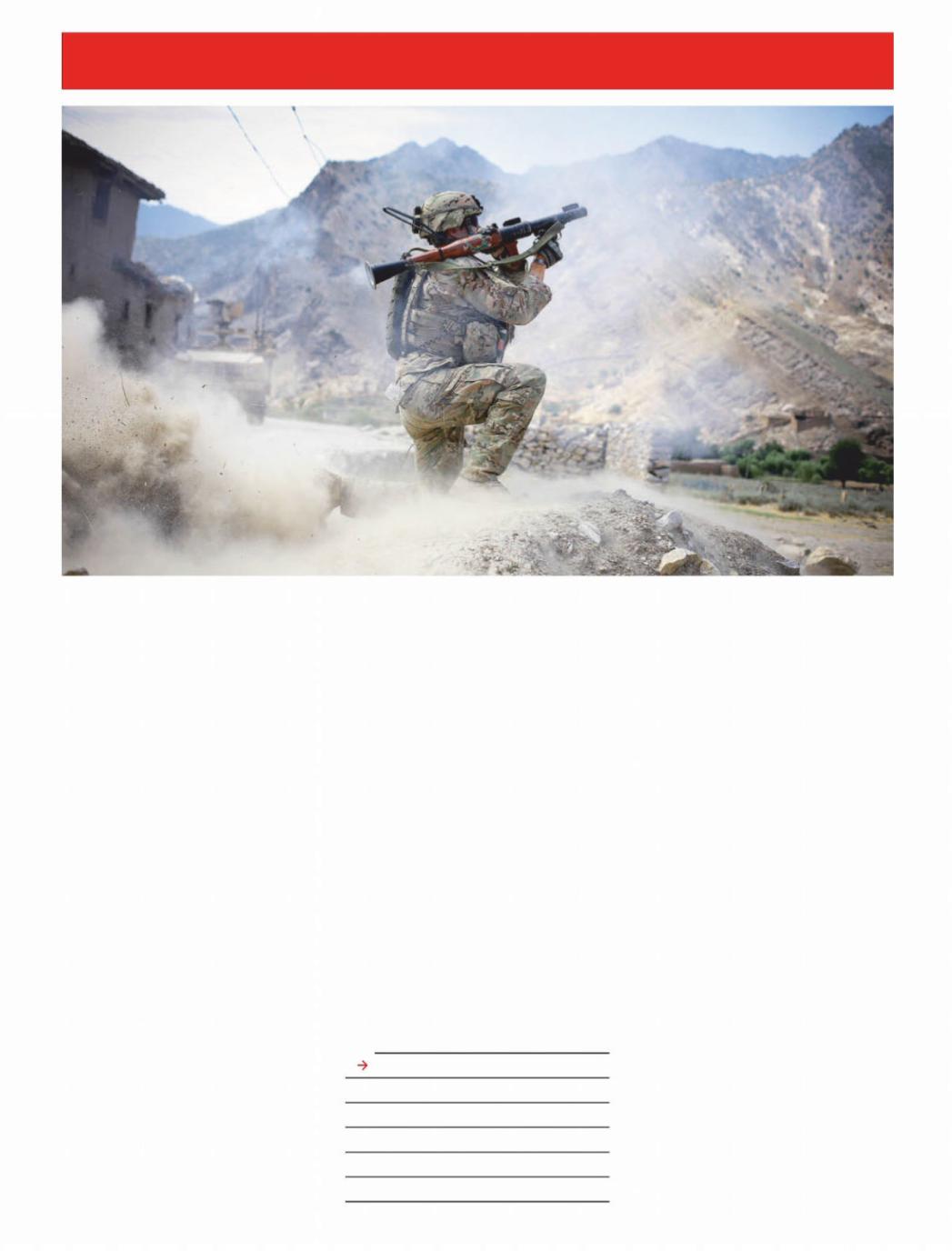
vk.com/id446425943
Asia
РЕЛИЗ ПОДГОТОВИЛА ГРУППА "What's News" VK.COM/WSNWS
The Economist February 2nd 2019 31
The war in Afghanistan
Khyber possibility
I S L A M A B A D
America and the Taliban are edging towards a peace deal
Could there be a ray of hope for Afghanistan? After 17 years of fighting, America and the Taliban may be ready to lay down their arms. The adversaries have agreed in principle on a framework for ending their war, says Zalmay Khalilzad,
America’s point man on Afghanistan.
The outline was forged in talks in Qatar that were originally scheduled to last two days but ended up being extended to six. It envisages America withdrawing troops in return for assurances that Afghanistan will never again become a haven for international terrorists. America also wants a ceasefire and the start of talks between the Taliban and the Afghan government, which the Taliban have resisted until now.
Osama bin Laden was living in Afghanistan when he plotted the 9/11 attacks on America. It was to overthrow his protectors in the Taliban and to search for him that America first dispatched troops to the country in 2001. Part of their mission ever since has been to hunt for terrorists. The other part—helping build a stable democ- racy—has been justified on the grounds that Afghanistan may otherwise become a
base for terrorists again.
Although in 2001 the Taliban invoked Afghan traditions of hospitality in their refusal to hand over bin Laden, for at least the past decade they have promised that Afghan soil will not be used to launch attacks on other countries. They not only repeated those assurances in Qatar, Mr Khalilzad says, but also agreed to provide guarantees and an enforcement mechanism—though he has not revealed any details of those.
In exchange America seems to have acceded to the Taliban’s main demand: that it withdraw its troops from the country. For years the insurgents have said the starting point for talks must be the end of what they
Also in this section
32Japan and Naomi Osaka
32Jihadists in the Philippines
33Freedom of religion in Pakistan
33Sexism in Australian politics
34Banyan: Vexed Chinese investment
call the American occupation. They do not believe America’s assurance that it does not want a permanent military presence in the country. An American pull-out now appears to be on the table although, again, the timing and scale remain unclear.
The two other steps discussed in Qatar are a ceasefire and talks between the Taliban and the government of Ashraf Ghani, Afghanistan’s president. The Taliban have thus far refused a truce, except for three days last year during a Muslim holiday. This has been dictated both by uncompromising ideology and by pragmatism. Commanders fear it may be di cult to motivate fighters again if they lay down their weapons for a long spell. The Taliban have also long refused to speak to the elected Afghan government, which they claim is an American puppet.
Mr Khalilzad presents all four main elements of the deal—the exclusion of international terrorists, an American withdrawal, a ceasefire and talks between the Taliban and the government—as an indivisible package. “Nothing is agreed until everything is agreed,” he says, “and ‘everything’ must include an intra-Afghan dialogue and comprehensive ceasefire.”
The Taliban are less clear. They have triumphantly briefed their supporters about the progress towards a withdrawal, but have been more coy about the ceasefire and talks. American o cials say that the Taliban have requested more time to confer among themselves on these. Their negotiators have gone home to do just that. Talks1
http://new.guap.ru/i04/contacts
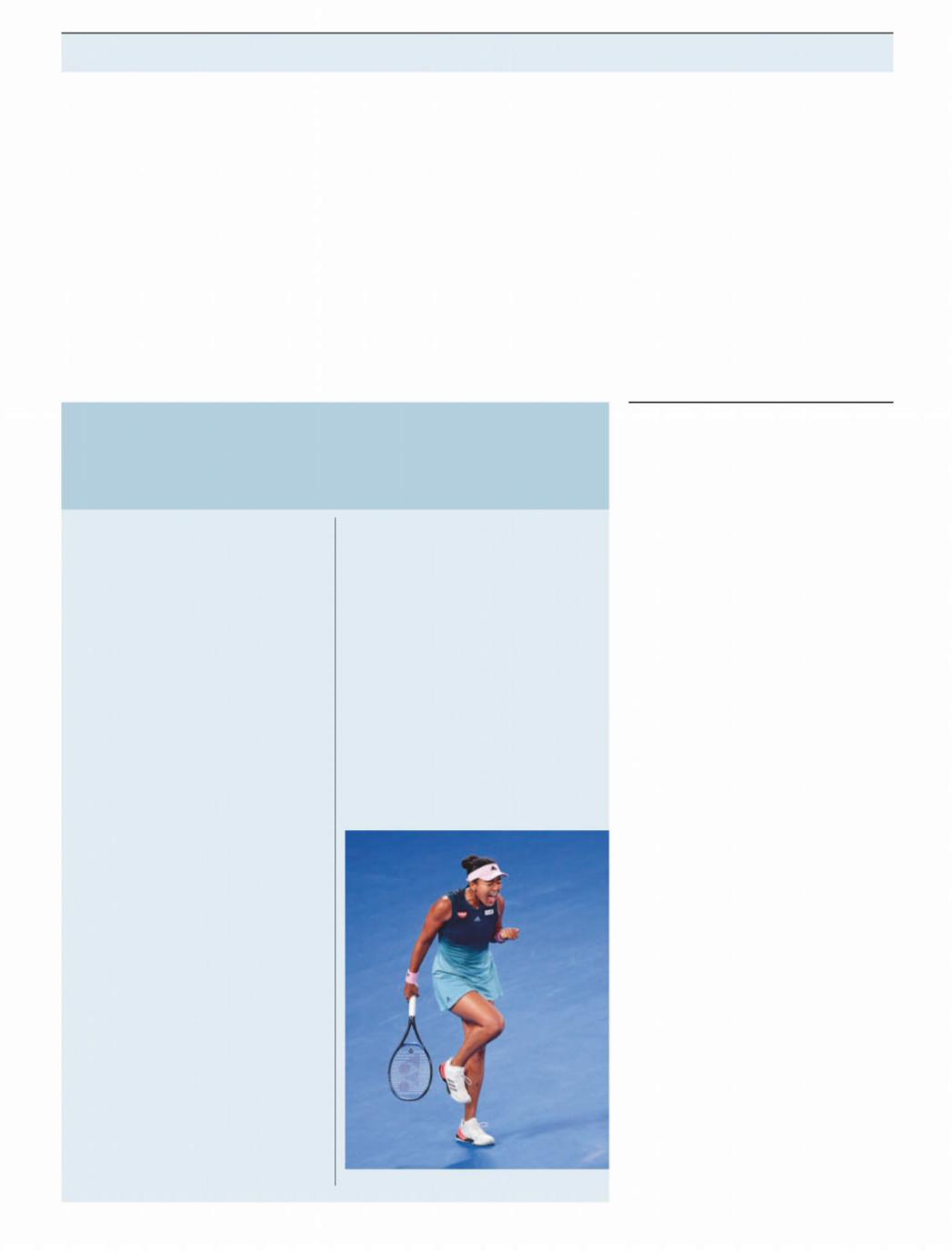
|
РЕЛИЗ ПОДГОТОВИЛА ГРУППА "What's News" VK.COM/WSNWS |
vk.com/id446425943 |
|
32 Asia |
The Economist February 2nd 2019 |
2 will resume later in February.
After years of gloom, any progress is welcome. Afghanistan’s war has claimed more than 24,000 civilian lives since 2009. Mr Ghani admitted last week that 45,000 members of his security forces had died since 2014. The war and a series of other conflicts that preceded it have blighted a beautiful country, leaving it one of the poorest in the world. The framework is “historic”, says Graeme Smith of the International Crisis Group, a think-tank. “This is closer than we have ever been so far to some kind of settlement process.”
But the framework glosses over many of the thorniest issues and, despite the desire for peace, there are concerns about motivations on both sides. Donald Trump, Ameri-
ca’s president, has long indicated that he would like to pull American troops out of Afghanistan. That could cause Mr Khalilzad to embrace a deal that is not so much a hard-fought compromise as a figleaf to cover America’s retreat. The Taliban, for their part, may make promises they have no intention of keeping, on the assumption that America will be reluctant to return once it has withdrawn.
Mr Khalilzad’s framework focuses on questions that stem from 9/11. Yet Afghanistan has been at war for 40 years. Resolving deeper disputes, about how Afghanistan should be governed, will depend on Af- ghan-to-Afghan talks. Among the chief concerns for many are whether and how the Taliban will take part in Afghanistan’s
fledgling democracy. Are they prepared to sit down with factions that they battled in the 1990s? Do they want to seize power themselves? Will they continue to murder girls for going to school?
The Taliban have a strong hand and it is getting stronger. Although the war is at something of stalemate, that is thanks only to America’s presence. The government’s casualties, America’s generals admit, are unsustainable. A hasty withdrawal would leave the government vulnerable, even if talks with the Taliban are under way. A lasting settlement will probably not come from a blockbuster deal. Instead it is likely to involve gradual and incremental steps. That would require Mr Trump to deploy a virtue he is not known for: patience. 7
Naomi Osaka |
Jihadists in the Philippines |
Hafuway there |
Not going quietly |
N E M U R O
What does its embrace of a mixed-race tennis champion reveal about Japan?
When naomi osaka won the Australian Open on January 26th and
became the world’s top-ranked female tennis player, the inhabitants of her mother’s home town of Nemuro, on Japan’s northernmost island, Hokkaido, celebrated. Congratulatory banners adorned the city hall. Townsfolk flocked to see the display of autographed rackets, clothing and other tennis paraphernalia inside. In interviews her grandfather praised her performance.
That may not seem strange, but in Japan people are typically considered Japanese only if they have two Japanese parents, speak fluent Japanese, look the part and “act Japanese”. Ms Osaka grew up in America and is only (half)hafu Japanese; her father is Haitian. She is more comfortable speaking English than Japanese (or Creole). Her grandfather at first disowned her mother when she told him she was seeing a foreign man.
For some, Japan’s embrace of Ms Osaka is hypocritical: everyone loves a winner. That view seemed to be vindicated when Nissin, a noodle-maker, ran an advert featuring Ms Osaka in which her skin and hair were lightened. (After complaints, the firm withdrew it.) Although Japanese television has long featured mixed-race celebrities, they serve as novelties. Life for non-famous hafu remains tough, with bullying in schools commonplace.
Japan may be becoming more tolerant of those who are di erent, however. Ms Osaka has been more warmly embraced than past half-Japanese winners of beauty pageants, for instance. “Having someone like Naomi Osaka represent Japan on
the international stage would not have been possible a few decades ago,” says Megumi Nishikura, a herselfhafuand a co-director of the film “Hafu”.
To some degree it is a question of numbers: 3.4% of married Japanese have a foreign spouse and three times more foreigners live and work in the country today than a decade ago. Yet the fact that the Nissin advert made it into production is “a clear indicator of the challenges that remain”, says Ms Nishikura. Since Japan does not technically allow dual citizenship for those over 22, Ms Osaka will in theory have to choose in October whether she feels Japanese enough to renounce her American citizenship and continue to play as Japanese.
Banzai!
M A N I L A
A deadly bombing mars a vote to enhance autonomy in Muslim areas
The first blast came during mass on January 27th in the cathedral of Jolo, an island at the southern extreme of the Philippines. The second detonated as soldiers were rushing to the scene and the terrified congregation was fleeing. Together they killed at least 20 people and wounded
scores more.
The bombings also dented hopes that a new era of peace had arrived in the heartland of the Muslim minority in the otherwise Christian country. Filipino followers of Islamic State set o the bombs just six days after mainly Muslim areas in the south of the country had approved by plebiscite a scheme to enhance the region’s autonomy. The vote, held as part of a peace agreement with a larger Muslim group, was intended to end 50 years of separatist rebellion. The presumption is that extremists were hoping to derail this process, or at least demonstrate that they were not mollified by it.
Rodrigo Duterte, the president, blamed the attack on Abu Sayyaf, a loose grouping of bands of armed Muslim Filipinos notorious for moneymaking crimes such as kidnapping for ransom. Some factions within Abu Sayyaf have pledged allegiance to Islamic State. The latter’s statements claiming responsibility for the attack said only that its followers had struck a “crusader temple”, without reference to politics. But it is probably no coincidence that the bombing came so soon after the plebiscite, in which 87% of the 2m voters of the largely Muslim areas of the south voted in favour of the creation of the “Bangsamoro Auton-1
http://new.guap.ru/i04/contacts
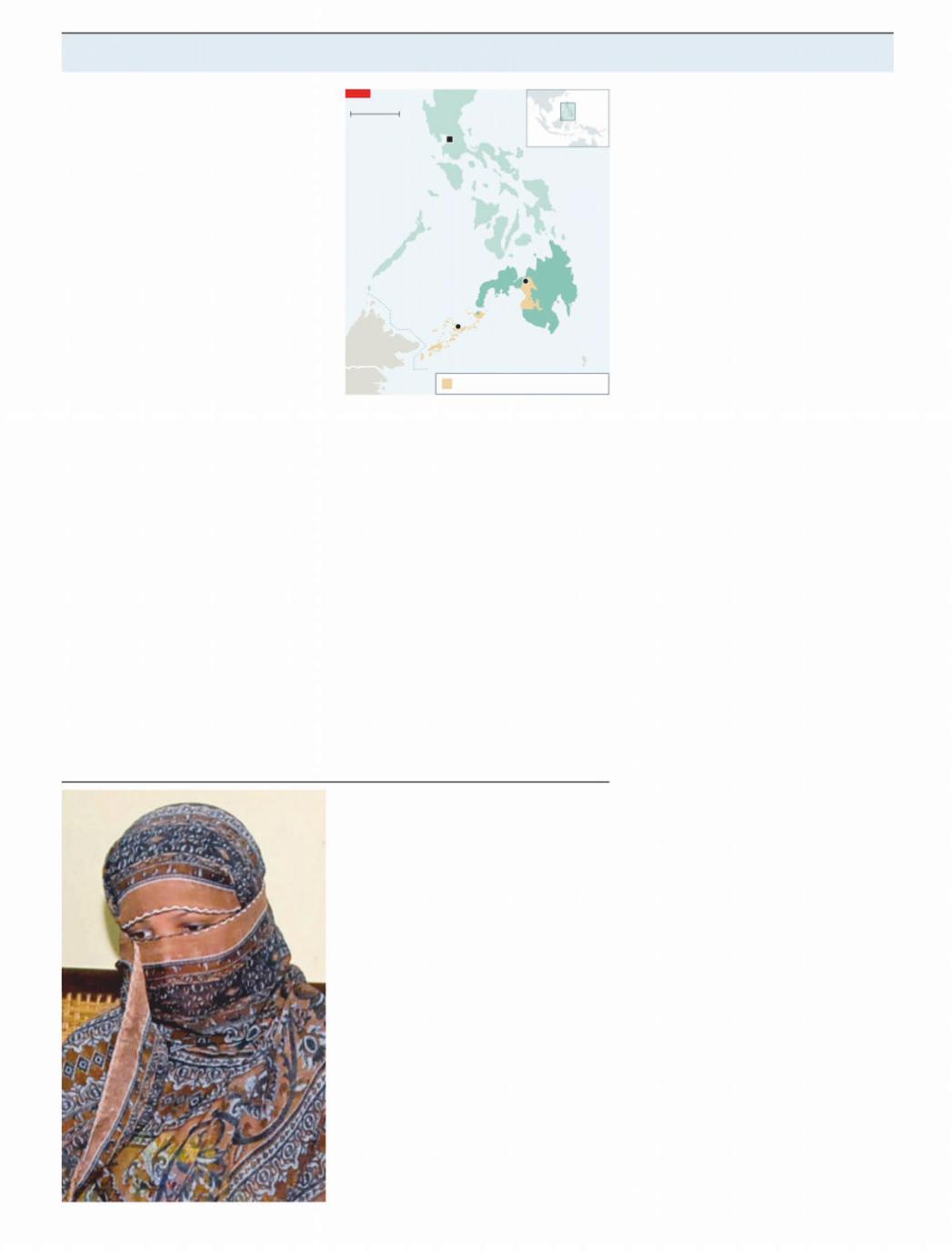
РЕЛИЗ ПОДГОТОВИЛА ГРУППА "What's News" VK.COM/WSNWS
vk.com/id446425943
The Economist February 2nd 2019
2 omous Region” (see map). |
|
250 km |
||
Much of the island of Mindanao and |
||||
surrounding, smaller islands already enjoy |
|
|||
a form of autonomy, including the power |
S o u t h |
|||
to levy local taxes and to set up sharia |
||||
courts. That is the result of a peace deal |
C h i n a |
|||
with the Moro National Liberation Front, |
S e a |
|||
|
||||
the main separatist group, in 1996. But a |
|
|||
splinter group called the Moro Islamic Lib- |
|
|||
eration Front ( |
milf |
) fought on until 2014, |
||
when it struck a deal with the central gov- |
|
|||
ernment to increase the authority of the |
|
|||
autonomous one. It will now receive fixed |
|
|||
transfers from the central government, as |
|
|||
well as retaining a greater share of tax rev- |
|
|||
enue from the region. The president will no |
MALAYSIA |
|||
longer have the power to suspend the re- |
|
|||
gional governor. The governor, meanwhile, |
INDONESIA |
|||
will have the power to appoint the head of |
||||
|
||||
the local police force. The new deal is a |
|
|||
“peacock” compared with the “chicken” of |
|
|||
the existing system of autonomy, the |
|
|||
insists. A second plebiscite, on expanding |
|
|||
the autonomous region, will be held on |
|
|||
February 6th. |
|
|
|
|
The political settlement is meant to do |
|
|||
more than end a war that has killed tens of |
|
|||
thousands of people. The |
andmilfthe gov- |
|
||
ernment alike hope peace in Mindanao will allow the economy of the resource-rich region to develop, reducing poverty and so soothing Muslim disa ection in a virtuous cycle. Generations of armed, unemployed Muslims have grown up knowing nothing but lawlessness and war. They have been easily recruited by groups like Abu Sayyaf, with promises of either earthly riches (obtained through kidnapping, robbery and extortion) or an eternity in paradise for battling the enemies of Islam.
Talk of jihad against the Christian cen-
Manila
P H I L I P P I N E S P A C I F I C
O C E A N
S u l u
S e a |
Marawi |
|
Jolo M I N D A N A O
Bangsamoro autonomous region
Asia |
33 |
Australian politics |
|
Sex and the |
|
subcommittee |
|
C A N B E R R A |
|
Female mp s complain of bullying and |
|
discrimination |
|
n november one of the rising stars of |
|
IAustralia’s governing coalition, Julia |
|
Banks, shocked her colleagues by quitting |
|
the Liberal party to become an indepen- |
|
dent. She was sick, she said, of her party’s |
|
“cultural and gender bias, bullying and in- |
|
timidation”. The announcement was a |
|
practical blow, further reducing the ranks |
|
of a government that was already a minor- |
|
ity. But mainly it was an embarrassment, |
|
adding 017,credence to the increasingly com- |
|
mon complaint that the party is a slough of |
|
sexism. In January a second prominent |
|
Liberal, Kelly O’Dwyer, announced plans to |
|
resign. Last year she had complained that |
|
voters see her colleagues as “homophobic, |
|
anti-women climate-change deniers”. |
|
Less than a fifth of Liberal members of |
|
the lower house are women—a smaller |
|
proportion than 20 years ago. Conditions |
|
for the few who remain are rotten. Allega- |
|
tions of harassment have abounded since a |
|
moderate prime minister, Malcolm Turn- |
|
bull, was overthrown in a right-wing coup |
|
in August. His redoubtable deputy, Julie |
|
Bishop, lost the leadership contest that fol- |
|
lowed, and several women complained of |
|
strong-arming by the putschists. Ms Bish- |
|
op quit as foreign minister and returned to |
|
the backbenches, calling their behaviour |
|
“appalling”. There is speculation that she |
|
too may resign before the general election |
|
due in May. |
|
The Liberals have an inglorious record |
|
on these issues. During their most recent |
|
stint in opposition, several in their ranks |
|
subjected Australia’s first and only female |
|
prime minister, Julia Gillard, to a torrent of |
|
abuse with sexist undertones. Ms Gillard, |
|
who is not married but lives with her |
|
partner, should “make an honest woman of |
|
herself”, railed Tony Abbott, the Liberal |
|
leader at the time. He later gave a speech in |
|
front of posters that labelled Ms Gillard a |
|
“witch” and a Green senator’s “bitch”. |
|
No party is spotless, however. Sarah |
|
Hanson-Young, another Green senator, is |
|
suing an independent opponent who di- |
|
rected her to “stop shagging men” during a |
|
recent debate on women’s safety. Com- |
|
plaints of toxic masculinity hang over state |
|
and local government, too. Labor’s leader |
|
in New South Wales resigned last year over |
|
allegations that he sexually harassed a |
|
journalist at a Christmas party. The mayor |
|
of Melbourne was toppled when two col- |
|
leagues accused him of groping. (Both men |
|
deny the claims.) |
1 |
http://new.guap.ru/i04/contacts
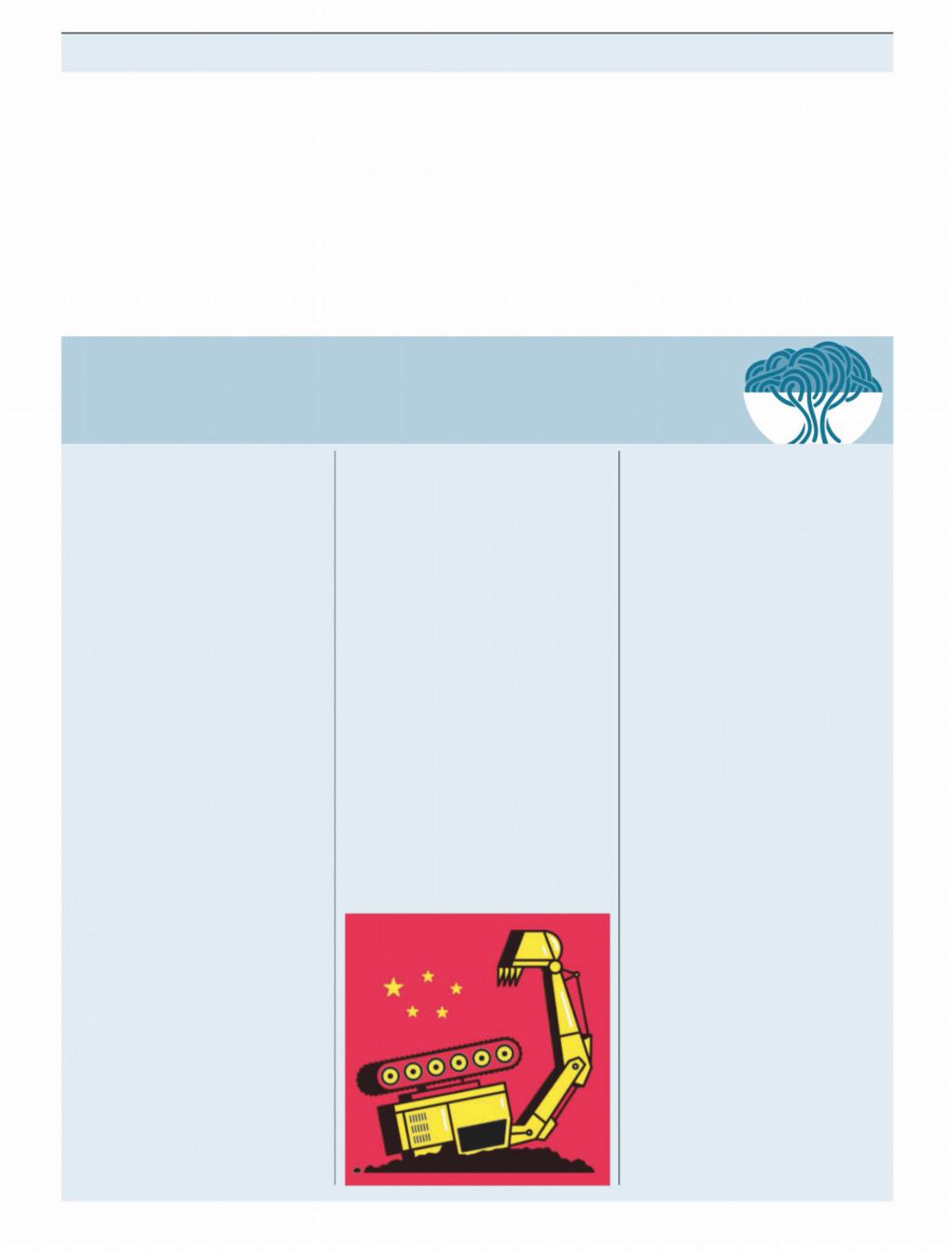
|
РЕЛИЗ ПОДГОТОВИЛА ГРУППА "What's News" VK.COM/WSNWS |
vk.com/id446425943 |
|
34 Asia |
The Economist February 2nd 2019 |
2 Some politicians believe sexism can be |
The Liberals have been slow to acknowl- |
curbed through a new code of parliamenta- |
edge their shortcomings. Some argue that |
ry conduct. A better solution might be to |
verbal attacks are part of politics and fe- |
draw more women into politics to start |
male lawmakers should toughen up. Wom- |
with. In the 1990s the Labor party intro- |
en in the party say their complaints are met |
duced quotas guaranteeing that women |
with eye-rolling or accusations of “hyste- |
would be selected as candidates in a steadi- |
ria”. The leadership rejects quotas on the |
ly rising share of left-leaning seats. Almost |
basis that politicians should be chosen on |
half its mp s are now female, a nearly five-merit. That is subjective, however, espe-
fold increase since this system was adopt- |
cially for new candidates. Women com- |
ed. Labor’s deputy leader, Tanya Plibersek, |
plain that good female ones are often re- |
says this has altered attitudes in her party: |
jected. “Look at some of the men who have |
“When you have a critical mass, it’s a better |
been pre-selected,” sco s one conserva- |
workplace for every woman.” |
tive. “Don’t tell me it’s about merit.” |
The Liberals have adopted a target to have equal numbers of male and female mp s by 2025. But unlike Labor’s quotas, this goal is not binding. Few observers think it will be reached. Many of the Liberals’ incumbent women hold marginal seats, which will be lost if the party is trounced in the impending election. So far, the Liberals have selected only six female candidates to contest safe conservative seats, by the count of William Bowe, a political analyst. At that rate, the party may emerge from the election even more male-dominated than it was to start with. 7
Banyan Belt and goad
If not a debt trap, Chinese investment in infrastructure is often a diplomatic one
For months Mahathir Mohamad has been plucking up courage to declare that, when it comes to Chinese investment in infrastructure, his is the Malaysia that can say no. At a projected cost of $20bn, the East Coast Rail Link, planned to run down peninsular Malaysia’s eastern seaboard before cutting west, is a big deal. In fact it is the second-biggest of all
the projects of the Belt and Road Initiative ( bri ), China’s grand scheme to improve infrastructure across scores of countries, to tie East, West and all other compass points together.
For Dr Mahathir’s government, the link is a white elephant: the east coast is much less populated than the west. No process of competitive tenders took place when Dr Mahathir’s predecessor as prime minister, Najib Razak, awarded the construction and financing to Chinese state companies and banks. Mr Najib now faces charges over hundreds of millions of dollars missing from1mdb a state investment vehicle. The Malaysian government says it is investigating whether the rail link and lesser projects might have been awarded in an attempt to secure a Chinese bailout of1mdb .
Either way, to Malaysians deals such as the East Coast Rail Link are lopsided. The project is financed almost entirely by Chinese loans. Chinese workers, not Malaysians, are hired to do the construction work. The returns are questionable, but the bills are not. Malaysia’s government debt has been shooting up. Chinese o cials describe asbriall about openness, mutual respect and “win-win” outcomes. Malaysia’s predicament gives the lie to that.
Yet Malaysia is clearly nervous about o ending China by cancelling the deal. A minister recently announced the project was o ; Dr Mahathir explained that
Malaysia could not a ord it. A day later, however, he reversed himself, saying no final decision had been made. There are more than fiscal considerations at stake.
Despite China’s denials, all the con- crete-pouring is a giant act of international political engineering. Bruno Maçães, a former Portuguese foreign minister and writer on bri , argues that its spillovers into politics and society “are not a bug in the project, but its most fundamental feature”. Under way is a return of sorts to earlier, celestial concepts of power and civilisation under which China sat at the heart of things. Moral, not legal, precepts governed relations among states. They included dependence, generosity, gratitude and reciprocity—but also retribution. In the case of Malaysia, ruling-coalition politicians say the Chinese government is exceptionally annoyed. It may punish Malaysia by importing less palm oil and curbing Chinese tourism (the number of
,visitors is already down for Chinese new year). It is even bringing race to bear, by trying to drive a wedge between the Malaysian government and Chinese-Malaysian
businessfolk, many of whom fear that China’s anger will harm their commercial interests.
Meanwhile, others are watching closely. A report last year by the Centre for Global Development listed 23 countries involved in bri that were at “significant” risk of debt distress. One of them, Myanmar, wants to cut the size of a port and economic zone in Rakhine state, as well as shelve for good a controversial dam on the headwaters of the Irrawaddy. Another, Pakistan, the biggest recipient of bri projects, is facing a balance-of- payments crisis and has begged China for easier terms. Hawks making the running in the administration of President Donald Trump depict China as out to bankrupt weak governments, all the better to erode their sovereignty and dictate terms: “debt-trap diplomacy”.
That view is certainly overstated. Opportunism, rather than centrally directed purpose, defines many of China’s belt-and-road activities. Besides, there are risks for China. In Malaysia, Myanmar, Sri Lanka and, most recently, the Maldives, democratic forces came to power in part out of revulsion over autocrats cosying up to China. In Pakistan, Chinese diplomats have been murdered by Baloch separatists who see Chinese development as a threat to their lands. And though the Chinese builder of Sri Lanka’s empty Hambantota port took control of it on a 99-year lease when the government struggled to pay interest, how China benefits from the dud project is far from clear (India has, in e ect, a veto over the port’s use by the Chinese navy). Still, Malaysia’s decision is important to others. If a fairly prosperous, robust country cannot stand up to China, then poorer, weaker nations certainly won’t be able to.
http://new.guap.ru/i04/contacts
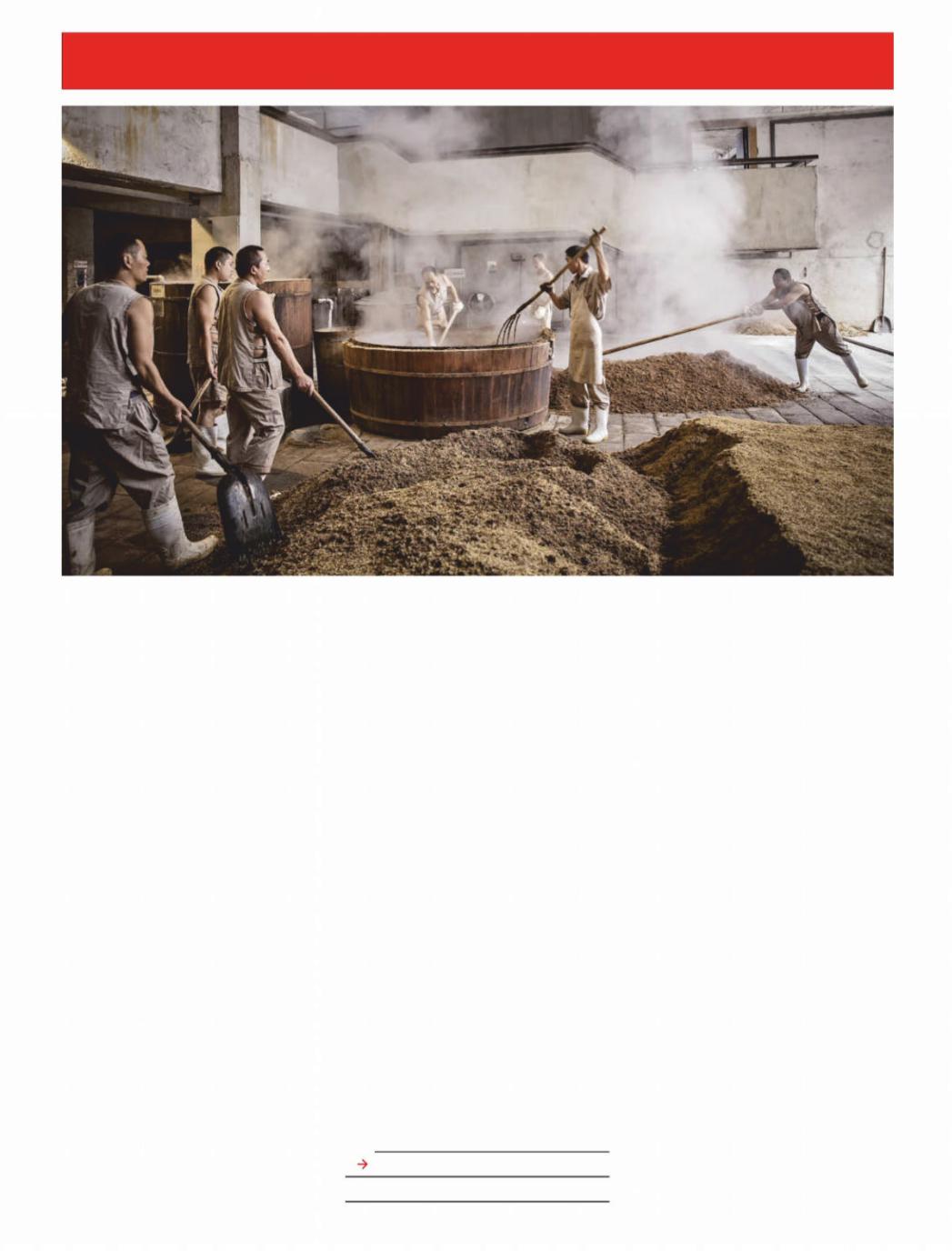
vk.com/id446425943
China
РЕЛИЗ ПОДГОТОВИЛА ГРУППА "What's News" VK.COM/WSNWS
The Economist February 2nd 2019 35
Baijiu
Spirit of the pits
M A O TA I
Can China’s ancient sorghum-based liquor go global like vodka and tequila?
Distillers at Kweichow Moutai, the world’s most valuable alcoholic-drinks firm, like to tell an old story about their company’s first big break. It relates how, in 1915, Chinese o cials chose to exhibit Moutai’s sorghum-based spirit at an exposition in San Francisco. When the doors opened the snooty American audience sneered at the delegation’s plain earthenware jars. Fearing disaster, or perhaps simply by accident, a Chinese delegate smashed one on the floor, releasing its aroma to the crowd. The scent and the commotion attracted the judges, who eventual-
ly awarded it a top prize.
The tale is told with relish to visitors in Maotai, the pretty riverside town in the south-western province of Guizhou that gave the company its name (the spelling of Kweichow Moutai is based on old-style romanisation). The medal the liquor won in San Francisco hangs in a corporate museum, next to a video-wall showing a re-en- actment of the incident. That was the day, explains the exhibit, that the brand “went global”. Down a hill, in the heart of the town, is a plaza named “1915 Square” that
hums with visitors. At its centre is a giant gold-painted monument in the shape of a cracked liquor jar.
That the company should take such pride in this bygone foreign endorsement is odd, given how much it has to celebrate at home. Moutai has long called itself the “national liquor”—though last year it gave up a years-long battle to trademark this description. Feted by Communist leaders who often serve it to visiting dignitaries, Moutai is among the most expensive of the brands of baijiu (literally meaning white, or clear, alcohol) that are commonly bought to celebrate the Chinese new year, which this year begins on February 5th. The festival is a frenzy of baijiu imbibing and gift-giving among family and friends.
The liquor—a broad family of grainbased spirits selling for anything between a few dollars and a few thousand dollars per bottle—is the most-drunk spirit on earth.
Also in this section
37 Chaguan: The politics of pigs
But this is only by dint of its popularity in China. Each year drinkers there spend about three times more on baijiu than they do on beer and roughly 15 times more than on wine. The10bn litres produced each year is more than twice the annual global production of vodka, the next most popular spirit. It would fill a bath for every person in Britain. In 2017 Moutai’s market capitalisation reached $71.5bn, overtaking that of Diageo, a British drinks giant.
Over the years Europeans and Americans have grown to love vodka, a once-ob- scure Russian gut-rot, and tequila, a Mexican drink made from spiky plants. But Chinese liquor firms have made few inroads globally. About 95% of Moutai’s sales are in China. So it is remarkable that the company tries to suggest that it has had a century of success abroad. Only recently have it and some of China’s thousands of other baijiu-makers begun stepping up efforts to develop foreign markets.
This will be a challenge. To unaccustomed palates, baijiu can be an assault on the senses. The primary ingredient is sorghum, or sometimes rice. In contrast with the making of whisky or beer, the grains are usually fermented while solid. This requires them to be mixed with a yeast-filled agent and then heaped in mounds, packed in buried jars or sometimes sealed pits. When the solid mixture is suitably stinky it is distilled by heating in a still that operates like a steamer (see picture), to produce high-alcohol liquid. Production of the simplest type can be completed in a week or1
http://new.guap.ru/i04/contacts
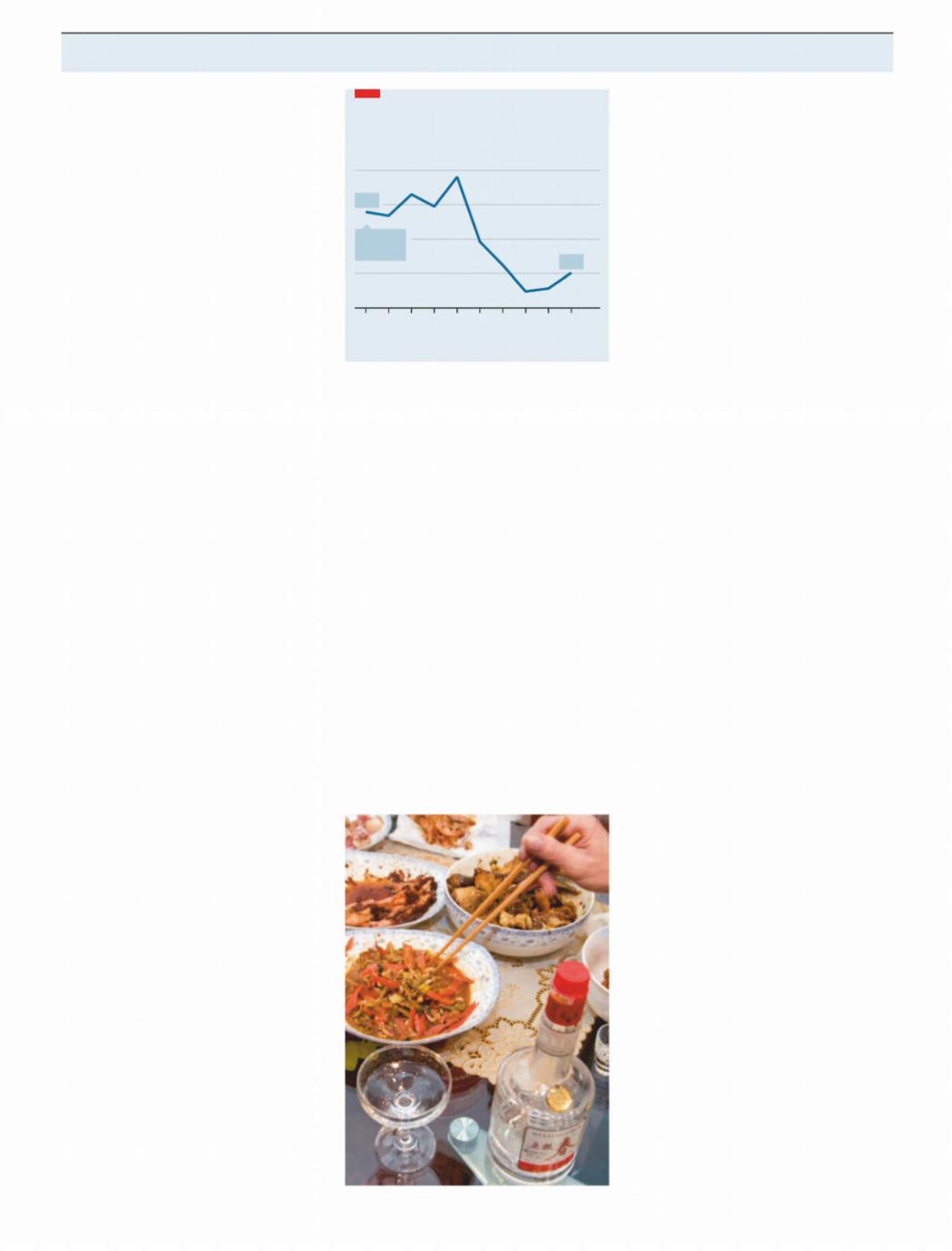
|
РЕЛИЗ ПОДГОТОВИЛА ГРУППА "What's News" VK.COM/WSNWS |
vk.com/id446425943 |
|
36 China |
The Economist February 2nd 2019 |
2 two. More complex ones require multiple |
In need of a pick-me-up |
|
|
fermentations and distillations that can |
|
||
take up to nine months. In either case, the |
China, baijiu sales revenue* |
|
|
spirit is eventually aged in ceramic jars as |
% increase on a year earlier |
|
|
tall as a human being. |
|
|
40 |
What results is a startling variety of pro- |
|
|
|
|
|
|
|
ducts, many with an alcohol content above |
124 |
|
30 |
50%. At its most drinkable, it is sweet, aro- |
|
||
|
|
|
|
matic and has a vodka’s crispness. At its |
Revenue, |
|
20 |
most pungent it can be a punchy mix of |
|
||
|
|
||
mushrooms, liquorice and old socks. Con- |
yuan bn |
613 |
|
|
10 |
||
noisseurs divide the drink by flavour into |
|
|
|
|
|
|
|
four categories: rice, light, strong and |
|
|
0 |
sauce. But it is rarely consumed for its sub- |
|
|
|
2007 08 09 10 11 |
12 13 14 15 16 |
|
|
tleties. It is more a social lubricant, usually |
|
||
drunk at mealtimes with family, colleagues |
Source: China Alcoholic |
*Larger distillers, as defined by |
|
or clients. It is downed in shots rather than |
Drinks Association |
National Bureau of Statistics |
|
|
|
|
|
sips. Endless toasting can turn banquets |
|
|
|
into tests of endurance. |
Mexican foodsellers have more incentive |
||
In the workshop of a small, indepen- |
to shoulder the hassle and expense of li- |
||
dent baijiu distillery in Maotai, shirtless |
censing because they are confident that |
||
men rake out hot piles of sorghum that |
they can cash in on sweet poisons such as |
||
they have tipped from steaming wheelbar- |
margaritas. This has lately made it easier |
||
rows. Zhao Liyong, the owner, hops peril- |
for Latin American drinks-makers to intro- |
||
ously around the lip of an empty fermenta- |
duce obscurer spirits, such as mezcal, a |
||
tion pit, a brick-lined hole that looks about |
hipster cousin of tequila, or pisco. |
|
|
six feet deep. He still makes the drink the |
But for a long time China’s big baijiu- |
||
way his grandfather did. Later, over a plate |
makers were not that interested in foreign |
||
of pork intestines, his tongue loosened by a |
sales. Since China began opening its econ- |
||
bottle of his own liquor, Mr Zhao lists some |
omy to the outside world in the late 1970s, |
||
of his product’s magical properties: it can |
the distillers have mostly been preoccu- |
||
treat ulcers, soothe colds and turn enemies |
pied with meeting domestic demand (bai- |
||
into friends, he insists. After cups have |
jiu production roughly tripled in the ten |
||
been raised a few more times, your corre- |
years to 2013). Those that do have foreign |
||
spondent struggles to think of a toast to |
ambitions, as in other industries, are not |
||
match Mr Zhao’s, that “you will come to |
always up to the task. Many are state- |
||
love China, love baijiu, and love me.” |
owned (Moutai is publicly listed, but Gui- |
||
Foreigners’ ignorance of the drink is |
zhou’s government has a big stake) and |
||
perplexing when one considers the world’s |
conservative in their marketing. |
|
|
familiarity with Chinese food. It does not |
Over the past few years, however, atti- |
||
help that Westerners generally do not drink |
tudes have been changing. In addition to |
||
spirits neat. Making good use of baijiu in a |
exporting their best-known brands, baijiu- |
||
cocktail tends to require more imagination |
makers have been creating new drinks spe- |
||
and ingredients than are found in many |
|
|
|
bars and homes. Its high alcohol content |
|
|
|
makes it expensive in countries that tax |
|
|
|
booze highly. Visitors who have lived in |
|
|
|
China commonly return home with bad |
|
|
|
stories about baijiu, which often have less |
|
|
|
to do with the liquid itself—though its |
|
|
|
hangovers are legendary—than the way it |
|
|
|
has been foisted on them at raucous |
|
|
|
events. Hosts delight in challenging reluc- |
|
|
|
tant guests to drink, and demanding they |
|
|
|
do so at the same down-in-one pace. The |
|
|
|
Chinese equivalent of “cheers” is ganbei, |
|
|
|
meaning “empty [your] cup”. |
|
|
|
There may be historical explanations |
|
|
|
for the West’s lack of interest. Derek Sand- |
|
|
|
haus, the author of “Baijiu: The Essential |
|
|
|
Guide to Chinese Spirits”, says America’s |
|
|
|
taste for Chinese food first took o at the |
|
|
|
time of Prohibition. He thinks this coinci- |
|
|
|
dence denied Chinese liquor culture a |
|
|
|
chance to ride on the coat-tails of the new |
|
|
|
cuisine. That many small Chinese restau- |
|
|
|
rants and takeaways in America forgo alco- |
By Jove it tastes good with baijiu |
|
|
hol licences is a present-day obstacle, too. |
|
||
cifically to be sold abroad. In 2016 Red Star, the maker of Erguotou, a cheap baijiu ubiquitous in Beijing, launched a spirit in Europe called Nuwa. Last year Luzhou Laojiao, a storied distiller in Sichuan, a south-western province, released a baijiu in America named Ming River (it is a joint venture in which Mr Sandhaus holds a share). In June Moutai began promoting one of its cheaper brands in New Zealand, as the base for a cocktail it calls the Dancing Kiwi. Olive Chen from Waba, a China-based group of drinks-makers and distributors, says New Zealand’s small size and Western culture makes it a good place to test the drink’s potential for other foreign markets.
All of this is in part a response to ructions at home. Giving expensive bottles of baijiu has long served as a quiet method of bribing people. After he took over as China’s leader in 2012, Xi Jinping launched a campaign against corruption and profligacy in government. Almost overnight his e orts deprived baijiu-makers of their best buyers: state-owned firms and government agencies. For many distillers, revenue growth slumped (see chart).
The drama has made them less complacent, prompting a rethink of their export strategies, and much else. In China they are working harder to sell more baijiu to consumers instead of businesses, a task that includes making sure it is well stocked in bars as well as restaurants. They are also wondering how to hedge against worries that young Chinese, and women especially, are not as keen on the stu as their fathers (one youngster calls baijiu “something your dad drinks”; another says it is “just for drunks”). Minnie Yu, an analyst for Nielsen, a research firm, says distillers are trying to attract younger people with lowerstrength versions in smaller bottles.
Baijiu companies are aware that they increasingly have to compete in their home market with Western drinks such as gin, whisky and wine. Many have concluded, perhaps correctly, that making their brands look and feel international to Chinese drinkers will help them hold their own against these fashionable foreign tipples. This strategy, rather than the chance of big profits in America, may explain why Wuliangye, another baijiu-maker, has been splashing out on advertising space in New York’s Times Square. Paul Mathew, a baijiu enthusiast who runs Demon, Wise and Partners, a cocktail bar in London, says Chinese firms regularly seek his advice on the British drinks market. But he says their goal is often just to get footage of a foreign bartender making cocktails with their spirit, which they can circulate on social media in China to show that their brand is taken seriously by foreigners. Many distillers see benefit in looking like they are tapping an overseas market—one that never forgot the fragrance from that broken jar. 7
http://new.guap.ru/i04/contacts
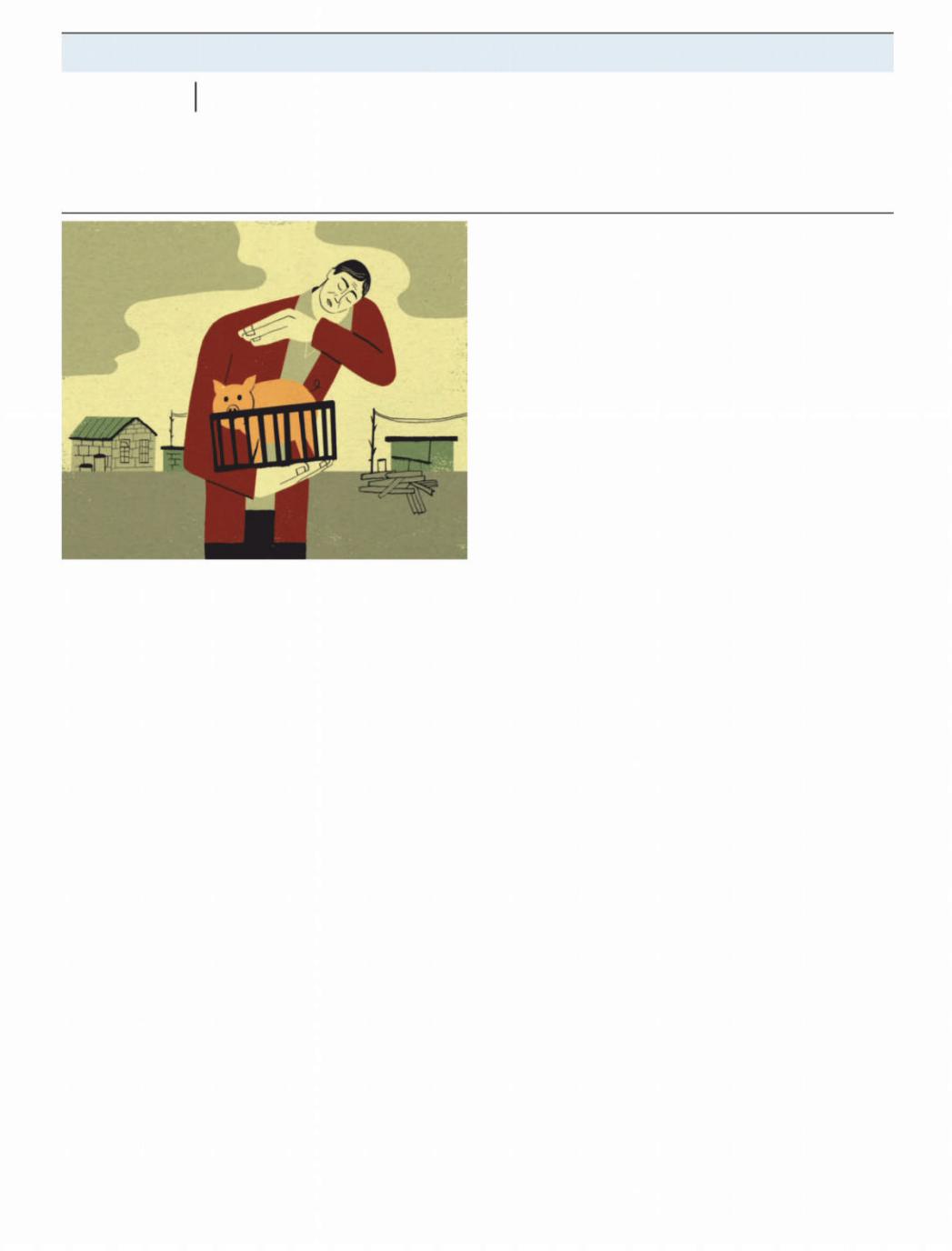
|
РЕЛИЗ ПОДГОТОВИЛА ГРУППА "What's News" VK.COM/WSNWS |
vk.com/id446425943 |
|
The Economist February 2nd 2019 |
China 37 |
Chaguan The politics of pigs
In most other countries, a swine-fever epidemic like China’s would cause mass protests
Until now links between social-realist cinema and “Peppa Pig”, a sweet British-made animated television series for children, have been hard to spot. Then came “What is Peppa?”, a beautifully crafted film about China’s rural-urban divide, family ties and the sadness of old age that has accumulated hundreds of millions of
online views over the past few days.
O cially, the six-minute short is an advertising trailer for a children’s feature film made for the China market, “Peppa Pig Celebrates Chinese New Year”. It is timed to cash in on the festival: day one of a pig-year in the Chinese zodiac falls on February 5th. Yet many grown-ups felt a pang of recognition as they watched the trailer’s bittersweet, live-action depiction of Li Yubao, a gru -but- loving Chinese villager striving to please his city-dwelling grandson, notably by puzzling out the toddler’s request for a Peppathemed gift. Filmed in the village of Waijinggou, in the dusty, hardscrabble hills that encircle northern Beijing, the short film is rather honest about modern inequalities. The mystery of Peppa’s identity is solved by a village woman who worked in Beijing as a nanny. When grandfather and toddler meet, the child’s eyes show fear at this wild-haired, over-loud old man, as well as excitement.
Still, the film leaves a lot out. A true work of social realism, if set in a farming village in February 2019, would acknowledge a reality that Chinese o cials and state media are trying to downplay. Rural China is in the grip of a long-feared catastrophe, an epidemic of African Swine Fever (asf ). China’s first case was confirmed on August 3rd 2018. It could ruin millions of pig-rearing smallholders in places just like Waijinggou. As of January 25th the Food and Agriculture Organisation, a agency,unhad confirmed104 outbreaks of asf in China and the culling of 916,000 pigs. Though the disease poses no threat to humans, there is no cure for infected swine and no vaccine against it. Vincent Martin, the agency’s envoy to China, says eradication “may not be feasible in the short term”, especially if wild pigs act as a reservoir for the virus. Russia o ers ominous clues to the future. There an 11-year fight to control asf has caused backyard pork production to fall by almost half, while large commercial farms which can a ord strict biosecurity controls actually increased production. Such a shift would transform rural China, where almost half a billion pigs are produced each year, about 40%
of them on small farms with fewer than 30 sows.
Transparency is a work in progress. Just a dozen years ago Chinese government vets talking to foreign colleagues sometimes refused to speak the names of illnesses aloud, coyly lamenting the arrival of “disease x ” in “province y ”. Today China tells the about outbreaks and quarantine zones in which the transport of live pigs is banned and markets are closed. It has announced new bans on feeding pigs with food waste. But China is also intent on minimising the crisis. With new-year cooks busy planning porkheavy feasts, China’s agriculture ministry assured the public on January16th that asf is having a “limited impact” on markets.
Dirk Pfei er, a vet and infectious-diseases expert at City University of Hong Kong, credits China with working hard to contain asf . He notes that even rich European countries struggle with it. Still, he worries about why China’s outbreaks are scattered as dots across the map rather than in clusters, as might be expected. This suggests either that the disease is being controlled with unusual success, or that outbreaks are being underreported.
Whether swine fever smoulders or blazes across China’s farmcountry, it has already exposed the striking political weakness and isolation of the country’s small farmers. In Europe, where farmers wield outsize political clout, the spread of asf is blamed on government bungling, bringing calls for ministerial resignations. From Romania to Poland, Belgium and Estonia, pig farmers demanding compensation and stricter controls on wild boar have variously obstructed government vets, blocked motorways with tractors and threatened to dump animal dung on parliament. Governments have hastened to appease them. “I am one of you,” a Polish minister told protesters pleadingly, citing his pig-farming past. To reassure farmers, Denmark is building a fence to stop wild boar crossing from Germany. On January 25th France said that it would mobilise troops to kill wild pigs. European farmers are used to deference. They often enjoy geographically concentrated voting power. Voters see them as defenders of cherished traditions. Tractors are a handy prop: governments fear sending riot police to attack anything that routinely appears in children’s books.
Some farmers are more equal than others
Chinese breeders mount protests, too, for instance when corrupt o cials steal land. But though threatensfmany with financial calamity, this is not causing visible unrest. In part that is because the government works to stop citizens from banding together. And when it comes to public opinion, Chinese farmers are often on their own. Chaguan visited a farmer surnamed He, in the coastal province of Fujian. The 57-year-old grumbles about “hassle” from health inspectors. “We’re not that afraid of swine fever, we’re afraid the government’s management is getting too strict,” Mr He says, hosing manure from pens holding about 150 pigs. His three- year-old grandson scampers nearby, bells tinkling on ankle bracelets. Mr He makes a profit of up to 30 yuan ($4.46) per kilo on his pigs, not enough to pay for biosecurity measures ordered by o - cials. He sees no end to the crisis.asf“Doesn’t seem like there’s much we can do.” He is not puzzled that his children do not want his farm: the government “subsidises big farms, not small ones”.
A bleak truth lurks in “What is Peppa?”. Many Chinese feel for that film’s hero, rattling around his half-empty village. They also understand why such places are abandoned. Tellingly, the trailer’s emotional climax involves the grandfather relishing the big city with his family. For many small farmers in this country in a hurry, swine fever will hasten an end that was already in sight. 7
http://new.guap.ru/i04/contacts
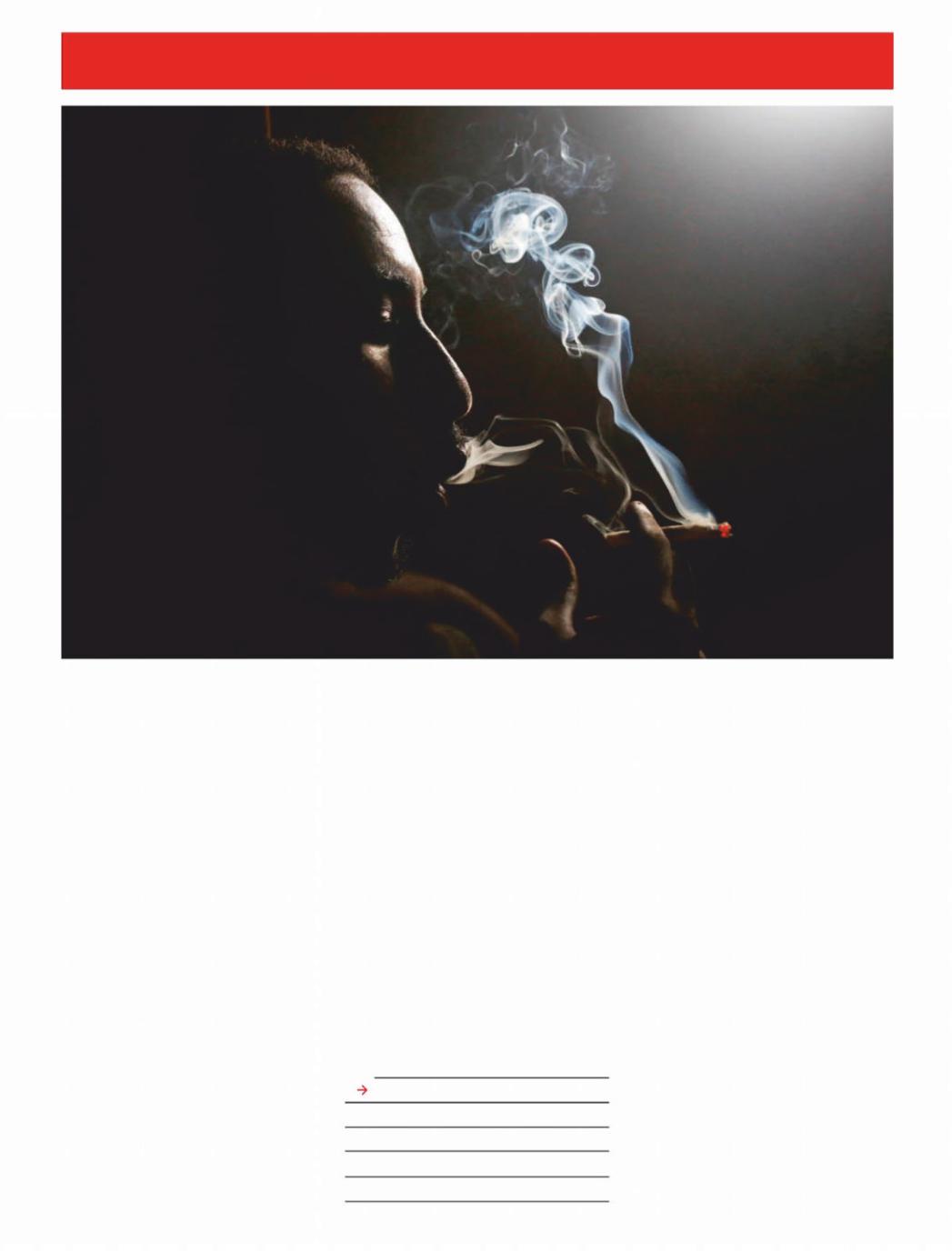
РЕЛИЗ ПОДГОТОВИЛА ГРУППА "What's News" VK.COM/WSNWS
The Economist February 2nd 2019
|
|
being tra cked via Africa. The so-called |
|
|
|
Balkan route, encompassing Iran, Turkey |
|
|
|
and south-east Europe, has been the main |
|
|
|
way of getting heroin to the West. But over |
|
|
|
the past decade moving drugs along it has |
|
|
|
become harder, a side-e ect of Turkey |
|
|
|
tightening its borders in response to the |
|
|
|
war in Syria and European countries’ at- |
|
A growing heroin market is spreading sorrow across east and southern Africa |
tempts to keep out refugees. As a result, |
||
more of the harvests are being dispatched |
|||
|
|
||
drug is having ruinous e ects, not just on |
along the “southern route” (see map). |
||
public health, but on politics, too. |
|
On this route, sometimes called the |
|
The rise of heroin in Africa partly re- |
“smack track”, heroin is taken from Af- |
||
flects a surge in global supply. As the Tali- |
ghanistan to Pakistan’s Makran coast, |
||
ban has consolidated its hold on parts of |
where shipments are put on dhows, tradi- |
||
Afghanistan, where 85% of the world’s her- |
tional Arabian boats with triangular sails. |
||
oin is made, more of the country has been |
(Some heroin is also smuggled via contain- |
||
given over to poppies. In 2017 opium pro- |
ers in larger ships.) Throughout the year, |
||
duction increased by 65% to10,500 tonnes, |
save for the monsoon season, dhows sail |
||
the highest recorded by the |
sinceunodcit |
south-west through the Indian Ocean be- |
|
began collecting data in 2000. |
|
fore anchoring o Somalia, Kenya, Tanza- |
|
Not only is there more heroin being |
nia and Mozambique. Smaller boats collect |
||
produced, but a rising share of the crop is |
the contraband, taking it to beaches and |
||
|
|
coves, or to commercial harbours. From |
|
Also in this section |
|
there heroin is taken by land to South Afri- |
|
|
ca and shipped or flown to Europe or Amer- |
||
39 Drugs in Africa (2) |
|
||
|
ica, according to a report by Simone Hay- |
||
40 Electioneering in Nigeria |
|
som, Peter Gastrow and Mark Shaw of the |
|
|
Global Initiative against Transnational Or- |
||
40 Debt crisis in Lebanon |
|
||
|
ganised Crime. Although it is longer than |
||
41 The Pope in Arabia |
|
the Balkan route, the high margins on |
|
|
drug-smuggling more than compensate. 1 |
||
|
|
||

РЕЛИЗ ПОДГОТОВИЛА ГРУППА "What's News" VK.COM/WSNWS
vk.com/id446425943
The Economist February 2nd 2019 |
|
2 Authorities have largely failed to curb |
nian migrant by the name of Juma, de- |
the tra c. Since 2010 there have been sei- |
scribes how his patch works. New users are |
zures in the Arabian Sea by an American- |
o ered “starter packs” and repeat users are |
led multinational naval force. But it is |
rewarded for loyalty: a free pellet worth R30 |
mainly a counter-terrorist outfit, not a |
for every five they buy. He pays R500 for a |
drug-busting one. It seizes heroin on the |
“booster pack”, from which he nets a R250 |
basis that drug sales help finance the Tali- |
profit, after paying gangs a “tax” for protec- |
ban but it does not have a mandate to arrest |
tion. Though dealing is risky, Juma says it is |
smugglers. As for seizures on the African |
better than his life in Zanzibar, where he |
mainland, these have been “extremely |
was paid the equivalent of $2 a day for re- |
low”, notes Shanaka Jayasekara of the |
pairing telephone poles. That was not |
unodc . Police may not even try as the auenough to support his wife and two chil-
thorities and their political patrons are of- |
dren, so he emigrated to South Africa. |
||||
ten in league with tra ckers. |
“Shit, it’s a tough life, boss,” he sighs. |
||||
The corrosive e ect that the heroin |
Data on South African heroin users are |
||||
trade is having on politics is most evident |
patchy. There are more than 1,000 people |
||||
in Mozambique. Though data are hard to |
receiving treatment, up from almost none |
||||
verify, heroin may be Mozambique’s larg- |
two decades ago, but this is a fraction of us- |
||||
est or second-largest export (after coal), |
ers. One estimate of injecting users puts |
||||
reckons Joseph Hanlon of the London |
the number at 75,000, or 0.2% of adults. Yet |
||||
School of Economics. |
solo injecting is just one way heroin is con- |
||||
In Mozambique tra cking is controlled |
sumed. Many smoke it in a toxic cocktail of |
||||
by powerful families and covertly regulat- |
washing powder, sleeping tablets and |
||||
ed by Frelimo, the ex-Marxist ruling party. |
methamphetamines. A few indulge in |
||||
In a hotel in Nampula, in the north of the |
“bluetoothing”, where they share the hit by |
||||
country, an employee of a drug kingpin ex- |
withdrawing, then injecting, the blood of a |
||||
plains the deal between smugglers and the |
fellow user into their own veins. In a coun- |
||||
state. In exchange for political donations |
try where |
hivremains common, this is |
|||
and personal kickbacks, Frelimo grants |
mind-bogglingly risky. |
|
|
||
tra ckers protection from arrest. The |
For Craven Engel, a pastor who runs |
||||
party also issues permits allowing smug- |
Camp Joy, a rehabilitation centre near Cape |
||||
glers to import and export goods without |
Town for gang members who take drugs, |
||||
detection at the port of Nacala. In one al- |
there is no doubt that heroin is now “the |
||||
leged case, a tra cker imported hundreds |
fashionable drug”. Over the past five years |
||||
of motorbikes using the Frelimo imprima- |
it has overtaken methamphetamine as the |
||||
tur, all of which had heroin packed into |
drug of choice, he says. Recovering addicts |
||||
their petrol tanks. |
agree. For many of them, taking heroin was |
||||
No arrests of major figures for drug-traf- |
a way of expunging violent memories of |
||||
ficking have taken place in Mozambique. |
fighting for drug turf. “I needed the drug to |
||||
Seizures by police are all but unheard of; |
alleviate my conscience,” explains a mem- |
||||
South African criminal-intelligence o - |
ber of a gang. So long as the southern route |
||||
cials complain that their Mozambican |
thrives, the demand for opium to salve the |
||||
counterparts block their investigations. |
soul is unlikely to ease. 7 |
|
|||
For their part, donors to Mozambique have |
|
|
|
|
|
been reluctant to bring it up; development |
|
|
AFGHANISTAN |
||
honchos pay little attention to crime. This |
|
|
|||
|
|
|
|
||
is short-sighted. A report published in No- |
|
TURKEY |
|
||
vember by Ms Haysom suggests that con- |
|
|
|||
|
|
IRAN |
|||
flict related to heroin and other illicit |
|
|
|||
|
|
|
PAKISTAN |
||
trades is helping fuel the insurgency in the |
|
|
|
||
far north of the country, near huge deposits |
|
|
Makran coast |
||
of natural gas. |
|
|
|
|
|
The drug trade is harming South Africa, |
|
|
|
Arabian |
|
too, which is used as a base for onward |
|
|
|
Sea |
|
shipment because of its good infrastruc- |
|
|
SOMALIA |
|
|
ture and weak currency (which makes ser- |
|
|
|
||
|
|
KENYA |
|
||
vices like those of lawyers cheap). Compe- |
|
|
|
||
tition for control of the heroin market |
|
TANZANIA |
|
||
among gang bosses has contributed to a |
|
|
|||
|
|
Zanzibar |
|
||
spike in murders in Cape Town. |
|
|
|
||
|
|
Nacala |
INDIAN |
||
South Africa is also where the public- |
|
|
|||
MOZAMBIQUE |
ampala |
||||
OCEAN |
|||||
health e ects of the heroin trade are star- |
|||||
|
|
|
|
||
kest. Since intermediaries are typically |
Johannesburg |
|
|
||
paid in drugs, as the wholesale trade grows, |
ATLANTIC |
|
SOUTH AFRICA |
|
|
more heroin leaks out into the domestic re- |
|
|
|
||
OCEAN |
|
Heroin trafficking routes |
|||
tail market. A ready army of dealers then |
Cape Town |
||||
|
|||||
push heroin on consumers. |
2,000 km |
|
Balkan |
Southern |
|
Ms Smit’s pusher, a 35-year-old Tanza- |
|
Source: UNODC |
|
||
|
|
|
|||
|
|
|
|
||
Middle East & Africa 39
Drugs in Africa (2)
Of puritans and pain
D A K A R A N D K A M P A L A
Outdated policies leave millions of
Africans in agony
Anna has just hit puberty and she can barely move. She has late-stage cancer and a tumour protrudes from her neck. As a nurse walks in, Anna (not her real name) slowly covers her face with a veil. She is dying in agony in Dantec, one of Senegal’s main hospitals. But the doctors don’t have
enough morphine to give her.
In west Africa there are just 52 pallia- tive-care centres such as hospices for about 360m people. Many of these do not have enough drugs. In Senegal the average patient who needs it gets 13mg of morphine a year, compared with 55,704mg in America. Across sub-Saharan Africa nine-tenths of cancer su erers in moderate or severe pain die without the relief granted by opioids.
Providing palliative care without morphine is like “driving a car without fuel”, says Emmanuel Luyirika, of the Kampalabased African Palliative Care Association in Uganda. It is also unnecessary, because opioids are cheap. Providing pain relief for their populations can cost governments as little as $2-16 per person each year, according to a study commissioned by the Lancet .
The morphine shortage stems from bad policies. In the 1980s and 1990s, as part of its “war on drugs”, America cut aid and imposed sanctions on countries that were not tough enough on tra cking. It listed Nigeria as unco-operative from 1994 to 1998 (during a criminal dictatorship), suspended military aid and blocked loans.
There is little threat of being penalised today. But taboos about opioid use, restrictions on prescriptions and import barriers are still in place across much of Africa, says Barbara Goedde at the Global Commission on Drug Policy. In 2012, although some
200,000 Nigerians died of aids -rela causes, often in severe pain, the country imported no morphine and said there was
no need for it.
Yet much of this pain can be eased. Consider Uganda. Four-fifths of its districts have at least one palliative-care service. Over 200 hospitals have in-patient pallia- tive-care units. In 2015 the Economist Intelligence Unit, a sister company of The Economist , ranked palliative-care systems on measures including training and access
to drugs. Uganda scored higher than richer countries such as Malaysia and Hungary.
There are several reasons for Uganda’s success. The first is its adoption of oral morphine, a cheap and e ective painkiller.
This was brought to the country in 1993 by1
http://new.guap.ru/i04/contacts
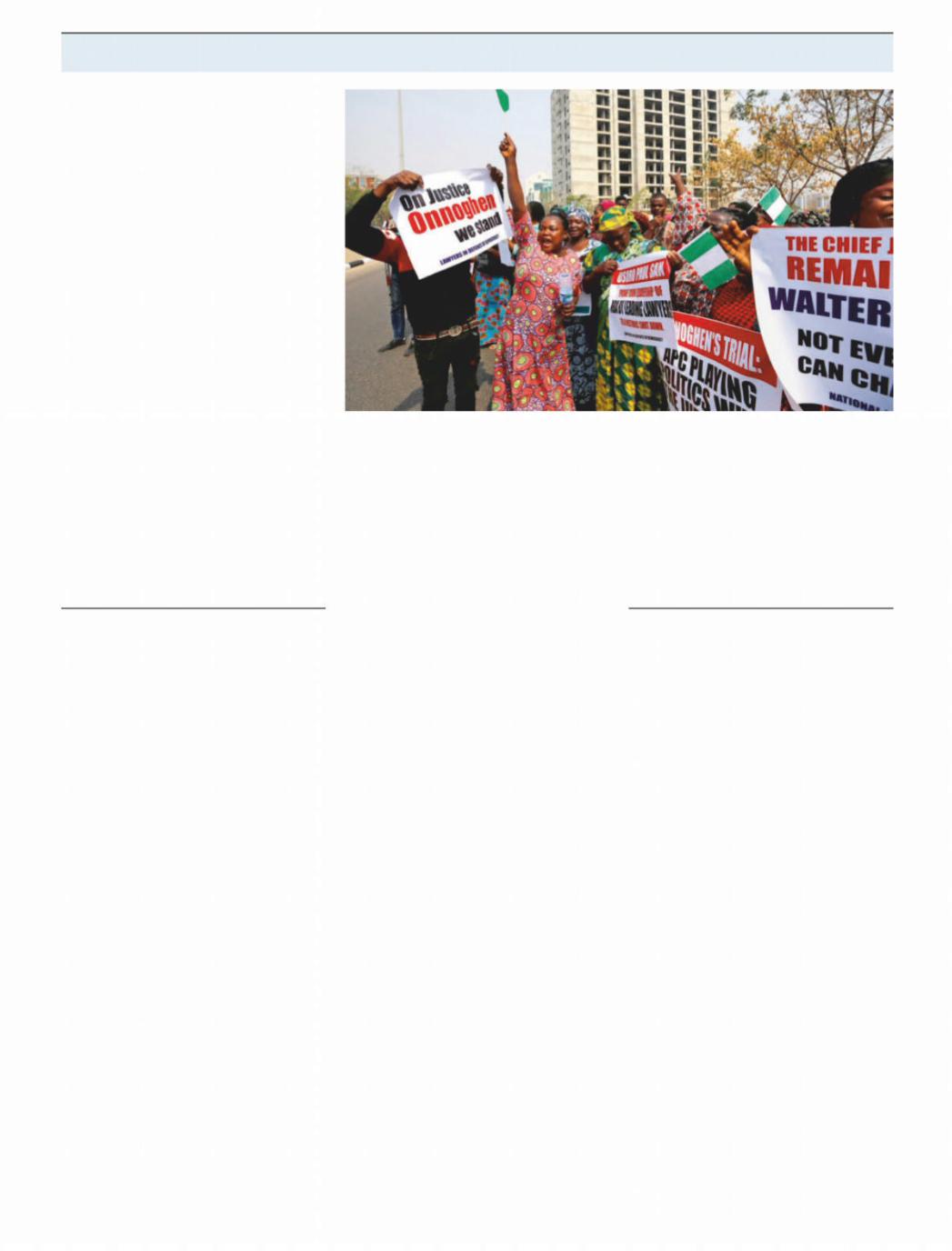
РЕЛИЗ ПОДГОТОВИЛА ГРУППА "What's News" VK.COM/WSNWS
vk.com/id446425943
40 Middle East & Africa
2 Hospice Africa, a non-profit outfit. For 17 years its sta mixed the solution “at the kitchen sink”, says Anne Merriman, the British doctor behind it. She met scepticism at first; some senior doctors said she was promoting euthanasia. Morphine still runs short; only 11% of need is met but its use has become normal. One cancer patient in Kampala keeps his bottle by the stove, next to the hot chocolate.
The second reason for Uganda’s success is that nurses are allowed to prescribe morphine. That is crucial because there is just one doctor for every 11,000 people. And the third reason is government support. O - cials see morphine as a useful painkiller rather than a shameful recreational drug. Since 2011the government and Hospice Africa have produced oral morphine in a pub- lic-private partnership. Patients get it free. The solution, dyed to show di erent strengths, is too diluted to interest addicts.
Esther Akongo lives with her sister in a gloomy single-room house in Kampala. Both have cancer. Since getting morphine, says Ms Akongo, she can at last get a good night’s sleep. But the happiest times are the regular trips to the hospice, where she can talk to other patients. Morphine brings respite; friendship brings joy. 7
Electioneering in Nigeria
Above the law
A B U J A
President Buhari suspends the chief justice just before an election
The wheels of justice turn slowly in Nigeria. On the rare occasions when corruption cases are brought against prominent people, petitions can take years to resolve. It was therefore unusual that on January 25th President Muhammadu Buhari suspended Nigeria’s Chief Justice, Walter Onnoghen, a mere 15 days after allegations of impropriety were lodged against the most senior judge in the country. This was the first time that Nigeria’s head of state had sacked a chief justice since 1975, when the country was under military rule. Mr Buhari’s move was not merely unusual. It was also unlawful. Nigeria’s constitution seeks to balance the executive, legislative and judicial branches of government; a power play by one part against a second needs the consent of the third. Mr Buhari did not seek support from the Senate, where he lacks the two-thirds majority needed to oust the chief justice, so his act is
widely viewed as being against the law.
It has also injected a dose of fury into a previously placid election campaign. Earlier this week Nigerian lawyers took to the
Objection! |
|
|
|
streets of Abuja, the capital, in protest (see |
himself to Bill Gates, Steve Jobs and Lee |
||
picture). Some stopped work for two days. |
Kuan Yew, is seen as less tough on graft. Yet |
||
Atiku Abubakar, Mr Buhari’s main rival in |
Mr Buhari seems to think that the benefits |
||
the presidential race that takes place on |
of removing the top judge are worth the |
||
February 16th, has called the move “a bra- |
costs. Thus he has reminded Nigerians that |
||
zen act of dictatorship”. On January 26th |
since his election in 2015 he has done little |
||
America, Britain and the |
issuedeustate- |
to strengthen institutions, which is what |
|
ments expressing concern. |
|
Nigeria needs most of all. 7 |
|
Few observers doubt that Mr Onnoghen |
|
||
has a case to answer. Under Nigerian law, |
Lebanon’s economy |
||
o cials have to disclose their assets every |
|||
four years and upon taking a new job. He |
Default settings |
||
has not done so since his promotion in |
|||
March 2 017Nigeria’s. judiciary, like many |
|
||
of the country’s institutions, is widely seen |
|
||
as corrupt. Yet due process has not been |
|
||
followed, notes Aminu Gamawa, a member |
C A I R O |
||
of Nigeria’s bar association. |
|
||
|
A paralysed caretaker government |
||
There are probably two reasons why Mr |
|||
drifts towards a debt crisis |
|||
Buhari sacked him, critics say. Both are po- |
|||
ity the finance minister who must in- |
|||
litical. First, the Supreme Court is due to |
|||
hear appeals lodged by the All Progressives |
Pstil confidence in Lebanon, which has |
||
Congress ( apc ), Mr Buhari’s party, againstthe fifth-highest public-debt burden in the |
|||
decisions by the Independent National |
world, at150% of |
gdp . But Ali Hassan Khalil |
|
Electoral Commission, which barred it |
did a staggeringly poor job of it when he |
||
from running candidates in two of Nige- |
told a local newspaper his country was |
||
ria’s 36 states. Mr Onnoghen is viewed by |
ready to default. “It’s true that the ministry |
||
the apc as being close to Mr Abubakar’s |
is preparing a plan for financial correction, |
||
People’s Democratic Party. Second, the |
including a restructuring of public debt,” |
||
chief justice would have to preside over any |
he said in an interview published on Janu- |
||
litigation arising from a disputed election |
ary 10th. Within a day its bonds fell to a re- |
||
result. This matters in a country with a his- |
cord low. Mr Khalil soon clarified that he |
||
tory of electoral shenanigans, preceded |
meant rescheduling, not restructuring. For |
||
and followed by deadly violence. |
ratings agencies the distinction is moot. |
||
On January 29th the Senate asked Mr |
On January 21st Moody’s downgraded Leba- |
||
Buhari to reinstate Mr Onnoghen. But the |
non’s bonds even deeper into junk. |
||
president shows no sign of backing down. |
In a normal country, one banker mused, |
||
He has already sworn in a new chief justice, |
Mr Khalil’s comments might be a sackable |
||
Ibrahim Tanko Muhammad. (Technically |
o ence. Lebanon is not a normal country. |
||
Mr Tanko is the “acting” chief justice, but |
Nine months after the first parliamentary |
||
temporary appointments have a way of be- |
election in nine years, nobody has formed |
||
coming permanent.) |
a government. The prime minister-desig- |
||
It is not obvious that Mr Buhari would |
nate, Saad Hariri, is stuck in a dispute with |
||
need to cheat to win re-election. His anti- |
six Sunni |
mp s aligned with Hizbullah, the |
|
corruption tirades appeal to voters. His op- |
powerful Shia militia-cum-party. Parlia- |
||
ponent, Mr Abubakar, though he likens |
ment is frozen. There is no budget for 2019.1 |
||
http://new.guap.ru/i04/contacts
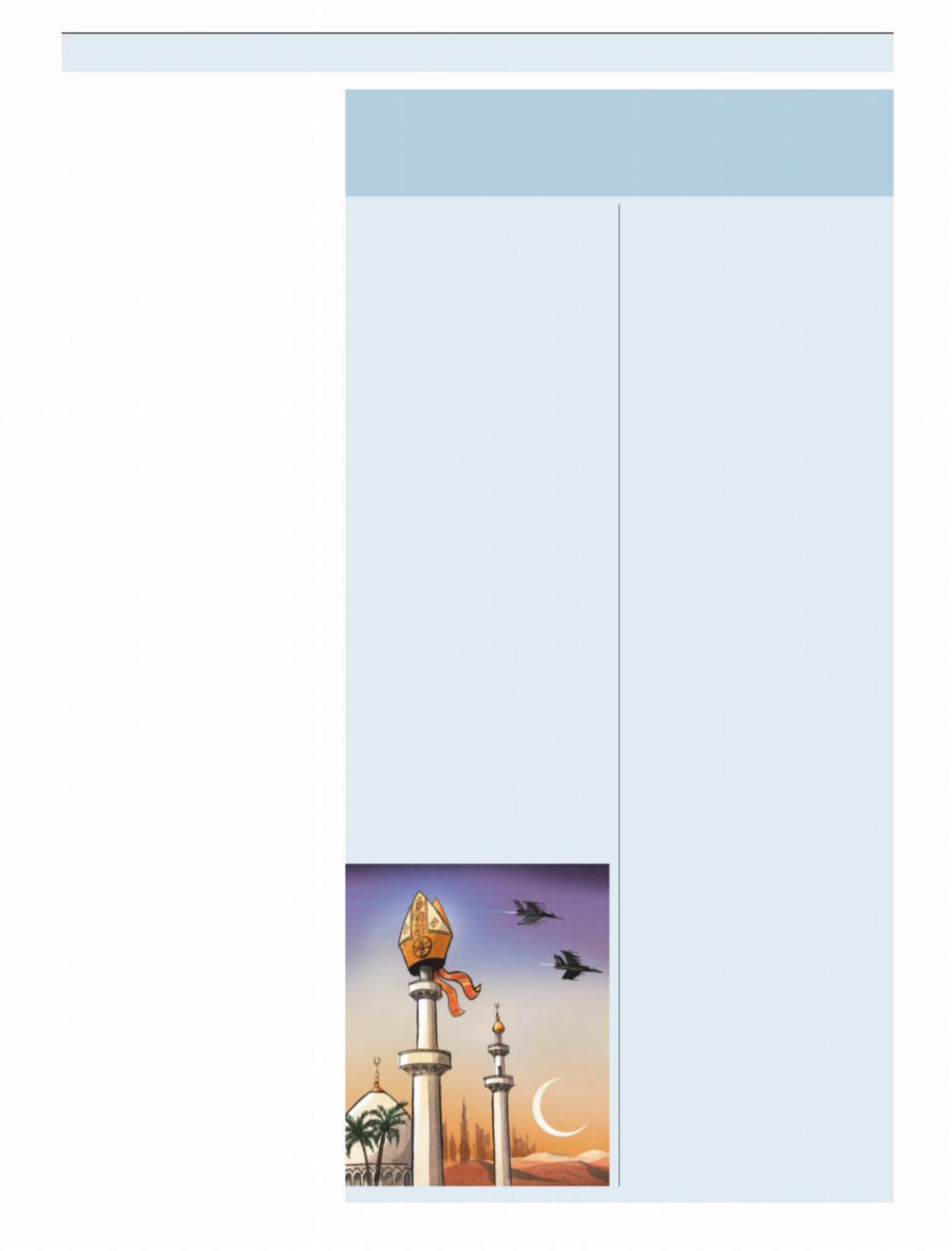
|
РЕЛИЗ ПОДГОТОВИЛА ГРУППА "What's News" VK.COM/WSNWS |
vk.com/id446425943 |
|
The Economist February 2nd 2019 |
Middle East & Africa 41 |
2 Even if Mr Hariri wanted to fire his finance minister, doing so would lead to weeks of haggling over a replacement.
This is hardly Lebanon’s worst political jam. From 2005 to 2017 parliament could not pass a budget. But it comes at a time of looming economic crisis as well. Since 2010 gdp growth has averaged less than 2% a year. Inflation hit 7.6% in 2018, its highest in five years. The purchasing managers’ index fell from 46.7 to 46.2 in December. A figure below 50 suggests a contraction; Lebanon has not crossed above that threshold since 2013. The chamber of commerce says about 2,200 firms closed last year. New construction has slowed and an estimated $9bn worth of properties are empty.
With politics in disarray, the central bank drives economic policy. It borrows billions from commercial banks to prop up the Lebanese pound against the dollar. For- eign-currency deposits must grow by 6-7% annually if it is to defend the peg, reckons the imf . In the11months to November 2018, the last month for which data are available, banks’ holdings of foreign currency increased by just 4%. Not all of that is new money, either. Customers seem to have converted 3.9trn pounds ($2.6bn) to dollar accounts. The central bank has ordered firms like Western Union to stop paying out money transfers in dollars.
Optimists wave this away with breezy talk of Lebanon’s “resilience” and hope that wealthy Gulf patrons will come to the rescue. Qatar stepped in after Mr Khalil’s blunder and promised to buy $500m in Lebanese bonds, which helped stabilise the market. Not to be outdone by his Gulf rival, the Saudi finance minister pledged to “support Lebanon all the way”, though he offered no details. But half a billion is a pittance for a country with $49bn in outstanding dollar bonds. Resilience does not pay creditors.
In January the finance ministry released a study from McKinsey, a consultancy, with advice on fixing the economy. Though some of its ideas are unrealistic, a few are common sense. Tourism and agriculture have room to grow. Lebanon’s welleducated population could export services or create tech startups. The country also stands to gain from reconstruction in warravaged Syria.
But all the suggestions rest on the government fixing infrastructure, such as unreliable electricity and some of the world’s worst internet connections. Foreign donors o ered to help at a conference in Paris last year, pledging $11bn in mostly concessional loans. But the money will not flow until Lebanon has a government. Ministers warn that donors are ready to take their cash elsewhere. That would be another blow to investor confidence—though at least that would be one debt Mr Khalil would not have to worry about. 7
Gracing an autocracy
Pilgrims in the Gulf
The first papal visit to the Arabian peninsula is stirring troubled waters
hristian pilgrims are not often |
|
opposes the political Islamism—notably |
||
Cseen in the Arabian peninsula, where |
|
the Muslim Brotherhood—which har- |
||
Islam was born. But they are flocking to |
|
nesses religion as a force for social and |
||
one of its emirates, Abu Dhabi, for its |
|
political change. This is sponsored by the |
||
first papal mass on February 5th. More |
|
uae’s Gulf rival, Qatar. |
|
|
than100,000 are preparing to pack the |
|
Pope Francis appears to prefer Prince |
||
Zayed stadium, adorned with a big cross, |
|
Muhammad’s strand of the faith. In an |
||
to celebrate the Eucharist with Pope |
|
interview in 2016 he warned against the |
||
Francis. Hotels are full of pilgrims chant- |
export of an “overly Western model of |
|||
ing hosannas. Some hold standards |
|
democracy” to the Middle East. Unlike |
||
bearing the Christian dove of peace |
|
his predecessor, Benedict XVI (who upset |
||
tweaked with wings the colours of the |
|
Muslims with a quote about the Prophet |
||
United Arab Emirates ( |
) flaguae. The |
|
Muhammad’s propagation of the faith by |
|
pope is “a symbol of peace, tolerance and |
|
the sword), Pope Francis has reached out |
||
the promotion of brotherhood”, says |
|
to Muslims who seem to be tolerant. A |
||
Muhammad bin Zayed, the crown prince, |
quarter of all his papal visits have been to |
|||
de facto ruler and papal host. |
|
Muslim-majority countries, but he has |
||
Such hospitality is remarkable for the |
|
rarely spoken out against their autocrats. |
||
region. Further north in Syria and Iraq |
|
Some Catholics question whether the |
||
jihadists have uprooted ancient Chris- |
|
pope is right to take sides in intra-Mus- |
||
tian communities and torched their |
|
lim tussles. Others ask whether a peace- |
||
churches. Neighbouring Saudi Arabia |
|
maker should be visiting just one party to |
||
still bans churches and Christmas trees. |
|
a regional conflict (the |
anduaenot |
|
“Two religions shall not co-exist in the |
|
Qatar). In other instances he has visited |
||
Arabian peninsula,” snap the Koran- |
|
both sides, such as when he went to |
||
bashers, quoting a saying of the Prophet. |
|
Israel and Palestinian areas. |
||
Prince Muhammad, by contrast, has |
|
In a region of despots, Prince Muham- |
||
turned his emirate into an oasis of inter- |
|
mad is one of the more feared. Although |
||
faith dialogue. Grand muftis and prelates |
tolerant of religious minorities, he with- |
|||
hug for the cameras. Under his tenure, |
|
holds political freedoms from the Mus- |
||
the uae has o ered fleeing Arab Chris- |
|
lim majority, particularly Islamists, who |
||
tians a haven. It has a new cathedral,16 |
|
he fears might overthrow him. Parties are |
||
new churches and some 700 congrega- |
|
banned. Those who ask questions are |
||
tions. Remarkably, in 2013 the |
uaejailed. Migrants—Christians included— |
|||
ranked third among countries with the |
|
have no prospect of citizenship. They |
||
fastest-growing Christian populations. |
|
remain foreigners no matter how many |
||
At home and abroad, the prince is also |
|
generations are born in the |
. “If theuae |
|
promoting a strand of Islam that encour- |
|
pope really cared about humanity, he |
||
ages its followers to obey their rulers. It |
|
would speak about human rights,” says |
||
|
|
|
Muhammad Saqer al-Zaabi, an Emirati |
|
|
|
|
Islamist, exiled in London. |
|
|
|
|
The prince has bankrolled a regional |
|
|
|
|
campaign against Islamists, supporting |
|
|
|
|
the overthrow in 2013 of Egypt’s demo- |
|
|
|
|
cratically elected Islamist president, |
|
|
|
|
Muhammad Morsi. He also meddles in |
|
|
|
|
civil wars, whether in Libya or Somalia. |
|
|
|
|
For almost four years, he and Muham- |
|
|
|
|
mad bin Salman, the crown prince of |
|
|
|
|
Saudi Arabia, have bombed and besieged |
|
|
|
|
Yemen, after its government was pushed |
|
|
|
|
out by Houthi rebels. The war has killed |
|
|
|
|
tens of thousands, driven millions to the |
|
|
|
|
brink of starvation and drawn accusa- |
|
tions of war crimes. “It’s a horrible state and the pope’s visit lends credibility to that government,” says Khaled Abou el Fadl of the University of California in Los Angeles. “I’m worried about the moral message he’s sending.”
http://new.guap.ru/i04/contacts

РЕЛИЗ ПОДГОТОВИЛА ГРУППА "What's News" VK.COM/WSNWS
The Economist February 2nd 2019
|
|
defence projects launched with great fan- |
|||
|
|
fare in December 2 |
Its017members. agreed |
||
|
|
“to do things together, spend together, in- |
|||
|
|
vest together, buy together, act together”, as |
|||
|
|
Federica Mogherini, the |
eu ’s foreign-poli- |
||
|
|
cy chief, put it. The plan would be lubricat- |
|||
|
|
ed with cash from the European Commis- |
|||
France and Germany are pushing rival models for defence co-operation, but |
sion. But where Germany saw |
as anpesco |
|||
opportunity to put wind back into the sails |
|||||
neither is very ambitious |
|
||||
|
of the European project, France was irked |
||||
$50bn to their collective annual expendi- |
|||||
that inclusivity had trumped ambition. |
|||||
ture since 2015, the year after Russia invad- |
And so, even as pesco was being final- |
||||
ed Ukraine. That is equivalent to tacking on |
ised, in a two-hour address at the Sorbonne |
||||
a military power the size of Britain or |
in September 2 |
017, acMronM demanded |
|||
France. Donald Trump ought to take note. |
something meatier: a “common interven- |
||||
What Europeans cannot agree on is pre- |
tion force, a common defence budget and a |
||||
cisely how these swelling capabilities |
common doctrine for action”. Nine states |
||||
should be joined up and used. Duelling vi- |
signed up to the resulting e 2 iin June 2018. |
||||
sions of Europe’s military future have giv- |
Notably, it stood independent of the eu and |
||||
en rise to a proliferation of schemes. Sea- |
so welcomed Denmark, which opts out of |
||||
soned diplomats with decades of experi- |
the eu ’s common security and defence |
||||
ence in European defence policy admit that |
policy, and Britain, leaving completely. |
||||
even they are occasionally ba ed. |
Germany, quietly seething, saw the ef- |
||||
Start with |
pesco , a collection of 34 fort as aeuhalf-baked French attempt to drag |
||||
|
|
others into its African wars while diluting |
|||
Also in this section |
the eu ’s role. It signed up anyway, wary of |
||||
upsetting a wobbly Franco-German axis |
|||||
43 The Baltics and Russia |
|||||
any further. “Germans couldn’t say no,” |
|||||
44 Catalonia’s separatists on trial |
says Claudia Major of the German Institute |
||||
for International and Security A airs, “but |
|||||
44 The marten menace |
|||||
they hated it.” Italy, the eu ’s third military |
|||||
45 The gilets jaunes organise |
power, was less emollient. Its newly elect- |
||||
ed populist government simply refused to |
|||||
45 A Turkish ghost town |
|||||
join at all. |
|
|
|||
|
|
In truth, both schemes have been mis- |
|||
46 Charlemagne: Varoufakis abroad
understood. pesco is not a standing army1

|
РЕЛИЗ ПОДГОТОВИЛА ГРУППА "What's News" VK.COM/WSNWS |
vk.com/id446425943 |
|
The Economist February 2nd 2019 |
Europe 43 |
2 or alliance. It is a way to reduce duplication, join up national defence industries and set standards for everything from battlefield medicine to military radios. Nor is e 2 ia roving strike force, as its grandiose name suggests, but a framework for Europe’s ambitious armed forces (its mem-
bers account for four-fifths of |
militaryeu |
|
spending) to act together in future crises. |
||
Its members discuss scenarios from the |
||
Caribbean to the Baltic, rather than just |
||
France’s African stomping grounds. |
||
In theory, |
pescoand e 2 ican not only |
|
support one another but also plug into |
||
nato. In practice, things may be more com- |
||
plicated. Ms Major warns that smaller |
||
states, like the Baltics, will be spread thin. |
||
She suggests that some may favour France’s |
||
glitzier initiative out of the Elysée Palace |
||
over its dowdier eu cousin. |
|
|
The bigger problem is the gap between |
||
the lofty rhetoric of political leaders and |
||
the essential modesty of these defence |
||
drives. The |
haseu always accepted that it |
|
should focus on crisis management (fighting the likes of pirates and tra ckers) rather than collective defence (fighting Russians). For all the big talk, that remains so.
Not that Europeans are sitting on their guns. European forces are involved in everything from anti-piracy patrols o Somalia to training for soldiers in the Central African Republic. The eu ’s mission in Mali involves over 620 people from 22 countries; it has trained nearly 12,000 Malian troops. That is impressive. But there is a disconnect between political rhetoric, which hints at fears of American abandonment, actual policy, which makes no pretence of filling such a vacuum, and practical action, which is even further behind.
A recent study by Britain’s and Geriissmany’s dgap think-tanks found that the would struggle to meet most of the ambitions implied by its own common security and defence policy, itself a modest document. It would be out of its depth altogether if it faced simultaneous crises or if Britain, which makes up a quarter of the bloc’s defence spending, stayed away. Bigger fights, such as the air campaign against Libya in 2011, are out of the question.
Furthermore, although some pesco projects are innovative and important, like anti-mine drones and plans to share overseas bases, others are more dubious. A proposed spy school will be run by Greece and Cyprus; both have extensive ties to Russia.
Instead of working through clunky institutions, many Europeans are simply cutting smaller deals. Last year Britain bolstered bilateral defence ties to France, Poland, Germany and Norway. To the north, Sweden, Finland and Norway are integrating their air and naval forces. In the south, Estonia has chipped into France’s war in Mali. A genuine European army seems a long way o . 7
Geopolitics
How the Baltics resist Russia
R I G A , TA L L I N N A N D V I L N I U S |
|
As they prepare for elections, |
’s |
three tiny front-line states look robust
In the early 1990s the president of newly independent Estonia gave a speech in Hamburg. In it, he disparaged the Soviet occupation of the Baltic states. A littleknown Russian o cial was so outraged that he stormed out. It was Vladimir Putin. This story, recounted in Neil Taylor’s new history of Estonia, is instructive. Mr Putin has called the break-up of the Soviet Union the “greatest geopolitical catastrophe of the [20th] century”. To Estonians, Latvians and Lithuanians, that label applies better to the Soviet Union itself. Discussions of history often start with the phrase “Stalin murdered my grandparents.” The sense that their giant neighbour does not truly respect their indepen- dence—let alone their membership of the eu and nato since 2004—pervades Baltic
politics to this day.
Given how tiny the Baltic states are, and how vast and threatening the Russian military exercises near their borders, you might expect them to be gloomy. Especially when the president of their main ally, America, seems to view alliances as encumbrances. Yet the mood is oddly upbeat.
Despite Donald Trump’s doubts, the nato mission in the Baltics is e ective. A multinational nato battalion in each country is small enough not to provoke Russia but big enough to deter it. “It’s bril-
eu
Braced for bears and bots
liant,” says a Latvian spook. Some 19 out of 29 nato members have people on the ground. If Mr Putin were to invade, he would have to kill citizens from most of them, making a respnatonse inevitable. That is probably too big a risk even for him.
Despite Mr Trump’s isolationist rheto-
ric, military co-operation with America has nato
improved during his presidency, thanks to a bigger Pentagon budget and the ardent support of lawmakers who visit the Baltics, says a Lithuanian o cial. The Americans help with intelligence and live-firing ranges for tanks. All the Baltics would like to see more American troops on their soil. Noting that Poland has o ered to host a big American base and call it “Fort Trump”, the Lithuanian o cial wryly suggests that the Balts should o er to host forward operating bases and name them after Melania, Ivanka and Donald junior.
All three Baltic states spend around 2% of gdp on defence—the targetnato that Mr Trump often berates allies for not meeting. Since Russia grabbed Crimea, Lithuania has brought back conscription (Estonia has it, too). Training includes guerrilla tactics.
Russia continually tests |
’s denato- |
|
fences. Sometimes it does this by buzzing |
||
warplanes briefly into Estonian airspace to |
||
see how quickly the defenders respond. |
||
More often it does it digitally, with a veneer |
||
of deniability. Attacks are routed via com- |
||
promised computers that can be anywhere. |
||
Lights on a big screen at the Estonian Infor- |
||
mation System Authority, a government |
||
body, show them pinging in from all |
||
around the world. Lithuania su ered |
||
50,000 hacks in 2 |
“It’s017constant,”. says |
|
an o cial. |
|
|
Yet since a massive cyber-attack on Estonia in 2007, cyber-defences have sti - ened. Twelve years ago hackers temporarily crippled banks, media outlets and government o ces after Estonia had the temerity to move a much-hated statue of a Red Army soldier to a less prominent site in Tallinn, the capital. Since then, all three states have poured resources into thwarting digital skulduggery. Estonia hosts a nato cyber-security centre. Separately, the state recruits tech-savvy reservists to spot vulnerabilities. Baltic governments are confident that the Russians have not hacked their voting systems, but they remain vigilant. Estonia holds a parliamentary election in March; Lithuania, a presidential one in May. All three countries will
take part in |
electionseu |
this spring; all are |
wary of Muscovite meddling. |
||
An even bigger worry is information |
||
war. Russian trolls and fake newsmongers are determined to undermine nato, the eu and Baltic democracy. They exaggerate problems, such as discrimination against Rus- sian-speakers. They invent outrages, such as the rape by German nato soldiers of a non-existent Lithuanian orphan. They stir1
http://new.guap.ru/i04/contacts
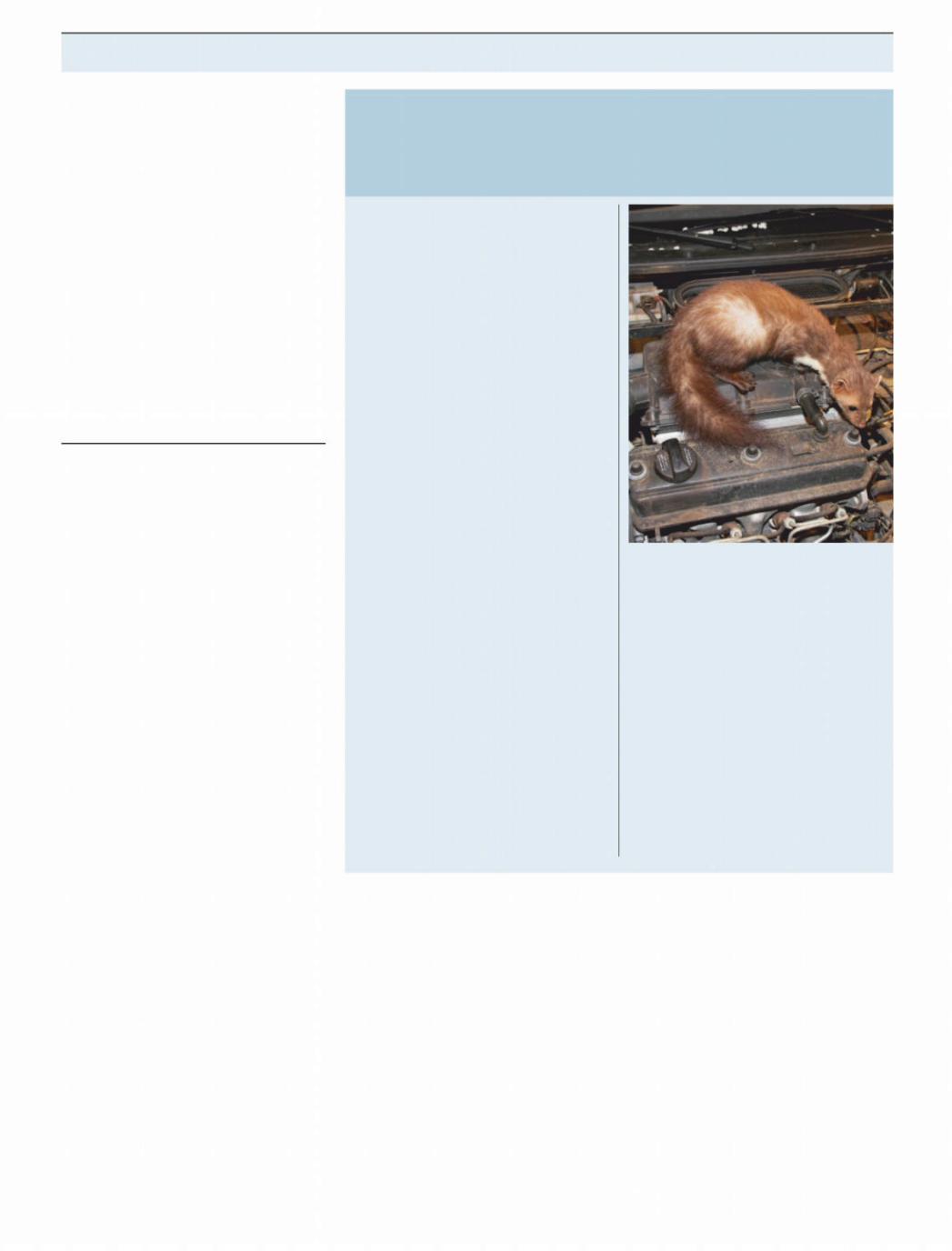
|
РЕЛИЗ ПОДГОТОВИЛА ГРУППА "What's News" VK.COM/WSNWS |
vk.com/id446425943 |
|
44 Europe |
The Economist February 2nd 2019 |
2 up disputes, for example over immigration. Lithuania’s president, Dalia Grybauskaite, recently warned that “militant illiteracy and aggressive populism” posed a threat to her country.
One problem is that Russian minorities in the Baltics tend to watch Russian television, which bubbles with propaganda. But ethnic natives do not, and after decades of hearing lies from Moscow, “we’re vaccinated,” says Eeva Eek-Pajuste of the International Centre for Defence and Security, a think-tank in Tallinn. Most disbelieve anything that sounds Putinny. Visitors to Narva, where a river separates Estonia from Russia, can see visual evidence of the difference in political culture. The donatedeu a big dollop of money for a walkway on both sides. The one on the Russian side is only a fraction as long. 7
Spain
Justice in the dock
M A D R I D
The trial of Catalan separatism
For up to 15 months nine Catalan separatist leaders have been in jail. On February 4th they and three others are due to start what will be the first of many days in the Supreme Court as the oral phase of their trial on charges of rebellion and misuse of public funds gets under way. The charges, which could potentially result in sentences of up to 25 years in jail, arise from an unconstitutional referendum and illegal declaration of independence in one of Spain’s
largest and richest regions in October 2 For supporters of Catalan independence, it is a political trial. For many Spaniards it is retribution for a conspiracy to break up their country. It is also a test of the impartiality of the country’s judiciary.
The investigating judge, Pablo Llarena, contends that the defendants, most of whom were members of Catalonia’s regional government, pursued for several years a plan to achieve independence “whatever the cost”. He points to “violent episodes” in the final weeks of the campaign, especially a demonstration in which police and court o cials searching a Catalan government o ce in Barcelona were barred from leaving for hours, while their vehicles were trashed.
In the aftermath of the referendum, which Spanish police tried but failed to prevent, Spain’s government imposed direct rule in Catalonia. It called a fresh regional election in which the separatists again won a narrow majority of seats, though with only 47.5% of the vote.
Wildlife
The marten menace
A M S T E R DA M
They are cute, furry and can disable a particle accelerator
he heavy snowfall in central Europe |
|
|
||
Tso far this year is making life hard for |
|
|
||
stone martens. A weasel-like animal, |
|
|
||
half a metre long with brown fur and a |
|
|
||
white blaze on its chest, the stone mar- |
|
|
||
ten has tiny paws too small to keep it |
|
|
||
suspended on soft snow. It thus has an |
|
|
||
endearing habit of walking along cross- |
|
|
||
country ski tracks, where the snow is |
|
|
||
packed harder. It also has a less endear- |
|
|
||
ing habit: gnawing on rubber. Specifical- |
|
|
||
ly, it likes to crawl into car-engine cav- |
|
|
||
ities and chew on the wiring. |
|
|
||
As a result, in Germany, car insurance |
|
|
||
that covers |
Marderbisse(marten bites) is |
|
|
|
a must. According to |
gdv , an insurers’ |
|
||
group, martens were the fourth-leading |
|
|
||
cause of non-collision auto damage in |
|
|
||
Germany in 2 |
017. |
They chewed through |
|
|
€72m ($79m) worth of cables, up from |
|
|
||
€66m the year before and €28m in 2005. |
Coming soon to a BMW near you |
|
||
The rise in marten damage may sim- |
|
|||
ply be the consequence of more martens. |
|
|
||
The population has grown in recent |
(lhc)in Switzerland, short-circuiting it |
|||
decades, and they are colonising areas |
and briefly knocking out the particle |
|||
from which they had disappeared, such |
accelerator. Earlier that year the |
lost lhc |
||
as the eastern Netherlands. Another |
power when a cable was chewed through |
|||
reason may be declining fear of humans, |
by an animal which, though rather |
|
||
who create lots of warm, dry spaces like |
charred, appears to have been a marten. |
|||
attics that make perfect marten dens. |
What explains the martens’ suicidal |
|||
“They are one of these animals that |
tastes? Some biologists note that electri- |
|||
have become part of the suburban eco- |
cal insulation manufactured in east Asia |
|||
system,” says Kees Moeliker, director of |
sometimes contains fish oil. Others |
|
||
the Rotterdam Museum of Natural His- |
think the culprits may be mostly young |
|||
tory. He keeps a collection of animals |
martens that do not know what is edible; |
|||
that have died in unusual interactions |
damage tends to peak in spring, when |
|||
with humans,017. including the most dra- |
the young are born. Asked for his theory, |
|||
matic case of marten damage ever. In |
Mr Moeliker laughs. “This is something |
|||
2016 one hopped onto an electric trans- |
we will probably never know, what’s in |
|||
former at the Large Hadron Collider |
the head of the marten,” he says. |
|
||
The referendum certainly took place in an atmosphere of intimidation. In approving laws to authorise the referendum and set up a new state, Catalonia’s parliament violated Spain’s constitution and its own statute of home rule. Quim Torra, the current Catalan president, recently urged Catalans to pursue “the Slovenian way” to independence, which involved a ten-day conflict and some 80 deaths. Yet many lawyers question whether all this amounts to su cient violence to justify the charge of rebellion, designed for military coups.
It is an “unfair, irregular trial” in which the defendants’ rights have been violated, says Alfred Bosch, a member of the current Catalan government. He notes that courts in Germany, Scotland and Belgium granted bail to other defendants, including Carles
Puigdemont, the former regional president, who fled abroad, before Mr Llarena dropped extradition proceedings. The Socialist government of Pedro Sánchez, which took o ce in June, is uncomfortable with the pre-trial detention of the defendants. But it insists that this is a judicial matter in which it cannot interfere.
The Catalan independence bid has unleashed a conservative reaction in the rest of Spain. In a regional election in Andalucia in December, Vox, a previously insignificant far-right party, won11% of the vote. Vox is using a quirk in Spain’s legal system to join the state’s case against the separatists as a private party, which will allow it to cross-examine the defendants. This is a propaganda gift for the separatists, who claim, unfairly, that Spain’s judiciary is a1
http://new.guap.ru/i04/contacts
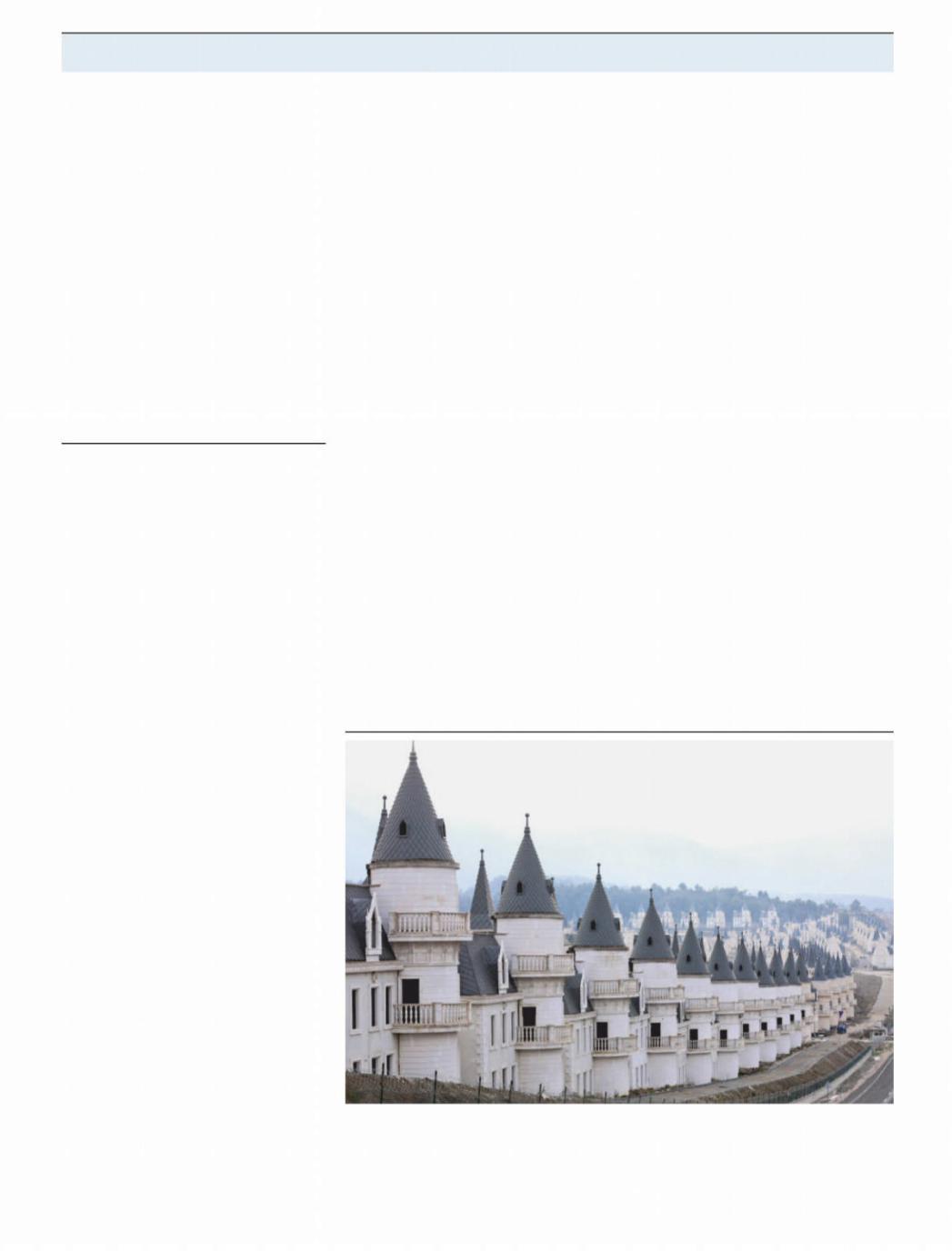
РЕЛИЗ ПОДГОТОВИЛА ГРУППА "What's News" VK.COM/WSNWS
vk.com/id446425943
The Economist February 2nd 2019 |
|
|
|
|
|
|
Europe |
45 |
|
2 holdover from Franco’s dictatorship. |
|
launched her own party, the Citizen-Led |
for the |
gilets jaunesis a vote for Macron,” |
|
||||
Mr Sánchez hopes to defuse the Catalan |
Rally ( |
ric ). A 31-year-old nursing assistantdeclared Eric Drouet, a lorry driver who |
|
||||||
conflict. He wants the separatist parties to |
from Normandy, Ms Levavasseur, like her |
runs the most popular |
giletsFacejaunes- |
||||||
vote for his budget, which includes a dol- |
Breton counterpart, has become another |
book group, “Angry France”. |
|
||||||
lop of extra money for Catalonia. Some may |
familiar face on French television. She says |
For now, Ms Levavasseur says that her |
|
||||||
do so: there are growing fissures within |
her party will be ready to fight elections in |
party’s role is one of co-ordinating di er- |
|
||||||
Catalan separatism, especially between Mr |
May to the European Parliament, and has |
ent initiatives rather than a quest for a po- |
|
||||||
Puigdemont and Oriol Junqueras, his for- |
already named the first ten candidates on |
litical monopoly on the movement. But |
|
||||||
mer deputy, who is the leading defendant |
her party list. |
alsorichappens to be the |
even that will be tricky. Political sympa- |
|
|||||
but who does not back a further unilateral |
French acronym for “citizen-led referen- |
thies among the |
gilets jaunesreach from |
|
|||||
independence bid. |
|
|
dums”, which have become a popular de- |
far-left anarchists to the ultra-right. Ms Le- |
|
||||
The trial will keep the divisive Catalan |
mand |
from the |
gilets jaunesmovement |
vavasseur’s fairly moderate left-leaning in- |
|
||||
issue alive during European and regional |
since it widened out from fuel-tax revolt. |
stincts are at odds with others’. In a tv de- |
|
||||||
elections in May. A verdict may not come |
Ms Levavasseur is less clear about her poli- |
bate with Ms Levavasseur, Benjamin |
|
||||||
until the autumn. If the defendants are |
cies, insisting that they will emerge from |
Cauchy, a |
gilet jaunefrom Toulouse, said |
|
|||||
found guilty, Spain’s politicians will have |
the grassroots. But she shares with Ms |
that he has been talking to politicians on |
|
||||||
to decide whether to pardon them. That |
Mouraud a desire, as she puts it, to “put the |
the right about ways for the movement to |
|
||||||
would be unpopular. But letting them |
human” back into politics. |
“reclaim” an existing political party. |
|
||||||
moulder in jail will be seen abroad as a blot |
The transformation into a political |
Established political parties do not see |
|
||||||
on Spain’s democracy. 7 |
|
|
force of a disparate protest movement, |
it quite that way round. Jean-Luc Mélen- |
|
||||
|
|
|
whose members are linked through social |
chon, on the far left, as well as Ms Le Pen |
|
||||
France |
|
|
media and have widely diverging aims, is |
have been furiously courting the |
g |
||||
|
|
likely to be, as Ms Levavasseur conceded, |
jaunes . Protesters on the roundabouts, de- |
||||||
From protest to |
|
“quite complicated”. Just days after she |
clared Ms Le Pen, are “often our voters”. |
|
|||||
|
launched the party, her campaign director, |
That may be true. But many gilets jaunes see |
|
||||||
party |
|
|
Hayk Shahinyan, resigned, citing “doubts” |
Mr Mélenchon and Ms Le Pen, with their |
|
||||
|
|
about the venture (and concern about a |
seats in thegi- National Assembly, as part of |
|
|||||
|
|
|
let jaune who had his eye damaged in a |
the system and therefore part of the pro- |
|
||||
P A R I S |
|
|
clash with the police). He was followed by |
blem. A recent poll suggested that, if there |
|
||||
|
|
one of the candidates on her party list, who |
were a single gilet jaune list at the European |
|
|||||
The gilets jaunes are forming not one |
|
|
|||||||
|
had received threats on social media. |
elections, it would get 13%, denting both |
|
||||||
but two political parties |
|
|
|
||||||
|
|
Hard-core activists, who seek the over- |
Ms Le Pen’s score (17.5%) and Mr Mélen- |
|
|||||
|
|
|
|
||||||
hree months ago, Jacline Mouraud, a |
throw of Mr Macron and have no desire to |
chon’s (8%). With enfeebled Socialists (5%) |
|
||||||
Thypnotherapist from Brittany, opened |
end the weekly protests, have accused Ms |
and Republicans (11.5%), that leaves just |
|
||||||
her laptop, pressed record and o oaded |
Levavasseur of treason. After it emerged |
one party that would widen its lead thanks |
|
||||||
her grievances. Her coup de gueule (angry |
that she voted for Mr Macron in 2017, if only |
to a gilets jaunesparty: En Marche (22.5%), |
|
||||||
rant) video against the rising fuel prices, |
to keep out the nationalist Marine Le Pen, |
the party founded by Mr Macron, whom the |
|
||||||
posted on Facebook and YouTube, went vi- |
she was accused of being a stooge. “A vote |
movement so detests. 7 |
|
|
|||||
ral. It also helped launch the |
gilets jaunes |
|
|
|
|
|
|||
(yellow jackets) protest movement, which |
|
|
|
|
|
|
|
||
forced France’s president, Emmanuel Mac- |
|
|
|
|
|
|
|
||
ron, into his first political climb-down |
|
|
|
|
|
|
|
||
when he cancelled a fuel-tax increase. This |
|
|
|
|
|
|
|
||
week, buoyed by the popularity of the |
|
|
|
|
|
|
|
||
movement, Ms Mouraud decided to shift |
|
|
|
|
|
|
|
||
her protest from the streets to the ballot |
|
|
|
|
|
|
|
||
box, and launched a |
giletspoliticaljaunes |
|
|
|
|
|
|
|
|
party. Hers is the second such e ort to |
|
|
|
|
|
|
|
||
transform a leaderless movement into an |
|
|
|
|
|
|
|
||
organised political force. |
|
|
|
|
|
|
|
|
|
Ms Mouraud’s version, called The |
|
|
|
|
|
|
|
||
Emerging, has its sights on French munici- |
|
|
|
|
|
|
|
||
pal elections in 2020. Its guiding principle, |
|
|
|
|
|
|
|
||
she said, is to “remake politics around the |
|
|
|
|
|
|
|
||
heart and empathy” rather than “the rule of |
|
|
|
|
|
|
|
||
money”. With a paradoxical nod to En |
|
|
|
|
|
|
|
||
Marche, the movement founded by Mr |
|
|
|
|
|
|
|
||
Macron to launch his presidential election |
|
|
|
|
|
|
|
||
bid in 2 017,her party, she says, will be “nei- |
|
|
|
|
|
|
|
||
ther on the left, nor the right”. Among her |
|
|
|
|
|
|
|
||
ideas is a higher top income-tax rate and |
|
|
|
|
|
|
|
||
fewer perks for parliamentarians. After 11 |
|
|
|
|
|
|
|
||
weeks of demonstrations in cities across |
Turkey’s oddest ghost town |
|
|
|
|
||||
France, which have often ended in clashes |
|
|
|
|
|||||
Hundreds of identical mini French chateaux stand empty in various states of completion |
|
||||||||
with riot police, it was time, Ms Mouraud |
|
||||||||
declared, to move from protest to proposal. |
at the Burj al Babas housing development in northern Turkey after its developer, the |
|
|||||||
This initiative came only days after an- |
Sarot Group, filed for bankruptcy last year. If it is ever completed, the development will |
|
|||||||
other gilet jaune, Ingrid |
Levavasseur, |
boast more than 700 identical chateaux as well as shops, restaurants and meeting halls. |
|
||||||
http://new.guap.ru/i04/contacts
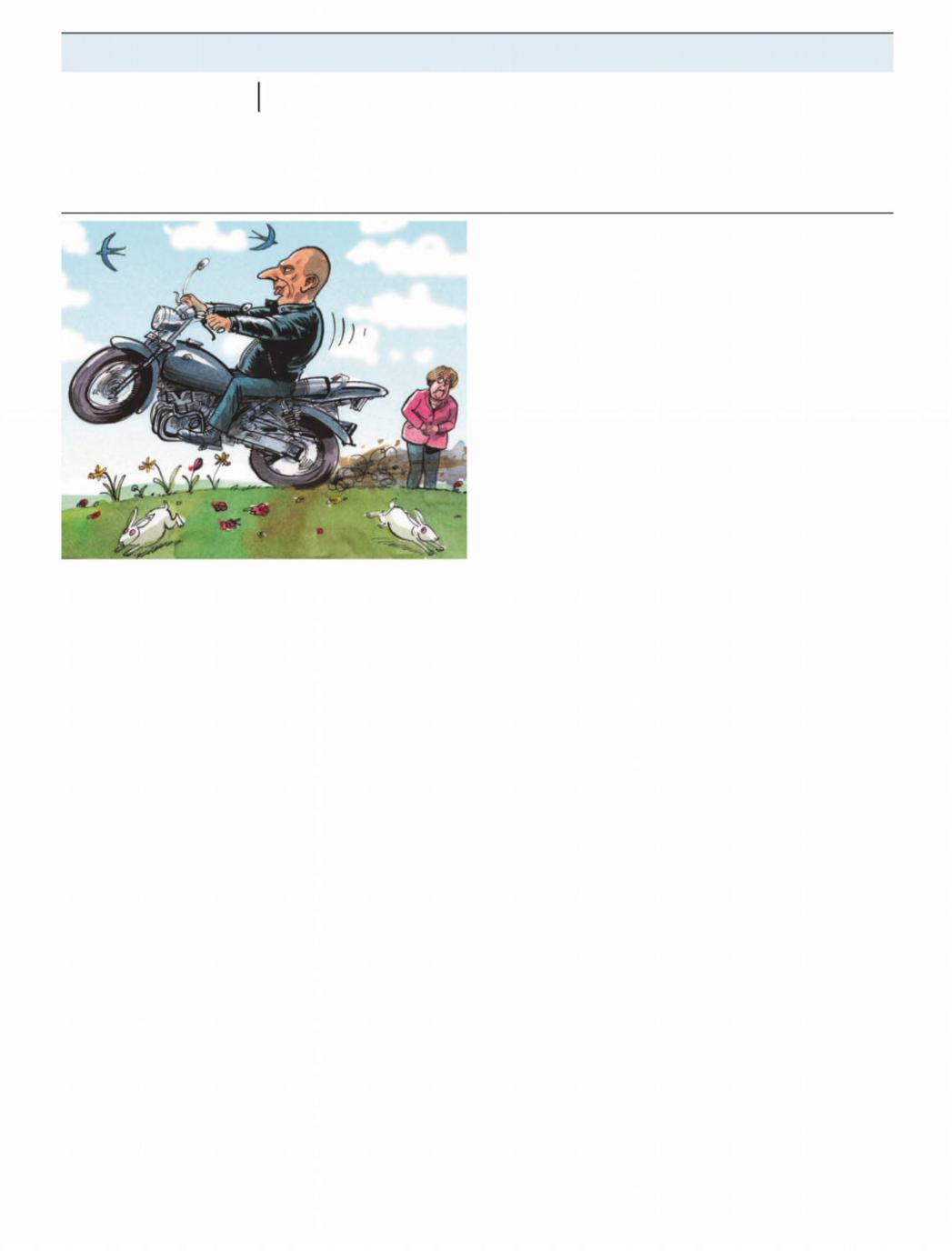
|
РЕЛИЗ ПОДГОТОВИЛА ГРУППА "What's News" VK.COM/WSNWS |
vk.com/id446425943 |
|
46 Europe |
The Economist February 2nd 2019 |
Charlemagne |
Varoufakis Sans Frontières |
A maverick leftist’s sally into transnational politics
|
|
|
rope. The proposals to be announced on that glorious day: €2.5trn |
|
|
|
|
in green investments from the European Investment Bank ( |
|
|
|
|
over five years, a guarantee from the European Central Bank that it |
|
|
|
|
will prop up the prices of |
bondseinb secondary markets and the |
|
|
|
mutualisation of (good) European debt to lower interest rates. |
|
|
|
|
All of this sends orthodox eyeballs skywards. Yet one does not |
|
|
|
|
have to agree with everything the Greek politician says to find |
|
|
|
|
some aspects of his e orts welcome. European Spring, the elector- |
|
|
|
|
al wing of a trans-European political movement called (rather irri- |
|
|
|
|
tatingly) d iem 25, wants to help Europeanise the European elec- |
|
|
|
|
tions. The parliament in Strasbourg is a supra-national body |
|
|
|
|
passing supra-national European legislation, but elections to it are |
|
|
|
|
fought on national lines by national parties. Europe’s media, trade |
|
|
|
|
unions and civic organisations are mostly national. Few political |
|
|
|
|
figures are known across borders. In the words of Elly Schlein, a |
|
|
|
|
young Italian European Spring candidate: “The is a round tableu |
|
|
|
|
where politicians have their backs to each other, facing domestic |
|
|
|
|
political concerns instead.” In other words, most of the eu ’s de- |
|
|
|
|
bates do not take place at the level where European power is exer- |
|
|
|
|
cised. European Spring thinks that needs to be corrected. |
|
|
|
|
Moreover, it may breathe some life into the old, tribal European |
|
|
|
|
politics. Traditional party groups in the European Parliament are |
|
n a warm o ce in Berlin’s trendy Kreuzberg district, Charle- |
moribund. Only last week it was alleged that Elmar Brok, a walrus- |
|||
Imagne is trying to persuade Yanis Varoufakis that he is a politi- |
like Christian Democrat from Germany, had been charging con- |
|||
cian. “It’s a necessity. I really dislike running and asking people for |
stituents to visit the parliament and made €18,000 a year from the |
|||
votes,” protests the Greek economist when asked about European |
wheeze. He denies the accusations. You do not have to agree with |
|||
Spring, his new transnational political party. Does he think of him- |
the European Spring’s proposals—which include a universal citi- |
|||
self as a politician? “No. The moment I do, shoot me.” Apparently |
zen’s income, totally open borders and relaxed fiscal policies—to |
|||
inadvertently, Mr Varoufakis won his seat in the Greek parliament |
welcome the possible arrival of new, fresh legislators like Ms |
|||
in 2015, became finance minister, took on the European economic |
Schlein in Strasbourg. “If you try to take over an existing political |
|||
establishment and failed. After six months, he discarded the |
party, you will be taken over by it,” warns Mr Varoufakis. “They are |
|||
chains of o ce in pique. “If you want to be a manager, you can |
bureaucratic machines wedded to the nation-state with an institu- |
|||
work for Goldman Sachs,” he sighs. |
|
tional aversion to ideas.” |
|
|
Not a politician? That evening, in an old warehouse in Berlin’s |
European Spring is at best a fringe outfit. Even Mr Varoufakis |
|||
east, Mr Varoufakis takes to the stage before a young, bookish, in- |
reckons it is unlikely to win more than a handful of seats, and he is |
|||
ternational audience at the launch of European Spring’s manifesto |
not known for understatement. So its e ects on the debate in |
|||
for May’s elections to the European Parliament. Perched on the |
Strasbourg and Brussels are likely to be limited. But at a time when |
|||
edge of his seat, he seems every bit the vote-wrangler. His right |
pro-Europeans seem ever more confined to the technocratic cen- |
|||
hand clasps the microphone, the left one depicts trillions of euros: |
tre of politics, it is welcome to find a transnational party making |
|||
slicing and restructuring debts, swishing from side to side to illus- |
the case for openness from a di erent perspective. Europe will |
|||
trate giant German surpluses, fingers flickering to imitate the vi- |
only be open in the future if openness has defenders on the right, |
|||
cissitudes of lily-livered social democrats. |
centre and left of politics. Many on the left—Jeremy Corbyn in Brit- |
|||
It is easy to mock Mr Varoufakis. As Greek finance minister, he |
ain, Jean-Luc Mélenchon in France, Sarah Wagenknecht in Ger- |
|||
hectored Eurocrats for their desiccated economic orthodoxies— |
many—are turning towards leftist tribalism, Euroscepticism and |
|||
sometimes reasonably (he correctly pointed out that Greece will |
anti-immigration politics in an attempt to win over disa ected |
|||
never repay all of its debts), sometimes outlandishly (covertly |
voters. But European Spring embraces none of those things. Mr Va- |
|||
planning a parallel Greek payments system). He was ridiculed for a |
roufakis stresses that the group has liberal strains, and that he has |
|||
photo-shoot in |
Paris Match |
, a French celebrity magazine,longwhichdealt with figures outside his own ideological camp (he is in |
||
showed him dining stylishly on his roof-terrace beneath the |
close contact with Norman Lamont, a British Conservative former |
|||
Acropolis. To many critics, his career is one unending book tour: |
finance minister). European Spring activists talk about bringing |
|||
tomes excoriating the international economic establishment fly |
together French and Polish workers to defuse national conflicts |
|||
o the shelves every time he bashes elites in the media. |
between the two, encouraging young European volunteers to help |
|||
Mr Varoufakis’s European ambitions do not exactly disprove |
refugees in hostels near the “Jungle” refugee camp in Calais and |
|||
the stereotype. He is running in the impending Greek parliamen- |
taking on the Italian government in cities like Naples. |
|||
tary election and in the European Parliament elections—for Ger- |
Times are tough for Europe’s liberals. Their tunes no longer |
|||
many. This is provocative in a country where Mr Varoufakis has |
sound so good in a post-crisis age, and they are struggling to find |
|||
long been demonised. “If we wanted to reform the Roman empire |
new ones. They will undoubtedly disagree with much that Mr Va- |
|||
we would start in Rome, not in southern Egypt,” he argues. At the |
roufakis and his comrades say. But they are at least fellow fighters |
|||
rally in Berlin he indulges in Utopianism, imagining the first press |
in an increasingly di cult struggle against the drift to a Europe of |
|||
conference on the Monday morning of a European Spring-led Eu- |
closed societies and economies. 7 |
|||
http://new.guap.ru/i04/contacts
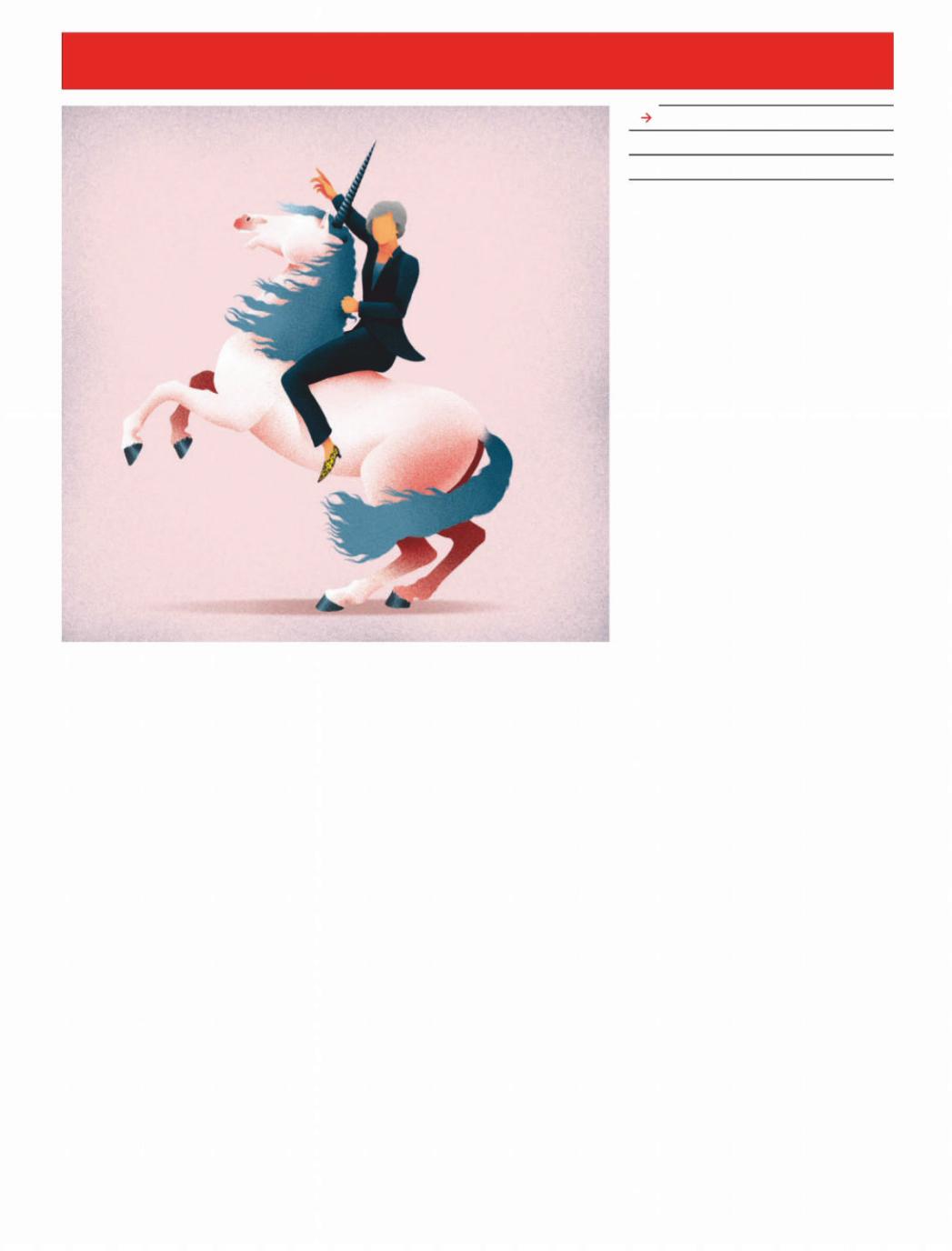
РЕЛИЗ ПОДГОТОВИЛА ГРУППА "What's News" VK.COM/WSNWS
The Economist February 2nd 2019 47
|
Also in this section |
|
48 |
Labour and Latin America |
|
49 |
Bagehot: Jeremy |
Corbyn’sBrexitbad |
|
|
|
Labour mp s defied their party whip to sink |
|||
Theresa’s temporary triumph |
|
|
the Cooper amendment; they may yet |
|||
|
|
come round to backing a revised deal. For |
||||
|
|
|
Mrs May, the only fly in the ointment was |
|||
|
|
|
the passage of another amendment, from |
|||
|
|
|
Dame Caroline Spelman, a Tory, to reject a |
|||
|
|
|
no-deal Brexit; but this has no legal force. |
|||
The prime minister has won parliamentary support to renegotiate the Brexit deal. |
The prime |
minister’s triumph will |
||||
prove short-lived, however. Even as the |
||||||
Yet she is unlikely to secure any substantive changes in Brussels |
|
|
||||
|
|
Brady amendment was being voted |
||||
|
|
|
||||
toms union with the European Union, is |
through, the |
waseu insisting |
that the |
|||
replaced by what it coyly called “alternative |
Brexit withdrawal agreement, which in- |
|||||
arrangements”. The second was a plan |
cludes the Irish backstop, would not be re- |
|||||
hatched by Tories from both the Remain |
opened. eu leaders are exasperated that |
|||||
and Leave wings of the party, dubbed the |
Mrs May now supports a plan that jettisons |
|||||
Malthouse compromise after the junior |
a central part of the deal which she had pre- |
|||||
minister who dreamt it up, for a di erent |
viously insisted was the only one available. |
|||||
backstop and for a longer transition period |
Brussels is the more unwilling to |
|||||
even if no withdrawal agreement is rati- |
reopen negotiations because Mrs May still |
|||||
fied. Although the Malthouse compromise |
refuses to change any of her negotiating |
|||||
seems unrealistic and Sir Graham’s plan |
red lines. As Kenneth Clarke, a veteran Tory |
|||||
lacks specifics, the combination was |
mp, pointed out, the logical outcome now |
|||||
enough for the Brady amendment to win by |
would be a permanent customs union with |
|||||
317 votes to 301. |
|
|
regulatory alignment, but Mrs May still |
|||
A third crucial element was Mrs May’s |
rules this out. Moreover, if the withdrawal |
|||||
promise to allow |
mp s another lot of votesagreement were reopened, the |
thinks eu |
||||
on Brexit on February 14th. This was |
other issues such as fisheries, the budget or |
|||||
enough to head o (for now) amendments |
Gibraltar would be raised by leaders who |
|||||
by Yvette Cooper, a Labour |
and Domp,- |
believe they have already given Britain too |
||||
minic Grieve, a Tory, to rip up normal par- |
many concessions. And the European Par- |
|||||
liamentary procedure and pass their own |
liament, whose assent is needed for any |
|||||
bills designed to stop a no-deal Brexit and |
deal, might well reject a deal that radically |
|||||
explore other options instead. Twenty-five |
alters the current one. |
1 |
||||
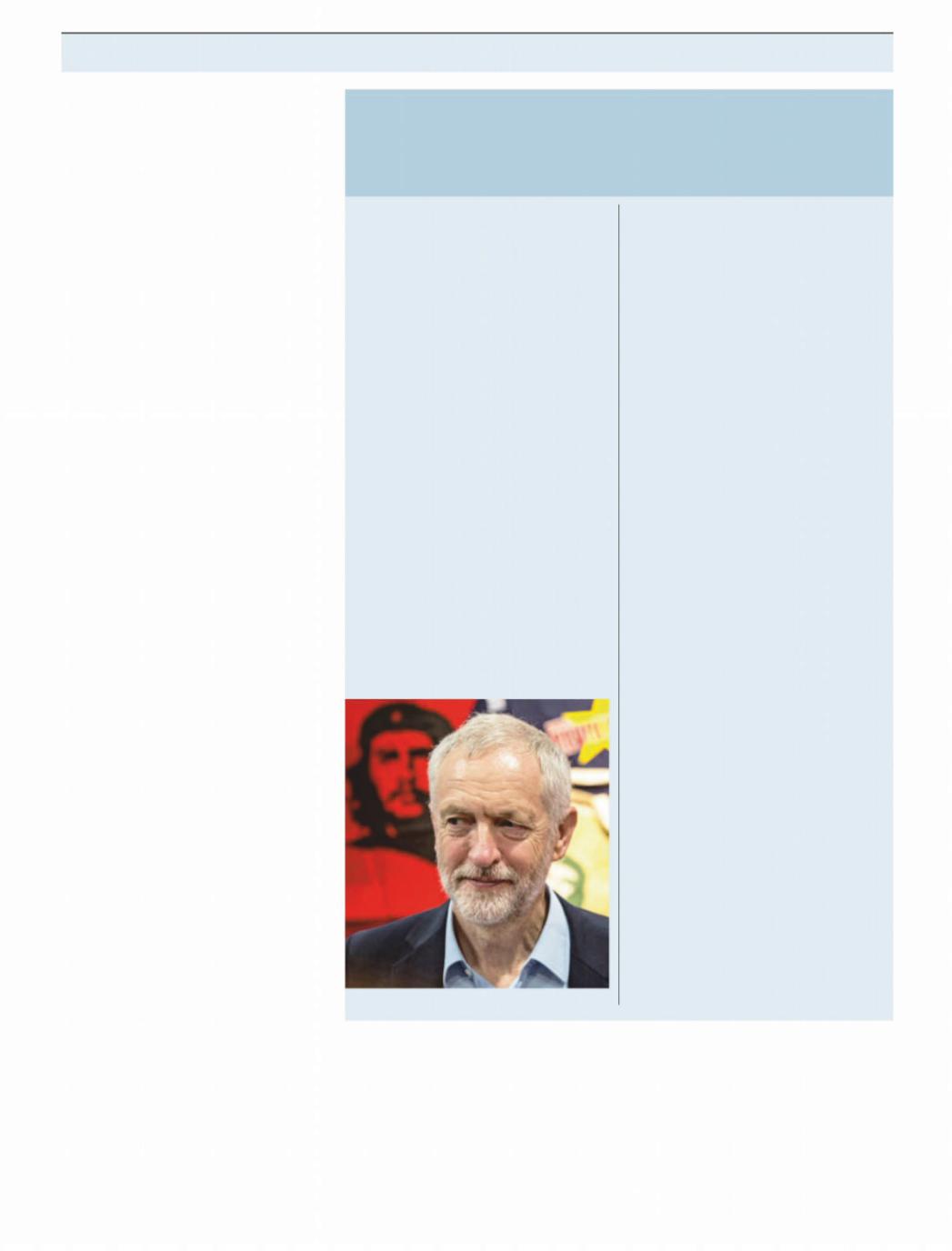
|
|
|
|
РЕЛИЗ ПОДГОТОВИЛА ГРУППА "What's News" VK.COM/WSNWS |
|
|
|||
vk.com/id446425943 |
|
|
|
|
|
|
|
||
48 |
Britain |
|
|
|
|
|
The Economist February 2nd 2019 |
||
2 |
Above all, the |
|
iseunot prepared to |
|
Labour and Latin America |
|
|
||
|
throw Ireland, which insists on keeping |
|
|
|
|||||
|
¡Hasta la victoria Corbynista! |
|
|||||||
|
the backstop in order to avoid a hard bor- |
|
|||||||
|
der, under the bus. The interests of a mem- |
|
|||||||
|
ber come above those of a leaver. It argues |
|
|
|
|
|
|||
|
that the backstop is an inevitable outcome |
Latin America provides a canvas for the left-wing worldview |
|
||||||
|
of Britain’s desire to leave the customs un- |
|
|||||||
|
|
|
|
|
|
||||
|
ion and single market. Stopping a hard bor- |
n event featuring Ivanka Trump, |
An obsession with all things Latin has |
||||||
|
der is also seen as vital to protect the Good |
Athe king of Spain and Jeremy Corbyn |
long been common in the Labour move- |
||||||
|
Friday Agreement that ended decades of |
sounds like a fever dream. But for one |
ment, points out Grace Livingstone of |
||||||
|
sectarian “Troubles” in Northern Ireland. |
curious afternoon in December the trio |
Cambridge University. The Cuban revo- |
||||||
|
Claims that some untried new technol- |
came together in Mexico City for the |
lution represented a socialism that did |
||||||
|
ogy can avoid all checks and controls on |
inauguration of Andrés Manuel López |
not stem from the dour bureaucrats of |
||||||
|
the Irish border are still viewed in Brussels |
Obrador. While a Brexit-induced political |
the Soviet Union (even if Havana did |
||||||
|
as magical thinking. Indeed, Brexiteers’ in- |
crisis raged in Britain, the Labour leader |
eventually fall in line behind Moscow). |
||||||
|
sistence on removing the backstop is |
was in Mexico to watch the new presi- |
Salvador Allende’s election in Chile in |
||||||
|
treated as evidence of doubts that their |
dent—who calls Mr Corbyn his “eternal |
1970 was seen as a triumph for democrat- |
||||||
|
own magic would work. The repeated |
friend”—being sworn in. |
ic socialism; his removal in a coup is still |
||||||
|
lurches in Britain’s approaches to Brexit |
Latin America looms large in Mr |
taken as evidence that the forces of capi- |
||||||
|
seem only to strengthen the case for keep- |
Corbyn’s political imagination. He spent |
tal would smash an embryonic Corbyn- |
||||||
|
ing the backstop as an insurance policy. |
his formative years gallivanting round |
led government. “There are powerful |
||||||
|
Tick, tock |
|
|
|
South America and speaks fluent, Lon- |
forces…that want to oppose those who |
|||
|
|
|
|
don-accented Spanish. His wife is from |
want to bring about economic and social |
||||
|
This does not mean that the eu will do |
Mexico (and his ex-wife from Chile). |
justice,” Mr Corbyn told |
|
La Jornada , a |
||||
|
nothing to help Mrs May. It has already of- |
While fending o a leadership coup in |
Mexican newspaper, last year. |
|
|||||
|
fered clarifications to make clear that it |
the summer of 2016, Mr Corbyn took time |
Activists hail radical leaders such as |
||||||
|
does not want the backstop to be used and |
to attend an event hosted by the Cuba |
Evo Morales in Bolivia as bulwarks |
||||||
|
that, if it were, it would be only temporary. |
Solidarity Campaign, of which he is a |
against neoliberalism and decry any |
||||||
|
These could be given greater legal force, |
long-term supporter. It is a fixation |
attempt to rein in the government of |
||||||
|
perhaps through an interpretative declara- |
shared by his close allies. John McDon- |
Venezuela, whose economy has col- |
||||||
|
tion or a codicil, or even tweaks to the |
nell, the shadow chancellor, and Diane |
lapsed as its left-wing leaders have |
||||||
|
wording of the withdrawal agreement it- |
Abbott, the shadow home secretary, were |
turned to autocracy. Where Latin Ameri- |
||||||
|
self. And Brussels is already hinting that, if |
among several senior Corbynites who |
can governments have succeeded, it is an |
||||||
|
more time is needed beyond March 29th, |
signed a letter this week dismissing the |
example of socialism in action; where |
||||||
|
the date set for Brexit, it is ready to enter- |
“ usattempt at regime change” under way |
they have failed, it is a demonstration of |
||||||
|
tain the notion. |
|
|
|
in Venezuela. |
|
nefarious American imperialism. |
||
|
With less than two months left, it is in- |
|
|
The obsession can backfire. Mr Cor- |
|||||
|
creasingly clear that more time will indeed |
|
|
byn’s support for the late Hugo Chávez |
|||||
|
be necessary. Parliament must pass a de- |
|
|
looks even more ill-judged now that |
|||||
|
tailed withdrawal act as well as other big |
|
|
Venezuela has fallen deeper into an- |
|||||
|
pieces of legislation and hundreds of statu- |
|
|
archy. Footage of a chat between Mr |
|||||
|
tory instruments before Brexit can happen. |
|
|
Corbyn and Chávez’s successor, Nicolás |
|||||
|
Only limited progress has been made in |
|
|
Maduro, on the latter’s radio talk-show, |
|||||
|
rolling over existing eu free-trade agree- |
|
|
“En contacto con Maduro”, does not help. |
|||||
|
ments that Britain will lose on its depar- |
|
|
Whether British voters care is another |
|||||
|
ture. Yet when Mrs May was repeatedly |
|
|
matter; few share his interest in Latin |
|||||
|
asked in the Commons by Ms Cooper if she |
|
|
American politics. But Mr Corbyn’s rise |
|||||
|
would seek the |
|
|
eu ’s agreement to push |
|
means that Latin America may start |
|||
|
back the deadline, she refused to answer. |
|
|
paying more attention to the British left. |
|||||
|
This plays into the other big concern of |
|
|
On the eve of his inauguration, Mr López |
|||||
|
the week, which is the growing risk of a |
|
|
Obrador said he wanted “with all my |
|||||
|
Brexit with no deal at all. The response of |
|
|
heart, with all my soul” to see his British |
|||||
|
British business to the Commons votes was |
|
|
friend become prime minister. Should |
|||||
|
glum. The failure of Ms Cooper’s amend- |
|
|
Mr Corbyn make it to Downing Street, a |
|||||
|
ment means that leaving with no deal is |
Don Jeremy, Latin lover |
transatlantic invitation will be in the |
||||||
|
still on the table as the default option, even |
post and another fever dream can begin. |
|||||||
|
if a majority of |
|
mp s have voted not to sup- |
|
|
|
|
||
|
port it. Sabine Weyand, deputy to Michel |
|
|
|
|
|
|||
|
Barnier, the eu ’s Brexit negotiator, declared |
deal than Britain. He adds, however, that a |
er they can to avoid such an outcome, |
||||||
|
this week that the risk of no deal was now |
big concern in Brussels will be to avoid the |
which would seriously damage not just |
||||||
|
very high. |
|
|
|
blame should a no-deal Brexit transpire. |
Britain but the entire |
andeu,most notably |
||
|
The markets seem more sanguine. The |
It is this potential game of blame-shift- |
Ireland. But if the clock runs down and |
||||||
|
pound has risen in value since Mrs May’s |
ing that makes the chance of no deal so |
both sides start blaming each other for be- |
||||||
|
deal was rejected by |
mp s. But manyworryingan- . Several Tory mp s and even some |
ing too intransigent, no deal could still |
||||||
|
alysts think traders are underestimating |
cabinet ministers have said they would |
happen by accident. To prevent it may take |
||||||
|
the chances of a no-deal Brexit. Paul Hardy, |
fight any deliberate decision to go for a no- |
defter diplomacy and greater flexibility |
||||||
|
Brexit director at |
|
Piper,dla a law firm, |
deal Brexit, if need be by resigning the |
than either Mrs May or the |
has showneu |
|||
|
reckons the |
iseubetter prepared for no |
party whip. leaders,eu |
too, will do whatev- |
during the past two years. 7 |
|
|||
http://new.guap.ru/i04/contacts
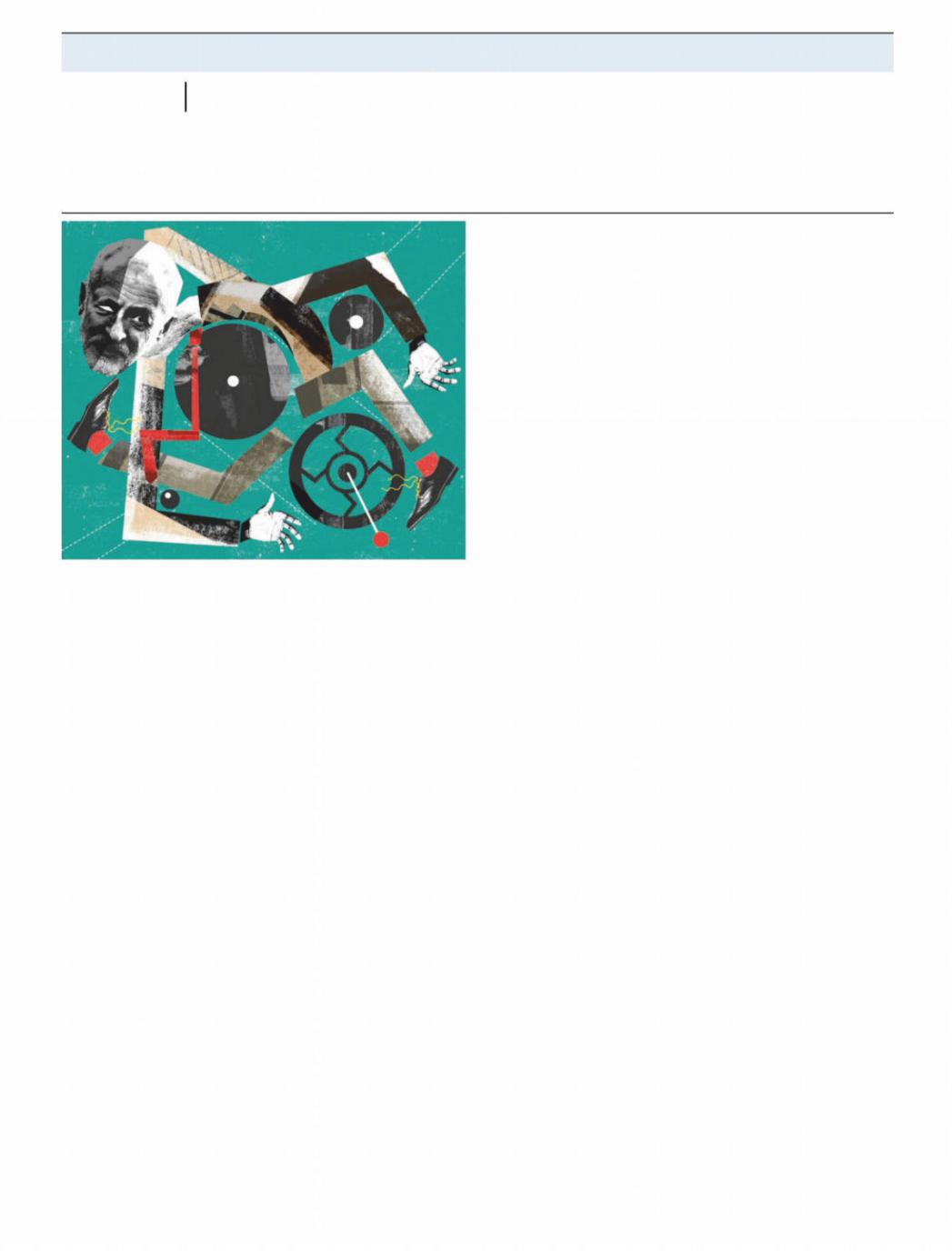
|
РЕЛИЗ ПОДГОТОВИЛА ГРУППА "What's News" VK.COM/WSNWS |
vk.com/id446425943 |
|
The Economist February 2nd 2019 |
Britain 49 |
Bagehot Through the mangle
Jeremy Corbyn is having a bad Brexit
Theresa may’s slow progress through the great mangle of Brexit has been so gruesome that it has distracted attention from another political flattening: that of Jeremy Corbyn. The leader of the opposition put in another fumbling performance in the House of Commons this week in proposing that the government should be forced to put o Britain’s departure from the European Union if it doesn’t reach a deal. But lacklustre rhetoric and a feeble grasp of
detail mark only the beginning of his problems.
The Labour Party is even more divided over Brexit than the Conservatives. Most Labour members disagree with their party’s o - cial support for leaving, whereas most Tory party members support their party’s position. Mr Corbyn is much farther away from his party’s centre of gravity than Theresa May is from hers. He is a long-standing Eurosceptic who believes that the eu is a capitalist club that stands in the way of building his socialist Jerusalem. He voted against Britain’s membership in 1975, opposed the single market in the1980s and only pretended to campaign for Remain in the referendum of 2016. He is surrounded by an inner circle of Eurosceptic advisers who do their best to steer a Europhile party in a Eurosceptic direction.
Mr Corbyn has tried to manage these contradictions by resorting to grand banalities. He has claimed that Labour supports a “jobs-first Brexit” that will magically provide all the benefits of Brexit with none of the costs. He has headed o calls for a second referendum by saying that he wants a general election instead. That strategy is wearing thin. With Brexit less than two months away, Mr Corbyn is being forced to make real and urgent decisions. This week he lent his support to Yvette Cooper’s amendment requiring the government to delay Brexit if Parliament hasn’t agreed on a deal by a certain date (the measure failed, in part because Mr Corbyn’s backing was so late and his advocacy so feeble).
Brexit is driving a wedge between Mr Corbyn and his activist fans. Most activists are even more Europhile than the membership in general, particularly the young idealists who flooded into the party from 2015 onwards. Corbynmania is not dead: many activists claim that they forgive their idol his unfortunate views on Europe. But it is hard not to lose some of your enthusiasm when you disagree with your leader on the most important issue of the day. For
example, 79% of party members support having another vote on Brexit, whereas Mr Corbyn has done everything in his power to prevent that from happening. Party membership is drifting down and polls show Labour failing to overtake the floundering Tories.
Brexit is wreaking havoc with Mr Corbyn’s plan to turn Labour into a mass movement as well as a parliamentary party. The lefties demonstrating on the streets these days are calling for Britain to remain in the noteu,for the abolition of capitalism. Brexit is also dividing the left. Mr Corbyn rose to power by uniting the broad left against the Blairite right. The 69-year-old looked as if he was a prophet of a progressive future while the middle-aged Blairites looked as if they were locked in a neo-liberal past. Now he is splitting the left between Europhobes and Europhiles (even his long-term ally and shadow chancellor, John McDonnell, is distancing himself from Mr Corbyn’s Euroscepticism) and allowing Blairites such as Ms Cooper to rebrand themselves as champions of an open future.
Above all, Brexit is forcing Mr Corbyn to fight on uncongenial terrain. He takes every opportunity he can to change the topic back to his old favourites: the evils of greedy bosses and the ravages of austerity. The only time he comes alive in prime minister’s questions is when he is talking about victims of the government’s cuts. But his words keep falling on deaf ears.
Mr Corbyn’s response is to shout louder. He is convinced that Brexit is not a “productive antagonism” for the left, as one aide puts it, and that the best way to deal with it is to shift the subject back to the antagonisms that have defined his career. History has other plans. Growing psephological evidence suggests that Brexit is profoundly reshaping British political allegiances. Voters are increasingly defining themselves by where they stand on Brexit rather than by where they stand on old-fashioned politics. Geo Evans and Florian Sche ner note that only 6% of Britons do not identify with either Leave or Remain, whereas 22% do not identify with a party. Tim Bale, another academic, notes that 61% of Labour members think Brexit is the biggest issue facing the country, versus just 9% who plump for the next-biggest, health and the environment.
The turn of the screw
Mr Corbyn’s contortions over Brexit are forcing his supporters to rethink their idea that he is a man of principle. He seems almost Clintonian in his willingness to triangulate on all things Brexitrelated, embracing vague formulae so he can appease both Leavers and Remainers, and indulging in procedural prevarication in order to avoid making di cult decisions. At the same time, his manifold confusions over Brexit, in interviews and at the dispatch box, are reinforcing his critics’ worries that he is not up to the job of taking real decisions. He often seems to be confused about basic questions such as what a customs union means, let alone the details of complicated negotiations.
The biggest danger for Mr Corbyn is that he will be defined by history as a handmaiden of Brexit if he doesn’t get o the fence and try to prevent it. One prominent Labour Remainer says that he and his friends will do everything in their power to brand Mr Corbyn as a latter-day Ramsay MacDonald, the Labour prime minister who was expelled from his party after he agreed to lead the Conserva- tive-dominated National Government in 1931. Given Mr Corbyn’s irritating habit, throughout his long life in politics, of demonising anybody to his right in the party as a traitor to the true cause, it would be a delicious irony if he went down in history as Ramsay MacCorbyn, the enabler of the most dastardly Tory project since Thatcherism. Brexit has done stranger things. 7
http://new.guap.ru/i04/contacts

РЕЛИЗ ПОДГОТОВИЛА ГРУППА "What's News" VK.COM/WSNWS
vk.com/id446425943
50 |
International |
The Economist February 2nd 2019 |
|
|
Demography
A school for small families
N A I R O B I , S E O U L A N D T O R O D I
Thanks to education, global fertility could fall faster than the un expects
The average woman in Niger has seven children. The average South Korean has barely one. The future size of the world’s population depends largely on how quickly child-bearing habits in places like Niger become more like those in South Korea. If women in high-fertility countries keep having lots of babies, the number of people will keep swelling. The sooner they curb their fecundity, the sooner it will peak and
start falling.
The un projects that fertility will fall gradually and that lifespans will increase, so the world’s population will rise from 7.7bn today to11.2bn by 2100. (This is its best estimate; the saysun it is 95% confident that the true figure will lie between 9.6bn and 13.2bn.) Opinions are divided over the e ects of such growth. For some, a more crowded planet will be an environmental disaster. For others, those billions of extra brains will help humanity devise ever more cunning solutions to its problems.
But what if the projection is wrong? Some demographers argue that the underestimates how fast fertility will decline. It has already tumbled dramatically.
Data from before the Industrial Revolution are spotty but evidence from countries that kept good records, such as America, suggests that a typical woman had seven or more children. By 1960 the global fertility rate had fallen to five. Today it is 2.4. This is only just above the “replacement rate” of 2.1, at which the population remains stable, with each generation replacing itself but no more. (The rate is more than two because not every baby grows up to be able to have children.)
Nearly all rich countries have sub-re- placement fertility rates: the oecd average is1.7. Middle-income countries are close, at 2.3. Only in poor countries is fertility still high enough to fuel rapid population growth. In sub-Saharan Africa it is 4.8; in “heavily indebted poor countries” (as the World Bank calls them) it is 4.9. Pre-indus- trial fertility rates persist only in the poorest parts of the poorest countries.
The decline in fertility in Africa was recently smaller than expected. If this is a long-termuntrend rather than a blip, then the world’s future population will be much larger than today’s. But Wolfgang Lutz, a
demographer at the International Institute for Applied Systems Analysis in Austria, argues that it is indeed a blip. It happened because spending on education stalled during the 1990s. Many women born around 1980 received less education than the previous generation. The extrapolatesun from past trends, so the stalling in Africa makes its model predict higher fertility far into the future. However, the decline in education has reversed. The long-term trend is for ever more women to complete a basic education (see chart 1 on next page). After a lag (since schooling starts several years before puberty), this should allow fertility to resume its downward slide.
Educated guesses
Models that take education into account produce wildly di erent projections. Mr Lutz and his team have produced a range. If progress in education and other social indicators stalls, the global population will be 12bn by 2100. If current progress continues, it will peak at 9.4bn in 2075 and then fall to 8.9bn by 2100. If progress is a bit brisker, the world’s population will peak at around 9bn and decline back to 7bn—to- day’s level—by 2100 (see chart 2). These estimates are based on three scenarios devised by climate-change wonks. Both the medium and optimistic ones are signifi-
cantly lower than the un ’s 95% confidence range. To assess whether this is plausible, it
is important to understand why some women have lots of children and others very few. A good way to start is to ask them. 1
http://new.guap.ru/i04/contacts
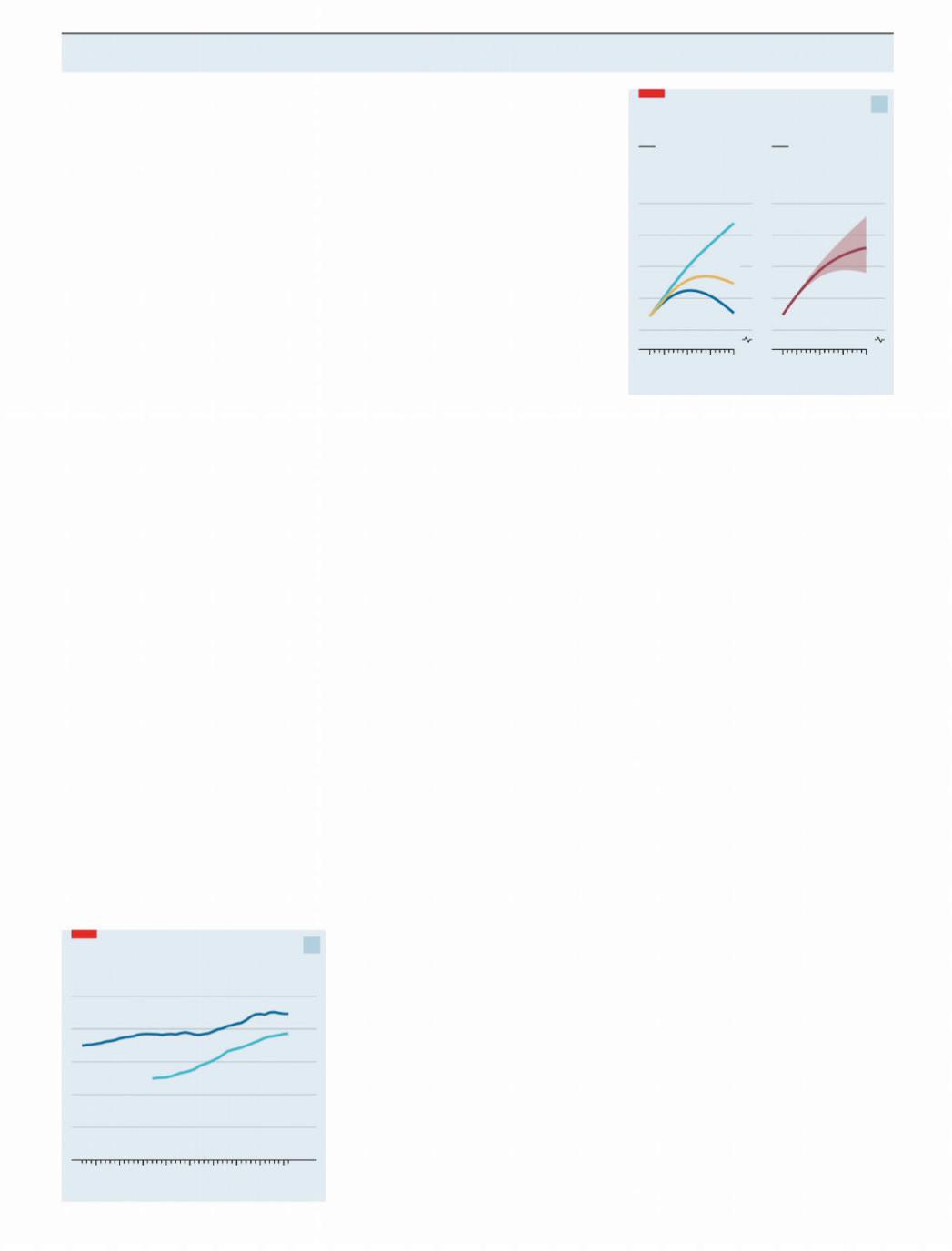
РЕЛИЗ ПОДГОТОВИЛА ГРУППА "What's News" VK.COM/WSNWS
vk.com/id446425943
The Economist February 2nd 2019
2 Oumou Nyero lives in Torodi, a rustic district in Niger. She has had eight children, one of whom died. Though tragic, this is not unusual in rural Niger, where nearly one child in six dies before the age of five. Ms Nyero is 43 and assumes that her child-bearing days are over, unless God wills it. She is Muslim, conservative and veiled. Yet she is happy to discuss procreation, smiling and giggling as she does so. Giving birth eight times was not easy. Asked if any of her children were twins, Ms Nyero grins, raises her forefinger and says: “No. One. One. One. One.” At every “one” she waves her finger around and pu s out her face to emphasise how hard it was.
She is intensely proud of her brood— three surviving boys and four girls, aged between two and 21, and delighted that there are so many of them. “It is very, very important to have children,” she says, sitting on a wicker chair in the shade of a dusty tree.
Ms Nyero’s view is typical for someone in her circumstances, and perfectly rational. Her family are poor and rural. Her husband is a small farmer, one of the most precarious jobs in the world. She works for five hours a day selling millet snacks by the side of the road. Having lots of children is an investment that pays o quickly. From a young age, her brood can help in the fields, gather wood, fetch water and do all kinds of odd jobs to eke out the family budget. A local proverb sums it up: “A child comes with two hands and only one mouth.”
Having a large family is also an insurance policy. Some may die, others may turn out to be feckless. “It is better to have many children, because you cannot tell if you will need them or not,” says Ms Nyero. In the absence of a public safety-net, “children will take care of you in old age.”
There are intangible benefits, too. For a woman, “it raises your value if you have more [children],” says Ms Nyero. “If you have many, even the friends of your children pay you respect.” By contrast, a failure to breed carries a social stigma. In rural Niger, a woman is not considered an adult un-
More books, fewer babies |
1 |
Global, females who complete school, % of total
100
Primary
80
60
Lower secondary
40
20
0
1972 |
80 |
85 |
90 |
95 |
2000 |
05 |
10 |
16 |
Source: World Bank
less she has children, observes Alison Heller of the University of Maryland, the author of “Fistula Politics: Birthing Injuries and the Quest for Continence in Niger”. In parts of the country, women whose chil-
dren all die are known as |
|
By stock of educated |
|||
wabi , meaning a |
|
|
|||
tree whose fruit falls o without ripening. |
adults |
|
14 |
||
|
|
||||
Married men in Niger say they want, on |
|
|
|||
|
|
Low 12 |
|||
average, 12 children. Asked if her husband |
|
|
|||
would like more, Ms Nyero says: “Yes, of |
|
|
|
||
course.” She adds: “If he had money, he |
|
|
Medium 10 |
||
would marry more wives and have more |
|
|
|||
|
|
|
|||
children. But he hasn’t got money. So, he |
|
|
|
||
has to stick to one wife.” |
|
|
|
High |
|
Ms Nyero adds with a chuckle that she |
|
|
|||
|
|
|
|||
pities childless people, such as the corre- |
|
|
|
||
spondent from |
The Economistinterviewing |
2010 |
50 |
2100 |
|
|
|
|
|||
her. Her approach to child-rearing is loving, fatalistic and far removed from the “helicopter parenting” so common in rich countries. Asked where her two-year-old son is, she grins nonchalantly and looks around the yard. “He was around playing here, but he has wandered o into the fields,” she shrugs.
Non-productive cost-centres
For people in rich countries, the economics of child-rearing are di erent. Rather than start earning at the age of five, the little darlings consume huge amounts of time, resources and parental attention for at least the first 18 years, and possibly far longer. Instead of putting them to work in the fields, their parents try to cram them with education, hoping they will get into a good university and eventually land a good job. All this is costly, so they can a ord to do it only once or twice.
Chung Yeon-jeong lives in Seoul, the bustling capital of South Korea. She works as a translator for a small pharmaceutical company, but is currently on maternity leave. She is still 34, the age at which she had her one child, a boy, and one at which women in Niger are quite likely to be grandmothers. (The median age at which to have one’s first baby in Niger is18.)
She is vastly richer than Ms Nyero, but finds even one child a financial strain. She moved in with her parents elsewhere in the country for five months after the birth, because she and her husband could not a ord an apartment big enough for three in Seoul, where the average home costs $640,000. “We lived in a small studio flat, which was just about fine for the two of us, but it would have been miserable raising a child there,” she says. Raising seven children in a mudbrick home with no running water, as Ms Nyero does, is hard to imagine.
Whereas people who are hungry think only of food, those with full fridges crave less tangible things: a fulfilling career, a spouse who is also a soulmate, quality time with each individual child. Ms Nyero never so much as mentions any of these firstworld luxuries. For Ms Chung they are im-
International 51
2
United Nations
Medium variant
14
95% confidence interval 12
10
8
Median
6
2010 |
50 |
2100 |
http://new.guap.ru/i04/contacts
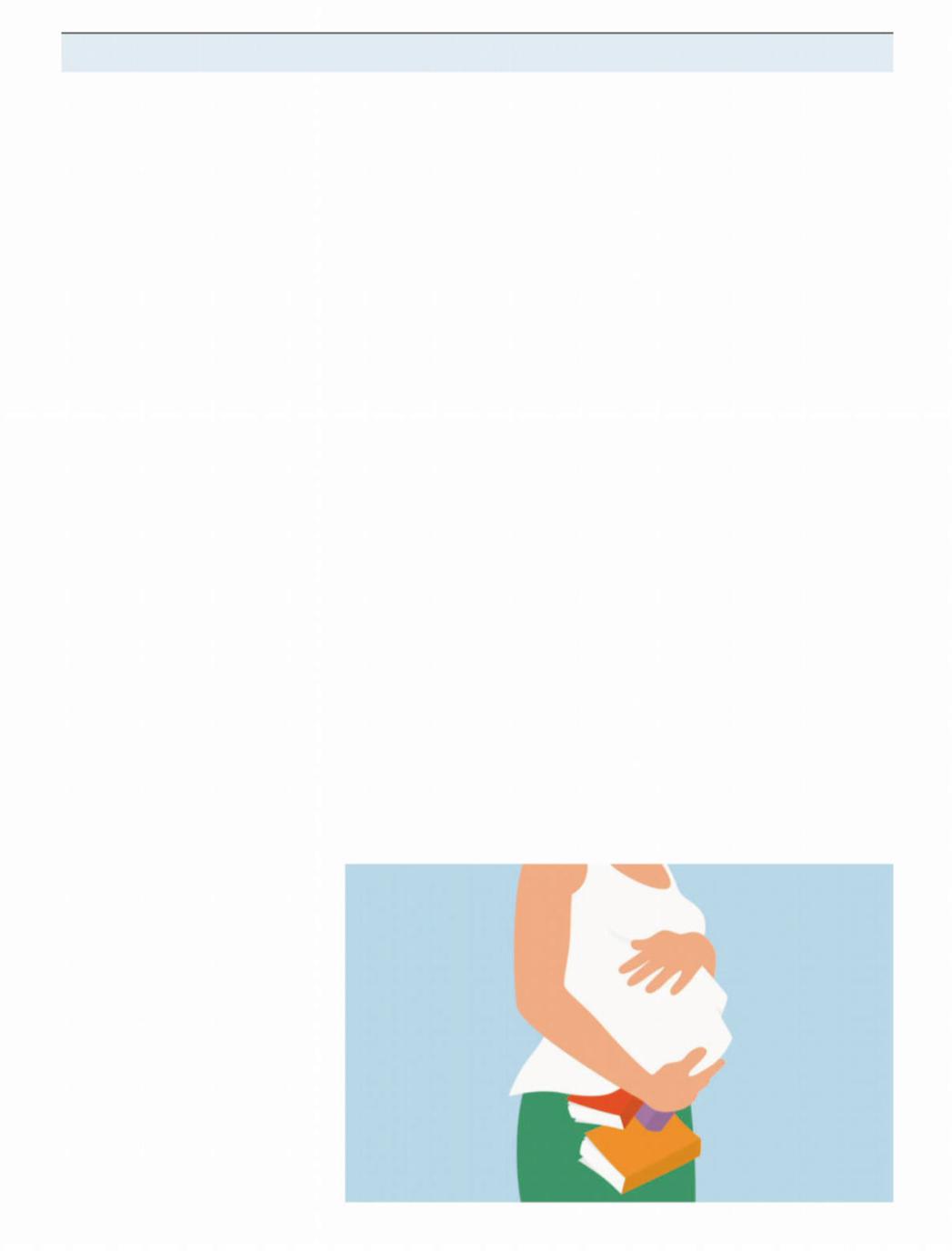
РЕЛИЗ ПОДГОТОВИЛА ГРУППА "What's News" VK.COM/WSNWS
The Economist February 2nd 2019
2 that,” says a 22-year-old student in Seoul. |
Several factors correlate strongly with |
|
South Korea is an extreme example, but |
smaller families. One, as mentioned, is in- |
|
women in other rich countries make the |
come. Another is urbanisation. Probably |
|
same basic calculation. Instead of starting |
the most important, however, is educating |
|
to have babies shortly after they reach pu- |
girls. The more years they spend in school, |
|
berty, as women have done throughout his- |
the fewer babies they have. |
|
tory, they postpone motherhood until they |
This is hard to disentangle from the oth- |
|
have spent years in education and then es- |
er two—richer countries tend to be more |
|
tablished themselves in a career. If they |
urban and to educate girls better. And it is |
|
have children, they typically have only one |
theoretically possible that causality could |
|
or two, because giving them the best start |
flow the other way—women who get preg- |
|
in life is expensive. They assume, with |
nant as teenagers may be forced to drop out |
|
good cause, that none of their o spring |
of school. But this e ect is likely to be |
|
will die young. |
|
small. When researchers look only at the |
Women in middle-income countries |
education that girls receive before they be- |
|
(ie, most women) behave a lot like women |
come sexually mature, they still find that |
|
in rich countries, which is why their fertil- |
more years in school means fewer babies |
|
ity rate is but a whisker above the replace- |
later in life. That suggests that learning re- |
|
ment level. In China, the norm of having |
duces fertility, not the other way round. |
|
just one child has become so ingrained |
A truckload of academic studies sup- |
|
since the one-child policy was introduced |
ports this argument. Education reduces |
|
in1979 that even after its progressive relax- |
fertility by giving women other options. It |
|
ation in recent years, the birth rate has con- |
increases their chances of finding paid |
|
tinued to fall. O cially, the fertility rate is |
work. It reduces their economic depen- |
|
1.6, but some demographers suspect it is |
dence on their husbands, making it easier |
|
actually lower. In India, which is far poorer, |
to refuse to have more children even if he |
|
the rate is nonetheless only 2.3. |
|
wants them. It equips them with the men- |
Stuck in the middle with two |
|
tal tools and self-confidence to question |
|
traditional norms, such as having as many |
|
It is unlikely that the trend towards lower |
children as possible. It makes it more likely |
|
fertility will reverse. “Once having one or |
that they will understand, and use, contra- |
|
two children becomes the norm, it stays |
ception. It transforms their ambitions for |
|
the norm,” write Darrell Bricker and John |
their own children—and thus the number |
|
Ibbitson in “Empty Planet: The Shock of |
that they choose to have. |
|
Global Population Decline”. “Couples no |
Education also takes a long time. A |
|
longer see having children as a duty…to |
woman who studies until she is 25 and |
|
their families or their god. Rather, they |
then spends ten years building a career has |
|
choose to raise a child as an act of personal |
just a few years left to get pregnant before |
|
fulfilment. And they are quickly fulfilled.” |
she no longer can. Technology may some- |
|
The big question-mark hangs over |
day remove this constraint, but for now it is |
|
women in poor, high-fertility countries. By |
hard to have eight children unless, like Ms |
|
2025 only 1% will live in places where the |
Nyero, you start early. |
|
fertility rate is above 5.0; however, a hefty |
The di erence that education makes is |
|
32% will live in places where it is between |
especially notable in countries where fer- |
|
2.1 and 5.0, predicts the |
un . Some tilitypeoplehas only just started to fall. In Ethio- |
|
argue that having big families is part of the |
pia, for example, a household survey in |
|
culture of such places and unlikely to |
|
|
change. Many locals would agree, and their |
|
|
religious leaders would add that God wants |
|
|
them to multiply. But a similar “cultural” |
|
|
preference for large families |
once pre- |
|
vailed almost everywhere and has changed beyond recognition. So there is no reason to assume that it is immutable.
Others assume that the important factor is the availability of contraception. However, using household surveys in Africa, Mr Lutz found that less than a tenth of women who researchers thought might need birth control cited cost or lack of access as reasons for not using it. The main reasons were lack of knowledge, misplaced fear of health risks and opposition to family planning. None of these things can be changed by handing out free condoms. All require a change of mindset. (Or, in some cases, contraception that a woman can use without her husband knowing.)
2005 found that the fertility rate for women with no formal schooling was 6.1; for women with secondary education or more, it was only 2.0. Educating girls better is one of the few goals that nearly every government agrees is important. So it would be surprising if the girls of the future were worse educated than today’s. The proportion worldwide who complete primary school has risen from 76% in 1997 to 90%. The last mile may be the hardest, but there is no doubt what parents and voters want.
A transition that took 200 years in the West, from seven children to two, can now take place astonishingly fast. When rural folk move to the city, it can happen in a single generation. Consider Dorothy Achieng, a 29-year-old receptionist at an accountancy firm in Nairobi. Her mother had eight children, one of whom died. Dorothy has two. Whereas her mother could barely read and put her older children to work on a small family farm, Ms Achieng hopes to keep hers in school.
Ms Achieng is typical of those who move from the countryside to the city. The rural fertility rate in Kenya is 4.5; the urban one, 3.1. Most of Ms Achieng’s friends, like her, have far fewer children than their parents did. No one she knows has seven or eight children.
Although she lives in a slum and has no running water in her modest two-room flat, Ms Achieng is part of the aspiring middle class. Indeed, on her salary of just $200 a month, she pays for a private school that costs $50 per child, per term. It is a strain, but she thinks it is worth it. She does not plan to have more children. If she did, she says, she could not “give them the best”.
Asked what they want to be when they grow up, her two boys stop whizzing around her flat in pursuit of a remote controlled car. “A doctor,” says Crispian, who is nine. Lennox-Lewis, aged seven, chimes in: “And I want to be a lawyer.” 7
http://new.guap.ru/i04/contacts
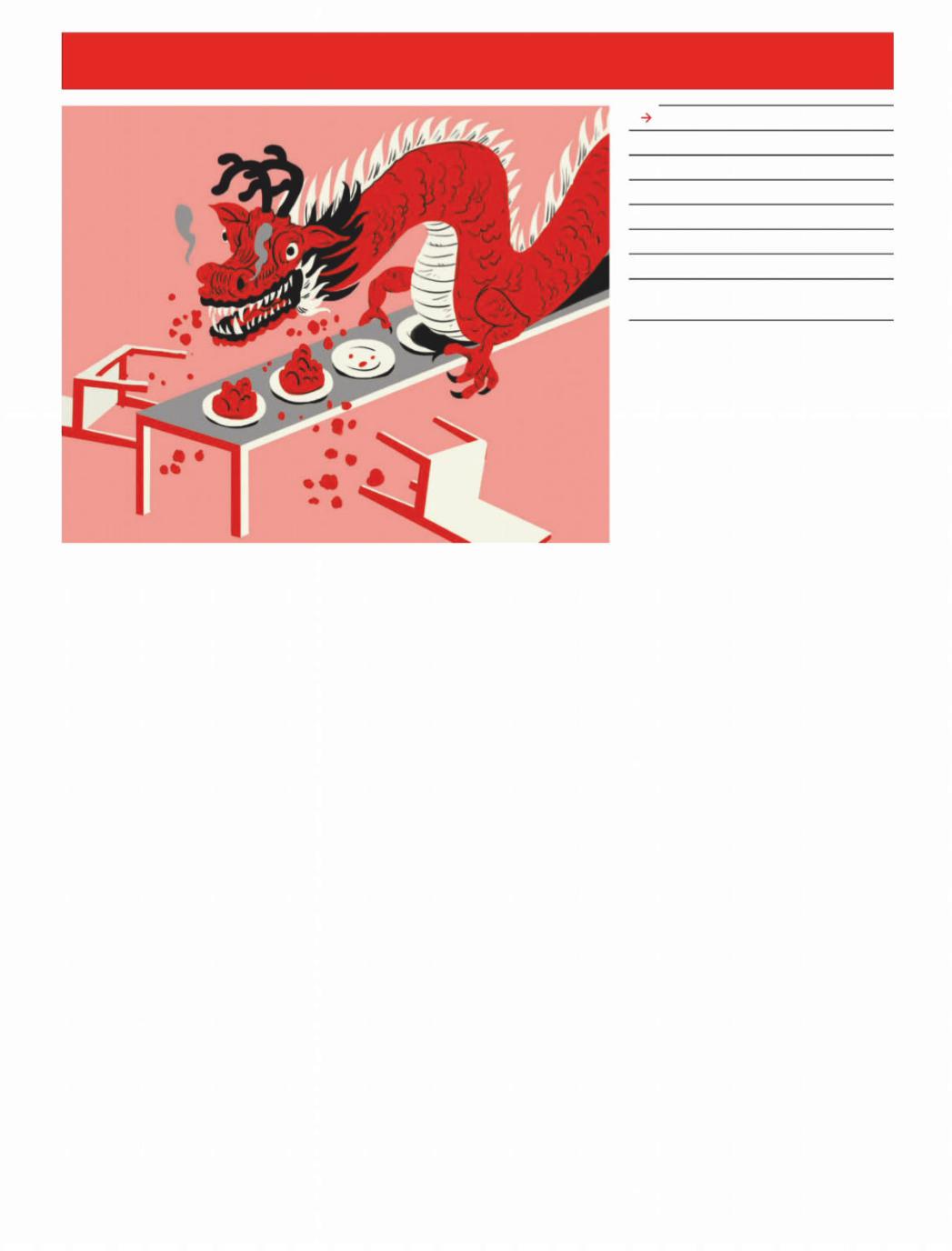
РЕЛИЗ ПОДГОТОВИЛА ГРУППА "What's News" VK.COM/WSNWS
vk.com/id446425943
The Economist February 2nd 2019 53
Also in this section
54 America v Huawei
55 Bartleby: The two office tribes
56 Comcast’s plans for Sky
57 Oleg Deripaska gets sanctions relief
57 Harley-Davidson’s woes
58 Gaming cloudification
59 Schumpeter: Vale and corporate disasters
COFCO International |
|
|
|
|
|
newbie seemed so clueless, says Jonathan |
|||||
Feeding the dragon |
|
|
|
Kingsman, a commodities expert and for- |
|||||||
|
|
|
mer Cargill employee. |
|
|
|
|||||
|
|
|
|
|
|
No one is laughing now. |
|
alreadycil |
|||
|
|
|
|
|
|
earns $34bn in revenue—four-fifths that of |
|||||
|
|
|
|
|
|
Louis Dreyfus, the smallest abcd |
. It shifts |
||||
|
|
|
|
|
|
105m tons of grain, oilseeds and sugar a |
|||||
|
|
|
|
|
|
year, a volume roughly equal to America’s |
|||||
China’s e orts to build a massive global food trader are not entirely reassuring |
entire production of soyabeans. |
wants cil |
|||||||||
to be far more than China’s procurement |
|||||||||||
|
|
|
|
|
|
||||||
he world of grain trading is a geron- |
tightened rules on foreign investment. |
platform. Already China accounts for less |
|||||||||
Ttocracy. The four giant firms that dom- |
Instead, China’s leadership is seeking to |
than half of its sales. |
|
|
|
||||||
inate global agricultural flows—adm , |
establish a position in global trading of |
cil is selling to more than 50 countries, |
|||||||||
Bunge, Cargill and Louis Dreyfus, collec- |
foodstu s by building China’s own cham- |
focusing on Europe, the Black Sea and Latin |
|||||||||
tively known as the |
abcd |
s—werepion,allcil , founded in 2014 as an o shoot of |
America. Like the |
abcd |
s, it has invested in |
||||||
founded over a century ago. Their age is an |
state-owned cofco Group. In that same |
massive silos, transport links and process- |
|||||||||
edge: their unique networks of silos, ports, |
year China abandoned its o cial goal of |
ing facilities. It is the fourth-largest soya |
|||||||||
ships and farmer relationships, built over |
being self-su cient in soyabeans, indicat- |
exporter in Brazil. Latin America remains |
|||||||||
decades, make them indispensable mid- |
ing that it was prepared to rely on global |
its most important region for sourcing, but |
|||||||||
dlemen. But a toddler from China is threat- |
suppliers for some staples. |
cil ’s mainitistaalsko creating export routes from North |
|||||||||
ening to put a pitchfork in the works. |
is to help China source crops directly from |
America and the Black Sea. |
|
|
|||||||
cofco International ( |
cil ), the |
overseasoverseas farmers. |
cofcohad done that as |
|
|
|
|
|
|||
trading arm of China’s state-owned food |
the main Chinese importer of global food- |
Grain drain |
|
|
|
|
|||||
and oil giant, wants to “become a true glo- |
stu s. But managing the domestic market |
The speed of its turnaround has caught the |
|||||||||
bal agribusiness”, says Chi Jingtao, its |
was its focus, whereas |
|
cil ’s remit is globalindustry. o guard. In the first half of 2018, |
||||||||
chairman. It is barely four years old. |
|
There are profits to be made, too, from tak- |
cil reportedly made |
trading |
losses of |
||||||
Mr Chi’s aims are not only commercial |
ing a margin on food imports that have |
$122m because of wrong-way bets on agri- |
|||||||||
but strategic. China does not have enough |
soared12-fold since 2000, to $117bn in 2017. |
cultural markets. It also went through |
|||||||||
arable land to feed its1.4bn people. As a ris- |
cil ’s first steps were awkward; it began |
painful sta cuts and a long shutdown at a |
|||||||||
ing middle class consumes more meat, that |
by buying Nidera of the Netherlands and |
key port and processing plant. But “the |
|||||||||
gap worsens, for animal feed is mostly |
Hong Kong-based Noble Agri, two traders |
company is probably in much better shape |
|||||||||
made of grain. One solution from the gov- |
with a strong presence in South America, |
than it seems from the outside”, says Sönke |
|||||||||
ernment has been to buy farmland abroad. |
for inflated prices. It then neglected to inte- |
Lorenz of |
bcg , a consultancy. The trade war |
||||||||
Chinese firms have done so in more than 30 |
grate them, and both kept undercutting |
has further convinced China of the mer- |
|||||||||
countries—China is the largest foreign |
each other. Then a $200m unauthorised |
chant’s vital role. Last July, China respond- |
|||||||||
owner of agricultural land in Australia, for |
trading loss was found on Nidera’s biofuel |
ed to American tari s on its goods by slap- |
|||||||||
example. But the government soon real- |
desk, followed by a $150m hole in the ac- |
ping high duties on American soyabeans, |
|||||||||
ised that export bans could render its ac- |
counts of its Latin American division. Ri- |
making it too expensive to buy them. This |
|||||||||
quisitions useless, and |
host countries |
vals “thought it hilarious” that the Chinese |
forced China to find a new source for one-1 |
||||||||
http://new.guap.ru/i04/contacts
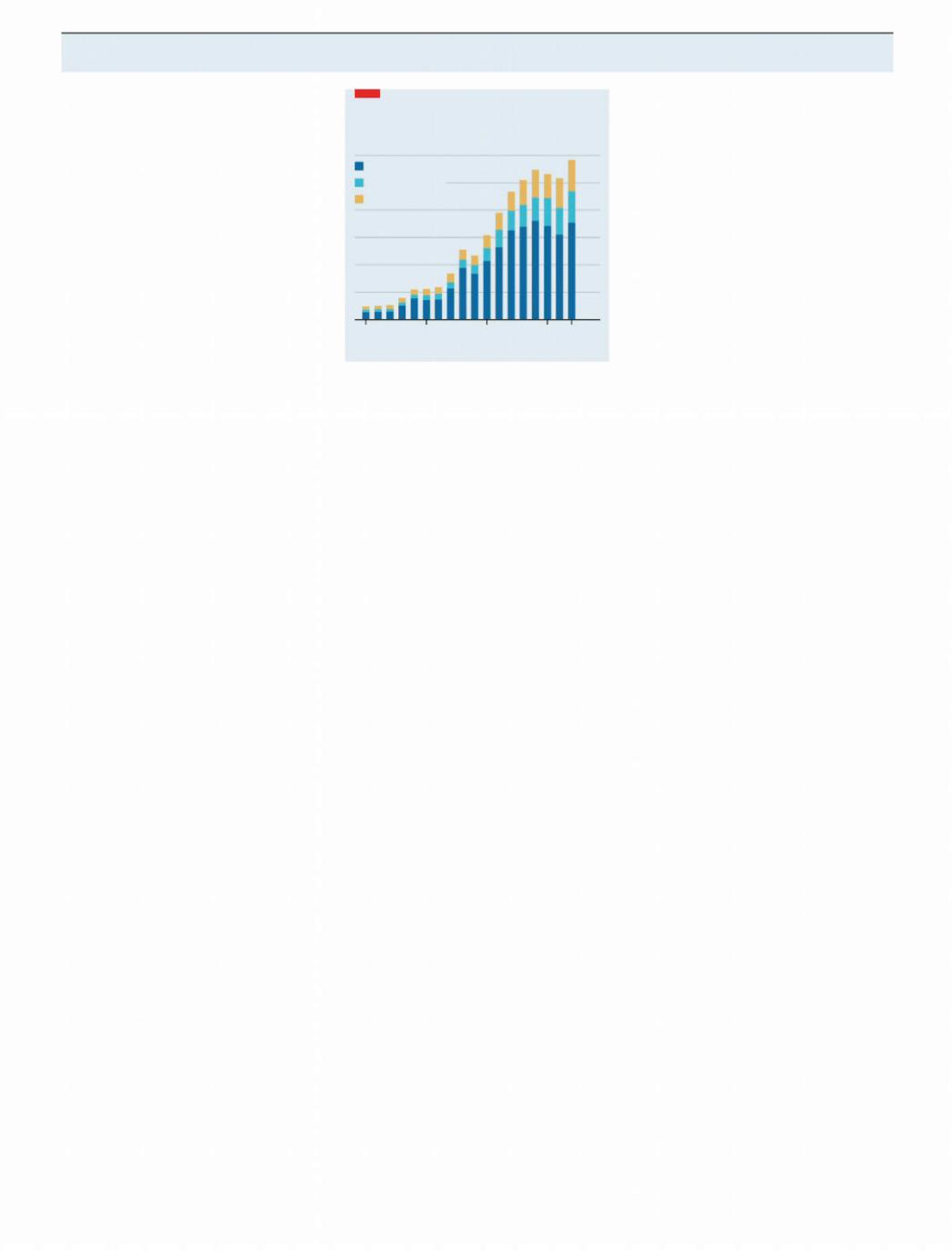
РЕЛИЗ ПОДГОТОВИЛА ГРУППА "What's News" VK.COM/WSNWS
vk.com/id446425943
54 Business |
|
|
|
|
|
|
|
|
|
The Economist February 2nd 2019 |
|
||
2 third of its $40bn yearly needs—totalling |
Meat and two veg |
|
|
America v China’s tech giant |
|
||||||||
33m tonnes or four times what all of South- |
|
|
Weighing on |
|
|||||||||
east Asia consumes. |
did cilmuch of the |
China, food imports, $bn |
|
|
|
||||||||
work by finding new suppliers in Brazil. |
|
|
|
|
120 |
Huawei |
|
|
|||||
Mr Chi claims that 2019 should be a piv- |
Vegetables |
|
|
|
|
||||||||
otal year. Last year, after integrating Noble |
Food products |
|
|
100 |
|
|
|
||||||
and Nidera in 2 |
|
cil017,also had to deal with |
|
|
|
|
|
|
|||||
|
Animals |
|
|
|
80 |
S H A N G H A I |
|
|
|||||
operational problems from the mergers, |
|
|
|
|
|
||||||||
|
|
|
|
The tech firm is accused of rewarding |
|
||||||||
|
|
|
|
|
|
||||||||
fallout from the trade war between Ameri- |
|
|
|
|
60 |
|
|||||||
|
|
|
|
trade-secret pilferers on sta |
|
||||||||
ca and China and severe droughts in Argen- |
|
|
|
|
|
||||||||
|
|
|
|
|
|
|
|
||||||
tina. But the firm is at last in a position “to |
|
|
|
|
40 |
n a civil lawsuit in 2017 an employee of |
|
||||||
embrace |
growth |
and |
development”, |
the |
|
|
|
|
20 |
IHuawei, a Chinese telecoms giant, was |
|
||
chairman argues. He notes that cil |
|
|
|
|
found to have swiped one of the arms of |
|
|||||||
|
|
|
|
|
|
||||||||
achieved profitability last year “for the first |
|
|
|
|
0 |
Tappy, a phone-testing robot owned by |
|
||||||
time in history” (it does not disclose fig- |
|
|
|
|
Mobile, an American wireless carrier, and |
|
|||||||
2000 |
05 |
10 |
15 |
17 |
|
||||||||
ures). It will invest in sourcing more grain |
with it the smart proprietary technology in |
|
|||||||||||
Source: World Integrated Trade Solution |
|
|
|
||||||||||
directly from the world’s breadbaskets, in- |
|
|
its fingertip. A jury in Seattle ordered Hua- |
|
|||||||||
|
|
|
|
|
|
||||||||
cluding Russia, Argentina and North |
|
|
|
|
|
wei to pay compensation of $4.8m to |
t - |
||||||
America, and it will search for new custom- |
cil must also contend with the fact that |
bile. The court found, however, “neither |
|
||||||||||
ers in Europe, the Middle East and South- |
its entry into the bulk-commodity trade |
damage, unjust enrichment nor wilful and |
|
||||||||||
East Asia, including state-owned entities |
comes when the activity is hardly profit- |
malicious conduct by Huawei”. |
|
||||||||||
such as wheat boards, local traders and |
able. Digitalisation and competition have |
This week the Chinese company re- |
|
||||||||||
food processors. |
|
cil ’s strategy, summardestroyed- |
margins. The savviest traders are |
minded the world of that verdict in its pub- |
|
||||||||
ises Mr Chi, “is to leverage our strong pres- |
shifting towards value-added products: |
lic response to a sweeping set of fresh alle- |
|
||||||||||
ence in China to grow our global business”. |
Cargill makes most of its money from mak- |
gations against it by America’s Department |
|
||||||||||
The first element is already under way. |
ing animal feed and proteins; adm has |
of Justice. The charges include obstruction |
|
||||||||||
In December the firm appointed Dong Wei, |
carved a niche in food ingredients such as |
of justice—and technology theft, as Tappy |
|
||||||||||
a 25-year veteran of |
Group,cofco as chief |
sweeteners and colouring. |
needscilto |
becomes the subject of a new criminal case. |
|
||||||||
executive. Mr Dong is an expert in the pro- |
master the basic activities first. “This is a |
Huawei was also accused of defrauding |
|
||||||||||
curement and processing of soyabeans—a |
young company”, Valmor Scha er, cil ’s |
four big banks (one of which is known to be |
|
||||||||||
good fit for |
cil . “His arrival will facilitateBrazil chief, said in November. “At this mo- |
hsbc ) into clearing transactions that vio- |
|||||||||||
the integration of our domestic and inter- |
ment we have other priorities.” |
|
lated international sanctions on Iran. This |
|
|||||||||
national business,” explains Mr Chi. |
|
That highlights a dilemma for the firm. |
was why Canadian police arrested Meng |
|
|||||||||
What worries |
|
cil ’s big rivals is that thecil ’s primary objective remains “feeding |
Wanzhou, the company’s chief financial |
|
|||||||||
firm’s e orts to dominate direct access to |
the dragon”, as Mr Lorenz puts it, so it may |
o cer, on December 1st, on behalf of the |
|
||||||||||
China’s vast market of consumers for |
be ready to accept far lower profits than |
American authorities. On January 28th |
|
||||||||||
grain—both for strategic and business rea- |
peers. If the going gets tough, it could also |
they made a formal request for her extradi- |
|
||||||||||
sons—could have the side-e ect of locking |
tap the government for cheap back-up cap- |
tion. Canada now has 30 days to respond. |
|
||||||||||
them out. For now, they have a prized direct |
ital, insiders suspect. |
|
|
Huawei said that it had not committed |
|
||||||||
relationship with |
|
cofcoGroup and with |
But the company cannot entirely disre- |
“any of the asserted violations” and repeat- |
|
||||||||
other Chinese food manufacturers. “cil |
gard its bottom line. While state-owned |
ed that it was “not aware of any wrongdo- |
|
||||||||||
could become an unavoidable middle- |
entities own most of |
cil , minority shareingbyMs Meng”. Among the charges un- |
|
||||||||||
man,” says Jean-François Lambert, a con- |
holders include Singapore’s Temasek, the |
sealed thus far, Tappy is the only direct |
|
||||||||||
sultant and former head of commodity fi- |
World Bank’s private investment arm and |
evidence of intellectual-property theft. |
|
||||||||||
nance at |
hsbc |
, a bank. |
|
Standard Chartered, a British bank. These |
And none suggests that America has any |
|
|||||||
The abcd s can take comfort that their |
took a stake in 2014, when the trader |
concrete evidence to confirm its gravest |
|
||||||||||
position is still robust. In the markets that |
bought Nidera, and all expect a good re- |
suspicions: that Chinese spooks use Hua- |
|
||||||||||
count, such as America and Russia, much |
turn. Such pressure is unlikely to abate. Mr |
wei gear to listen in, or that it has ties to the |
|
||||||||||
of the infrastructure used to store, process |
Chi says cilcould seek to raise more capi- |
People’s Liberation Army (for which its |
|
||||||||||
and ship grain belongs to the established |
tal to fund its expansion: “Going public is a |
founder and chief executive, Ren Zhengfei, |
|
||||||||||
firms. “It’s very di cult, if not impossible, |
direction cil is going to take.” When that |
once worked as an engineer), as has long |
|
||||||||||
to become an |
|
abcdwithout purchasing an |
might happen is a decision for share- |
been rumoured. |
|
|
|||||||
abcd ,” argues Jay O’Neil of Kansas State |
holders to make, but an ipo would entail |
The fact that events over a decade old |
|
||||||||||
University. That may be true in the short |
more scrutiny of the company’s results. |
are only now being used to bring charges |
|
||||||||||
term. Two members of the club are private, |
cil ’s game may be a longer one. Trading |
has also raised some eyebrows. They in- |
|
||||||||||
and adm |
, the largest of their two listed |
is an information war: superior insights on |
clude the questioning of Mr Ren by fbi |
|
|||||||||
peers, is nearly twice as big as |
cil , soglobalwouldproduction, prices, inventories and |
agents in 2007, in which he is alleged to |
|
||||||||||
be hard to swallow. Bunge, an American |
shipping capacity are the sinews of mer- |
have misled investigators by saying that |
|
||||||||||
firm that is the weakest of the bunch, may |
chants’ profit. Incumbents know this. Car- |
Huawei did not conduct activity that vio- |
|
||||||||||
be a good target, but America’s Committee |
gill in 2017 invested in a startup that ana- |
lated American export laws. In a statement |
|
||||||||||
on Foreign Investment in the United States |
lyses satellite images to forecast crop |
on Monday the |
madefbi the leap from |
|
|||||||||
would probably block a Chinese bid. |
|
yields. As |
ciltightens its grip over China’s |
trade-secret theft to telecom-infrastruc- |
|
||||||||
Still, cil could seek to form alliances |
food market, the world’s largest, its edge |
ture threat, stating that “the prosperity that |
|
||||||||||
with peers to penetrate specific markets. |
could become unmatchable. “Everything |
drives [America’s] economic security is in- |
|
||||||||||
Mr Lambert also suspects the firm could |
starts and ends with Chinese demand,” |
herently linked to our national security”. |
|
||||||||||
seek to buy a chunk of Louis Dreyfus. (Its |
says a former |
abcdexecutive. “Understand |
China’s foreign ministry predictably railed |
|
|||||||||
owner took a large loan to buy out other |
what the biggest national buyer is doing, |
against America’s “strong political motives |
|
||||||||||
shareholders late last year). |
|
and you control the trading game.” 7 |
and manipulations”. |
|
1 |
||||||||
http://new.guap.ru/i04/contacts

|
РЕЛИЗ ПОДГОТОВИЛА ГРУППА "What's News" VK.COM/WSNWS |
vk.com/id446425943 |
|
The Economist February 2nd 2019 |
Business 55 |
2 The indictments are explosive. Huawei is alleged to have awarded bonuses to sta based on the value of information they filched from competitors, as revealed in internal emails written in 2013, obtained by the fbi . Speculation swirled that prosecutors might have secretly indicted Mr Ren as well; America’s acting attorney-general, Matthew Whitaker, said Huawei’s criminal activity went “all the way to the top of the company”. In one of the indictments, some defendants’ names have been blacked out.
And if America is able to prove a simple case of trade-secret theft and bank fraud,
Huawei will have plenty to fret about. A bipartisan bill introduced in Congress a few weeks ago would, if passed, systematically ban the sale of American tech to any Chinese firm found to have violated exportcontrol laws or sanctions. When zte , a Chinese peer, was hit with such a ban last April, only a surprise reprieve from President Donald Trump three months later saved it from collapse. In October Fujian Jinhua, a state-owned chipmaker, was hit with an export ban for posing a “significant risk” to American national security; it is soon expected to suspend all operations.
The threat of a similar ban is Huawei’s greatest fear. “Any relief for the Chinese national champion will likely come at a steep price,” writes Dan Wang of Gavekal Dragonomics, a research firm. Huawei could perhaps dodge such a ban by paying a fat fine and allowing Americans to monitor it from the inside (a demand to which yieldedzte last year). The big American suppliers that sell so much of their gear to Huawei, including Qualcomm, Intel and Seagate, would also rather see it more leniently treated. But for now, at least, America seems determined to press on, not settle. 7
Bartleby The two tribes of working life
Those who love networking and those who want to be left alone
erhaps they are two of the most |
|
tech upgrade will be initially troublesome |
resent setting their alarm earlier and |
|||||||
Pwelcome words in the English lan- |
and wonder why on earth their colleagues |
would rather breakfast at their kitchen |
||||||||
guage: “Meeting cancelled”. When they |
can’t send the document as a |
|
pdf . table, grumbling about the news head- |
|||||||
cropped up in Bartleby’s message the |
fomos relish the chance to take part in |
lines to their spouse. If it is a work meet- |
||||||||
other day, he experienced a brief mo- |
a videoconference call so that they can |
|
ing, then hold it during working hours. |
|||||||
ment of elation. In truth, the meeting |
share fully in the dynamics of the meeting |
As for business travel, |
s can’tfomo |
|||||||
turned out only to be postponed for two |
and not miss any clues about the partici- |
wait to experience the delight of overseas |
||||||||
weeks, but procrastination is an under- |
pants’ long-term agenda. jomos deeply |
|
conferences and visiting new places. It |
|||||||
appreciated pleasure. |
|
|
resent the video element, which prevents |
will all look good on their curriculum |
||||||
Workers, and possibly all people, can |
them from checking their emails or play- |
vitae. jomos know that such travel in- |
||||||||
be divided into two groups. Those who |
ing solitaire while Ted drones on about |
|
volves cramped airline seats, jet lag and a |
|||||||
like to be involved in everything and can |
budgets for 20 minutes. |
|
|
long shu e through immigration. The |
||||||
be dubbed “ |
fomos” because they su er |
Networking events are the kind of thing |
final destination tends not to be some |
|||||||
from a “fear of missing out”. And then |
that gets fomos excited as a chance to |
|
exotic location but an identikit confer- |
|||||||
there are those who would ideally want |
exchange ideas and make contacts. When |
ence centre or hotel that they forget five |
||||||||
to be left to get on with their own partic- |
jomos hear the word “networking”, they |
minutes after they have departed. |
||||||||
ular work, without distraction—the |
|
reach for their noise-cancelling head- |
|
jomos recognise that they have to |
||||||
“ jomos” (joy of missing out). |
|
phones. For them, being made to attend an |
attend some meetings and go on trips to |
|||||||
When The Economist moved o ces in |
industry cocktail party is rather like being |
get their work done. But they regard such |
||||||||
London in 2 |
017, |
the new building cameobliged to attend the wedding of someone |
things as a penance not a privilege. |
|||||||
with a set of meeting spaces. As was |
|
they barely know; an extended session of |
Something useful may come out of it, but |
|||||||
inevitable, there are a lot more meetings. |
social purgatory. |
|
|
best not to get their hopes up. |
|
|||||
It is hard to walk by these gatherings |
Similarly, fomos see a breakfast meet- |
It might seem obvious that employers |
||||||||
without wondering who these people are |
ing as a chance to start the day on a posi- |
should look to hire |
s,fomonot their |
|||||||
and what they are doing. (It mostly |
|
tive note. They would hate to turn one |
|
opposites. After all, in a company full of |
||||||
seems to involve them gazing earnestly |
down in case they lost business, or the |
|
jomos, sales might su er and there |
|||||||
at a projection of a computer screen). |
chance of career advancement. |
s |
jomowould be little innovation. But while |
|||||||
Never once has Bartleby, who was born |
|
|
|
fomos are racing from meeting to net- |
||||||
under the sign of |
, jomowanted to join |
|
|
|
working event, you need a few |
s to jomo |
||||
one of the groups. |
|
|
|
|
|
be doing actual work. If |
s arefomolike |
|||
Readers will instantly know their |
|
|
|
dogs, barking excitedly and chasing their |
||||||
tribe. If the boss announces a new pro- |
|
|
|
own tails, |
jomosare more feline. They |
|||||
ject, do you immediately volunteer, |
|
|
|
|
will spring into action if a mouse is in the |
|||||
thinking this will be a great chance to |
|
|
|
vicinity but, in the meantime, they are |
||||||
prove your skills? If so, you are a |
. |
fomo |
|
|
content to sit by the fire. |
|
|
|||
Or do you foresee the hassle involved, the |
|
|
|
The other reason why depending on |
||||||
likely failure of the project, and the |
|
|
|
|
fomos is dangerous is that they are |
|||||
weekend emails from all the fomos |
|
|
|
|
naturally restless. |
jomoswill be loyal, for |
||||
wanting to spend less time with their |
|
|
|
fear of ending up with a worse employer. |
||||||
families? Then you are a certified |
. |
jomo |
|
|
But fomos may think that working for |
|||||
Another test is technology. |
s arefomo |
|
|
one company means they are missing |
||||||
early adopters, snapping up the latest |
|
|
|
out on better conditions at another. That |
||||||
gadgets and sending documents to col- |
|
|
|
is the point of most networking, after all. |
||||||
leagues via the latest file-sharing pro- |
|
|
|
|
|
|
|
|||
gramme. jomos tend to believe that any |
|
|
|
Economist.com /blogs/bartleby |
|
|||||
http://new.guap.ru/i04/contacts
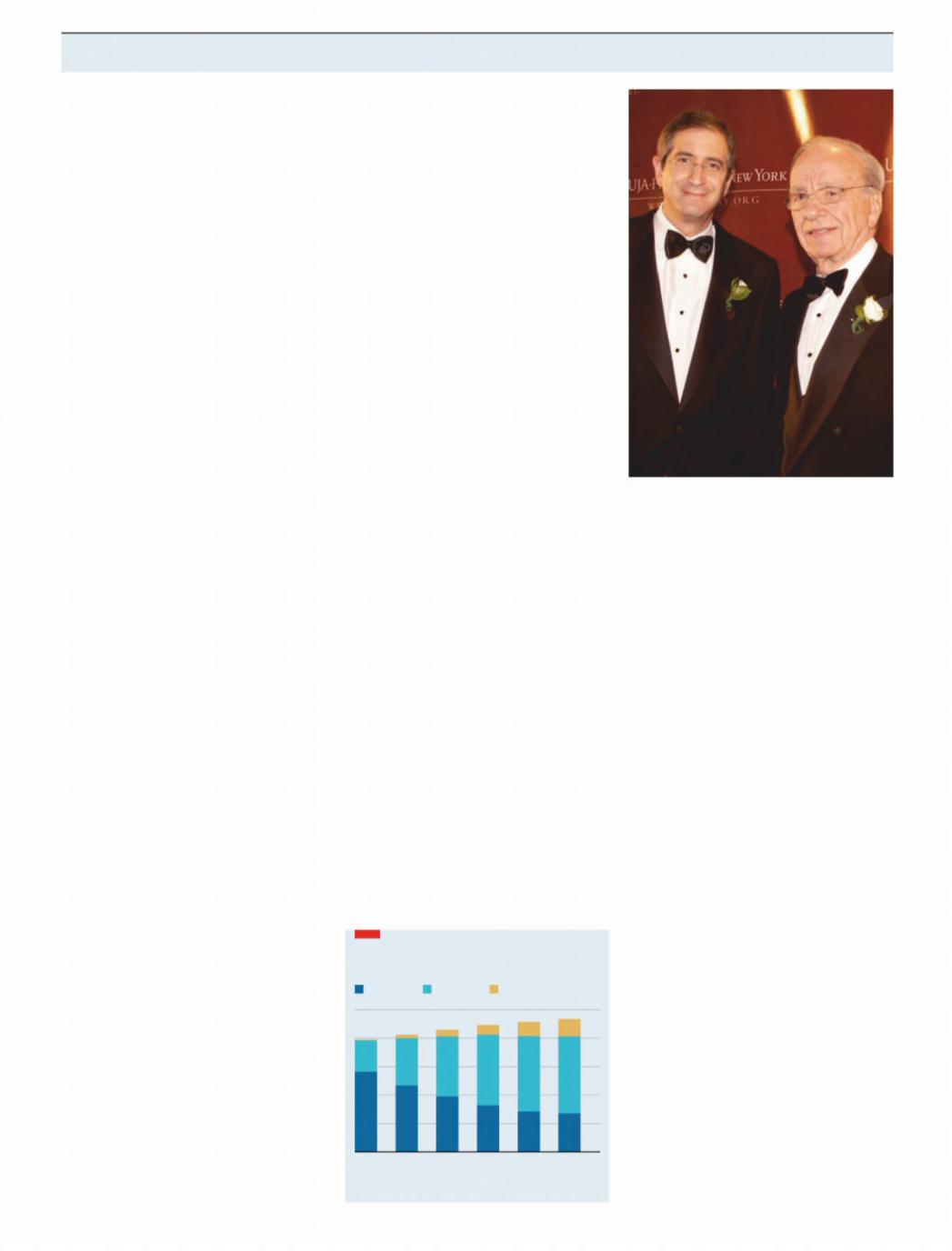
|
РЕЛИЗ ПОДГОТОВИЛА ГРУППА "What's News" VK.COM/WSNWS |
vk.com/id446425943 |
|
56 Business |
The Economist February 2nd 2019 |
Comcast and Sky |
|
Dish of the day |
|
N E W Y O R K
Sceptics of Comcast’s Sky deal abound, but Brian Roberts has a record of wrong-footing critics
In forging his media empire Rupert Murdoch never worried much about whether he was spending too much money. He thought it mattered more what businesses he was building. Such as, in 1989, a cash-haemorrhaging satellite broadcaster in Britain called Sky Television. Decades later Brian Roberts, chief executive of Comcast, an American paygiant,tvproved Mr Murdoch right again. In October he completed a deal to buy Sky, a successor to Sky
Television, for £30.6bn ($40bn).
Mr Roberts is also testing the wisdom of profligate spending with his deal. In buying Sky he is taking Comcast into Britain, Italy and Germany, adding 24m customers and $20bn a year in revenue (including Sky, Comcast has a total of 54m customers and $110bn in annual revenues). Critics say he massively overpaid for an antiquated technology at a time when internet video is the future. Four months on Mr Roberts has not articulated a grand strategy for the purchase. Comcast’s shares are trading at over 10% below what even some bears think is their fair value.
Investors may be discounting Mr Roberts too steeply. He has a similar record to Mr Murdoch of striking expensive deals that later look astute. First, he made a modest regional cable business he took over from his father, Ralph, into a media behemoth. In 2002 Comcast took over at& t ’s broadband business and improved its margins. Then came his acquisition of Universal, a networktv and film studio, at a valuation of $30bn, which some analysts found laughably high. Now it could not be had for twice that price.
Mr Roberts has bought Sky for a hefty premium over what Sky’s management team recently deemed it to be worth: in December 2016 they agreed to sell to Mr Murdoch’s Fox, a minority stakeholder, for £10.75 a share. Comcast paid £17.28, about 10% more than the final bid from Fox (which was backed by Disney, which is acquiring much of Fox). Yet Mr Roberts has become even more confident that his purchase of Sky is a good decision. “I believe we have more long-term opportunities than we originally conceived,” he says.
The bears think Mr Roberts is wrong for several reasons. The most obvious is the continuing ascent of Netflix, which gives customers in Europe a cheaper option for tv and films; in Britain, for example, Netflix has about as many customers—close to
10m—as Sky has satellite customers. Yet unlike in America, Europe’s paymarket tv has room to grow even as Netflix expands. Just one in three homes in Sky’s markets has paytv , compared with nearly 80% in America. Italy and Germany are growth markets. Payistvalso much less expensive in Europe. New Street Research, a research firm, predicts Sky will add 2.6m of the 78m available homes by 2023.
Another reason for wariness is that Sky could lose much of its best content, making it harder to add pay-tv customers. That is because &at, owner of andhboWarner Bros, and Disney could pull their films and tv shows by 2021 as they launch their own mini-Netflixes—or because Comcast is a competitor. But that understates the value to those firms of Sky’s distribution platform, argues Claire Enders of Enders Analysis in London. From it they can sell their new services to 24m customers.
Comcast also has leverage for its negotiations with Disney in the shape of its 30% stake in Hulu, an internet-video service with 25m subscribers. Disney will own 60% of Hulu after its Fox deal closes, and may want Comcast out. If Sky loses valuable content licences, it will invest more in original European productions to attract subscribers. It can also count on content from Comcast’s subsidiary, nbc Universal.
As for Sky’s main technology, to some analysts Comcast’s purchase resembles at& tnbc’s acquisitionin 2015 of Direc
ellite provider in America (also formerly owned by Mr Murdoch) that has lost nearly 2m of its 21m customers in less than two years. Sky has been losing satellite customers in Britain (see chart). Craig Mo ett of
Skyfall
Sky ’s European pay-TV customers, m
Satellite |
Hybrid* |
|
Streaming |
25 |
|
|
|
|
|
|
|
|
|
|
|
|
20 |
|
|
|
|
|
15 |
|
|
|
|
|
10 |
|
|
|
|
|
5 |
|
|
|
|
|
0 |
2013 |
14 |
15 |
16 |
17 |
18 |
Sources: New Street Research; |
|
|
|
||
company reports; The Economist |
|
*Satellite and streaming |
|||
http://new.guap.ru/i04/contacts
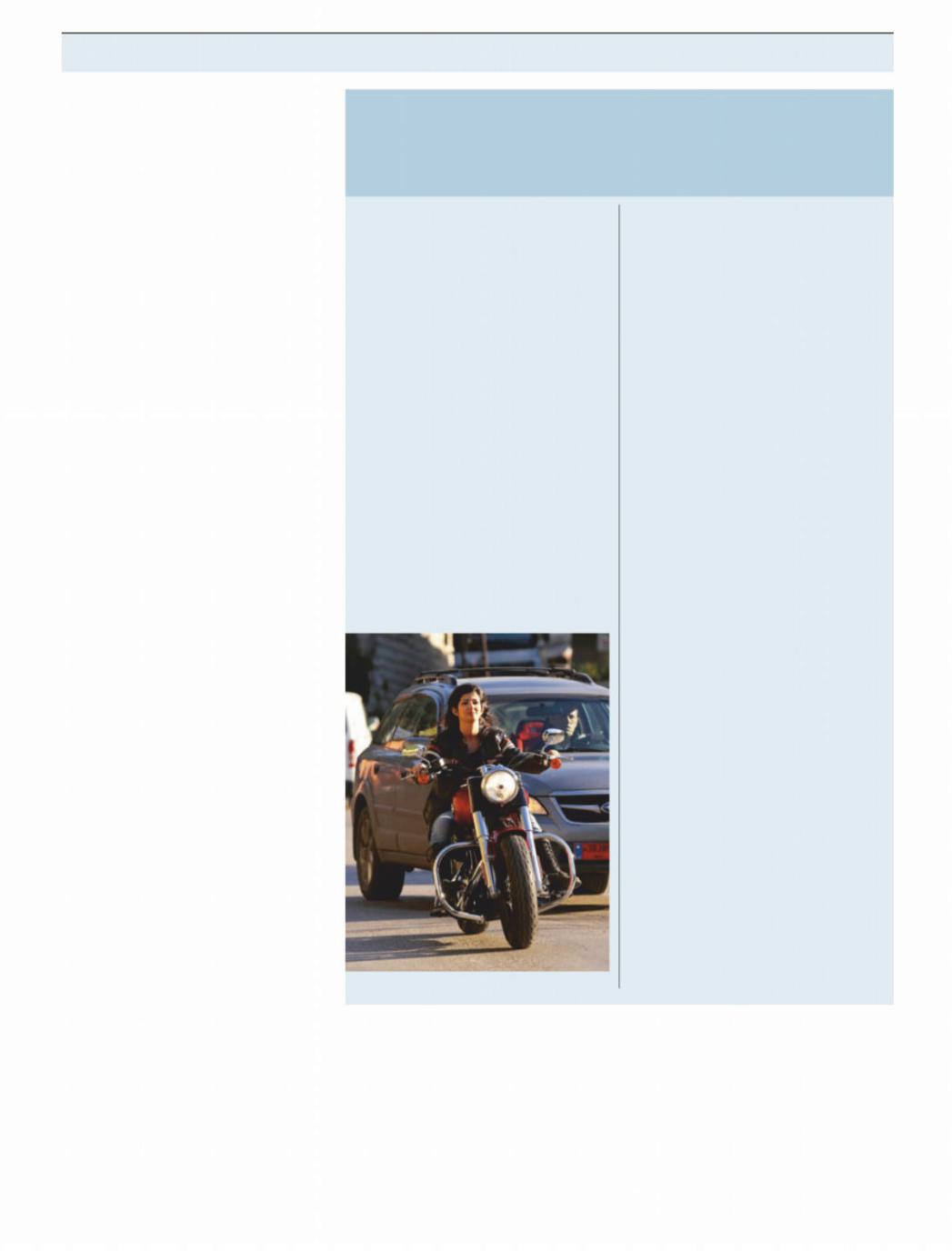
РЕЛИЗ ПОДГОТОВИЛА ГРУППА "What's News" VK.COM/WSNWS
vk.com/id446425943
Business 57
Harley-Davidson
Rough ride
M I LW A U K E E
An American icon is struggling once more
M O S C O W |
|
|
tour of the modernist building of |
||
America lifts sanctions on Oleg |
|||||
Athe Harley-Davidson museum in |
|||||
Deripaska’s business empire |
|
||||
|
|
|
Milwaukee helps to explain why the |
||
t first glance |
, the American governmidwestern- |
maker of motorcycles has |
|||
Ament’s decision to lift sanctions on |
iconic status, but also why it is strug- |
||||
Oleg Deripaska’s business empire looks |
gling. Nearly all the visitors are white, |
||||
questionable. He is a Russian oligarch |
middle-aged men, some clad in leather |
||||
close to the Kremlin and a former business |
and heavily tattooed, others dressed |
||||
partner of Donald Trump’s erstwhile cam- |
conservatively. Harley is the quintessen- |
||||
paign manager, Paul Manafort. Shares in |
tial baby-boomer brand but its custom- |
||||
en +, Mr Deripaska’s holding firm, soared |
ers are slowing down. |
||||
this week after a deal with America’s Trea- |
The firm has been losing sales at |
||||
sury department that saw Mr Deripaska re- |
home for eight consecutive quarters with |
||||
duce his ownership stake below 50% in ex- |
the latest being no exc eption. Sales in |
||||
change for the sanctions relief. Given Mr |
America plunged by a tenth in the three |
||||
Trump’s alleged fondness for Russia, many |
months ending at the end of December |
||||
in America smelled a rat. |
|
|
compared with the same period a year |
||
But what unfolded may be less a tale of |
earlier, it said this week. The total cost of |
||||
wrongdoing than of incompetence. Rich- |
tari s (those imposed specifically on its |
||||
ard Nephew, a former State Department |
bikes by the European Union and China, |
||||
sanctions specialist, compares the debacle |
and also those levied by America on |
||||
to the children’s rhyme about the old lady |
imports of steel and aluminium, its main |
||||
who swallowed a fly—o cials tried to |
materials), together with restructuring |
||||
solve a problem but compounded it. It be- |
costs, wiped out its profits. |
||||
gan with the new Trump administration’s |
The116-year-old business has been |
||||
perceived softness on Russia, which |
|
|
|||
spurred a Republican-controlled Congress |
|
|
|||
to pass the Countering America’s Adversar- |
|
|
|||
ies Through Sanctions ( |
|
caatsa ) act in 2 017, |
|
||
mandating the Treasury department to |
|
|
|||
make a list of potential Russian targets. |
|
|
|||
For political reasons the Trump admin- |
|
|
|||
istration resisted the order and in 2018 pub- |
|
|
|||
lished little more than a copy of the billion- |
|
|
|||
aires list from the Russian edition of |
|
|
|||
Forbes , a magazine. Facing criticism, the |
|
|
|||
treasury secretary, Steven Mnuchin, sanc- |
|
|
|||
tioned seven Russian businessmen and |
|
|
|||
their firms several months later, most |
|
|
|||
prominently Mr Deripaska, and his listed |
|
|
|||
aluminium giant Rusal and the en + con- |
|
|
|||
glomerate that controlled it. Shares in en + |
|
|
|||
and Rusal fell; so did the Russian rouble. |
|
|
|||
Yet Russia is more integrated into the |
|
|
|||
global economy than other countries |
|
|
|||
America has sanctioned. Hitting Rusal, a |
|
|
|||
huge aluminium producer, roiled alumi- |
Motorcycle-maintenance plan |
||||
num markets, disrupted supply chains, |
|||||
and strengthened Rusal’s Chinese compet- |
|
|
|||
itors. The economic shocks touched Amer- |
|
|
|||
ican and European firms which relied upon |
between Mr Deripaska and the Treasury’s |
||||
Rusal’s aluminium, as well as |
en +’sO downceofForeign Assets Control to try and |
||||
stream assets in the West. |
|
negotiate a plan. |
|||
O cials in America, Europe and Russia |
The deal they cut has been touted by the |
||||
began scrambling for a way out. The Trea- |
Treasury as |
providing “unprecedented |
|||
sury issued a series of exemptions that in |
transparency”. It seems robust. Mr Deri- |
||||
e ect kept the sanctions on Rusal and |
paska willen +reduce his stake in en + from |
||||
from going into force. Mr Deripaska or- |
70% to under 45%, will control just 35% of |
||||
chestrated a lobbying campaign in Wash- |
voting rights, and will not have access to |
||||
ington. en +’s British chairman, Lord Greg- |
dividends. vtb , a state-run Russian bank, |
||||
ory Barker of Battle, |
began |
shuttling |
will take on a large block of the shares, but |
||
through tough times before. It almost went under in1981when America was in recession and Japanese makers of motorcycles dumped unsold inventory onto the American market at extremely low prices. Then a group of employees bought the company, persuaded the government to impose tari s on Japanese bikes, improved the quality of its wares and returned to the heavy retro look of the1940s. That did the trick for baby boomers who flocked in droves to the expensive toys cleverly marketed as a symbol of freedom, individualism and adventure on America’s scenic roads.
Now tari s are the enemy: the company expects their cost to rise to $120m this year. Matt Levatich, Harley’s boss, stoked President Donald Trump’s ire when he announced in June his plans to move production of motorcycles destined for the European market out of America to avoid new eu duties. Some attribute recent poor sales to Mr Trump’s tweet in August supporting a boycott of the firm. But, “most Harley enthusiasts don’t care,” says Steven Levin, a surgeon from Chicago who has owned a succession of Harleys since college.
Harley’s other challenge is to win over millennials, women and non-white buyers. Last year Mr Levatich unveiled a five-year plan centred on the introduction of16 new motorcycle models such as Livewire electric bikes, and increasing Harley’s appeal in international markets.
Dealers are counting on the new models to be more a ordable, and attractive to a wider audience. Harley may su er from the quality of its older wares. Sales of used bikes are outpacing those of new ones by three to one (a decade ago it was the other way around). But while old bikes, and Harley accessories and clothing sold in specialist shops and on Amazon are selling well, they won’t compensate for the damage done to the hogs by tari s and youthful disinterest.
has been forced to surrender voting rights for them to an independent director. Smaller chunks of shares will go to Glencore, a commodity trader, and Mr Deripaska’s charitable foundation; all stakes held by Deripaska-controlled entities or his relatives will also forfeit voting rights.
In all, two-thirds of the board will be controlled by independent directors; half of the board will come from America and Britain. Mr Deripaska himself will remain1
http://new.guap.ru/i04/contacts
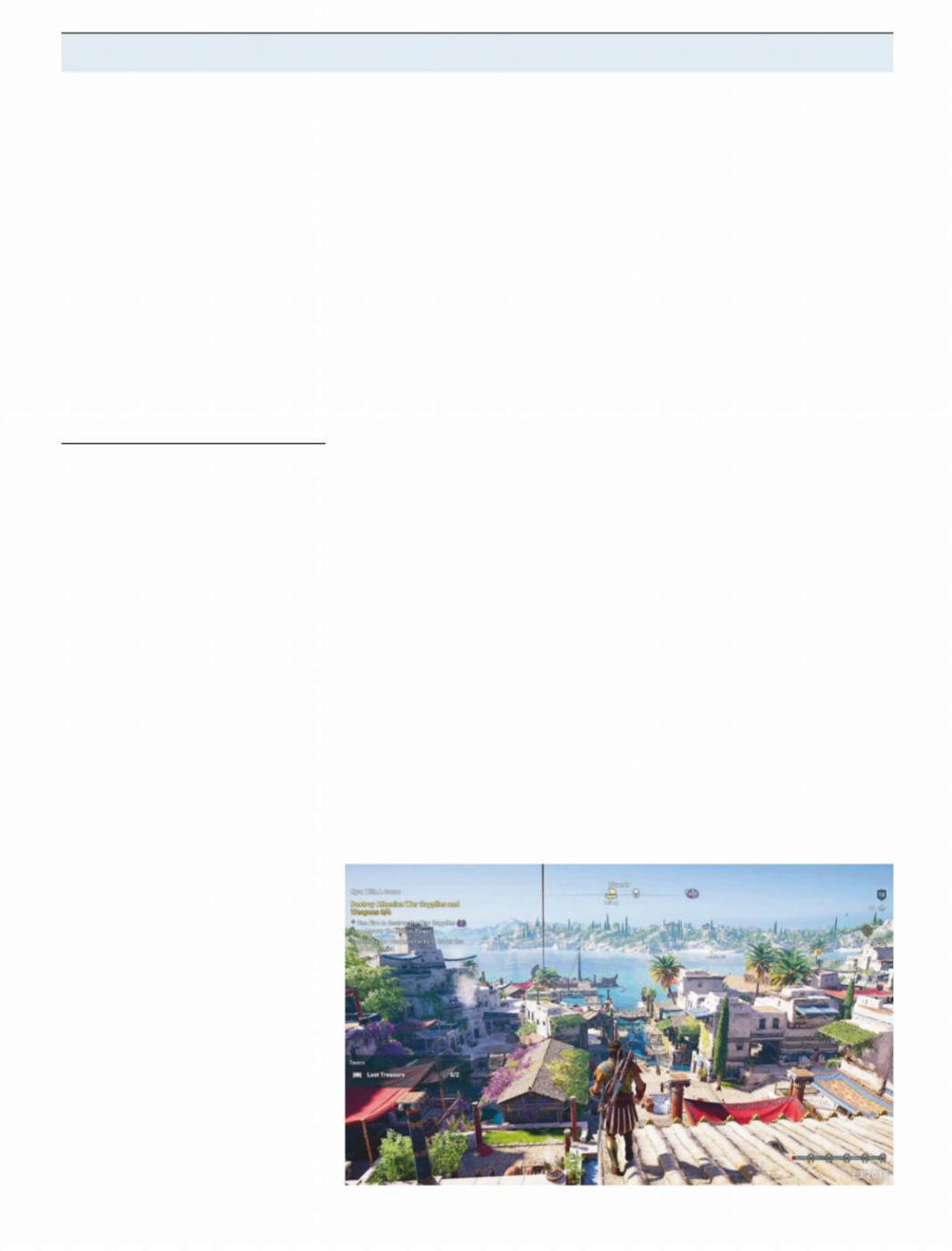
|
РЕЛИЗ ПОДГОТОВИЛА ГРУППА "What's News" VK.COM/WSNWS |
vk.com/id446425943 |
|
58 Business |
The Economist February 2nd 2019 |
2 under sanctions. In the case of foul play, the Treasury can reimpose penalties on the companies. The deal has drawn support from European governments and prominent Russia hawks in Washington.
Critics contend that focusing on the 50% ownership threshold is overly legalistic. Although wresting control of the board from Mr Deripaska will limit his influence, it will not eliminate it, especially if senior management appointed under his leadership remains loyal. Nonetheless, for the Kremlin, the deal is hardly cause to celebrate. America forced a Russian oligarch to surrender control of a nationally significant company—an unsettling precedent. What is more, lifting one set of sanctions may make Congress and the Treasury eager to demonstrate their tough-on-Russia bonafides by slapping on another. 7
Digital entertainment
Gameflix
Streaming revolutionised film and music. Gaming could be next in line
The ability to stream films and songs over the internet has upended the entertainment industry, but the $140bn market in video-gaming has resisted the revolution. That may soon change. A battle is brewing between big media and technology firms to see who—if anybody—can be-
come the Netflix of video games.
In October Google began tests of a cloud-gaming service called “Project Stream”, using a big-budget game, “Assassin’s Creed Odyssey” (a still is pictured). The game was designed to run on dedicated consoles and beefy pc s. But with the computational heavy-lifting shifted to Google’s data-centres, even a modest laptop could have the game’s sumptuous take on the Peloponnesian War piped to it over the web.
Those initial trials are now finished. Microsoft, which makes the x box consoles, is due to start testing a similar service, Project xCloud, later this year. Amazon is also thought to be interested. The giants will be battling a string of competitors. Electronic Arts, a big games publisher, has plans for a streaming product of its own. Nvidia, a maker of video-gaming graphics chips, is testing a similar service. Sony, which makes the PlayStation consoles, already has a cloud-gaming o ering called PlayStation Now, as do startups such as Loudplay and Shadow. Customers of Telecom Italia, an Italian internet provider, and Orange, a French one, can avail themselves too.
The hope is that cloudified games will be more appealing to consumers. The in-
dustry would simply be keeping up with their habits, says Kareem Choudhry, who runs Project x Cloud at Microsoft. People are trained to expect entertainment to be portable, transferable between di erent devices, and instantly available.
Gaming also has high upfront costs relative to other media—games sell for $40-60 and consoles cost between $250 and $400. (Super-powered gaming
even pricier.) With the cloud-gaming model those costs are replaced with a subscriptionfee. Sony,forinstance, charges $19.99 a month, or $99.99 a year; in return gamers get access to more than 700 titles.
The economics of cloud gaming, indeed, could be more attractive to manufacturers. Consoles such as the x box One or the PlayStation 4 are expensive to design and often sold at a loss, with firms hoping to recoup the money on game sales. In a cloudified future, expensive loss-leaders would no longer be necessary.
Streaming appeals for other reasons too, says Piers Harding-Rolls of ihs Markitt, an analysis firm. The games industry is increasingly making money from users paying for digital goods bought in a game. “Fortnite Battle Royale”, one of the most successful examples, is believed to have earned more than $1bn from in-app purchases since 2 Since017. the marginal cost of generating such digital goods is zero, every sale is pure profit. That model rewards scale, which is what cheap cloud gaming could help deliver.
But the business will live or die on how well the technology works. Unlike a film, a video game is an interactive experience. The computer running it must react instantly to the user’s input, or the game will feel sluggish. When hundreds of miles separate players from the devices crunching the numbers, that gets tricky. If the round trip from a player’s device to a data-centre and back again takes more than a couple of
Clouds are on the way
dozen milliseconds, things start to break down, especially for the frantic action games that dominate the best-seller charts.
Another issue is that data-flow created by a game can change unpredictably. While musicand film-streaming services can “bu er”—fetching the next few minutes of content before it is needed, to guard against connection hiccups—video games cannotpc s.areConnections must be rock solid.
Earlier attempts at cloud gaming—no- tably by a company called OnLive, which was founded in 2003, shut down in 2012 and sold its assets to Sony in 2015—foun- dered on such problems. Firms today are convinced things have changed. Home broadband connections are faster than they were ten years ago, for one thing. Clever new video-compression technologies can mitigate some of the old problems, says Mr Choudhry. Firms such as Amazon and Google have the resources and technical expertise to pose a serious threat to incumbent firms like Microsoft and Sony.
It is too early to guess who will win the battle. Amazon and Google already have data-centres in dozens of countries, and putting hardware close to customers is the easiest way to minimise all-important latency. Microsoft combines its own cloud expertise with a long pedigree in games. There are dark horses, too: Javier Polo, the boss of PlayGiga, a Spanish firm that licenses game-streaming technology, points out that isp s can put kit even closer to customers than the cloud firms, which might prove a useful advantage.
Change will not happen overnight. Microsoft and Sony have said that, for now at least, they view streaming as a complement to their conventional business models. Both are working on new consoles. The x box Two and PlayStation 5 are likely to
launch in 2020. Whether an x box Three o PlayStation 6 ever make it to market is an-
other question. 7
http://new.guap.ru/i04/contacts
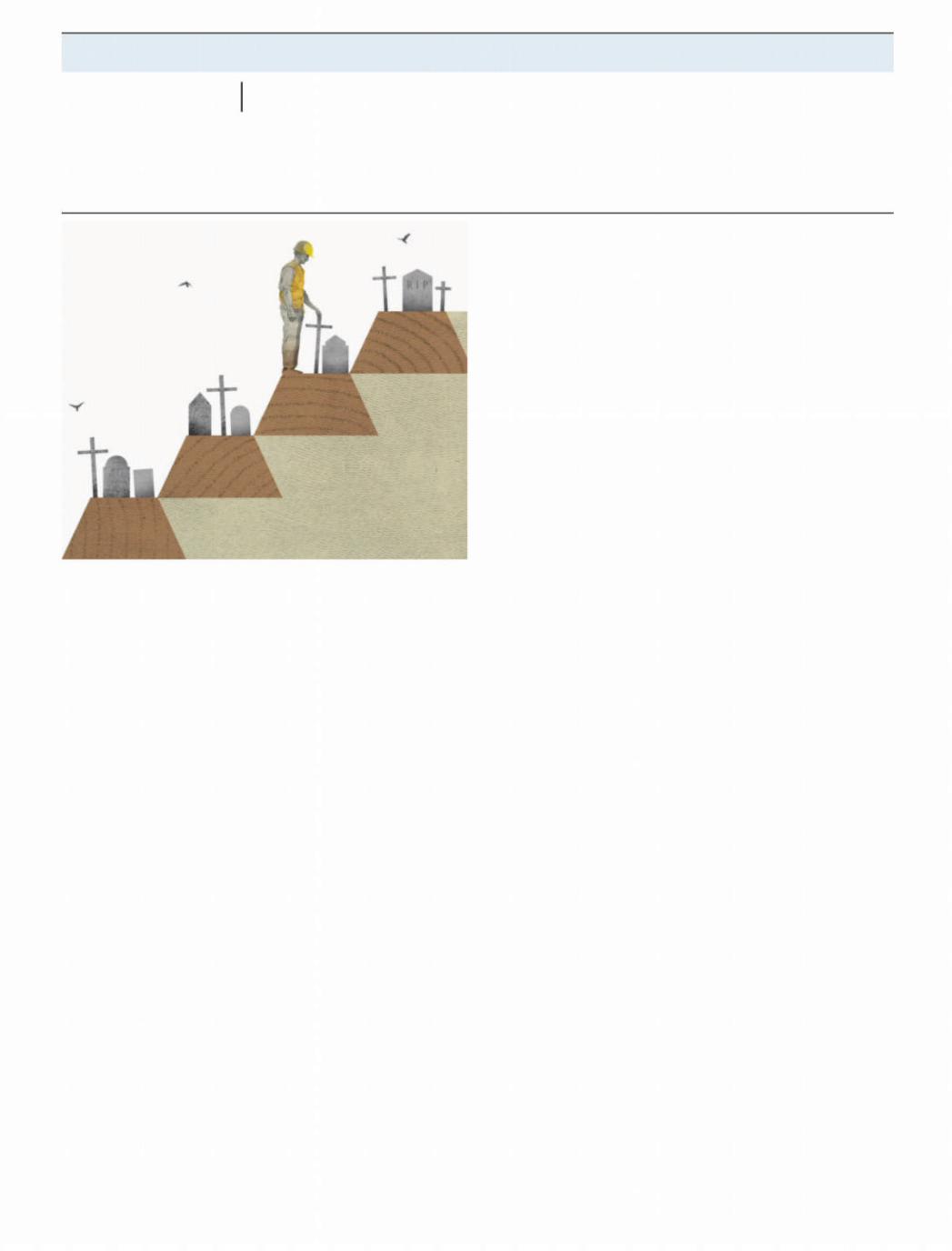
|
РЕЛИЗ ПОДГОТОВИЛА ГРУППА "What's News" VK.COM/WSNWS |
vk.com/id446425943 |
|
The Economist February 2nd 2019 |
Business 59 |
Schumpeter Into the valley of death
A Brazilian tragedy is a Deepwater Horizon moment. Sort of
|
|
This leads to a bigger question about Vale’s future. Does the |
||
|
|
scale of the twin disasters threaten it with the sort of fines, law- |
||
|
|
suits and damage to its reputation that |
bp , a British oil com |
|
|
|
incurred after the Deepwater Horizon disaster in the Gulf of Mexi- |
||
|
|
co in 2010? The total bill for bp came to more than $60bn. There are |
||
|
|
four reasons to take potential Armageddon seriously. Since the di- |
||
|
|
saster angry Brazilians have noted that, under Mr Schvartsman, |
||
|
|
Vale o ered generous dividends and share buy-backs to investors, |
||
|
|
helping its share price double since he took over in 2017. They say |
||
|
|
some of the money should have been spent on safety instead. |
||
|
|
If the authorities accept that line of reasoning, they could de- |
||
|
|
mand additional safety measures and shutdowns across Minas |
||
|
|
Gerais, where Vale mines about half of its iron ore. Second, it faces |
||
|
|
still undetermined damages for the Samarco disaster, which could |
||
|
|
rise as a result of the latest tragedy. Third, Brazil’s top prosecutor |
||
|
|
has said she will pursue criminal charges against executives: three |
||
|
|
Vale employees and two contractors have been arrested. State au- |
||
|
|
thorities have quickly levelled fines against the company and fro- |
||
|
|
zen selected assets. Damages could soar. Fourth is morale. Vale’s |
||
|
|
employees will mourn the loss of their colleagues, damaging mo- |
||
|
|
tivation. Executives will be so worried about yet another accident |
||
|
|
that they lose their appetite for risk. The more listless the com- |
||
rom the air, the iron-ore mines in Minas Gerais look like |
pany, the more likely financial performance will su er. |
|||
Froughshod capitalism let loose. Mines are torn out of the land- |
That said, this is crony-capitalist Brazil, not litigation-mad |
|||
scape, and ramshackle mining towns exist perilously close by. |
America. Though politicians argue that disasters in Brazil should |
|||
Squeezed within the dense topography are tailings dams, pools of |
be no less costly to big firms than those in the Gulf of Mexico, few |
|||
waste material extracted from the mine that sit behind pharaonic |
would be willing to see Vale su er the same drawn-out agony as |
|||
embankments reaching dozens of storeys high. On January 25th an |
bp . The firm says mining accounts for as much as 5% of Brazil’s |
|||
86-metre-tall one owned by Vale, the world’s biggest iron-ore pro- |
gdp . Vale’s big shareholders are some of Brazil’s top pension funds. |
|||
ducer, breached, unleashing a wave of sludge that may have killed |
It could compensate for shutdowns near Brumadinho by shifting |
|||
more than 350 people. They included hundreds of the company’s |
production to the Amazon rainforest, where it has a more modern, |
|||
own employees, many of them having lunch in the cafeteria, |
safer mine. There are plenty of incentives for the new government |
|||
recklessly sited below. |
|
of Jair Bolsonaro to be lenient, not least its pro-business bent. Ini- |
||
Such a death toll would make this one of the worst tailings trag- |
tially Vale lost $19bn of its market capitalisation after the disaster, |
|||
edies in history; worse for instance than Aberfan in Wales in 1966, |
but then pared some losses. Its bond prices, though cheaper, are |
|||
or Bu alo Creek, West Virginia in 1972. Even more damaging for |
not indicating severe trouble ahead. Vale will probably soldier on. |
|||
Vale, this is the second such disaster in which it is implicated in |
|
|
|
|
just over three years. For the world’s mining industry, too, it is |
Sludgefest |
|
|
|
cause for soul-searching. Similar tailings dams, which exist in |
In corporate disasters such as this, rivals are usually quick to twist |
|||
their thousands around the world, mock mining’s mantra of “safe- |
the knife. That happened to |
in 2010.bpBut the industry should |
||
ty first”. At a time when the industry is under increasing pressure |
look at itself in the mirror. Mining firms claim to be obsessed with |
|||
to put roughshod capitalism back in its box and respect land, local |
safety; in head o ces, that can extend to absurdities like obliging |
|||
peoples and the law, this is a problem it cannot ignore. |
visitors to hold on to handrails. Yet their record on tailings dams is |
|||
As hopes of rescue fade, the immediate question for Vale is |
abysmal. The more metals they mine, the more “very serious” acci- |
|||
what went wrong—not once, but twice. In 2015 Samarco, a com- |
dents occur, involving deaths and large quantities of sludge. Ac- |
|||
pany jointly owned by Vale and |
bhp , an Anglo-Australiancordminingto World Mine Tailings Failures (wmtf), a database,13 have |
|||
giant, su ered a similar tailings-dam disaster, causing the deaths |
taken place in the decade to 2017, as many as |
between1948 and1977. |
of 19 people and the worst environmental mishap in Brazilian his- |
wmtf experts say tailings dams fail at ten times the rate of reser- |
|
tory. In the aftermath, one of Vale’s proudest boasts was about the |
voirs, mostly because of poor drainage. This indicates that the in- |
|
safety of its own operations. As recently as September, a German- |
dustry needs to tighten its engineering standards. |
|
owned firm inspected the latest doomed mine near Brumadinho |
The reason firms continue to build upstream dams, such as the |
|
and gave it the all-clear. But it is an “upstream” dam, with a struc- |
one at Brumadinho, is not because they are safe, but because they |
|
ture consisting of tailings on top of tailings, and the most vulner- |
are cheap; they require the least amount of new material. Yet that |
|
able of all to failure. Experts say water seepage into the supporting |
is a false economy. Though markets reward mining firms for gen- |
|
dam face is the most common reason for them to burst. Days after |
erating profits, not for spending heavily on safety measures, in the |
|
the Brumadinho disaster, Fabio Schvartsman, Vale’s chief execu- |
long run the risks are literally piling up. The world needs mining to |
|
tive, ordered the decommissioning of all ten of the firm’s upstream |
continue, and these days, with big miners focusing on richer |
|
tailings dams, halting production at the mines nearby, which will |
countries with high levels of scrutiny, that means taking corporate |
|
a ect about a tenth of the company’s 390m tonnes of annual iron- |
governance seriously, not just paying it lip service. To take it seri- |
|
ore production. |
ously means shutting down facilities that are dangerous. 7 |
|
http://new.guap.ru/i04/contacts
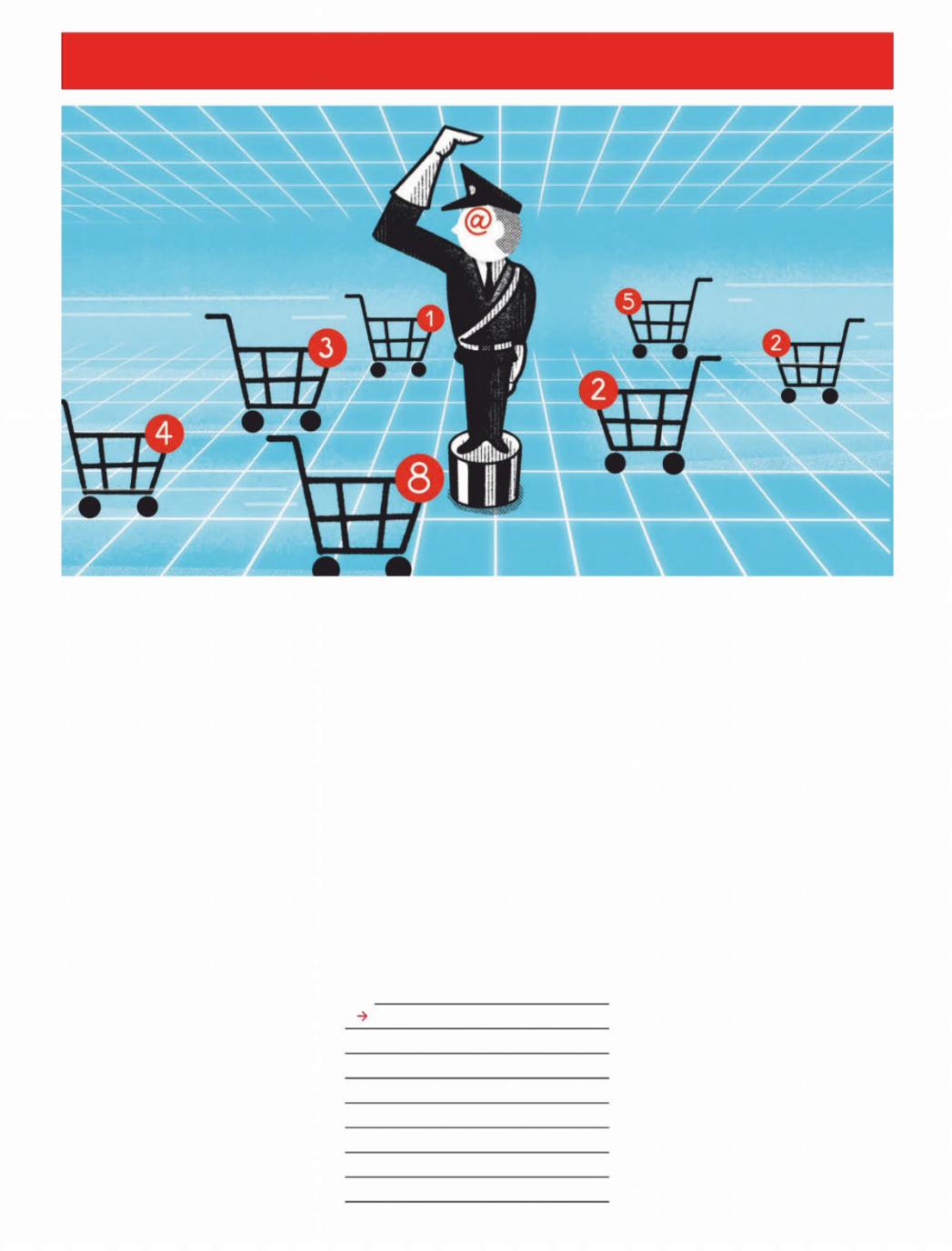
РЕЛИЗ ПОДГОТОВИЛА ГРУППА "What's News" VK.COM/WSNWS
vk.com/id446425943
60 |
Finance & economics |
The Economist February 2nd 2019 |
|
|
Global trade
Gaming the rules
W A S H I N GT O N , D C
Big powers battle over how to govern e-commerce
“Satisfaction guaranteed!” promises the seller of “The Law and Policy
of the World Trade Organisation” (
The magic of e-commerce means that the doorstopper can be exported from America to Tajikistan for a cool $35.95 (plus shipping). A new initiative on digital trade at the wto strives to add to the laws and policies described within its pages. But far from increasing general satisfaction, this plan is controversial.
At first glance, it is hard to see why. On January 25th representatives of 76 wto members gathered at the annual shindig in Davos announced plans to negotiate new rules covering “trade-related aspects of electronic commerce”. Compared with the trade talks between America and China that restarted this week in Washington, this venture seems positively collegial. It makes sense: trade rules were written when cloud computing was the stu of science fiction. What better way to demonstrate the value of the wto , just as President Donald Trump is busy undermining it?
But a closer look reveals conflict. Though the 76 members account for 90% of
global trade, they are a minority of members. Many developing countries claimwtothat )tighter. e-commerce rules would tie national regulators’ hands and that the issue is a distraction from others they care about more, such as limiting rich countries’ agricultural subsidies.
The plan is to sidestep such complaints, which have blocked agreement at the wto for years. Instead of getting all members to sign up to a multilateral deal, a likeminded group will set rules among themselves. Hold-outs, like India and South
Also in this section
61Italy’s struggling economy
62Measuring illicit financial flows
62Credit-default swaps
63Buttonwood: Heaven can wait
64Bank mergers in the Gulf
64Banco Popular
65Free exchange: Money down
Africa, will not be able to block progress if their demands are not met. The cost is the legitimacy that a broader group would generate—and the fact that non-signato- ries will free-ride on any deal, gaining from others’ commitments, without having to make any themselves.
Further battles lie ahead. “Countries don’t have a shared definition of what they’re negotiating,” complains Susan Aaronsonwtoof George Washington University. The wto defines e-commerce as the “production, distribution, marketing, sale or delivery of goods and services by electronic means.” That is broad.
An agreement could include regulations covering spam emails or rules helping digital purchases zip through customs. It could reach deep into members’ domestic regulations to cover cybersecurity or the protection of personal data. It could prevent barriers to cross-border data flows, or ban requirements to store citizens’ data on local servers. Every two years wto members renew a promise not to tax digitally provided goods, such as films from Netflix. A new deal could make that permanent.
American negotiators would like all of the above. Their technology firms benefit from data flowing freely, which helps them train algorithms and generate sales. Datalocalisation is expensive, and could weaken security by giving hackers more targets. And, obviously, they would rather their digital sales were not taxed.
This powerful lobby group’s ambitions have already been enshrined in deals away1
http://new.guap.ru/i04/contacts
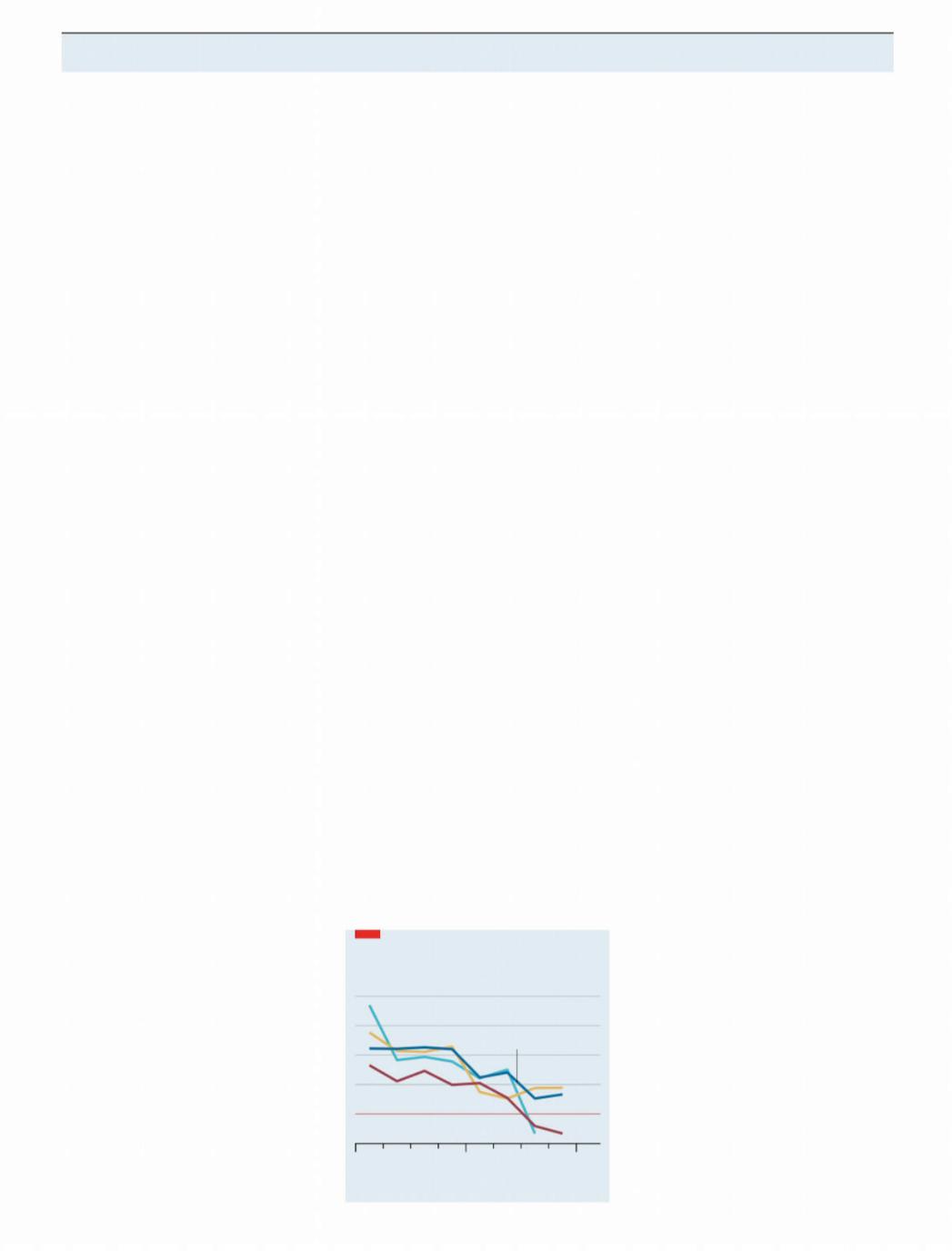
|
РЕЛИЗ ПОДГОТОВИЛА ГРУППА "What's News" VK.COM/WSNWS |
vk.com/id446425943 |
|
The Economist February 2nd 2019 |
Finance & economics 61 |
2 from the |
wto . The United States-MexicoItaly- ’s economy |
|
|
||||
Canada Agreement (usmca |
), which Ameri- |
Growing fears |
|
||||
ca’s Congress is supposed to ratify later this |
|
||||||
year, bans customs duties on digital pro- |
|
|
|
||||
ducts. So does the Trans-Pacific Partner- |
|
|
|
||||
ship ( |
tpp ), which was negotiated by 12 |
|
|
||||
countries, including America, and revived |
|
|
|
||||
by the others when Mr Trump pulled Amer- |
The latest slump reflects trouble both |
||||||
ica out. The |
barstpp governments from |
||||||
at home and abroad |
|
||||||
forcing companies to hand over their |
|
||||||
|
|
|
|||||
source code, and the |
goesusmcafurther by |
taly boasts no glittering economic re- |
|||||
including algorithms, too. Both ban data- |
Icord. gdp growth has trailed the euro- |
||||||
localisation requirements. |
|
area average every year since1999. Despite a |
|||||
Many worry that American technology |
decent showing in 2016-17, the economy |
||||||
companies are using trade rules to neuter |
has yet to regain fully the output lost dur- |
||||||
national regulators. In theory, there are ex- |
ing the global crisis a decade ago and a do- |
||||||
ceptions to the rules regarding data locali- |
mestic banking scare a few years later. |
|
|||||
sation and technology transfer. But critics |
Now even its modest recovery seems to |
||||||
fear that governments will be wary of in- |
have gone into reverse. Figures published |
||||||
voking those |
exc eptions, and that arbiterson January 31st showed that Italy slipped |
||||||
at the wtowill side with companies. |
into recession in the second half of 2018. |
||||||
It will be hard to get European negotia- |
The economy shrank by 0.2% in the final |
||||||
tors on board with some of this. European |
quarter of 2018, its second consecutive con- |
||||||
law treats privacy as a fundamental human |
traction (see chart). The causes are both do- |
||||||
right, and the free flow of data as second- |
mestic and external. They seem likely to |
||||||
ary; the Americans (and Japanese) start |
depress the economy this year, too, and to |
||||||
from the premise that data should flow and |
worsen an already fraught fiscal position. |
||||||
only then consider |
exc eptions on privacyThe euro zone—notably Germany—has |
||||||
grounds. Still, a recent deal between the |
lost momentum as global trade has slowed. |
||||||
European Union and Japan suggests the |
Italy has not been immune. Exports rose by |
||||||
di erences may not be insurmountable. |
nearly 6% in 2 |
but017,Loredana Federico of |
|||||
The biggest fight will be with China. Its |
UniCredit, a bank, reckons they probably |
||||||
government views data as an issue of |
grew by just 1% last year. Giada Giani of |
||||||
sovereignty, and trade in data as a national- |
Citigroup, another lender, argues that the |
||||||
security |
matter. Chinese |
representatives |
fate of Italy’s economy is tied to that of Ger- |
||||
reportedly tried to narrow the scope of the |
many’s, in part because of integrated |
||||||
talks, threatening not to participate. They |
manufacturing supply chains. Declining |
||||||
joined in the end, presumably deciding |
industrial production in Germany is likely |
||||||
that it would be better to have influence |
to have spread south. (Germany’s |
fell |
|||||
over any new rules rather than see stan- |
more sharply than Italy’s in the third quar- |
||||||
dards that could become global set without |
ter of 2018, though some of that dip was |
||||||
them. Other countries see little value in |
caused by a temporary halt to car produc- |
||||||
rules that enshrine China’s draconian ap- |
tion because of new emissions standards.) |
||||||
proach to data, but also know the value of |
Italy’s recession is also partly home- |
||||||
having a country of China’s size involved. |
grown. In September 2018 its populist gov- |
||||||
American administrations have tried to |
ernment unveiled budget plans for 2019 |
||||||
resolve these di erences in the past. The |
that defied the European Union’s fiscal |
||||||
Transatlantic Trade and Investment Part- |
rules. As the row with Brussels worsened, |
||||||
nership, a proposed deal between America |
government borrowing costs rose sharply. |
||||||
and the eu , was supposed to cover the twoTensions were eventually defused in De-
sides’ di ering approaches to data. Togeth- |
|
|
|
|
|
|
|
|
|||
er with the |
tpp , it was meant to draw China |
|
|
|
|
|
|
|
|||
into a less hostile regulatory pattern. |
A dismal bunch |
|
|
|
|
||||||
Americans are once again working with |
GDP, % change on previous quarter |
|
|
||||||||
other countries to pull in China. In Decem- |
|
|
|
|
|
|
|
1.2 |
|||
ber Roberto Azevêdo, the |
wto ’s head, de- |
|
|
|
|
|
|||||
|
|
|
|
|
|
||||||
scribed American e orts on e-commerce |
|
Germany |
|
|
|
|
0.9 |
||||
as “very active”. But negotiators may be |
|
|
|
|
|
Euro area |
|
||||
short of bargaining power. Plurilateral ne- |
|
|
|
|
|
0.6 |
|||||
|
|
|
|
|
|
|
|||||
gotiations on narrow topics at least mean |
|
|
|
|
|
|
France 0.3 |
||||
that China cannot block all discussion. But |
|
|
|
|
|
|
|||||
|
|
|
Italy |
|
|
|
|
||||
they also remove the opportunities to bar- |
|
|
|
|
|
|
0 |
||||
|
|
|
|
|
|
|
|||||
gain unrelated concessions against each |
|
|
|
|
|
|
|
||||
|
|
|
|
|
|
|
|
||||
other, which is how trade negotiators reach |
|
|
|
|
|
|
|
-0.3 |
|||
consensus. This initiative could be the suc- |
|
|
|
|
|
|
|
||||
Q1 |
Q2 |
Q3 |
Q4 |
Q1 |
Q2 |
Q3 |
Q4 |
||||
cess the |
beleaguered |
desperatelywto |
|||||||||
|
2017 |
|
|
2018 |
|
||||||
needs. Or it could be another demonstra- |
|
|
|
|
|||||||
|
|
|
|
|
|
|
|
||||
Source: Eurostat
tion of its weakness. 7
cember, when the government agreed to |
||||
run a smaller deficit, largely by dint of post- |
||||
poning its plans to increase spending. |
||||
Though the spread between Italy’s govern- |
||||
ment-bond yields and those of safe-haven |
||||
Germany has fallen from its peak, it is still |
||||
higher than it was a year ago. |
|
|||
The instability has had an economic |
||||
cost. A survey of lenders by the European |
||||
Central Bank |
(ecb)found that in the fourth |
|||
quarter of 2018 Italian banks became more |
||||
fussy about whom they lent to, even as |
||||
credit standards in other large euro-zone |
||||
countries eased. That could reflect rising |
||||
funding costs. The Bank of Italy, the na- |
||||
tional central bank, expects that rises in |
||||
sovereign-bond yields will push Italian |
||||
companies’ borrowing costs up by a per- |
||||
centage point over the next three years. |
||||
Olivier Blanchard and Jeromin Zettelmeyer |
||||
of the Peterson Institute for International |
||||
Economics, a think-tank, estimated in Oc- |
||||
tober that such financial-market e ects |
||||
would probably o set the boost from the |
||||
government’s fiscal measures. |
|
|||
These domestic and external forces |
||||
have similar economic e ects, notes Ni- |
||||
cola Nobile of Oxford Economics, a consul- |
||||
tancy. They shake businesses’ and house- |
||||
holds’ confidence, leading them to delay |
||||
spending. Measures of sentiment have |
||||
weakened. The Bank of Italy notes that the |
||||
share of firms expecting to increase invest- |
||||
ment in 2019 has fallen. Economists have |
||||
marked down their forecasts for |
||||
growth in 2019. The |
expectsimf growth of |
|||
0.6% in 2019, down from its forecast of 1% |
||||
in October. Mr Nobile and Ms Giani have |
||||
plumpedgdp |
for a more gloomy 0.2-0.3%. |
|||
ecb-watchers think that the bank may |
||||
extend its targeted long-term refinancing |
||||
operations. The scheme, which o ers |
||||
banks cheap funding in return for lending |
||||
to firms and households, could help ease |
||||
credit conditions in Italy. Beyond that, |
||||
policy options are limited. The |
will in-ecb |
|||
ject further stimulus only in the event of a |
||||
wider slowdown, rather than one confined |
||||
to Italy. And anyway, any easing might be |
||||
too little to counter Italy’s deeper slump. |
||||
Italy’s government now finds itself |
||||
hemmed in. Economic weakness worsens |
||||
its fiscal position. Public debt, already132% |
||||
of gdp , could rise further. The budget defi- |
|
|
cit will probably |
exceed the governm |
e |
target of 2% of |
gdp . That worse fiscal posi- |
|
tion could, in turn, make it harder for the government to stimulate the economy. If the European Commission decides Italy has broken its fiscal rules, any further spending will cause another row. And last year’s episode showed that big spending plans can be self-defeating if financial markets are spooked. Italy’s government would need to convince both Brussels and investors that extra spending would help the economy grow. Until then Italy will stagger on. 7
http://new.guap.ru/i04/contacts

РЕЛИЗ ПОДГОТОВИЛА ГРУППА "What's News" VK.COM/WSNWS
The Economist February 2nd 2019
|
|
|
|
often blurry. Developing countries lack re- |
||||
|
|
|
|
sources to pursue complex legal cases, so |
||||
|
|
|
|
big firms find it easier to get away with |
||||
|
|
|
|
avoidance that should count as evasion. |
||||
|
|
|
|
Measuring illicit flows is even more |
||||
|
|
|
|
fraught. One method exploits discrepan- |
||||
|
|
|
|
cies in trade data. The exports that Ghana |
||||
|
|
|
|
reports to France, say, should match the |
||||
|
|
|
|
imports that France reports from Ghana. In |
||||
|
|
|
|
practice, that is rarely the case. Traders may |
||||
|
|
|
|
understate the value of exports, or over- |
||||
|
|
|
|
state the value of imports, as a way of slip- |
||||
|
|
|
|
ping money out of a country. They may also |
||||
|
|
|
|
fiddle paperwork to dodge border taxes. Big |
||||
|
|
|
|
inconsistencies hint at wrongdoing. |
||||
|
|
|
|
gfi combines this method with bal- |
||||
|
|
|
|
ance-of-payments data. In 2015 the High |
||||
|
|
|
|
Level Panel on Illicit Financial Flows from |
||||
|
|
|
|
Africa, a group chaired by Thabo Mbeki, a |
||||
|
|
|
|
former South African president, used a |
||||
|
|
|
|
similar approach to conclude that a net |
||||
|
|
|
|
$50bn leaks out of the continent each year. |
||||
Dirty money |
|
|
|
Both figures have been questioned. |
||||
|
|
|
Some trade discrepancies are indeed |
|||||
Leaky borders |
|
caused by fraud, which is why misreport- |
||||||
|
ing is less of a problem where corruption is |
|||||||
|
|
|
|
lower or accounting standards are higher. |
||||
|
|
|
|
Yet they may also result from errors, quirks |
||||
|
|
|
|
or transit trade. One |
unctadreport con- |
|||
K A M P A L A |
|
|
|
cluded that almost all South Africa’s gold |
||||
|
|
|
leaves the country unreported, only for tax |
|||||
Illicit financial flows are hard to stop. |
||||||||
o cials to point out that most of it was re- |
||||||||
They are even harder to measure |
|
|||||||
|
corded, just in a di erent format. |
|
||||||
|
|
|
|
|
||||
hen foreign aid enters developing |
A recent report by the World Customs |
|||||||
Wcountries, it is welcomed with hand- |
Organisation concludes |
that |
existing |
|||||
shakes and ribbon-cutting. Private money, |
methods are simply too unreliable to mea- |
|||||||
by contrast, is sometimes smuggled across |
sure the scale of illicit flows. And anyway, |
|||||||
borders or siphoned into o shore bank ac- |
trade data capture only one type of malfea- |
|||||||
counts. Everyone agrees that such “illicit |
sance (smugglers fly completely under the |
|||||||
financial flows” are a problem. A report |
radar). Some experts take a di erent tack. |
|||||||
published on January 28th by Global Finan- |
Alex Cobham of the Tax Justice Network |
|||||||
cial Integrity ( |
gfi ), a campaign group, estiandPetr Jansky of Charles University, |
|||||||
mates that illicit flows to and from devel- |
Prague, propose two indicators: one based |
|||||||
oping countries are worth more than a fifth |
on mismatches between where multi- |
|||||||
of their total trade with the rich world. |
|
nationals report their profits and where |
||||||
Governments have pledged to plug the |
their real activity occurs, and another that |
|||||||
leaks, including as part of the |
un ’sisSustainmeasure- |
of undeclared o shore assets. |
||||||
able Development Goals. If only they could |
Perhaps it would be simpler to abandon |
|||||||
reach agreement on what they are talking |
the catch-all term “illicit financial flows”. |
|||||||
about. A few rich countries, notably Ameri- |
But its very vagueness is the reason it |
|||||||
ca, complain that illicit flows are not prop- |
caught on. Rich countries like talking |
|||||||
erly defined. Statisticians are still puzzling |
about corruption, which they blame on |
|||||||
over how they can be accurately measured. |
poor-country elites. Poor countries like |
|||||||
Obviously, gun-running and drug-traf- |
talking about tax avoidance, which they |
|||||||
ficking should count; in 2011 the un esti- |
blame on foreign multinationals. Loose |
|||||||
mated that financial flows linked to trans- |
language keeps everyone happy. |
|
||||||
national organised crime were worth 1.5% |
Except the unfortunate statisticians. A |
|||||||
of global |
gdp . Bribes, and the proceeds ofteam of them from the |
is dueunto publish |
||||||
unregistered trade in legal goods, such as |
some first thoughts this year; it may be sev- |
|||||||
cigarettes, probably should, too. But broad- |
eral years before an indicator is agreed on. |
|||||||
er definitions also fold in tax avoidance, |
In the meantime, it would be a shame if dis- |
|||||||
which may not be illegal. The result is |
agreements distract from action. Beefing |
|||||||
hopelessly vague, diverting attention from |
up customs authorities, establishing pub- |
|||||||
dirty money to smear legitimate business- |
lic registries of beneficial ownership and |
|||||||
es, argues Maya Forstater of the Centre for |
exchanging |
more information |
between |
|||||
Global Development, a think-tank in |
countries about the taxes citizens and |
|||||||
Washington. Tax activists retort that the |
companies pay could all reduce skuldug- |
|||||||
line between lawful and unlawful acts is |
gery—however it is measured. 7 |
|
||||||
Credit-default swaps
Letter and spirit
Conflicts in the credit-derivatives market threaten to undermine it
Shakespeare was a fan of the quibble. His plots often hinge on the gap between word and intended meaning. Macbeth was supposed to be invincible because he could be harmed by “none of woman born”—but his killer, Macdu , was delivered by Caesarean section. In “The Merchant of Venice” Portia saves Antonio by arguing that though he agreed to forfeit a pound of flesh to Shylock if he defaulted
on a loan, he did not agree to lose blood. Traders in credit-derivative markets are
keen on quibbles, too. Credit-default swaps ( cds s) are insurance-like derivatives designed to compensate lenders when a company goes bust. A simple enough aim, you might think, but there are plenty of devilish details. A company can go bust in many ways: it can close and have its assets sold o , or restructure its debt and keep operating. And contractscds pay out the difference between a bond’s face value and the price of the cheapest bond available, even though the underlying characteristics of a company’s various bonds can di er widely.
In 2018 gso , a branch of Blackstone, the world’s largest private-equity firm, came under fire for o ering cheap financing to Hovnanian, an American house-builder,
on condition that Hovnanian would default on a payment to a subsidiary, triggering the cdscontracts. Financing took the form of a long-term, low-coupon bond that traded well below face value, meaning the cds would pay out handsomely when valued against that bond—even though Hovnanian’s other bonds were trading close to face value. (Blackstone says that its arrangement with Hovnanian was fully compliant with the rules of this market.)
Later that year traders started trying, so far without success, to get cds contracts on Rallye, the parent company of Casino, a French supermarket, to pay out because an obscure covenant on one of its bonds required shareholder equity to exceed €1.2bn ($1.4bn), a condition it no longer met.
Last week, however, quibblers were given pause by an arbitration ruling that appeared to break with the convention of sticking to the letter of contracts, rather than trying to divine their intentions. The
case arose when $600m-worth of concds tracts plunged in value. Traders realised
that the entity they were written on, VodafoneZiggo, a Dutch telecoms company, had been wound down. Its bonds had been transferred to a new entity, rendering its1
http://new.guap.ru/i04/contacts
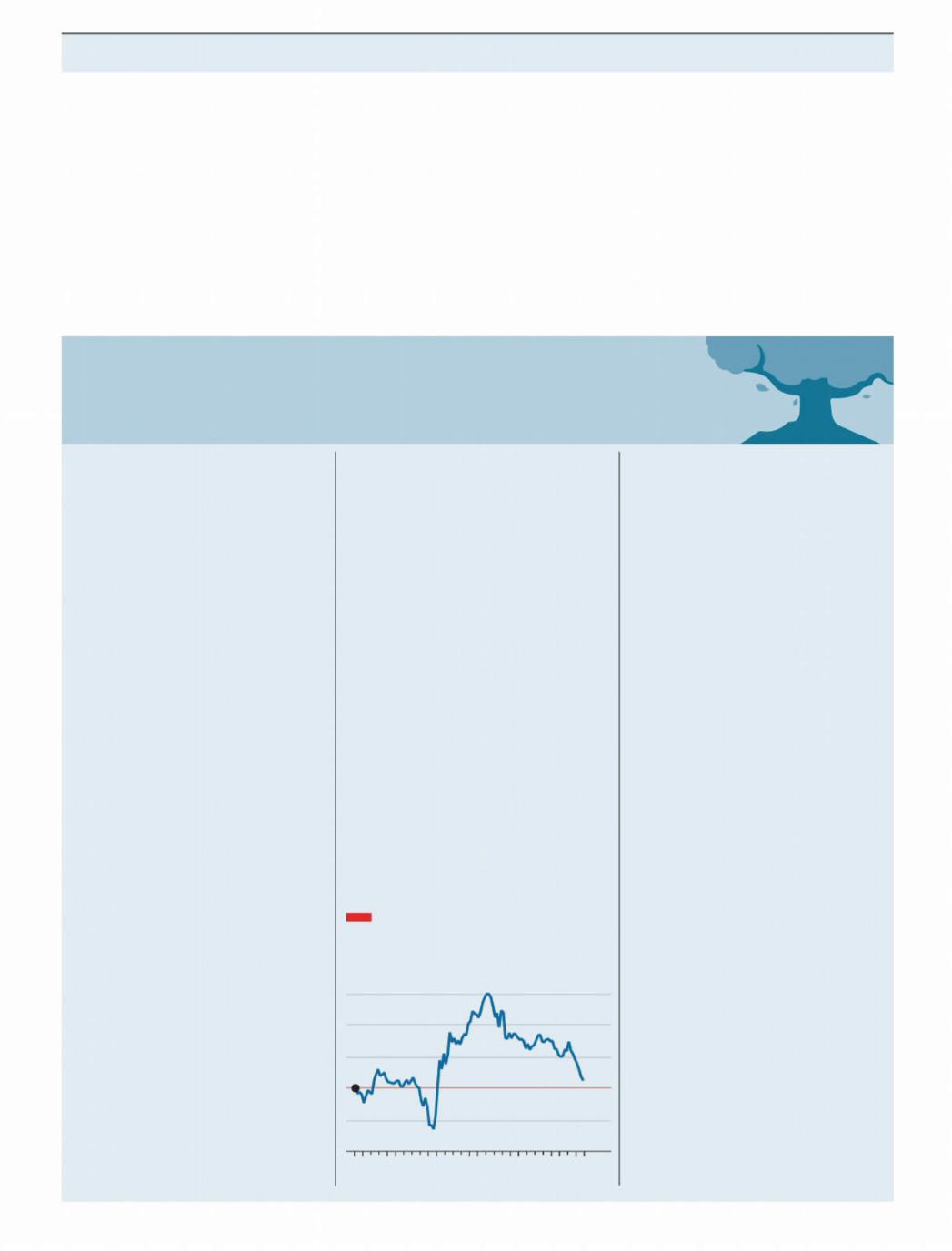
|
РЕЛИЗ ПОДГОТОВИЛА ГРУППА "What's News" VK.COM/WSNWS |
vk.com/id446425943 |
|
The Economist February 2nd 2019 |
Finance & economics 63 |
2 cds s potentially worthless.
This would not have mattered if market supervisors had been informed within 90 days. But investors did not notice for almost a year. So they turned instead to a clause saying that the couldcdsbe transferred to a new entity if it had assumed “all of the obligations” of the old one.
cds documents usually capitalise the word “obligation”, a cue that the writer is referring to the entity’s bonds. But in one place it was written in lower-case, implying that it referred to any obligations, for example tax liabilities, that the old Voda-
foneZiggo entity might still have. An ad hoc committee of lawyers from ten banks and five fund managers was convened to hear the dispute. It ruled that the ongoing obligations were “immaterial”, and that the cds should be transferred. Markets were astonished: its value shot back up.
The decision matched the spirit of the cds . But deviating from the letter of the contract raises broader issues. The perception that the value of a cds might be determined by an unaccountable committee could undermine the marketcds. It is already shrinking: according to the Bank for
International |
Settlements, the |
notional |
|
|
value insured |
by |
cds s |
has fallen from |
|
$61.2trn in 2007 to $9.4trn in 2 |
This is |
017. |
||
partly because of welcome regulatory changes, such as netting of contracts. But it has also reduced liquidity.
If the market vanishes, it would be a loss. cds s allow banks to lend to a wider range of firms, since they can hedge their credit exposure. They allow pension funds, which are often required to protect their capital, to invest in higher-yielding bonds. Quibbles about contracts always exist; the fight over who resolves them will go on. 7
Buttonwood Heaven can wait
Value investing is long on virtue but has been short on reward
In a comedy sketch from the1980s, Rowan Atkinson plays the devil as a
cross between a package-holiday guide and a louche English bureaucrat. Dressed in a smoking jacket, he welcomes the damned to Hell and, consulting his clipboard, sorts them into groups. Lawyers? Join the thieves and murderers over there. The French? Come down here with the Germans. Atheists? You must be feeling pretty silly. And finally, Christians? I’m sorry, your faith was an error.
Even if they are not confronted by hard evidence, everyone is occasionally troubled by the thought that their beliefs are misplaced. A bad run of stockmarket returns is such a test of faith. Investors who favour “value” stocks—those with a low price relative to the book value of a firm’s assets—have had to wrestle more than most with doubt. If you buy value, and are patient, your reward should be superior returns. But for much of the past decade, value has seemed a damned strategy (see chart).
Is redemption at hand? Value stocks fell less hard than others at the end of last year and have bounced in the early weeks of this year. Even so, don’t expect too many sudden converts to the value religion. Look in the basket of low price-to- book stocks and you find it heavy with troubled carmakers, banks and energy firms. Few are enticed by this lot. Only the faithful can bear the discomfort that is part of value investing. If you seek its promise, it is hard to avoid the su ering that goes with it.
The value approach favours stocks with a low price relative to intrinsic worth. It is founded on the idea that though prices will vary with investors’ moods, a stock’s true value is lasting. It is anchored by the worth of a company’s assets—its buildings, machinery and so
on. A slew of academic studies, notably a canonical paper by Eugene Fama and Kenneth French published in1992, have identified a value premium. Value stocks— those with a low price-to-book ratio—do better over the long haul than “growth” stocks—those with a high price-to-book. This may be a reward for business-cycle risk: asset-heavy firms su er in downturns, when those assets lie idle. Or it may be because of investor errors—overpaying for faddish growth stocks while neglecting dowdy value stocks.
It has been such a long wait for value to come good that it is natural for doubts to emerge. One is about the merit of book as a gauge of intrinsic value. It is useful in appraising the sort of businesses that are based on machine technology. Much of their value is in fixed assets. But it is a harsh judge of digital firms, whose value is tied up in intangibles, such as patents, brands, processes and general know-how. Accounting rules distort the value lens. Factories and o ce buildings count as a capital asset on a firm’s books; most intangible assets do not. This is why many
Fallen from grace
Russell 1000 total return indices
Value relative to growth, Q1 1991=100
175
150
125
100
75
50
1991 |
95 |
2000 |
05 |
10 |
15 |
18 |
Source: Datastream from Refinitiv
value investors do not rely solely on book. They also look at a firm’s cashflow, net debt, governance and, yes, even its earnings growth.
A broader view of this kind mitigates a second nagging doubt—about the sectoral bias that emerges when stocks are sorted by price-to-book. A value strategy ought (or used) to mean favouring cheap stocks over dear ones. But it now almost boils down to banks versus tech. Pure value baskets are groaning with financial firms; growth indices are crammed with asset-light technology firms. So if tech firms do well and banks su er, “value gets killed”, in the words of one value-fund manager.
Value indices seem more and more like a dumping grounds for problem industries: banks (a narrow margin between shortand long-term interest rates); carmakers (trade wars; emissions scandals; electric vehicles) and energy firms (peak oil demand). Yet for believers in value, that is precisely the point. You buy problem stocks while they are a problem, because that is when they are cheap, says Andrew Lapthorne of Société Générale, a French bank. The problem need not go away for value stocks to rally. It need only become less acute.
Value is an austere church, with its own liturgy, sacraments and martyrs. But just as you find traces of religiosity in the most committed atheist, every investor is at some level a value investor. The agnostic who says it is impossible to time the market will discover a price level at which he refuses to buy. And though growth is supposed to be the antithesis of value, few growth investors ever express a wish to buy the priciest stocks they can find. All investors su er doubt. When judgment is due, they hope they have ended up in the right place.
http://new.guap.ru/i04/contacts

РЕЛИЗ ПОДГОТОВИЛА ГРУППА "What's News" VK.COM/WSNWS
vk.com/id446425943
The Economist February 2nd 2019
Bank mergers in the Gulf |
controls all three parties. The state wasalso |
|
Three’s company |
on both sides in the merger that created |
|
fab. The union of Saudi British Bank and |
||
|
Alawwal, says Mr Damak, is made easier by |
|
|
the fact that the main shareholders of |
|
|
both— hsbcand Royal Bank of Scotland— |
|
|
are big Western banks. |
|
An overbanked region sees some |
In cramped markets mergers make |
|
sense. Abu Dhabi’s three-way deal com- |
||
welcome consolidation |
||
bines adcb ’s relative strength in corporate |
||
hen you have 60 banks in a country |
||
banking and serving expatriates, Union |
||
Wof just 9.5m people, there is much to |
National Bank’s in retail banking for locals |
|
be said for merging three at a time. On Jan- |
andAlHilal’sIslamicfranchise. Thetrioex- |
|
uary 29th Abu Dhabi Commercial Bank |
pect to cut their combined costs by 13% in |
(adcb ), the third-biggest bank by assets in two to three years. Such arithmetic ought the United Arab Emirates ( ), agreeduaeto to convince more banks to join forces. 7 buy eighth-ranked Union National Bank in
an all-share deal. The enlarged adcb will then swallow Al Hilal Bank, a smaller, Islamic bank. All three are controlled by Abu Dhabi’s government, which will own 60.2% of the new entity.
The deal is the latest of several tie-ups, actual or mooted, among banks in the Gulf. On January 24th Kuwait Finance House, that country’s second-biggest bank, announced “tentative” agreement on takeover terms with Ahli United Bank, of Bahrain. Saudi British Bank and Alawwal Bank are joining forces to form Saudi Arabia’s third-largest lender. The kingdom’s number one, National Commercial Bank, is talking to Riyad Bank, the current number four. And in 2017 First Gulf Bank and National Bank of Abu Dhabi combined to create First Abu Dhabi Bank (fab), the uae’s market leader.
Analysts at Moody’s, a rating agency, argue that banks are being pushed into merging by slower economic growth and muted demand for credit, the product of lower oil prices in recent years, and tighter funding conditions. Higher American interest rates have forced banks in the Gulf, where most currencies are pegged to the dollar, to o er more. adcb ’s cost of funds was 2.36% in the last quarter of 2018, up from 1.54% a year earlier, though it managed to maintain its net interest margin at just under 3%. And rising regulatory demands and the costs of digitisation—burdens for banks every- where—are easier to bear if you are big.
The Gulf’s banking markets are overcrowded anyway. Oman, Moody’s notes, has 20 banks for 4.6m people. Bahrain has around 30 for a mere 1.5m. In the uae, although there are lots of tiddlers, the top three lenders account for more than half of assets: fab boasts 26% and post-merger adcb 15%. The big fish have lower costs, relative to income, and the gap is widening.
However, Mohamed Damak of s&p Global Ratings, another agency, believes that ownership structures could limit mergers. Many banks are controlled by governments or rich families. Both could be reluctant partners. Abu Dhabi’s new deal has faced no such obstacle, because the government
Popular’s shares are up by a third. Over the past five years the kbw index rose by 46%; Popular’s shares doubled.
Earnings, published on January 23rd, were up 77% in 2018, after stripping out some large one-time items. Return on assets on the same basis was 1.04%, strong for a bank, and return on equity a passable 9%. Non-performing loans have fallen to 2.3% of total loans, from 9.6% in 2009. The bank’s core capital ratio (common equity as a share of risk-adjusted assets) is so high, at 17%, that the bank could be considered over-capitalised. Few investors are complaining, though. Buy-backs doubled this year, dividends rose by 20% and its solid balance-sheet has allowed it to refinance debt yielding as much as 8% with debt yielding 6%, despite a broader trend of rising interest rates.
Large American banks came out of the crisis protected from failure but blocked from acquisitions and encouraged to shrink. Popular—no tiddler, with $48bn in assets—is not only free of those restraints but benefits from them. It sold some operations after the crisis to raise capital and increase e ciency: branches in Chicago and Los Angeles, and half of a data-process- ing firm. But it also made acquisitions. As the first jitters were starting in 2007, it bought Citibank’s Puerto Rican retail network. It picked up two Puerto Rican banks that had gone into receivership: Westernbank in 2010 and Doral in 2015. In 2018, when regulators were pressing Wells Fargo to reduce assets, Popular bought from it a long-coveted car-hire company.
The Wells deal has already exceeded profit expectations. Together, the acquisitions have boosted Popular’s market share to 54% of the island’s deposits and 46% of loans. Normally that would look like overconcentration, but right now solvency and stability are more urgent concerns.
And Popular banked a great deal of credit during Hurricane Maria. Twelve hours after the storm had blown over, the bank’s main data centre had been restarted on emergency generators. Many mobilephone towers and phone lines remained down for months, making branches hard to operate. But people and businesses were desperate for cash to buy and sell fuel, food and other staples. Popular’s response—an extraordinary one for extraordinary times—was to download data onto encrypted laptops early every morning and send it out with employees who would stand by tellers and authorise withdrawals.
That response may explain the most telling fact about Popular’s performance: although Puerto Rico’s population has declined since Maria, the bank’s customer base has grown. Much of what bankers do is abstract and technical. Just as important, though less tangible, is the trust earned by keeping going when others do not. 7
http://new.guap.ru/i04/contacts
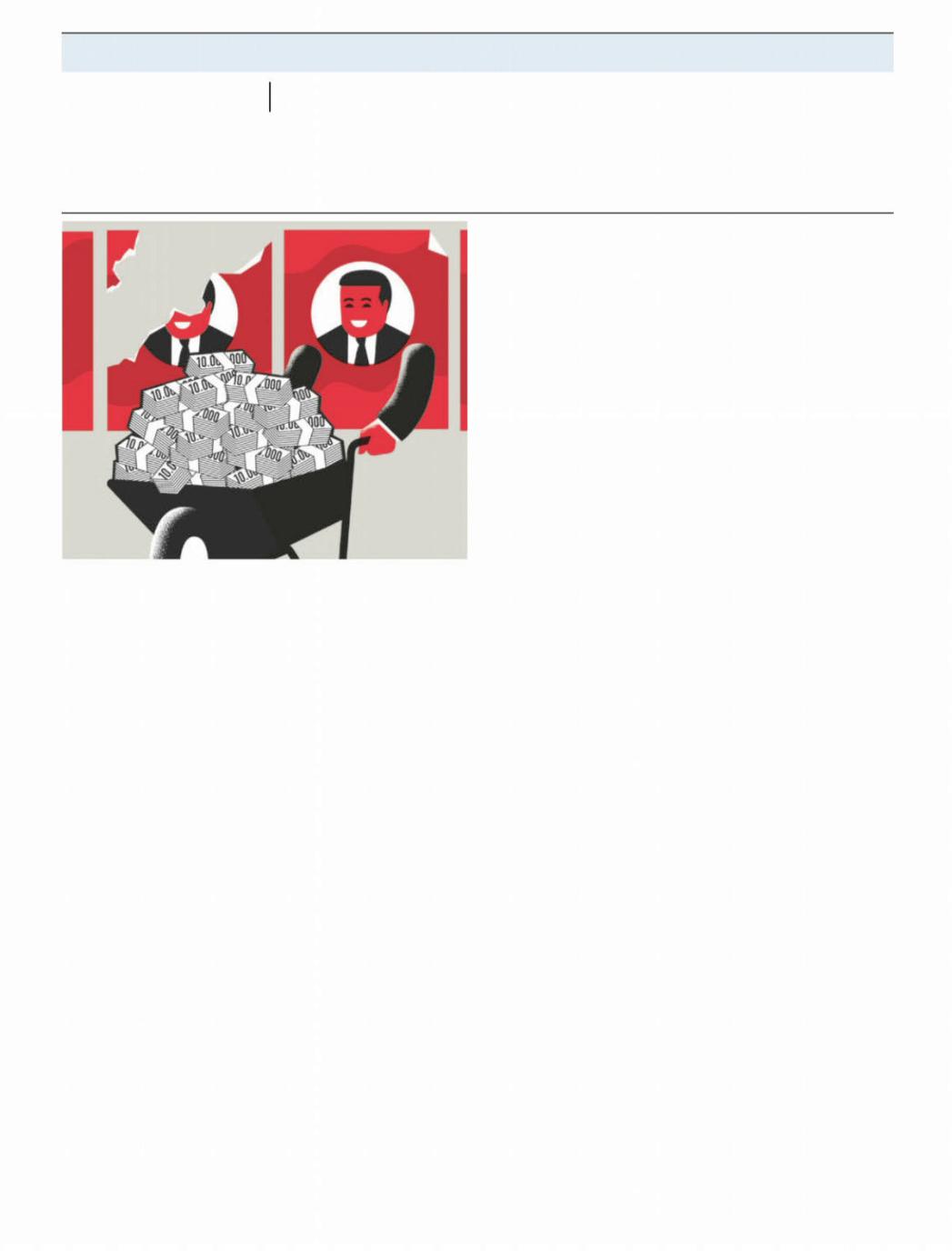
|
РЕЛИЗ ПОДГОТОВИЛА ГРУППА "What's News" VK.COM/WSNWS |
vk.com/id446425943 |
|
The Economist February 2nd 2019 |
Finance & economics 65 |
Free exchange Money down
Hyperinflations can end quickly, given the right sort of regime change
|
|
unable to impose the necessary reforms without losing the back- |
|
|
|
ing of the interest groups keeping them in power. Excessive spend- |
|
|
|
ing continues, increasingly funded by seigniorage—spending |
|
|
|
power captured by the government thanks to the gap between the |
|
|
|
face value of new banknotes and the cost of printing them. As the |
|
|
|
bills mount, so does inflation. |
|
|
|
Hyperinflation often occurs against the backdrop of war or oth- |
|
|
|
er social chaos. Germany’s Weimar government, beset by political |
|
|
|
unrest and burdened with war debts and reparations, stumbled |
|
|
|
into economic oblivion. But it can begin in more prosaic circum- |
|
|
|
stances. In the 1970s Bolivia enjoyed a commodity-driven boom |
|
|
|
under the rule of a military leader, Hugo Banzer, during which it |
|
|
|
borrowed heavily from abroad. Banzer was pushed from power in |
|
|
|
1978. During the ensuing upheaval, global economic conditions |
|
|
|
turned; interest rates soared and resource prices tumbled. The left- |
|
|
|
leaning government that came to power in 1982 inherited annual |
|
|
|
inflation of 300%, a shrinking economy and the loss of access to |
|
|
|
foreign creditors. But as Je rey Sachs of Columbia University doc- |
|
|
|
umented in an analysis published in1987, Bolivia’s new leadership |
|
|
|
had won support by promising to increase social spending. At- |
|
|
|
tempts to limit spending or raise taxes enraged interest groups on |
|
|
|
which the government depended. The reliance on seigniorage |
|
anknotes used as toilet paper. Wheelbarrows of cash ex- |
continued, and inflation rose to 60,000%. |
||
Bchanged for a loaf of bread. Prices in supermarkets revised up- |
Economists once thought that high inflation should prove |
||
wards each hour. These vignettes of hyperinflation would be fun- |
damnably persistent, as expectations of soaring prices became |
||
ny if they did not cause such hardship. This is now Venezuela’s |
embedded. Yet in a seminal paper in 1981 Tom Sargent, a Nobel |
||
situation, in what may be the final days of the ill-starred regime of |
prizewinner, argued otherwise. Rather, expectations of high infla- |
||
Nicolás Maduro. An estimate by Steve Hanke of Johns Hopkins |
tion reflect candid assessments of government policy: people an- |
||
University put the country’s inflation rate last year at 100,000%, |
ticipate high inflation when politicians are unserious about re- |
||
with prices doubling roughly once a month. The imf reckons that |
form. A credible policy shift, he notes, can change expectations |
||
in 2019 it may reach10,000,000%. |
quickly and at little or no cost. He examined four great inflations in |
||
Hyperinflations are not an exclusively modern problem. Rome |
the 1920s and showed that once a credible policy “regime change” |
||
su ered one under the emperor Diocletian. But the spread of fiat |
occurred, hyperinflation ended in weeks. |
||
currencies, backed by the credibility of a government rather than a |
Stop the presses |
|
|
physical commodity such as gold, has made them more common. |
|
||
They came in devastating bursts over the past century: in the after- |
More recent experience confirms that hyperinflation can end |
||
math of the first and second world wars, during the post-Soviet |
quickly under the right conditions. That usually means a sustain- |
||
transition from communism to capitalism, and more recently in |
able fiscal consolidation, a credible pledge to stop funding the gov- |
||
misgoverned poor countries, mostly in Africa and Latin America. |
ernment via seigniorage and a commitment to a new monetary |
||
They are not cases of garden-variety inflation run amok. Rather, |
framework, most often via an exchange-rate peg. New political |
||
they demonstrate a catastrophic breakdown in a state’s capacity to |
leadership often helps, as does external financial support. A new |
||
govern. In a narrow sense, they are a monetary phenomenon, with |
government took over in Bolivia in1985, after three years of raging |
||
printing presses running nonstop. Yet the important question for |
inflation. It raised taxes, slashed public investment, froze public |
||
economists, and for those trying to end them, is why the presses |
salaries and stopped paying interest on its debt, thus restoring fis- |
||
ran out of control in the first place. |
cal balance. And it stabilised the exchange rate against the dollar, |
||
The culprit, nearly always, is a politically unmanageable fiscal |
with help from the |
imf . The programme started in earnest late in |
|
burden. Huge budget deficits can erode confidence in a state’s fis- |
August 1985; by early September a five-digit inflation rate had |
||
cal discipline, causing the currency to weaken. Heavy government |
flipped to deflation. |
|
|
borrowing and a worsening exchange rate, which raises the cost of |
Not every case concludes so neatly. Countries with histories of |
||
imports, fuel inflation. Most governments in such circumstances |
high inflation can stagger on with it, rather than tumbling into |
||
avert looming crisis by reining in borrowing and money growth. |
hyperinflation. It then proves frustratingly di cult to escape. This |
||
Indeed, periods of high inflation are not that unusual, according to |
was the situation in Argentina and Brazil in the1980s and1990s, as |
||
Stanley Fischer, a former vice-chairman of the Federal Reserve, |
repeated attempts at stabilisation failed to solve the problem con- |
||
Ratna Sahay of the |
andimfCarlos Végh of the World Bank. During |
clusively. After extended periods of ine ectual leadership, people |
|
the post-war period, they note, a fifth of a sample of 133 countries |
may become jaded about reform campaigns, and shock and awe |
||
experienced inflation in excess of 100% at some point. But most |
may be required if they are to to be taken seriously. Venezuela, de- |
||
avoided hyperinflation. Indeed, a country with annual inflation of |
spite a long record of double-digit inflation rates, may dodge this |
||
100-200% was more than twice as likely to see inflation decline the |
fate; inflation there has rocketed only in the past few years amid an |
||
following year as it was to see it rise. |
impressive display of fiscal incontinence. For its people, the |
||
But sometimes the situation deteriorates. Politicians may be |
sooner regime change comes, the better. 7 |
||
http://new.guap.ru/i04/contacts
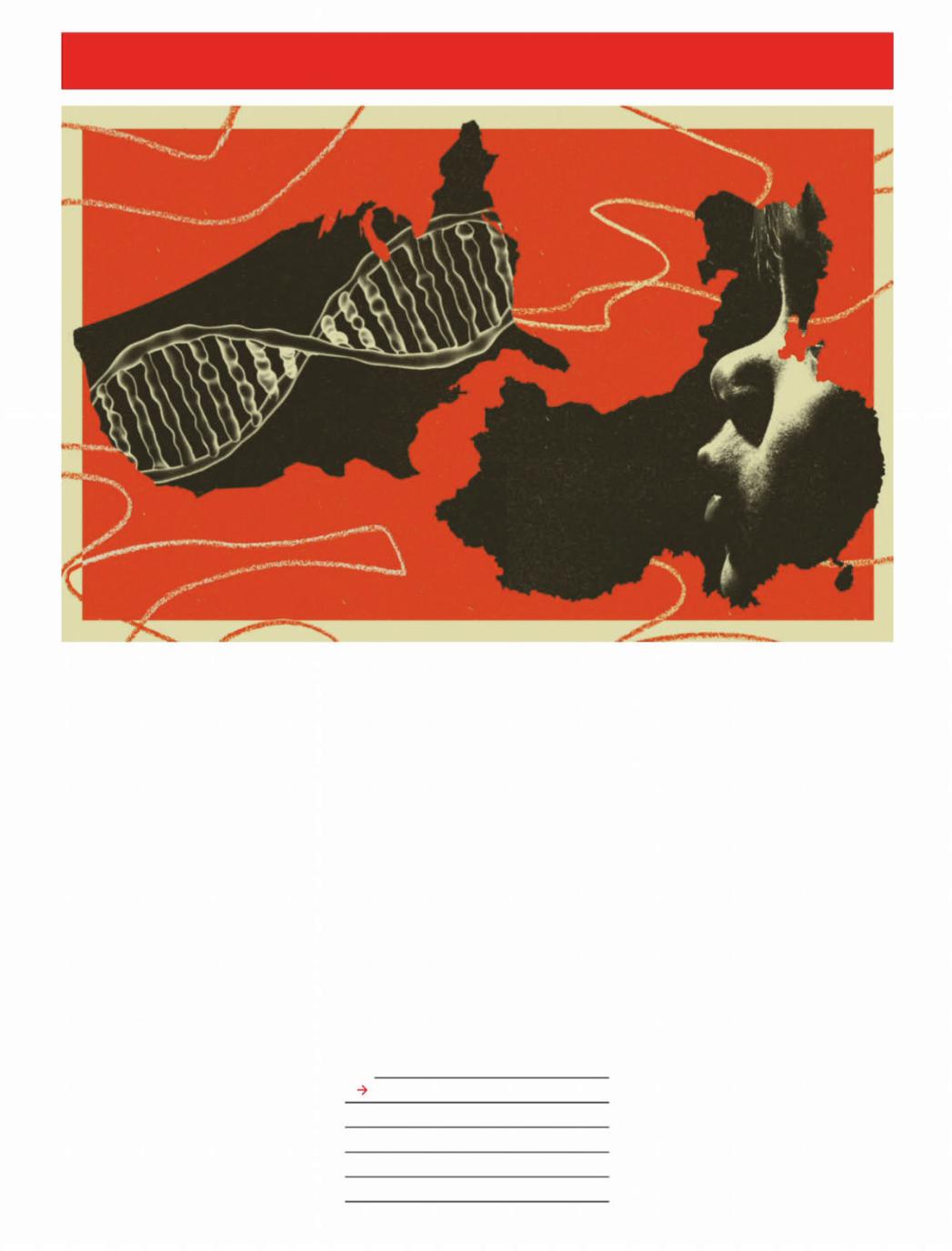
РЕЛИЗ ПОДГОТОВИЛА ГРУППА "What's News" VK.COM/WSNWS
vk.com/id446425943
66 |
Science & technology |
The Economist February 2nd 2019 |
|
Scientific ethics
No dumping, please
B E I J I N G
Recent events have highlighted an unpleasant scientific practice: ethics dumping
he announcement in November of |
The most worrisome cases involve medical |
||
Tthe editing of the genomes of two em- |
research, in which health, and possibly |
||
bryos that are now baby girls, by He Jian- |
lives, are at stake. But other investiga- |
||
kui, a Chinese |
dna -sequencing experttions——anthropological ones, for exam- |
||
brought much righteous, and rightful, con- |
ple—may also be carried out in a more cav- |
||
demnation. But it also brought a lot of |
alier fashion abroad. As science becomes |
||
tut-tutting from the outside world about |
more international the risk of ethics |
||
how this sort of thing was to be expected in |
dumping, both intentional and uninten- |
||
a place like China, where regulations, |
tional, has risen. The suggestion in this |
||
whatever they may say on paper, are laxly |
case is that Dr He was encouraged and as- |
||
enforced. Dig deeper, though, and what |
sisted in his project by a researcher at an |
||
happened starts to look more intriguing |
American university. |
||
than just the story of a lone maverick hav- |
The scientist in question is Michael |
||
ing gone o the rails in a place with lax reg- |
Deem of Rice University in Houston, Texas. |
||
ulation. It may instead be an example of a |
|
||
phenomenon called ethics dumping. |
Also in this section |
||
Ethics dumping is the carrying out by |
|||
67 An Earth rock on the Moon |
|||
researchers from one country (usually |
|||
rich, and with strict regulations) in another |
68 Talking to aliens with X-rays |
||
(usually less well o , and with laxer laws) |
|||
68 A new typhoid vaccine |
|||
of an experiment that would not be permit- |
|||
ted at home, or of one that might be permit- |
|
||
ted, but in a way that would be frowned on.
69 Did people create pandas?
Dr Deem was Dr He’s |
supervisorh d |
be- |
|
|
|||
tween 2007 and 2010, and has continued to |
|
|
|||||
collaborate with him. The two are co-au- |
|
|
|||||
thors of at least eight published papers and |
|
|
|||||
several as-yet-unpublished manuscripts. |
|
|
|||||
Dr Deem also appears (along with nine oth- |
|
|
|||||
ers, all Chinese, including Dr He) on the au- |
|
|
|||||
thor list of a paper, “Birth of twins after ge- |
|
|
|||||
nome editing for |
resistance”,hiv |
which Dr |
|
|
|||
He submitted |
to |
|
Naturebefore his |
an- |
|
|
|
nouncement of his work at a meeting in |
|
|
|||||
Hong Kong. |
|
Nature |
’s editors rejected the |
||||
paper (and will not, as is normal procedure |
|
|
|||||
in the case of rejection, confirm that they |
|
|
|||||
actually received it). |
|
|
|
|
|
||
According to a Chinese scientist in- |
|
|
|||||
volved in the genetically modified embryo |
|
|
|||||
project, which used a technique known as |
|
|
|||||
crispr -Cas9 to disable the gene for |
5, a |
|
ccr |
||||
protein that |
attacheshiv |
itself to when en- |
|
|
|||
tering a cell, Dr Deem participated as a |
|
|
|||||
member of the project team in the proce- |
|
|
|||||
dures in which potential volunteers gave |
|
|
|||||
their consent. Dr Deem will not comment. |
|
|
|||||
But a statement from his lawyers said, “Mi- |
|
|
|||||
chael Deem has done theoretical work on |
|
|
|||||
crispr in bacteria in the past, and he wrote |
|
|
|||||
a review article on the physics of |
- |
|
crisp |
||||
Cas. But Dr Deem has not designed, carried |
|
|
|||||
out, or executed studies or experiments re- |
|
|
|||||
lated to crispr-Cas9 gene editing—some- |
|
|
|||||
thing very di erent. He did not authorise |
|
|
|||||
submission of manuscripts related to |
5 |
1 |
c |
||||
http://new.guap.ru/i04/contacts
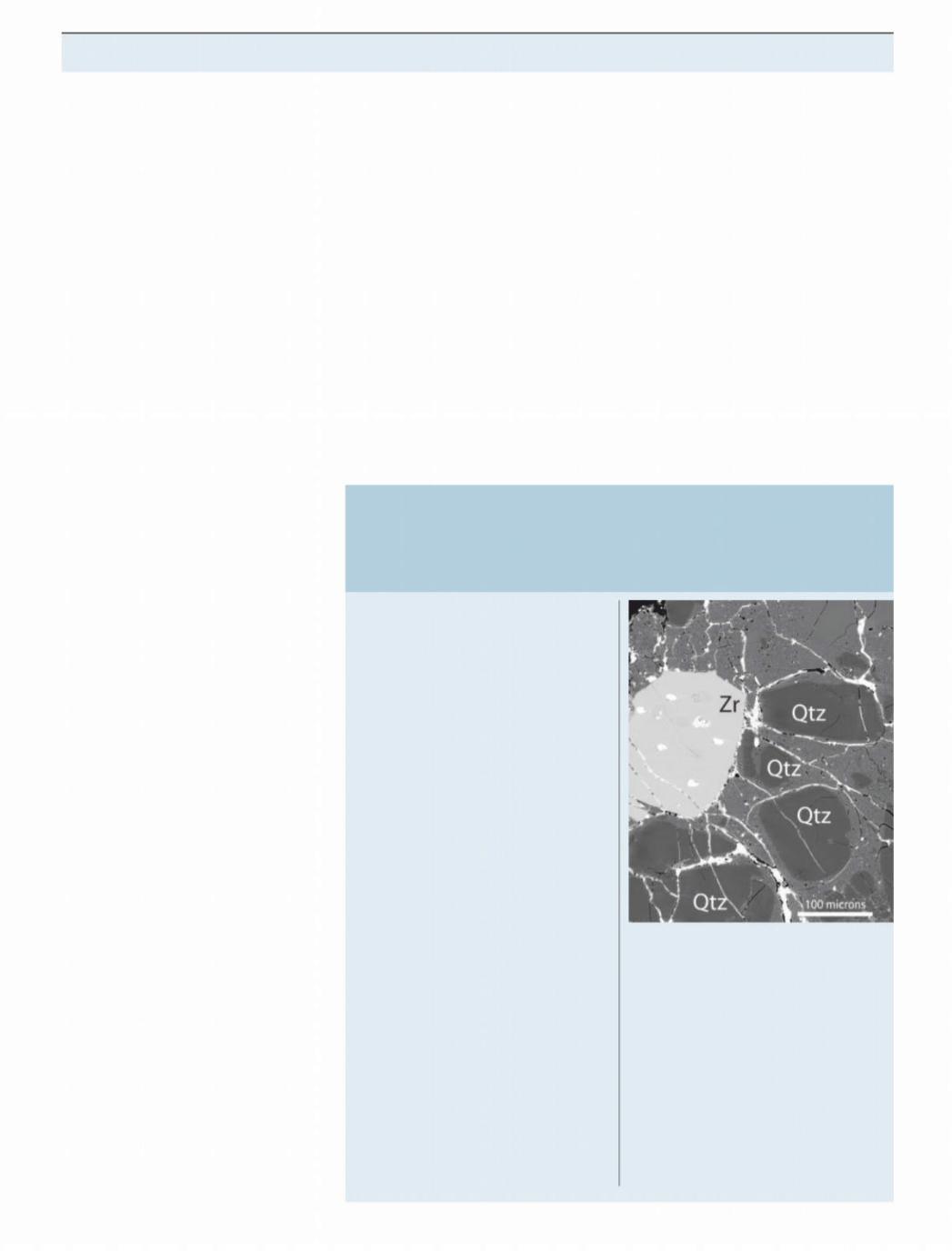
|
РЕЛИЗ ПОДГОТОВИЛА ГРУППА "What's News" VK.COM/WSNWS |
vk.com/id446425943 |
|
The Economist February 2nd 2019 |
Science & technology 67 |
2 or pcsk 9 [an unrelated protein involved in cholesterol transport] with any journal, and he was not the lead, last, or corresponding author on any such manuscript. And Dr Deem was not in China, and he did not otherwise participate, when the parents of the reported ccr5-edited children provided informed consent.”
In America, in e ect, the implantation of genetically modified embryos into a woman’s womb is forbidden. Such an experimental medical procedure would require permission from the country’s Food and Drug Administration, and such permission would not be forthcoming. Carrying on regardless would be a federal crime and one that, according to Hank Greely, a lawyer and bioethicist at Stanford University, might attract a fine of as much as $100,000, and a year in jail.
For an American to support the execution of such work in another country is, though, a di erent matter. That would not be illegal under American law—though it would still violate federal rules if Dr Deem participated in the project without the approval of his university, which is investigating his role in the a air. Rice says it “had no knowledge of the work”, and, to its best knowledge, “none of the clinical work was performed in the United States.” It would not comment on the ongoing investigation. Neither Dr Deem nor his lawyers would comment on the specific suggestion that he had committed ethics dumping.
Trust. And verify
Across the Atlantic from America, the Commission of the European Union ( has sponsored a three-year, €2.7m investi-
gation into ethics dumping. trust called, has been a collaboration between researchers from Europe, Africa and Asia, which came to an end last year. It scrutinised past examples of ethics dumping and sought ways of stopping similar things happening in the future. As Doris Schroeder of the University of Central Lancashire, in England, who led the trust project, observes, “sometimes it’s because of the lack of awareness [of the laws in other nations]. Sometimes it’s about having double standards. We’ve certainly seen cases where there was a definite attempt to avoid legislation in European countries.”
Zhai Xiaomei, the executive director of the Centre for Bioethics at the Chinese Academy of Medical Sciences, in Beijing, who is also deputy director of the health ministry’s ethics committee, welcomes what trust has done. “China’s weak ethics governance has made it an attractive destination for the export of unethical practices from the developed world,” she says. One high-profile case in China concerns Sergio Canavero, an Italian neurosurgeon who resigned from the University of Turin in 2015 because of fierce opposition to his plan to
perform head transplants on human be- |
North-South Research Collaboration”, a |
|
ings. Knowing that no country in Europe or |
book published by |
trust . Three notable |
North America would approve such proce- |
examples are American-financed clinical |
|
dures, Dr Canavero went to China, which |
trials that happened in India between 1998 |
|
he says “is quite di erent from the West” |
and 2015. These were testing the e cacy of |
|
and “has a di erent ethics”. |
cheap cervical-screening methods. Such |
|
There, he collaborated with Ren Xiao- |
trials require control groups, which, in |
|
ping, an orthopaedic surgeon at Harbin |
America, would be composed of women |
|
Medical University, on dogs, monkeys and |
undergoing an established screening pro- |
|
human cadavers, and planned, last year, to |
cedure. In the Indian trials, however, the |
|
graft the head of a patient paralysed from |
controls—a total of 141,000 women—were |
|
the neck down onto the body of a deceased |
not o ered the pap smears that were sup- |
|
donor—only to be stopped by China’s |
posed (though they were in practice often |
|
health ministry at the last minute. “The |
unavailable) to be the standard for screen- |
|
proposed procedure is based on astonish- |
ing in India at the time. |
|
ingly thin scientific evidence,” says Dr |
Nor need behaving badly abroad as a re- |
|
Zhai. “It’s not only ethically indefensible |
searcher be life-threatening to be unac- |
|
but against the Chinese law.” For his part Dr |
ceptable. Another case highlighted by |
|
Canavero says, “we shouldn’t have an- |
trust involved the San, a group of people |
|
nounced the plan before the two papers [on |
in southern Africa well known to (and well |
|
dogs and on human cadavers] came out.” |
studied by) the outside world because of |
|
A dozen similar cases in Asia and Africa |
their hunter-gatherer way of life, click-lad- |
|
fill “Ethics Dumping: Case Studies from |
en languages and ancient rock art. In 2010 a1 |
|
Astrogeology
There and back again
A rock from the Moon has a tiny piece of Earth inside it
This is a cross-section through a grain from a well-travelled rock. It was
brought to Earth from the Fra Mauro highlands of the Moon in1971, by the crew of Apollo14. Four billion years before that, though, it had made the journey in the opposite direction, accordingeuto)an analysis by Jeremy Bellucci of the Swedish Museum of Natural His-
tory,as itpublished in |
Earth and Planetary |
Science Letters |
. |
Fra Mauro is composed of ejecta from a celestial collision between an asteroid and the Moon, which excavated the biggest lunar impact basin, Mare Imbrium. Most of the samples returned by Apollo14 are breccias created by this impact. Breccia is a type of rock formed by the higgledy-piggledy mixing of bits of other rock, and this two-gram grain was part of one such brecciated boulder.
Dr Bellucci’s analysis of the minerals in the grain, particularly its zircon (Zr, in the picture) and quartz (Qtz), shows that they would have been unlikely to form in lunar conditions, but would easily have formed on Earth. The simplest explanation, therefore, is that Earth is where they came from.
Almost certainly, the grain arrived on the Moon as part of a larger rock blasted o Earth’s surface by an impact similar to that which created Mare Imbrium. All this happened during a period of the solar system’s history called the late heavy bombardment, which lasted from
It came from outer space
4.1bn to 3.8bn years ago. The Moon then being only a third as far away from Earth as it is now, travelling to the one from the other would have been an easy journey.
The grain was then shifted again, by the Imbrium impact, to form part of the geological splatter now called Fra Mauro.
Terrestrial material this old is rare, so finding some on the Moon has been a useful addition to geologists’ collections. And this particular grain may not be unique. Apollo14 brought back 42kg of rock. Other chips o the block of old Earth are probably hiding among them.
http://new.guap.ru/i04/contacts

РЕЛИЗ ПОДГОТОВИЛА ГРУППА "What's News" VK.COM/WSNWS
vk.com/id446425943
68 Science & technology |
|
|
|
|
|
The Economist February 2nd 2019 |
|
|
2 paper published in |
Natureon th first San |
|
|
|
radio waves, but can be pierced by |
x -r |
||
genome to be sequenced caused an outcry |
|
|
|
Using their prototype, Mr Hang and his col- |
|
|||
among some San. According to Roger |
|
|
|
leagues are able to encode messages into |
|
|||
Chennells, a human-rights lawyer at Stel- |
|
|
|
rays, transmit them through a vacuum, and |
|
|||
lenbosch University, in South Africa, they |
|
|
|
then decode them at the other end. |
|
|||
found the consent procedures inappropri- |
|
|
|
A practical version of this system would |
|
|||
ate and some of the language used in the |
|
|
|
not broadcast signals directly to Earth from |
|
|||
paper, such as “Bushmen”, pejorative. |
|
|
|
|
the re-entering craft. Rather it would trans- |
|
||
As part of the |
trustproject, Mr Chen- |
|
|
|
mit them to a satellite that then relayed the |
|
||
nells and his colleagues helped groups of |
|
|
|
message Earthward by more conventional |
|
|||
San develop the first code of ethics created |
|
|
|
means. The reason for the detour is that, |
|
|||
by an indigenous group in Africa. It re- |
|
|
|
though x -rays penetrate dust, they are ab- |
||||
quires researchers wishing to study San |
|
|
|
sorbed by the sorts of gases that make up |
|
|||
culture, genes or heritage to submit pro- |
|
|
|
Earth’s atmosphere. The re-entry trans- |
|
|||
posals to a review panel set up by San com- |
|
|
|
ceiver works because the period of re-entry |
|
|||
munities. It also asks researchers to treat |
|
|
|
blackout happens high in the atmosphere, |
|
|||
people with respect, and to consider how |
|
|
|
where the air is thin. A signal beamed |
|
|||
their work could benefit local health care, |
Talking to aliens |
|
|
through the thick air of the lower atmo- |
|
|||
education and jobs. |
|
|
|
|
sphere would, by contrast, be absorbed. |
|
||
Analysis of past transgressions has led |
of A penetrating |
|
xcom, as Mr Hang dubs his putative |
|
||||
trust ’s researchers |
to suggest a |
set |
|
ray Aldis lamp, would be a more powerful |
|
|||
guidelines called the Global Code of Con- |
thought |
|
|
version of such a spacecraft transmitter. To |
|
|||
duct for Research in Resource-Poor Set- |
|
|
avoid atmospheric absorption it would |
|
||||
tings. This aims to raise awareness of bad |
|
|
|
have to be put into space to operate. Ideally, |
|
|||
practices, and to identify potential of- |
|
|
|
it would sit on the far side of the Moon, |
|
|||
fences. A cornerstone of the code is that |
|
|
|
shielded from interference from Earth. |
|
|||
ethics reviews be conducted in all partici- |
If radio doesn’t work, try X-rays |
|
By a lucky coincidence, the China Na- |
|
||||
pating countries—those where the work |
|
tional Space Administration, the country’s |
|
|||||
|
|
|
|
|||||
will be carried out as well as those paying |
pinion is divided on whether |
Homospace agency, has just demonstrated, with |
|
|||||
for it. According to Dr Schroeder, two Euro- |
Osapiens should announce its presence |
the landing of its lunar probe |
Chang’e- |
|||||
pean funding agencies—the commission |
to the universe by broadcasting messages |
that it can position equipment on that part |
|
|||||
itself, and the European & Developing |
to any putative extraterrestrials who may |
of Earth’s natural satellite. Whether the |
|
|||||
Countries Clinical Trials Partnership, a |
be listening, or should keep schtum, for |
agency’s research interests stretch as far as |
|
|||||
joint e ort by the |
eu , Norway, Switzerlandfearof attracting unwanted attention. But |
the hunt for extraterrestrial intelligence re- |
|
|||||
and a group of drug companies—have al- |
if attempts at contact are to be made at all, |
mains to be seen. But |
wouldxcomcertainly |
|
||||
ready accepted the code. Meanwhile, in |
then they might as well be done properly. |
|
be a novel approach to the question. 7 |
|
||||
America, Kiran Musunuru, a gene-editing |
Past e orts, including one in the 1970s |
|
|
|
||||
expert at the University of Pennsylvania, |
to a star cluster 25,000 light-years away |
Public health |
|
|
||||
who was one of the first to look at Dr He’s |
and another in 2017 to a planet a mere 12 |
|
|
|||||
data last year, suggests the creation of an |
light-years away, have used radio. Hang |
Better late than |
|
|||||
international register for research involv- |
Shuang and his colleagues at the Nanjing |
|
||||||
ing the genetic modification of human em- |
University of Aeronautics and Astronau- |
never |
|
|
||||
bryos, with registration being a condition |
tics, in China, think this approach foolish. |
|
|
|||||
for subsequent publication. |
|
Radio waves spread out quickly, and are |
|
|
|
|||
The latest twist in the crispr |
-babies also absorbed and scattered by interstellar |
|
|
|
||||
saga itself is that Dr Deem was supposed to |
dust. On top of this there are many sources |
A newly revived vaccine may deal a |
|
|||||
take up a position this month as Dean of |
of radio in the universe, which creates a |
|
||||||
death blow to typhoid fever |
|
|||||||
the College of Engineering at the City Uni- |
confusing background. Instead, Mr Hang |
|
||||||
bacterium called Salmonella typhi tra- |
|
|||||||
versity of Hong Kong. The o er was made |
proposes using |
x -rays. |
|
|
||||
before news of the birth of genetically |
x -rays diverge more slowly than radio |
Avels from host to host in contaminated |
|
|||||
modified babies broke. Dr Deem’s possible |
waves. They are also better at penetrating |
food and water. Thanks to better mains and |
|
|||||
involvement in the a air has led the City |
dust. And there is little x -ray background to |
drains its excursions have been curtailed in |
|
|||||
University to put the contract on hold—at |
confuse them with. They would therefore |
rich countries. But the disease that it |
|
|||||
least until the investigation at Rice comes |
be suitable in principle for interstellar |
causes—typhoid fever—is still common in |
|
|||||
to a conclusion. The City University’s press |
communication. Their value as communi- |
places where modernity has not fully made |
|
|||||
o ce would not say whether the university |
cation tools on Earth, however, has not |
its mark. In these parts between 11m and |
|
|||||
would terminate the contract if Dr Deem is |
been obvious, so little research has been |
20m people fall ill with typhoid every year. |
|
|||||
found to have been involved in the project, |
done on using them to carry messages. But |
Of those160,000, mostly children, die. |
|
|||||
and neither Dr Deem nor his lawyers would |
not none, for Mr Hang and his colleagues |
Typhoid fever can be treated with anti- |
|
|||||
comment on the matter. But, as one senior |
have actually built a prototype of an x -ray |
biotics, but this line of defence is starting |
|
|||||
faculty member of the City University, who |
transceiver that has a particular, special- |
to fail as extensively drug resistant ( |
x |
|||||
spoke on condition of anonymity, puts it, if |
ised purpose. This is to eliminate the com- |
bugs are spreading rapidly and alarmingly |
|
|||||
the accusations being made turn out to be |
munications blackout which a spacecraft |
in Pakistan. Existing vaccines provide only |
|
|||||
true, then “Dr Deem has committed a grave |
experiences during re-entry into Earth’s at- |
temporary protection to adults and do not |
|
|||||
error of judgment and violated interna- |
mosphere. The blackout is a result of the |
work in children. What is needed is a new |
|
|||||
tional norms. He is obviously not fit for |
craft being surrounded by a plume of in- |
and better vaccine. And one is now at hand, |
|
|||||
such a senior academic position. We don’t |
candescent plasma generated by the heat of |
courtesy of the Bill and Melinda Gates |
|
|||||
want ethics dumping here.” 7 |
|
re-entry. Such a plasma is impenetrable by |
Foundation, a big charity. |
|
1 |
|||
http://new.guap.ru/i04/contacts

|
РЕЛИЗ ПОДГОТОВИЛА ГРУППА "What's News" VK.COM/WSNWS |
vk.com/id446425943 |
|
The Economist February 2nd 2019 |
Science & technology 69 |
2 The origins of this vaccine, which labours under the moniker of Typbar-tcv, can be traced back to work done 20 years ago by researchers at America’s National Institutes of Health. It was only ever licensed to Bharat Biotech, based in Hyderabad, India, for local use. Nobody else thought it worthwhile developing. Now the Gates Foundation has plucked Typbarfrom obscurity and pushed it through the research and testing necessary for it to be used everywhere.
One of the first of those tests was conducted by the Oxford Vaccine Group (ovg), a research organisation in Britain, in 2 Andrew Pollard, ovg’s boss, recruited 100 adult volunteers, vaccinated them and then gave them a drink laced with live S. typhi . Britain was a good place to do this because typhoid is essentially extinct there, so participants had no existing immunity. Antibiotics were on hand to treat those who succumbed, but most did not. This and subsequent experiments have shown the vaccine to be almost 90% e ective and, crucially, safe for use in children as young as six months.
Fever pitch
The Gates Foundation has just sent a supply of 200,000 doses of Typbar-tcv to Pakistan, to try and fight the outbreak of typhoid there. In Sindh province (mostly in the capital, Karachi), there were 5,274 cases of xdr typhoid (of 8,188 cases overall) between November 1st 2016 and December 9th last year.
The new vaccine has also been warmly welcomed by gavi , an international health organisation formerly known as the Global Alliance for Vaccines and Immunisation, which has promised to spend $85m on Typbar- tcvthis year and next. gavi was supposed to start vaccinations in Zimbabwe this week. The doses are already in the country. However, according to Seth Berkley, gavi ’s boss, strikes, protests and a deteriorating security situation have meant that the beginning of the campaign has been postponed until February 23rd.
Other places where the vaccine could be deployed include Bangladesh, Ghana, India, Nepal, Nigeria and Uganda. Besides being able to bring typhoid outbreaks in countries like these to a halt, vaccination may also help drive down the use of antibiotics, and thus the selection pressure that maintains xdr bacteria in the population. Anita Zaidi, head of the vaccine-develop- ment, surveillance, and enteric and diarrhoeal diseases programmes at the Gates Foundation, even wonders if it might be possible to eliminate typhoid entirely if enough people are vaccinated.
That is an aspiration. Typbar-tcv does, though, bring the immediate hope of saving many lives. What a shame it has arrived 20 years later than it might have done. 7
Panda evolution |
skulls and genes. The jaws of 4m-year-old |
|||
By the hand of man |
fossils suggest that the ancestors of mod- |
|||
ern pandas were already by then eating a lot |
||||
created? |
of tough vegetable matter. Analysis of a |
|||
gene called |
Tas1r1 , responsible for the taste |
|||
|
|
sensation called “umami”, which detects |
||
|
|
glutamic acid, a common component of |
||
An unusual animal’s unusual diet may |
meat, tells a similar story. It indicates that |
|||
selective pressures in favour of this gene |
||||
tcv |
|
|||
be the result of human pressure |
started to relax about 4.2m years ago. By |
|||
he giant panda is beloved of conser- |
||||
around 2m years ago, conventional theory |
||||
Tvationists. It is the mascot of the |
has it,wwfpandas had completed the transition |
|||
(World Wide Fund for Nature, formerly the |
to an all-bamboo diet. Dr Wei has, however, |
|||
World Wildlife Fund) and, with its striking |
brought a third line of evidence to bear. |
|||
black-and017-.white pelage, is one of the most |
This is the isotopic composition of the ani- |
|||
recognisable large animals in the world. It |
mals’ bones and teeth. |
|||
is also evolutionarily weird. It is a type of |
|
|
||
bear, and therefore a member of the order |
You are what you eat |
|||
of mammals known, after their usual di- |
Hydrogen apart, the most common ele- |
|||
etary habits, as the Carnivora. But it is an |
ments in food are carbon, oxygen and ni- |
|||
obligate herbivore. |
trogen. Each of these has several isotopes |
|||
And it is rare. Optimistic estimates put |
(atoms of the same element whose nuclei |
|||
the global panda population at between |
have di erent numbers of neutrons with- |
|||
2,000 and 3,000 individuals—with all |
in, and therefore di erent atomic |
|||
those not living in zoos occupying a few |
weights). The two principal isotopes of car- |
|||
fragments of bamboo forest in central Chi- |
bon,12C and13C, and of nitrogen,14N and15N, |
|||
na. Pessimists reckon those numbers are |
have di erent ratios in di erent plant spe- |
|||
on the high side. It is ironic, then, that this |
cies—and these ratios tend to be preserved |
|||
icon of the natural world might actually be |
in the tissues of animals that eat those |
|||
an accidental consequence of human ac- |
plants. The isotopes of oxygen, 16O and 18O, |
|||
tivity. Yet this is a plausible interpretation |
vary in ratio according to the local climate. |
|||
of xdrresults just published in a paper in Cur- |
Dr Wei studied carbon and nitrogen iso- |
|||
rent Biology |
, by Wei Fuwen of the Institutetopes in the bones of a dozen ancestral pan- |
|||
of Zoology, in Beijing. |
das, dating from between 11,000 and 5,000 |
|||
Pandas are not merely herbivores, they |
years ago, and compared them with those |
|||
are monovores—eating bamboo to the ex- |
of modern pandas. The ancient animals |
|||
clusion of almost anything else. Dr Wei |
had a wider range of 15N/14N and 13C/12C ra- |
|||
wondered when this transition to mono- |
tios in their bones than did the modern |
|||
vory happened. The answer was, far more |
ones. That suggests they had broader diets. |
|||
recently than anyone had expected. |
Oxygen isotopes collected from fossil teeth |
|||
Past estimates of changes in pandas’ di- |
told a similar story. The ancient pandas had |
|||
ets have depended on studies of their |
more variable 18O/16O values, suggesting |
|||
|
|
that they lived in more varied environ- |
||
|
|
ments than do their modern kin. |
||
|
|
Whether the fossil pandas in Dr Wei’s |
||
|
|
study were still eating any meat remains |
||
|
|
unclear. What is clear, however, is that they |
||
|
|
were not yet the obligate bamboo feeders |
||
|
|
which they are today, and that they were |
||
|
|
making forest fringes, subtropical zones |
||
|
|
and open land their home, rather than |
||
|
|
dwelling solely in bamboo forests. The |
||
|
|
question is, what made them change? |
||
|
|
Dr Wei does not speculate. But there is |
||
|
|
one obvious possible culprit: the spread of |
||
|
|
Homo sapiens |
. Early Chinese history is |
|
|
|
shrouded in myth, but organised states |
||
|
|
clearly existed by about 5,000 years ago. |
||
|
|
Growing human populations could easily |
||
|
|
have displaced the ancestors of modern |
||
|
|
pandas to fringe areas where there was lit- |
||
|
|
tle to eat but bamboo. And if bamboo is all |
||
|
|
there is to eat, then those that prefer to eat |
||
|
|
it will be at an evolutionary advantage. The |
||
|
|
modern, bamboo-eating panda—symbol |
||
|
|
of animals under pressure from man—may |
||
Something to chew on |
thus have been made the way it is by pre- |
|||
cisely such human pressures. 7 |
||||
http://new.guap.ru/i04/contacts

РЕЛИЗ ПОДГОТОВИЛА ГРУППА "What's News" VK.COM/WSNWS
vk.com/id446425943
70 Books & arts
Sport and politics
Believe, boys, believe
I S TA N B U L
In Turkey, football is both a medium of protest against authoritarianism and a victim of it
The ritual begins before dusk, at one of the restaurants in Besiktas, a neighbourhood perched on Istanbul’s European
shore, with fish, andmezeraki , or in a local square, with stu ed mussels from Ahmet’s, meatballs grilled by a headscarved auntie, and canned beer. Always, there is music. Fans swathed in black and white, the colours of Besiktas football club, roar out its anthems. One decries the state of the world. Another speculates about the sexual habits of rival teams. A couple of men dance to the shrill, spellbinding tune of a Roma musician’s pipezurnand the beat of a large drum. Someone lights a red flare.
Soon crowds stream from the taverns and march southwards, along the Bosphorus, the waterway that cleaves the city between two continents. They advance past the Naval Museum and the sumptuous Dolmabahce Palace, from which the last Ottoman sultans observed the collapse of their empire, past the adjacent mosque where the call to prayer booms out, past honking cars and troubadours eulogising Mustafa Kemal Ataturk, modern Turkey’s founding father, and into the stadium.
And then the true delirium begins.
These days, many football matches in Europe have the air of a family picnic, interrupted only sporadically by a chant or applause. Besiktas fixtures resemble choreographed riots. The fans once set the world record (at 132 decibels, as ear-split- ting as a fighter jet during take-o ) for the loudest crowd at a game. Moments before the match starts they hush into silence, then begin to hum, first softly, then louder, like a colossal swarm of bees. At kick-o , the swarm erupts into song. The chanting persists until the final whistle. In a stadium with more than 40,000 seats, practically no one ever sits down.
Attend a Besiktas match, or almost any other in Turkey, lap up the revelry and the anthems, and you might think football has survived the country’s descent into autocracy unscathed. It has not. As in most places, only more so, politics and football (and business) have always been intertwined in Turkey, never more tightly than in the tumultuous past decade. “Believe, boys, believe,” bellow the denizens of Besiktas’s northern stands. “Sunny days will come,” answer their counterparts at the southern end of the stadium. Many are
The Economist February 2nd 2019
Also in this section
71The legend of Wild Bill Hickok
72Sir Don McCullin’s photography
73Johnson: Learning from mistakes
talking about more than just the game. The man whose words inspired that
song, Nazim Hikmet, was a Marxist poet who died in exile in 1963 after more than a decade behind bars. Besiktas fans have traditionally been attracted to leftist causes, and to dissent. The Carsi—as the most hardcore Besiktas supporters are known— draw the a in their name in the shape of the symbol for anarchism. They have turned protest into an art form. Using banners often stitched from bedsheets, they have protested against racism, the murder of an Armenian journalist by a teenage nationalist, dam construction in Turkey’s south-east and nuclear power plants in the north. They even protest against themselves. “Carsi is against everything,” proclaims one popular banner. “Carsi is against itself too,” reads another.
Football fans, and especially the Carsi, were in the vanguard of anti-government protests in 2013, and bore the brunt of the resulting crackdown. During one demonstration, supporters clashed with police near the residence of Turkey’s president, Recep Tayyip Erdogan. Months later, 35 were charged with forming a terrorist group and attempting to bring down the government. (They faced life sentences, but were acquitted after a lengthy trial.) The same year, the government outlawed the chanting of political slogans at games. Then the league launched a new electronic ticketing system (operated by a subsidiary of a firm once run by Mr Erdogan’s son-in- law, Berat Albayrak, the finance minister), which made it easier to monitor o enders. 1
http://new.guap.ru/i04/contacts
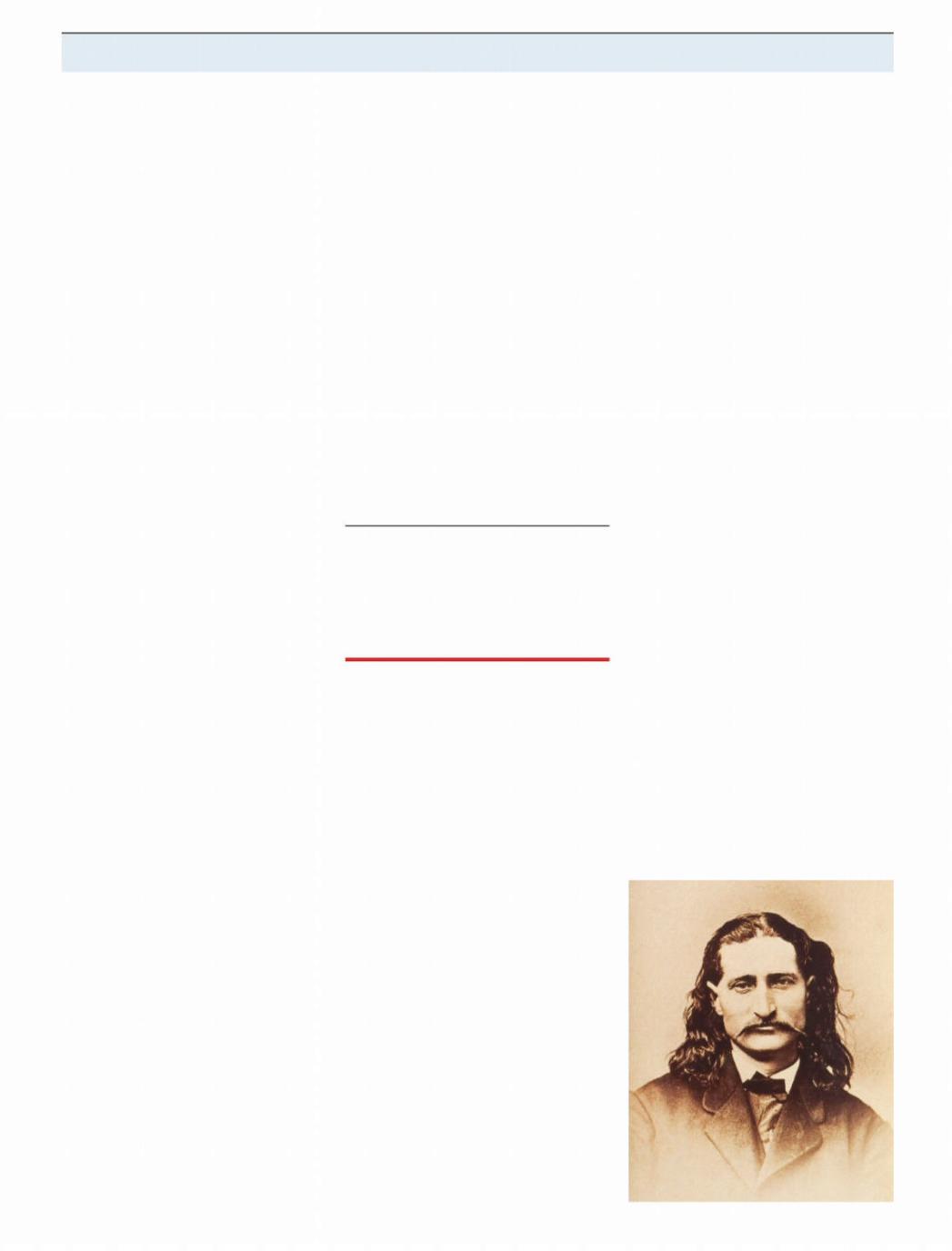
РЕЛИЗ ПОДГОТОВИЛА ГРУППА "What's News" VK.COM/WSNWS
vk.com/id446425943
The Economist February 2nd 2019 |
|
|
|
Books & arts 71 |
|
2 The new system has curbed hooligan- |
joined the top league only a decade ago. It |
ok’s life, he resorts to disclaimers and re- |
|||
ism, which plagued Turkish football for de- |
takes its name from a sprawling neigh- |
buttals himself. Hickok may or may not |
|||
cades. It has also helped throttle dissent. |
bourhood on the city’s outskirts, home to |
have been mauled by a bear. He was said to |
|||
“They’ve turned us from fans into specta- |
the sort of conservative voters who form |
have founded the Pony Express (he didn’t); |
|||
tors, and then into customers,” says Cem |
the backbone of Mr Erdogan’s Justice and |
he may or may not have had an a air with |
|||
Yakiskan, a Carsi leader. Both inside the |
Development ( |
ak ) party. The chairman isthea besotted Libbie Custer. As the author |
|||
stadiums and in the country at large, the |
relative of Mr Erdogan’s wife. The stadium |
says, the truth about some of these claims |
|||
squeeze on free expression has sharpened |
was built by a firm with a knack for win- |
will never be known. |
|||
since 2016, when an army faction backed by |
ning big government tenders. |
Hickok was anointed a Wild West celeb- |
|||
members of the Gulen movement, a power- |
Basaksehir has surprisingly deep pock- |
rity by a profile in Harper’s New Monthly |
|||
ful Islamic sect once allied to Mr Erdogan, |
ets. Its squad includes Turkey’s most recog- |
Magazine in 1867. When the enthralled |
|||
staged a bloody coup attempt. |
nisable player, Arda Turan, as well as sever- |
journalist asked permission to publish it, |
|||
All the president’s men |
al foreign stars. These assets have not |
Hickok, then 29, agreed. “I am sort of public |
|||
translated into popularity: despite Mr Er- |
property,” he said. The aura of the sharp- |
||||
At a Besiktas game two years ago, a group of |
dogan’s exhortations for young voters toak shooter who could supposedly split a bul- |
||||
fans unfurled a banner in support of two |
go to home games, the average attendance |
let on the edge of a dime at 20 paces was |
|||
teachers who went on hunger strike after |
is under 4,000. The stands are empty. But |
augmented by his style. His city garb in- |
|||
being dismissed (along with 125,000 other |
the team is winning. With four months of |
cluded a Prince Albert coat, checked trou- |
|||
government employees) in the wake of the |
the season to go, it is set fair to win the title. |
sers, a wide-brimmed black hat and, some- |
|||
abortive coup. The fans were detained on |
For Basaksehir and its powerful back- |
times, a cloak lined with scarlet silk. |
|||
terror charges. Around the same time, the |
ers, those sunny days seem to have come. |
In Mr Clavin’s formulaic prose, men |
|||
league fined a club from Diyarbakir, the |
To some Turkish fans, the game they love, |
“wet their whistles” and prospectors are |
|||
heart of the south-east region where Kurds |
which was once an arena for opposition |
“busy as beavers”. Still, when Hickok be- |
|||
form a majority, for changing its name to |
politics, seems increasingly to have been |
comes marshal in the cow town of Abilene, |
|||
Amedspor, after the city’s Kurdish moni- |
tainted by authoritarianism. 7 |
Kansas, the pace tightens. The stage is set |
|||
ker. One of the team’s players was recently |
|
|
|
for his stumbling descent into early-morn- |
|
banned from professional football and giv- |
The Wild West |
|
|
ing drinking, gambling losses and cruelly |
|
en a suspended18-month sentence for “ter- |
|
|
deteriorating eyesight. (Glaucoma? An in- |
||
rorist propaganda”. He had criticised a mil- |
Agnes got his gun |
fection caused by syphilis? Another un- |
|||
itary o ensive against Kurdish separatists |
knowable detail.) |
||||
and expressed sympathy with its victims. |
|
|
|
In Abilene, Hickok meets the love of his |
|
Along with Fenerbahce, Galatasaray and |
|
|
|
life, Agnes Thatcher Lake, operator of the |
|
Trabzonspor, Besiktas is one of four clubs |
|
|
|
Hippo-Olympiad and Mammoth Circus, |
|
that have dominated Turkish football for as |
|
|
|
and the book’s most interesting personal- |
|
long as anyone can remember. Between |
|
|
|
ity. A widow of 45 (Hickok was 11 years |
|
them, they have won the league champion- |
Wild Bill: The True Story of the American |
younger), she was the first woman in |
|||
ship in all but one of the past 60 years. Suc- |
America to own a circus. The circus and Ag- |
||||
Frontier’s First Gunfighter. By Tom Clavin. |
|||||
cess has been costly: expensive players |
nes move on, but her a air with Hickok |
||||
St. Martin’s Press; 336 pages; $29.99 and |
|||||
have pushed the clubs deep into the red. |
proceeds by post. They reunite, marry and |
||||
£22.95 |
|
|
|||
Yet because football fans are voters, and be- |
|
|
set o on a two-week honeymoon. |
||
|
|
|
|||
cause nearly every Turk is a fan, govern- |
e was stunning |
, or so Libbie Custer,Fatefully, Hickok heads for the Black |
|||
ments have had no qualms about saving |
Hthe famous cavalryman’s wife, remem- |
Hills to strike it rich at the gaming tables or |
|||
the best-loved teams from bankruptcy. In |
bered. Wild Bill Hickok, a gunslinger said |
gold fields. “Agnes Darling, if such should |
|||
January Turkey’s banking association an- |
to have once killed ten men in a single |
be we never meet again,” he writes in 1876, |
|||
nounced that it would restructure the |
fight, was “a delight to look on…the careless |
“while firing my last shot, I will gently |
|||
debts of all the clubs in the top division. |
swing of his body as he moved seemed per- |
breathe the name of my wife…” A murder- |
|||
Money has not always been the only |
fectly in keeping with the man, the coun- |
er’s bullet ensured that they never did. 7 |
|||
thing at stake, however. In 2011 Aziz Yildi- |
try, the time in which he lived.” |
|
|||
rim, then Fenerbahce’s chairman, was ar- |
Alas, the frontispiece of Tom Clavin’s |
|
|||
rested on match-fixing charges, along with |
biography, “Wild Bill”, belies this swooning |
|
|||
dozens of players, coaches and referees. He |
description. Can the man with sleepy eyes |
|
|||
claimed to have been framed by the Gule- |
and a moustache like a limp rodent be the |
|
|||
nists. When the alliance between the gov- |
Adonis recalled by Mrs Custer? Then again, |
|
|||
ernment and the Gulenists crumbled, so |
her account was published 14 years after |
|
|||
did the case against Mr Yildirim. Convicted |
his death, and truth was a fungible com- |
|
|||
by one court in 2012, he was acquitted by |
modity in the Wild West. Matters big and |
|
|||
another three years later. In 2016 police- |
small were twisted and embellished. The |
|
|||
men and lawyers involved in the probe |
myth of the frontier as a place of freedom |
|
|||
were themselves arrested. The scandal is so |
and opportunity has, these days, been sup- |
|
|||
mired in the country’s noxious politics, |
planted by a less romantic understanding |
|
|||
writes John McManus in “Welcome to |
that for many—notably Native Ameri- |
|
|||
Hell?”, an engaging book about football and |
cans—it was rather less idyllic. |
|
|||
Turkish society, that determining what ac- |
Mr Clavin, whose previous book ex- |
|
|||
tually happened may be impossible. |
plored the legend of Dodge City, takes a |
|
|||
Now the government’s influence is |
swipe at an earlier Hickok biography as a |
|
|||
making the leap from the stands to the |
“somewhat mind-numbing saga of facts |
|
|||
pitch. Lately the big four have been chal- |
and disclaimers and rebuttals”. Inevitably, |
|
|||
lenged by Istanbul Basaksehir, which |
though, in telling “the true story” of Hick- |
|
|||
http://new.guap.ru/i04/contacts
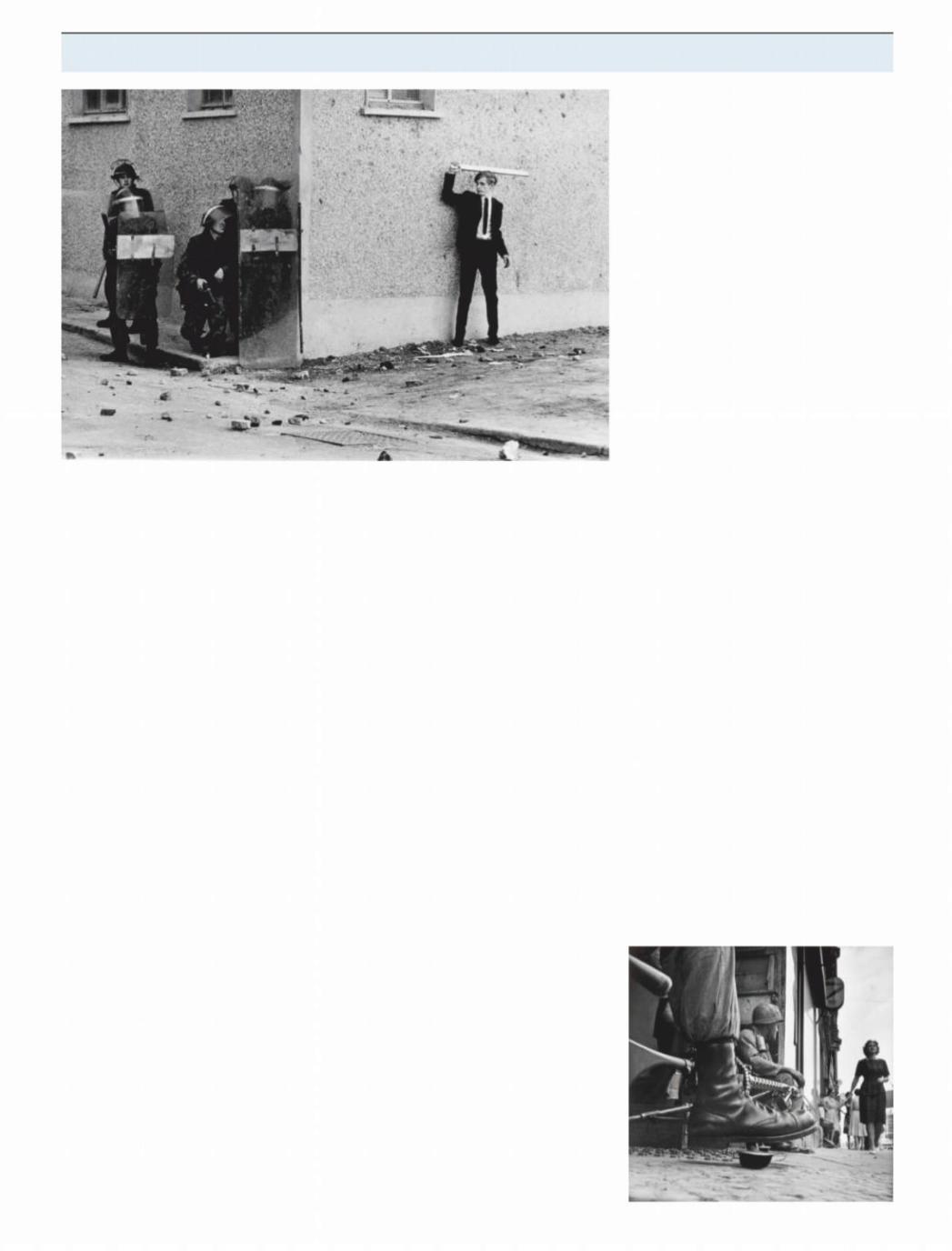
|
РЕЛИЗ ПОДГОТОВИЛА ГРУППА "What's News" VK.COM/WSNWS |
vk.com/id446425943 |
|
72 Books & arts |
The Economist February 2nd 2019 |
A life in photography
All kinds of murderers
Sir Don McCullin’s pictures are an accusation against the world
When people are about to die, Sir Don McCullin observes, “they often look up”, searching for “one last chance that
maybe somebody can save [them].” Condemned prisoners glance skyward in Goya’s paintings, he notes, as did some of the doomed souls he encountered on his assignments, such as in the killing fields of Lebanon in 1976. In the pictures from Beirut that appear in a new exhibition of Sir Don’s work at Tate Britain in London, a woman wails for her murdered family. Gunmen crouch in a ruined ballroom.
Sometimes, rather than turning to the heavens, the victims looked to Sir Don for salvation instead. He remembers in particular a starving boy in Biafra, crawling across a muddy playground, covered in flies. Often his subjects stare into his lens: an exhausted mother in a Bangladeshi refugee camp; a Zambian orphan;aids a woman arrested at a protest in England against the bomb. They looked, but “all I’ve got around my neck is two Nikon cameras.” He was doing a job, but you can’t “hide behind the camera”.
Sir Don couldn’t hide, and neither can his viewers. Looking at him, his subjects seem also to be gazing through and beyond his black-and-white images. What, he asks, could he say to that starving boy? His work is an accusation—against the perpetrators of the cruelty he intimately chronicled, against his audience and against himself.
“My whole life has been built upon violence,” Sir Don reflects. Born in London in 1935, he was evacuated to Lancashire during the war, billeted in a “hell-hole” with a bullying farmer. He took his first published photo in the aftermath of a deadly street fight; it shows a gang from Finsbury Park, his rough London neighbourhood, peering from the carcass of a bombed-out building. When the Observerran it in1959, the biggest thrill was seeing his father’s surname in print: the older McCullin had died when Don was 13, which was when he gave up on God. Around that time, some policemen asked him where he got his camera (“they were always smacking you around”). More worried about what his mother might do to the bobbies than what they might do to him, he kept them away from the house while he fetched the receipt. “The old lady was quite ferocious really.”
He began to learn his craft during national service in Egypt and Kenya, where he was deployed in a unit that processed aerial reconnaissance. He took himself to Berlin when the wall was being built in1961, snapping American troops at Checkpoint Charlie (see right). Then he went to war, largely for the Sunday Times .
Finsbury Park, it turned out, was “child’s play”. “I’ve been with all kinds of murderers in my life,” Sir Don says; “men killing people in front of me, just because they like killing people.” Soon he eschewed
the “flags and bugles and Napoleonic stu ”, focusing instead on civilians, who always su ered most. As in his shot of a besuited young Catholic, taking on British troops in Londonderry with a stick in 1971 (left), in his images of conflict there is often a sense of life interrupted. Bystanders peek from doorways. Relatives mourn.
It was a dangerous trade. In 1970 his camera took a bullet for him as he zigzagged through a Cambodian paddy field; a week later he was wounded by a mortar, crawling away to evade the Khmer Rouges. (“Did I do this?” he asks in momentary wonderment.) In1972 he spent four days in a Ugandan prison, where every morning Idi Amin’s lorries would take corpses to the Nile to feed to the crocodiles: “I thought I’d had it.” Charles Glass, a foreign correspondent and friend, says Sir Don “will endure any amount of discomfort and su ering to get a picture.” He complained, Mr Glass says, only when pettifogging o cials barred the path to his destination.
Some wounds didn’t heal. Feeling “more elated and more blessed” for surviving, he sensed he was becoming a war junkie. “Every two or three years,” he recalls, “I’d have a kind of breakdown.” Now, at 83, stories tumble out of him, like the one about a man with a blown-o face he took to hospital in Salvador in 1982, whose “eyes were screaming”. Or about the company of marines he saw “chewed up” in Hue. “I think about it every bloody day,” he says. “My head is overcrowded with memory.”
He blames politicians: “90% of the things I went and photographed was because they bollocksed up.” That goes equally for the struggling English towns that he documented between foreign jobs. His close-up portrait of a homeless Irishman in London’s East End, wild hair framing a haunted visage, is as wrenching in its way as his battlefields. Cities are “where the real truth is,” he reckons. Even his glowering English landscapes seem su used with threat. For him, the Roman ruins he photographed in North Africa are imbued with the hardship of the slaves who built them.
So his output was always political but,1
http://new.guap.ru/i04/contacts
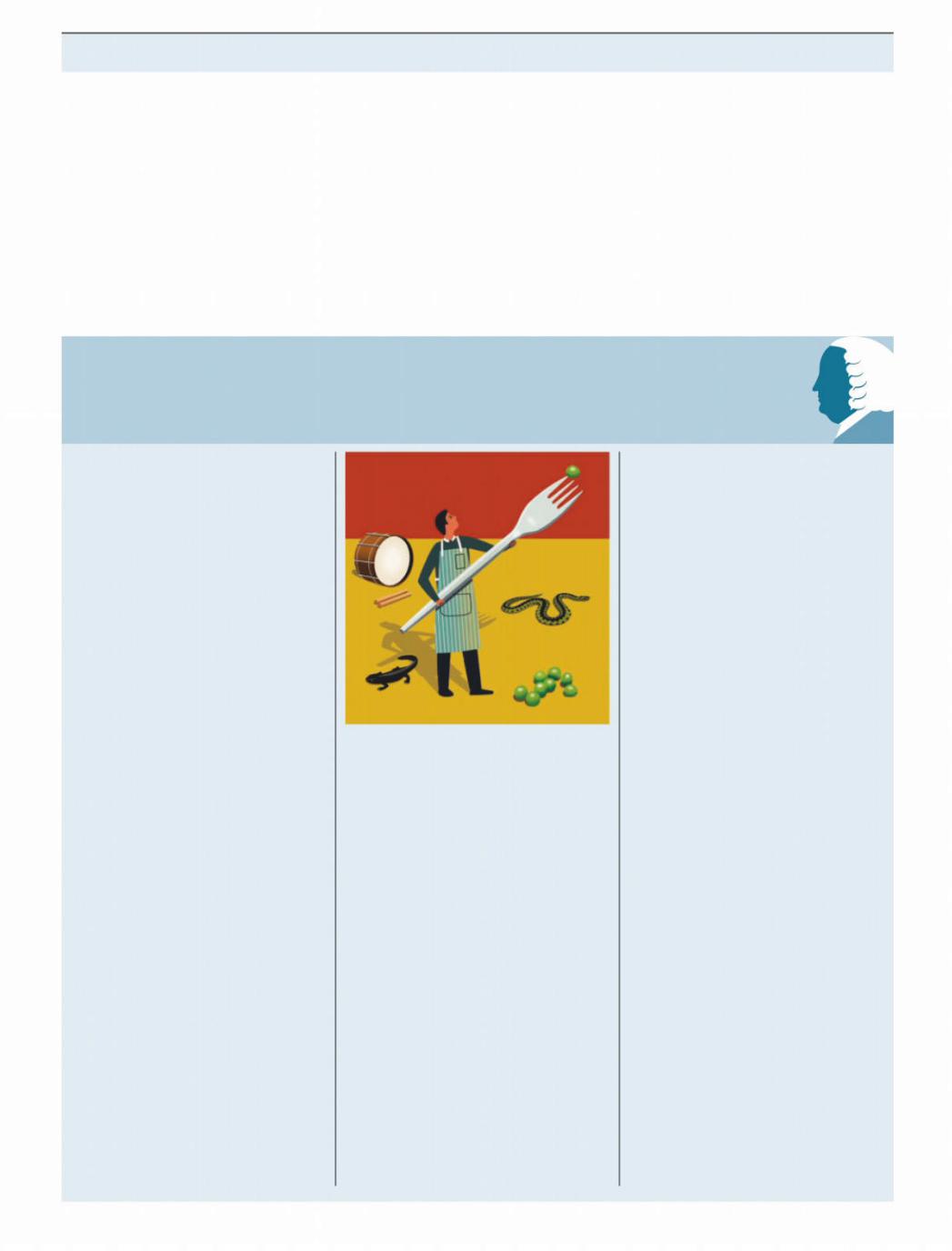
|
РЕЛИЗ ПОДГОТОВИЛА ГРУППА "What's News" VK.COM/WSNWS |
vk.com/id446425943 |
|
The Economist February 2nd 2019 |
Books & arts 73 |
2 he insists, “it never was art…It’s not me.” His resistance to that label stems partly from his background (“I never went to school very much”), and partly from a sense of guilt, even self-disgust. To convey the “stench and the smell of war”, he had to “connive to bring [viewers] in and hold them”, with a compositional skill that transmutes anguish into a chilling beauty. As a result, many of the photos he took for newspapers have come to seem as much archetypal as records of specific events; an existential inquiry into innocence and evil, su ering and endurance, as much as jour-
nalism. Their subjects seem both frozen in a dead past and admonishingly alive.
Sir Don invests as much e ort in making the pictures as he did in taking them, constantly revisiting old negatives to refine his images. He made all the silver-gela- tin prints in the Tate’s show himself. Simon Baker, one of the curators, says he has a “very curious, unusual feeling of obligation” to his material, which Mr Baker sees as a way of “paying respect to the subject”. Sir Don still does long, therapeutic stints in his dark room in Somerset, which he likens to being “alone in your mother’s womb”.
For all that devotion, he doubts that he has made any di erence: “Looking back, it served no purpose, my life.” He has “been preaching to the converted”, he concludes, as he surveys, say, the depredations of Islamic State. “I just don’t trust humanity.” Then he mentions how, that morning, he passed up a chance to take “the greatest photo in the world”. On a London street he saw a businessman drinking his co ee and squinting at his phone, while on the pavement beside him a homeless man huddled in a sleeping bag. But Sir Don didn’t have his camera. “I felt naked.” 7
Johnson The error of our ways
Mistakes are the engine of language’s evolution
believe the children are our fu- |
|
|
|
eventually took a chef to be a cook. Pariah |
|||
“Iture,” sang Whitney Houston, mak- |
|
|
|
trod a similarly improbable path: the |
|||
ing an obvious fact of life sound like a |
|
|
|
word means “drummer” in Tamil, be- |
|||
bold claim. Children will of course not |
|
|
|
coming the name of a downtrodden |
|||
only inherit the world, but shape it. And |
|
|
|
ethnic group which often performed |
|||
in their linguistic mistakes, their parents |
|
|
|
ceremonial drumming. That “downtrod- |
|||
can get a sense of how. |
|
|
|
|
den” element of the meaning then be- |
||
Take the child collecting di erent |
|
|
|
came the only one in English. |
|||
kinds of animals in a video game: “I got a |
|
|
|
The “pariah” example is instructive. |
|||
new specie!”, he cries. The source of the |
|
|
|
This isn’t so much a word born of a single |
|||
mistake is obvious. The child has heard |
|
|
|
clear-cut mistake, as one that emerged |
|||
the slightly rarefied word “species” and |
|
|
|
from a gradual transformation: from |
|||
assumed it was the plural of something |
|
|
|
drummer to outcast drummers to out- |
|||
called a |
specie |
. Children do this kind of |
|
|
|
cast, each step is short and intelligible. |
|
thing all the time as they learn language; |
|
|
|
Only to Tamils might the English sense of |
|||
generalising from things previously |
|
|
|
“pariah” seem wrong. In English, “out- |
|||
heard and rules previously mastered is |
|
|
|
cast” really is its meaning. |
|||
the only way they can progress with such |
|
|
|
Every word is changing a little bit, all |
|||
speed. In most cases, errors disappear on |
an n was added, not subtracted, by a mis- |
the time. Look at a few lines of Middle |
|||||
their own. |
|
|
|
take in the opposite direction: a |
was |
newtEnglish, and it is nigh impossible to find |
|
Yet tempting, |
specie |
-type mistakesonce a ewt , and a nicknwasmeonce an |
words that have not altered in spelling, |
||||
happen not just among children, but |
eke-name. (Eke is an old word for “also”.) |
pronunciation, meaning, grammar—or |
|||||
their parents too. Some survive, and even |
Not all such forms survived: while neilond, |
all four. Consider Old English, and those |
|||||
thrive, until they displace an old form |
nangry and nuncle appear in older English |
rare examples become nearly zero. Even |
|||||
and become the new standard. Few |
texts, they never did replace |
, angryisland Shakespeare requires some practice to |
|||||
English-speakers today know it, but |
and uncle . |
|
|
understand fully. |
|||
there was once no such thing as a |
peaForeign. borrowings are also a source of |
Many of the tweaks that have made |
|||||
People ate a mass of boiled pulses called |
error-induced change. The French la muni- |
those bygone Englishes into modern |
|||||
pease . But just as with |
specie , at sometion was misunderstood by English-speak- |
English could be seen as an “error” of |
|||||
point English people misanalysed pease |
ers with shaky French as l’ammunition, |
some sort. Some such changes were |
|||||
as a plural, and the new singular pea was |
giving rise to the English word. English- |
systematic: all words with the same |
|||||
born. The same thing happened with |
speakers are not the only people who do |
vowel gradually being pronounced with |
|||||
cherry, from the Norman |
,cheriseand |
this kind of thing, nor is French the only |
a di erent one, say. Others have a ected |
||||
caper (the edible kind), from the Latin |
victim. The Arabic |
al- , meaning “the”, hasju t one word at a time, and so tend to be |
|||||
capparis |
, both singular. |
|
been taken as an integral part of words |
too subtle to catch the eye. |
|||
Another kind of confusion happens at |
borrowed from that tongue. So European |
The naprons of the world are notable, |
|||||
the beginning of words. People once |
languages are filled with |
, algebraalkaliand |
then, not because they are exceptions, |
||||
worked with a protective bit of clothing |
the like. It is as if English had swallowed la |
but because they are instances of a com- |
|||||
called a |
napron |
. But enough heard it as |
munition whole as “lamunition”. |
|
mon phenomenon—language change |
||
“an apron” that |
aproneventually sup- |
Sometimes borrowings are mangled |
through “error”—that happened conspic- |
||||
planted napron completely. Other words |
not because their structure is misun- |
uously enough to make a tidy example. |
|||||
beginning with vowels and preceded by |
derstood, but their meaning. A |
chefButde modern English is deformed Old |
|||||
“an” went through the same process: |
cuisine, as it was originally adopted from |
English and degenerate Middle English. |
|||||
nadder became adder and nauger, auger (a |
French, was boss of the kitchen. |
still |
ChefIn other words, like any living language, |
||||
tool for boring holes). In other instances, |
means “boss” in French, but the English |
it is “error” all the way down. |
|||||
http://new.guap.ru/i04/contacts
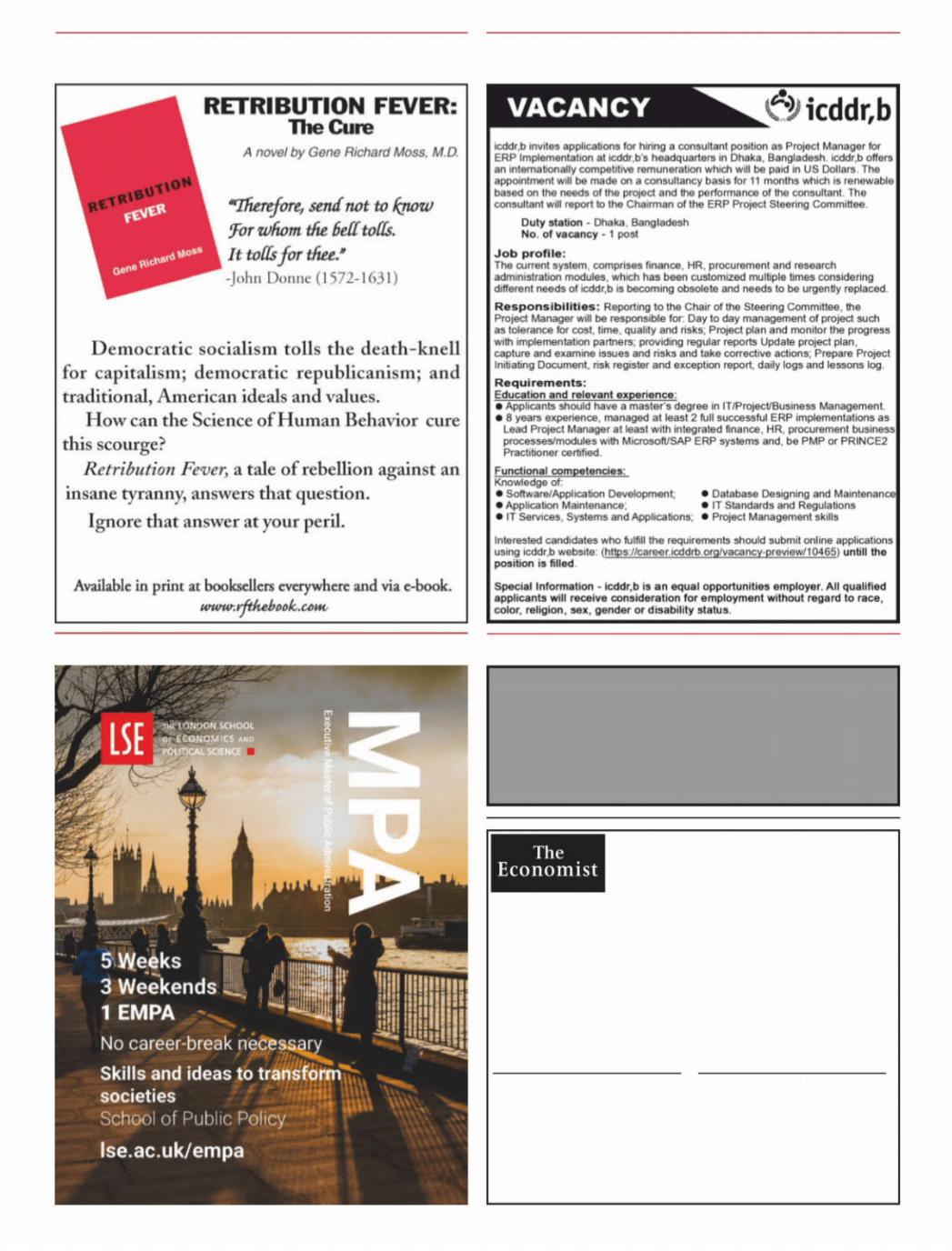
|
РЕЛИЗ ПОДГОТОВИЛА ГРУППА "What's News" VK.COM/WSNWS |
vk.com/id446425943 |
Appointments |
74 Publications |
Courses |
Business & personal |
BED AND BREAKFAST HOTEL FOR SALE
23 rooms, newly refurbished. Beautiful, best, central London location.
Near Hyde Park/Kensington Gardens & Paddington Station. Very lucrative business.
Tel. Owner (10am - 6pm GMT) +44 7944 782538
To advertise within the classified section, contact:
UK/Europe |
United States |
Olivia Power |
Richard Dexter |
Tel: +44 20 7576 8539 |
Tel: +1 212 554 0662 |
oliviapower@economist.com |
richarddexter@economist.com |
Asia |
Middle East & Africa |
Shan Shan Teo |
Philip Wrigley |
Tel: +65 6428 2673 |
Tel: +44 20 7576 8091 |
shanshanteo@economist.com |
philipwrigley@economist.com |
http://new.guap.ru/i04/contacts
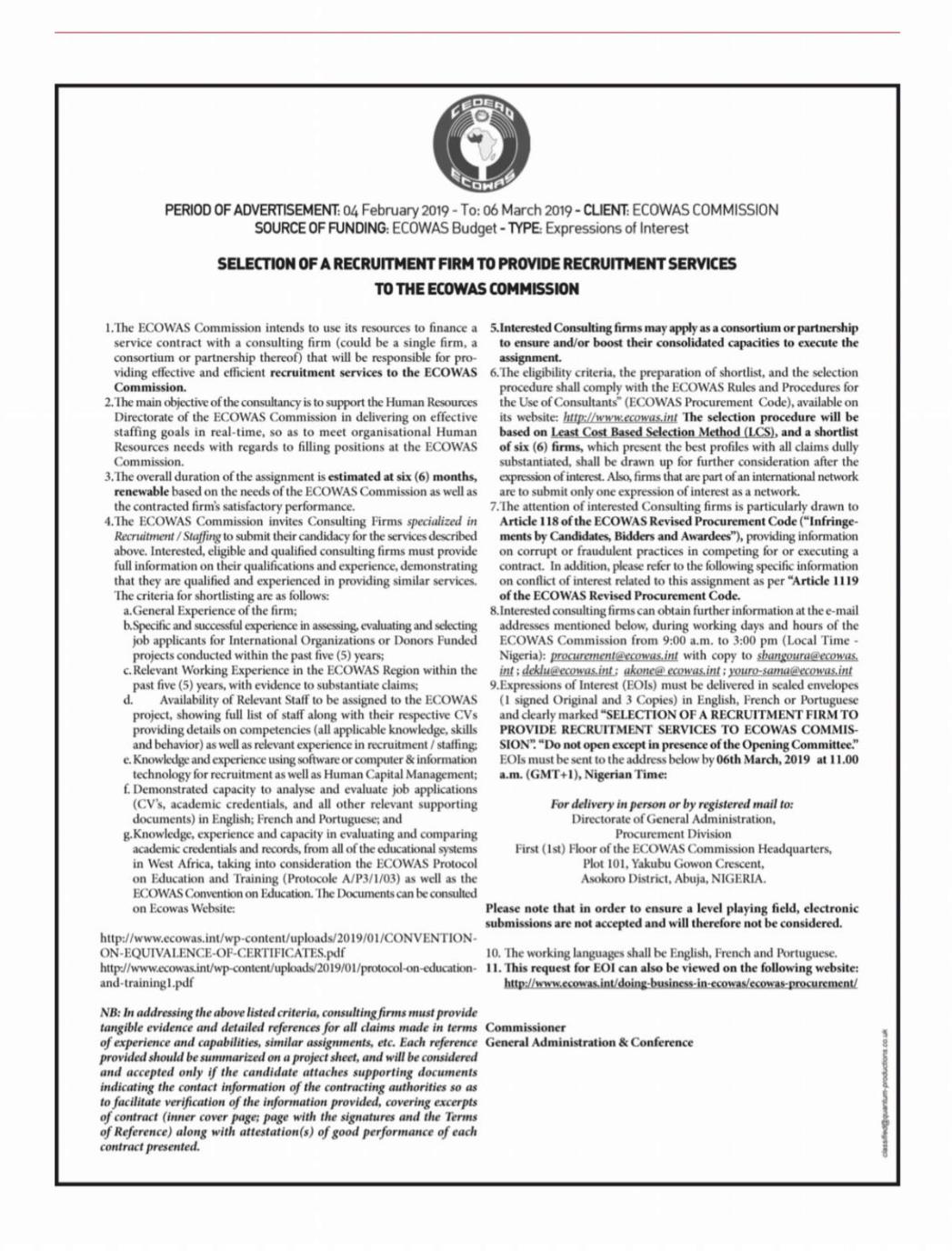
РЕЛИЗ ПОДГОТОВИЛА ГРУППА "What's News" VK.COM/WSNWS
vk.com/id446425943
Tenders |
75 |
http://new.guap.ru/i04/contacts
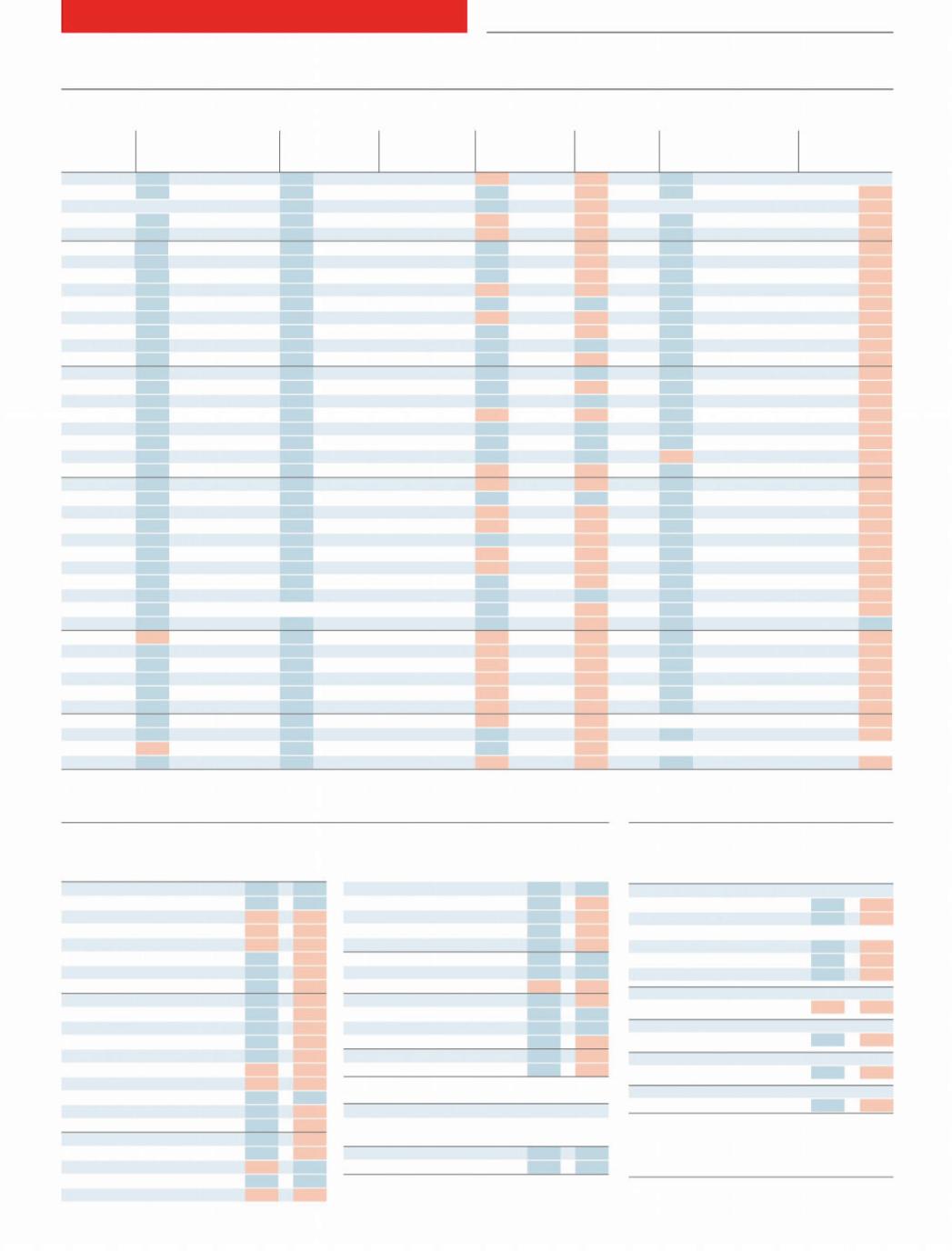
РЕЛИЗ ПОДГОТОВИЛА ГРУППА "What's News" VK.COM/WSNWS
vk.com/id446425943 |
|
|
nan indic ia lc at so r |
|
|
|
|
|
|
|||||||
76 Econ o mi c & fi |
|
|
The Economist February 2nd 2019 |
|||||||||||||
Economic data |
|
|
|
|
|
|
|
|
|
|
|
|
|
|
|
|
|
Gross domestic product |
Consumer prices |
Unemployment |
Current-account |
Budget |
Interest rates |
|
Currency units |
||||||||
|
% change on year ago |
|
% change on year ago |
rate |
|
balance |
balance |
10-yr gov't bonds |
change on |
per $ |
% change |
|||||
|
latest |
quarter* |
2018† |
latest |
|
2018† |
% |
|
% of GDP, 2018† |
% of GDP, 2018† |
latest,% |
year ago, bp |
Jan 30th on year ago |
|||
United States |
3.0 |
Q3 |
3.4 |
2.9 |
1.9 |
Dec |
2.4 |
3.9 |
Dec |
-2.5 |
-3.8 |
2.8 |
|
10.0 |
- |
|
China |
6.4 |
Q4 |
6.1 |
6.6 |
1.9 |
Dec |
2.0 |
3.8 |
Q4§ |
0.2 |
-3.5 |
2.9 |
§§ |
-92.0 |
6.71 |
-5.5 |
Japan |
nil |
Q3 |
-2.5 |
1.0 |
0.3 |
Dec |
1.0 |
2.5 |
Nov |
3.7 |
-3.5 |
nil |
|
-6.0 |
110 |
-0.7 |
Britain |
1.5 |
Q3 |
2.5 |
1.3 |
2.1 |
Dec |
2.3 |
4.0 |
Oct†† |
-3.9 |
-1.3 |
1.3 |
|
-16.0 |
0.77 |
-7.8 |
Canada |
2.1 |
Q3 |
2.0 |
2.1 |
2.0 |
Dec |
2.3 |
5.6 |
Dec |
-2.8 |
-2.2 |
1.9 |
|
-38.0 |
1.32 |
-6.8 |
Euro area |
1.6 |
Q3 |
0.6 |
1.9 |
1.6 |
Dec |
1.7 |
7.9 |
Nov |
3.5 |
-0.7 |
0.2 |
|
-50.0 |
0.88 |
-8.0 |
Austria |
2.2 |
Q3 |
-1.9 |
2.6 |
1.9 |
Dec |
2.1 |
4.7 |
Nov |
2.1 |
-0.3 |
0.4 |
|
-38.0 |
0.88 |
-8.0 |
Belgium |
1.2 |
Q4 |
1.2 |
1.4 |
2.0 |
Jan |
2.3 |
5.6 |
Nov |
0.5 |
-1.0 |
0.7 |
|
-20.0 |
0.88 |
-8.0 |
France |
0.9 |
Q4 |
1.1 |
1.6 |
1.6 |
Dec |
2.1 |
8.9 |
Nov |
-0.8 |
-2.6 |
0.6 |
|
-30.0 |
0.88 |
-8.0 |
Germany |
1.2 |
Q3 |
-0.8 |
1.4 |
1.7 |
Dec |
1.9 |
3.3 |
Nov‡ |
7.6 |
1.4 |
0.2 |
|
-50.0 |
0.88 |
-8.0 |
Greece |
2.4 |
Q3 |
4.3 |
2.1 |
0.6 |
Dec |
0.6 |
18.6 |
Oct |
-1.9 |
-0.1 |
3.9 |
|
23.0 |
0.88 |
-8.0 |
Italy |
0.7 |
Q3 |
-0.5 |
0.9 |
1.1 |
Dec |
1.2 |
10.5 |
Nov |
2.6 |
-1.9 |
2.6 |
|
57.0 |
0.88 |
-8.0 |
Netherlands |
2.4 |
Q3 |
0.6 |
2.5 |
2.0 |
Dec |
1.6 |
4.4 |
Dec |
10.3 |
1.2 |
0.3 |
|
-43.0 |
0.88 |
-8.0 |
Spain |
2.5 |
Q3 |
2.2 |
2.5 |
1.2 |
Dec |
1.7 |
14.7 |
Nov |
1.0 |
-2.7 |
1.2 |
|
-18.0 |
0.88 |
-8.0 |
Czech Republic |
2.4 |
Q3 |
2.4 |
2.8 |
2.0 |
Dec |
2.2 |
1.9 |
Nov‡ |
0.8 |
1.1 |
1.8 |
|
-2.0 |
22.6 |
-9.7 |
Denmark |
2.4 |
Q3 |
2.9 |
1.0 |
0.8 |
Dec |
0.8 |
3.9 |
Nov |
6.2 |
-0.4 |
0.3 |
|
-37.0 |
6.53 |
-8.1 |
Norway |
1.1 |
Q3 |
2.3 |
1.7 |
3.5 |
Dec |
2.7 |
3.8 |
Nov‡‡ |
8.0 |
7.0 |
1.8 |
|
-11.0 |
8.47 |
-9.0 |
Poland |
5.7 |
Q3 |
7.0 |
5.1 |
1.1 |
Dec |
1.7 |
5.8 |
Dec§ |
-0.4 |
-0.9 |
2.8 |
|
-70.0 |
3.75 |
-10.7 |
Russia |
1.5 |
Q3 |
na |
1.7 |
4.3 |
Dec |
2.9 |
4.8 |
Dec§ |
6.6 |
2.7 |
8.4 |
|
96.0 |
65.9 |
-14.5 |
Sweden |
1.7 |
Q3 |
-0.9 |
2.3 |
2.0 |
Dec |
2.0 |
6.0 |
Dec§ |
2.2 |
0.9 |
0.4 |
|
-52.0 |
9.08 |
-13.2 |
Switzerland |
2.4 |
Q3 |
-0.9 |
2.6 |
0.7 |
Dec |
0.9 |
2.4 |
Dec |
9.6 |
0.9 |
-0.2 |
|
-30.0 |
1.00 |
-7.0 |
Turkey |
1.6 |
Q3 |
na |
3.1 |
20.3 |
Dec |
16.4 |
11.6 |
Oct§ |
-4.5 |
-1.9 |
14.9 |
|
292 |
5.26 |
-28.1 |
Australia |
2.8 |
Q3 |
1.0 |
3.0 |
1.8 |
Q4 |
2.0 |
5.0 |
Dec |
-2.4 |
-0.6 |
2.2 |
|
-62.0 |
1.39 |
-10.8 |
Hong Kong |
2.9 |
Q3 |
0.3 |
3.4 |
2.6 |
Dec |
2.4 |
2.8 |
Dec‡‡ |
3.0 |
2.0 |
1.9 |
|
-14.0 |
7.84 |
-0.3 |
India |
7.1 |
Q3 |
3.3 |
7.3 |
2.2 |
Dec |
4.0 |
7.4 |
Dec |
-2.7 |
-3.6 |
7.5 |
|
11.0 |
71.2 |
-10.6 |
Indonesia |
5.2 |
Q3 |
na |
5.2 |
3.1 |
Dec |
3.2 |
5.3 |
Q3§ |
-2.8 |
-2.6 |
8.2 |
|
182 |
14,130 |
-4.9 |
Malaysia |
4.4 |
Q3 |
na |
4.7 |
0.2 |
Dec |
0.8 |
3.3 |
Nov§ |
2.3 |
-3.7 |
4.1 |
|
14.0 |
4.11 |
-5.1 |
Pakistan |
5.4 |
2018** |
na |
5.4 |
6.2 |
Dec |
5.2 |
5.8 |
2018 |
-5.7 |
-5.4 |
13.3 |
††† |
479 |
139 |
-20.3 |
Philippines |
6.1 |
Q4 |
6.6 |
6.2 |
5.1 |
Dec |
5.3 |
5.1 |
Q4§ |
-2.8 |
-2.8 |
6.5 |
|
28.0 |
52.4 |
-1.8 |
Singapore |
2.2 |
Q4 |
1.6 |
3.2 |
0.5 |
Dec |
0.5 |
2.2 |
Q4 |
19.1 |
-0.5 |
2.2 |
|
-7.0 |
1.35 |
-3.0 |
South Korea |
3.2 |
Q4 |
3.9 |
2.5 |
1.3 |
Dec |
1.6 |
3.4 |
Dec§ |
4.7 |
0.7 |
2.1 |
|
-72.0 |
1,116 |
-3.8 |
Taiwan |
2.3 |
Q3 |
1.5 |
2.6 |
nil |
Dec |
1.4 |
3.7 |
Dec |
12.9 |
-0.7 |
0.9 |
|
-19.0 |
30.8 |
-4.9 |
Thailand |
3.3 |
Q3 |
-0.1 |
4.1 |
0.4 |
Dec |
1.2 |
1.0 |
Nov§ |
6.8 |
-3.0 |
2.2 |
|
-16.0 |
31.4 |
0.2 |
Argentina |
-3.5 |
Q3 |
-2.7 |
-2.0 |
47.1 |
Dec |
34.3 |
9.0 |
Q3§ |
-6.0 |
-5.5 |
11.3 |
|
562 |
37.6 |
-47.9 |
Brazil |
1.3 |
Q3 |
3.1 |
1.2 |
3.7 |
Dec |
3.7 |
11.6 |
Nov§ |
-0.8 |
-7.1 |
7.1 |
|
-146 |
3.72 |
-14.5 |
Chile |
2.8 |
Q3 |
1.1 |
4.0 |
2.6 |
Dec |
2.4 |
6.8 |
Nov§‡‡ |
-2.5 |
-2.0 |
4.2 |
|
-32.0 |
666 |
-8.9 |
Colombia |
2.6 |
Q3 |
0.9 |
2.6 |
3.2 |
Dec |
3.2 |
8.8 |
Nov§ |
-3.2 |
-2.4 |
6.8 |
|
38.0 |
3,164 |
-10.1 |
Mexico |
1.8 |
Q4 |
1.2 |
2.2 |
4.8 |
Dec |
4.9 |
3.6 |
Dec |
-1.6 |
-2.5 |
8.5 |
|
83.0 |
19.1 |
-2.4 |
Peru |
2.3 |
Q3 |
-8.3 |
3.7 |
2.2 |
Dec |
1.3 |
5.7 |
Dec§ |
-2.2 |
-2.4 |
5.6 |
|
64.0 |
3.35 |
-3.9 |
Egypt |
5.4 |
Q2 |
na |
5.3 |
11.9 |
Dec |
16.7 |
10.0 |
Q3§ |
-1.1 |
-9.5 |
na |
|
nil |
17.7 |
-0.1 |
Israel |
2.9 |
Q3 |
2.3 |
3.2 |
0.8 |
Dec |
0.8 |
4.1 |
Nov |
1.7 |
-3.0 |
2.1 |
|
42.0 |
3.66 |
-6.6 |
Saudi Arabia |
-0.9 |
2017 |
na |
1.5 |
2.2 |
Dec |
2.6 |
6.0 |
Q3 |
6.3 |
-5.0 |
na |
|
nil |
3.75 |
nil |
South Africa |
1.1 |
Q3 |
2.2 |
0.8 |
4.5 |
Dec |
4.6 |
27.5 |
Q3§ |
-3.1 |
-3.9 |
8.7 |
|
20.0 |
13.6 |
-11.9 |
Source: Haver Analytics. *% change on previous quarter, annual rate. †The Economist Intelligence Unit estimate/forecast. §Not seasonally adjusted. ‡New series. **Year ending June. ††Latest 3 months. ‡‡3-month moving average. §§5-year yield. †††Dollar-denominated bonds.
Markets
|
|
% change on: |
|
In local currency |
Index |
one |
Dec 29th |
Jan 30th |
week |
2017 |
|
United States S&P 500 |
2,681.1 |
1.6 |
0.3 |
United States NAScomp |
7,183.1 |
2.2 |
4.1 |
China Shanghai Comp |
2,575.6 |
-0.2 |
-22.1 |
China Shenzhen Comp |
1,283.7 |
-2.5 |
-32.4 |
Japan Nikkei 225 |
20,556.5 |
-0.2 |
-9.7 |
Japan Topix |
1,550.8 |
0.2 |
-14.7 |
Britain FTSE 100 |
6,941.6 |
1.4 |
-9.7 |
Canada S&P TSX |
15,484.6 |
1.8 |
-4.5 |
Euro area EURO STOXX 50 |
3,161.7 |
1.6 |
-9.8 |
France CAC 40 |
4,974.8 |
2.8 |
-6.4 |
Germany DAX* |
11,181.7 |
1.0 |
-13.4 |
Italy FTSE/MIB |
19,771.6 |
1.9 |
-9.5 |
Netherlands AEX |
518.5 |
2.2 |
-4.8 |
Spain IBEX 35 |
9,071.5 |
-0.6 |
-9.7 |
Poland WIG |
59,849.2 |
-1.5 |
-6.1 |
Russia RTS, $ terms |
1,199.0 |
1.1 |
3.9 |
Switzerland SMI |
8,965.7 |
0.1 |
-4.4 |
Turkey BIST |
104,189.4 |
4.0 |
-9.7 |
Australia All Ord. |
5,951.2 |
0.7 |
-3.5 |
Hong Kong Hang Seng |
27,642.9 |
2.3 |
-7.6 |
India BSE |
35,591.3 |
-1.4 |
4.5 |
Indonesia IDX |
6,464.2 |
0.2 |
1.7 |
Malaysia KLSE |
1,684.1 |
-0.2 |
-6.3 |
|
|
% change on: |
|
|
index |
one |
Dec 29th |
|
Jan 30th |
week |
2017 |
Pakistan KSE |
40,607.1 |
1.4 |
0.3 |
Singapore STI |
3,174.4 |
0.1 |
-6.7 |
South Korea KOSPI |
2,206.2 |
3.7 |
-10.6 |
Taiwan TWI |
9,932.3 |
0.9 |
-6.7 |
Thailand SET |
1,632.6 |
0.9 |
-6.9 |
Argentina MERV |
36,039.1 |
3.5 |
19.9 |
Brazil BVSP |
96,996.2 |
0.5 |
27.0 |
Mexico IPC |
43,621.4 |
-0.1 |
-11.6 |
Egypt EGX 30 |
14,093.4 |
4.3 |
-6.2 |
Israel TA-125 |
1,403.3 |
2.0 |
2.9 |
Saudi Arabia Tadawul |
8,583.6 |
1.4 |
18.8 |
South Africa JSE AS |
54,131.7 |
0.4 |
-9.0 |
World, dev'd MSCI |
2,011.0 |
1.6 |
-4.4 |
Emerging markets MSCI |
1,036.6 |
2.5 |
-10.5 |
US corporate bonds, spread over Treasuries |
|
|
|
|
|
|
Dec 29th |
Basis points |
|
latest |
2017 |
Investment grade |
|
178 |
137 |
High-yield |
|
499 |
404 |
Sources: Datastream from Refinitiv; Standard & Poor's Global Fixed Income Research. *Total return index.
Commodities
The Economist |
commodity-price index |
% change on |
|||
|
|
|
|
||
2005=100 |
Jan 22nd |
Jan 29th* |
month |
year |
|
Dollar Index |
|
|
|
|
|
All Items |
138.4 |
138.4 |
|
1.8 |
-9.8 |
Food |
146.9 |
146.0 |
|
1.3 |
-5.0 |
Industrials |
|
|
|
|
|
All |
129.6 |
130.5 |
|
2.3 |
-14.9 |
Non-food agriculturals 122.6 |
123.3 |
|
3.5 |
-11.3 |
|
Metals |
132.7 |
133.5 |
|
1.9 |
-16.2 |
Sterling Index |
|
|
|
|
|
All items |
194.3 |
191.5 |
|
-1.4 |
-3.2 |
Euro Index |
|
|
|
|
|
All items |
151.6 |
150.8 |
|
1.9 |
-1.9 |
Gold |
|
|
|
|
|
$ per oz |
1,281.0 |
1,310.7 |
|
2.3 |
-2.2 |
West Texas Intermediate |
|
|
|
|
|
$ per barrel |
53.0 |
53.3 |
|
17.4 |
-17.3 |
Sources: CME Group; Cotlook; Darmenn & Curl; Datastream from Refinitiv; FT; ICCO; ICO; ISO; Live Rice Index; LME; NZ Wool Services; Thompson Lloyd & Ewart; Urner Barry; WSJ. *Provisional.
For more countries and additional data, visit
Economi st.co m/indi atc ors
http://new.guap.ru/i04/contacts
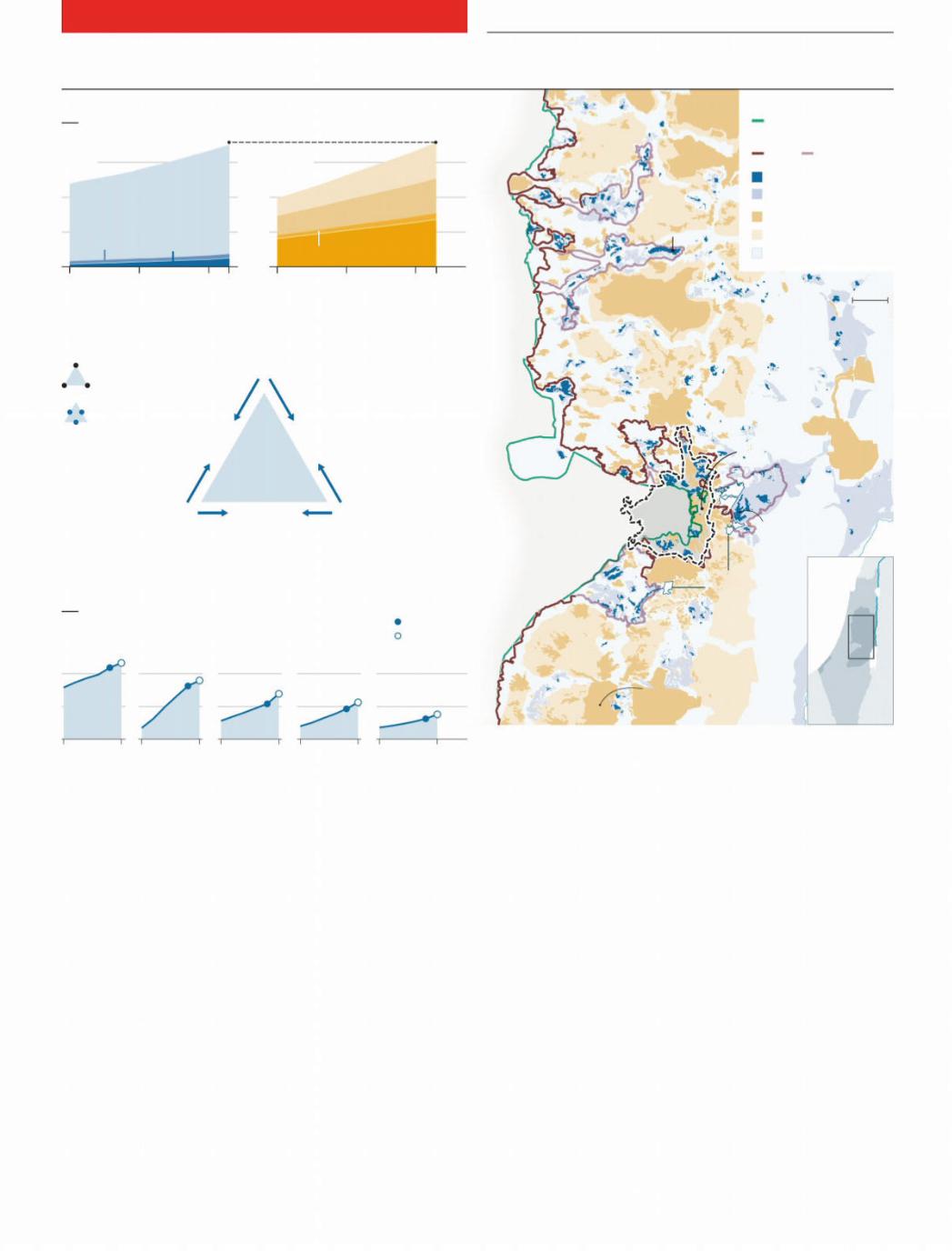
РЕЛИЗ ПОДГОТОВИЛА ГРУППА "What's News" VK.COM/WSNWS
vk.com/id446425943
G raphi dce tail
Arabs may soon outnumber Jews in Israel and the occupied territories
Population, m* |
7.0m |
7.2m |
Jews |
|
|
Arabs |
|
Gaza |
6 |
|
|
|
|
|
|
|
|
|
|
|
Israel |
|
|
|
|
4 |
|
|
|
|
|
|
Israel |
|
|
|
|
|
|
|
|
|
|
East |
West |
|
|
|
West |
2 |
|
Jerusalem |
Bank |
|
East Jerusalem |
|
||
|
|
|
|
Bank |
0 |
||
|
|
|
|
|
|
|
|
1998 |
2008 |
18 |
21 |
1998 |
2008 |
18 |
21 |
|
|
Forecast |
|
|
Forecast |
||
That creates a “trilemma” for Israel, in which it must choose only two of three goals. Each pair results in a different outcome
The Economist February 2nd 2019 77
Ariel, 16km from the “green line”
Israel’s separation barrier makes deep incursions to incorporate Jewish settlements
Pre-1967 border
“Green line”
Separation barrier
Built Planned
Israeli settlements
Israeli municipal areas
Palestinian control ( |
Area A) |
|
Joint control ( |
Area B) |
|
Israeli control ( |
|
Area C) |
5 km
Jewish electoral majority
Goals
Outcomes |
|
|
|
Apartheid-like |
Twostate |
||
state |
CHOOSE |
|
solution |
|
|
|
|
|
ONE SIDE OF |
|
|
|
THE TRIANGLE |
|
|
Control of all |
Jewish-Arab |
|
Fully democratic |
occupied lands |
“binational” state |
state |
|
A two-state solution may require settlers to be relocated, especially in communities far from the “green line”
Jewish population in East Jerusalem and the West Bank, ‘000 |
2018 |
|
|||
East |
West Bank, by distance from the “green line” |
2021 forecast† |
|||
|
|
||||
Jerusalem |
0-2.5km |
2.5-5km |
5-15km |
>15km |
200 |
|
|||||
|
|
|
|
|
|
|
|
|
|
|
100 |
W E S T |
B A N K |
|
|
East Jerusalem, home to |
|
|
220,000 Jews and 345,000 |
|
|
Arabs, is the proposed capital |
|
|
of a future Palestinian state |
|
Municipal |
|
|
boundary |
|
|
Jerusalem |
Ma’ale Adumim, |
|
I S R A E L |
||
5km from the |
||
|
“green line” |
Bethlehem |
Proposed |
M e d . |
|
|
s e a |
r |
|
|
settlement blocks |
||
|
West |
e |
|
|
R i v |
||
|
further fragment |
Bank |
|
|
Palestinian areas |
|
a n |
|
|
|
J o r d |
Gaza
ISRAEL
500 Jewish settlers live in the old town of Hebron, among 200,000 Arabs
|
|
|
|
|
|
|
0 |
Sources: Israel CBS; Palestinian CBS; Jerusalem Institute for Policy Research; Peace Now; Washington |
|
|
|
|
|
|
|
|
|
1998 |
2021 1998 |
2021 1998 |
2021 1998 |
2021 |
1998 |
2021 |
|
Institute; The Economist (data available online) *Based on national statistics †Based on Peace Now data |
Future of the Holy Land
Facts on the ground
By expanding settlements, Israel faces stark choices about its future
Israeli-Palestinian peace talks are frozen. President Donald Trump’s plan for the “deal of the century” has been put o . The subject is absent in campaigning for the Israeli election in April, which focuses on looming corruption charges against Binyamin Netanyahu, the prime minister. The Oslo accords of 1993 created a crazy quilt of autonomous zones in the lands that Israel captured in 1967. They also kindled the hope of creating a Palestinian state in most of the West Bank and Gaza Strip, with its capital in East Jerusalem. After much bloodshed, though, most Israelis are wary of this “two-state solution”. Today
Palestinians are mostly shut o by security barriers, and divided. The Palestinian Authority in the West Bank refuses to negotiate with Israel but co-operates on security. Its Islamist rival, Hamas, which runs Gaza, dares not risk another war, for now.
Besides, the growth of Jewish settlements makes a two-state deal ever harder. Establishing a Palestinian state would probably require the removal of settlers in its territory. Israel had trouble enough evicting 8,000 Jews from Gaza in 2005. There are more than fifty times as many in the West Bank. Even excluding East Jerusalem, annexed by Israel, the number of Jews east of the “green line” (the pre-1967 border) has risen from 110,000 in 1993 to 425,000. New home approvals nearly quadrupled from 5,000 in 2015-16 to 19,000 in 2017-18, according to Peace Now, a pressure group.
Such “facts on the ground” follow a pattern: more intense building in East Jerusalem and close to the green line; less so deeper in the West Bank. In theory, a line could be drawn to incorporate the vast majority of settlers within Israel. The route of
the existing and planned barriers would take in 77% of the West Bank’s settlers (or 85%, counting East Jerusalem). But this creates deep salients that break up Palestinian areas and cut them o from Jerusalem.
As Palestinians lose hope for a state of their own, some favour a “one-state” deal: a single state on all the land with equal rights for Jews and Arabs. Israel would have to give up its predominantly Jewish identity. That is because, between the Mediterranean and the Jordan river, the overall number of Arabs has caught up with that of Jews, and may soon exceed them.
This creates a “trilemma” for Israel. It cannot have at the same time a strong Jewish majority, all the land and a full democracy that does not discriminate against Arabs. In the end it must sacrifice either land in a two-state solution; or a Jewish majority in a big “binational” state; or the claim to being a proper democracy. It has tried to avoid such stark choices through messy partial withdrawals. But the more permanent its occupation becomes, the more it risks sliding towards apartheid. 7
http://new.guap.ru/i04/contacts

РЕЛИЗ ПОДГОТОВИЛА ГРУППА "What's News" VK.COM/WSNWS
vk.com/id446425943
The Economist February 2nd 2019
|
|
slip into woods, ravines and even haystacks if people were hunting |
||
|
|
him. “Skinny Frank” was his nickname round the town. |
||
|
|
Yet hiding was not his nature. When the Germans started to |
||
|
|
round up Kamionka’s Jews he refused to be deported with them. He |
||
|
|
already laughed at the travel restrictions for Jews, racing out of |
||
|
|
town on his bicycle to trade stu , leaving his white Star of David |
||
|
|
arm-band at home. Meanwhile, his fury mounted. When he saw |
||
|
|
Hasidim rifle-butted as they dug ditches, or heard that Uncle |
||
|
|
Moishe had been shot on the spot for having fresh meat in his |
||
|
|
house, he felt like fighting. Most of his neighbours said it was God’s |
||
|
|
will. He did not agree. So on the eve of the round-up he vaguely |
||
|
|
wished his family |
Zeits geszunt, “Be healthy!”, and walked out with |
|
|
|
nothing but bread in his pockets. |
||
|
|
So he had run away. But what could he fight with? That autumn |
||
|
|
80 of his companions were slaughtered at their wretched campsite |
||
|
|
in the forest. It was not enough to bury them, say Kaddish and van- |
||
|
|
ish. Jews had to defend themselves, and also avenge the dead. Even |
||
|
|
the pretence of a rifle—old farm forks with their outer teeth |
||
|
|
knocked out, slung on a shoulder-strap—made him feel stronger. |
||
|
|
With proper firearms, they would make an army of resistance. |
||
|
|
What he realised more gradually was the sheer power of a gun |
||
|
|
over other people. The silent threat of force, which gave you what- |
||
|
|
ever you asked for in the blink of an eye. On that great Night of the |
||
|
|
Weapons he’d gone to the farm with no idea what to say. But he had |
||
|
|
an old small-calibre pistol in his hand, no bullets, and the handle |
||
|
|
held on with a rubber band. Seeing it, the farmer immediately |
||
|
|
gathered all the rifles he had. In villages from which Jews were usu- |
||
|
|
ally chased away, for fear of German reprisals if they were let in, |
||
|
|
they could now eat and drink confidently and try to make the point |
||
|
|
that they were not hoodlums, but gentlemen. |
||
|
|
The guns’ message to the organised legions of Jew-haters was |
||
|
|
starker. If any of those bandits killed a Jew, they would be killed in |
||
|
|
turn. Harassers of Jews at roadblocks were now met with gunfire. |
||
|
|
Nazi collaborators who pretended to be picking mushrooms in the |
||
|
|
forest, looking for Jews to betray to the Germans, were arrested, in- |
||
|
|
terrogated and shot. (He continued to take revenge after the war, |
||
Arms and the man |
working briefly for the new communist government to hunt them |
|||
down.) As his group grew more e cient it attracted more recruits, |
||||
|
|
including ex-soldiers, and more weapons: hand-grenades, mines, |
||
|
|
machineguns. The Jewish Partisan Army that resulted, split up |
||
|
|
into scattered roving units, could now carry out proper ambushes |
||
|
|
and sabotage. And he, at 21, was its youngest platoon commander, |
||
Frank Blaichman, a leader of Jewish partisan fighters in |
with a small moustache that made him look more of a soldier. |
|||
His inner weapons, though, were never put aside. He and his |
||||
Poland, died on December 27th, aged 96 |
||||
comrades still trusted no one. For months he kept his pistol, a Pol- |
||||
|
|
|||
hat first |
proper gun Frank Blaichman did not forget. It was aish Vis, chained unholstered to his belt so that he could draw it in a |
|||
Trifle with straw still on it, because a farmer had fetched it from |
second, until it went o accidentally and killed a friend. Various |
|||
its hiding place in a barn. Not new, but polished, heavy, and with |
groups of gentile Polish partisans, who often helped out, o ered to |
|||
ammunition. It made him shiver from his head to his knees. More |
join forces with them but he, for one, refused. Anti-Semitism ran |
|||
followed. One, dug from the ground, looked fresh out of a maga- |
too deep in Poland, he wrote later. Any Pole could recognise a Jew |
|||
zine. He had been told there were enough “to arm a company”. |
among a thousand gentiles. Even once the war was won in the east, |
|||
Well, not quite. There were six. But they changed everything. |
Jews could never be safe in that country. The place was one huge |
|||
Up to then, for two months, he had been hiding in the forest. |
cemetery of Jewish life as it had been. |
|||
There was a camp of 100 Jews who had escaped deportation from |
He therefore left in 1948, and three years later settled in New |
|||
his town, Kamionka, south-east of Warsaw, in October1942, living |
York. In America at least he could bring up his family peacefully |
|||
in bunkers dug in the earth. They would creep out for water or |
with Torah and among Jews. There, where he worked as a builder, |
|||
food, run back again. Enemies were all around. In his bunker at |
he joined the campaign to get a memorial to the Jewish partisans |
|||
night he would tremble with fear that the deer running by were |
erected at Yad Vashem in Jerusalem. Everyone had to know that |
|||
Germans. At19, he felt he was dead and in his grave. |
Jews fought too, in an organised and disciplined way. |
|||
He had inner weapons, but they were all to do with disappear- |
When historians came calling, he went through his life with al- |
|||
ing. Since the Germans had arrived in 1939, he had honed them. |
most no emotion. Impassively, he told how relatives had vanished |
|||
Fluent Polish, picked up from customers in his grandmother’s |
and how he had said goodbye. Two stories, though, he relished tell- |
|||
general store. The look of a gentile, to blend in. Good local knowl- |
ing. One was the time his partisans went to disarm 2,000 Germans |
|||
edge, from the bartering he did for other Jews, of which gentile |
on a farm estate, shooting for hours, until they gave up for lack of |
|||
farms had honey or chickens, and which might be friendly enough |
reinforcements. The other was the time he shot a German o cer at |
|||
(resisting the general poison in the air) to hide him for a day or so. |
almost point-blank range, above the belt-clasp. He fell down like a |
|||
An uncanny sense of direction, and cunning too, so that he could |
tree. And his killer, 50 years later, allowed himself a smile. 7 |
|||
http://new.guap.ru/i04/contacts
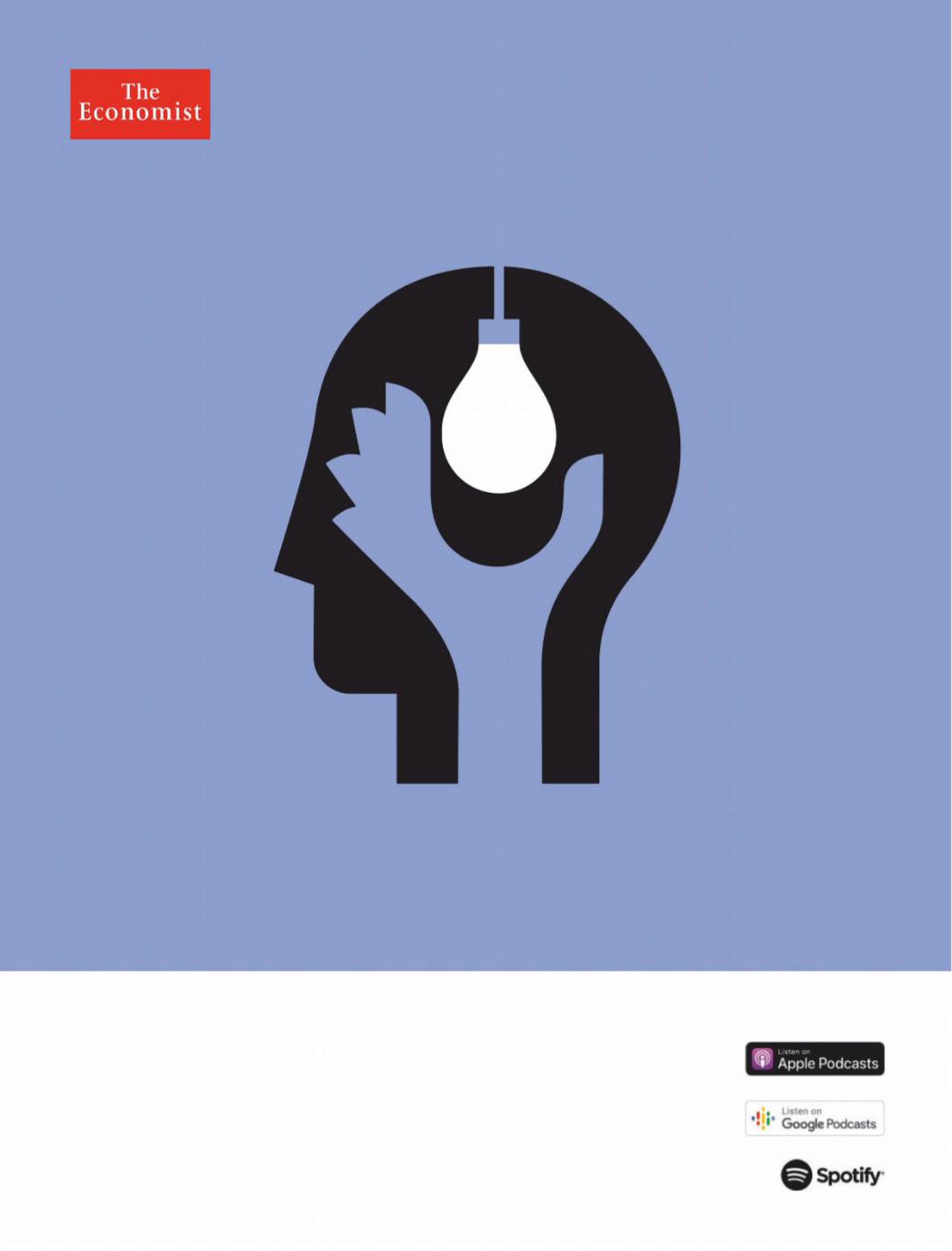
РЕЛИЗ ПОДГОТОВИЛА ГРУППА "What's News" VK.COM/WSNWS
vk.com/id446425943
Illumination, every weekday.
More than just the facts. The Intelligence.
The Intelligence is a new current-affairs podcast, published every weekday by Economist Radio, that provides a fresh perspective on the events shaping your world. Drawing on the expertise of The Economist’s global network of correspondents,
each episode digs past the headlines to get to the stories beneath—and to stories that aren’t making headlines, but should be. For a daily burst of global illumination, you need more than just the facts. You need The Intelligence.
theintelligence.economist.com
http://new.guap.ru/i04/contacts
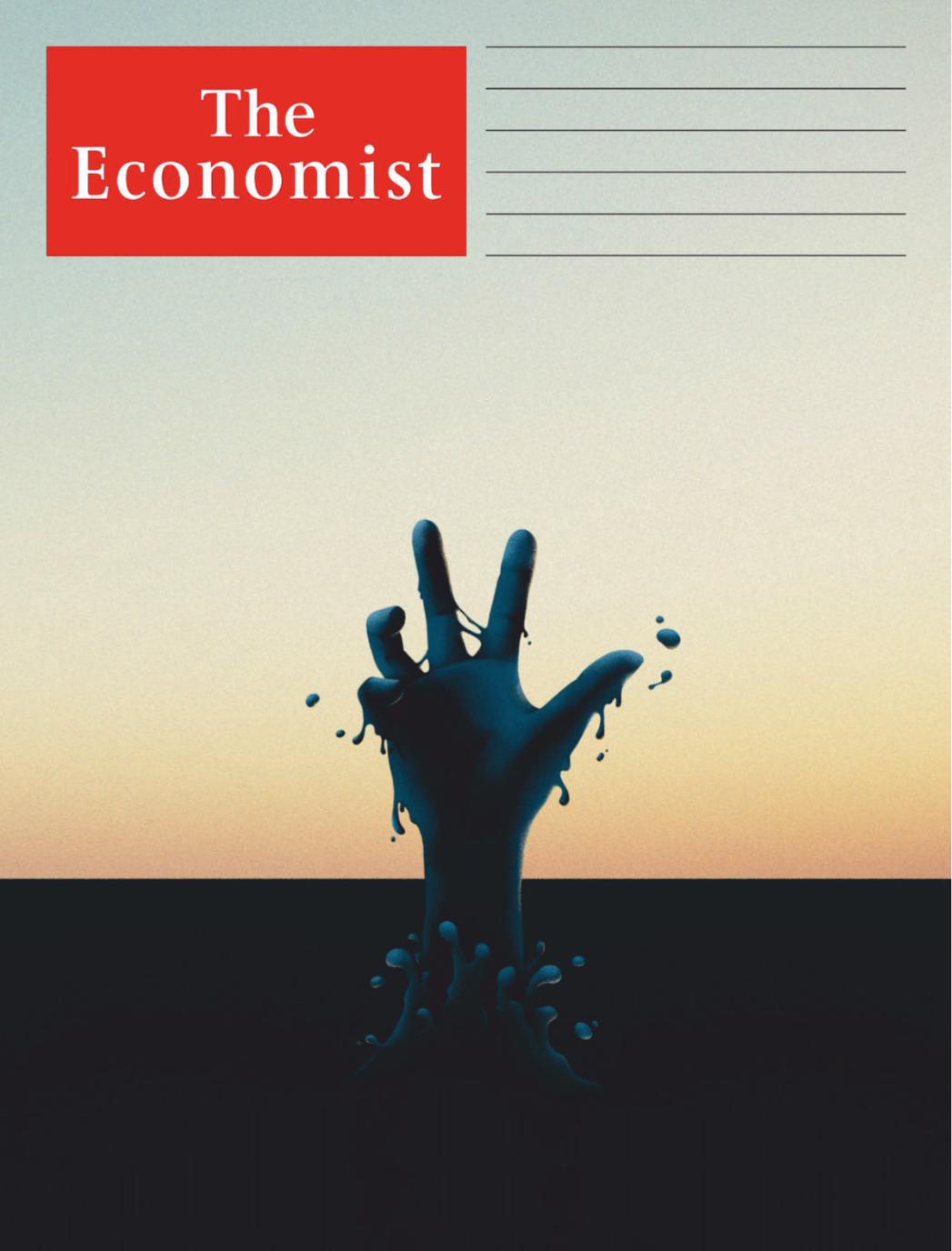
РЕЛИЗ ПОДГОТОВИЛА ГРУППА "What's News" VK.COM/WSNWS
vk.com/id446425943
Is the German model broken?
Iran, 40 years after the revolution
China’s embrace of intellectual property
On the economics of species
FEBRUARY 9TH–15TH 2019
Crude awakening
The truth about Big Oil and climate change
http://new.guap.ru/i04/contacts

РЕЛИЗ ПОДГОТОВИЛА ГРУППА "What's News" VK.COM/WSNWS
vk.com/id446425943
World-Leading Cyber AI
http://new.guap.ru/i04/contacts
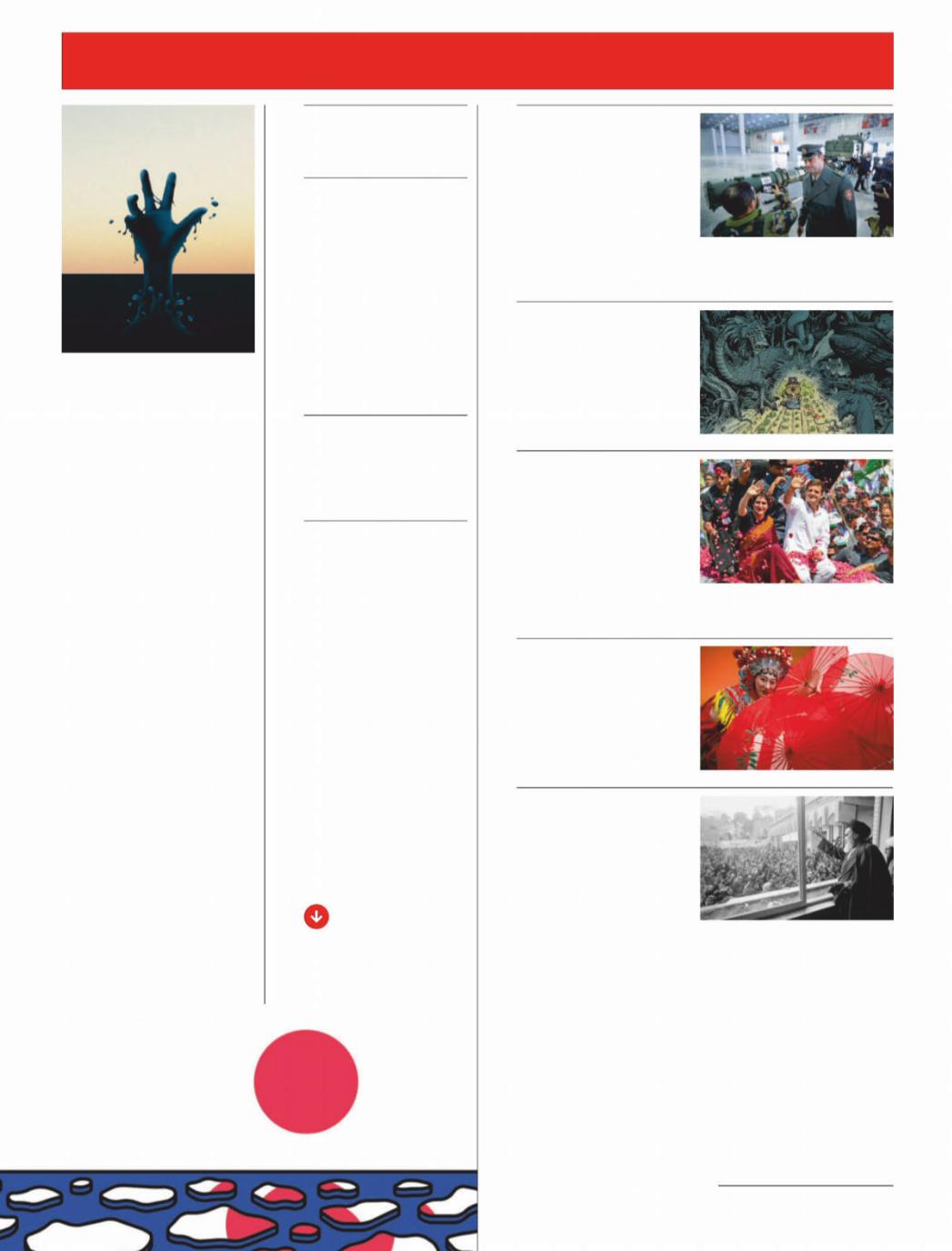
РЕЛИЗ ПОДГОТОВИЛА ГРУППА "What's News" VK.COM/WSNWS
vk.com/id446425943
Contents
|
|
|
|
The world this week |
|
|
|
|
6 |
A round-up of political |
|
|
|
|
|
and business news |
|
|
|
|
|
Leaders |
|
|
|
|
9 |
Energy and climate |
|
|
|
|
|
Crude awakening |
|
|
|
|
10 |
Germany’s economy |
|
|
|
|
|
Time to worry |
|
|
|
|
10 |
Arms control |
|
|
|
|
|
Death of a nuclear pact |
|
|
|
|
12 |
Iran’s revolution at 40 |
|
|
|
|
|
Dealing with the mullahs |
|
On the cover |
|
|
13 |
A new boss for the |
|
|
|
|
World Bank |
||
The oil industry is making a |
|
|
|||
|
|
A qualified pass |
|||
bet that could wreck the |
|
|
|
||
climate: leader, |
page 9 . |
|
Letters |
||
ExxonMobil, a fossil-fuel |
|
|
|||
|
14 |
On the Democratic |
|||
titan, gambles on growth: |
|
||||
|
|
Republic of Congo, |
|||
Briefing, page 16 |
. The Green |
|
|||
|
hygiene, Brexit, chicken, |
||||
New Deal pays little heed to |
|
|
|||
|
|
King Crimson, airlines |
|||
economic orthodoxy: Free |
|
|
|||
|
|
|
|||
exchange, page 67 |
|
|
|
Briefing |
|
• Is the German model broken? |
|
||||
16 |
ExxonMobil |
||||
An economic golden age could |
|
||||
|
|
Bigger oil, amid e orts to |
|||
be coming to an end: leader, |
|
|
|||
|
|
hold back climate change |
|||
page 10 . How Germany’s |
|
|
|||
|
|
|
|||
decentralisation can inoculate |
|
|
|
||
against political unrest: |
page 41 . |
||||
The long expansion, |
page 61 |
|
|
||
• Iran, 40 years after the revolution The Islamic theocracy has failed its people, but Donald Trump’s sanctions could prolong its life: leader, page 12 . Four decades after its revolution, Iran is still stuck in the past, page 36
•China’s embrace of intellectual property Believe it or not, Chinese firms are not all serial thieves of intellectual property: Schumpeter, page 58
•On the economics of species
Conservationists are rethinking how to preserve nature on a
changing planet—and within a |
Banyan The importance |
|
tight budget, page 68 |
to Shinzo Abe of four |
|
|
alluring islands occupied |
|
|
by Russia, |
page 32 |
The Economist February 9th 2019 3
United States
19After the INF treaty
20Missiles and mistrust
21Virginia and shoe polish
21Union shenanigans
22Botox bars
23Elizabeth Warren’s ideas
24Lexington Donald Trump and conservatism
The Americas
25Canada in the global jungle
26Jair Bolsonaro’s congressional win
28Bello The Venezuelan dinosaur
Asia
29India’s Congress party
30Avoiding military service in South Korea
31Turmoil in Thai politics
31Facial fashions in Pakistan
32Banyan Japan’s lost islands
China
33Cultural diplomacy
34Pets proliferate
35Chaguan Understanding Taiwan
Middle East & Africa
36Iran’s revolution turns 40
38Iran and its neighbours
39Bibi’s favourite word
39East African rifts
40Elections in Nigeria
1 Contents continues overleaf
http://new.guap.ru/i04/contacts
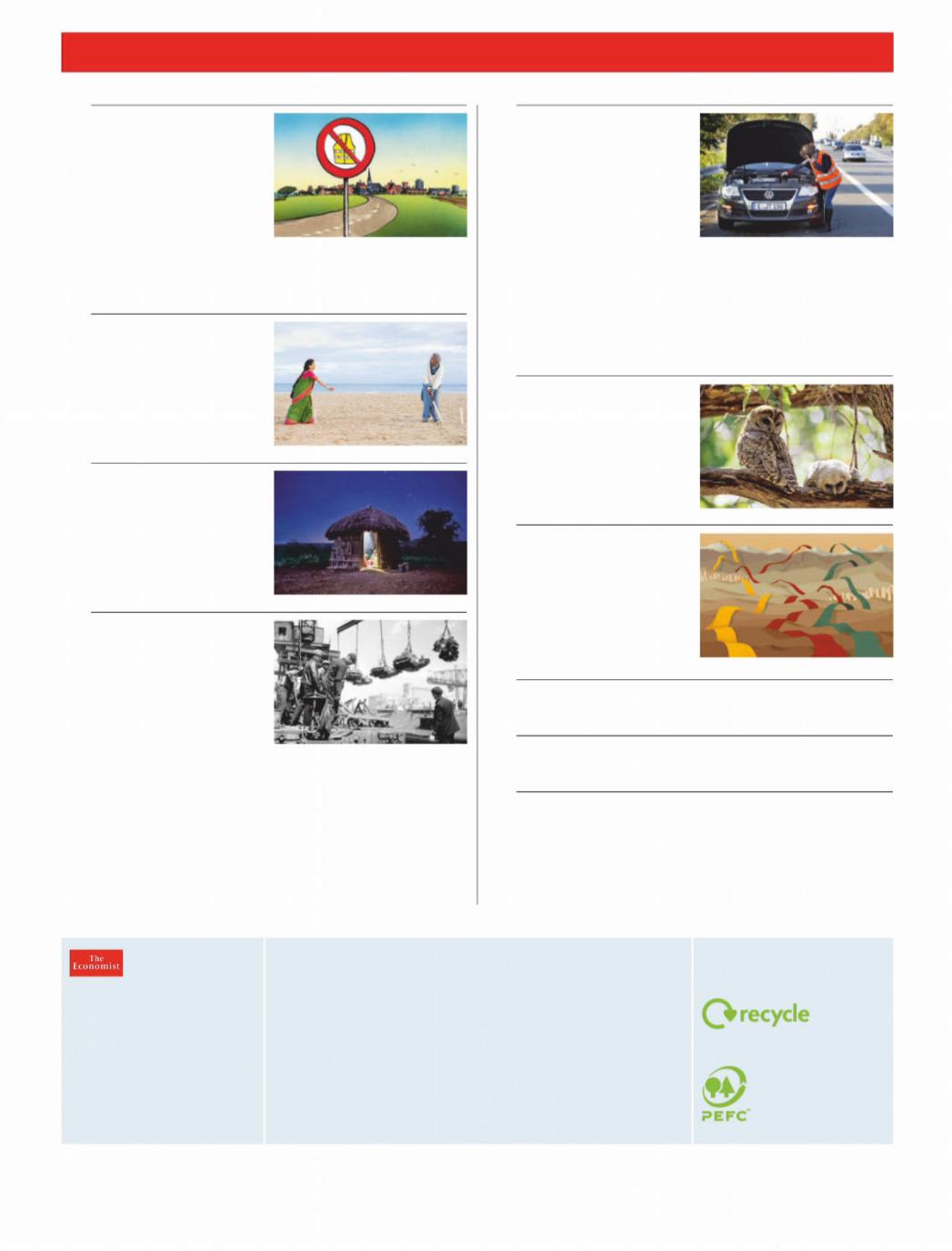
vk.com/id446425943
4Contents
Europe
41No gilets jaunes in Germany
42Macron’s great debate
43Phantom fake medicines
44Wish upon Five Stars
44A treadmill for Hungarian dogs
46Charlemagne Vestager’s progress
Britain
47Asians, the new Europeans
48Irish boom and bust
49Bagehot Learning from John Ruskin
International
50Electricity for the poor
51What light reveals
Business
53America’s manufacturing revival
54Intel’s new boss
55Bartleby McDonald’s and sustainability
56UNIQLO abroad
56Norwegian’s descent
57Food pricing in France
58Schumpeter China and intellectual property
Volume 430 Number 9129
Published since September 1843
to take part in “a severe contest between intelligence, which presses forward,
and an unworthy, timid ignorance obstructing our progress.”
Editorial offices in London and also:
Amsterdam, Beijing , Berlin, Brussels, Cairo,
Chicago, Johannesburg , Madrid, Mexico City,
Moscow, Mumbai, New Delhi, New York, Paris,
San Francisco, São Paulo, Seoul, Shanghai,
Singapore, Tokyo, Washington DC
РЕЛИЗ ПОДГОТОВИЛА ГРУППА "What's News" VK.COM/WSNWS
The Economist February 9th 2019
Finance & economics
61Deceleration in Germany
62The first 1MDB trial
63Optimistic pension plans
63Bill Gross retires
64Australia’s misbehaving banks
64A bitcoin banker dies
65Buttonwood Gauged against the machine
66Donald Trump’s tax cuts
67 Free exchange |
Brave new |
deal |
|
Science & technology
68 Ecology and economics
70Rewilding spreads
Books & arts
71Eurasia
72An innovative Chinese gallery
73Segregation in America
73A memoir of madness
74Women and the sea
Economic & financial indicators
76Statistics on 42 economies
Graphic detail
77Bitcoin’s price crash has not deterred miners
Obituary
78Lamia al-Gailani, guardian of Mesopotamian relics
Subscription service
For our full range of subscription offers, including digital only or print and digital combined, visit:
Economist.com/offers
You can also subscribe by mail, telephone or email:
North America
The Economist Subscription Center,
P.O. Box 46978, St. Louis, MO 63146-6978 Telephone: +1 800 456 6086
Email: customerhelp@economist.com
Latin America & Mexico
The Economist Subscription Center,
P.O. Box 46979, St. Louis, MO 63146-6979 Telephone: +1 636 449 5702
Email: customerhelp@economist.com
One-year print-only subscription (51 issues):
United States.................................... |
US $158.25 (plus tax) |
Canada................................................ |
CA $158.25 (plus tax) |
Latin America....................................... |
US $289 (plus tax) |
Please
PEFC certified
This copy of The Economist is printed on paper sourced from sustainably managed forests certified to PEFC
PEFC/29-31-58 www.pefc.org
© 2019 The Economist Newspaper Limited. All rights reserved. Neither this publication nor any part of it may be reproduced, stored in a retrieval system, or transmitted in any form or by any means, electronic, mechanical, photocopying, recording or otherwise, without the prior permission of The Economist Newspaper Limited. The Economist (ISSN 0013-0613) is published every week, except for a year-end double issue, by The Economist Newspaper Limited, 750 3rd
Avenue, 5th Floor, New York, N Y 10017. The Economist is a registered trademark of The Economist Newspaper Limited. Periodicals postage paid at New York,NY and additional mailing offices. Postmaster : Send address changes to The Economist, P.O. Box 46978, St. Louis , MO. 63146-6978, USA. Canada Post publications mail (Canadian distribution) sales agreement no. 40012331. Return undeliverable Canadian addresses to The Economist, PO Box 7258 STN A, Toronto,
ON M5W 1X9. GST R123236267. Printed by Quad/Graphics, Saratoga Springs, NY 12866
http://new.guap.ru/i04/contacts

РЕЛИЗ ПОДГОТОВИЛА ГРУППА "What's News" VK.COM/WSNWS
vk.com/id446425943
A banking experience you’ll actually enjoy. Surprising, right?
ĕĝĤěħĥĝ Ĭħ āęĨġĬęĤ čĦĝ āęĞȲī ġĦĮġĬġĦğ ĨĤęěĝī įġĬĠ ĨĝħĨĤĝ ĠĝĪĝ Ĭħ ĠĝĤĨ ıħĭ ĦħĬ īĝĤĤ ıħĭ đĬħĨ Ěı ę ĤħěęĬġħĦ Ĭħ ĠęĦĜĤĝ ıħĭĪ ĝĮĝĪıĜęı ĚęĦģġĦğ ĦĝĝĜī ħĪ ğħ ħĦĤġĦĝ Ĭħ ĤĝęĪĦ ĥħĪĝ Welcome to Banking Reimagined.®
čljĝĪĝĜ Ěı āęĨġĬęĤ čĦĝ Č ÿ ċĝĥĚĝĪ ĄĂćā āęĞȲī Ĝħ ĦħĬ ĨĪħĮġĜĝ ĬĠĝ īęĥĝ īĝĪĮġěĝī ęī ĚęĦģ ĚĪęĦěĠĝī ĚĭĬ ĠęĮĝ ÿĒċī ęĦĜ ęīīħěġęĬĝī įĠħ ěęĦ ĠĝĤĨ ıħĭ āęĞȲī ęĮęġĤęĚĤĝ ġĦ īĝĤĝěĬ ĤħěęĬġħĦī ąħ Ĭħ ĤħěęĬġħĦīěęĨġĬęĤħĦĝěħĥ ĞħĪ ĤħěęĬħĪ ĄħħĜ ęĦĜ ĚĝĮĝĪęğĝī ĨĪħĮġĜĝĜ Ěı ę ĬĠġĪĜ ĨęĪĬı ƣ! ( āęĨġĬęĤ čĦĝ
http://new.guap.ru/i04/contacts
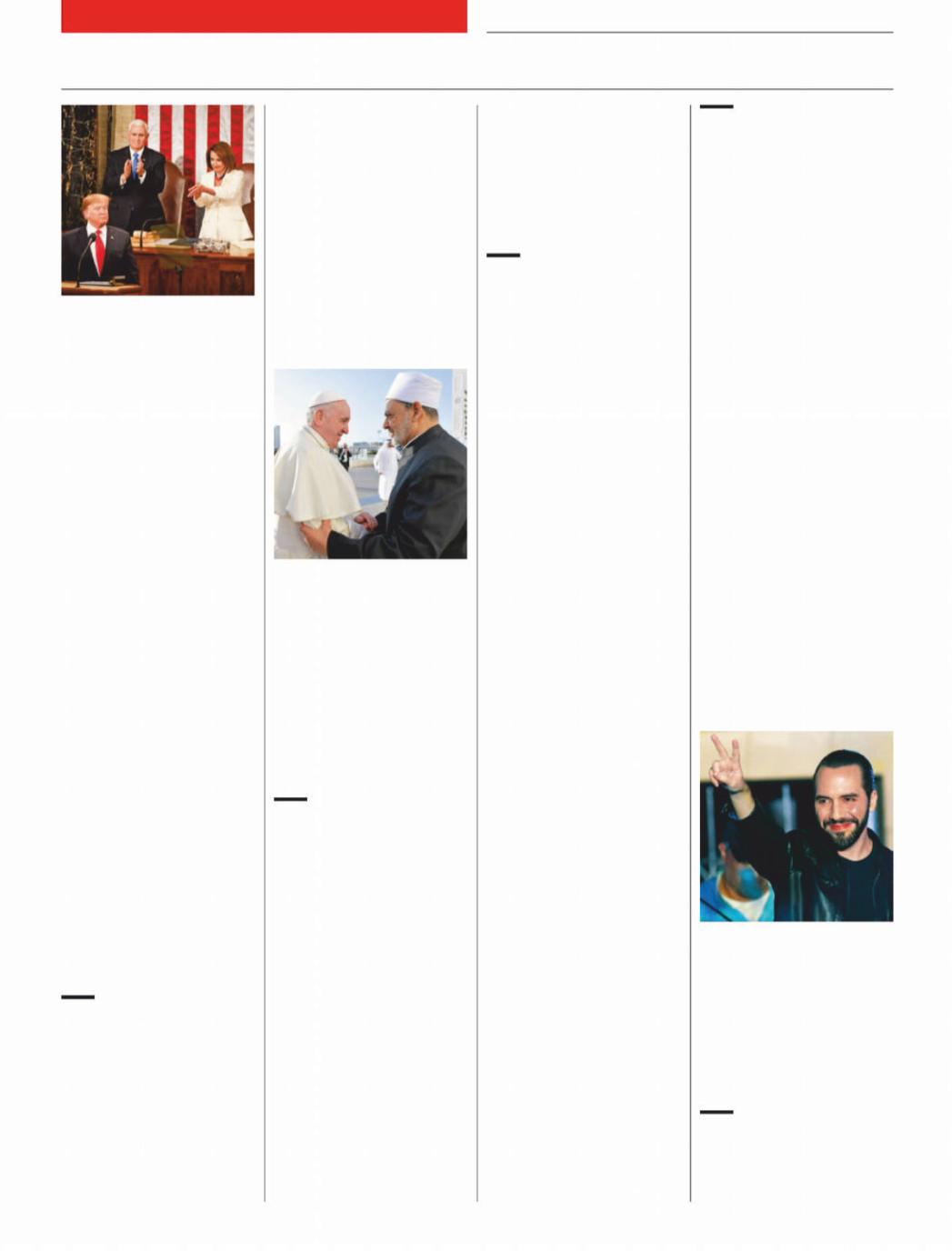
РЕЛИЗ ПОДГОТОВИЛА ГРУППА "What's News" VK.COM/WSNWS
vk.com/id446425943
6 The world this week
Donald Trump gave his state- of-the-union speech to Congress, delayed by a week because of wrangling over government spending. He again called for tougher curbs on illegal immigration, calling it a “moral duty”. He also said that any new trade deal with China “must include real, structural change to end unfair trade practices…and protect American jobs”. In a rare cordial moment, Mr Trump welcomed the record number of women in work, drawing whoops and cheers from Democratic congresswomen, who had dressed in white for the occasion.
Virginia’s state government seemed unable to find anyone to run the place who has not either applied boot polish to his face while at college or been accused of sexual assault. Ralph Northam, a Democrat who was initially unsure whether he was one of those depicted in a photo of a man in blackface and another in Ku Klux Klan robes, remains the state’s governor.
Cory Booker joined the race to become the Democrats’ presidential nominee in 2020. The first black senator to represent New Jersey, Mr Booker is the fourth heavy-hitter to enter the campaign.
Politics
For the ninth week, tens of thousands of protesters in Serbia called on Aleksandar Vucic to resign as president. He has o ered to hold elections, but the demonstrators want a fairer election law and more media time for the opposition.
Keeping up the jaw-jaw
Donald Trump confirmed that he would hold a second summit with Kim Jong Un,
North Korea’s dictator, in Vietnam in late February. Mr Kim has done little to fulfil his pledge at the pair’s last meeting in Singapore to give up his nuclear weapons.
Australia cancelled the residency permit of Huang Xiangmo, a property developer with ties to the Chinese government. Mr Huang has given generous donations to politicians who express pro-China views, as well as to Australia’s two biggest political parties.
Indian o cials resigned in protest at what they saw as the government’s attempts to suppress unflattering economic data. They say unemployment is at a 45-year high of 6.1%. The government says it is reviewing the data.
The Economist February 9th 2019
A leader, but with little power |
|
A dozen members of the |
eu , |
including Germany, France and |
|
Britain, recognised Juan |
|
Guaidó, the leader of |
|
Venezuela’s legislature, as the |
|
country’s interim president. |
|
They acted after Nicolás |
|
Maduro, who won a rigged |
|
election in May, failed to meet |
|
a deadline for calling a proper |
|
ballot. Most Latin American |
|
democracies back Mr Guaidó. |
|
(Venezuela’s constitution |
|
makes him interim president if |
|
the post is not legitimately |
|
filled.) Venezuela’s army |
|
moved to block the delivery of |
|
food aid, which might fill |
|
empty bellies but would also |
|
embarrass the regime. |
|
Brazil’s justice minister, pre- |
|
sented a plan to get tougher on |
|
criminals and go easier on |
|
cops. Police who kill in the line |
|
of duty may escape punish- |
|
ment if they acted out of “fear, |
|
surprise or violent emotion”. A |
|
judge convicted Brazil’s former |
|
president, Luiz Inácio Lula da |
|
Silva, who is already serving a |
|
12-year sentence for corrup- |
|
tion, on an additional corrup- |
|
tion charge and added a sen- |
|
tence of nearly13 years. |
|
The British government approved the extradition of Vijay Mallya to India , the next stage in a process that started in 2016 when the beer-and-travel
tycoon fled to Britain to escape criminal charges related to the collapse of Kingfisher Airlines. Known as the “King of Good Times” both for what he sells and for how he lives, Mr Mallya denies the charges.
A friend indeed
French warplanes bombed a convoy carrying rebels who had crossed into fromChad Libya. The air strikes in support of Chadian troops are a sign of the willingness of France to use force to prop up the government of Idriss Déby, one of its more important regional allies in the fight against jihadists.
|
|
A textbook on constitutional |
|
|
law written by Zhang Qianfan, |
The eu established a special- |
one of China’sleading legal |
|
purpose corporation to help it |
scholars, was removed from |
|
evade sanctions that America |
the country’s bookshops for |
|
has imposed for doing busi- |
promoting Western ideas such |
|
ness with |
Iran . The company,as the rule of law. A recent edict |
|
Instex, will co-ordinate barter |
requires universities to report |
|
exchanges to allow Iran to do |
any books on the topic to the |
|
business with companies from |
authorities. China’s constitu- |
|
European countries still partic- |
tion nods to freedom of speech |
|
ipating in the nuclear non- |
and religion, but in practice the |
|
proliferation deal, from which |
Communist Party’s wishes |
|
America withdrew last year. |
trump it. |
|
A bill was proposed in Hawaii |
|
|
to raise the legal |
smokingage |
|
to100. After that Hawaiians |
|
|
would be free to light up. |
1 |
|
http://new.guap.ru/i04/contacts

РЕЛИЗ ПОДГОТОВИЛА ГРУППА "What's News" VK.COM/WSNWS
vk.com/id446425943
jobs for veterans
Google Search |
I’m Feeling Lucky |
For free job training resources, visit google.com/grow/veterans
http://new.guap.ru/i04/contacts
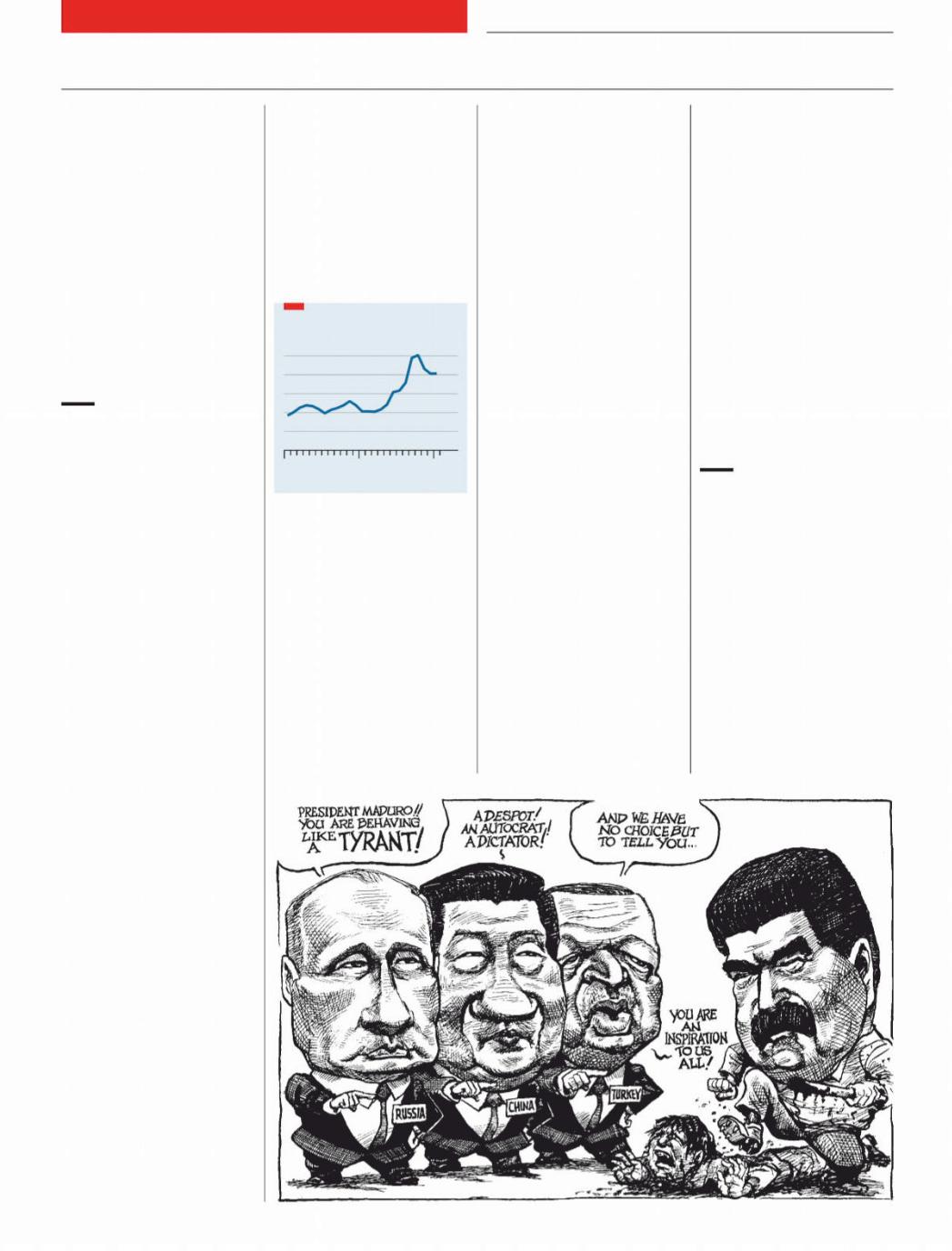
РЕЛИЗ ПОДГОТОВИЛА ГРУППА "What's News" VK.COM/WSNWS
vk.com/id446425943
8 The world this week |
Business |
The Economist February 9th 2019
Donald Trump nominated |
ture which will be overseen by |
India’s central bank cut its key |
|
|||||
David Malpass to become the |
Michael O’Leary, Ryanair’s |
interest rate by a quarter of a |
|
|||||
World Bank’s next president, a |
ebullient chief executive. |
|
percentage point, to 6.25%. It |
|
||||
job that is by tradition filled by |
|
|
|
was the first big policy decision |
|
|||
the American government. Mr |
Underlining the turbulence in |
taken under the new governor, |
|
|||||
Malpass currently heads inter- |
Europe’s discount-flight mar- |
Shaktikanta Das. Mr Das was |
|
|||||
national a airs at the Treasury. |
ket, Germania became the |
given the job after Urjit Patel |
|
|||||
A controversial choice, he has |
latest in a long list of low-cost |
quit amid a quarrel with the |
|
|||||
voiced concerns about the |
carriers to declare bankruptcy. |
government, which has been |
|
|||||
spreading power of multilater- |
The Berlin-based airline flew |
nagging the bank to do more to |
|
|||||
al and global institutions and |
4m passengers last year. |
|
boost the economy ahead of |
|
||||
of Chinese influence. He was |
|
|
|
this year’s election. |
|
|||
part of the negotiating team |
Turkey, consu |
ermp ri ces |
|
|
|
|
||
that agreed to a capital increase |
|
American employers created |
|
|||||
% increase on a year earlier |
|
|
||||||
in the World Bank in return for |
|
304,000 jobs in January, far |
|
|||||
|
|
25 |
|
|||||
restraint on sta wages and |
|
|
more than economists had |
|
||||
|
|
20 |
|
|||||
benefits. |
|
|
|
|
forecast and the100th consec- |
|
||
|
|
|
|
15 |
|
|||
|
|
|
|
|
utive month of job growth. |
|
||
Off the rails |
|
|
|
|
10 |
Average hourly wages in- |
|
|
|
|
|
|
5 |
creased by 3.2% during the |
|
||
Europe’s competition commis- |
|
|
0 |
12-months ending in January. |
|
|||
sioner blocked the merger of |
2017 |
18 |
19 |
|
|
|
||
Alstom with the rail oper- |
Following bumper annual |
|
||||||
|
|
|
|
|||||
ations of |
Siemens |
, reasoningSource: Datastream from Refinitiv |
|
earnings from Chevron, |
|
|||
that the combination of the |
Turkey’s inflation rate crept up |
ExxonMobil and Shell, |
bp |
|||||
French and German companies |
to 20.4% in January. Floods in |
more than doubled its headline |
|
|||||
would lead to higher prices in |
Antalya province, the centre of |
profit in 2018, to $12.7bn, the |
|
|||||
the markets for signalling |
Turkey’s greenhouse produc- |
most since the downturn in oil |
|
|||||
systems and high-speed trains. |
tion of vegetables and fruits, |
prices that began in 2014. |
|
|||||
Supporters of the deal, such as |
helped push food inflation up |
|
|
|
||||
Bruno Le Maire, the French |
to 31%, the highest reading |
Despite a widely panned rede- |
|
|||||
finance minister, said it was a |
since 2004 and up from 25% in |
sign of its app, Snap, the parent |
|
|||||
mistake because such mega- |
December. Although it is under |
company of |
Snapchat, |
|
||||
mergers are vital to take on the |
political pressure to reduce |
increased revenues by 36% in |
|
|||||
might of Chinese companies. |
interest rates, the central bank |
the last three months of 2018 |
|
|||||
However, in some markets a |
recently committed itself to |
compared with the same quar- |
|
|||||
combined Alstom-Siemens |
maintain its tight monetary |
ter a year earlier. Having never |
|
|||||
would have been three times |
stance until price pressures |
reported a profit since going |
|
|||||
bigger than its largest rival. |
weaken. Happily, it also fore- |
public in 2017, investors took |
|
|||||
Nissan’s reversal of a promise |
cast that inflation will fall by |
comfort in the halving of its |
|
|||||
the end of the year. |
|
loss for the quarter, to $192m. |
|
|||||
to build the X-Trail |
at itssuv |
|
|
|
|
|
|
|
factory in Sunderland, a city in |
|
|
|
|
|
|
||
the north of England, was |
|
|
|
|
|
|
||
blamed by Remainers on Brit- |
|
|
|
|
|
|
||
ain’s commitment to leave the |
|
|
|
|
|
|
||
European Union. The carmaker |
|
|
|
|
|
|
||
said that Brexit was a concern. |
|
|
|
|
|
|
||
But its decision was also driven |
|
|
|
|
|
|
||
by the collapse in demand for |
|
|
|
|
|
|
||
diesel and the lower costs of |
|
|
|
|
|
|
||
making the vehicle in Japan. |
|
|
|
|
|
|
||
Ryanair reported its first quar- |
|
|
|
|
|
|
||
terly loss since 2014. Europe’s |
|
|
|
|
|
|
||
biggest low-cost airline said |
|
|
|
|
|
|
||
that although passenger num- |
|
|
|
|
|
|
||
bers had grown, the average |
|
|
|
|
|
|
||
fare it was able to charge had |
|
|
|
|
|
|
||
fallen to less than €30 ($34) |
|
|
|
|
|
|
||
because of |
excess short-haul |
|
|
|
|
|
|
|
capacity in Europe. In a nod to shareholder discontent, the airline is replacing its chairman, who has been in the job for over 20 years. It is also moving to set up a group struc-
Sony’s share price tumbled after it reported a big drop in quarterly profit for its gaming division. Rumours that the Japanese electronics giant might release PlayStation 5 next year, its first update to the gaming console in six years, did little to lift its stock.
Internet companies are removing 72% of content flagged as racist or xenophobic in Europe within 24 hours. That is up from 28% in 2016, when Facebook, Microsoft, Twitter and YouTube presented a voluntary code of conduct on hate speech, which in e ect stopped the fromeu imposing its own restrictions.
Gross mistakes
Bill Gross announced his retirement from the investment industry. One of the founders of Pimco, Mr Gross was once known as the Bond King for managing the world’s largest bond fund, which had almost $300bn in assets at its peak. He left Pimco in 2014 after falling out with the firm and has struggled to repeat his success. His current fund manages only $1bn in assets. Summing up the industry in 2010, Mr Gross said “My clients don’t pay me to feel sorry, they pay me to bring them money.”
http://new.guap.ru/i04/contacts

РЕЛИЗ ПОДГОТОВИЛА ГРУППА "What's News" VK.COM/WSNWS
vk.com/id446425943
Leaders
Leaders 9
Crude awakening
ExxonMobil and the oil industry are making a bet that could end up wrecking the climate
n america the, world’s largest economy and its second big- |
therefore be evil. They are responding to incentives set by soci- |
Igest polluter, climate change is becoming hard to ignore. Ex- |
ety. The financial returns from oil are higher than those from re- |
treme weather has grown more frequent. In November wildfires |
newables. For now, worldwide demand for oil is growing by1-2% |
scorched California; last week Chicago was colder than parts of |
a year, similar to the average over the past five decades—and the |
Mars. Scientists are sounding the alarm more urgently and peo- |
typical major derives a minority of its stockmarket value from |
ple have noticed—73% of Americans polled by Yale University |
profits it will make after 2030. However much the majors are vil- |
late last year said that climate change is real. The left of the |
ified by climate warriors, many of whom drive cars and take |
Democratic Party wants to put a “Green New Deal” at the heart of |
planes, it is not just legal for them to maximise profits, it is also a |
the election in 2020. As expectations shift, the private sector is |
requirement that shareholders can enforce. |
showing signs of adapting. Last year around 20 coal mines shut. |
Some hope that the oil companies will gradually head in a |
Fund managers are prodding firms to become greener. Warren |
new direction, but that looks optimistic. It would be rash to rely |
Bu ett, no sucker for fads, is staking $30bn on clean energy and |
on brilliant innovations to save the day. Global investment in re- |
Elon Musk plans to fill America’s highways with electric cars. |
newables, at $300bn a year, is dwarfed by what is being commit- |
Yet amid the clamour is a single, jarring truth. Demand for oil |
ted to fossil fuels. Even in the car industry, where scores of elec- |
is rising and the energy industry, in America and globally, is |
tric models are being launched, around 85% of vehicles are still |
planning multi-trillion-dollar investments to satisfy it. No firm |
expected to use internal-combustion engines in 2030. |
embodies this strategy better than ExxonMobil, the giant that ri- |
So, too, the boom in ethical investing. Funds with $32trn of |
vals admire and green activists love to hate. As our briefing ex- |
assets have joined to put pressure on the world’s biggest emit- |
plains, it plans to pump 25% more oil and gas in 2025 than in |
ters. Fund managers, facing a collapse in their traditional busi- |
2017. If the rest of the industry pursues even modest growth, the ness, are glad to sell green products which, helpfully, come with
consequence for the climate could be disastrous. |
higher fees. But few big investment groups have dumped the |
|
ExxonMobil shows that the market cannot solve climate |
shares of big energy firms. Despite much publicity, oil compa- |
|
change by itself. Muscular government action is needed. Con- |
nies’ recent commitments to green investors remain modest. |
|
trary to the fears of many Republicans (and |
And do not expect much from the courts. |
|
hopes of some Democrats), that need not in- |
Lawyers are bringing waves of actions accusing |
|
volve a bloated role for the state. |
oil firms of everything from misleading the pub- |
|
For much of the 20th century, the five oil ma- |
lic to being liable for rising sea levels. Some |
|
jors—Chevron, ExxonMobil, Royal Dutch Shell, |
think oil firms will su er the same fate as tobac- |
|
bp and Total—had more clout than some small |
co firms, which faced huge settlements in the |
|
countries. Although the majors’ power has |
1990s. They forget that big tobacco is still in |
|
waned, they still account for 10% of global oil |
business. In June a federal judge in California |
|
and gas output and 16% of upstream invest- |
ruled that climate change was a matter for Con- |
|
ment. They set the tone for smaller, privately owned energy |
gress and diplomacy, not judges. |
|
firms (which control another quarter of investment). And mil- |
The next15 years will be critical for climate change. If innova- |
|
lions of pensioners and other savers rely on their profits. Of the |
tors, investors, the courts and corporate self-interest cannot |
|
20 firms paying the biggest dividends in Europe and America, |
curb fossil fuels, then the burden must fall on the political sys- |
|
four are majors. |
|
tem. In 2017 America said it would withdraw from the Paris |
In 2000 bppromised to go “beyond petroleum” and, on the |
agreement and the Trump administration has tried to resurrect |
|
face of it, the majors have indeed changed. All say that they sup- |
the coal industry. Even so, climate could yet enter the political |
|
port the Paris agreement to limit climate change and all are in- |
mainstream and win cross-party appeal. Polls suggest that mod- |
|
vesting in renewables such as solar. Shell recently said that it |
erate and younger Republicans care. A recent pledge by dozens of |
|
would curb emissions from its products. Yet ultimately you |
prominent economists spanned the partisan divide. |
|
should judge companies by what they do, not what they say. |
The key will be to show centrist voters that cutting emissions |
|
According to ExxonMobil, global oil and gas demand will rise |
is practical and will not leave them much worse o . Although the |
|
by 13% by 2030. All of the majors, not just ExxonMobil, are ex- |
Democrats’ emerging Green New Deal raises awareness, it al- |
|
pected to expand their output. Far from mothballing all their |
most certainly fails this test as it is based on a massive expansion |
|
gasfields and gushers, the industry is investing in upstream pro- |
of government spending and central planning (see Free ex- |
|
jects from Texan shale to high-tech deep-water wells. Oil compa- |
change). The best policy, in America and beyond, is to tax carbon |
|
nies, directly and through trade groups, lobby against measures |
emissions, which ExxonMobil backs. The gilets jaunes in France |
|
that would limit emissions. The trouble is that, according to an |
show how hard that will be. Work will be needed on designing |
|
assessment by the |
ipcc , an intergovernmental climate-sciencepolicies that can command popular support by giving the cash |
|
body, oil and gas production needs to fall by about 20% by 2030 |
raised back to the public in the form of o setting tax cuts. The |
|
and by about 55% by 2050, in order to stop the Earth’s tempera- |
fossil-fuel industry would get smaller, government would not |
|
ture rising by more than1.5°C above its pre-industrial level. |
get bigger and businesses would be free to adapt as they see fit— |
|
It would be wrong to conclude that the energy firms must |
including, even, ExxonMobil. 7 |
|
http://new.guap.ru/i04/contacts

vk.com/id446425943 |
РЕЛИЗ ПОДГОТОВИЛА ГРУППА "What's News" VK.COM/WSNWS |
|
|
10 Leaders |
The Economist February 9th 2019 |
|
Germany ’s economy |
|
Time to worry |
|
An economic golden age in Germany could be coming to an end |
The world is used to a thriving German economy. A decade ago, during the financial crisis, it shed relatively few jobs, as unemployment soared elsewhere. Since then it has been an anchor of fiscal stability while much of the euro zone has struggled with debt and deficits. Its public debt is below the target of 60% of gdp set by eu treaties—and falling. Thanks to labour-market reforms introduced during the 2000s, Germans enjoy levels of employment that beat job-friendly Britain, even as inequality is barely higher than in France. Its geographically dispersed manufacturing industries, made up of about 200,000 small and medi- um-sized firms, have mitigated the regional disparities that have
fuelled populism across the West (see Europe section).
Yet the German economy suddenly looks vulnerable. In the short term it faces a slowdown. It only narrowly
avoided a recession at the end of 2018. Temporary factors, such as tighter emissions standards for cars, explain some of the weakness, but there is little sign of a bounceback. Manufacturing output probably fell in January. Businesses are
losing confidence. Both the imf and the finance 2015 16 ministry have slashed growth forecasts for 2019
(see Finance section). In the longer term, chang-
ing patterns of trade and technology are moving against Germany’s world-beating manufacturers. In response, on February 15th Peter Altmaier, the economy minister, laid out plans to block unwanted foreign takeovers and to promote national and European champions.
Germany is getting both the short and the long term wrong. Start with the business cycle. Many policymakers think the economy is close to overheating, pointing to accelerating wages and forecasts of higher inflation. In their view, slower growth was expected, necessary even. That is complacent. Even before the slowdown, the imf predicted that in 2023 core inflation will be only 2.5%—hardly a sign of runaway prices. In any case, higher German inflation would be welcome, as a way to resolve im-
balances in competitiveness within the euro zone that would elsewhere adjust through exchange rates. The risk is not of overheating but of Europe slipping into a low-growth trap as countries that need to gain competitiveness face an inflation ceiling set too low by Germany.
The slowdown also portends deeper problems for Germany’s globalised economic model. Weakness in part reflects the fallout from the trade war between China and America, two of Germany’s biggest trading partners. Both are increasingly keen on bringing supply chains home. America is due soon to decide whether to raise tari s on European cars. Trade is already becoming more regionalised as uncertainty grows. If global commerce splits into separate trading and regulatory blocs, Germany
will find it harder to sell its goods to customers around the world.
Reform has made Germany’s labour market strong, but it will soon face new challenges. Industrial jobs look particularly vulnerable to
*0
automation, yet lifelong learning and retraining are relatively rare in Germany. The workforce is ageing. Neither the government nor business is much digitised and neither invests
enough. If technological change demands that its economy embraces digital services, Germany will struggle.
The government is not blind to these problems, but Mr Altmaier’s protectionism is the wrong medicine. The left, meanwhile, wants to roll back labour-market reforms. Better to expand a recent boost to infrastructure spending and press ahead, at scale, with tax incentives for private investment. Both should help growth today and boost the economy’s long-term prospects. Significantly lower taxes on households would encourage a rebalancing away from exports and towards consumption. A dose of competition could invigorate coddled service industries. The German economy has had an impressive run, but cracks are appearing. It is time to worry. 7
Arms control
Death of a nuclear pact
|
Russian cheating killed the |
treaty.infAmerica’s response should be measured |
|||
hen it turned 30 in 2017, |
the Intermediate-Range Nucance- |
and jeopardise what is left of global arms control. |
|||
Wlear Forces ( |
inf ) treaty was ailing. Russia had proposedUnder the treaty, America and the Soviet Union scrapped all |
||||
ripping up the pact in 2005. When it was rebu ed it tested an ille- |
ground-based missiles with ranges of between 500 and 5,500km |
||||
gal cruise missile, the 9m 729. A few years later the Obama admin- |
(310-3,400 miles), weapons that could quickly reach targets deep |
||||
istration called out Russian cheating. In December 2018 Ameri- |
into enemy territory. The intention was to remove missiles that |
||||
ca’s nato allies belatedly backed America. So, when Russia failed |
strike so quickly that leaders might be panicked into rash nuc- |
||||
to meet a deadline to destroy the missile this month, America |
lear escalation. |
||||
pulled out of the treaty and Russia soon followed. The only pact |
The temptation is to blame America for the treaty’s demise. It |
||||
to ban an entire class of nuclear weapons will thus expire in Au- |
might have worked harder to win inspections of the 9m 729, per- |
||||
gust. The task for America and |
is to meetnatothe Russian chal- |
haps in return for allowing Russia to look at what it says is a sus- |
|||
lenge without triggering an arms race that would split the alli- |
pect American missile-defence launcher in Romania. It should1 |
||||
http://new.guap.ru/i04/contacts

РЕЛИЗ ПОДГОТОВИЛА ГРУППА "What's News" VK.COM/WSNWS
vk.com/id446425943
TECHNOLOGY BANKING
•GLOBAL TREASURY MANAGEMENT
•PAYMENTS
•FOREIGN EXCHANGE
•CREDIT AND TRADE
•INVESTMENT BANKING*
•WELLS FARGO STARTUP ACCELERATOR
* INVESTMENT PRODUCTS:
A better perspective can help you build a better future for your company.
Our experience in areas such as financing, treasury management, M&A, and more runs deep through the tech community. So whether you’re expanding or launching in a new market, Wells Fargo has the financial and intellectual capital to help you build toward your next step. We’ll help you build the future.
wellsfargo.com/techbanking
Not Insured by FDIC or any Federal Government Agency May Lose Value Not a Deposit or Guaranteed by a Bank of Any Bank Affiliate
© 2018 Wells Fargo Bank, N.A. All rights reserved. Deposit products offered by Wells Fargo Bank, N.A. Member FDIC. Deposits held in non-U.S. branches are not FDIC insured.
*Wells Fargo Securities is the trade name for the capital markets and investment banking services of Wells Fargo & Company and its subsidiaries, including but not limited to Wells Fargo Securities, LLC, a member of NYSE, FINRA, NFA and SIPC, Wells Fargo Prime Services, LLC, a member of FINRA, NFA and SIPC, and Wells Fargo Bank, N.A. Wells Fargo Securities, LLC and Wells Fargo Prime Services, LLC are distinct entities from affiliated banks and thrifts.
http://new.guap.ru/i04/contacts

РЕЛИЗ ПОДГОТОВИЛА ГРУППА "What's News" VK.COM/WSNWS
vk.com/id446425943
12 Leaders |
|
|
|
The Economist February 9th 2019 |
2 have done more to bring allies along—who, in turn, ought to |
ons. Missiles could be put on Guam, where lush forests provide |
|||
have protested about Russian behaviour earlier. Yet there should |
useful cover. But the island is so far from China that it would re- |
|||
be no confusion: Russia, not America, set the pact ablaze. Even |
quire America to make a new type of missile. Congress may not |
|||
strenuous diplomacy may not have put out the flames. |
indulge this; America is already due to spend some $1.7trn in real |
|||
What to do next? A realistic starting-point is to acknowledge |
terms on its nuclear arsenal over the next 30 years. |
|||
that conventional (not nuclear) missiles will play a central role |
China is unlikely to agree to limits. But its competition with |
|||
in future wars. This is why countries like China, India and Israel |
America is over conventional rather than nuclear missiles, so the |
|||
have piled up |
inf -range missiles as America and Russia risksdeare lower. Even in Europe, America should avoid seeking to |
|||
stroyed theirs. It is also why Russia furtively built new ones. |
match Russia missile for missile. Instead it should work closely |
|||
Russia has reportedly deployed four battalions of the 9 |
with its alliesmto729assess how far existing weapons can redress the |
|||
(nearly 100 missiles) that allow it to strike targets across Europe |
military balance, and the impact of any new missiles. America |
|||
quickly and precisely—including nato’s nuclear weapons. Such |
and Russia should discuss how to limit new deployments. Vladi- |
|||
land-based mid-range missiles have advantages over those |
mir Putin has reasons to hold back. Despite his boasts of super- |
|||
launched from the air and sea, which were allowed under the inf |
weapons, Russia’s defence budget is falling and an influx of new |
|||
treaty. Mobile ground-launchers are cheaper than a warship or |
American missiles would stretch it even more. |
|||
warplane, can be hidden more easily and have no other missions |
Most worrying, the death of the inf treaty threatens New |
|||
to distract them. America’s army is right to explore whether they |
start , a pact which governs American and Russian long-range |
|||
o er an e ective way to strike key military targets, including |
“strategic” nuclear weapons. The problem is threefold. First, the |
|||
those deep behind enemy lines. |
Trump administration holds arms control in contempt. Second, |
|||
But inf -type missiles come with problems, too. Their limited |
Russia has poisoned the well of trust by playing fast and loose |
|||
range means that they must be parked on allied soil, rather than |
with the |
inftreaty. And third, an accumulation of long-legged |
||
in America. nato, to its credit, has resoundingly backed America |
intermediate-range missiles might devalue the limits on strate- |
|||
so far, but it may be less unified about new weapons. If America |
gic ones. If New |
startis allowed to expire in 2021, there will be |
||
cuts a bilateral deal with an enthusiastic volunteer, such as Po- |
no constraint on the nuclear forces of America and Russia for the |
|||
land, it would be divisive and destabilising. Suitable sites are |
first time in almost 50 years. It is almost certainly too late to save |
|||
even scarcer in Asia. Japan and South Korea would be wary of the |
the inftreaty. But its collapse must not mean a return to the fren- |
|||
political backlash from China were they to host American weap- |
zied arms race of the cold war. 7 |
|||
The Iranian revolution at 40
How to deal with the mullahs
The Islamic revolution has failed, but Donald Trump’s sanctions could prolong it
The cry of “Death to America!” has rung out in Tehran every Friday since the Islamic revolution of 1979. But the ritual is hollow. The mullahs know they have failed their people. Iranians are much poorer than they should be; promises of justice have been drowned in the blood of enemies and supposed sinners; and theocracy has made Iranians less pious. Protests occur often, even among the poor who make up the regime’s base (see
Middle East & Africa section).
Yet the mullahs remain in charge, despite war, sanctions and decades of enmity with America—or perhaps because of them. To the alarm of Israel and many Arab states, Iran has spread its influence, helping save the odious regime of Bashar al-Assad in Syria, and ensuring that the Saudis remain bogged down in Yemen. Its Lebanese client, Hizbullah, poses a grave threat to Israel. In Europe Iranian spooks are accused of plotting to kill dissidents.
For President Donald Trump, Iran is a unique menace. He has abandoned Barack Obama’s nuclear deal in favour of tight sanctions. His o cials will try to forge an anti-Iran alliance at a conference in Poland on February 13th-14th. In seeking “maximum pressure”, America may hope to stir another uprising to reverse the one of1979. But it will probably make things worse.
The mullahs have a woeful record. Their theocracy helped turn Islam into a tool of radical, and often violent, politics. But
Iran’s was not the Middle East’s only convulsion in 1979. The siege of the grand mosque in Mecca stung Saudi Arabia into promoting its rival Sunni brand of ultra-puritanism at home and abroad. Together with America, the Saudis helped weaponise Sunnism by supporting mujahideen fighters against the Soviet invasion of Afghanistan. Arabs who volunteered to fight with them became the godfathers of jihadism. America, pledging to protect Gulf oil against outsiders, was drawn deep into the re-
gion’s conflicts.
America has rarely been able to think clearly about Iran; not least because the regime’s followers held 52 of its citizens hostage for 444 days after seizing the American embassy in Tehran in 1979. But if Iran has recently extended its power it is in large part because of the mess caused by America’s invasion of Iraq in 2003.
Iran is confusing and infuriating to deal with. Power is shared ambiguously between a weak president, who is elected from a field of loyalists and deals with day-to-day problems, and a nebulous revolutionary caste that controls the instruments of coercion. Sometimes Iran has proved pragmatic, for instance acquiescing in America’s overthrow of the Taliban in Afghanistan. Yet, under the supreme leader, Ali Khamenei, ideology often trumps rational policymaking. Neither confrontation nor diplomacy can reliably sway the mullahs. And neither economic carrots nor sanctions seem to work as an alternative. 1
http://new.guap.ru/i04/contacts
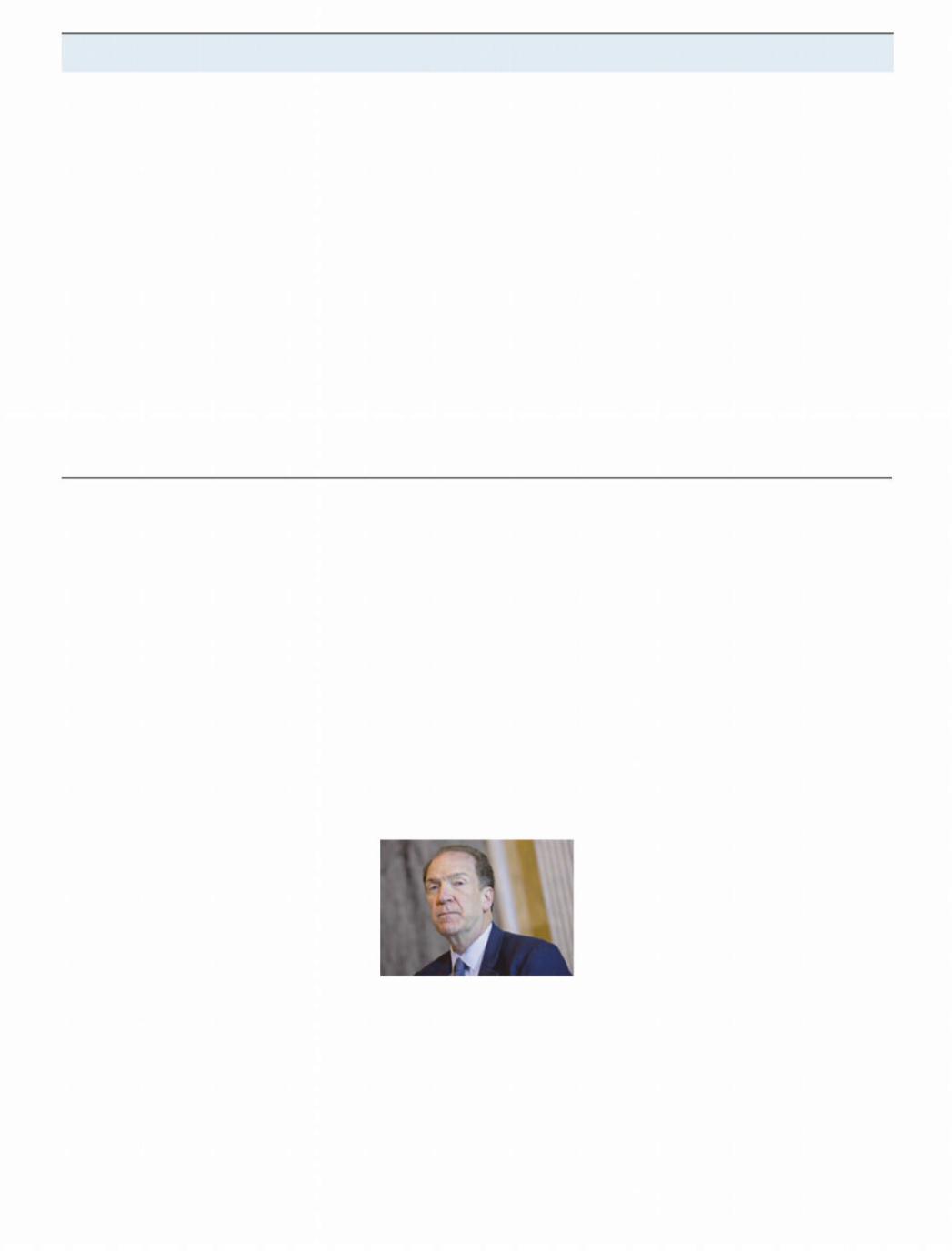
vk.com/id446425943 |
РЕЛИЗ ПОДГОТОВИЛА ГРУППА "What's News" VK.COM/WSNWS |
|
|
The Economist February 9th 2019 |
Leaders 13 |
2That said, Mr Obama’s accord, the jcpoa , succeeded in freezbomb and the dangers of a bombing campaign to stop it.
ing Iran’s nuclear programme in exchange for the lifting of many |
America’s apparent e orts to bring down the regime are un- |
|
sanctions. Mr Trump thinks this was a terrible deal that failed to |
appealing to most Iranians, given the bloody chaos they see all |
|
halt the nukes for good or stop Iran from stirring trouble around |
around. The mullahs are still willing to shoot opponents; few or- |
|
the region. Renewed sanctions are pushing Iran into a deep eco- |
dinary Iranians are yet ready to die trying to overthrow them. The |
|
nomic crisis. But re-imposing them when Iran was abiding by |
best hope for change in Iran may come with the death of Ayatol- |
|
the jcpoa casts America as the rogue. This has deepened the split |
lah Khamenei, who is 79 and in poor health. |
|
with European allies, which have created a system to help firms |
To nudge Iran towards normality, America needs to mix firm- |
|
sidestep them. America has bound itself more tightly to auto- |
ness with pragmatism, rather as it did in the cold war with the So- |
|
cratic Arab regimes, such as Saudi Arabia, that have themselves |
viet Union. This means containing Iran until its people grow |
|
fomented instability and radicalism. What “moral clarity” can |
weary of their rulers, and negotiating partial deals that limit the |
|
America claim in denouncing Iran’s human-rights abuses when |
risk of outright conflict. America should seek unity with its own |
|
it turns a blind eye to those committed by its friends? |
democratic allies and attempt to isolate Iran’s revolutionaries |
|
Above all, indiscriminate sanctions are likely to strengthen |
from their subjects. It should aim sanctions at hardliners rather |
|
Iran’s hardliners. American pressure gives them excuses for bad |
than the country as a whole. It should do more to expose the re- |
|
behaviour; adventurism abroad becomes self-defence; oligar- |
gime’s brutality and corruption, counter its propaganda and in- |
|
chic control of the economy is portrayed as a means to bust sanc- |
crease contacts with Iranian citizens—giving them more visas to |
|
tions; and critics are dismissed as puppets of the Great Satan. If |
visit America, not fewer. And it should o er to talk to Ayatollah |
|
Iran casts o the |
jcpoa ’s nuclear constraints, America and IsraelKhamenei. To him, America’s outstretched hand may be more |
|
will have to choose between the risk of Iran building a nuclear |
terrifying than its fist. 7 |
|
A new boss for the World Bank
A qualified pass
David Malpass is America’s candidate to lead the World Bank. He should get the job |
|
|
t has long been obvious that the boss of the World Bank |
served in three administrations and speaks four languages. He |
|
Ishould be chosen on merit, not by nationality. When President |
helped forge an unlikely agreement passed in April last year to |
|
Harry Truman picked its first head in 1946, India was still a colo- |
increase the bank’s lending capacity. The reforms he has been |
|
ny and the People’s Republic of China did not exist. America pro- |
urging on the bank during his time at America’s Treasury are |
|
vided most of the institution’s capital and it was felt that its cred- |
mostly unobjectionable and reassuringly unoriginal (more tran- |
|
itors on Wall Street needed the reassurance of an American at the |
sparency, better measurement of results). America’s allies can be |
|
helm. Today China is the second-biggest economy and America |
relieved that Mr Trump’s administration cares enough about the |
|
provides less than 17% of the bank’s capital. But America still |
World Bank to pick one of its few remaining grown-ups to lead it. |
|
picks the bank’s president as part of a deal with European gov- |
The bank’s shareholders must also know that, if they were to |
|
ernments who choose the head of the imf . |
reject Mr Malpass, Mr Trump could turn violently against the in- |
|
True to this anachronistic tradition, President Donald Trump |
stitution. That would scupper the chances of America’s Congress |
|
this week named David Malpass, a senior o cial at America’s |
ratifying the agreed capital increase. It would also jeopardise fu- |
|
Treasury, to fill the vacancy created by Jim Yong |
ture American contributions to the World |
|
Kim’s early departure on February 1st. Uncom- |
Bank’s fund for helping the neediest countries. |
|
fortably, Mr Malpass has been a vocal critic of |
What of Mr Malpass’s hostility to China? He |
|
multilateral institutions such as the World |
is right to fret about elements of its |
bri , whi |
Bank, imf and World Trade Organisation, which |
a mix of chequebook diplomacy, white elephan- |
|
he believes have tied America’s hands. Nonethe- |
titis, export promotion and mutually beneficial |
|
less, despite his views and his passport, it would |
investment. But that is no reason for the bank to |
|
be a mistake to oppose him. |
steer clear of it altogether. In so far as China’s |
|
Accepting him will not be easy for the bank’s |
global initiatives are furthering the bank’s goal |
|
sta or for its other shareholders (who in principle could veto |
of eradicating poverty, the bank should o er whatever guidance |
|
the appointment). Mr Malpass does not hide his misgivings |
and assistance it can. The bank’s shareholders will have to im- |
|
about the institution he aspires to lead. To him, it is part of a |
press on Mr Malpass that the institution cannot abet American |
|
sprawl of international organisations, vulnerable to mission |
attempts to contain China’s economic rise. |
|
creep, which pamper their sta and put their own growth above |
Ultimately, the World Bank’s own bureaucratic habits will |
|
the countries they serve. He believes the bank has also become |
probably entangle Mr Malpass. Truman’s pick to lead the World |
|
too close to China, especially the country’s Belt and Road Initia- |
Bank resigned after just six months, frustrated by rival voices in |
|
tive ( bri ), which aims to build infrastructure and other linksthe organisation. “I could stay and fight these bastards…but I’m |
||
around the world (and in space). The bank, Mr Malpass fears, |
too old for that,” he complained. Institutional inertia remains a |
|
could be viewed as endorsing China’s geopolitical ambitions. |
powerful force in a sprawling international body. Mr Malpass is |
|
Nonetheless, the choice could be worse. Mr Malpass is one of |
right about that. Inertia, after all, is the chief reason why Ameri- |
|
the best-qualified members of Mr Trump’s government. He has |
ca’s president still gets to pick people like him to run one. 7 |
|
http://new.guap.ru/i04/contacts
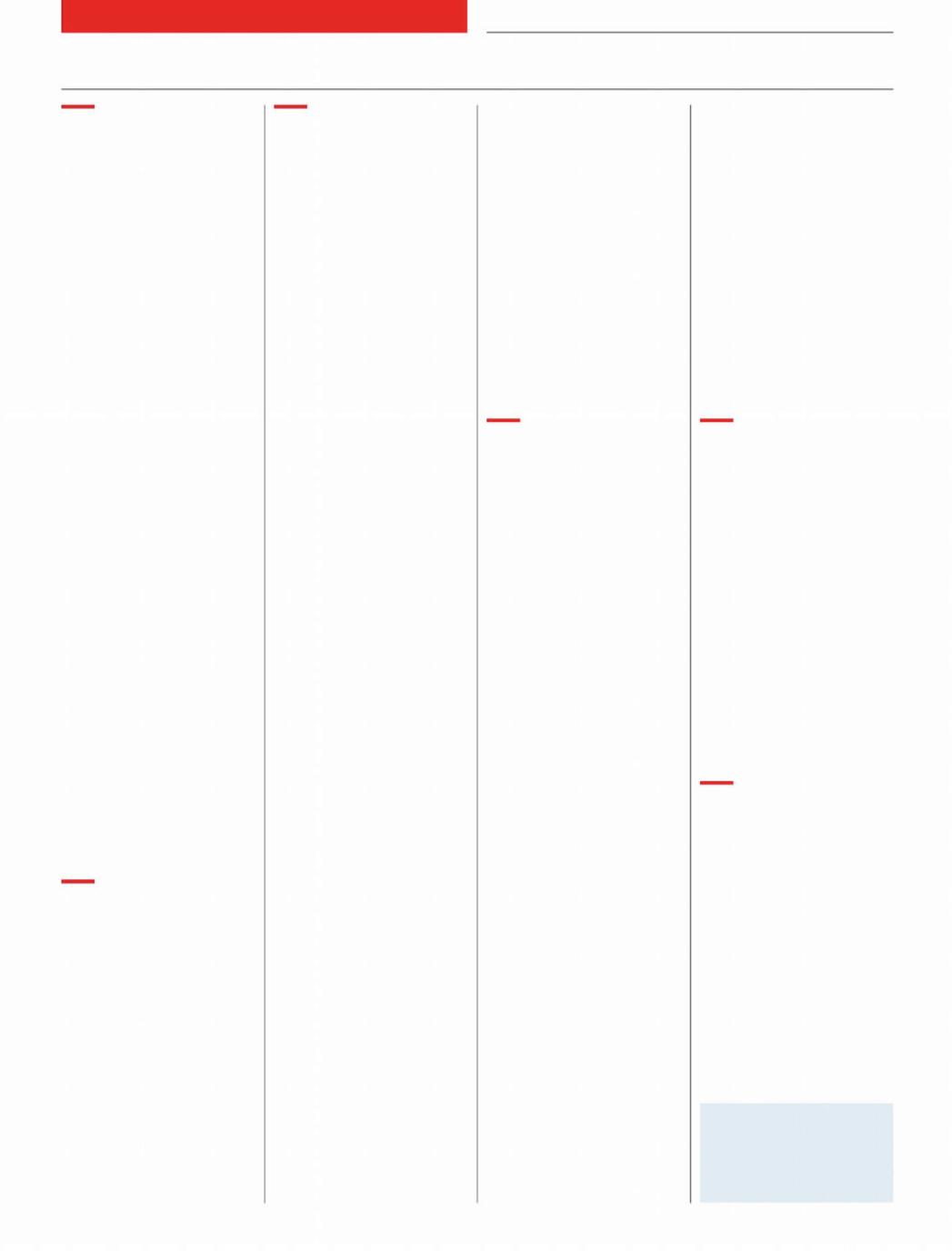
vk.com/id446425943
14 Letters
Congolese politics
Your leader about the presidential election in the Democratic Republic of Congo (“The great election robbery”, January 26th) missed the key point. The alternative to the selection of Félix Tshisekedi as the winning candidate was not Martin Fayulu, but Ramazani Shadary. He was the “heir” of the outgoing president, Joseph Kabila. It was expected that the electoral commission would rig the vote to make Mr Shadary president. But his vote count was so low that Mr Kabila could not get away with declaring him the winner. On the other hand, he could not accept Mr Fayulu because his political backers, Moïse Katumbi and Jean-Pierre Bemba, had promised to pursue Mr Kabila for his ill-gotten gains.
Mr Tshisekedi is apparently less of a threat to Mr Kabila, but within a few days of his inauguration, the governor of the central bank was arrested and charged with stealing government money, and the ministers in charge of the budget and the economy were called in for questioning. Note that the people who voted for Mr Fayulu have not taken to the streets in protest. That is because Mr Kabila has left o ce, which was everyone’s main objective to begin with. herman cohen
United States ambassador (retired)
Washington, DC
Hand-washing history
Reading your article on hospital hygiene (“First, wash your hands”, January 26th) brought to mind the groundbreaking role played by Ignaz Semmelweis, a Hungarian doctor who practically invented the practice in1847. By introducing the washing of hands with chlorinated lime water he greatly reduced the mortality rate associated with childbirth infections over two years at Vienna’s general hospital. Semmelweis was a pioneer of antiseptic procedures. andrea traboulsi
Beirut
РЕЛИЗ ПОДГОТОВИЛА ГРУППА "What's News" VK.COM/WSNWS
No to a second referendum
The Economist ’s chronic antiBrexit bias continues to surface in issue after issue (“The
mother of all messes”, January 19th). What I find most objectionable is the idea that, since Parliament has rejected the withdrawal proposal it now becomes necessary to have another referendum. Rubbish! The voters have spoken, making it clear in 2016 that Britain should leave the European Union. The fact that the government cannot figure out how to do it doesn’t mean the voters need to be consulted once again on the issue of whether to stay or leave, which regardless of the spin put on it, represents nothing more than a new chance for Remainers to throw sand into the Brexit machinery.
Imagine the precedent. If an issue is presented to the electorate, and a decision is made that one side very much dislikes, then all that side has to do is to make it almost impossible to put in place the wishes of the voters, suggesting that the complexities are so enormous and nuanced that further clarification from the electorate is the only way out.
What a destructive notion this is to the basic concept of democracy and letting voters have their say. If another vote is to be held, it should be to recall those members of the government responsible for this mess in the first place.
bill pollock
Atlanta
According to you, “doddery, claret-swilling uber-bureau- crats” in Brussels are among the very unattractive facets of the eu that might justify Brexit. However, in a week of meetings with putative colleagues and interviews in Brussels, I found youngish, highly educated, well-motivated and generally rather congenial people. Even an Antipodean interloper who serendipitously held a British passport was impressed.
I fear the causes of Brexit must be found elsewhere. rex deighton-smith
Paris
Contrary to the negative mainstream opinion about a messy Brexit, I am absolutely thrilled by the discussions, the parliamentary procedures and democratic traditions. What we are witnessing is the flexibility and evolutionary power of an old democracy in a peaceful way. The power plays are akin to “Game of Thrones”, but without the blood. Yes, the politicians are mediocre, but they are compensated for by traditions and a society with a democratic dna .
andreas schmidt
Leamington Spa, Warwickshire
The real pecking order
“Ruling the roost” (January 19th) described the economics of the poultry industry and how Westerners will pay a premium for lean white chicken meat, while people in Asia and Africa prefer dark meat, which includes legs and thighs. With a preference for white meat, chicken producers in the West make their profits from chicken breasts. They then dump the unwanted brown meat in frozen bulk in any market that will take them and at any price they can get.
The eu pays lip service to assisting industries in developing countries. In reality economic-partnership agreements usually require these developing countries to agree not to impose tari s on goods. Because of a flood of cheap imports from Europe, the chicken industries all but vanished in Ghana, Cameroon and Senegal until their governments took steps to protect local producers. The South African chicken industry declared a crisis as production was cut and jobs were lost. South African chicken producers are more e cient than those in eucountries, but they cannot compete with dumped chicken portions.
eu exports have been curtailed since 2016 because of bird flu, but other exporting countries, particularly Brazil, have filled the gap. Brazil is an e cient and low-cost producer, but its agricultural industry, like that in the eu ,
The Economist February 9th 2019
benefits from direct and indirect subsidies. Consumers in Africa and elsewhere do enjoy some benefit, mainly from price suppression, while the middle men grow rich. Meanwhile substantial poultry industries, the grain producers that depend on them, and the jobs of thousands of workers in rural areas, are at risk.
This is the dark side of the Western preference for white chicken meat.
francois baird
Founder
Fairplay
Johannesburg
Frippin’ marvellous
The giant toothy, gaping mouth at the Oval O ce door in Lexington’s piece on Mick Mulvaney, the new White House chief of sta (January 19th), brought to mind the cover art on King Crimson’s iconic album from1969, “In the Court of the Crimson King”. Looking back, that collection of songs was uncannily prescient. As Mr Mulvaney takes his daily “March for No Reason” to confer with the “21st Century Schizoid Man”, I wonder if he’ll be thinking to himself, “I Talk to the Wind”. ronald steenblik
Paris
Love is in the air
euYour obituary of Herb Kelleher, the boss of Southwest Airlines, concluded that low-fare air travel has become synonymous with extorting charges from passengers (January12th). That may be true for most low-fare carriers, but Southwest still allows two free checked bags, waives fees on ticket changes and gives me a free beer on Valentine’s Day, all in coach. There is still some love left in the air.
chad priest
Dallas
Letters are welcome and should be addressed to the Editor at
The Economist, The Adelphi Building, 1-11 John Adam Street, London WC2N 6HT Email: letters@economist.com
More letters are available at:
Economist.com/letters
http://new.guap.ru/i04/contacts
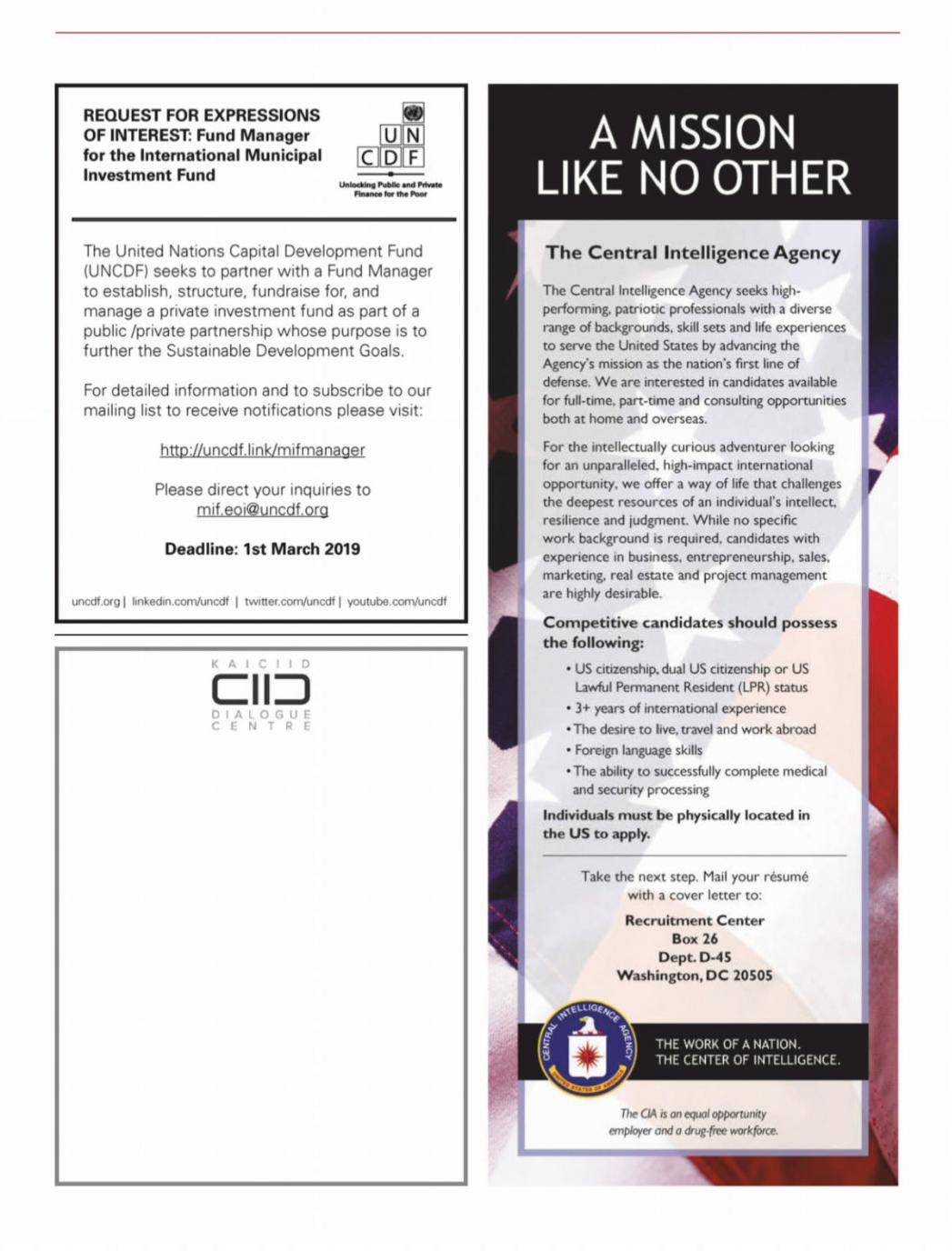
vk.com/id446425943
Executive focus
РЕЛИЗ ПОДГОТОВИЛА ГРУППА "What's News" VK.COM/WSNWS
15
Vacancy for the
Director, Communications Department
Established in 2012, KAICIID Dialogue Centre (King Abdullah Bin Abdulaziz International Centre for Interreligious and Intercultural Dialogue) was founded to enable, empower and encourage dialogue among followers of different religions and cultures around the world. Located in Vienna, the Centre is an independent, autonomous, intergovernmental organization, free of political or economic influence.
The Director of the Communications Department oversees and manages all communications and public affairs activities for KAICIID. The Director creates, develops and implements integrated communications strategies that support the Centre’s pursuit of its mission and vision, as well as related supporting policies, as required, for the Centre. The Director reaches out to religious and secular media, as well as to the public via public lectures, presentations, speeches, web and social media broadcasting, digital publishing, multimedia and print publications. Outreach to the local Austrian public is an integral part of the Communications Department portfolio.
Required qualifications: Advanced university degree in communications, media, journalism, or other related field, a minimum of fifteen years of progressively responsible professional experience in leading communication teams in international/ intergovernmental organizations, developing and implementing communication strategies.
For more details, or to apply, please visit www.kaiciid.org/recruitment
http://new.guap.ru/i04/contacts
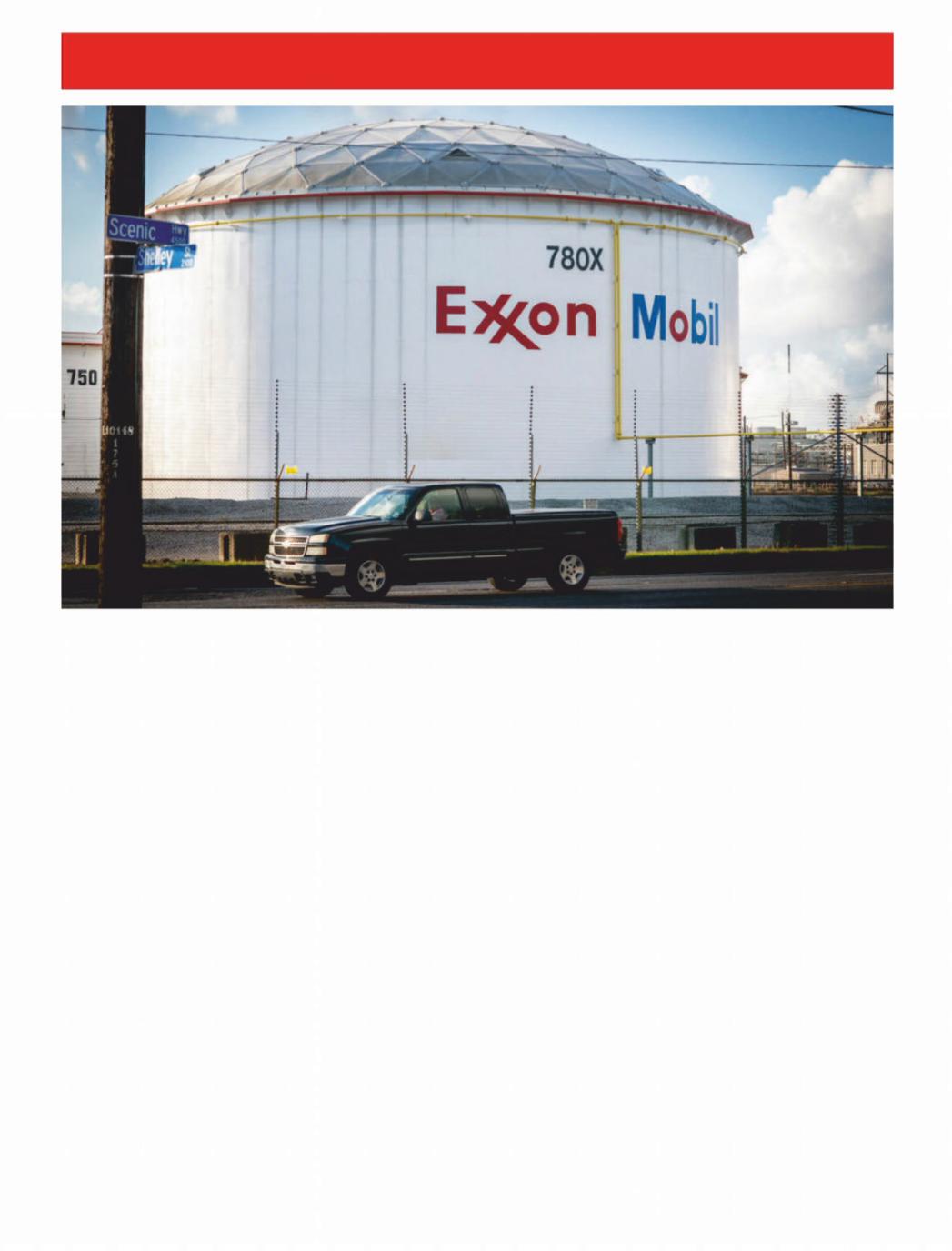
РЕЛИЗ ПОДГОТОВИЛА ГРУППА "What's News" VK.COM/WSNWS
vk.com/id446425943
16 |
Briefing ExxonMobil |
The Economist February 9th 2019 |
|
Bigger oil
G E O R G E T O W N , G U YA N A , A N D I R V I N G , T E X A S
Amid e orts to hold back climate change, a fossil-fuel titan gambles on growth
ff the coast of Guyana, 160km beyond all goes to plan, within the next decade |
||
Othe ramshackle, rainbow-coloured |
Guyana could become the second-biggest |
|
roofs and the sea wall meant to protect the |
oil producer in Latin America, behind only |
|
low-lying capital, past the mud flats and |
Brazil. That would transform a poor and |
|
into the deep, churning Atlantic, a vast |
tiny country into a petrostate. For Exxon- |
|
drilling vessel sits almost perfectly still. |
Mobil, the project is part of a bid to reassert |
|
Thrusters work constantly to keep the |
its dominance. On February 1st the com- |
|
boat’s centre within a three-metre radius |
pany announced annual results, declaring |
|
above a well head on the seabed almost |
itself on track for ambitious growth. By |
|
2km below. Workers fly in and out by heli- |
2025, oil and gas production will be 25% |
|
copter. Some come from Guyana, some |
higher than in 2 |
017. |
America, their rubber-soled boots adorned |
ExxonMobil was once the world’s most |
|
with cowboy stitching. Once aboard they |
valuable company and is still a giant of the |
|
manage towering drill pipes, guide robots |
industry. It has survived for 137 years, |
|
near the ocean floor, monitor storms or |
emerging from the break-up of Standard |
|
perhaps just cook. All these e orts are di- |
Oil in1911to become the energy firm that in- |
|
rected towards a single goal: drilling as ef- |
spired both the greatest respect and the |
|
fectively as possible, so the ship can move |
greatest contempt. Exxon built a sprawling |
|
to the next oil well and then the next. |
global empire of oil reserves, refineries and |
|
Companies had spent decades looking |
petrochemical plants, cementing its place |
|
for oil o the coast of Guyana. In 2015 |
as a leviathan after its merger with Mobil in |
|
ExxonMobil, the world’s largest publicly |
1999. The company was notorious for giv- |
|
traded oil company, became the first to find |
ing little information to investors, judging |
|
it. The firm now estimates that more than |
that impressive cash flows and returns on |
|
5bn barrels of oil lie beneath the seabed. If |
capital spoke for themselves. |
|
ExxonMobil has given ample fuel to the industry’s detractors, too. The greatest failure came in 1989, when a tanker, the Exxon Valdez , ran aground, pouring11m gallons of crude onto unspoilt Alaskan shorelines. But events that attracted criticism also made it seem impregnable. It has weathered lawsuits over everything from a leaky petrol station to abetting torture in Indonesia. According to “Private Empire”, Steve Coll’s book of 2012 on ExxonMobil, Lee Raymond, the firm’s boss between 1993 and 2005, admired Standard Oil for sticking to its position, even when it was controversial. To that end Mr Raymond argued vociferously against the Kyoto Protocol, an international deal to reduce greenhouse-gas emissions signed in 1997. America withdrew from the agreement in 2001.
Well oiled
Two decades after the merger with Mobil, the company culture remains rigorous and private. Its headquarters in Irving, Texas, are tucked away on a site occasionally traversed by bobcats. Tech firms may o er complimentary quinoa but ExxonMobil sta are clear-eyed about free lunch. Avocados at the salad bar cost 55 cents extra.
In recent years, however, disappointing results and missteps mean that ExxonMobil no longer looks invincible. Tech giants are now more valuable. Under the leadership of Rex Tillerson, who left the company in 2017 to become Donald1
http://new.guap.ru/i04/contacts
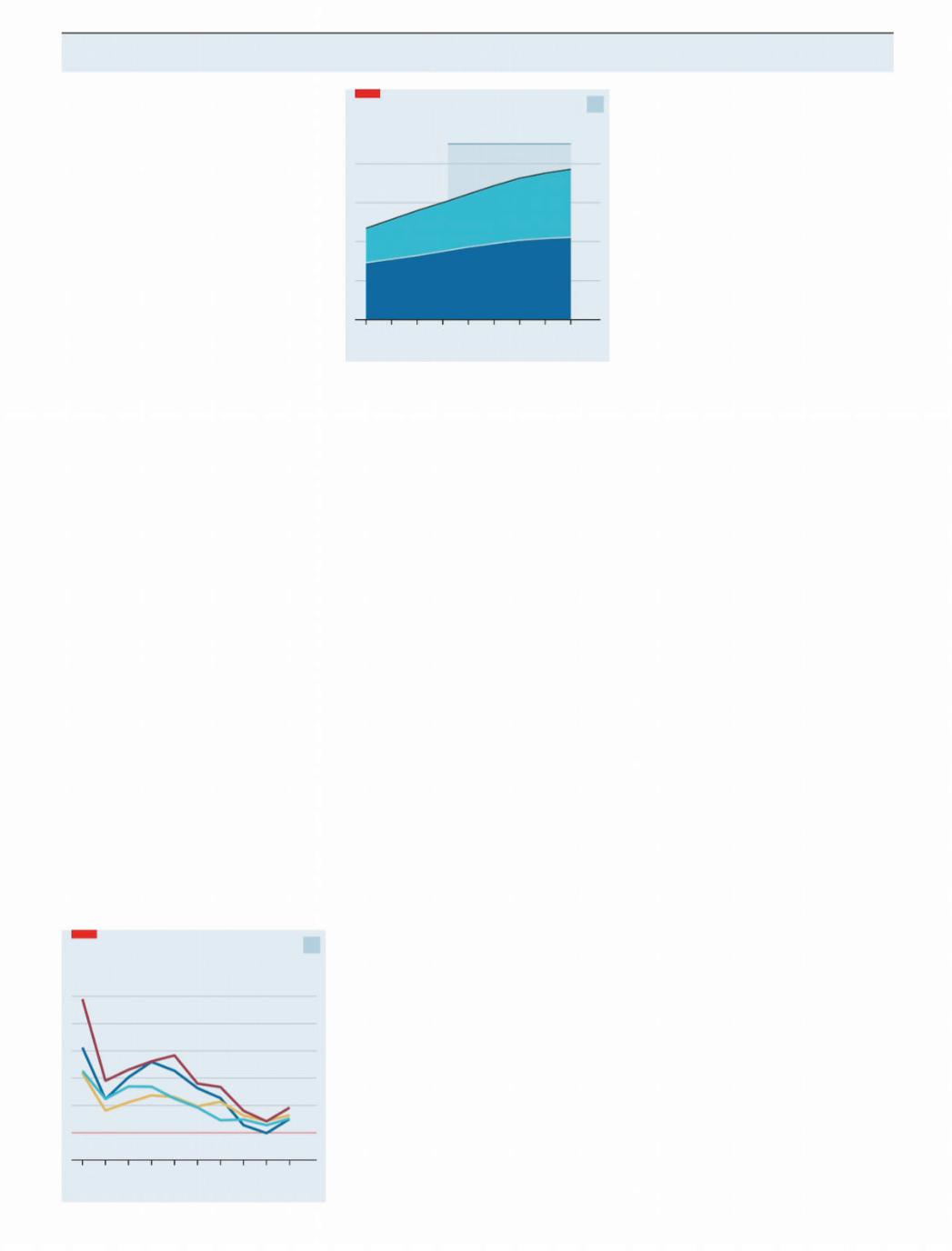
vk.com/id446425943 |
РЕЛИЗ ПОДГОТОВИЛА ГРУППА "What's News" VK.COM/WSNWS |
|
|
The Economist February 9th 2019 |
Briefing ExxonMobil 17 |
2 Trump’s secretary of state, ExxonMobil
paid $31bn in 2009 for xto Energy, a shale- |
In the pipeline |
|
|
|
|
2 |
|||||
gas firm, just before gas prices crashed. In |
Global energy demand, BTU* quadrillion |
|
|||||||||
2017 the company was forced to write down |
|
|
|
|
EXXONMOBIL FORECAST |
400 |
|||||
4.8bn barrels of reserves, nearly a fifth of |
|
|
|
|
|||||||
the company’s total, because low oil prices |
|
|
|
|
|
|
|
|
|
||
had made extraction uneconomic. The |
|
|
|
|
|
|
|
|
300 |
||
firm’s return on capital employed, an im- |
|
|
|
|
|
|
Gas |
|
|
||
pressive 49% in 2008, had crumpled to 9% |
|
|
|
|
|
|
|
|
|||
|
|
|
|
|
|
|
|
200 |
|||
by 2017 (see chart1). |
|
|
|
|
|
|
|
|
|
||
|
|
|
|
|
|
|
|
|
|
||
ExxonMobil, along with other big oil |
|
|
|
|
|
|
|
|
|
||
companies, now faces existential |
risks, |
|
|
|
|
|
|
Oil |
|
100 |
|
too. Calls are rising to reduce carbon emis- |
|
|
|
|
|
|
|
|
|||
|
|
|
|
|
|
|
|
|
|||
sions and limit the rise in global tempera- |
|
|
|
|
|
|
|
|
0 |
||
tures. According to the Intergovernmental |
|
|
|
|
|
|
|
|
|||
2000 |
05 |
10 |
15 |
20 |
25 |
30 |
35 |
40 |
|||
Panel on Climate Change ( |
ipcc |
||||||||||
), doing so |
|
|
|
|
*British thermal units |
||||||
becomes more di cult after 2030, as it |
Source: ExxonMobil |
|
|
|
|||||||
|
|
|
|
|
|
|
|
|
|||
would depend more heavily on draconian |
|
|
|
|
|
|
|
|
|
||
rules and big leaps in science. This has in- |
However ExxonMobil does not expect this |
||||||||||
creased pressure to hasten a transition |
to happen (see chart 2). Its forecast of fu- |
||||||||||
from fossil fuels to renewable sources of |
ture oil demand, propelled by a growing |
||||||||||
power. The regulation of emissions, law- |
population and rising incomes, makes ris- |
||||||||||
suits and advances in clean-energy tech- |
ing temperatures seem all but inevitable, |
||||||||||
nology that this entails could force oil de- |
contends Kathy Mulvey of the Union of |
||||||||||
mand to fall and the price to plunge. |
|
Concerned Scientists, a pressure group. |
|||||||||
Against this backdrop Darren Woods, |
ExxonMobil, backed by 137 years of exper- |
||||||||||
who replaced Mr Tillerson in 2017, has a |
tise, is working to supply more fossil fuels. |
||||||||||
strategy to ensure success for years to |
Activists are pressing oil companies to |
||||||||||
come—sticking to what ExxonMobil does |
change. Many oil companies, including |
||||||||||
best. His intention, announced last year, is |
ExxonMobil, cut capital spending after the |
||||||||||
to spend more than $200bn over seven |
price of crude sank in 2014 (see chart 3 on |
||||||||||
years. This will include big investments in |
next page). Some green advocates began to |
||||||||||
petrochemicals and refining. But his bol- |
murmur that big oil firms might change for |
||||||||||
dest plan is for boosting the output of fossil |
good if they continued to cut investment |
||||||||||
fuels. Mr Woods wants the company’s pro- |
and return cash to shareholders or if they |
||||||||||
fits from oil and gas to reach about $23bn in |
pursued modest growth in oil production |
||||||||||
2025, triple what they were in 2 |
017.while |
pouring money |
into |
renewables. |
|||||||
|
|
Royal Dutch Shell and Total, for example, |
|||||||||
invested in wind and solar energy, as well as electricity utilities.
ExxonMobil’s view of climate change has progressed since Mr Raymond’s day. “We recognise, the industry recognises, broader society has grown to recognise the impact of combustions of oil and gas and the emissions that come with that and the threat that represents—the risk that represents to the climate,” Mr Woods explains. He insists that his firm looks “very closely at the renewables space and the opportunities to participate in that”. The company is applying its geological expertise to research into carbon capture and storage.
Spending on green technologies re-
50mains minimal, however. European peers may be investing in utilities, but ExxonMo-
bil has little appetite for them. “We have much higher expectations for the returns on the capital we invest,” Mr Woods asserts. ExxonMobil plans instead to expand its usual business. On December 3rd Shell, under pressure from green investors, said that it would tie executive pay to a plan to cut carbon emissions from its products
|
|
|
|
|
|
|
Chevron |
-10 |
even as ExxonMobil announced yet anoth- |
||
|
|
|
|
|
|
|
|
|
|
||
|
|
|
|
|
|
|
|
|
|
er oil discovery o Guyana, its tenth. |
|
2008 |
09 |
10 |
11 |
12 |
13 |
14 |
15 |
16 |
17 |
|
|
|
Some of the firm’s plans resemble those |
||||||||||
|
|
|
|
|
|
|
|
|
|
|
|
of its peers. It is investing in petrochemi-
cals and in American shale-oil, where production can rise and fall far more quickly than in big o shore projects, making it suited for an era of uncertainty. Like other oil giants, ExxonMobil highlights its investments in gas, which produces electricity more cleanly than coal. But it is unusual in its appetite for higher spending—it expects an increase of 16% this year—and in its bullish views about both gas and oil.
Reserves are continuously drained, Mr Woods points out, so the industry must invest to sustain production. “There is a tremendous amount of growth required in a depletion business just to stand still.” However ExxonMobil is investing not only to maintain production but also to increase it as projects in America, Guyana and Brazil begin pumping crude.
Investors greeted Mr Woods’s plan with dismay. Other oil companies were announcing buy-backs, not big investments. The company, newly solicitous, has tried to be more transparent. On February 1st Mr Woods took the unusual measure for a boss of ExxonMobil of answering investors’ questions on the annual earnings call. He reported increased production and plans for even higher capital expenditures in 2019. After a bumpy 12 months, the company’s share price ticked up.
Environmentalists and green investors, long critics of ExxonMobil, are trying to knock the company o course. Several American cities and counties are using the courts to demand that large oil companies pay for the cost of guarding against rising sea levels. In October New York’s attorneygeneral filed a suit alleging that ExxonMobil used one set of assumptions about climate change in external documents and another for internal planning. That case is pending. In January America’s Supreme Court rejected the firm’s attempt to halt a separate investigation by Massachusetts over whether it misled the public about threats from climate change.
Lawsuits are unlikely to vanquish ExxonMobil. Last year a federal judge in California dismissed a lawsuit against oil firms, arguing that Congress and diplomacy, not courts, should handle the fallout from climate change. “If I were trying to think of an existential threat to the company it’s not litigation,” says Andrew Logan of Ceres, a non-profit that works with investors to argue for sustainability, “it’s whether the business strategy is obsolete.”
A fit of peak
ExxonMobil’s biggest risk appears to be a world where oil demand peaks as measures to combat emissions grow, and then prices fall. Projects might become uneconomic sooner than expected, stranding the company’s assets. Mr Woods says he is backing projects with low costs. He argues that his firm’s unusually high level of integration1
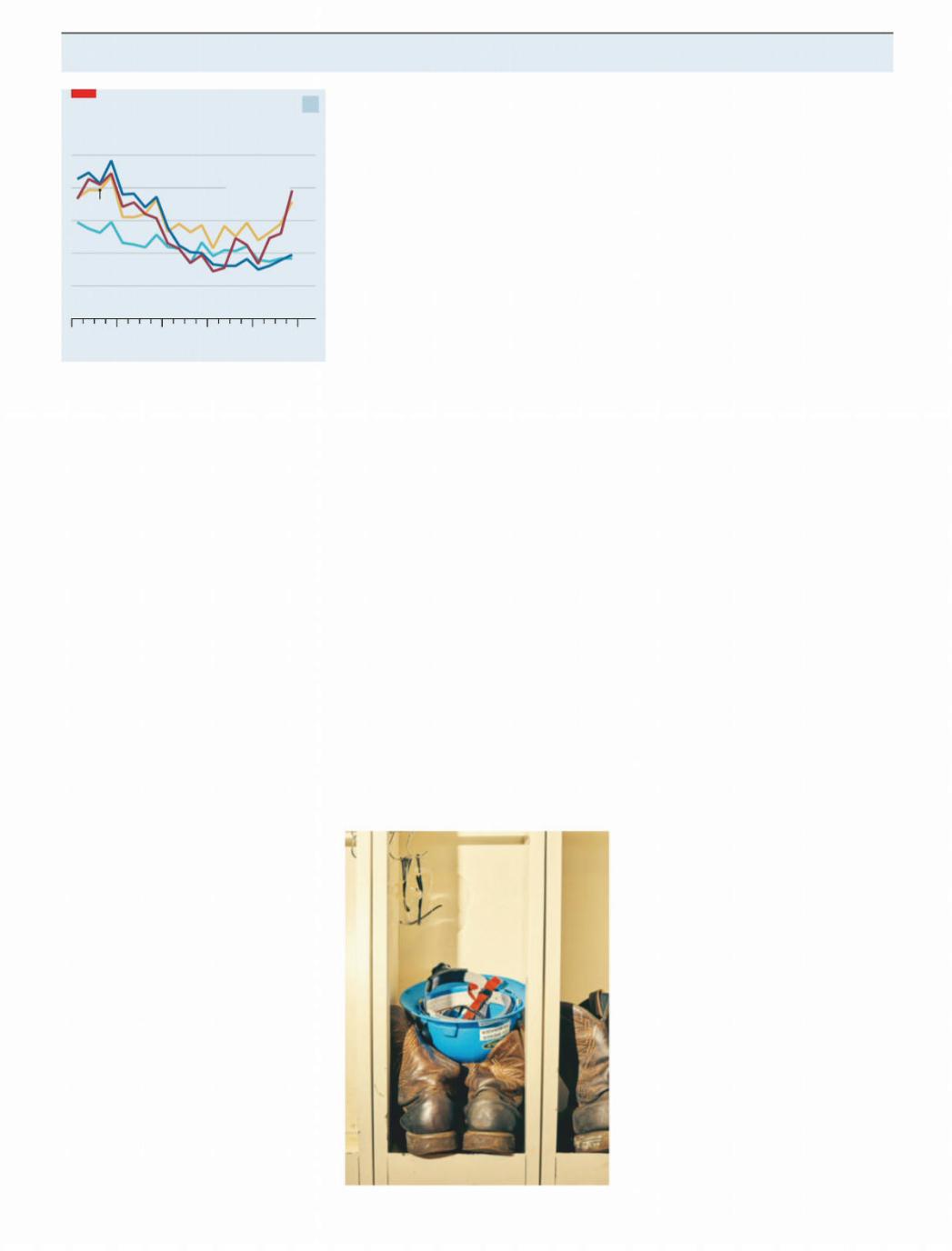
РЕЛИЗ ПОДГОТОВИЛА ГРУППА "What's News" VK.COM/WSNWS
vk.com/id446425943
18 Briefing ExxonMobil
No spent force |
|
|
|
3 |
|
Capital expenditure, $bn |
|
|
|
||
|
|
|
|
|
10 |
|
Chevron |
|
|
|
8 |
|
|
|
ExxonMobil |
||
|
|
|
|
||
Shell |
|
|
|
|
6 |
|
|
|
|
|
|
BP |
|
|
|
|
4 |
|
|
|
|
|
|
|
|
|
|
|
2 |
|
|
|
|
|
0 |
2014 |
15 |
16 |
17 |
18 |
|
Source: Bloomberg |
|
|
|
|
|
2 of its various businesses and technology means it can produce more e ciently than its peers. Take oil extracted in the Permian basin of Texas. ExxonMobil uses data analysis to drill for oil using extra-long wells, then transports it to company refineries and petrochemical plants nearby.
Concern is growing among investors, however. In 2 017, 62% of ExxonMobil’s shareholders voted to require the company to disclose how action to limit temperature rises to 2oC would a ect its business. ExxonMobil produced a document that critics charged was too vague. This year shareholders will vote on a new resolution, filed by the pension funds for New York state and the Church of England, to require ExxonMobil to do what Shell has done and commit to reducing emissions not just from its operations but also from the products it sells.
Even if shareholders vote in favour of the resolution, ExxonMobil, like Shell, would probably have an escape hatch. Shell can increase production of oil and gas under its new targets, as long as it takes other steps such as increasing energy production from wind and solar. Shell also may adjust its targets, to keep its plans consistent with society’s progress towards the goals of the Paris treaty. If governments do not restrict carbon emissions, Shell can ease up too.
Barrelling on
ExxonMobil might have to change its strategy more dramatically if more investors turn away from oil and gas. But that looks unlikely at the moment. Gas faces growing competition from wind and solar but for now it can help replace coal plants. Oil still has a stranglehold on transport. In an optimistic scenario only15% of the world’s cars will be electric by 2030. Lorries and planes will be electrified more slowly still.
Thomas DiNapoli, who oversees New York’s pension fund, has played a central role in putting pressure on ExxonMobil. However he says his fund will not divest soon, in part because oil companies are held by big indices that generate good re-
turns. He is not alone. Far from abandon- |
over, the carbon tax it favours would in- |
|
|
ing them, the shareholdings of the world’s |
clude protection for oil companies from |
|
|
20 largest institutional investors in big oil |
climate lawsuits. |
|
|
companies climbed from 24% in 2014 to |
The firm is also working to reduce leaks |
|
|
27% in 2017, according to the International |
of methane, a powerful greenhouse gas, |
|
|
Energy Agency. |
from its wells, pipelines and refineries. |
|
|
Politicians may have more sway. |
Howevere3g , athe American Petroleum Institute |
|
|
think-tank, simulated the interaction of |
(api ), of which Mr Woods is chairman, has |
|
|
di erent policies and corporate strategies. |
been a main force urging Mr Trump’s ad- |
|
|
If the world were to move on to a pathway |
ministration to ease regulations on meth- |
|
|
compatible with warming below 2oC, the |
ane emissions. The api ’s other e orts in- |
|
|
price of oil would drop and a company with |
clude lobbying against incentives for |
|
|
ExxonMobil’s strategy—what e3g calls |
electric cars. |
|
|
“last one standing”—might come into di- |
|
|
|
rect competition with large national oil |
Fossil record |
|
|
companies with very low production costs, |
As other oil and gas companies grapple |
|
|
such as Saudi Aramco. |
with their own strategies, ExxonMobil may |
|
|
To date politicians, particularly in |
not prove an outlier in committing to busi- |
|
|
America, have been reluctant to legislate |
ness as usual. Even firms investing more in |
|
|
for bold restrictions on carbon. That is in |
renewables are loth to give up fossil fuels, |
|
|
part thanks to ExxonMobil’s attempts to |
which are far more profitable. Total, bp and |
|
|
obstruct e orts to mitigate climate change. |
Chevron plan to increase production of oil |
|
|
Mr Raymond worked to sow doubt about |
and gas. Analysts at |
rbc , a bank, expect |
|
climate science. Mr Tillerson adopted a |
Shell to do so, too. |
|
|
more convoluted position. In 2009 he an- |
ExxonMobil is not alone in trying to |
|
|
nounced the company’s support for a car- |
sway the climate debate in its direction ei- |
|
|
bon tax, which was not under serious con- |
ther. Shell, Total and |
are allbpmembers of |
|
sideration in America, and argued against a |
the api . Marathon Petroleum, a refiner, re- |
|
|
cap-and-trade scheme for pollution per- |
portedly campaigned to ease Barack |
|
|
mits, which was. Mr Tillerson supported |
Obama’s fuel-economy standards. spent |
bp |
|
the Paris climate agreement but also said |
$13m to help block a proposal for a carbon |
|
|
that there was “no scientific basis” for lim- |
tax in Washington state in November. The |
|
|
iting warming to 2oC and warned that the |
Western States Petroleum Association, |
|
|
world depended on fossil fuels for “our |
whose membership includes ExxonMobil |
|
|
very survival”. |
and Shell, also lobbied to defeat that tax. |
|
|
Under Mr Woods ExxonMobil’s policies |
While oil companies plan to grow, |
|
|
on climate change remain marred by in- |
trends in cleaner energy are moving in the |
|
|
consistencies. In October the company |
wrong direction. Investments in renew- |
|
|
said it was giving $1m, spread over two |
ables fell as a share of the total in 2017 for |
|
|
years, to a group advocating a carbon tax. |
the first time in three years, as spending on |
|
|
ExxonMobil maintains that a carbon tax is |
oil and gas climbed. In 2018 carbon emis- |
|
|
a transparent and fair way to limit emis- |
sions in America grew by 3.4% as economic |
|
|
sions. But the sum is less than a tenth of its |
activity picked up, even as coal fell out of |
|
|
federal lobbying spending in 2018. More- |
favour. Mr Woods maintains that any |
|
|
|
change to the energy supply will be gra- |
|
|
|
dual. “I don’t think people can readily un- |
|
|
|
derstand just how large the energy system |
|
|
|
is, and the size of that energy system will |
|
|
|
take time to evolve,” he argues. |
|
|
|
ExxonMobil meanwhile continues to |
|
|
|
search for oil, reshaping the world as it |
|
|
|
goes. In Guyana there is much debate over |
|
|
|
how to use the royalties from oil. Possibili- |
|
|
|
ties include programmes for the poor and |
|
|
|
infrastructure to deal with flooding. Guy- |
|
|
|
ana’s capital, Georgetown, rests below sea |
|
|
|
level. Water often laps city streets. |
|
|
|
Out at sea, ExxonMobil is working to in- |
|
|
|
crease production. By next year an under- |
|
|
|
water web of pipes will connect wells on |
|
|
|
the seabed to a vast vessel. From there the |
|
|
|
oil will be transferred to smaller tankers, |
|
|
|
then to the vast infrastructure that can re- |
|
|
|
fine and transport it until it reaches con- |
|
|
|
sumers in the form of fertiliser, plastic bot- |
|
|
|
tles, polyester or, most likely, petrol. From |
|
|
These boots are made for drilling |
beneath the ocean floor to your car’s tank, |
|
|
for about the price of a gallon of milk. 7 |
|
||
http://new.guap.ru/i04/contacts
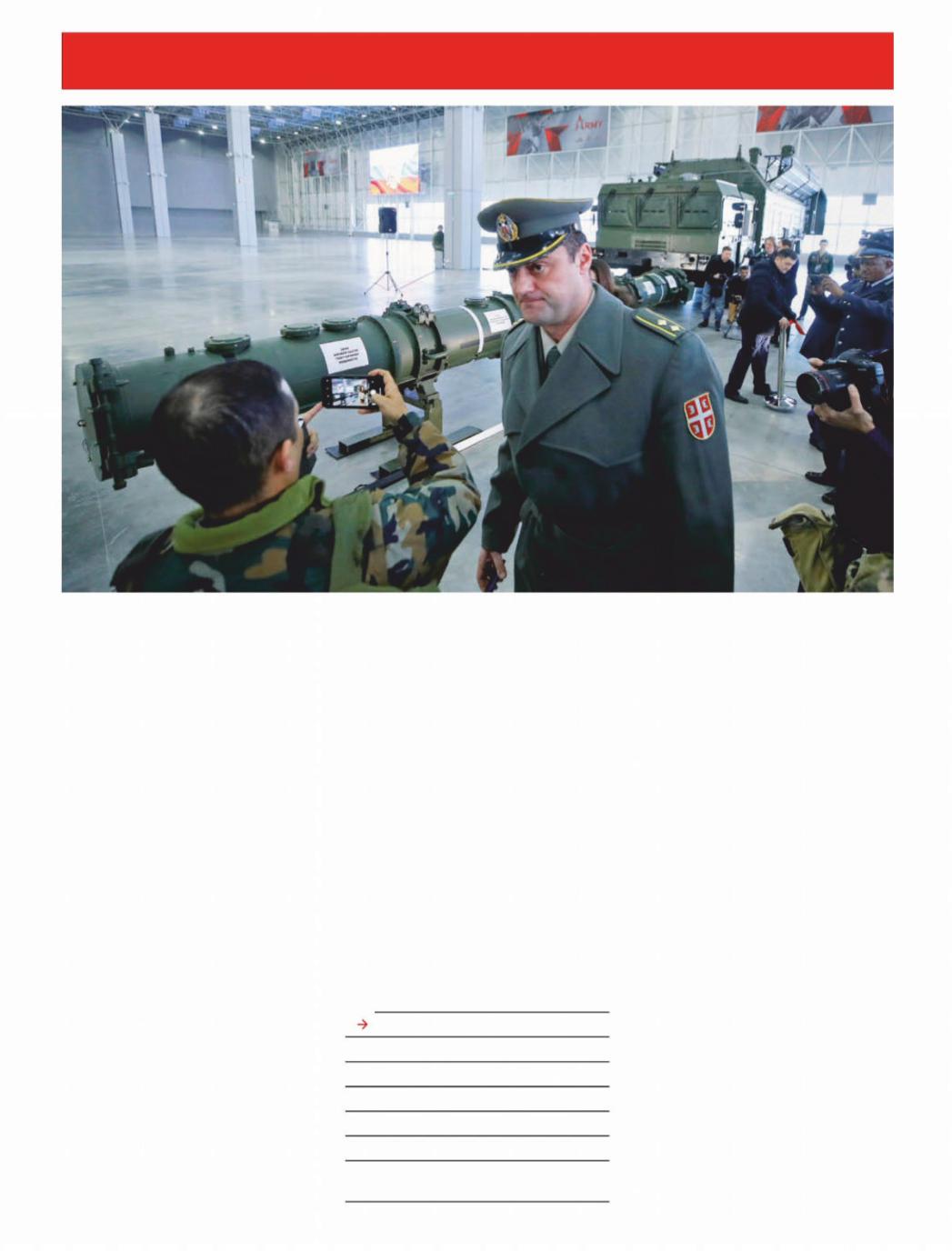
vk.com/id446425943
United States
РЕЛИЗ ПОДГОТОВИЛА ГРУППА "What's News" VK.COM/WSNWS
The Economist February 9th 2019 19
The INF treaty
Trick or treaty
W A S H I N GT O N , D C A N D M O S C O W
America calls time on a cold-war pact, ushering in a new age of missiles
Patriot park in Kubinka, 60km southwest of Moscow, is a military Disneyland. Families can picnic among rows of Soviet-era aircraft. Children can frolic over tanks. Those doing so on January 23rd might have noticed a long green tube, studded with ridges and dials, roped o and watched by stern guards. This was not an exhibit. It was, supposedly, the canister for the 9M729 missile. Its launcher, an imposing truck, stood nearby, as Lieutenant-Gen- eral Mikhail Matveyevsky, Russia’s missile chief, pointed to a diagram of the missile’s innards. “All tests of surface-to-surface missiles,” he declared, “were conducted to a range that is less than the [Intermediinf -
ate-Range Nuclear Forces] treaty limit.” The show-and-tell did not impress
America, whose diplomats had turned down an invitation to the theme park. On February1st America declared it would pull out of the inftreaty. It is exasperated not only with ten years of Russian cheating but also with the rapid growth in China’s unshackled arsenal of over 2,000 missiles, 95% of which are of the range forbidden to
America. “If Russia’s doing it and if China’s doing it, and we’re adhering to the agreement,” complained Donald Trump in October, “that’s unacceptable”. The pact will die once America’s six months’ notice expires in the summer. “The likelihood of compromise is zero,” says Adam Thomson, Britain’s envoy to natountil 2016.
That brings over 30 years of arms control to a close. The inf treaty was forged in 1987 to defuse a missile race between America and the Soviet Union. Intermediaterange nukes were appealing because they
Also in this section
20Missiles and mistrust
21Virginia and shoe polish
21Unions and the FBI in Philly
22Botox bars
23Elizabeth Warren’s ideas
24Lexington: Donald Trump and conservatism
could hit key targets while remaining a safe distance away from the front line, without resorting to intercontinental ballistic missiles ( icbm s). Appealing, but dangerous: icbm s took 30 minutes to reach their targets; mid-range missiles got there in under ten. “It was like holding a gun to our head,” remarked Mikhail Gorbachev. He and Ronald Reagan agreed to scrap all such landbased missiles, conventional and nuclear.
By the 2000s the treaty began to chafe Russia. Its decrepit armed forces could not a ord modern warships, submarines and warplanes to carry plentiful missiles, whose utility America had demonstrated with bombing campaigns in the Middle East and the Balkans. To Russia’s south and east, countries like Israel, Iran, China and Pakistan were accumulating land-based missiles. In 2005 Russia’s defence minister proposed that the treaty should be junked. Not long after came Russia’s first test of the 9M729 . Since 2016 four battalions, roughly 100 missiles, have been deployed to two bases east of the Ural mountains and near the Caspian sea. “The 9M729 is core to Russian military thinking in terms of what they need to fight a regional war,” says Pranay Vaddi, who worked on the issue for the State Department until October.
American o cials may decry the cheating. But they surely sympathise with the impulse. In recent years Pentagon o cials have fretted over a widening missile gap in the Pacific. “China has a massive advantage over us,” says a former American army o -1
http://new.guap.ru/i04/contacts

vk.com/id446425943 |
РЕЛИЗ ПОДГОТОВИЛА ГРУППА "What's News" VK.COM/WSNWS |
|
|
20 United States |
The Economist February 9th 2019 |
2 cial. “It cannot be overstated how important it is that we can field precision-guided missiles, unlimited by range.”
The inf treaty does not prohibit putting intermediate-range missiles on ships, submarines and aircraft. But these are expensive (a modern destroyer costs $1.8bn), demand manpower and have other things to do. Hence the appeal of land-based missiles. “A mobile tel requires a couple of drivers and operators,” says the former o - cial, referring to the transporter-erector- launcher trucks used to fire missiles. “It is virtually impossible for the enemy to find.”
In a review of American nuclear posture last year, the Trump administration said it would respond to Russia’s violation of the inf treaty by building a nuclear-tipped sealaunched cruise missile (which would be inf -compliant) and reviewing “concepts and options” for a conventional landbased one (which would not be). But a deployable weapon is some way o .
The us Army is already working on a Precision Strike Missile (p r sm) due in 2023. Its range could easily be extended beyond the current inf ceiling of 499km. But even twice that would not get from Warsaw to Moscow. A longer-legged option would be to tweak the sea-based Tomahawk to fire from land; that is what America did during the inf crisis in the 1980s to produce the 2,500km-range Gryphon.
Let’s do launch
But Pacific geography is forbidding. Guam, the likeliest host for American missiles in Asia if Japan demurs, is over 3,000km away from Shanghai. An entirely new missile would be required. Hypersonic boost-glide missiles, which skip o the atmosphere at great speed, might fit the bill. But groundlaunched ones are years away. Democrats, who took control of the House in January, have taken a dim view of the swelling defence budget. They may query why the Pentagon cannot make do with airand sealaunched systems already in the pipeline.
Nor is it obvious where new missiles would be put in Europe. Though nato strongly backed America on February 1st, declaring that “Russia will bear sole responsibility for the end of the treaty,” its members will be less keen on welcoming missiles, even non-nuclear ones.
A few allies, like Poland, which is trying to seduce Mr Trump into setting up a new tank base, would probably embrace American arms on their soil. But a deal with Poland struck over ’snatohead would compound anxiety over America’s commitment to the alliance. It might also be seen as destabilising. “Missiles deployed on the territory of newer nato members could reach Russia’s main command points in less than five minutes,” notes Pavel Zolotarev of the Russian Academy of Sciences. That, he warns, would al-
low the “destruction of its critical infra- |
this a high enough price to pay for adven- |
|||||
structure without the use of nuclear |
turism, arrogance, contempt for the inter- |
|||||
warheads.” In a crisis, a jittery Russia |
ests and rights of others?” the Soviet leader |
|||||
would not necessarily make wise choices. |
said. “How far we had come from the days |
|||||
Another option for nato would be to re- |
of tension,” George Shultz, Reagan’s secre- |
|||||
jig the American-led missile-defence |
tary of state mused to himself. |
|||||
shield in Poland and Romania so that it |
Neither Russian nor American military |
|||||
could cope with Russian cruise missiles |
and security-service bosses shared the fes- |
|||||
like the 9M729 |
, rather than just Iranian and tive mood. Russia’s top brass, who had |
|||||
North Korean ballistic ones. Yet that might |
spent their entire lives fighting America, |
|||||
provoke an even bigger fight in nato. |
felt betrayed. America’s cold warriors |
|||||
The death of the inf treaty marks “the |
feared that Mr Gorbachev was trying to |
|||||
end of the post-cold war era,” says Bruno |
smother them with kindness and lure |
|||||
Tertrais of the Foundation for Strategic Re- |
them into a trap. Thirty years later, the re- |
|||||
search, a French think-tank. What is clear |
vanchists’ view has finally prevailed. While |
|||||
is that the Trump administration has |
the inf treaty has, in e ect, been eroding |
|||||
pulled the plug without a clear sense of |
for years, its scrapping is symbolic of the |
|||||
how to navigate the era to come. 7 |
distrust that now permeates relations be- |
|||||
|
|
tween America and Russia. |
||||
Missiles and mistrust |
“The problem is that you [America] have |
|||||
been playing the winner for too long,” says |
||||||
Meanwhile, in |
Evgeny Buzhinsky, a former senior general |
|||||
and member of the Russian general sta . |
||||||
Moscow |
“Putin is not Gorbachev,” he adds. Whereas |
|||||
the White House sees the end of the |
||||||
|
|
treaty as a recognition of reality and the |
||||
M O S C O W |
|
treaty’s failure to restrain Russia and Chi- |
||||
|
na, along |
with several other countries, |
||||
The Russian government’s suspicion of |
||||||
from developing the banned missiles, the |
||||||
America is a self-fulfilling prophecy |
||||||
Kremlin sees it as the manifestation of |
||||||
he white house was draped with a red |
||||||
American triumphalism and a vindication |
||||||
Tflag, with hammer and sickle. Inside, |
of Mr Putin’s inbred distrust of America. |
|||||
the Soviet delegation led by Mikhail Gorb- |
“The Soviet Union is not a weak, poor |
|||||
achev sang “Moscow Nights” and celebrat- |
country that can be pushed around,” Vladi- |
|||||
ed a landmark agreement to eliminate an |
mir Kriuchkov, the head of Soviet intelli- |
|||||
entire class of nuclear weapons that had |
gence |
told, |
his American counterparts in |
|||
threatened Europe for years. It was Decem- |
1987. Mr Putin, a student of Mr Kriuchkov, |
|||||
ber 8th 1987. The next day America’s great |
has made that his policy. Before she joined |
|||||
and good, a group which included a pushy |
the National Security Council Fiona Hill, |
|||||
entrepreneur |
called Donald Trump, |
an expert on Russia, wrote that for Mr Pu- |
||||
flocked to lunch at the State Department to |
tin, the “paradigm has not changed so |
|||||
hear Mr Gorbachev speak. “Two world |
much. Yes, communism is gone and the So- |
|||||
wars, an exhausting cold war, plus small |
viet Union has crumbled but, from his van- |
|||||
wars—all destroying millions of lives. Isn’t |
tage point, Russia did not go anywhere. |
|||||
|
|
Military might still makes right.” |
||||
|
|
Mr Putin saw treaties such as the |
||||
|
|
agreement not as evidence of goodwill be- |
||||
|
|
tween the two countries but as a sign of |
||||
|
|
Russia’s relative weakness, which he has |
||||
|
|
tried to correct. As a former kgb operative, |
||||
|
|
Ms Hill argued, he is obsessed with securi- |
||||
|
|
ty or |
bezopasnost |
, literally the “absence of |
||
|
|
threats”, and constantly fights dangers |
||||
|
|
which, in his mind, come almost exclu- |
||||
|
|
sively from America. So what America sees |
||||
|
|
as Russia’s aggression, whether in Ukraine |
||||
|
|
and Syria or in presidential elections, Mr |
||||
|
|
Putin sees as a way of deterring America |
||||
|
|
and preserving Russia’s freedom to act |
||||
|
|
without restraint in its sphere of influence. |
||||
|
|
The problem, Ms Hill argued, is that |
||||
|
|
American politicians find it hard to com- |
||||
|
|
prehend that Russia still sees the United |
||||
|
|
States as a threat after the end of cold-war |
||||
|
|
competition. This leads to a spiral, which |
||||
|
|
has dragged down the |
treatyinf. Russia |
|||
Rocket men |
|
has long cheated on its obligations, but |
||||
|
cried foul when America decided to sus-1 |
|||||
http://new.guap.ru/i04/contacts

РЕЛИЗ ПОДГОТОВИЛА ГРУППА "What's News" VK.COM/WSNWS
2 pend the treaty, and is now presenting that |
|
|||
decision as proof of America’s disregard for |
|
|||
the post-cold-war security architecture. |
|
|||
Few Western policymakers have much |
|
|||
hope of improving relations with Mr Putin. |
|
|||
As a former |
kgboperative, he prefers clan- |
|
||
destine actions and feints to direct con- |
|
|||
frontation. These include engaging in co- |
|
|||
vert operations, such as spreading |
|
|||
disinformation, encouraging cyber-crime |
|
|||
or using mercenaries, all masked as non- |
|
|||
state actors. In the words of one senior |
|
|||
American o cial, the task is not to win |
|
|||
over Mr Putin, but to manage the conflict |
|
|||
and “professionalise” the relationship. The |
|
|||
administration may hope that dismantling |
|
|||
the treaty will lead to a more sincere con- |
|
|||
versation about security. So far, however, |
|
|||
there is little indication that Mr Putin will |
|
|||
go along. Instead, the Kremlin is using |
|
|||
America’s move for propaganda purposes. |
|
|||
Russian military strategists say Russia |
|
|||
should assume that America will place new |
|
|||
missiles in Europe and get ready to re- |
Governor? |
|||
spond. Should America proceed, “we’ll |
||||
have to think not only about missiles in Ka- |
|
|||
liningrad, but also those in Chukotka that |
Over the next two days, Mr Northam |
|||
can at least reach Seattle”, Mr Buzhinsky |
provided an object lesson in how not to re- |
|||
says. The presence of nuclear-armed mis- |
spond to a political crisis. Shortly after the |
|||
siles in eastern Europe, he adds, would trig- |
picture emerged, he apologised for “the de- |
|||
ger a replay of the Cuban missile crisis. |
cision I made to appear as I did” (he did not |
|||
“Then, as our o cers say, it’s time to think |
say whether he was in Klan robes or black- |
|||
not about a retaliatory strike, but about a |
face). During a surreal press conference he |
|||
pre-emptive one.” Russia and America |
then said that in fact he was not in the pic- |
|||
have indeed come a long way from the days |
ture, though he admitted to once having |
|||
of Gorbachev and Reagan. 7 |
|
“darkenedmyface as part of a Michael Jack- |
||
|
|
|
soncostume.”He appeared ready, after a re- |
|
Political scandals |
|
porter’s question, to start moonwalking, |
||
|
until his wife leaned over and whispered: |
|||
These are the |
|
“Inappropriate circumstances.” |
||
|
Democrats from Nancy Pelosi to Mr |
|||
breaks |
|
|
Herring have urged him to resign. He has so |
|
|
|
far resisted, and is reportedly considering |
||
|
|
|
leaving the Democratic Party and serving |
|
W A S H I N GT O N , D C |
|
|
out the rest of his term (Virginia governors |
|
|
|
cannot run for a second consecutive term) |
||
Scandals ensnare Virginia’s top three |
||||
as an independent. If he steps down, he |
||||
elected o cials |
|
|||
|
will be replaced by Justin Fairfax, the 39- |
|||
|
|
|
||
s the economist |
went to press, conyear- -old, African-American lieutenant-go- |
|||
Asumer-protection o ces in Virginia |
vernor, also a Democrat. |
|||
had not yet announced plans to a x a |
But Mr Fairfax has problems of his own: |
|||
sticker to every canister of shoe polish sold |
Vanessa Tyson, a university professor, said |
|||
in the state reading “for footwear, not |
he sexually assaulted her at the Democratic |
|||
faces ”. That the stu should be used to National Convention in 2004. Mr Fairfax
brighten shoes rather than darken faces |
admitted to knowing Ms Tyson, but said |
may seem obvious to most, but not to |
that she was “very much into a consensual |
Ralph Northam and Mark Herring, respec- |
encounter.” Ms Tyson said that he physi- |
tively Virginia’s governor and attorney- |
cally forced her to perform oral sex. |
general, both Democrats. |
Should Messrs Northam and Fairfax |
On February 1st, a website released Mr |
both resign, Mr Herring is next in line. But |
Northam’s page from his 1984 medical- |
on February 6th, Mr Herring admitted that |
school yearbook, on which a picture |
he too attended a party in wigs and black- |
showed a man in blackface grinning next to |
face, “dressed like rappers we listened to at |
a man in a Ku Klux Klan outfit. One of Mr |
the time, like Kurtis Blow.” Mr Herring |
Northam’s former classmates, angry at the |
apologised profusely, and left open the |
governor’s clumsily worded defence of a |
possibility of resignation, but for the mo- |
bill loosening restrictions on abortion, re- |
ment he too remains in o ce. |
portedly alerted the website to the page. |
If all three leave then Kirk Cox, the Re- |
United States 21
publican House speaker of Virginia’s General Assembly, would become the state’s governor. Mr Cox holds the speakership because Republicans won a 51-49 majority in the lower House after the state’s board of elections drew a name out of a hat in a district where the Democratic and Republican candidates received exactly the same number of votes. Mr Cox, assuming he was never photographed in blackface, would then get to appoint a lieutenant-governor, and the Republican-controlled legislature would elect an attorney-general.
Republicans, who have not won a statewide race in Virginias since 2009, are salivating at the prospect of claiming all three top posts. But as long as they line up behind a president whose record on race or groping is not exactly woke, their condemnations of Messrs Northam, Fairfax and Herring may ring a little bit hollow.
Yet if the Democrats’ position is that doing something o ensive while in university renders someone unfit to hold o ce, regardless of whether his attitudes and political views have since changed, they risk setting an impossible standard. Perhaps their current zeal mirrors the lack of it across the aisle: Democrats may feel that they must be less forgiving because Mr Trump has made the previously unsayable acceptable. Perhaps the three accused men have also taken a lesson from the president: that if they hunker down and withstand the outrage, the news cycle will eventually move on to fresher meat. 7
Unions and the FBI
Secrets unfurled
P H I L A D E L P H I A
City politics seem stuck in the era of
Gerald Ford and Jimmy Carter
Philadelphia’s city hall is an immense 700-room building, even taller
than the Capitol in Washington, dc . A st ue of William Penn, the city’s founder,
stands on top of it. Until1987 no building in the city was higher than the top of Penn’s hat. High-rises now dwarf the statue. John “Johnny Doc” Dougherty, head of the Local 98 electrical union, has long helped shaped Philadelphia’s politics as well as its skyline. How he did so is outlined in a160-page federal indictment, containing 116 counts of embezzlement, fraud and public corruption, which reads like a relic from the mid-1970s.
“I got a di erent world than most people ever exist in. I am able to take care of a lot of people all the time,” said Mr Dougherty, in a conversation caught by an wiretap. The indictment alleges that he and1
http://new.guap.ru/i04/contacts

РЕЛИЗ ПОДГОТОВИЛА ГРУППА "What's News" VK.COM/WSNWS
vk.com/id446425943
22 United States
2 seven pals, including a city councilman, embezzled more than $600,000 of union money, collected from members’ dues, to fund personal shopping sprees, a $20,000 security system and dinners in New York and Atlantic City, among other things.
As well as controlling the electrical union, Mr Dougherty is head of the building trades council, which represents 50 local unions. If a construction site attempted to use non-union workers, he ordered a giant inflatable rat to be put outside. He funnelled millions of dollars to help Democrats. His support helped two mayors win elections, including the incumbent, Jim Kenney. His brother, Kevin Dougherty, won a state Supreme Court seat with union help, then helped strike down the state’s congressional map for being unconstitutionally gerrymandered.
Donating to campaigns, boosting candidates and supporting policies are not illegal. But Mr Dougherty’s clout went further. Bobby Henon, who was also indicted on January 30th, stayed on the union payroll even after he was elected to the city council. This is not illegal either, but the indictment alleges that he used his position to do Mr Dougherty’s bidding. In 2016 Philadelphia became the first big city to impose a tax on fizzy drinks. Text messages between the two men indicate that Mr Henon’s position was part of a vendetta against the Teamsters union, which feared the loss of delivery jobs. According to the indictment, Mr Dougherty said to a union o cial: “Let me tell you what Bobby Henon’s going to do…put a tax on soda again and that will cost the Teamsters 100 jobs in Philly.” The lowest point in the indictment describes Mr Dougherty allegedly strongarming a children’s hospital because the manufacturer of an machinemri required its own (non-union) workers to install it.
Mr Dougherty pleaded not guilty to all charges. It is a municipal election year and politicians still need his money and his members to get out the vote. They also suspect he is vengeful. According to the fbi , Mr Dougherty once got Mr Henon to investigate a towing company that seized his car. He remains head of his union.
Still, if he is convicted, that would shake up the “Democratic party’s wheezing political machine”, says David Thornburgh of the Committee of Seventy, a government watchdog. In any case, he may be Philadelphia’s last powerful local union leader. The national ironworkers’ union has already taken control after its local leaders ordered a Quaker Meeting house, built by non-un- ion workers, to be torched. The national carpenters’ union also kicked out the city’s union leader, who had led the local branch since 1981. Mr Dougherty has damaged the local’s reputation. Members may have difficulty securing work and contracts. Who’s the rat now? 7
The Economist February 9th 2019
Narcissism
Hold still
N E W Y O R K
Botox bars are coming to a city near you
“You can change someone’s life with a bit of lip,” says Dr Alexander
Blinski, the co-founder and chief medical o cer of Plump Cosmetics and Injectables, a beauty salon in New York. His practice, which feels more like a cross between a cupcake shop and a SoulCycle studio than a place where people willingly go to let needles full of neurotoxins gently paralyse the muscles in their faces, is one of a growing number of establishments in America aimed at making injectable cosmetic treatments seem less clinical.
“West Coast Lips” are a favourite. With 20% more volume than “East Coast Lips”, they are fuller and appear more enhanced than the subtle, work-with-what- you’ve-got plump of their east-coast cousin, which is more rosebud than rhododendron. “Instaready Cheeks” are another popular treatment among those who want a more influencer-worthy contour to their jowls. They are achieved with a dose of an injectable filler and cost just over $1,000. More modestly priced treatments include the “Goodbye Gummy Smile”, which restrains the muscles in the upper lip, and is for those who want to flash more white in their posts. A $2,000 treatment helps those who wish to minimise their underarm sweat production in ways that the humble antiperspirant has yet to master.
Go west
Celebrities like the Kardashians, Bella Hadid and the Real Housewives are credited with the mainstreaming of injectables, which are the most common minimally invasive cosmetic procedure performed, according to data from the American Society of Plastic Surgeons. Clients are mostly millennials in search of a plumper pout, but also include daughters who bring their mothers, wives who bring their husbands, Wall Street bankers keen to banish an angrylooking furrowed brow or drag queens in search of more dramatic cheeks.
“I liked that the filler was natural- looking—I didn’t want to look like a balloon or like I lived in Los Angeles,” says Richelle Oslinker, a patient of Dr Blinski’s. Nate Storey, a magazine editor, decided to get a few shots around his 30th birthday. He did so because his preferred hairstyle—a man bun—gave him no place to hide the wrinkles creeping across his forehead.
Although nearly10m of these procedures were performed in America in 2017, there is reason to approach them with prudence. The main ingredient in Botox, which is generally used in the upper third of the face, is derived from the substance that causes botulism. The two most common injectables are Botulinum
Toxin Type (commonlya |
marketed as |
Botox) and soft-tissue fillers. |
|
Botox is often referred to as the “gate- |
|
way drug” to soft-tissue fillers, which are generally used in the lower two-thirds of the face. Many are made from naturally occurring substances like hyaluronic acid—which is found in the human body, especially in the fluid around the eyes and joints—but they can have serious side-e ects. If accidentally injected into a blood vessel, for instance, they can cause tissue death, permanent blindness or a stroke.
Botox generated $3.2bn in worldwide sales in 2 017, which were buoyed by a multimillion-dollar marketing campaign starring a retired American football player, Deion Sanders. This was an attempt to increase its use among men, who are estimated to make up15% of the cosmetic injectable market. Revenue from the neurotoxin is expected to reach $4.5bn by 2024. Plump, one of the biggest users of Botox in America by volume, has recently opened its second injectables bar in New York City, with plans to expand to Miami.
http://new.guap.ru/i04/contacts
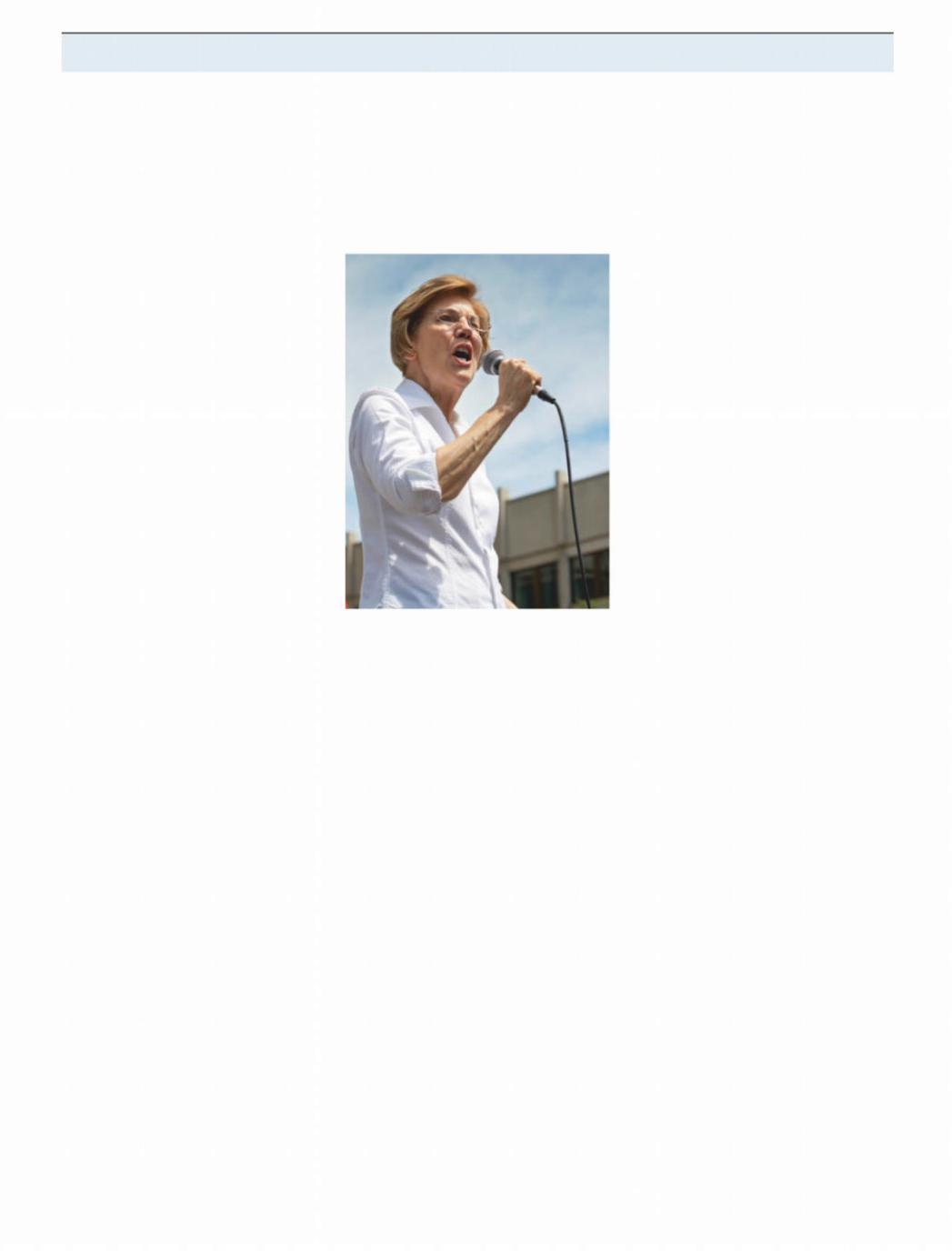
vk.com/id446425943 |
РЕЛИЗ ПОДГОТОВИЛА ГРУППА "What's News" VK.COM/WSNWS |
|
|
The Economist February 9th 2019 |
United States 23 |
The ideas primary
Warren’s world
W A S H I N GT O N , D C
Understanding Elizabeth Warren’s unusual brand of wonkish populism
lizabeth warren |
, the Massachusetts |
|
Esenator known best for railing against |
|
|
big banks and billionaires, was a registered |
|
|
Republican for a spell in the 1990s. It is an |
|
|
odd bit of biography for Mrs Warren, who is |
|
|
now running for president as a Democrat, |
|
|
and is routinely caricatured as the anti- |
|
|
capitalist Antichrist. Unlike Bernie Sand- |
|
|
ers, who proudly describes himself as a so- |
|
|
cialist, Mrs Warren has said she is “a capi- |
|
|
talist to my bones.” |
|
|
Government, she thinks, should be in |
|
|
the business of repairing market failures. |
|
|
She wishes to arrest inequality not just |
|
|
through redistribution, by boosting wel- |
|
|
fare and entitlement spending, but “pre- |
|
|
distribution”, which means rewriting rules |
|
|
that contribute to lopsided incomes in the |
|
|
first place. A brainy wonk with a populist |
|
|
edge, she has pumped out ideas that are at |
|
|
times brilliant, at others outlandish, but |
|
|
seldom half-baked or easily dismissed. |
Lizzie the riveter |
|
The best way to understand Mrs War- |
||
ren’s worldview is to examine her academ- |
|
|
ic work. Before she went to Washington, |
That book was a nod towards Mrs War- |
|
she was a law professor at Harvard (having |
ren’s future fixations. In it, she also intro- |
|
grown up working-class in Oklahoma) pre- |
duced her toaster analogy: no regulator |
|
occupied with the study of debt, credit and |
would allow the sale of a toaster with a one- |
|
bankruptcy. Her scholarship began as an |
in-five chance of burning down a house, |
|
exploration of middle-class financial in- |
yet there is no similar concern over mort- |
|
stability. She published research in the ear- |
gages with a one-in-five chance of wreck- |
|
ly 2000s revealing an extraordinary in- |
ing a family’s finances. This would become |
|
crease in bankruptcy filings—430% over |
the founding metaphor for the Consumer |
|
two decades—with many by middle-class |
Financial Protection Bureau, a federal |
|
families. Mrs Warren showed that the com- |
agency which was her brainchild and cata- |
|
bination of precarious family finances |
pulted her from academic obscurity to na- |
|
with poorly regulated markets created op- |
tional fame. |
|
portunities for predatory lending, says |
Since winning her Senate seat in 2012, |
|
Elisabeth Jacobs, the senior director for |
Mrs Warren and her sta have busied |
|
family economic security at the Washing- |
themselves publishing proposals on tax- |
|
ton Centre for Equitable Growth, a left- |
ation, corporate governance, lobbying, |
|
leaning think-tank. |
|
housing and health care. She proposes a |
In “The Two-Income Trap”, a book writ- |
wealth tax on those with fortunes above |
|
ten with her daughter in 2003, Mrs Warren |
$50m to stymie the growth of inequality |
|
explored the reasons for this. Even though |
and fund other programmes. Thomas Pi- |
|
more women were going to work, boosting |
ketty, the French economist who wrote |
|
household incomes, family finances were |
“Capital in the Twenty-First Century”, has |
|
increasingly fragile. Armed with second in- |
long advocated a similar policy. An accom- |
|
comes and deregulated credit instruments, |
panying analysis by Emmanuel Saez and |
|
these families bid up the cost of housing in |
Gabriel Zucman, two economists and col- |
|
areas near good schools, making them |
laborators with Mr Piketty, suggests that |
|
more vulnerable financially, rather than |
such a tax would raise $2.75trn over 10 |
|
less. Interestingly, one of her proposed sol- |
years. Their assumptions are probably too |
|
utions at the time was a universal school- |
rosy—the wealthy are good at avoiding tax- |
|
choice voucher to try to decouple housing |
es, and determining the size of fortunes is |
|
and schooling, an intriguing idea that |
trickier than tracking annual incomes. Mr |
|
would be less than welcome in contempo- |
Piketty’s native France has ditched its |
|
rary Democratic circles. |
|
wealth tax. |
To “predistribute” income Mrs Warren would give more economic power to workers, imitating German industry by letting workers elect at least 40% of the seats on corporate boards. Importing the German context of less adversarial labour relations would prove harder.
When it comes to fixing America’s health-care system—perhaps the industry most plagued by market failure—Mrs Warren is more cautious than some other prominent Democrats. She has o ered proposals to shore up the insurance exchanges set up under Obamacare. She has also put forward legislation which would inject competition into the generic-drugs market, which is rife with anti-competitive behaviour, by setting up a public manufacturer of drugs. Yet she also co-sponsored Mr Sanders’s “Medicare for all” bill, which would upend the American health system, transforming it into a single-payer model by eliminating private health insurance and rapidly increasing taxes. The two approaches cannot coexist. But paying fealty to left-of-centre slogans that stand little chance of becoming law may be the price of running in the Democratic primary.
Mrs Warren’s most intriguing plans concern housing. High rents in productive cities limit opportunity and economic growth. Fixing this with federal policy is di cult, since planning laws are so decentralised. Mrs Warren proposes to coax cities into changing restrictive development rules for a share of a large pot of money— $10bn in total—while also funding large public-housing developments. A paper by Mark Zandi, chief economist for Moody’s Analytics, claims that this could bring rents for low-income families down by 10%. She also wants the federal government to assist first-time homebuyers in formerly segregated neighbourhoods.
Warren peace
On matters of trade and foreign policy, Mrs Warren’s thinking is less sophisticated. She applies her domestic mantra—that market failure and corporate greed are the taproots of dysfunction—to international a airs, with peculiar results. If the American economy is rigged, then trade deals are meta-riggings of the global economy, crafted by multinational firms to weaken American labour relative to capital.
In a recent essay for Foreign A airs , M Warren sketched out a foreign-policy man-
ifesto of sorts. It includes standard stu for Democrats: a dislike of foreign entanglements and a suspicion that defence spending is inflated. But she also struggled to escape domestic concerns. Her bold new proposal is that “ foreignus policy should not prioritise corporate profits over American families”. Daniel Drezner, a professor at Tufts University, describes this as “Trumpism with a human face”. 7
http://new.guap.ru/i04/contacts
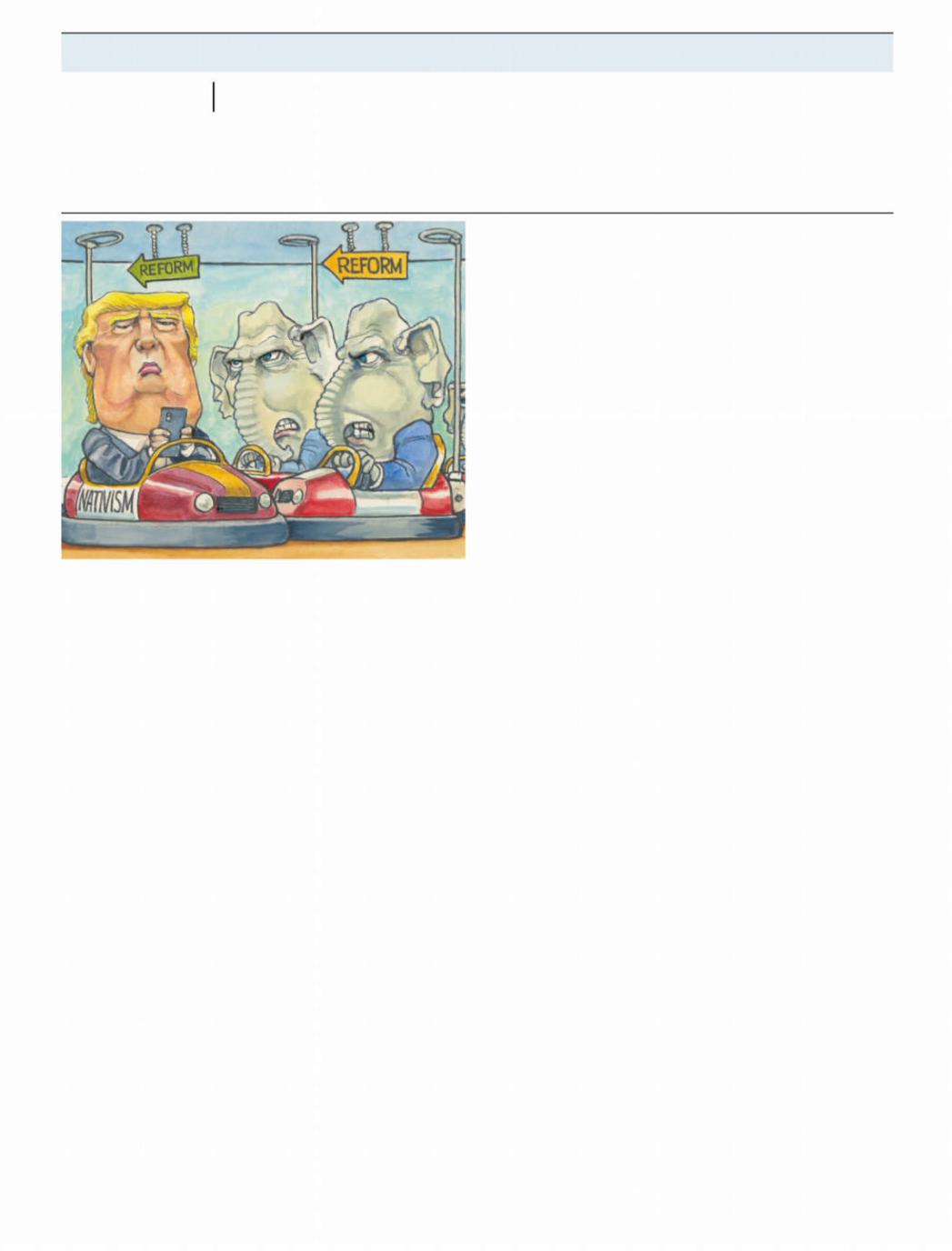
РЕЛИЗ ПОДГОТОВИЛА ГРУППА "What's News" VK.COM/WSNWS |
|
vk.com/id446425943 |
|
24 United States |
The Economist February 9th 2019 |
Lexington More chaos than change |
|
Donald Trump is the main barrier to the overdue revision of conservatism he once promised
In his second state-of-the-union address this week Donald Trump invited the Democrats to help him cut prescription-drug prices, provide paid family leave and splurge on infrastructure. Most commentators understandably viewed this plea for bipartisanship with scepticism. Shortly after last year’s speech the president accused Democrats of “treason” for failing to applaud him. Hours before this year’s he described Chuck Schumer, the Demo-
cratic leader in the Senate, as a “nasty son of a bitch”.
Yet the more remarkable thing about Mr Trump’s wishlist is how anathema its items, all signature promises of his election campaign, remain to the Republican establishment he has presided over for more than two years. In domestic policy, at least, the makeover of conservatism he promised, with his disdain for orthodoxy, flexible view of government and professed concern for the losers of globalisation who flocked to his rallies, has not happened. He needs Democrats to fulfil his heterodox promises mainly because the Republicans would not.
The same resistance to his populist socioeconomic agenda is apparent across the conservative intelligentsia. No important think-tank has taken it up. The grandiose American Enterprise Institute is still plugging away at the small governmentism its donors love. The once-mighty Heritage Foundation has become an uncritical cheerleader for the administration’s tax-cutting and nativism. One or two smaller centre-right shops are doing interesting work, for example the R Street Institute’s on organised labour. Yet instead of steering into Mr Trump’s agenda, they are tending to veer o it. Progress on the rethinking of Reaganite shibboleths that his campaign promised has been scattered and rare. The hoopla generated by a recent book on labour markets by Oren Cass of the Manhattan Institute, which made a conservative case for wage subsidies and other interventions to promote the dignity of work among strugglers, was both justified and indicative of this. It highlighted the broader lack of progress on what was predicted to be the major intellectual challenge posed by Trumpism. “It has not been a productive time,” concedes Yuval Levin, a scholar who is no fan of Mr Trump although a proponent of the ideological refresh that the president had appeared to want.
A comparison with past political realignments makes the low-
energy thinking of the Trump era even plainer. The Reagan revolution was fuelled by years of intellectual ferment and more or less scripted by Heritage. The case for Bill Clinton’s shift to the centre was made by the Progressive Policy Institute, his “idea mill”. Such examples emphasise how peculiar the Trump insurgency is. Reagan and Mr Clinton were messengers of a new politics that had already put down deep roots in their parties. Mr Trump, by contrast, caught most conservative thinkers unawares. At best they were therefore always going to take time to adjust to the questions he posed. Yet the reality has turned out to be much worse than that. Instead of fostering an overdue spirit of reform, in a party that has lost the popular vote in four of the past five presidential elections, Mr Trump has emerged as the main barrier to it.
This is most obviously because he ditched many of his iconoclastic ideas the moment he took o ce. Instead of the tax rise on high earners he promised, he backed a plutocratic tax cut. Instead of supporting universal health care, he tried to dismantle Obamacare. In part an exercise in self-preservation—because Mr Trump needs Republican leaders to instruct him and defend him against the investigations he faces—this ensured most learned nothing from his rise. Pre-Trump, the most powerful case for reform was proposed by a group known as reform conservatives that included Mr Levin, who argued that Republicans could not win without refreshing Reaganism. Mr Trump has o ered an even more powerful riposte to that. His method—campaign for the base, govern for the elite, and maintain unity through a mix of partisanship and nativist dog-whistling—has proved unpopular. Yet it gave Republican leaders a historic opportunity to pursue hard-right policies, which they will want to reprise, if necessary by the same means.
The intellectually chilling e ect of Mr Trump is even starker among those who actually wanted the sorts of populist revisions he once promised, the former “reformicons”. Presented with a choice of embracing Mr Trump’s disruption, nativist warts and all, or defending the unreformed status quo against nihilism, the group splintered. Some of its members, including the journalists David Frum and Ramesh Ponnuru, are prominent Never Trumpers. Meanwhile, those who have stuck by or close to Mr Trump have been tarnished. Marco Rubio, a shy reformicon during the 2016 Republican primary, has to his credit doubled down: he is a rare Republican fan of paid family leave. Yet the senator’s e orts to defend Mr Trump—including over his policy of locking up immigrant children—has damaged his credibility with nonpartisans without obviously boosting his arguments for reform among Republicans.
No wonder many conservative thinkers prefer to avoid the administration altogether. “Trump has made whole areas of policy radioactive,” says Stuart Butler, a scholar at the Brookings Institution who, while at Heritage during the 1980s, was involved in developing Reaganism. His response is to focus on state government and other areas where Mr Trump is absent.
Making Rubes of them
By stifling and discrediting the most interesting aspects of his own agenda, Mr Trump risks causing his party long-term damage. His combination of tax cuts and border walls is a losing strategy that the next Republican presidential nominee is nonetheless likely to pursue. The absence of much new thinking on the centre-right alone suggests that. What a wasted opportunity it is. Were it not for Mr Trump, reform-minded conservatives would probably be cutting a far more Trumpian path (loosely defined) than they are now. Their petrified ideology would be better for it. 7
http://new.guap.ru/i04/contacts
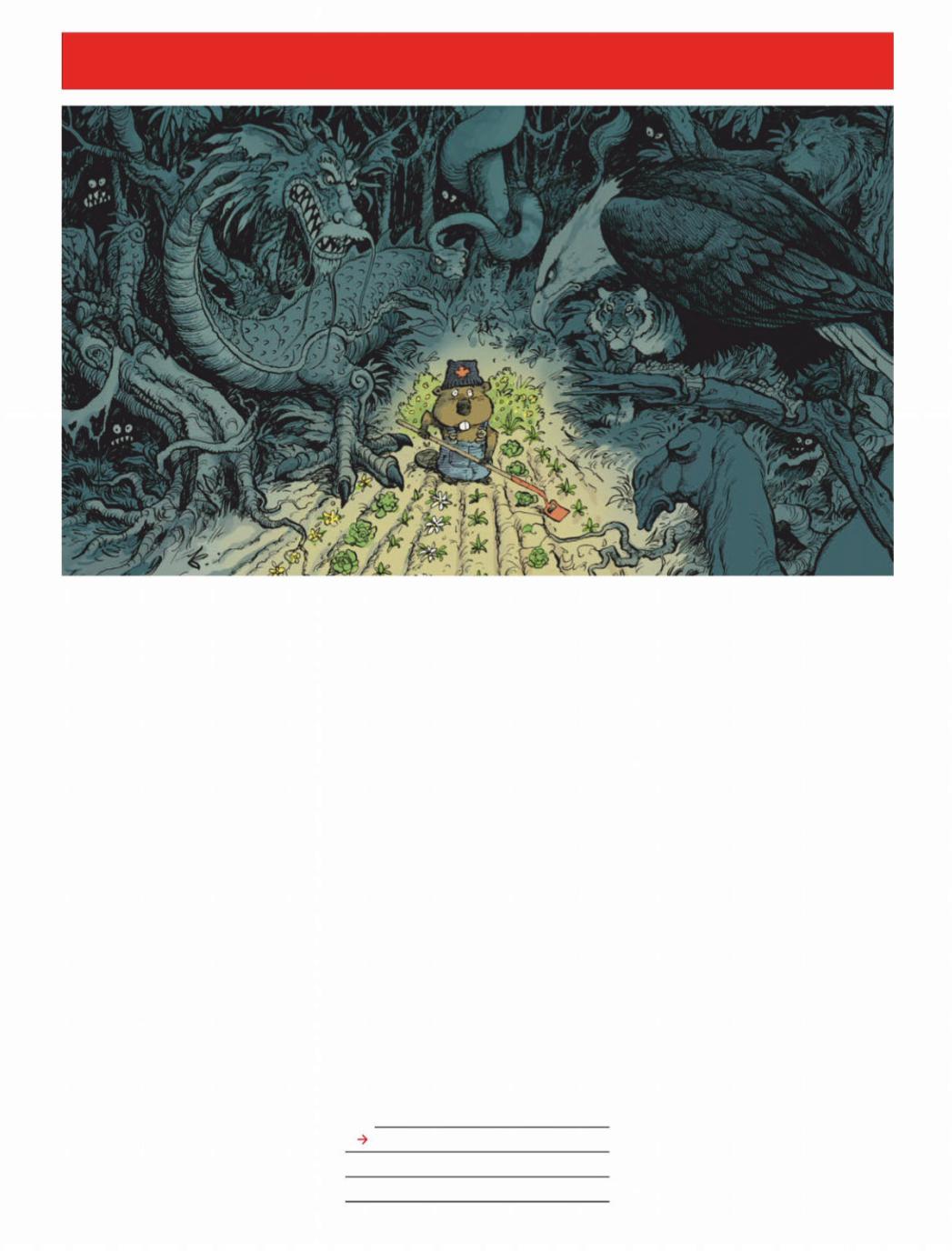
vk.com/id446425943
The Americas
РЕЛИЗ ПОДГОТОВИЛА ГРУППА "What's News" VK.COM/WSNWS
The Economist February 9th 2019 25
Canada’s foreign policy
The jungle closes in
O T TA W A
A mid-sized democracy copes with a forbidding new habitat
On february 4th Canada was among friends. It hosted a meeting of the Lima group of a dozen countries, most of them Latin American, that are trying to find a solution to the crisis in Venezuela (see Bello). Justin Trudeau, Canada’s prime minister, pledged C$53m ($40m) in humanitarian aid. This is how Canada likes to conduct diplomacy, as an enthusiastic member of a team of countries that can accomplish more together than they would separately. It “exemplifies the approach we are taking around the world”, says Chrystia Freeland,
Canada’s foreign minister.
That approach is out of fashion. Under Donald Trump the United States belittles allies and undermines international institutions it had helped build. Undemocratic China and Russia throw their weight around. Canada is unhappy. The United States, its biggest trading partner by far, has slapped tari s on Canadian steel and aluminium exports, preposterously citing “national security”. China, which ought to be a promising economic partner, is punishing Canada for arresting a Chinese executive at the behest of American prosecu-
tors. China has arrested two Canadian citizens and sentenced another to death for drug-tra cking. “I can’t recall a government that has had to deal with so much geopolitical flux and an erratic us ally,” says Andrea Charron, a security specialist at the University of Manitoba.
Canada’s instinct is to redouble its commitment to old principles rather than to adopt new ones. It remains a vocal defender of human rights, which pleases idealists but annoys despots. Ms Freeland says that one of her favourite new books is Robert Kagan’s “The Jungle Grows Back: America and our Imperilled World”, a gift from Germany’s foreign minister, Heiko Maas. It argues that jungle-like chaos is taking over the ordered garden created by the United States. Ms Freeland believes that Canada must fend it o as best it can. “The rulesbased international order is powerfully in
Also in this section
26 A win for Jair Bolsonaro
28 Bello: The Venezuelan dinosaur
our national self-interest,” she says. Canada’s Liberal government is there-
fore sticking with the foreign policy it adopted when it took o ce in 2015, but tweaking it to take account of Mr Trump’s unpredictability. It has three main elements: to work with like-minded countries to shore up multilateral institutions; to invest more in the armed forces; and to diversify trade. The question is how well this will work in a jungle-like world.
Since its founding as a confederation in 1867, Canada has sheltered under the protection of a superpower, first Britain and then the United States. At first, Canada resisted American influence. Confederation and the construction of the Canadian Pacific railway were attempts to avoid being swallowed whole. After 1988, when Canada signed a free-trade agreement with the United States (replaced in 1994 by the North American Free Trade Agreement, or nafta ), resistance to American influence weakened. Relations with the United States became so cosy that Canadian diplomats referred to them as “intermestic”, a cross between international and domestic.
“You don’t know what you’ve got till it’s gone,” sighs Ms Freeland, quoting a song by Joni Mitchell. Tensions began after the terrorist attacks in New York on September 11th 2001, when the United States tightened border controls. This dramatically slowed trade. They got worse with Mr Trump’s tari s, which Mr Trudeau called “insulting”, and his demand for the renegotiation of nafta . The United States first struck a deal1
http://new.guap.ru/i04/contacts
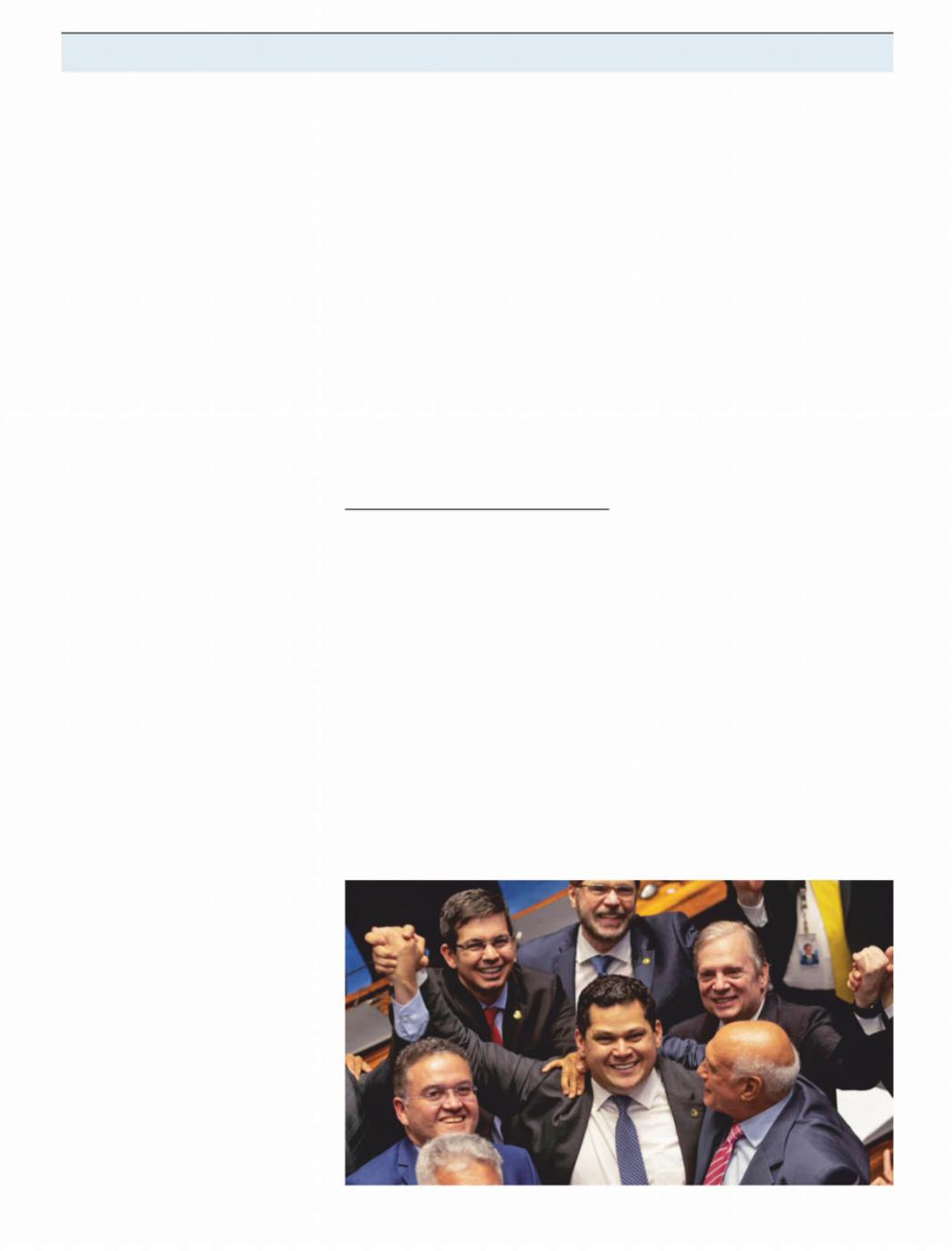
РЕЛИЗ ПОДГОТОВИЛА ГРУППА "What's News" VK.COM/WSNWS
vk.com/id446425943
26 The Americas |
|
|
|
|
|
The Economist February 9th 2019 |
|||
2 with Mexico, |
nafta |
’s third partner, whtionsch with China are in a deep freeze. India, |
tors declared their voting intentions on |
||||||
Canada reluctantly accepted. |
|
another potential partner, has turned |
Twitter, where the hashtag #RenanOut was |
||||||
Foreign-policy bo ns once fantasised |
frosty, in part because it believes that Mr |
trending. In one vote, the 81 senators mys- |
|||||||
about setting a truly independent course |
Trudeau does not take seriously the threat |
teriously cast 82 ballots. Realising he |
|||||||
for Canada, but that now seems unrealistic. |
to it from Punjabi separatists, some of |
would lose, Mr Calheiros dropped out. |
|||||||
Few small countries succeed when they |
whom live in Canada. |
|
This was a victory for Brazil’s populist |
||||||
spurn their neighbours, notes Margaret |
Canada’s quest for new friends has not |
president, Jair Bolsonaro, who won an elec- |
|||||||
MacMillan, a historian. The main example |
been helped by its defence of human rights |
tion in October by campaigning against |
|||||||
of a neighbour that has tried to break free of |
and the rule of law. It irritated Saudi Arabia |
such leaders of the establishment as Mr |
|||||||
the United States’ influence is not an en- |
last August by demanding the release of |
Calheiros. No one can accuse the senate’s |
|||||||
couraging one: Cuba, which allied with the |
two women’s-rights activists and again in |
new president, Davi Alcolumbre (pic- |
|||||||
Soviet Union and is now a dictatorship |
JanuarybygivingasylumtoaSaudiwoman |
tured), of being that. The 41-year-old first- |
|||||||
with skimpy rations. |
|
|
fleeingherfamily. Inretaliation,SaudiAra- |
time senator (elected in 2014) has a long po- |
|||||
One partial answer to Canada’s predica- |
bia’s crown prince ordered Saudi students |
litical history in Amapá, another poor |
|||||||
ment would be to spend more on defence, a |
to leave Canada. Polls show that Canadians |
north-eastern state, but is barely known |
|||||||
longstanding American demand that Mr |
want their government to stand up for hu- |
outside it. His party, the Democrats, sup- |
|||||||
Trump is especially keen on. Canada has |
man rights, says Ms Freeland. Russia has |
ports the government. Rodrigo Maia, the |
|||||||
raised military spending, from C$23.9bn in |
barred her from visiting since 2014 because |
new speaker of the lower house of con- |
|||||||
the 2015-16 |
fiscal |
year |
to an |
expected |
she criticised its seizure of Crimea and |
gress, is also a member. Three Democrats |
|||
C$27.6bn this year. But that is just 1.2% of |
warmongering in other parts of Ukraine. |
are ministers. Mr Alcolumbre’s elevation is |
|||||||
gdp , well short of the target of 2% that |
She seems undeterred. Canada has little |
thus a good omen for the conservative so- |
|||||||
members of |
natohave set themselves. The |
choice but to defend the international or- |
cial policies and liberal economic reforms |
||||||
fiscal deficit is not much smaller than the |
der, Ms Freeland says. “The law of the jun- |
that Mr Bolsonaro says he wants to enact. |
|||||||
defence budget, which means that Canada |
gle does not work for Canada.” 7 |
These include cuts to the growth of Brazil’s |
|||||||
is unlikely to step up expenditure quickly. |
|
|
absurdly generous pensions. |
||||||
Demands on that spending, however, |
Brazil |
|
But the senate rebellion is also a sign of |
||||||
will rise rapidly. Climate change, which is |
|
the risks the government could face if it |
|||||||
warming the Arctic at a faster rate than |
Davi v Goliath |
loses public support. Mr Alcolumbre be- |
|||||||
southern Canada, has opened new waters |
longs to the “lower clergy” of backbench |
||||||||
to shipping. This is creating a new coast for |
|
|
congressmen, as did Mr Bolsonaro before |
||||||
Canada to defend. Last year the army start- |
|
|
he became president. They have gained in- |
||||||
ed issuing new |
c -19 rifles to 5,000 Canadi- |
|
fluence as grandees like Mr Calheiros have |
||||||
an Rangers, a reserve unit that patrols the |
B R A S Í L I A |
|
been tainted by scandals. That makes them |
||||||
Arctic. They replace Lee-Enfield bolt-ac- |
|
less inclined to take direction from leaders |
|||||||
Jair Bolsonaro scores a victory in the |
|||||||||
tion rifles of the sort used by Britain in the |
of their parties. “The rules of the game have |
||||||||
new congress |
|
||||||||
second world war. Such upgrades are un- |
|
changed,” says Simone Tebet, a senator |
|||||||
|
|
||||||||
likely to arrest the United States’ drift away |
rasília is full |
of secrets. Normally,from the southern state of Mato Grosso do |
|||||||
from its established allies. |
|
Bone of them is how senators vote when |
Sul. Although she belongs to the same |
||||||
Rather than sue for divorce, Canada is |
they elect the president of their chamber. |
party as Mr Calheiros, the Brazilian Demo- |
|||||||
trying to widen its circle of friends. Ms |
On February 2nd they delivered a shock. |
cratic Movement, she voted against him. |
|||||||
Freeland hopes that coalitions of countries |
The favourite for the job was Renan Calhei- |
Many members of the lower clergy are |
|||||||
committed to international institutions, |
ros, who had won it four times. A skilled |
new to congress. Roughly half of legislators |
|||||||
such as |
the |
World Trade Organisation |
dealmaker from the north-eastern state of |
are serving their first terms. They tend to be |
|||||
(wto ), can protect them in the face of indif- |
Alagoas, he faces probes into allegations of |
more loyal to their Twitter followers than |
|||||||
ference or hostility from the United States. |
graft, which he denies. His candidacy pro- |
to their party leaders. Felipe Rigoni, Brazil’s |
|||||||
It belongs to a group of countries trying to |
voked two days of tumult, with shouting |
first blind congressman, says that he will |
|||||||
fix the |
wto ’s |
dispute-resolution proceandshoving in the chamber. Some sena- |
support Mr Bolsonaro’s plans to reform1 |
||||||
dures in ways that will allay American ob- |
|
|
|
||||||
jections to them. But such tactics face long |
|
|
|
||||||
odds. “I don’t think middle powers can sus- |
|
|
|
||||||
tain the world order without major players |
|
|
|
||||||
for very long,” says Roland Paris, a former |
|
|
|
||||||
foreign-policy adviser to Mr Trudeau. “But |
|
|
|
||||||
they could slow the decay.” |
|
|
|
|
|||||
Canada’s decades-old aspiration of re- |
|
|
|
||||||
ducing its economic dependence on the |
|
|
|
||||||
United States has made progress recently. |
|
|
|
||||||
In 2016 the government signed a free-trade |
|
|
|
||||||
deal with the European Union and last year |
|
|
|
||||||
it signed one with ten other Pacific coun- |
|
|
|
||||||
tries, including Japan. With the |
nenafta |
|
|
||||||
gotiations in the balance in July, Mr Tru- |
|
|
|
||||||
deau signalled Canada’s ambitions for |
|
|
|
||||||
more such agreements by changing the |
|
|
|
||||||
trade minister’s title to minister for inter- |
|
|
|
||||||
national trade diversification and appoint- |
|
|
|
||||||
ing Jim Carr, a politician from Manitoba, to |
A giant-killer in Brasília |
|
|
||||||
the job. He will not have an easy time. Rela- |
|
|
|||||||
http://new.guap.ru/i04/contacts

РЕЛИЗ ПОДГОТОВИЛА ГРУППА "What's News" VK.COM/WSNWS
vk.com/id446425943
Free Retirement Planner
“How far will $ 1,000,000 get me when I retire?”
1 |
4 |
When can I retire |
What if I |
comfortably? |
retire earlier? |
Assess your |
Find out how |
readiness here |
different scenarios |
|
play out |
2 |
5 |
What impact |
How much money |
will Social |
will I have to spend |
Security have? |
each month? |
Add income events |
Make sure you |
to explore answers |
have enough |
3 |
6 |
What if something |
Can I afford |
unexpected happens? |
that splurge? |
You can prepare |
Plan for big |
for that too |
expenses |
Got questions? Our FREE Retirement Planner has answers.
Free tools are the first step to smart wealth management. Our insight-driven wealth advisors are here to help you chart your course to a comfortable retirement. If you prefer to go it alone,
our online tools are always yours to use for free.
Available on web & mobile * |
Try our FREE |
planner now! |
Plus! Get this FREE Guide
A whole new way to manage your money
START NOW WITH |
personalcapital.com/ECON29 |
|
Free Tools |
||
|
All graphics in this communication are for illustrative purposes only and do not represent an actual user experience. Personal Capital Advisors Corporation is a registered investment advisor with the Securities Exchange Commission (“SEC”). Any reference to the advisory services refers to Personal Capital Advisors Corporation. SEC Registration does not imply a certain level of skill or training. Past performance is not a guarantee
of future returns, nor is it necessarily indicative of future performance. Keep in mind investing involves risk. © 2018 Personal Capital Corporation.
All Rights Reserved.
http://new.guap.ru/i04/contacts
COSTLY |
MISTAKES |
|||
TO |
|
|||
|
AVOID |
|||
VOLATILE |
IN A |
|||
MARKET |
||||
|
|
|
||
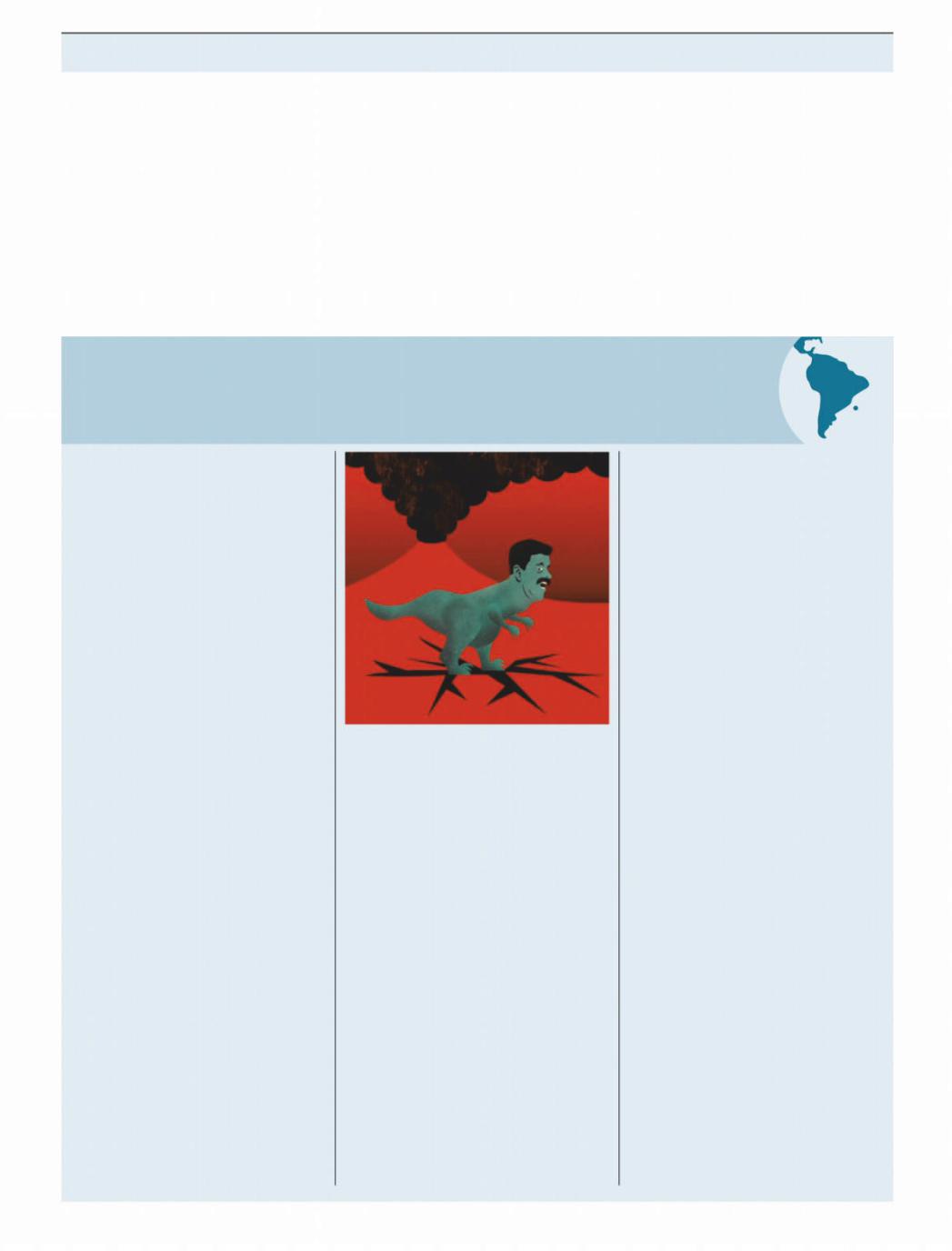
vk.com/id446425943 |
РЕЛИЗ ПОДГОТОВИЛА ГРУППА "What's News" VK.COM/WSNWS |
|
|
28 The Americas |
The Economist February 9th 2019 |
2 pensions even though fellow members of the opposition Brazilian Socialist Party are likely to oppose them. They “are more blind than I am”, he says.
In the new congress, “public opinion will be the key driver of legislative dynamics in a way it wasn’t before,” says Chris Garman of Eurasia Group, a consultancy. For now that favours Mr Bolsonaro, who has an approval rating of nearly 70%. That improves the odds that his two big policies, pension reform and a crackdown on crime and corruption, will get through congress.
Until now, Mr Bolsonaro has been reluc-
tant to curb pension spending, even though it crowds out other public spending and slows economic growth. But on February 4th details of an ambitious proposal leaked to the press. Share prices surged.
Mr Bolsonaro is more gung-ho about the crime-fighting bit of his agenda, as are most Brazilians. On February 4th the justice minister, Sérgio Moro, presented his plans, which include tougher punishments for some criminals and milder ones for police who kill in the line of duty. That was well received. The hashtag #MoroinAction spread on Twitter.
But public acclaim is fickle. One threat to it comes from investigations of people who served on the sta of Mr Bolsonaro’s son, Flávio, who was a state congressman in Rio de Janeiro and is now a senator. His driver and aide, Fabricio Queiroz, is under scrutiny for receiving 7m reais ($1.9m) in unexplained money transfers and for hiring the mother and wife of a fugitive former police o cer accused of leading a criminal militia. He denies wrongdoing. If this scandal spreads, the government may yearn for the days when congressmen toed the party line. 7
Bello The dinosaur is still there
The foundations of Venezuela’s regime are cracking but not collapsing
It is a fortnight since Juan Guaidó, the young speaker of the national assem-
bly, proclaimed himself Venezuela’s caretaker president, triggering a coordinated push to topple the dictatorship of Nicolás Maduro. Hundreds of thousands of Venezuelans have demonstrated for that. More than three dozen countries, mainly in the Americas and Europe, have recognised Mr Guaidó’s putative government on the grounds that Mr Maduro’s second term, which began last month, is the product of a fraudulent election. The United States has imposed sanctions on Venezuela’s oil industry.
The hope is that all this will persuade the armed forces to withdraw their support from Mr Maduro. Some o cers, including two air-force generals, have backed Mr Guaidó. But so far the high command has stayed loyal. Mr Maduro is defiant. “The coup d’état they wanted has failed and they haven’t noticed,” he said on February 2nd. The longer this stand- o lasts, the greater the risks. One is that a frustrated American administration turns to military force, something that Donald Trump this month said remains “an option”. The other is that Mr Maduro survives in o ce, but rules a wasteland.
The strategy of Mr Guaidó and the Trump administration is broadly backed by the Lima group of Latin American countries and Canada, and by much of the European Union. It combines a carrot, a stick and a conjuring trick, all aimed at persuading Venezuela’s army to flip. The carrot is an amnesty, approved by the national assembly, for military and civilian personnel who act “in favour of the restitution of democracy”.
The stick is American sanctions aimed at asphyxiating Mr Maduro’s regime economically. The United States was almost the only cash payer for Vene-
zuelan oil. The administration has set April 28th as a deadline for Americans to cease dealings with Venezuela’s state oil monopoly. Until then, it will divert payments for oil to an account reserved for a future democratic government. The sanctions are biting: several dozen oil tankers are idling o Maracaibo, Venezuela’s oil
capital, reports the Wall Street Journal The conjuring trick is to act as if Mr
Guaidó were running the country. The Trump administration largely ignored Mr Maduro’s rupture of diplomatic relations. It is now organising humanitarian aid for Venezuela’s impoverished population. The Americans are delivering food to a collection point at Cúcuta, a Colombian city close to the Venezuelan border. Mr Maduro rejects this, saying “we are not beggars.” Marco Rubio, a Republican senator who influences Mr Trump’s policy, hopes this will force the army to choose “to either help food and medicine reach people, or help Maduro instead”. The army has reportedly blocked the first shipments.
What happens if Mr Maduro doesn’t fold? He still has support: from Cuba,
Russia and Turkey, as well as from the military commanders. Some in Venezuela still believe in his tropical socialism. Others stay loyal out of fear, or because they have enriched themselves through corruption. His opponents have long underestimated his regime’s determination to cling to power. Some outsiders worry that there is too much stick and not enough carrot: by ending military co-operation with Venezuela, Lima group members have closed a channel of communication with the high command. (Brazil’s army has not followed its government in this.) The sanctions will hasten the economy’s collapse, prompting more Venezuelans to emigrate.
Mr Maduro’s opponents have no credible Plan B. “There’s an idea that you hear a lot in Washington that it’s now or never,” says Michael Shifter of the InterAmerican Dialogue, a think-tank. “My concern is whether they’ve boxed themselves in.” Almost nobody in Latin America wants military action. The risk of it prompted the toeuset up a “contact group”. to facilitate “a peaceful and democratic solution”. Many well-mean- ing outsiders call for a compromise, in which Mr Maduro’s government plays a role in achieving a free presidential election. That is a wonderful illusion. Mr Maduro was o ered such a deal last year and rejected it. The national assembly rejects “any talks or contact group that prolong the su ering of the people”.
Venezuela has the makings of a broader international crisis. Subjected to such sustained financial pressure, Mr Maduro could buckle any day. But he might not. For now, the Venezuelan people’s plight recalls a one-line short story by Augusto Monterroso, a Guatemalan writer: “When he woke up, the dinosaur was still there.”
http://new.guap.ru/i04/contacts
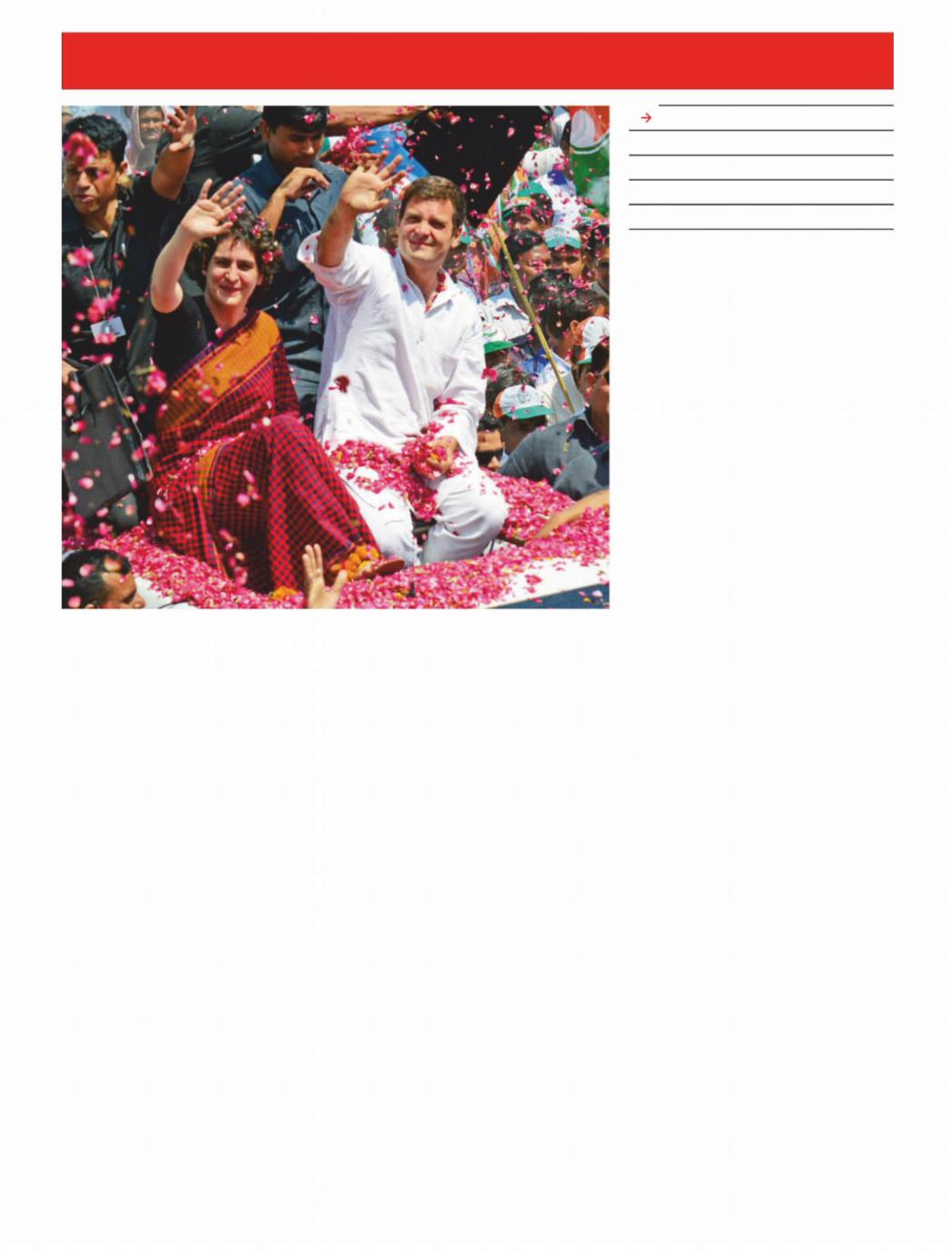
РЕЛИЗ ПОДГОТОВИЛА ГРУППА "What's News" VK.COM/WSNWS
vk.com/id446425943
Asia
The Economist February 9th 2019 29
Also in this section
30Military service in South Korea
31Turmoil in Thai politics
31Facial fashions in Pakistan
32Banyan: Japan’s lost islands
Indian politics
The can-do Gandhis
D E L H I
The Congress party has gained an unexpected new lease on life
run shourie, a former cabinet ministhe bjp had campaigned with a promise to |
|
Ater and acid-tongued pundit, once dis- |
create a ministry for bovine a airs, Con- |
missed India’s ruling Bharatiya Janata |
gress has gone further. One of its first acts |
Party ( bjp ) as “Congress plus a cow”. Bywas to announce a $63m programme to
equating prime minister Narendra Modi’s |
build some 1,000 cow shelters across all 52 |
||
Hindu nationalists with their secular ri- |
districts of the state. “They talked the talk |
||
vals, he was implying that, since both of In- |
but we walk the walk,” says Jyotiraditya |
||
dia’s biggest parties share such traits as |
Scindia, an |
frommp the state who is also |
|
cronyism and paternalist economics, all |
the party’s chief whip. |
||
that really distinguishes the |
is its disbjp- |
|
|
plays of piety, such as reverence for cows. So it may have come as some surprise to
three Muslim residents of Kharkali, a tiny hamlet in the state of Madhya Pradesh in central India, when a court on February 4th threw them in jail on suspicion of slaughtering a cow. The surprise was not just that the police had invoked the draconian National Security Act, which allows a year’s detention without charge. It was that while bjp -run states are best known for enforcing “cow protection” laws, Madhya Pradesh is no longer run by the bjp . Two months ago its voters brought the ostensibly more liberal Congress back to power. Yet whereas
conservative Hindus—such as plans to erect a temple to the god Ram on the site of a mosque demolished by Hindu fanatics in 1992, or a recent court ruling that ended a ban on women worshippers at a Hindu temple in Kerala state—Congress has remained conspicuously mum.
This shift has accelerated since Rahul Gandhi, Nehru’s great-grandson, replaced his mother, Sonia Gandhi, as Congress’s leader in late 2 017though.Al the 48-year- old Mr Gandhi’s sudden penchant for being photographed visiting Hindu temples has been the butt of jokes, the overall strategy seems to be working. Five years ago Mr Modi humiliated Congress, stripping its share in the Lok Sabha, the lower house, to a dismal 44 of 545 seats—its worst-ever showing. In state elections the bjp made further inroads, whittling Congress’s share of state governments to just three out of India’s 36 states and territories. Some pundits opined that Mr Modi just might fulfil his boast of making India “Congress free”.
But the 133-year-old party has bounced back smartly in recent months. In December, to the surprise of its own cadres, Congress won control of three large states in the Hindi-speaking heartland that has long been seen as a strongholdbjp . This show of resilience, combined with growing signs of disenchantment with Mr Modi, has tipped the party’s fortunes markedly. In the press and on social media, where the had un-bjp til recently maintained a dominant voice,1
http://new.guap.ru/i04/contacts

vk.com/id446425943 |
РЕЛИЗ ПОДГОТОВИЛА ГРУППА "What's News" VK.COM/WSNWS |
|
|
30 Asia |
The Economist February 9th 2019 |
2 Mr Gandhi is far less often portrayed as an |
Military service in South Korea |
|||
immature crown prince. Mr Modi, despite |
Blessed are the |
|||
remaining a masterly showman and wield- |
||||
ing an intimidating party machine, is no |
peacemakers |
|||
longer above criticism. |
|
|
||
Although polls in India are notoriously |
|
|||
unreliable, the trend over the past year is |
S E O U L |
|||
clear. The number of seats the |
|
|||
is probjp |
||||
jected to win in the Lok Sabha has shrunk |
The Supreme Court gives conscientious |
|||
objectors a reprieve |
||||
by around a third. It seems unlikely to re- |
||||
|
||||
tain its current outright majority. Congress |
im jae-sung is a mild-mannered lawyer |
|||
is predicted to triple its share. This would |
Lin his thirties with a fondness for mono- |
|||
still leave it with fewer than 200 seats, a |
grammed shirts and human-rights cases. |
|||
smaller tally than the |
bjp . But CongressOwinghas to South Korea’s strict military-ser- |
|||
a long history of corralling smaller regional |
vice laws, he is also a convicted criminal |
|||
parties into broad coalitions. “Who would |
with a prison record. Mr Lim refused to |
|||
want to ally with Modi?” asks Mr Scindia. |
serve in the army after becoming involved |
|||
“Congress has much more the characteris- |
with the anti-war movement sparked by |
|||
tics of a party around which divergent al- |
the dispatch of South Korean troops to Iraq |
|||
lies can unite.” |
|
|
in 2003. When a court sentenced him to a |
|
As for whom voters would rather see as |
year and a half in jail, his parents kept it se- |
|||
prime minister, polls over the past two |
cret from their friends to avoid bringing |
|||
years show Mr Modi’s lead over Mr Gandhi |
shame on the family. He told his grandpar- |
|||
slipping steadily, from a walloping 43 per- |
ents that he was going to spend some time |
|||
centage points to just 12. Since the most re- |
in China. “It would have been too di cult |
|||
cent poll Mr Gandhi has received another |
to explain,” he says. |
|||
boost, with the enlistment of his sister Pri- |
To future generations of South Korean |
|||
yanka as a campaign manager in Uttar Pra- |
men, Mr Lim’s story may come to sound |
|||
desh, the most populous and politically |
like a quaint tale from the ancient past. In |
|||
important state (the siblings are pictured |
November the country’s Supreme Court |
|||
on the previous page, during the election of |
ruled that it was not a crime to refuse mil- |
|||
2014). Although it is unclear whether Ms |
itary service for reasons of religion or con- |
|||
Gandhi will shift many votes, her star sta- |
science, voiding its own near-unanimous |
|||
tus will certainly grab attention from Mr |
ruling from 2003, which had found just the |
|||
Modi, who has grown used to unstinting |
opposite. Prosecuting people for conscien- |
|||
and adulatory press coverage. |
|
tious objection and sending them to pri- |
||
But it is not just the Gandhis’ glamour or |
son, the judges said this time, violated ba- |
|||
Congress’s new, cow-friendly look that has |
sic rights and went against the spirit of |
|||
improved its prospects. Despite a reputa- |
“liberal democracy, tolerance and magna- |
|||
tion for taking frequent holidays, Mr |
nimity”. Courts across the country, which |
|||
Gandhi has proved an energetic manager. |
had already become increasingly reluctant |
|||
Crucially, too, he has delegated wisely, and |
to convict conscientious objectors, have |
|||
refrained from micro-managing at the lo- |
since thrown out pending cases en masse. |
|||
cal level. “The most interesting new dy- |
|
|||
namic in Congress is that they show more |
|
|||
deference to state leaders,” says Milan |
|
|||
Vaishnav of Carnegie, a think-tank, noting |
|
|||
that the trend marks a contrast to the in- |
|
|||
creasing centralisation of power in the |
bjp |
|||
under Mr Modi. |
|
|
|
|
Mr Gandhi timed a bold campaign pro- |
|
|||
mise to provide all Indians with a mini- |
|
|||
mum guaranteed income just days before |
|
|||
the government released its budget on Feb- |
|
|||
ruary 1st. This made the varied sops it con- |
|
|||
tained to farmers, taxpayers and others |
|
|||
look puny by comparison. Disgruntled o - |
|
|||
cials made matters worse by claiming that |
|
|||
the government was suppressing dire un- |
|
|||
employment data. Few Indians believe the |
|
|||
promises of either Mr Gandhi or Mr Modi, |
|
|||
and as the campaign escalates, they will be- |
|
|||
lieve even less. But whereas the prime min- |
|
|||
ister cannot truthfully be said to have |
|
|||
brought India the |
achcheor gooddin times |
|
||
that he promised voters in 2014, his upstart |
|
|||
rival does not yet have a record of broken |
Now he has a choice |
|||
vows to disappoint them with. 7 |
|
|||
The Supreme Court ruling overturned the conviction of a conscientious objector who was a Jehovah’s Witness—a member of a pacifist religious group. But many South Koreans question military service. All men (women are exempt) are required to enlist. They must serve between 21 and 24 months before they turn 29, although the current government has moved to shorten the duration of service.
Conscripts are forced to live in barracks far from home, with unpredictable leave and little contact with the outside world. Earlier this year the use of mobile phones was legalised—but only after 6pm. Hazing and other abuses are rife. “I worried that the violent atmosphere would turn me into a violent person, someone who is happy to beat other people,” says Lee Yong-suk, a conscientious objector who now runs a pacifist ngo . Before the verdict, the United Nations Human Rights Council had repeatedly called on South Korea to o er a “reasonable” alternative to military service.
Such demands are not yet widely accepted in South Korea. Four of the 13 Supreme Court judges hearing the case voted against decriminalising conscientious objection. They cited the “severe security situation” and argued that it was impossible to tell if objectors were sincere or merely shirking. It is not only conservative types who see military service as a patriotic duty in a country which is technically still at war with North Korea, its nuclear-armed totalitarian neighbour. Many fear that lots of conscripts would give the armed forces a miss if there were any alternative.
At the moment, only a few dozen men defy the draft each year, most of them Jehovah’s Witnesses. Two-thirds of Koreans say they do not understand why anybody would refuse to serve in the army, which is still widely regarded as a rite of passage for young men. And even though conscientious objection is no longer illegal, it will still be up to the courts to assess the sincerity of any professed pacifist. That leaves judges plenty of leeway to compel conscripts to serve. Some prosecutors have cited a fondness for shoot-em-up video games as evidence that an objector’s principles were feigned. Moreover, the alternative to military service that the defence ministry has cooked up is to spend three years working as a prison guard.
Still, the verdict will help make conscientious objection more acceptable. Activists hope that it may also make life less miserable for those who continue to join the army. “If people have a choice, the army will have to work harder to make military service bearable,” says Mr Lee. For now, his fellow pacifists will continue to face criticism. They may even still go to prison. But at least they will be guarding the cells, not occupying one. And it should be easier to tell their grandparents about it. 7
http://new.guap.ru/i04/contacts
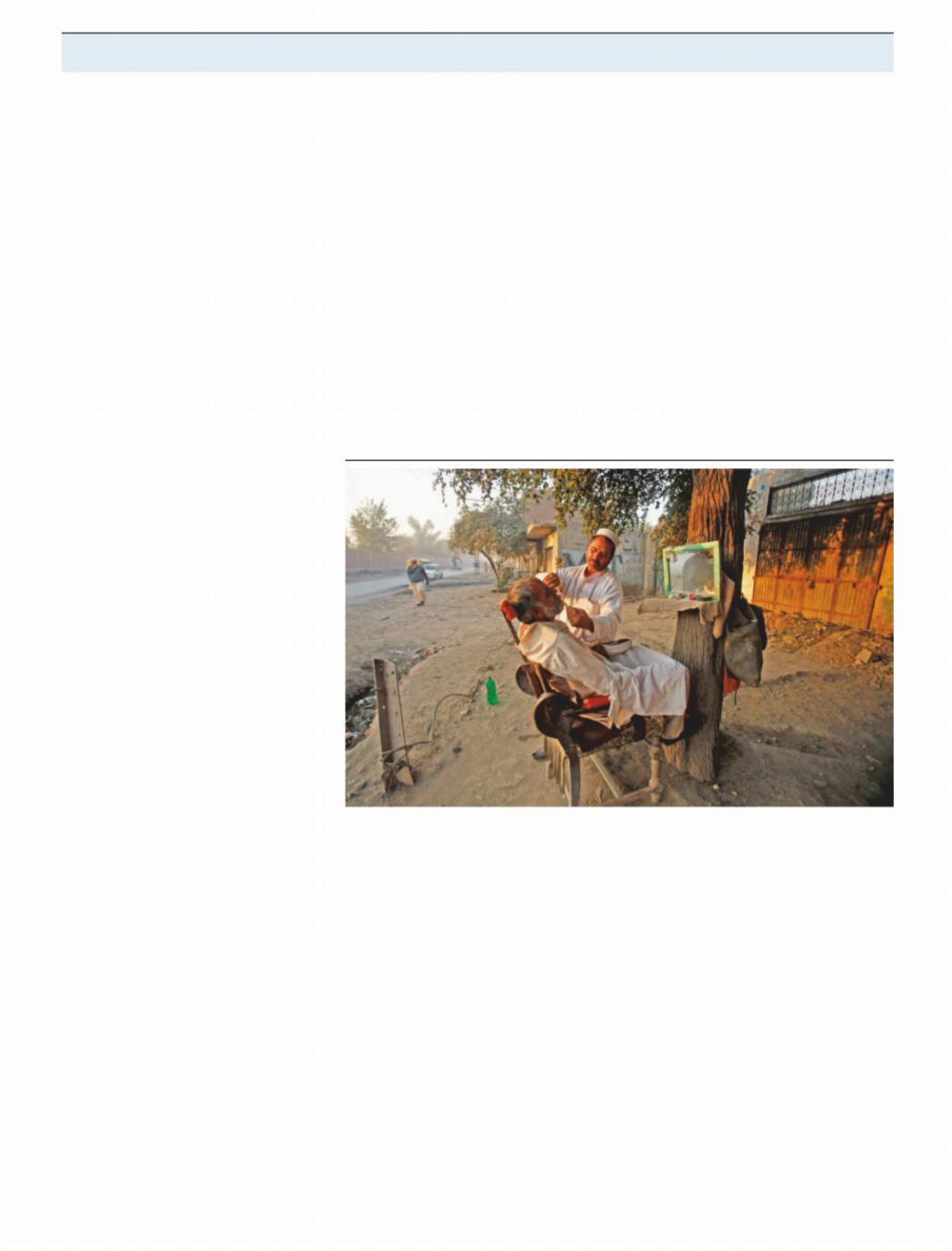
РЕЛИЗ ПОДГОТОВИЛА ГРУППА "What's News" VK.COM/WSNWS
vk.com/id446425943
The Economist February 9th 2019
Politics in Thailand
The princess and the PM
B A N G KO K
A royal rumour upends politics
Is thai politics about to turn upside down? For almost 20 years an endless political battle has pitted royalist elites, known as “yellow shirts”, against partisans of a populist former prime minister, Thaksin Shinawatra, known as “red shirts”. Parties linked to Mr Thaksin have won every election since 2001; the army has twice ousted Thaksinite governments in coups, most recently in 2014. Although the ruling junta is theoretically restoring democracy via an election on March 24th, the process was looking stage-managed to preserve the generals’ sway and keep Mr Thaksin at bay. But the royal family is contemplating a move that could upend the generals’
schemes and rehabilitate Mr Thaksin.
As The Economist went to press, each Thai political party was finalising a list of up to three choices for prime minister that it must register by law by February 8th. Thai Raksa Chart, a party founded by allies of Mr Thaksin in case his main vehicle, the Pheu Thai party, were to be dissolved by the junta, was preparing to nominate Princess Ubolratana, the older sister of King Vajiralongkorn, pending approval from all concerned. The princess is a friend of Mr Thaksin, but also on good terms with her brother. Her move into politics may be smoother because she was stripped of royal title when she married an American (horrors!) in the 1970s (she has since divorced him and returned to live in Thailand). Were she to allow herself to be nominated, she would be in a strong position to attract support from both the ardently royalist yellow shirts and Mr Thaksin’s red shirts.
Although her role remains uncertain, the generals are left in limbo. Prayuth Chan-ocha, the junta leader and prime minister since 2014, was clearly manoeuvring to stay on in the top job after the election. He has been holding election rallies in all but name for months. In theory these “mobile cabinet meetings” serve to explain his government’s policies to the public. In practice, he has been parading through stadiums before cheering crowds. On January 30th Palang Pracharat, a party founded last year by ministers in Mr Prayuth’s government to carry the torch for it in the election revealed its candidates for prime minister. Unsurprisingly, Mr Prayuth’s name appeared, alongside those of the deputy prime minister, Somkid Jatusripitak, and the party’s leader and a former industry minister, Uttama Savanayana. Mr Prayuth
|
Asia 31 |
is not running for parliament, but under |
win a good share of the House, the entire |
the constitution whose adoption he over- |
Senate will be appointed by the junta. Mr |
saw, the prime minister does not have to be |
Prayuth would therefore need to secure the |
an mp —the same loophole the princess |
support of just 126 elected representatives |
could make use of. |
to remain in o ce. But Mr Prayuth, who |
Being nominated by a political party is |
has not stated clearly that he wants to stay |
not the only way to become prime minis- |
on, would presumably not stand against a |
ter, but it makes it much easier. The job will |
royal candidate. Indeed, one of the sup- |
be filled by a joint sitting of the 250-seat |
posed reasons for his coup, beyond ending |
Senate and the 500-seat House of Repre- |
the strife between the red shirts and yellow |
sentatives. In the first round of voting, |
shirts, was to protect the monarchy. |
which is limited to the parties’ pre-election |
Even if the princess demurs at the last |
nominees, a simple majority is enough to |
moment, her flirtation with running |
win the job. Candidates who have not been |
changes Thai politics. It suggests the king, |
nominated can also enter the fray, but only |
an aloof but meddling figure, is seeking a |
in a second round of voting if no nominat- |
resolution to the stando , rather than im- |
ed candidate has triumphed—and they |
plicitly endorsing the suppression of the |
need two-thirds of votes. “That will be very |
red shirts. That, in turn, makes Mr Prayuth |
di cult,” reckons Prajak Kongkirati of |
look less secure. An election that seemed |
Thammasat University. |
destined to conform to a predictable script |
Although Thaksinites seem likely to |
has become much more intriguing. 7 |
Pakistani pogonophilia
Shaving grace
P E S H A WA R
In the north-west, a craze for unconventional beards
overing above a plush barber’s chair |
gion, only recently emerged from almost a |
|
Hin his small hair salon in Peshawar, a |
decade on the front line of Pakistan’s Tali- |
|
city in northern Pakistan, Muhammad Ijaz |
ban insurgency. Between 60% and 95% of |
|
strokes a beard so intricately designed it |
customers now come in for fancy designs, |
|
verges on the preposterous. Hair swoops |
according to a straw poll of the barbers in |
|
across his cheeks. A chinstrap of clean- |
Khyber supermarket, a popular shopping |
|
shaven skin surrounds a thin goatee. “It’s |
destination. One barber draws his fingers |
|
never been done before,” boasts the 24- |
across his face, illustrating the “ |
l ”, the |
year-old with a smile. |
and other in-vogue patterns. |
|
Such so-called “French” beards (a term |
Why the coi ed exuberance? A barber’s |
|
that might surprise Parisians) are sprout- |
customers o er a variety of explanations. |
|
ing all over the urban centres of Khyber |
Eyeing your correspondent in the mirror, |
|
Pakhtunkhwa, a mountainous border re- |
one suggests that the young men of Paki-1 |
|
http://new.guap.ru/i04/contacts
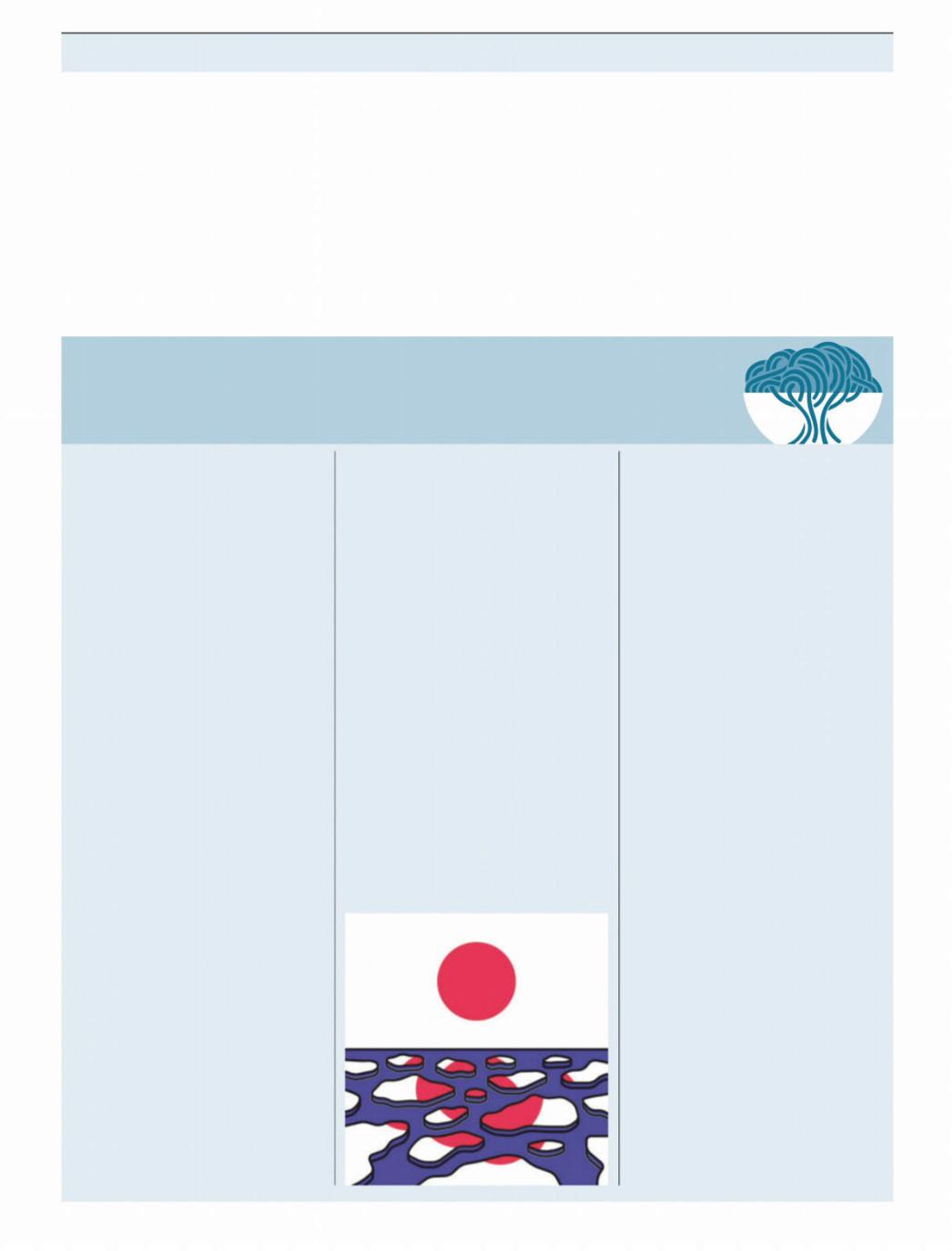
vk.com/id446425943 |
РЕЛИЗ ПОДГОТОВИЛА ГРУППА "What's News" VK.COM/WSNWS |
|
|
32 Asia |
The Economist February 9th 2019 |
2 stan’s Pushtun minority are mimicking Naqeebullah Mehsud, an aspiring model, whose murder by the police last year turned him into a martyr against state oppression. Another says he simply admires the West (for “its peace and greenery”, especially). As internet access spreads through Pakistan’s deprived, Pushtun-dominated north-west, young people now connect more to global trends: they pirate “Game of Thrones”, “Vikings” and other razor-shy shows in huge numbers.
Today’s styles, though, are not entirely new. Beards “have always been a part of
Pushtun culture” notes Swat Swag, a popular storyteller, on Twitter. These liberal designs represent a “return to pre-Afghan-ji- had, pre-madrassa-influence”, ie, to the 1960s. So it is not surprising that imams disapprove. In late 2017 Islamist groups threatened to shut down barbers o ering “un-Islamic” designs. Fundamentalists believe Muslims should wear a beard in the style of Muhammad, the longer, the better. O cials in the district of Swabi and the village of Shabqadar have followed up with legally tenuous edicts. In March the Sulemani Hairdressers’ Association ordered all
its followers, who it claims number 100,000, to eschew cheeky designs. “Now the government must make it a law,” says Gohar Ali, the association’s leader.
It shows no sign of doing so. Compliance is patchier than with previous “beard bans”. Another union has refused to play along. In Beauty Saloon barbers, Imtiaz Khan says he agrees with the ban. “Fashion is a sin,” he explains. But following the order has cost him half his business, he admits, as his scissors snip around the face of a fashionable friend to whom he has— grudgingly—granted an exemption. 7
Banyan Frozen conflict
The importance to Shinzo Abe of four alluring islands
As always in early February, ice floes are starting to clog the strait between
Nemuro, a fishing port in northern Japan, and Kunashiri, a volcanic island hanging on the horizon. And as always on February 7th, Nemuro’s residents clogged a local cultural centre to mark “Northern Territories Day”, when they pine publicly for Kunashiri and three other nearby islands—the Northern Territories—sundered from Japan in the final days of the second world war.
In1945, two days after America bombed Hiroshima, Joseph Stalin declared war on Japan and Soviet troops attacked Japanese-held territory. They grabbed the southern Kuril islands, even though Russia had acknowledged them as Japanese since1855. For two years the islanders lived alongside the occupiers. A touching photograph in an exhibition in Nemuro shows Russians and Japanese enjoying a game of go. Japanese women helped deliver Russian babies. Then, suddenly, the fraternising was over. By 1949 all the islanders had been deported.
Today about 6,000 surviving islanders, many in Nemuro, dream of their furusato , their home turf. One of them, sluicing the floors at the fish-auction house, recalls with impish laughter how she left, aged four: “hoisted aboard in a fish box packed with other children and their parents”. She left behind a territorial dispute that drags on today. The agreement with the Soviet Union that reestablished diplomatic relations in1956 was supposed to entail the return of the two nearer (and smaller) islands, Habomai and Shikotan. But that part of the deal was never fulfilled, and no formal peace treaty has ever been signed. Technically, the second world war lingers on.
In some respects, the islands have seemed closer in recent years. Each
summer Russia now allows a handful of trips across the Nemuro Strait for Japanese born on the Kurils, or whose ancestors lie buried there. The visits are changing attitudes, at least on the Japanese side. When Banyan first came to Nemuro a decade ago, former islanders and their supporters were adamant: the return of the islands would entail their evacuation by Russians. No o ence. Which Russians really wanted to live in such isolation? And wouldn’t Japanese resourcefulness quickly show up the long-wasted opportunities for development? The Russians have barely made a mark on the wild islands (to Banyan’s mind, a big part of their allure).
These days views have changed. Returning Japanese say they are moved when they meet Russians on the islands—it is their furusato too. Kozo Iwayama, who runs an information centre on the Northern Territories, says Japanese should live side-by-side with Russians if the islands are returned. Yet there is a whi of desperation in such compromise. The chances of a deal seem to be ebbing, even as the number of Japanese born on the islands in-
eluctably shrinks. A decade ago Japanese nationalists would not have accepted the return of merely the two smaller islands. Now, even that would seem a triumph.
One Japanese in particular has made the islands’ return his mission: Shinzo Abe, the prime minister. A nationalist, he wants to erase the scars of Japan’s wartime past. Besides, his father and grandfather, as foreign minister and prime minister respectively, also passionately sought the Northern Territories’ return. In Japanese politics, foreign policy is all too often a family heirloom.
It explains the charm o ensive launched on Vladimir Putin. To melt the ice, two winters ago the strait-laced Mr Abe even took the Russian president for a naked dip in a hot spring in his home prefecture. Last month, in Moscow, the two men held their 25th meeting. Again Mr Abe came back empty-handed. He has tried everything, including dangling promises of Japanese investment in the Russian Far East and compromises involving “shared sovereignty”.
No sooner was Mr Abe back in Tokyo than hopes began to rise for the 26th
meeting, on the fringes of the g 20 summit in Osaka in June. Yet Mr Putin’s rep-
utation at home rests on increasing Russian territory, not slicing bits o . He may have contemplated a deal when he was riding high following his annexation of Crimea in 2014—he might like the idea of being the leader who brings the Great Patriotic War to a proper close. But today a contentious pension reform, falling incomes and cuts to social services are eating away at his popularity. Ultranationalists stand ready to outflank him over the Kurils. As for Mr Abe, who stands down in 2021, he has asked to be judged by the Northern Territories. His legacy may founder among the ice floes.
http://new.guap.ru/i04/contacts
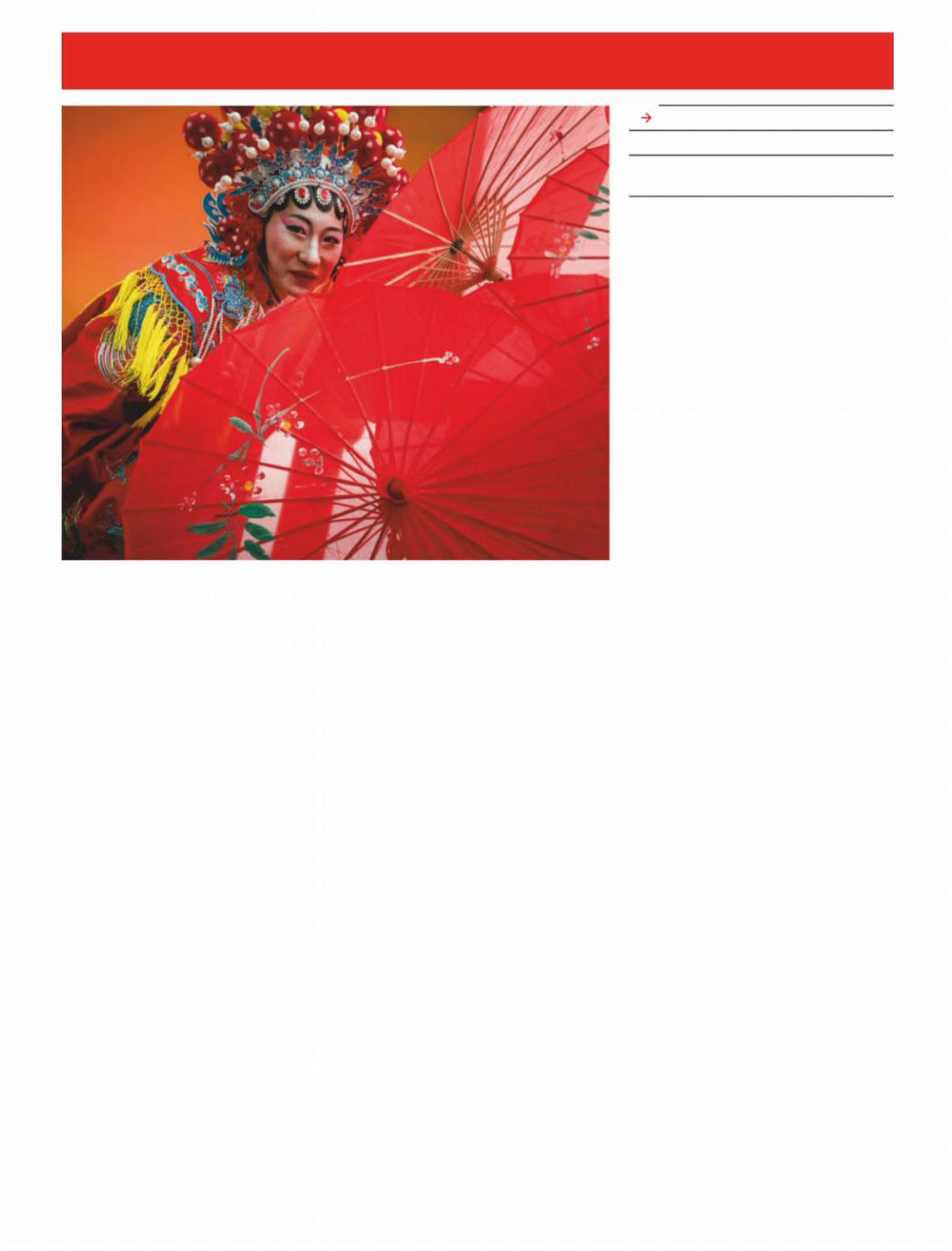
РЕЛИЗ ПОДГОТОВИЛА ГРУППА "What's News" VK.COM/WSNWS
vk.com/id446425943
China
Public diplomacy
Culture wars
T O K Y O
The Communist Party is trying to capitalise on foreign interest in Chinese culture. But it has rivals
Luo yuquan can barely hide his glee. The Chinese new year jamboree thrown by the China Cultural Centre (ccc) in Tokyo, which he heads, has gone swimmingly. Ethnic-Tibetan singers flown in from China enchanted the audience, many of whom danced along to the catchy tunes. Copious Tsingtao beer helped sustain the high spirits. An exhibition in an adjoining room featured paintings with Buddhist themes, also shipped in from China. “We are proud to show o 5,000 years of Chinese civilisation!” beams Mr Luo, “As more Japanese come to appreciate Chinese culture, they
will naturally grow to love China.” Chinese o cials often declare that Chi-
na has a 5,000-year history. In truth, that is overstating things by about1,000 years. Yet the myth serves a useful purpose for the Communist Party. At home, it is a source of national pride. Abroad, it justifies a sort of Chinese exc eptionalism. Xi Jinping, the president, told the visiting Donald Trump, his American counterpart, that China’s is the world’s oldest continuous civilisation. China routinely invokes its awesome history as grounds to continue charting its own development path. Don’t expect China
to embrace Western ideas about democracy, the logic goes, for China has always been on its own unique course.
China’s propagandists also know that Marxism-Leninism doesn’t have the pulling power of kung fu or kung pao cccs are intended to breed a ection for China—the equivalent of Germany’s Goethe Institutes and France’s Alliances Françaises. There are 37 of them around the world, from Minsk to Mexico City. A further 13 are planned by the end of next year, up from a total of just13 in 2012.
In 2015, the most recent year for which data are available, the culture ministry spent 360m yuan ($57m) on s. Thatcccmay not seem much, yet it represented a neartripling of the amount spent the previous year. Moreover, the published figure reflects only central-government funding. Provincial governments also help pay for cccs. One Chinese commentator believes that the government chose not to release spending figures for more recent years lest “foreigners grow anxious about perceived Chinese infiltration”.
Mr Xi appears to be personally invested in the push to expand s. Inccc2009 he in-
The Economist February 9th 2019 33
Also in this section
34The booming pet industry
35Chaguan: How well does China understand Taiwan?
augurated the one in Tokyo, for instance, when he was still vice-president. Since 2014 Mr Xi has presided over the opening of half a dozen of them.
China has long recognised that it su ers a “soft-power” deficit. Its international cultural influence has not grown as fast as its economy. In 2007 then-president Hu Jintao declared that getting other countries to like China was a national priority. The form of outreach Mr Hu favoured was Confucius Institutes, which are managed by the ministry of education. They o er mainly Chi- nese-language classes at “partner” academic institutions. More than 500 universitieschicken. around the world host one.
Over the past decade, however, Confucius Institutes have arguably done as much harm as good to China’s image. Western scholars and politicians have accused the institutes’ instructors, who are typically dispatched by China’s government, of
compromising academic freedom. They al- |
|
|
lege that the institutes suppress discussion |
|
|
of sensitive topics such as Taiwanese inde- |
|
|
pendence and that they spread Communist |
|
|
Party propaganda. In 2014 the American |
|
|
Association of University Professors urged |
|
|
American universities with Confucius In- |
|
|
stitutes to shut them down. |
|
|
Regardless of whether this fear is justi- |
|
|
fied, Chinese o cials are well aware of the |
|
|
“controversial reputation” of Confucius In- |
|
|
stitutes, notes Zhang Xiaoling of the Uni- |
|
|
versity of Nottingham’s branch in Ningbo. |
|
|
Because of this, Ms Zhang reckons, the task |
|
|
of public diplomacy will increasingly “be |
|
|
shared with |
s”ccc. |
1 |
http://new.guap.ru/i04/contacts

vk.com/id446425943 |
РЕЛИЗ ПОДГОТОВИЛА ГРУППА "What's News" VK.COM/WSNWS |
|
|
34 China |
The Economist February 9th 2019 |
2 Although cccs share the same goal as Confucius Institutes, they aim to arouse less controversy. The library inside Tokyo’s is revealing. The shelves are stacked with comic books and biographies of such luminaries as Shakespeare and da Vinci (in both Chinese and Japanese). Conspicuously absent are Xi Jinping’s turgid works, such as “The Governance of China”, a must-read for any party apparatchik. The activities the centre organises, much like the new year bash, are lighthearted. (All are free of charge.) Among the highlights this month are a movie screening of a Chinese comedy, a “Shaolin martial-arts” performance and a talk on traditional Chinese medicine. cccs are not completely apolitical—they are just careful to be subtle when they have a point to make. Last summer, for example, Malta’s hosted an exhibition featuring artists from Taiwan which the director billed as a display of “creativity in China”.
The version of Chinese culture that cccs present does not go unchallenged, however. Taiwan’s government funds rival outfits called Taiwan Cultural Centres. There are some 15 of these around the world, including one in Toyko a stone’s throw from the . Inccca not-so-subtle dig, Wang Shu-fang, the director of Taiwan’s centre in Tokyo, says the appeal of Taiwanese culture lies in its creativity—and “creativity can only thrive in a free society.” Happily for Mr Luo, Ms Wang’s centre is not as well-sta ed as his. He can put on two to three events a week. She may only manage half that. Still, the mere existence of separate Taiwanese institutes is a reminder to foreign audiences that Taiwan does not want to be subsumed.
There is also Shen Yun, a dance troupe founded in 2006 by devotees of Falun Gong, a religious group that is banned in China. It puts on shows in more than 100 cities every year. By chance, Shen Yun was gyrating in Tokyo at the same time as Mr Luo was throwing his party. Awkwardly for the Communist Party, Shen Yun also claims to promote, through traditional dance, China’s 5,000-year-old civilisation.
Indeed, Shen Yun casts itself as the true protector of Chinese culture and the party as its scourge. There is some truth to this. Under Mao Zedong, countless ancient paintings, books and statues were burned or smashed because they represented “old culture”. Shen Yun’s shows depict the persecution of Falun Gong. Annoyingly for the party, Shen Yun appears to be better known than cccs in much of the world.
Asked about the competition between his ccc, Taiwan’s cultural centre and Shen Yun, Mr Luo’s disarming smile disappears. He a rms that “as long as what the other organisations are doing is legal”, he will be content to mind his own business. To win the battle of hearts and minds, China will need more than culture and charm. 7
The pet industry
Mao’s best friend
B E I J I N G
Every year is the year of the dog
With its overflowing ball pits, indoor swimming pools and elaborate obstacle course, the Maidao Play Centre o ers a fun-packed day out, reviewers gush. “My girl just loves it here—she just leaps into the car when she realises where we’re going and she can’t wait to play with all her
friends,” says a woman in her early 30s. While children would probably love
Maidao, it is aimed at dogs. It is just one of hundreds of puppy-grooming parlours, animal hotels and doggy day-care centres that have sprung up across China to cash in on the booming pet industry. The market for food, toys, coats and other products for pets was worth 170bn yuan ($25bn) in 2018, up by more than a quarter from the previous year, reckons Goumin, a pet-services portal. This would make it bigger than China’s tea industry. Goumin says China has 73.5m cator dog-owners, a group approaching the size of the 90m-strong Communist Party.
This is a big change for a country where a dog might once have been as likely to be eaten as fed a treat. Until recently few Chinese saw much sense in keeping animals that could not be put to work. Famine ravaged the country as recently as 1961. Moreover, during the Cultural Revolution of the 1960s and 1970s the bourgeois indulgence of keeping a pet would have attracted the attention of the dreaded Red Guards. Rabies fuelled o cial paranoia about dogs;
A shameful bourgeois indulgence
until 1993, when Beijing lifted its ban on them, pooches were routinely rounded up and killed. Dogs over 35cm tall are still not allowed in most of the capital. They are said to be too dangerous and noisy.
Today’s pet boom is being fuelled by a generation that barely remembers the privations of the past. City-dwelling young professionals born in the 1980s and 1990s account for 70% of spending on pets, according to Goumin. Theirs is a richer China, where the old emphasis on community has been replaced by a greater sense of individualism. Many of them are also lonelier than earlier generations, having been lured away from their families and friends by jobs in big cities.
“The air is bad outside and it’s so easy to stay in and watch things on the internet,” says Wang Xiaoyang, a café-owner in her 20s who moved to Beijing from her hometown in Inner Mongolia. She is one of more than 200m unmarried Chinese in their 20s or 30s. “I live alone, so it’s nice to have little Liuyi waiting all happy to see me when I get home,” she adds, as she flicks through photos of other cats on her iPhone.
Owners like to splurge on their pets. They spend an average of more than 5,000 yuan a year on pet paraphernalia, according to Goumin—more than the average college graduate in China earns in a month. Tiny, stu ed-toy-like Pomeranians and Japanese Shiba Inu are big sellers thanks to their popularity among stars of Chinese social media, says a pet-shop assistant in Beijing. A Pomeranian puppy can fetch as much as 18,000 yuan, although those who risk buying one online might pay only 2,000. Corgis, French bulldogs and huskies are also in vogue.
Not all Chinese welcome pets on the streets. A recent video of a woman being pushed by a man after she kicked his dog away from her child sparked fury about pet owners’ failure to restrain their animals. Since then the south-western city of Wenshan has imposed a ban on dog-walking from 7am to10pm. Jinan, in the east, has introduced a points system for pet-owners. Those committing o ences such as failing to register their dog or letting it o the lead in public lose points. If enough points are lost the pet can be confiscated.
Many Chinese see the proliferation of pets as a symptom of a bigger crisis. China is ageing rapidly. Although the one-child policy was replaced with a two-child rule in 2016, and has been further eased since, the birth rate is still falling. On Zhihu, an online forum, many ask why young people choose raising pets over their Confucian duty of raising children. “We must encourage the younger generation to think more about the prosperity of the motherland,” argues one teacher. Drawing an analogy with pet-loving but stagnant Japan, they fear dog days are on their way. 7
http://new.guap.ru/i04/contacts
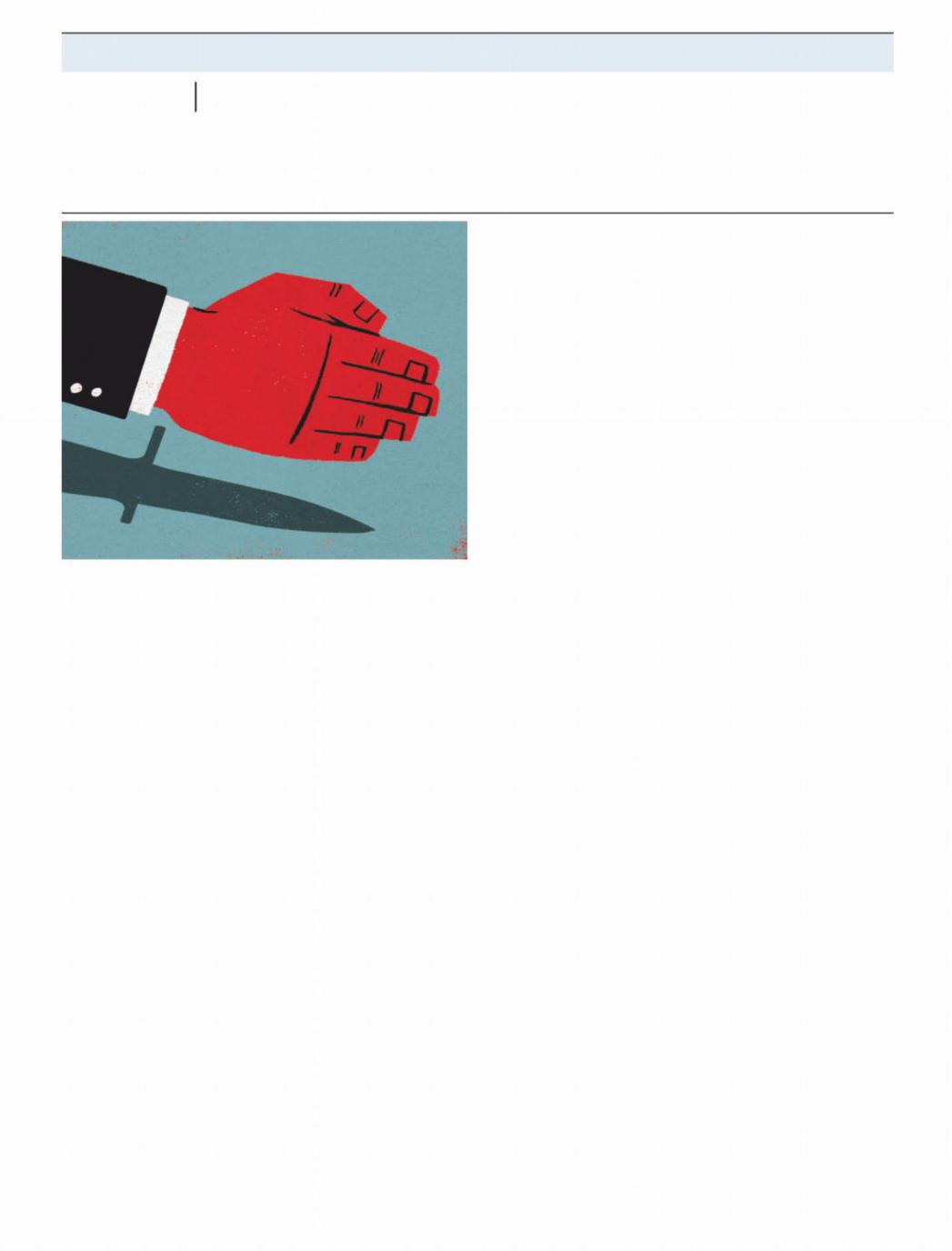
vk.com/id446425943 |
РЕЛИЗ ПОДГОТОВИЛА ГРУППА "What's News" VK.COM/WSNWS |
|
|
The Economist February 9th 2019 |
China 35 |
Chaguan Does China understand Taiwan?
Ostracism of pro-independence Taiwanese is dangerous and counterproductive
If china’s rulers ever decide to invade Taiwan—a grim but not impossible prospect—they will need good answers to two questions. First, would the People’s Liberation Army win? The consensus in Taipei is that the pla is close to that goal but is not “100%
sure” of victory. Second, would ordinary Taiwanese submit? Chinese leaders have limited patience for Taiwanese opinion.
Their o er to the democratic island of 23m is ostensibly generous. Under the slogan “One Country, Two Systems”, Taiwan is promised lots of autonomy alongside access to China’s vast market. This is backed by honeyed words about unifying a family sundered for 70 years, since China’s civil war ended with the losing Nationalist Party, or Kuomintang ( ) retreakmting to what they hoped would be temporary exile on Taiwan. Still, China is committed to using force to block any bid for formal independence.
Chinese optimists call time their ally, as Taiwan’s population ages and its economy slows. Chaguan visited Taiwan recently. It is true that China’s gleaming coastal cities make Taipei’s 1980s skyscrapers look shabby. But time is China’s foe too, says Freddy Lim, a heavy-metal rock star and legislator for Taiwan’s pro-indepen- dence New Power Party. Mr Lim cites polls showing that youngsters increasingly identify as Taiwanese and consider China another country, albeit one where they like to do business.
Embrace the motherland, or else
Put bluntly, China’s proposals sound creepy to many young, urban Taiwanese. In e ect, they hear a demand to submit to marriage with a stern cousin, arranged decades ago: “I am rich now, let me cherish you—or I will kill you.”
Taiwanese defiance may anger China’s leaders. But they cannot safely ignore it. Any Chinese victory would need to be quick, with Taiwan’s will to fight broken so swiftly that calls for an American rescue become moot. Taiwanese security experts are frank about what they fear: a psychological collapse among the public, for instance after initial waves of Chinese missiles wreck more than half the island’s defences, or blow up oil and gas terminals to cut power supplies. Then there is the question of what happens the day after China wins. Politicians predict mass protests in Taiwanese cities. Would China send tanks to subdue its sullen new satrapy?
Alas, China has closed o avenues to answering such questions. Communist bosses growl that they will only engage with Taiwanese who agree that their island is part of China. That excludes President Tsai Ing-wen and her ruling Democratic Progressive Party (dpp ). The dppsays that the island they govern is a country in its own right, though to avoid a crisis they fudge what they mean by that. In their desire to teach Taiwanese voters that rule brings pain and isolation, China has sought to ostracise the party since Ms Tsai won election in 2016. Government-to-govern- ment contacts have been limited to such technical subjects as airtra c control, food safety and some police co-operation, for instance when one side seeks the return of a fleeing murderer. Chinese pressure is blamed for sharp declines in tourism from the mainland and in short-term exchanges by mainland students, though about 3,500 Chinese students remain in Taiwan on degree courses. Even scholars close to the dpp have been blacklisted from travel to China, among them Tseng Chien-yuan of Chung Hua University. He adds that Chinese academics he has known for decades are now barred from formal contacts with him. “I worry about this situation, because if the Chinese government only hears what it wants to know, they can never understand Taiwan,” says Mr Tseng.
China does hear from conservative supporters of the kmt, which backs closer ties with China, although not unification. About 370,000 mainlanders married to Taiwanese live on the island. Those who vote lean . Equally,kmtat any moment there are a million Taiwanese in China, including 400,000 long-term residents. Tales abound of Chinese o cials o ering economic rewards to Taiwanese businessmen who endorse unification.
Wang Ting-yu, a legislatordpp who sits on the parliament’s foreign a airs and defence committees, says that China’s intelligence services gather information about Taiwan from “between 10,000 and 100,000” agents and informers. Fewer than 5,000 are professional spies, he estimates. Chinese informers might be Taiwanese gangsters on the hustle in southern China, or Taiwanese businessmen looking for favours. Mr Wang cautions that China may not learn much from its spies. (Taiwan’s spooks are underwhelming when he asks about China, he notes, either because they do not trust parliamentarians or because “they don’t know anything”.)
A big danger is that ignorance leads to impatience. There are over 140 students from both sides of the straits at the Graduate Institute for Taiwan Studies at the University of Xiamen, a handsome port city with close geographic and cultural links to Taiwan. Chen Xiancai, a professor at the institute, says many arrive knowing little about the other side. Mainland students point to China’s strength and ask: “Why haven’t we unified yet?” His Taiwanese students retort: “Why are you in such a hurry?” The institute’s scholars stand out for their professionalism, visiting Taiwan often to conduct fieldwork. The professor leads a dpp study centre opened within the institute in 2017. But he is cautious about describing its work, saying it is focused on building a database of academic papers. Still, he is sometimes berated by online nationalists, who
complain that the |
shoulddpp be “exterminated”, not studied. |
|
Sherry Yu, a Taiwanese student in Xiamen, comes from a family |
||
that votes for the |
Shekmtwants. |
a career in China but still laments |
that Chinese classmates—reared on jingoistic schoolbooks and censored news—cannot comprehend why Taiwanese would vote for the dppor resist unification, insisting that they must simply want to humiliate China. Ms Yu thinks that Taiwanese just want to preserve their freedoms. When politics comes up, she often starts with “we”, then sadly finds herself using “you” and “me”. 7
http://new.guap.ru/i04/contacts
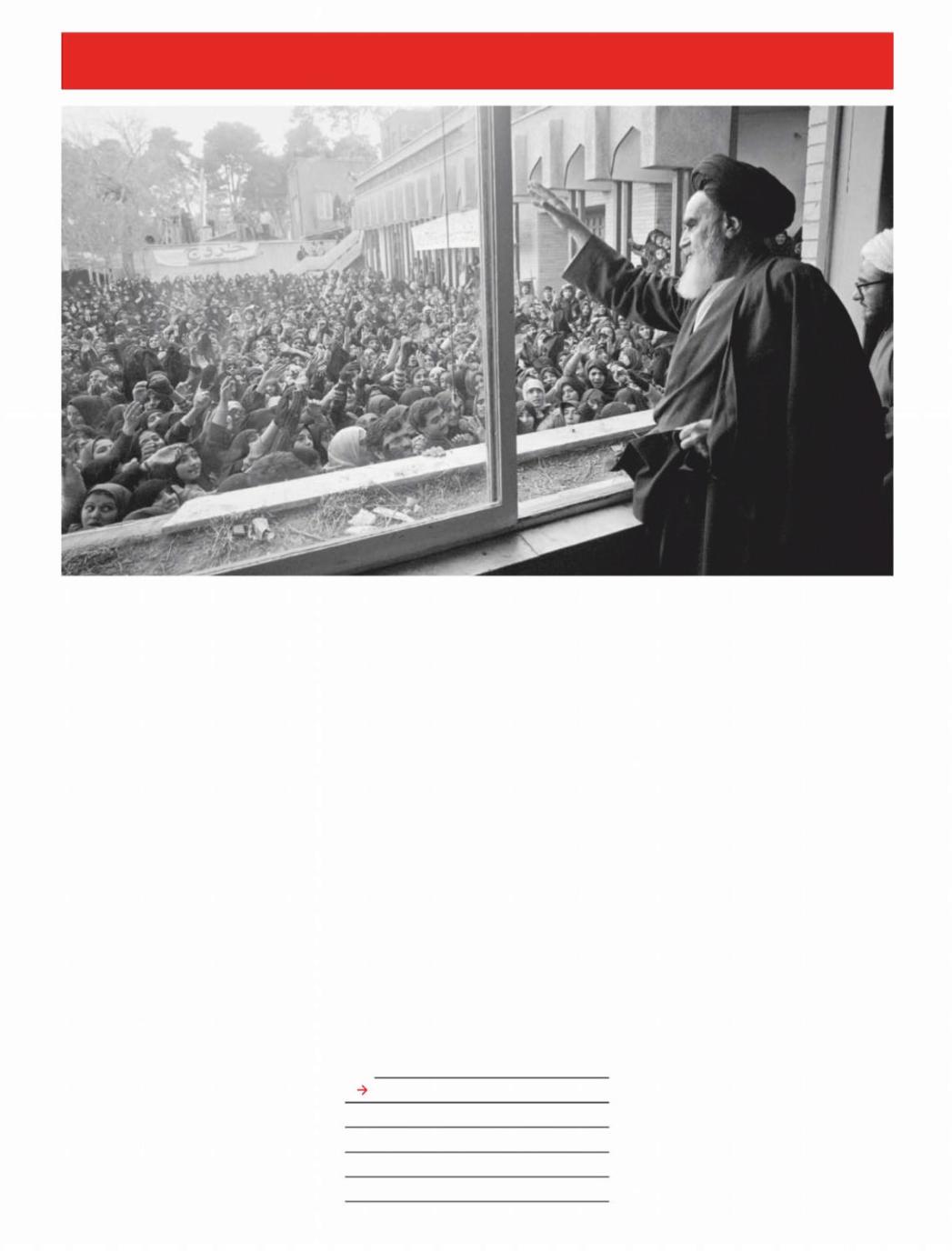
РЕЛИЗ ПОДГОТОВИЛА ГРУППА "What's News" VK.COM/WSNWS
vk.com/id446425943
36 |
Middle East & Africa |
The Economist February 9th 2019 |
|
|
The Iranian revolution (1)
The shadow of 1979
Four decades after its revolution, Iran is still stuck in the past
For a few tense moments it seemed as if the flight carrying Ayatollah Khomeini back to Iran would not make it. Two weeks had passed since the shah, Mohammad Reza Pahlavi, had left the country amid enormous protests against his autocratic rule. Khomeini’s aides were eager for the ayatollah to return from exile in Paris and fill the power vacuum. But the government left behind by the shah warned them to stay away. As their plane approached Iranian airspace, the air force threatened to shoot it down. Some on board cheered the chance for martyrdom. The Western journalists in
tow were more subdued.
The plane eventually landed in Tehran and, after a brief argument between his followers over who would assist him, Khomeini walked slowly down the stairs to the tarmac, helped by an Air France steward (a compromise). He was greeted in the capital by what some believe to be the largest crowd in history. The date was February 1st 1979. Ten violent days later, the shah’s government resigned and the army gave way to the revolutionaries.
Forty years on, Iran is nominally demo-
cratic, but unelected mullahs still wield the real power. They have defied expectations by remaining in charge for so long. University enrolment has increased, services for the poor have improved and the economy is more diversified. But in most other ways Iran is worse o . In the months after the revolution, Khomeini and his hardline followers, nicknamed “the beards”, made decisions that set the country on a terrible path. Iran today is less pious than the mullahs would like, less prosperous than it should be and less engaged with the world than most countries.
Khomeini made his first big decision long before coming to power. “The government must be directed and organised according to the divine law, and this is only
Also in this section
38Iran and the region
39Netanyahu’s favourite word
39Trade in east Africa
40Elections in Nigeria
possible with the supervision of the clergy,” he wrote—nearly four decades earlier. As the shah teetered, he obscured his aim of velayat-e faqih (guardianship of the Islamic jurist). The leftists and liberals who supported the revolution misjudged him. Some imagined that Khomeini would retreat to the holy city of Qom and leave others to govern.
Khomeini did go to Qom, but he did not give up power. From the start, he undermined his handpicked prime minister, the relatively moderate Mehdi Bazargan. When the oil minister refused to purge non-Islamic workers, Khomeini branded him a traitor. The ayatollah mandated the veil for women and banned broadcast music, which he compared to opium. Secular groups were ignored and critics persecuted. In the early years after the revolution, thousands of people were executed, including prostitutes, homosexuals, adulterers and the shah’s o cials. The state needed purifying, said Khomeini. Iran remains a world leader in executions.
Some clerics worried that politics would tarnish the religious establishment. Among the critics was Grand Ayatollah Muhammad Kazem Shariatmadari, who gave Khomeini the title of ayatollah in 1963, in part to stop the shah from executing him. Shariatmadari denounced the extremes of
the new order and rejected velayat. -e faqih He was placed under house arrest, but
his fears were quickly borne out. Khomeini twisted Islam to justify the regime’s actions. Brazenly, he said that o cials could1
http://new.guap.ru/i04/contacts

РЕЛИЗ ПОДГОТОВИЛА ГРУППА "What's News" VK.COM/WSNWS
vk.com/id446425943
The Economist February 9th 2019 |
|
|
|
|
Middle East & Africa 37 |
||
2 override the Koran if it was somehow |
Iran’s government had little to o er the |
Hatred for the “great Satan”, Khomeini’s |
|||||
found to be in the interest of Islam. In |
soldiers who returned from the Iran-Iraq |
nickname for America, was a central tenet |
|||||
choosing a successor, Khomeini even |
war, so it put the |
toirgcwork rebuilding |
of the revolution. It was America, after all, |
||||
abandoned a tenet of velayat-e faqih |
, whichte country. Ever since, it has hogged gov- |
that installed Pahlavi after helping topple |
|||||
held that “the most learned cleric” should |
ernment contracts, often without bidding. |
the democratically elected government of |
|||||
lead. When his first choice, Ayatollah Hos- |
Today it controls, directly and indirectly, a |
Muhammad |
Mosaddegh, a |
nationalist |
|||
sein Ali Montazeri, called for more free- |
business empire worth billions of dollars. |
prime minister, in 1953. By 1979 Iranians of |
|||||
doms, he picked Ali Khamenei, a loyal for- |
It is building a subway line in Tehran, ex- |
all stripes had turned against the shah’s |
|||||
mer president, but not a senior cleric. |
tracts oil and gas, and runs laser eye-sur- |
misrule. Many worried that their society |
|||||
Pro-regime clerics, in the minds of |
gery clinics. While American sanctions |
was under assault by Western culture. |
|||||
many Iranians, became associated with an |
sting their competitors, firms tied to the |
|
|
|
|||
oppressive and out-of-touch state. Mr Kha- |
Guards are able to smuggle goodsand avoid |
Hostage to the past |
|
||||
menei has made things worse. When his fa- |
taxes. Mr Khamenei himself controls Se- |
America’s view of Iran was poisoned nine |
|||||
voured candidate for president, Mahmoud |
tad, an opaque conglomerate with inter- |
months after the revolution. When Jimmy |
|||||
Ahmadinejad, a hardliner, won a fishy elec- |
ests in almost all economic sectors. |
Carter allowed the shah to come to America |
|||||
tion in June 2009, swarms of people prot- |
In the face of sanctions, the state has de- |
for cancer treatment, it caused outrage in |
|||||
ested. The regime clamped down, accusing |
veloped a “resistance economy”, which is |
Iran. On November 4th 1979 student activ- |
|||||
the moderate leaders of the opposition, |
diverse and self-su cient in some areas, |
ists scaled the walls of the American em- |
|||||
known as the Green Movement, not only of |
but hardly e cient. Iran today ranks near |
bassy in Tehran, seizing most of the sta . |
|||||
sedition, but of being mohaareb |
—peoplethe bottom of the World Bank’s Ease of Do- |
The hostages remained in captivity for 444 |
|||||
who fight with God. |
|
ing Business Index and Transparency In- |
days. Eight American soldiers died in an |
||||
Bye-yatollah |
|
ternational’s Corruption Perceptions In- |
aborted rescue e ort in 1980. Khomeini |
||||
|
dex. All that helps explain why it has |
used the seizure to whip up support. |
|||||
The public long ago lost its revolutionary |
performed so poorly. In 1977 gdp per per- |
The mutual enmity has hardly dissipat- |
|||||
zeal. More than 150,000 educated Iranians |
son in Iran was slightly higher than in Tur- |
ed. America supported Iraq in its war with |
|||||
are thought to leave the country each year, |
key, another large Islamic country; today |
Iran. The |
irgchas sponsored terrorist at- |
||||
among the world’s highest rates of brain |
Iranians are less than half as wealthy as |
tacks on Americans. In 2002 George W. |
|||||
drain. Younger Iranians attend mosque |
Turks. But the ruling elite still do well. |
Bush said Iran was part of an “axis of evil”. |
|||||
less frequently than their parents did. |
“None of these clerics would have dared ac- |
But his invasion of Iraq a year later, and the |
|||||
“People laugh at all the nonsense the mul- |
quire such vast wealth under Khomeini,” |
tumult since the Arab spring revolts of 2011, |
|||||
lahs are telling them,” says Darioush |
says Shaul Bakhash of George Mason Uni- |
allowed Iran to extend its influence (see |
|||||
Bayandor, a former Iranian diplomat. |
versity. “He would be appalled.” |
next story). Growing evidence that Iran was |
|||||
Yet the regime acts as if the revolution |
In January last year thousands of Irani- |
pursuing a nuclear-weapons programme |
|||||
were only yesterday. The judiciary recently |
ans took to the streets to protest against |
provoked successive rounds of sanctions. |
|||||
banned walking dogs in public (Islam |
corruption, repression and rising living |
A new era seemed possible when Barack |
|||||
deems dogs impure). This month Mr Kha- |
costs. The initial anger was directed at Has- |
Obama o ered to “extend a hand” if Iran |
|||||
menei scolded women who remove their |
san Rouhani, the reformist president. But |
would “unclench [its] fist”. Mr Rouhani |
|||||
hijabs. “That captures the essence of Islam- |
people quickly turned their ire to the ruling |
agreed to a deal in 2015 whereby Iran |
|||||
ist rule in Iran: Dogmatic septuagenarian |
clerics and the |
irgc , too. “People are paupcurbedits nuclear programme in return for |
|||||
clerics forcing their own antiquated views |
ers while the mullahs live like gods,” |
sanctions relief. Both leaders hoped that |
|||||
on a young, diverse society,” writes Karim |
chanted the protesters, and “Death to the |
better relations would follow. But the deal |
|||||
Sadjadpour of the Carnegie Endowment for |
Revolutionary Guards.” The regime, as is its |
did not produce prosperity, as Mr Rouhani |
|||||
International Peace, a think-tank. “It can |
wont, arrested hundreds and blamed |
had promised Iranians, and Iran continued |
|||||
only be sustained through coercion.” |
|
America for the unrest. |
to test missiles and meddle abroad. |
||||
The clerics’ main tool of oppression is |
|
|
Last year President Donald Trump |
||||
the Islamic |
Revolutionary Guard |
Corps |
|
|
yanked America out of the deal. He is sur- |
||
(irgc ). Khomeini did not trust the shah’s |
|
|
rounded by Iran hawks, such as John Bol- |
||||
army, so he gathered the armed groups that |
|
|
ton, his national security adviser, who has |
||||
supported the revolution into a single |
|
|
previously advocated bombing Iran or |
||||
force, the |
irgc . In1980 he sent it to fight the |
|
overthrowing the mullahs. |
|
|||
invading army of Saddam Hussein, Iraq’s |
|
|
For all his bluster, Mr Trump has o ered |
||||
then-dictator, calling the war a “divine |
|
|
to talk to Mr Rouhani, who declined the in- |
||||
cause”. Hundreds of thousands of Iranians |
|
|
vitation, blaming renewed sanctions for |
||||
probably died in the eight-year conflict. |
|
|
Iranian su ering. Such entreaties, never- |
||||
The war changed the irgc , which now |
|
|
theless, make the clerics and |
nervousirgc. |
|||
commands more than 100,000 troops and |
|
|
American hostility gives the regime a rai- |
||||
oversees the |
baseej , a thuggish militia of |
|
son d’être; isolation means less competi- |
||||
perhaps one million volunteer vigilantes. |
|
|
tion for its businesses. |
|
|||
Its secretive Quds force operates in Syria, |
|
|
Daily protests continue in Iran, as the |
||||
Yemen, Iraq and Lebanon. At home, the |
|
|
economy sinks. “America is not the enemy, |
||||
Guards have extended their reach into all |
|
|
the enemy is right here,” say some in the |
||||
aspects of society. Former members hold |
|
|
crowds. Hatred for the shah united Irani- |
||||
top jobs in government and seats in parlia- |
|
|
ans behind Khomeini. Today, though, the |
||||
ment. The Guards ensure that television |
|
|
opposition is disparate and leaderless. Ira- |
||||
and radio shows support the state, and that |
|
|
nians look around their region and see |
||||
schools teach students to be loyal to the re- |
|
|
only failed uprisings. The revolution of |
||||
gime—which, in turn, protects the Guards’ |
Careful, it will be difficult to extinguish |
1979 has brought mostly misery, but anoth- |
|||||
vast commercial interests. |
|
er one is probably not in the o ng. 7 |
|||||
http://new.guap.ru/i04/contacts
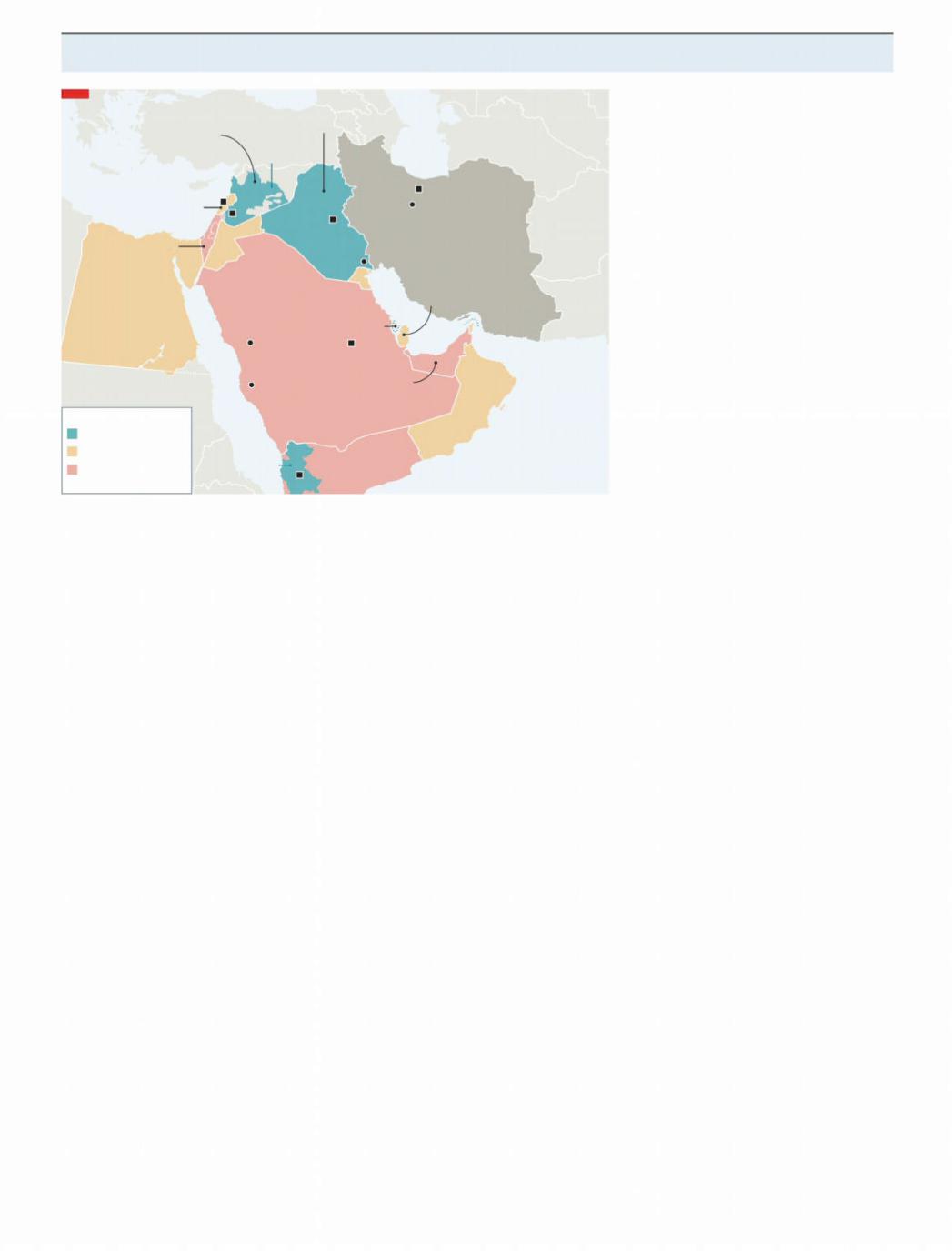
vk.com/id446425943 |
РЕЛИЗ ПОДГОТОВИЛА ГРУППА "What's News" VK.COM/WSNWS |
|
|
38 Middle East & Africa |
The Economist February 9th 2019 |
SYRIA |
|
|
IRAQ |
|
|
|
|
|
|
Relations have grown ever warmer since the toppling of |
|
||||
Iran has propped up the regime of |
|
Saddam Hussein and the election of Shia-led governments |
|
||||
Bashar al-Assad in the civil war |
Government |
|
|
|
|
||
LEBANON |
|
|
|
|
|
||
|
controlled |
|
|
|
|
||
Iran trains, arms and finances |
|
|
Tehran |
|
|
|
|
Hizbullah, the main Shia |
Beirut |
|
|
|
|
||
party-cum-militia which |
|
|
I R A N |
|
|||
|
Damascus |
|
Qom |
|
|||
dominates the government |
|
|
|
||||
ISRAEL |
|
Baghdad |
|
|
|
|
|
|
|
|
|
|
|
|
|
The government |
JORDAN |
Basra |
QATAR |
|
|
||
has bombed Iranian |
|
|
Other Gulf states cut ties with Qatar, |
||||
|
|
|
|
||||
targets in Syria |
SAUDI ARABIA |
KUWAIT |
in part over its friendly relations |
||||
|
|
with Iran. Qatar and Iran share |
|||||
|
The kingdom sees itself as |
The |
|||||
|
control of the world’s largest gasfield |
||||||
|
a bulwark against Iranian |
Gulf |
|||||
EGYPT |
|
|
|
||||
influence in the region |
BAHRAIN |
|
|
|
|||
|
|
|
|
|
|
|
|
|
Red |
Medina |
Riyadh |
|
|
|
|
|
|
|
|
|
|
|
|
|
Sea |
|
UAE |
|
|
|
|
|
|
Mecca |
The government is |
|
OMAN |
|
|
|
|
outwardly hostile towards |
|
||||
|
|
|
|
||||
Iran’s regional relations |
|
|
Iran, but maintains robust |
|
I N D I A N |
||
|
|
economic relations |
|
|
|||
|
|
|
|
O C E A N |
|||
Allies |
|
|
|
|
|
|
|
|
|
|
|
|
|
|
|
Full diplomatic relations |
|
Houthi |
|
Iran backs the Houthi rebels against an |
|||
Strained or no |
|
controlled |
|
YEMEN internationally recognised government |
|||
diplomatic relations |
|
|
Sana’a |
allied with Saudi Arabia and the UAE |
|
||
The Iranian revolution (2)
Pushing on an open door
C A I R O
Iran was not predestined to become a regional hegemon. Its rivals helped it
lush with victory at home in 1980, |
witness terrorism or extremism until the |
||
FIran’s new rulers turned their attention |
Khomeini revolution emerged in 1979,” |
||
abroad. “I hope that [Iran] will become a |
King Salman said in 2 |
This017is.revisionist |
|
model for all the meek and Muslim nations |
history. His country was never a tolerant |
||
in the world,” Ayatollah Khomeini said. His |
one. The king’s father established the mod- |
||
wish did not come true. No other state has |
ern state as an alliance between royals and |
||
adopted the concept of |
velayat, or-e faqihpuritanical clerics. It also elides the other |
||
Shia clerical rule. Ali al-Sistani, the Irani- |
seminal event of 1979, when pious rebels |
||
an-born spiritual leader of Iraq’s Shias, |
seized the grand mosque in Mecca. Saudi |
||
wants clerics to stay out of politics. When |
o cials blamed Iran, but the culprits were |
||
Bahrain’s long-su ering Shia majority re- |
home-grown, led by a former Saudi soldier |
||
volted in 2011 they demanded a democratic |
angry about the state’s supposed drift from |
||
parliament, not a theocracy. Iran is broadly |
Islam. (He may have been inspired by the |
||
unpopular in the Arab world. A recent poll |
Iranian revolution.) Worried that such crit- |
||
found that 66% of Arabs see it as a threat, |
icism might resonate, the Al Sauds allowed |
||
below only Israel and America. |
|
clerics to dictate ever more conservative |
|
Though it failed to become a model, the |
policies. Images of women were stricken |
||
revolution nonetheless had a lasting im- |
from public places; cinemas were closed. |
||
pact on the region. It terrified Saudi Arabia, |
The Iranian revolution was a di erent |
||
mobilised millions of dispossessed Shias |
challenge. Saudi kings fancy themselves |
||
and shaped the rhetoric of Sunni Islamists |
guardians of Islam, the “custodians of the |
||
in far-o places like Egypt and Tunisia. The |
two holy places”, the shrines in Mecca and |
||
greatest threat to Israel is no longer con- |
Medina. As Iran sought to export its vision |
||
ventional armies on its borders but Hizbul- |
of Islam, Saudi royals urged their clerics to |
||
lah, an Iranian-backed paramilitary group |
follow suit. The kingdom started spending |
||
in Lebanon. Iran did not gain such influ- |
tens of billions of dollars to fund mosques, |
||
ence through the allure of its ideas, though. |
train imams and distribute religious texts |
||
It owes its success to circumstance: wars, |
in the Middle East, Asia and Europe. No of- |
||
terrorism and the utter failure of autocratic |
ficial figures exist but estimates range as |
||
regimes in Arab states. |
|
high as $100bn over four decades. The |
|
Saudi rulers describe 1979 as an inflec- |
kingdom maintains an almost comical ob- |
||
tion point. “We, in this country, did not |
session with Iran’s activities. One leaked |
||
diplomatic cable from 2010 fretted about “Iranian influence” in the Philippines, a Catholic country 7,000km away that is hardly ripe for a Shia revolution.
Such proselytising stoked the sectarianism that now poisons the Middle East. So did the Iran-Iraq war, in which both sides claimed God’s backing. Iran urged Shias in Iraq to overthrow Saddam Hussein’s government. It went further in Lebanon, o ering financial and military support to the nascent Hizbullah, which later became a political party. Hizbullah was not the only faction vying for influence among Lebanon’s Shias. But it had a foil: Israel, which invaded and occupied south Lebanon in 1982. “It was our presence there that created Hizbullah,” Ehud Barak, a former prime minister, said in 2006. Even some nonShia Lebanese came to see it as a protector, first against Israel and more recently the fanatics of Islamic State. Iran’s alliance with the Assad regime in Syria is more strategic than spiritual. But rivals see it as another piece of what King Abdullah of Jordan dubbed the “Shia crescent”, a sectarian alliance sweeping across the Levant.
It was not always so. Despite their doctrinal di erences, Sunni Islamists initially saw Iran’s revolution as an inspiration. In its early days the Muslim Brotherhood was an ideological movement of the educated middle class. Ayatollah Khomeini o ered a new political lexicon: he spoke of earth as well as heaven, railing against inequality and injustice. As they dabbled with electoral politics in the 1980s, the Brotherhood and its o shoots adopted this language, positioning themselves as the parties of a growing Arab underclass. The warm feelings were short-lived, though, because of both sectarianism and Iran’s growing authoritarianism. Islamists wanted to persuade the world that they would play by the rules and compete in fair elections. A superficial democracy controlled by theocrats was not an ideal model.
But by then the Arab world had no models. The defeat by Israel in 1967 discredited Arab nationalism. Leftist economics was falling out of favour. Political Islam was harshly repressed. Dictators ruled the day and cared for little but their own survival. Later events again tilted in Iran’s favour. The American-led invasion of Iraq in 2003 left a vacuum to be filled by sympathetic Shia-led governments in Baghdad. While Iran sent troops to prop up Bashar al-Assad in Syria, Gulf spymasters sat in Istanbul hotels, bankrolling disparate rebel groups. Some ended up fighting each other.
Both the regime’s cadres and its critics sometimes say that Iran controls four Arab capitals: Baghdad, Beirut, Damascus and Sana’a. This is a wild exaggeration. But Iran has been adept at filling the void left by Arab states. If its rivals want to contain it, they need to o er something better. 7
http://new.guap.ru/i04/contacts
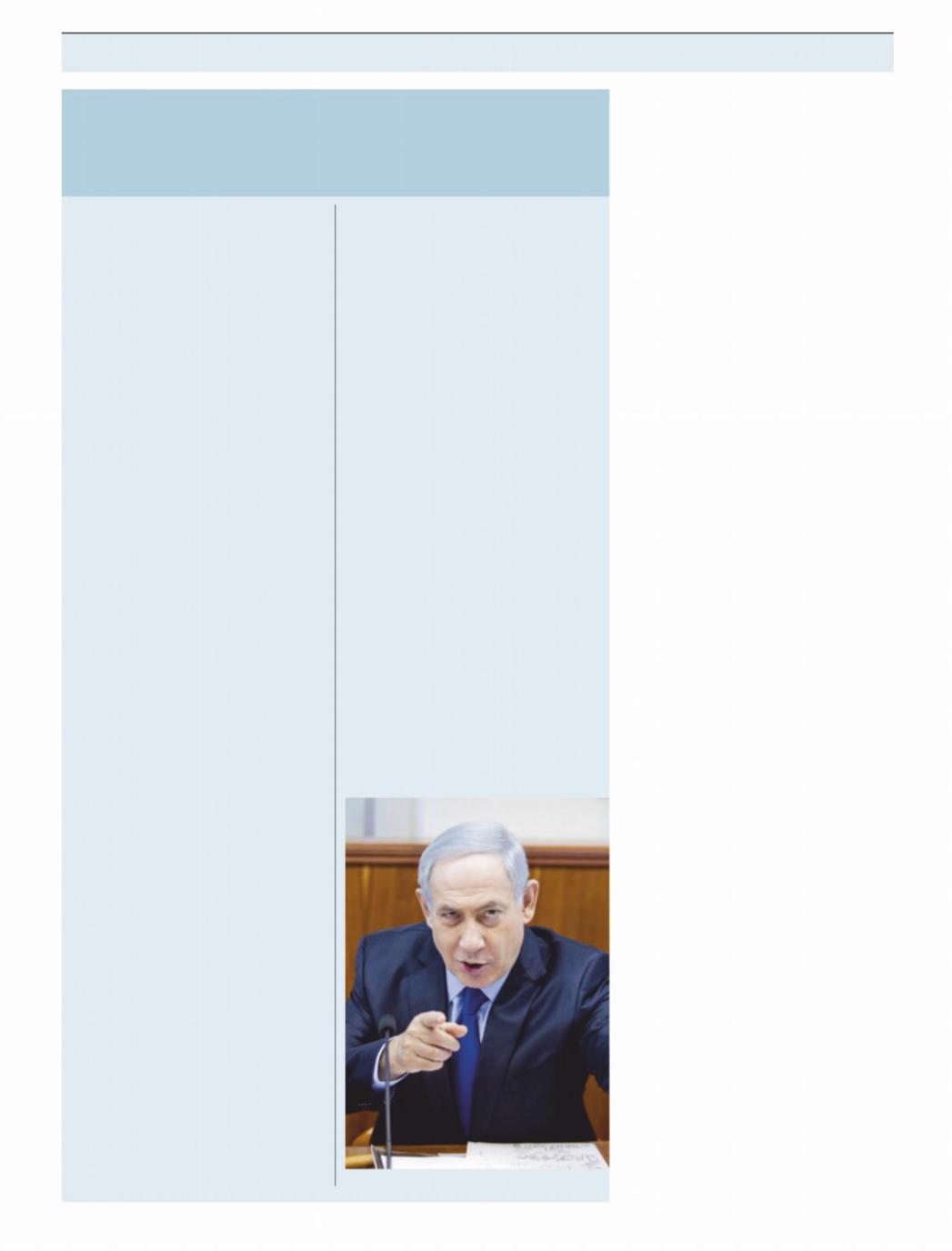
РЕЛИЗ ПОДГОТОВИЛА ГРУППА "What's News" VK.COM/WSNWS
vk.com/id446425943
The Economist February 9th 2019 |
Middle East & Africa 39 |
|
Israel’s election |
Trade and politics |
|
East African rifts |
||
Thus spoke Netanyahu |
||
An odd Hebrew word says a lot about Israeli politics |
|
It is not easy to translate the Hebrew word davka . It means something like “despite it all” and “because of”, but with
a sense of deliberate precision: I was at home all day, but the delivery man came davka during the half-hour when I was out. It can connote an intent to irritate: my girlfriend knows we disagree about politics, but she always davka brings it up. In 2003 Ariel Sharon, a pugnacious former prime minister, cited a young American explaining the word to friends back home: “ Davkame ns doing or thinking something both in spite of and because of a given situation.”
Curiously, Binyamin Netanyahu, Israel’s prime minister, has chosen as his campaign slogan “ Netanyahu”Davka . In December Israeli police recommended that Mr Netanyahu be indicted for bribery and breach of trust. The prime minister says the charges are a witch-hunt by lefty prosecutors and journalists. Many supporters of his hawkish Likud party come from religious or working-class backgrounds, and many are Sephardi Jews, descended from immigrants from the Arab world, rather than Ashkenazi Jews, who trace their roots to Europe and are typically richer. Mr Netanyahu’s davka is an invitation to his supporters to stick a finger in the eye of the elite: vote for me not just despite the corruption charges, but because of them.
This populist way of thinking is becoming familiar all over the world. At its heart lies the politics of resentment. Backers of President Donald Trump enthusiastically call themselves “deplorables”, embracing a term Hillary Clinton used to describe some of them. In Britain, Brexit supporters suggest that, in case of a second referendum, the Leave campaign should employ the rallying cry “Tell them again”. Such slogans appeal not to the merits of the cause, but to supporters’ resentment at being a target of condescension.
The great philosopher of resentment was Friedrich Nietzsche, who thought it had a lot to do with Jews. In “On the Genealogy of Morality”, he describes the politics of resentment as a Jewish invention that lies at the core of JudeoChristian ethics. In pagan morality, according to Nietzsche, the good is synonymous with the exc ellent and the powerful: rulers and gods are good because they are beautiful and strong. Judaism and Christianity, resentful of
pagan rule, inverted this morality. They |
|
K A M P A L A |
|
|
Africa’s strongest regional bloc is |
||
saw the weak masses as good, whereas |
|
||
|
under strain |
|
|
precisely ( davka!) the strong rulers were |
|
|
|
|
frica’s regional institutions do not |
||
evil. This “slave morality”, Nietzsche |
|
||
thought, was behind all of Western civili- |
Alack ambition. The African Union’s |
||
sation. He detested it. |
|
master plan promises a rich, peaceful con- |
|
Nietzsche’s account of morality’s |
|
tinent criss-crossed by high-speed trains. |
|
evolution is a fascinating mess with little |
Eventually. Its target is 2063, a date well |
||
relationship to historical reality. How- |
|
past the likely retirement date of all the big- |
|
ever, his analysis of resentment was |
|
wigs who signed the plan. |
|
picked up by thinkers like Sigmund |
|
The East African Community (eac ), by |
|
Freud and Hannah Arendt, and has be- |
|
contrast, has no time to waste. It wants to |
|
come crucial to the understanding of |
|
form a single currency by 2024. At a recent |
|
populism and authoritarianism. Still, it |
|
summit, heads of state discussed drafting |
|
is strange that the politics of resentment |
|
an east African constitution, with the ulti- |
|
should be employed davka by Mr Netan- |
|
mate goal of political federation. The eac is |
|
yahu, who is an unlikely underdog. |
|
the most successful of Africa’s regional |
|
The scion of a renowned Ashkenazi |
|
blocs. Since its revival in 2000 it has estab- |
|
family, Mr Netanyahu grew up in Ameri- |
|
lished a customs union and the rudiments |
|
ca before returning to Israel to serve in an |
of a common market. But its leaders are |
||
elite commando unit—a crucial dis- |
|
getting ahead of themselves: deepening |
|
tinction in a society where military |
|
rifts have put the project in jeopardy. |
|
service a ects social class. He has been a |
|
Four of its six members (Rwanda, Bu- |
|
dominant figure in Israeli politics for |
|
rundi, Uganda and South Sudan) are led by |
|
more than two decades. He and Likud |
|
ex-rebels, some with competing interests |
|
have helped pull Israel’s political centre |
|
in the Congolese borderlands to the west. |
|
in a hawkish direction, winning power |
|
The recent summit was postponed twice |
|
and all but ending the prospects for a |
|
because Burundi, which has fallen out with |
|
Palestinian state. |
|
Rwanda, refused to attend. That quarrel |
|
The real political outcasts in Israel are |
|
goes beyond mere words. In 2015 Pierre |
|
surely Likud’s opponents, the remnants |
|
Nkurunziza, the Burundian |
president, |
of the peace movement. They are the |
|
fought o a coup. His government accuses |
|
ones who must urge their dwindling |
|
Rwanda of backing it. In 2016 |
expertsunre- |
band of supporters to continue hoping |
|
ported that Burundian refugees were being |
|
for the seemingly impossible, |
davkarecruited. to fight against their home gov- |
||
|
|
ernment. In December the same experts |
|
|
|
said that arms and men were also flowing |
|
|
|
through Burundi to undermine Rwanda. |
|
|
|
Rwanda’s president, Paul Kagame, is |
|
|
|
also on bad terms with Yoweri Museveni, |
|
|
|
his Ugandan counterpart. The rift is perso- |
|
|
|
nal. Mr Museveni fought his way to power |
|
|
|
in the1980s with the help of Rwandan refu- |
|
|
|
gees; Mr Kagame, who grew up in a Ugan- |
|
|
|
dan refugee camp, was his military intelli- |
|
|
|
gence chief. Later, as presidents, the |
|
|
|
former comrades launched two wars in |
|
|
|
Congo, then fell out over the loot. By 2000 |
|
|
|
their soldiers were firing at each other, |
|
|
|
600km from home. |
|
|
|
Relations are again dicey. Last year Mr |
|
|
|
Museveni sacked his police chief, who was |
|
|
|
later charged by an army court with aiding |
|
|
|
the kidnap of Rwandan exiles (among oth- |
|
|
|
er things). The abductees, including one of |
|
|
|
Mr Kagame’s former guards, had been ille- |
|
|
|
gally sent back to Rwanda and imprisoned. |
|
|
|
Rivalry between Kenya and Tanzania, |
|
I want you (to be resentful) |
|
the two largest members, is more straight- |
|
|
forward. Together they account for three- |
||
|
|
fifths of the region’s population and three-1 |
|
http://new.guap.ru/i04/contacts
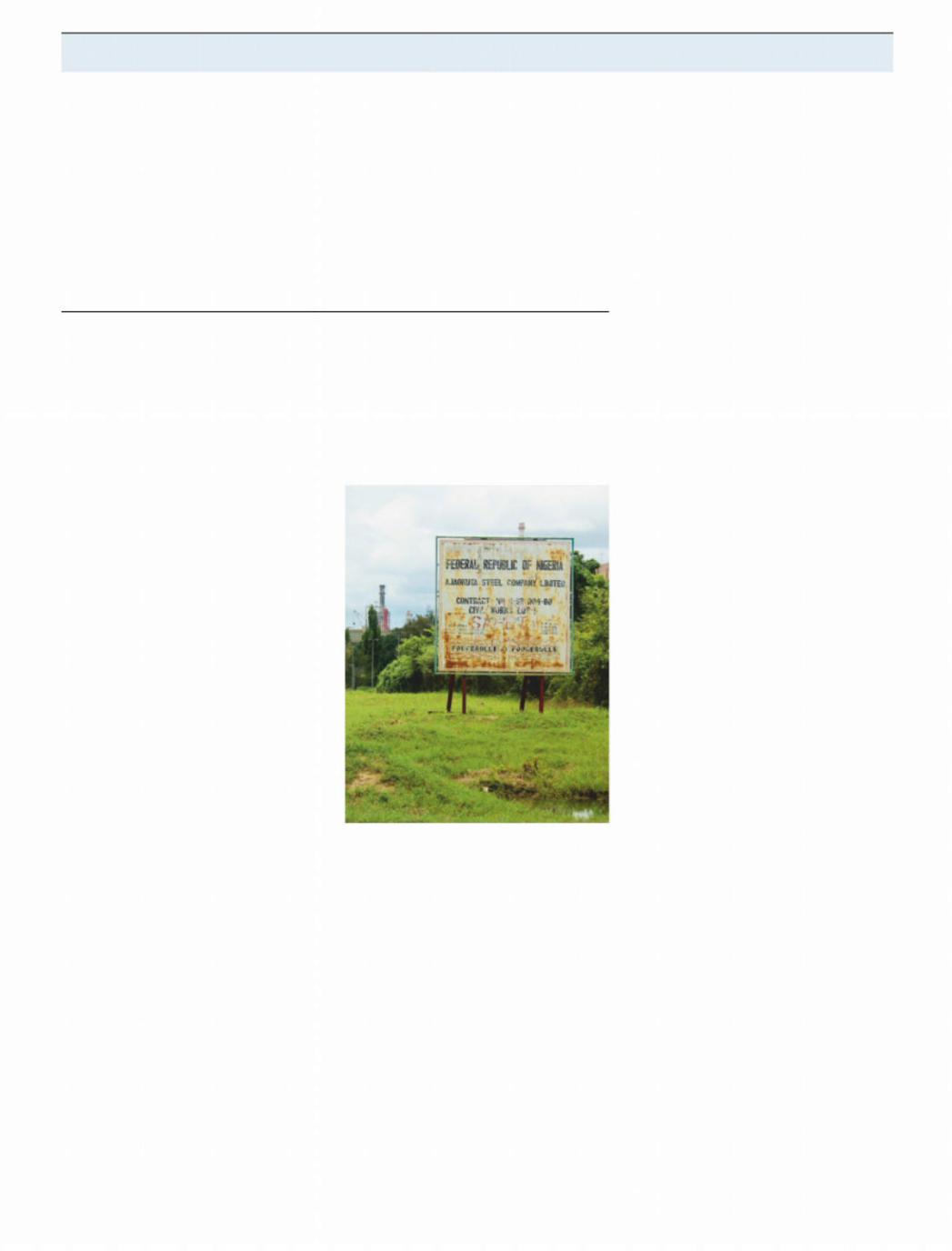
vk.com/id446425943 |
РЕЛИЗ ПОДГОТОВИЛА ГРУППА "What's News" VK.COM/WSNWS |
|
|
40 Middle East & Africa |
The Economist February 9th 2019 |
2 quarters of its gdp . Yet commerce between them is hobbled by a trade war. Although both are meant to be in a common market, Tanzania has imposed tari s on Kenyan sweets. Kenya has retaliated by taxing Tanzanian flour. Tanzania, which is sliding towards protectionism, also objects to a proposed trade deal between the eac and the eu , which Kenya is keen on. As the onlyeac countries with coastlines, both vie for investment in infrastructure: in 2016 Uganda decided to route an oil pipeline through
Elections in Nigeria
Tanzania, to Kenya’s chagrin.
Some worry that the escalating tensions could cause history to repeat itself. The first East African Community collapsed in 1977. More likely, the region will continue to make faltering progress on trade, where the spread of cross-border business creates its own momentum. But political issues are trickier. Leaders who brook no dissent at home have little taste for compromise abroad. Each wants integration, as long as he is in charge. 7
Battle of the big men
L O K O J A
President Muhammadu Buhari has disappointed. His opponent could be worse
Nothing seems awry on arrival at the Ajaokuta Steel Company near Lokoja in central Nigeria. Nestled in scrubland are
rows of depots, mills and furnaces; the complex covers 800 hectares, or four times the size of Monaco. Inside the main building workers amble through the foyer, barely noticing a suggestion box.
Your correspondent is, however, tempted to leave a note that reads: “How about making some steel?” Since construction of the state-owned firm began 40 years ago, it has received $8bn in public money without producing a beam. Corruption and mismanagement have gone on for so long that Ajaokuta has more than 10,000 pensioners on its books. There is no more colossal symbol of Nigeria’s squandered potential.
On February 16th Nigerians will go to the polls in the largest democratic event in African history. Fully 84m people are registered to vote in the country’s sixth general election since military rule ended in 1999. Yet the prospect of consolidating democracy in Africa’s most populous country has not elevated the campaign. Too many Nigerians have been let down by politicians to ditch their cynicism.
Muhammadu Buhari, Nigeria’s president, has promised to revive Ajaokuta. Yet he made the same commitment in 2015. In total Mr Buhari has delivered on just seven of the 222 pledges he made as a candidate, according to the Centre for Democracy and Development, a Nigerian think-tank.
These promises came in three areas. The first was corruption. Despite having 27 agencies with a mandate to clean things up Nigeria remains filthy. The latest report by Transparency International, a watchdog, finds no sign of corruption ebbing under Mr Buhari. In fact, his administration has used the prospect of protection from prosecution to entice opponents to join the All
When you said “steel”, someone misheard
Progressives Congress, the ruling party. Together these turncoats had N600bn ($1.7bn) worth of corruption allegations hanging over them.
Mr Buhari’s record on security is little better. After taking o ce he oversaw a military o ensive against Boko Haram, the terrorist group that in 2015 controlled an area of the north-east the size of Belgium. However, in the past few months the army has su ered setbacks. An attack last month in the town of Rann killed 60 people and forced another 30,000 to flee to Cameroon.
Nor is the north-east the only problem. Last year more people were killed in clashes over land between farmers and cattleherders than were slain by Boko Haram. In the north-west armed bandits killed 371 people and displaced18,000 in the first seven months of 2018. Across Nigeria, 7.7m people need humanitarian aid and 2m have
had to leave their homes.
Mr Buhari’s third set of promises concerned the economy. Alas, Nigerians are poorer today than in 2015. Unemployment has risen from 8.2% to 23.1%. The president is partly the victim of low oil prices; the black stu provides 70% of government revenue. But his statist instincts have made matters worse. Interest payments are set to reach 80% of federal government spending by 2022. Though Nigeria’s government has three space agencies, it can barely run a power grid. The country generates less electricity than the city of Edinburgh.
Atiku Abubakar, the main challenger to Mr Buhari, is also in his 70s. His slogan is: “Let’s Get Nigerians Working Again”. Citing Margaret Thatcher, he says he wants to privatise state-owned firms. But his plans are short on detail. Many fear privatisation would be a smokescreen for enriching his cronies. Though he has not been charged with any crime in Nigeria, in 2010 a us Senate committee alleged that Mr Abubakar’s (fourth) wife helped him bring “over $40m in suspect funds” to America.
Mr Abubakar, a former big man in the Nigerian customs service, denies that he is corrupt. His various businesses, from oil services to property, make him the largest employer in his home state of Adamawa. His vast fortune allows him to donate copiously to charity. He has a deep patronage network across the country.
That will help ensure the presidential election is closer than it was in 2015, when Mr Buhari won by more than 2.5m votes. “It’s going to be a bare-knuckle fight,” says Matthew Page of Chatham House, a thinktank. Elections in Nigeria are largely shaped by which political machine runs most e ectively. Mr Buhari can depend on a lot of support in the north. Mr Abubakar’s People’s Democratic Party will sweep most of the south-east. Much will depend on turnout in these core areas and on who can win swing votes in the south-west.
Some worry that the tightness of the race will encourage rigging. Recent elections in Anambra and Ekiti states saw widespread vote-buying; it is likely to happen again. Another concern is how easy it is to change the tallies when the results are sent from Nigeria’s120,000 polling units to counting stations. Then there is the spectre of thugs or police intimidating voters.
Four times Mr Buhari has blocked reforms that would strengthen Nigeria’s electoral commission. Such intransigence frustrates Samson Itodo, a founder of the “Not too young to run” campaign, which is trying to clean up elections and make political involvement easier for the three-quar- ters of Nigerians who are under 35. “We are tired of these same old leaders,” he says. “We are laying the foundation for a revolution in 2023.” Until then, Nigeria will be stuck with mediocrity. 7
http://new.guap.ru/i04/contacts
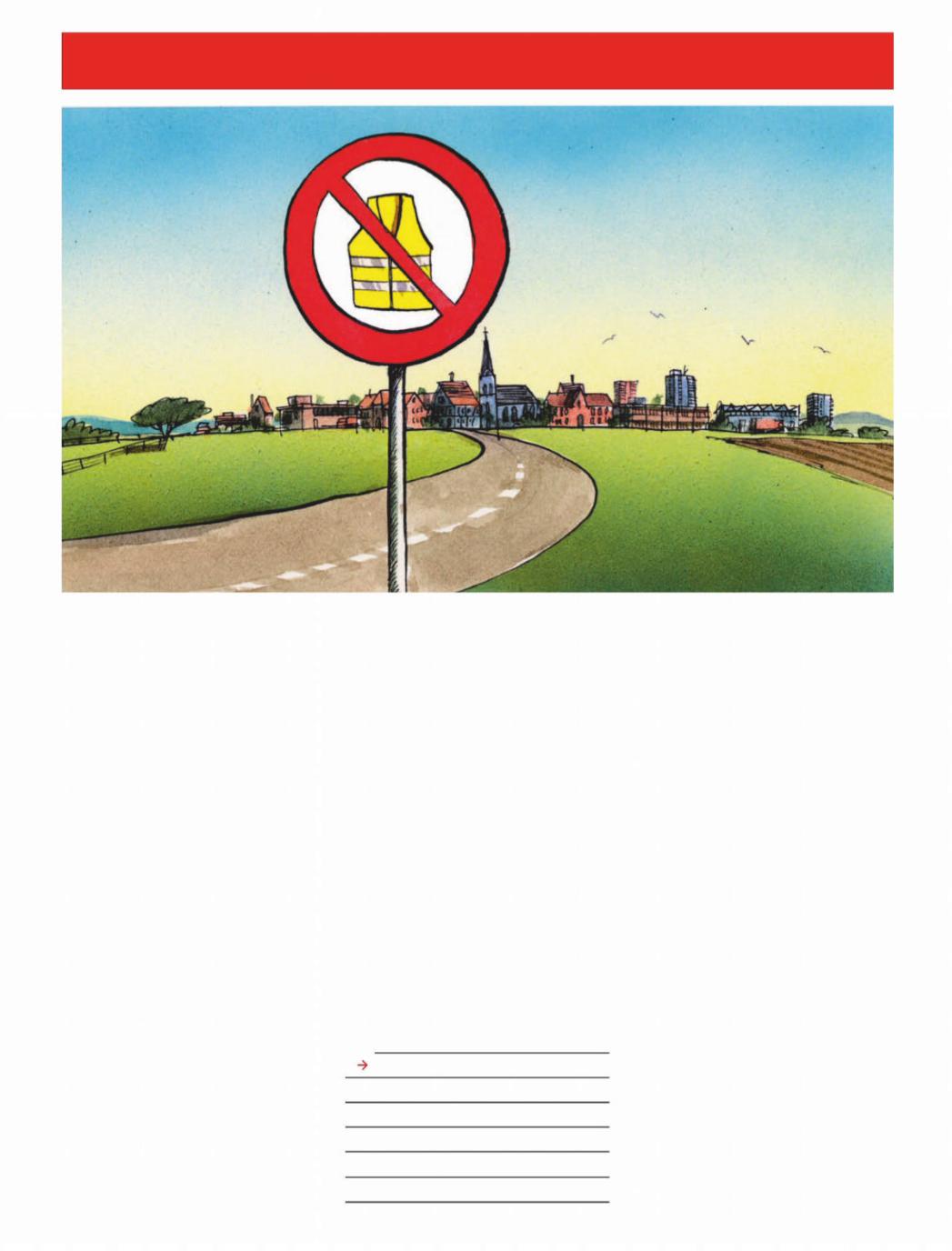
vk.com/id446425943
Europe
РЕЛИЗ ПОДГОТОВИЛА ГРУППА "What's News" VK.COM/WSNWS
The Economist February 9th 2019 41
Economic geography
Germany spreads the love
V E C H TA
How decentralisation can help inoculate against political unrest
“It’s important to understand the minds of pigs and chickens,” says Bernd Meerpohl, as he shows o his company’s wares. Big Dutchman, the firm he runs, designs sophisticated machinery, housing units and software tools, with names like EggFlowMaster and BigFarmNet, to help farmers get more from their beasts. These innovations have lifted sales 27-fold in real terms since 1985, to €960m
($1.1 bn) last year. Such success means ambitious locals from Vechta, the small town in north-west Germany in which Big Dutchman is based, can often find professional satisfaction without having to leave home. In nearby Lohne, Tanja Sprehe, digital sales manager at Pöppelmann, a highend plastics manufacturer, thought she’d never return to the area after building a career in Hamburg. But the demands of family brought her back. Now, having secured a good job and wallowing in the pleasures of small-town life, the only thing she misses about her former home is good sushi.
As democracies across the West fret about decaying, depopulating regions and
the radical politics they can foster, Vechta, population 33,000, o ers a di erent lesson. “Our problem,” says Helmut Gels, the mayor, “is that we have no problems.” The birth rate is extraordinarily high by German standards, and the town has been growing for decades. Successful family firms like Big Dutchman and Pöppelmann employ generations of locals, take on hundreds of apprentices and support thousands more jobs via their suppliers. Vechta’s employers even spy a silver lining in Germany’s economic slowdown (see Finance section). A looser labour market could help them find the skilled workers they crave—local unemployment is just
Also in this section
42Macron’s great debate
43The EU’s drug boondoggle
44Italy wishes for growth
44 Hungary’s underwater dog treadmill
46 Charlemagne: Vestager’s progress
3.7%—and help moderate wages, which Mr Meerpohl says are “running out of control”.
If Vechta is not typical, it is far from unique. Pöppelmann (local workforce 2,100) and Big Dutchman (900) are two of Germany’s “hidden champions”, a term coined in the 1990s by Hermann Simon, an aca- demic-turned-consultant, for Germany’s innumerable obscure, smallish and worldbeating firms. Unlike high-end services companies, which benefit from the network e ects and talent pools in big cities, specialist manufacturers are often found in places you’ve never heard of: at least two-thirds of the hidden champions are in settlements below 50,000 people, and they are dotted throughout Germany (see map on next page). Their success helps explain the relatively high share of manufacturing in Germany’s workforce and the slow pace of its decline (see chart on next page). Germany is also politically decentralised, which Philip McCann at She eld University says keeps regional inequality in check. And while creative sorts flock to cities, scientists and engineers keep small towns in rich areas alive. “I can stay here all my life,” chirrups Michael Fabich, a young production worker for a local grocery firm.
Decentralisation blunts a source of discontent that has plagued some of Germany’s neighbours. In France the revolt by gilets jaunes at first seemed to be about small-town grievances against the big cities in which economic opportunity has become concentrated. According to Andrés1
http://new.guap.ru/i04/contacts
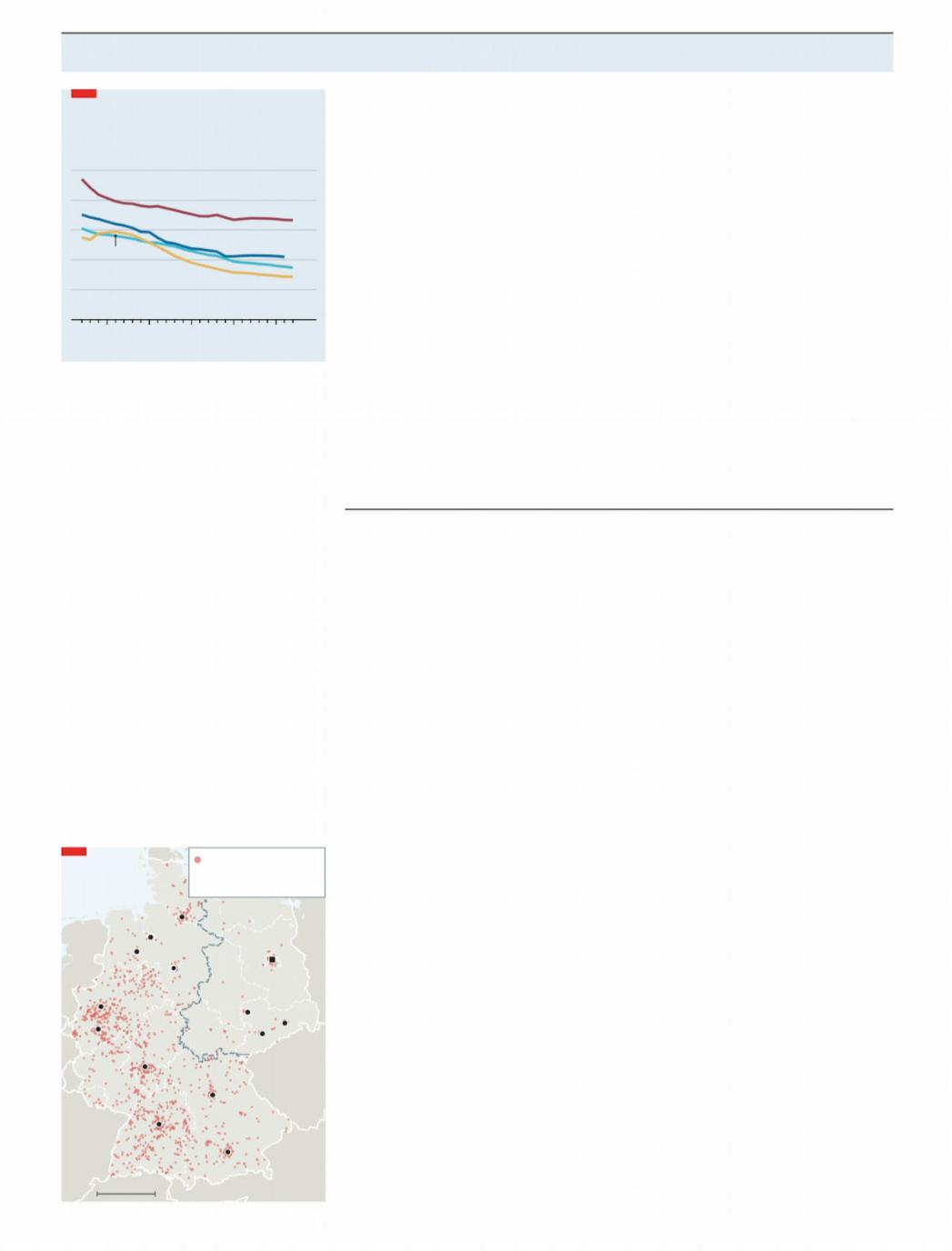
РЕЛИЗ ПОДГОТОВИЛА ГРУППА "What's News" VK.COM/WSNWS
vk.com/id446425943
42 Europe |
|
|
|
|
|
|
|
|
|
|
|
|
|
|
|
The Economist February 9th 2019 |
|||||
All down the line |
|
|
|
|
many to the insecure, “peripheral” France |
nomic hardship. |
|
|
|||||||||||||
|
|
|
|
of |
the |
|
gilets jaunesHidden. |
champions |
The big caveat is the former East Ger- |
||||||||||||
Manufacturing employment |
|
|
|
create jobs and opportunities far from cit- |
many. Despite success in isolated areas like |
||||||||||||||||
% of total employment |
|
|
|
|
|
ies, limiting the brain drain. Local politi- |
optics, only a fraction of Mr Simon’s hid- |
||||||||||||||
|
|
|
|
|
|
|
|
|
25 |
cians are more responsive to voters’ de- |
den champions are found in the east. After |
||||||||||
|
|
|
|
|
|
|
|
|
mands |
|
than |
Jupiterian |
presidents |
in |
reunification the mass sell-o of industry, |
||||||
|
|
|
Germany |
|
|
|
|
|
|
||||||||||||
|
|
|
|
|
|
|
20 |
distant capitals. In troubled areas, Ger- |
largely to western investors, left easterners |
||||||||||||
|
|
|
|
|
|
|
|
|
|||||||||||||
|
|
|
|
|
|
|
|
|
15 |
many’s constitutionally mandated system |
with what Mr Südekum calls a “deep per- |
||||||||||
|
|
|
|
|
|
|
|
|
of fiscal transfers across states can smooth |
ception that they were ripped o ”, which |
|||||||||||
|
|
|
France |
|
|
United States |
10 |
globalisation’s rougher edges. Jens Süde- |
lingers today. Extremist parties do best in |
||||||||||||
|
|
|
|
|
kum, an economist at Düsseldorf’s Hein- |
the five eastern states. Dresden and Chem- |
|||||||||||||||
|
|
|
|
|
|
|
|
||||||||||||||
|
|
|
|
|
|
|
|
|
|
||||||||||||
|
|
|
|
|
Britain |
|
|
5 |
rich Heine University, calculates that in |
nitz have spawned thuggish protests. |
|||||||||||
|
|
|
|
|
|
|
|
|
2010 such payments amounted to fully |
Moreover, the trends that mark Ger- |
|||||||||||
|
|
|
|
|
|
|
|
|
|
||||||||||||
|
|
|
|
|
|
|
|
|
0 |
12.4% of Germany’s aggregate tax revenue. |
many out from its industrialised peers are |
||||||||||
|
|
|
|
|
|
|
|
|
Cities like Duisburg and Essen, in the post- |
not immutable. Automation will cut into |
|||||||||||
1992 |
95 |
2000 |
05 |
10 |
15 |
17 |
|
||||||||||||||
|
industrial Ruhr valley, have been spared |
manufacturing’s share of the workforce, |
|||||||||||||||||||
Source: Datastream from Refinitiv |
|
|
|
|
|||||||||||||||||
|
|
|
|
the |
ravages |
that |
deindustrialisation |
and Germany’s mighty carmakers seem ill- |
|||||||||||||
|
|
|
|
|
|
|
|
|
|
||||||||||||
|
|
|
|
|
|
|
|
|
|
brought to parts of America’s Midwest or |
prepared for the disruption of self-driving |
||||||||||
2 Rodriguez-Pose, a professor of economic |
the Pas-de-Calais region in northern |
and electric vehicles. Despite the hidden |
|||||||||||||||||||
geography at the |
|
lse , Ile-de-France (whichFrance, |
now a stronghold of Marine |
Le |
champions’ success, urbanisation contin- |
||||||||||||||||
contains Paris) was the only French region |
Pen’s National Rally. Comparable parts of |
ues apace, as rocketing house prices in |
|||||||||||||||||||
with above-average growth between 1990 |
Germany have not made a comparable pop- |
large cities indicate. Vechta is keeping its |
|||||||||||||||||||
and 2014. Not only were the gilets jaunes |
|
leftulist turn. Indeed, researchers find no clear |
natives, but attracting new talent is hard |
||||||||||||||||||
behind, they felt scorned by the winners of |
correlation between |
supporta fd and eco- |
when the competition is Berlin. 7 |
||||||||||||||||||
globalisation, embodied by the haughty |
|
|
|
|
|
|
|
|
|
|
|
|
|||||||||
and remote figure of Emmanuel Macron. |
France |
|
|
|
|
|
|
|
|
|
|
||||||||||
Germany should not consider itself im- |
|
|
|
|
|
|
|
|
|
|
|||||||||||
mune to such problems, argues Marcel |
Macron’s great debate |
|
|
||||||||||||||||||
Fratzscher of the German Institute for Eco- |
|
|
|||||||||||||||||||
nomic Research. Beneath its glowing jobs |
|
|
|
|
|
|
|
|
|
|
|
|
|||||||||
numbers lurk growing inequality and a |
|
|
|
|
|
|
|
|
|
|
|
|
|||||||||
vast low-pay sector, nurtured by a long per- |
|
|
|
|
|
|
|
|
|
|
|
|
|||||||||
iod of wage suppression. Germany has |
|
|
|
|
|
|
|
|
|
|
|
|
|||||||||
gained more from globalisation than it has |
E V R Y - C O U R C O U R O N N E S |
|
|
|
|
|
|
|
|||||||||||||
lost; you can see that in Big Dutchman’s lo- |
|
|
|
|
|
|
|
||||||||||||||
An unloved president is trying to turn a crisis into an opportunity |
|
||||||||||||||||||||
gistics yard, full of packages destined for |
|
||||||||||||||||||||
|
|
|
|
|
|
|
|
|
|
|
|
||||||||||
Senegal and Chile. But regions that special- |
our hours into the town-hall debate, |
utions”. The government had increased the |
|||||||||||||||||||
ised in low-end products like ceramics or |
Fand members of the audience begin to |
dsu (urban solidarity and social cohesion |
|||||||||||||||||||
textiles, such as upper Franconia or parts of |
fidget. One man yawns. A few others put on |
budget), he argued, even if it had cut the |
|||||||||||||||||||
the Palatinate, were walloped by cheap im- |
coats and slip out quietly. But Emmanuel |
dpv (cities’ budget). |
|
|
|||||||||||||||||
ports in the 1990s. Policy can hurt places, |
Macron is just hitting his stride. Perched on |
Mr Macron’s grasp of policy detail |
|||||||||||||||||||
too: the government may have to spend |
a plastic chair in the municipal hall, his |
sometimes ba es as much as it clarifies. |
|||||||||||||||||||
€40bn to compensate regions a ected by |
shirtsleeves rolled up, the French presi- |
But his marathon meetings are more na- |
|||||||||||||||||||
its recent decision to scrap lignite mining. |
dent carries on for another two hours, tak- |
tional group therapy than public lectures. |
|||||||||||||||||||
Yet there is no obvious parallel in Ger- |
ing notes and answering queries. One mi- |
One by one, the 300 local mayors and com- |
|||||||||||||||||||
|
|
|
|
|
|
|
|
|
|
nute it is housing benefits, the next the |
munity workers gathered in this town-hall |
||||||||||
|
|
|
|
|
|
Germany’s “hidden |
|
reimbursement of psychiatric care or de- |
annex down the road from a Turkish kebab |
||||||||||||
|
|
|
|
|
|
|
lays to the extension of a Metro line. It is |
restaurant raised their hands and took the |
|||||||||||||
|
|
|
|
|
|
champions” |
|
|
|
||||||||||||
|
|
|
|
|
|
Small world-beating firms |
not until close to midnight that Mr Macron |
microphone. A centre-right mayor pleaded |
|||||||||||||
|
|
|
|
Hamburg |
|
|
|
|
|
finally exhausts the questions (and the au- |
for help saving 800 factory jobs. A commu- |
||||||||||
|
|
|
|
|
|
|
|
|
dience), accedes to requests for selfies and |
nist mayor said the |
banlieuewants “justice, |
||||||||||
|
|
S |
|
|
|
|
|
|
P |
||||||||||||
|
D |
|
Bremen |
|
|
|
drives o into the night. |
|
|
|
not charity”. A football-club |
organiser |
|||||||||
N |
|
|
|
|
O |
|
|
|
|||||||||||||
|
Vechta |
|
|
|
L |
|
|
|
|||||||||||||
|
|
|
|
|
|
|
A |
|
|
|
|
|
|
|
|
|
|
|
|
||
A |
|
|
|
|
|
|
|
N |
Battered in the polls and facing weekly |
wants volunteers to be properly valued. |
|||||||||||
L |
|
|
|
|
|
|
Berlin |
||||||||||||||
R |
|
|
|
|
|
|
D |
|
|
|
|
|
|
|
|
|
|
|
|
||
E |
|
|
|
|
|
|
|
|
|
protests in the street, Mr Macron is at- |
“I’m sure you’ll listen to me, because I’m |
||||||||||
H |
|
|
|
|
|
|
|
|
|
||||||||||||
T |
|
|
|
Hanover |
|
|
|
|
|
|
|
|
|
|
|
|
|
|
|
|
|
E |
|
|
|
|
|
|
|
tempting a comeback in the way he knows |
called Brigitte,” ventured another mayor, |
||||||||||||
N |
|
|
Essen |
|
|
|
|
|
|
||||||||||||
|
|
|
|
|
Leipzig |
|
Dresden |
best: with the force of argument, reason |
who shares a name with the president’s |
||||||||||||
|
|
|
|
|
|
|
|
and relentless acronyms. This week’s stop |
wife. All the while, and without briefing pa- |
||||||||||||
Cologne |
|
|
Chemnitz |
|
in |
Evry-Courcouronnes, |
a |
town 30km |
pers, Mr Macron listened to the litany of |
||||||||||||
|
|
|
south of Paris, was part of his “great nation- |
complaints and o ered a response to each. |
|||||||||||||||||
|
|
|
|
Frankfurt |
Former boundary |
||||||||||||||||
|
|
|
|
al debate”, intended to let citizens register |
Three months after |
the |
gilets jaunes |
||||||||||||||
|
|
|
|
|
|
between East & |
|||||||||||||||
|
|
|
|
|
|
West Germany |
grievances and contribute ideas. It also al- |
movement emerged, and with weekly prot- |
|||||||||||||
|
|
|
|
|
|
|
|
CZECH |
|||||||||||||
|
|
|
|
|
|
Nuremberg |
|
lowed the president to take his town-hall |
ests continuing, Mr Macron is gambling |
||||||||||||
|
|
|
|
|
|
|
REP. |
||||||||||||||
|
|
|
|
|
|
|
road-show away from rural France, the nat- |
that the national debate is a way to turn |
|||||||||||||
|
|
|
Stuttgart |
|
|
|
|
|
|||||||||||||
|
|
|
|
Munich |
|
|
|
ural habitat of the |
|
gilets protjaunesters, |
chaos into an opportunity. By taking seri- |
||||||||||
FRANCE |
|
|
AUSTRIA |
and into the multi-ethnic outer-city dis- |
ously the grassroots grievances, while de- |
||||||||||||||||
|
|
|
|
|
|
|
|||||||||||||||
|
|
|
|
|
|
|
tricts, or |
banlieues. “We can do better,” Mr |
nouncing the violence, he hopes to win |
||||||||||||
|
|
|
|
|
|
|
|
|
|
||||||||||||
|
|
|
100 km |
Source: Professor Hermann Simon |
Macron told participants, conceding that |
round public opinion, |
which |
has sup- |
|||||||||||||
|
|
|
he had “convictions” but “not all the sol- |
ported the movement, and marginalise the1 |
|||||||||||||||||
|
|
|
|
|
|||||||||||||||||
http://new.guap.ru/i04/contacts
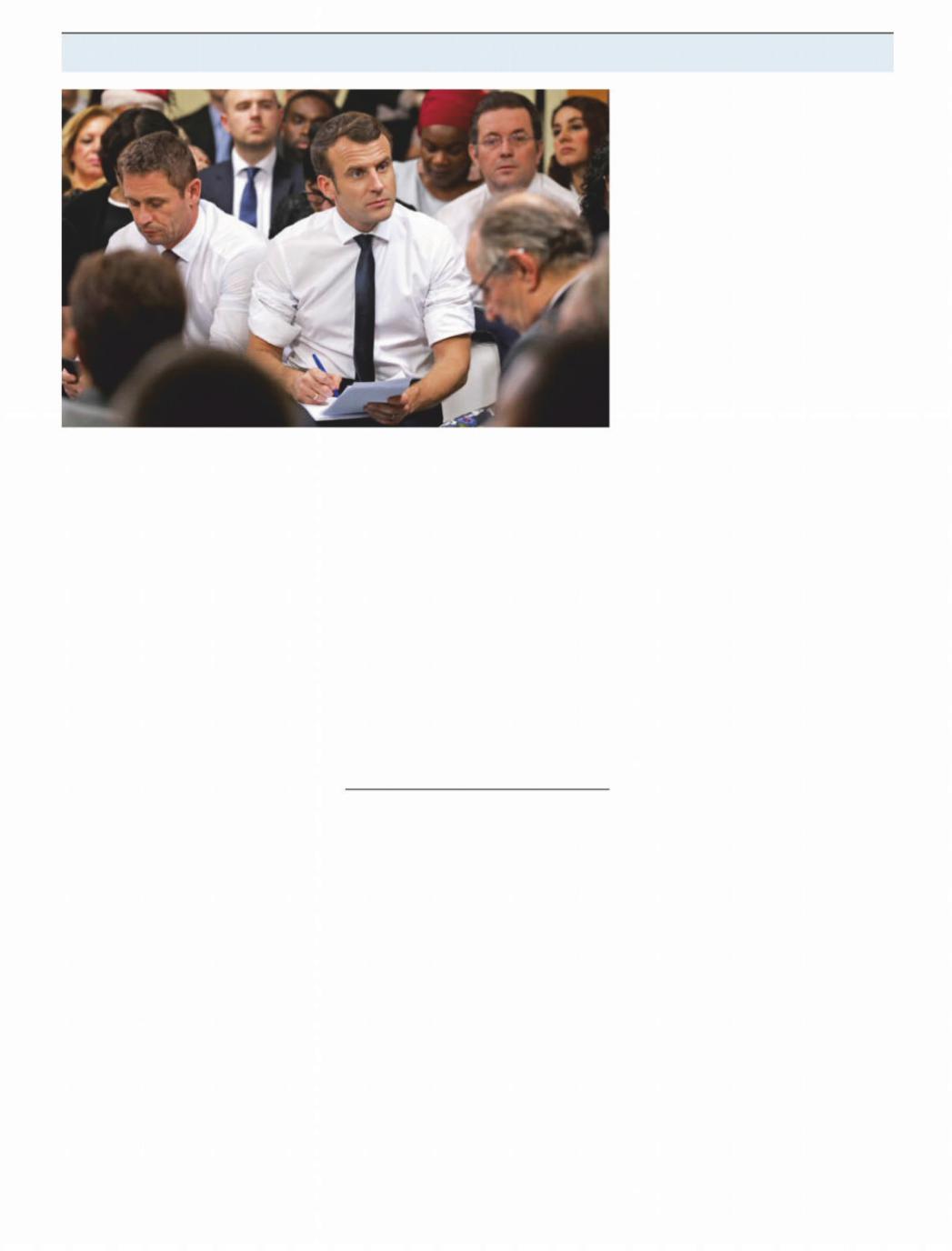
vk.com/id446425943 |
РЕЛИЗ ПОДГОТОВИЛА ГРУППА "What's News" VK.COM/WSNWS |
|
|
The Economist February 9th 2019 |
Europe 43 |
Jupiter listens
2 hard core. The president has swapped the chandeliers and gilt of the presidential palace for draughty municipal gyms. He has ditched his lofty know-it-all tone for dialogue and debate. The point “is to show that France is not just the gilets,” saysj unes Amélie de Montchalin, a deputy from Mr Macron’s La République en Marche party.
The president’s detractors dismiss it as a gimmick. Jean-Luc Mélenchon, on the far left, terms it a “masquerade”. Facebook groups run by gilets jaunescall it “blabla”, accusing Mr Macron of campaigning at taxpayers’ expense. Yet the French seem keen to have their say. Over 4,000 town-hall debates have been organised. Mayors have opened “books of grievances”. An online questionnaire has drawn 700,000 contributions on taxation, public services, the environment and democracy. Mr Macron’s approval rating in February was up by six points, to 34%, according to Ifop—still pretty dismal, but an improvement on his record low of 23% in December.
The next problem is what to do with this outpouring of civic participation when the debate draws to a close on March 15th. In Evry-Courcouronnes, Mr Macron promised that the national debate would “not end in a classic way”. One idea is to hold a referendum, with questions on such matters as the number of deputies in the National Assembly or term limits. This could partly meet the gilets jaunesdemand for more direct democracy. Yet Mr Macron has also ruled out backtracking on his main policy choices, including the abolition of the wealth tax. It may well be that the central demand which emerges from the consultation is a familiar contradiction: more public services and lower taxes.
In Evry-Courcouronnes, the initially sceptical locals seemed broadly satisfied. Manuel, in tracksuit bottoms and trainers, said he is “not interested” in politics. But
when he called out from the balcony of his housing-estate flat to Mr Macron as he arrived, the president invited him along, and he got to ask him a question about racial discrimination. Afterwards, he judged the president “pretty good”. So did Guy Bellanger, who runs a sports club and says he wanted just to “be heard”. Ghislaine Bazir, headmistress of a lycée, suggests “people don’t dare” to say they approve of Mr Macron, because of the “stigma” of doing so.
The president has shown that, in six hours of non-stop discussion, he can win over most of a room. If he wants to prove wrong all those who consider the a air a charade, he now needs to conquer public opinion as a whole and to turn conflicting proposals into coherent policies. 7
EU drug verification
Phantom fakes
A huge system to catch bogus pills may not find many
Teething problems are to be expected with an online system linking more than 150,000 organisations in 28 countries to one giant data hub. That is what the European Medicines Verification System, which goes live on February 9th, will do with pharmacies, hospitals, drug firms and their distributors. From now on, each of the 18bn packs of prescription medicines sold in the eacheu year must have a tam- per-proof seal and a unique code, which pharmacists must scan in to verify it is not a fake. As the deadline approaches, the system’s glitches are becoming clearer; its
benefits, less so.
According to the |
eu ’s Falsified Medi- |
cines Directive, the goal is to protect con- |
|
sumers from the threat of falsified medi- |
|
cines in the legal supply chain. But that |
|
threat barely exists in Europe. When the di- |
|
rective was issued in 2011, just one in |
|
20,000 medicine packs was reckoned to be |
|
fake. There are no data suggesting this has |
|
changed. According to Europol, seizures of |
|
fake pharmaceuticals at |
borderseuin re- |
cent years have fallen. Most such shipments are simply passing through the on their way to countries with weak safeguards where they will be easier to sell.
Roberto Frontini, former president of the European Association of Hospital Pharmacists, doubts whether the new system’s priority is patients’ safety. If it were, he points out, all over-the-counter medicines would have been included too. Mihai Rotaru of the European Federation of Pharmaceutical Industries and Associations says pharma companies pushed for an all-eu verification system because some countries were considering setting up their own, which would have created a packaging nightmare for manufacturers. Others in Brussels say big pharma’s motivation was to throw a spanner in the works of par- allel-trade firms, which export medicines from low-price to high-price eu countries (a thriving business because countries often fix domestic drug prices).
The burden falls partly on pharmacies, which have to pay €530 ($604) apiece for new scanners and adapt their software. Urging them to get ready has been a tough sell, say national pharmacists’ associations, because incidents with fake medicines in the legal supply chain are rare or non-existent. Most pharmacies in Britain are ready, but a no-deal Brexit would cut them o from the data hub.
Disdain percolates in hospitals, too. Many get their medicines directly from manufacturers, which makes verification redundant. Hospital pharmacy units dispatch hundreds of packs to wards each day. Scanning each of them would require more sta . Many hospitals are lobbying to be exempted from scanning, or to be allowed to scan shipments in bulk. Because they are mostly government-owned, hospitals are less worried than street pharmacies about sanctions for not meeting the deadline.
What should patients expect? Recent tests of the system make it clear that false alarms will be beeping at pharmacies for the first few weeks, if not months. Some packs with the new codes are already on the market but not in the system. Labels sometimes fail to scan. What pharmacists should do is not always clear. Some countries are still writing their guidelines on when to quarantine a pack and how to inspect it. For now, when a pack triggers an alarm, pharmacists are told to go ahead and dispense it to patients anyway. 7
http://new.guap.ru/i04/contacts

РЕЛИЗ ПОДГОТОВИЛА ГРУППА "What's News" VK.COM/WSNWS
vk.com/id446425943
44 Europe |
|
|
|
|
The Economist February 9th 2019 |
||
Italy |
|
In reaction Luigi Di Maio, the |
|
with m5s5 s, he has one. |
|||
Wish upon Five |
|
leader, has adopted a more radical stance. |
The m 5 smay yet decide to block Mr Sal- |
||||
|
He now shares platforms with Alessandro |
vini’s indictment in parliament. But it will |
|||||
Stars |
|
Di Battista, a shrill polemicist popular with |
want something in return. The obvious |
||||
|
the party’s left wing. This week, when Italy |
concession would be Mr Salvini’s agree- |
|||||
|
|
vetoed the |
eu ’s planned recognition mentof to postpone or scrap a half-built |
||||
R O M E |
|
Juan Guaidó, an opposition leader, as inter- |
high-speed rail link between Turin and the |
||||
|
im president of Venezuela, it was the m 5 s ’s |
French city of Lyon. The movement has al- |
|||||
Italy’s populist government dreams of |
|||||||
work. (By contrast Mr Salvini denounces |
ways opposed it as unnecessary and envi- |
||||||
gdp growth |
|
||||||
|
Nicolás Maduro, the leftist who stole Vene- |
ronmentally damaging. Now, in a sign of |
|||||
|
|
||||||
or italy , 2019 will be |
bellissimozuela’s,itsmost recent presidential election, |
how the party is changing, it has begun us- |
|||||
Fprime minister, Giuseppe Conte, said |
as a criminal.) On February 5th Mr Di Maio |
ing the renascent rhetoric of populist na- |
|||||
this month. The economy, he declared, |
flew with Mr Di Battista to Paris to meet |
tionalism to belittle the very idea of linking |
|||||
could grow by up to1.5%. With much of Eu- |
leaders of the |
gilets jaunes |
protesttwmovecountries- |
together. As the m 5 sinfra- |
|||
rope at risk of slipping into recession, that |
ment. If Emmanuel Macron, France’s presi- |
structure minister, Danilo Toninelli, put it: |
|||||
sounds pretty good. |
|
dent, needed another reason to be angry |
“Who cares about going to Lyon?” 7 |
||||
In fact, Italy is already in recession. Its |
|
|
||
gdp fell in both the third and fourth quar- |
Fraud in Hungary |
|||
ters of 2018, and few forecasters are as san- |
||||
Sniffing out corruption |
||||
guine as Mr Conte. The Bank of Italy ex- |
||||
pects the economy to grow by just 0.6% |
||||
this year. The prime minister is banking on |
|
|
||
an expansionary budget. If this fails to re- |
The curious incident of the underwater treadmill for dogs |
|||
vive the economy, the two parties in his |
||||
|
|
|||
populist coalition, the Five Star Movement |
here was no underwater treadmill |
which got €43.7m in eu funding. Accord- |
||
(m 5 s ) and the nationalist Northern League, |
Tfor dogs. That, Sherlock Holmes |
ing to Atlatszo.hu, an investigative web- |
||
will be in trouble. Many question whether |
would have said, was the curious in- |
site, the contracts were won by a com- |
||
their fractious marriage can survive be- |
cident. In 2009 a Hungarian entrepre- |
pany co-owned at the time by the |
||
yond summer. |
|
neur received a €140,000 ($195,000) |
son-in-law of Viktor Orban, the prime |
|
The economy is not their only problem. |
grant from the European Union to manu- |
minister. But in November Hungarian |
||
Matteo Salvini, leader of the League and a |
facture one. This was by no means ab- |
police closed the case, saying no crime |
||
deputy prime minister, may be tried for |
surd: hydrotherapy is an established |
had been committed. Since olaf can |
||
kidnapping. Last year, in keeping with his |
technique of post-surgical rehabilitation |
only refer cases to national authorities, |
||
tough stance on immigration, he stopped |
for dogs and humans. But the grantee |
that was the end of the matter. |
||
177 migrants from getting o a coast-guard |
made no e ort to design or build the |
The eu ’s new public prosecutor’s |
||
vessel that had rescued them in the Medi- |
device. When olaf , theu ’s o ce for |
o ce, which is due to launch by the end |
||
terranean. They languished on the ship in |
investigating fraud, discovered this, it |
of 2020, will have enforcement powers. |
||
port at Catania for five days. Last month a |
alerted Hungarian prosecutors. Last |
But participation is voluntary, and Hun- |
||
court decided Mr Salvini should be indict- |
October a Hungarian court gave him a |
gary has not opted in. Zoltan Kovacs, the |
||
ed for illegally detaining them, though the |
suspended sentence of 22 months in jail. |
government’s spokesperson, says Hun- |
||
prosecutors who investigated his conduct |
If that sounds lenient, bigger cases of |
gary thinks judicial a airs are matters of |
||
asked that the case be shelved. |
suspected Hungarian misuse of eu funds |
national sovereignty, and claims the |
||
Arraigning an Italian lawmaker re- |
have led to even less punishment. In |
corruption accusations are “political”. |
||
quires clearance from parliament. To avoid |
January 2018 olaf sent Hungarian police |
The government refuses to release olaf ’s |
||
prosecution, Mr Salvini needs the votes of |
a file documenting irregularities in 35 |
full report. Until it does, suspicions of a |
||
m 5 s . But mhas5always told voters that it |
municipal-lighting projects in 2011-15, |
cover-up will continue to dog it. |
||
rejects Italy’s grubby history of political ob- |
|
|
||
struction of the courts. And the party has |
|
|
||
already sacrificed plenty of principles |
|
|
||
since coming to power. |
|
|
|
|
One prominent voter who has noticed is |
|
|
||
Michele Riondino, an actor who starred in |
|
|
||
the popular television crime series, The |
|
|
||
Young Montalbano |
. Mr Riondino voted for |
|
||
m 5 slast year because it promised to close a |
|
|
||
noxious steel plant in his native city of Ta- |
|
|
||
ranto. But the factory has stayed open. The |
|
|
||
television star spoke for many when, in an |
|
|
||
interview this week, he vowed to abstain in |
|
|
||
the next election. |
|
|
|
|
The regional election in Abruzzo on |
|
|
||
February 10th will be an important test of |
|
|
||
the public mood. Polls show that m 5 s ’s |
|
|
||
share of the national vote has dropped |
|
|
||
from almost a third at the parliamentary |
|
|
||
election last March to roughly a quarter. |
Like this one, but Hungarian |
|
||
The League, meanwhile, has almost dou- |
|
|||
bled its share to more than 30%. |
|
|
||
http://new.guap.ru/i04/contacts
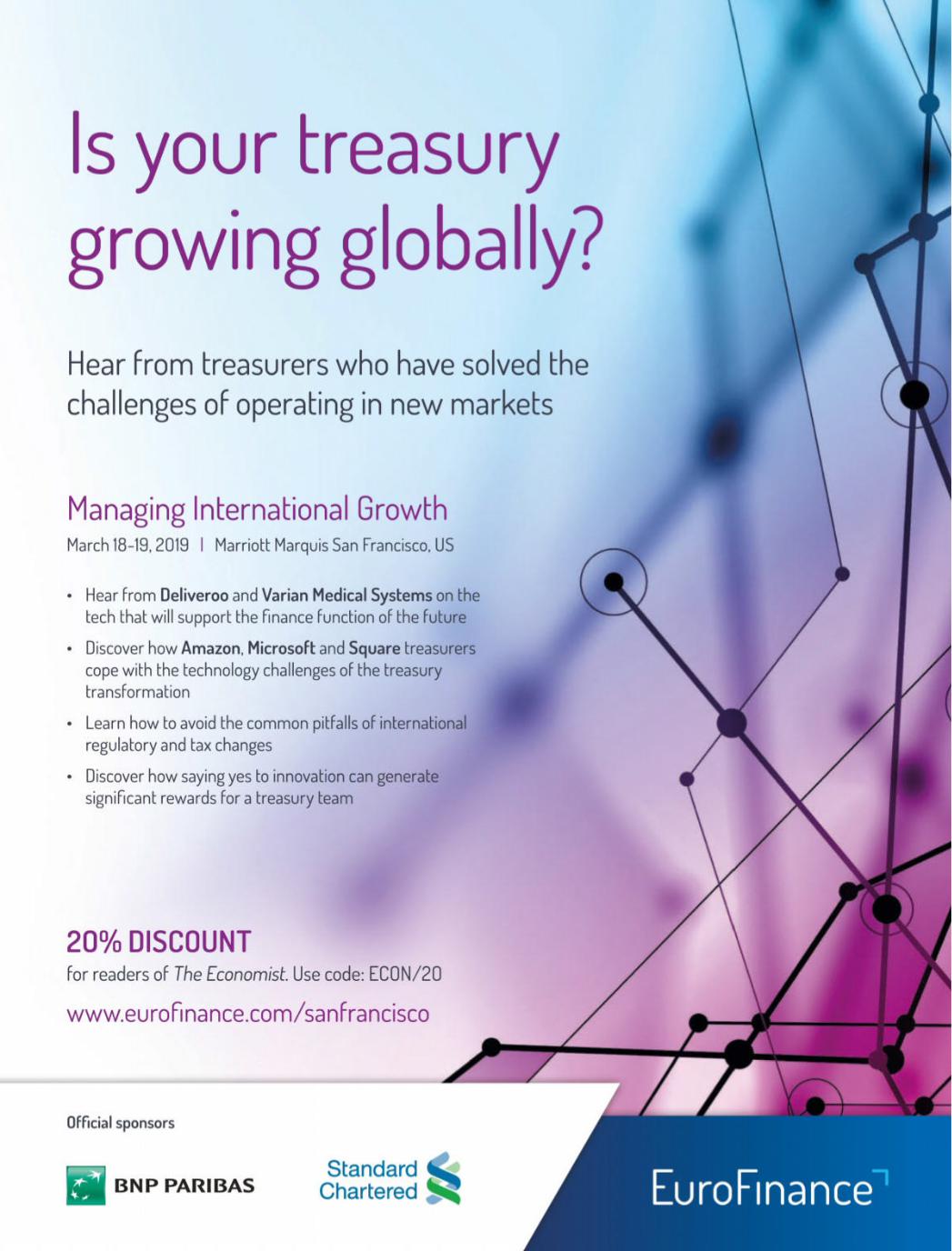
РЕЛИЗ ПОДГОТОВИЛА ГРУППА "What's News" VK.COM/WSNWS
vk.com/id446425943
http://new.guap.ru/i04/contacts
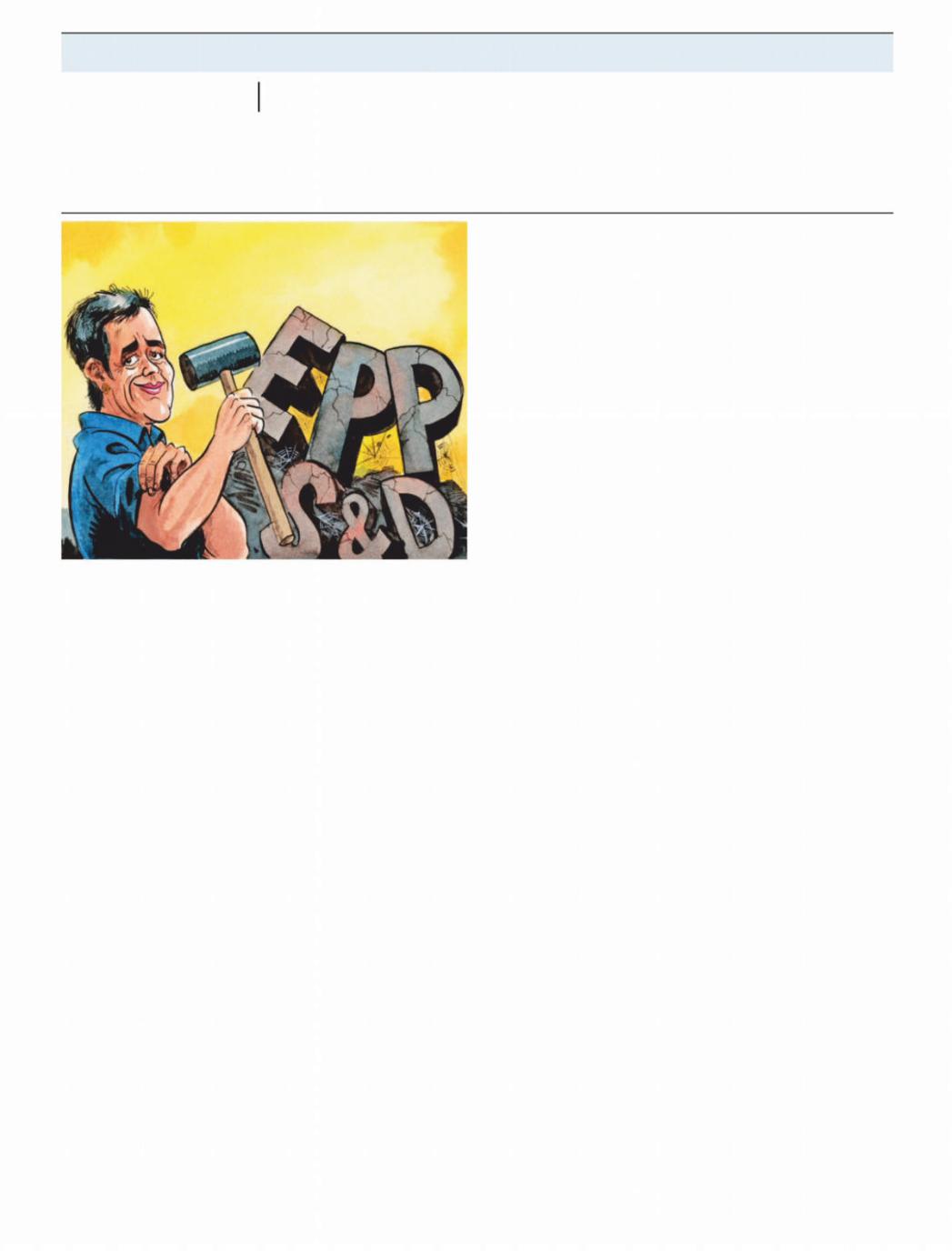
vk.com/id446425943 |
РЕЛИЗ ПОДГОТОВИЛА ГРУППА "What's News" VK.COM/WSNWS |
|
|
46 Europe |
The Economist February 9th 2019 |
Charlemagne |
Vestager’s progress |
A liberal trust-buster could break the establishment’s grip on the EU’s top job
have to control the sea’s entire coastline to control access to it, she |
||
notes. Technology firms, Ms Vestager rightly concluded, can simi- |
||
larly exercise disproportionate power: “We can’t trade our freedom |
||
for better maps or our democracy for a better social-media algo- |
||
rithm.” She has not ruled out a tilt at the commission presidency |
||
when Jean-Claude Juncker’s term ends this autumn. |
|
|
Winning it will require Europe’s top trust-buster to break up its |
||
biggest political duopoly: the alliance of the two largest groups in |
||
the European Parliament, the centre-right European People’s Party |
||
(epp ) and the centre-left Socialists and Democrats ( |
s&d |
|
function as a sort of cartel, colluding in the allocation of big |
||
jobs and putting up most of the commission presidents to date. |
||
They tightened their grip in 2014 with the introduction of the so- |
||
called Spitzenkandidat system, whereby the designated candidate |
||
of the largest group in the parliament has an automatic claim. This |
||
process strengthens the big groups, especially the epp , which is ex- |
||
pected to remain the largest at the European election in May. |
|
|
Now is a good moment to challenge it. The epp and the |
s&dare |
|
alliances of big-tent national parties, such as Christian democrats |
||
and social democrats. In most countries, such parties are strug- |
||
gling. The |
eppand the s&dwill probably lose their joint majority in |
|
|
|
May. The centrist Alliance of Liberals and Democrats for Europe |
est in peace |
, “Trainbus”. On February 6th Margrethe Vestager,(alde ), which includes Radikale, could go from the fourth-largest |
|
Rthe European Union’s competition commissioner, vetoed a |
group to the second-largest—especially if it forms an alliance with |
|
merger between Germany’s Siemens and France’s Alstom that pro- |
Mr Macron’s La République En Marche (lrm ) party in France. |
|
posed to do for train-building what Airbus has done for plane- |
The two big groups have not helped themselves with their can- |
|
building: create a European giant capable of competing with the |
didate selection. The s&d picked Frans Timmermans, a clubbable |
|
world’s biggest. The move dismays Angela Merkel and Emmanuel |
social democrat who is not expected to get the support of the liber- |
|
Macron, who argue that Europe needs champions to take on rivals |
al government in his native Netherlands. The epp went with |
|
such as China’s |
crrc . But the commissioner ruled that the mergerManfred Weber, a Bavarian conservative whose indulgence of Vik- |
|
would eliminate competition in certain sectors, and argued that |
tor Orban, Hungary’s authoritarian prime minister, makes him |
|
the eu should instead take on Chinese industrial might with better |
unpalatable to liberals and greens, whose backing he would need |
|
rules on state subsidies, data privacy and takeovers. Her wariness |
for a majority. It is not so hard to imagine the European Council |
|
is welcome. Achieving competitive European firms through mega- |
(the eu heads of government, who formally propose commission |
|
mergers confronts the symptom—a lack of European industrial |
presidents) eschewing Mr Weber in favour of safer epp figures like |
|
giants—rather than the underlying problem, which is insu cient |
Michel Barnier, the Brexit negotiator, or Peter Altmaier, Germany’s |
|
integration of European markets. |
multilingual economy minister. It might even call for Ms Vestager. |
|
Ms Vestager (pronounced “Vest-ayer”) does not shy away from making powerful enemies. Brought up in a bustling Lutheran parsonage in a coastal corner of Denmark, she is known in Brussels for her straight manner and dry humour. She arrived there in 2014 after a career in Copenhagen as education minister, economy minister and leader of Radikale, a small social-liberal party. Her detractors say she has since picked easy targets, predominantly American technology firms, to make herself popular. Her admirers, greater in number, say she has taken on mighty corporate interests where others would have wavered. She faced down Tim Cook, the boss of Apple, in a stormy meeting in 2016 and later forced his company to cough up €14bn ($16bn) after ruling that Ireland had given it illegal tax breaks. (That decision is under appeal.) She has imposed €7bn in fines on Google, has raided the o ces of German carmakers suspected of cheating on emissions tests, and is now investigating banks over possible bond-trading collusion.
All of which shows why she would make a fine president of the European Commission. Ms Vestager is independent-minded and capable, both traits needed at the top of the eu ’s executive. Hers is not a hands-o -at-all-costs liberalism; rather, she sees the state as a policer of rules and a curb on vested interests. In a speech on February 4th she compared firms like Google to Danish castles on the Oresund strait, the entrance to the Baltic Sea. Denmark did not
http://new.guap.ru/i04/contacts
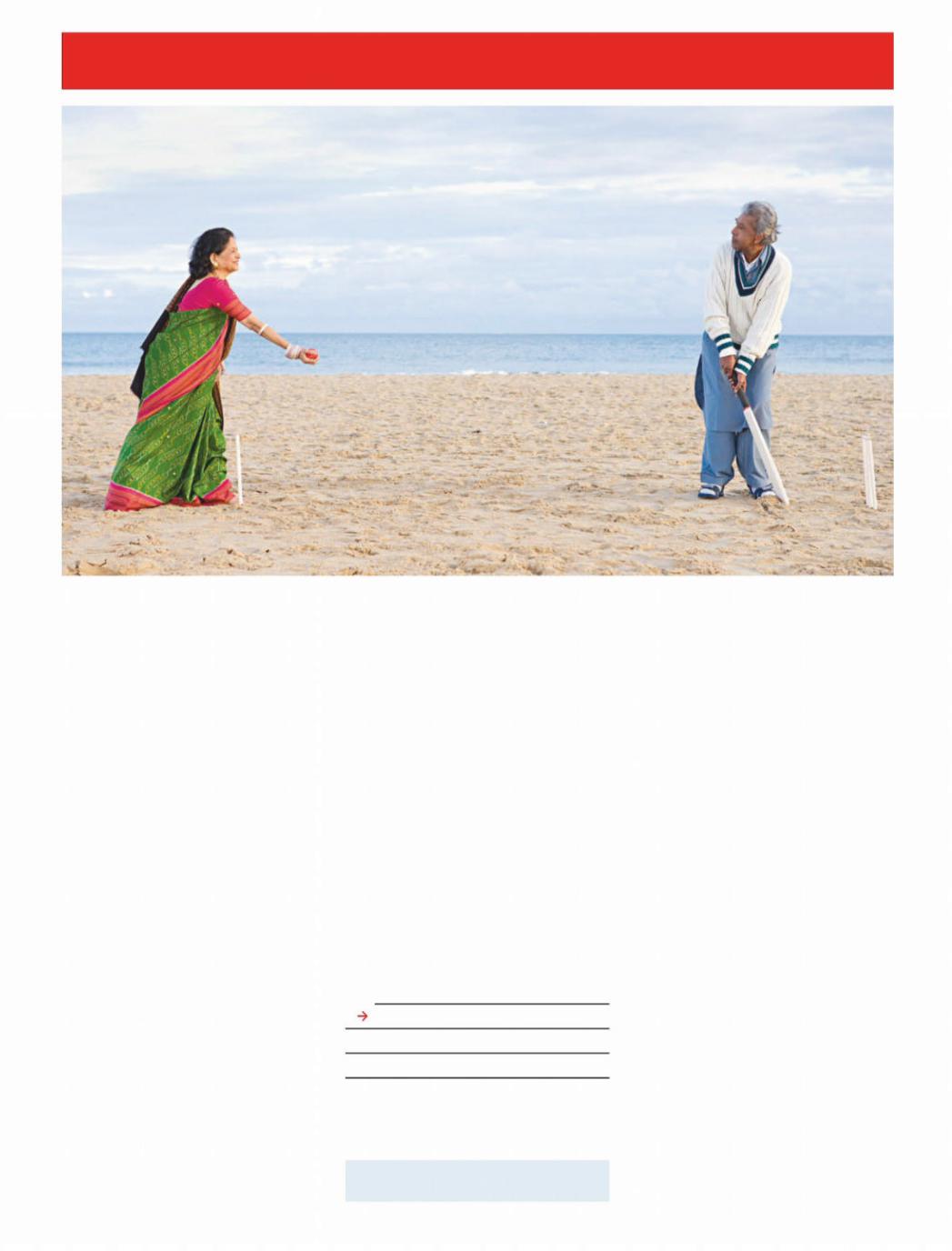
vk.com/id446425943
Britain
РЕЛИЗ ПОДГОТОВИЛА ГРУППА "What's News" VK.COM/WSNWS
The Economist February 9th 2019 47
Immigration
The new Europeans
B I R M I N G H A M
Britain’s European migrants are packing up. The rest of the world is moving in
The fields of Worcestershire surrender their goodies to a changing cast of labourers. In the 1970s and ’80s Indians and Pakistanis were bussed in from Birmingham to pick sprouts and pull onions. Then came South Africans and Kurds. In the 2000s, as the European Union bulged eastward, Poles, Lithuanians and Latvians took seats on the same buses. In turn, they were replaced by Bulgarians and Romanians. Everyone talks in hand gestures. “As their country develops, people don’t want to do the job,” says Bal Padda, whose family claim to run Britain’s only Asian-owned strawberry farm. “Now England has to de-
cide which other country to let in.” Britain’s immigration system is under-
going its most radical reform in half a century. Three big shifts are under way. Future migrants are likely to be more skilled than their predecessors. They will probably stay in Britain for only a few years, rather than settle. And a much greater proportion will come from outside the eu.
The switch is partly down to politics. Ministers reckon the Brexit vote was driven by concern over immigration—in particu-
lar about the perceived lack of control over who comes and for how long, as much as alarm over increasing numbers. The government plans to end free movement from the eu while letting in more skilled workers from the rest of the world. Unskilled workers will still be able to come, but only for a year and with no right to bring their family or to claim benefits. Since the Brexit referendum, net migration from the has tumbled. But from elsewhere it has shot up (see chart on next page).
Nowhere sends more people to Britain
Also in this section
48Booming, shrinking Irish Britain
49Bagehot: Learning from Ruskin
Read more from this week’s Britain section: Economist.com/Britain
than China and India. But whereas China mostly sends students, India sends workers. Indians have been among Britain’s three biggest foreign-born populations since the 1950s. For most of that time they were second only to the Irish, but overtook them in 2003. A decade later they were outnumbered by Polish-born migrants, but most experts reckon that Indians will soon become Britain’s most populous migrant group once again, as the pendulum swings back to non-eu migration. Estimates suggest just over 850,000 Indian-born people live in Britain, compared with a little under 900,000 Poles.
The changing profile of the average Indian immigrant foreshadows the shift now under way in the rest of the system. Take Birmingham, home to Britain’s largest In- dianeu-born population outside London. The strawberry-farming Paddas are typical of a generation of poor immigrants who moved to Britain seeking work in the 1950s and ’60s. Mr Padda’s father moved in 1966, in time to watch England’s football team win
the World Cup on a black-and-white He tv. earned £5 a week (roughly £100, or $130, to-
day) working in a foundry. Now he owns a 120-acre farm supplying big retailers.
Jaswant Singh Sohal, a retired dentist, says his father only intended to come for a few years when he moved to Birmingham in 1953. “He said he’d go back and settle when he had 5,000 rupees. It’s what most people said at the time.” He never did. Instead, he encouraged about 150 family members to join him. About half of Indian-1
http://new.guap.ru/i04/contacts
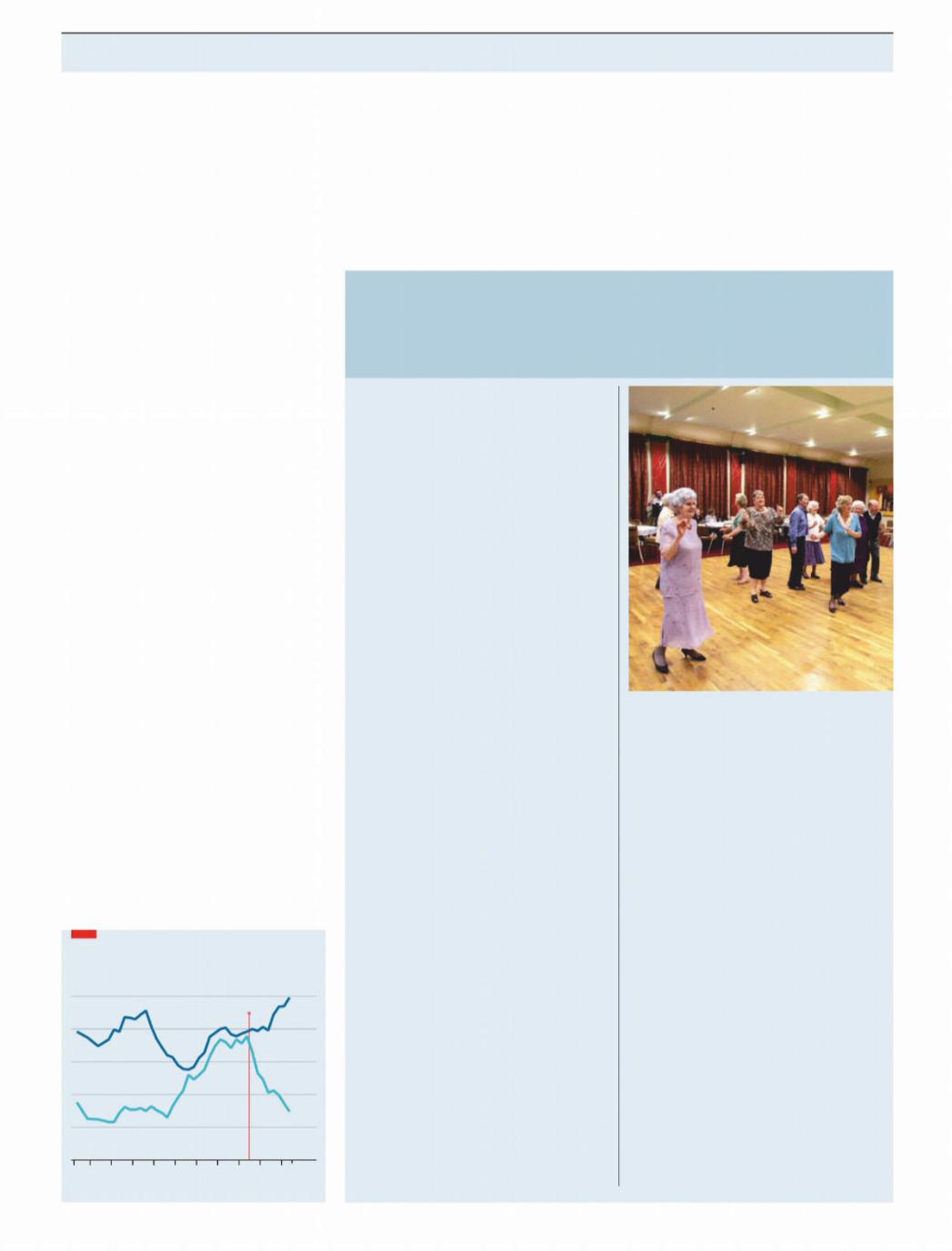
vk.com/id446425943 |
РЕЛИЗ ПОДГОТОВИЛА ГРУППА "What's News" VK.COM/WSNWS |
|
|
48 Britain |
The Economist February 9th 2019 |
2born residents in England and Wales in1971 were still in the country in 2011. Now the younger Mr Sohal drives a Bentley (“very British”, he says, with evident approval).
By contrast, most Indian migrants now come temporarily, in part because minis-
ters bent on curbing immigration have made it much harder for noncitizenseuto take permanent jobs in Britain. Of the 62,000 work visas issued to Indians in the latest rolling year for which figures are available, about a third were for intra-com- pany transfers, a category that allows mainly it workers to come for up to five years. Another 5,000 were general “tier 2” visas, for example for doctors. The remainder were mainly other short-term categories, such as for sportspeople or exchanges.
Today’s Indian migrants are better educated than both their predecessors and the average migrant. Nine in ten Indians arriving in Britain since the Brexit vote have some form of higher education, compared with 75% in the previous ten years. A little under three-quarters of all Indian nationals in Britain are similarly qualified, compared with under a third of Poles. “Would the new generation of Indians do a job like this?” asks Mr Padda, overlooking the farm. “I don’t think so.”
One of their number lives in Edgbaston, round the corner from Mr Sohal. Jatinder Singh flew here from Delhi last April and will go back home next year, unless his contract is extended. He mixes with British Indians and white Britons alike, playing badminton with both. He has no qualms about going back to India, where he will do the same job. “It’s booming,” he says.
The political impact of the shift will depend on how noticeable it proves. Perceptions change more slowly than migrant flows, says Madeleine Sumption of Oxford University. Since Britain’s Indian population is big and long-established, changes are not immediately obvious. Far fewer Britons say they are concerned about immigration (about 16%) than did before the referendum (a little more than half). This trend might continue as a greater propor-
Switching Poles
Britain, net migration by citizenship, ’000
250
|
Non-EU |
Brexit referendum |
|
||
|
|
200 |
|||
|
|
|
|
|
|
|
|
|
|
|
150 |
|
|
|
|
|
100 |
|
|
|
EU* |
|
50 |
|
|
|
|
|
|
|
|
|
|
|
0 |
2008 |
10 |
12 |
14 |
16 |
18 |
Source: ONS |
|
|
*Excluding British |
||
tion of immigrants come relatively briefly for work or study, rather than to settle. David Goodhart of Policy Exchange, a thinktank, reckons most people would accept students and short-term workers who do not cause the same demographic shifts as permanent migrants and their o spring.
Whatever the politics, the stock of Indians in Britain and new flows of Indian migrants will probably continue to grow. It
will still be cheaper for firms to import a rotating cast of contractorsit rather than train the native population. The new immigration regime will probably allow more non-Europeans to work in hospitals. And India would ask for even more visas in any post-Brexit trade deal. “Diageo [a British firm] will send them a load of whisky,” says a former Home O ce o cial. “They will send us a load of skilled people.” 7
Immigration (2)
Last waltz in Kilburn
Irish Britain is booming—and shrinking
Fifty years on, they are still unsteady on their feet. Then, the Irish thronging the dance halls of “County Kilburn” and Cricklewood in north London were wobbly after one whisky too many. Now many of them bring walking sticks to the
tea dance in a hall next to a Catholic church that used to hold18 masses each weekend. Mostly, they have swapped their Jameson’s for tea. But the waltzes are the same. “Get that wheelchair on to the dance floor,” orders the singer, Michael Troy, whose accordion is adorned with the Irish tricolor. And they do.
Britain’s Irish population is swelling and shrinkingit . A record number of Britons with Irish ancestors are applying to Dublin for passports, in order to retain the benefits of citizenship,eu such as free movement, after Brexit. Yet the Irish-born population of Britain is dwindling. The Irish first came in sizeable numbers in the famine of the1840s. As recently as 2002 they were the largest foreign-born group. But since 2000 their number has since dropped by almost a quarter, seeing them overtaken by Poles, Indians, Pakistanis and, last year, Romanians. “We’re a dying race,” says Mr Troy. He used to play country music to Irish audiences in London six nights a week. Now he’s lucky to play two.
The explanation partly lies across the Irish Sea. The economic boom of the 1990s and 2000s encouraged some Irish people to go home and others not to leave in the first place. The trend was reversed in the few years following the economic crash in 2008, but Ireland’s economy is now booming once more.
Most are not going home but to the great tea dance in the sky. The Irish-born population pyramid is “completely inverted”, says Louise Ryan of She eld University. The elderly population echoes the huge flows of teenagers in the 1950s and ’60s. More than 40% of Irishborn people in Britain are over 65. “We play at loads of funerals,” says Mr Troy.
Night is young and the music’s high
Some groups are now dedicated to tackling the loneliness of elderly Irish. Tea dances are part of the answer. Margaret Redmond, who moved to London 46 years ago, sings along to a song she remembers playing on the boat as she sailed from Dublin. She used to have her hair done every Monday before going out dancing. Now she does a turn of the floor, as if to prove she has the old magic. “Not bad for two new hips,” she reckons.
It is hard to prise Alice Kennedy, 81, from the floor. There are few men to dance with, so she beckons women to join her. When she went to Irish ceilidhs in Cricklewood in the1960s, she would always wait for a man to ask her to dance. “That’s how you pulled. You’d try to shun them if they weren’t a good dancer.”
There is, though, just a hint of an encore. After Brexit, Ireland will be the only eu country to retain free movement with Britain. Ms Ryan reckons employers will lure more Irish people to fill vacancies left behind by departing Europeans. “The Irish workforce will kick in again,” she says. Mr Troy should keep his accordion handy.
http://new.guap.ru/i04/contacts
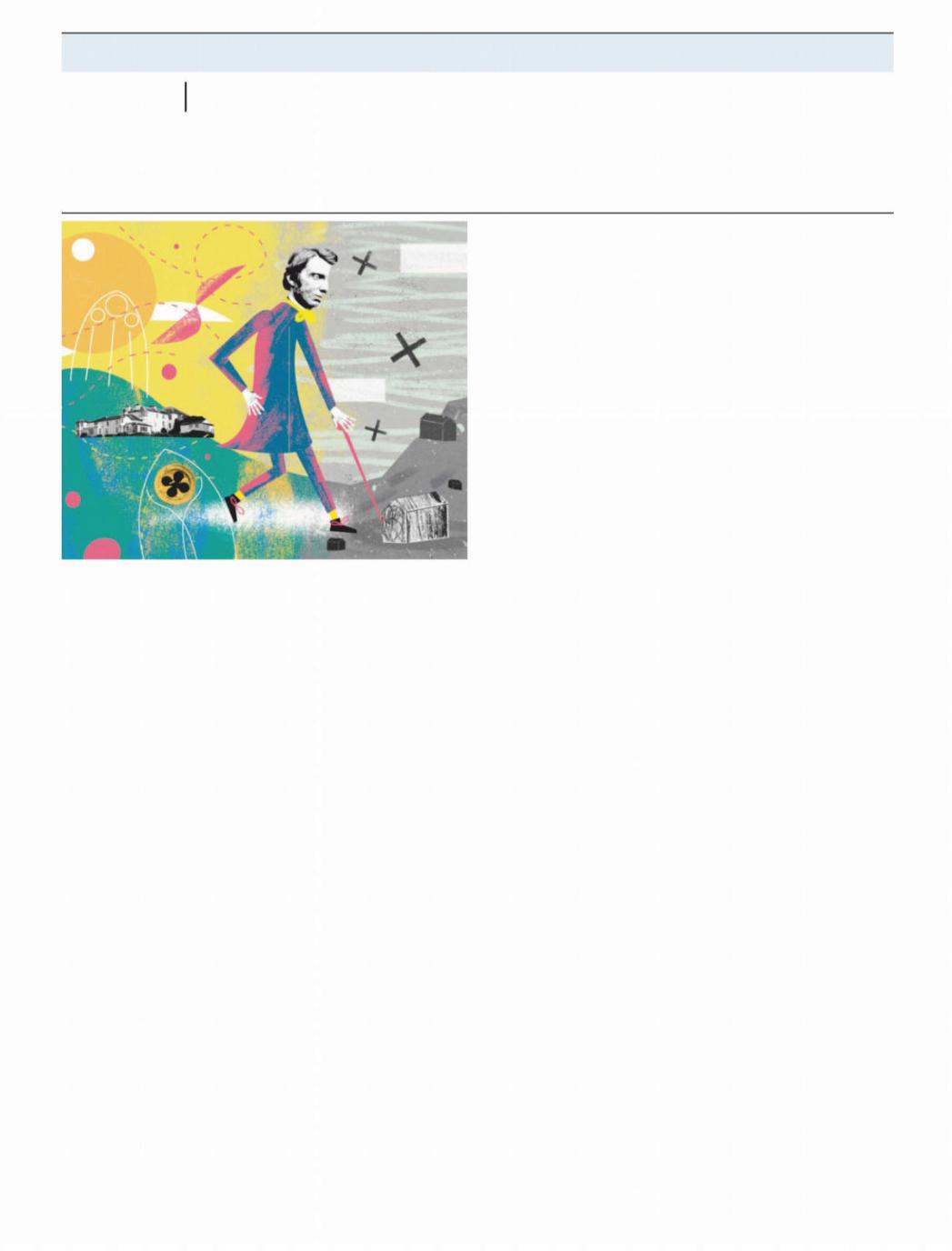
vk.com/id446425943 |
РЕЛИЗ ПОДГОТОВИЛА ГРУППА "What's News" VK.COM/WSNWS |
|
|
The Economist February 9th 2019 |
Britain 49 |
Bagehot Learning from Ruskin
Born 200 years ago this week, John Ruskin still has important lessons to teach
|
|
mains strikingly relevant on three subjects: the nature of work; the |
|
|
importance of place; and the role of beauty in everyday life. |
|
|
Ruskin believed that the pursuit of e ciency had deprived la- |
|
|
bour of meaning. Workers hated what they were doing because |
|
|
they were performing repetitive tasks rather than expressing their |
|
|
souls in their work. It is easy to dismiss this as trustafarian clap- |
|
|
trap. Ruskin inherited a fortune from his father, a wine merchant, |
|
|
and was prone to organising madcap schemes such as getting un- |
|
|
dergraduates, including Oscar Wilde, to build a road near Oxford, |
|
|
hardly an optimum allocation of talent. But his ideas about the im- |
|
|
portance of meaning as a motivator are not as impractical as they |
|
|
may seem. The Toyota system of production has outperformed |
|
|
mass production precisely because it gives workers more control |
|
|
over their jobs. This question is now at the heart of the knowledge |
|
|
economy: should we use smart machines to break work down into |
|
|
tiny chores that can be globalised and mechanised (as Amazon’s |
|
|
Mechanical Turk, an outsourcing platform, does), or should we |
|
|
use them to give workers more control over their tasks? Hurtling |
|
|
down the first route will lead to a “zipless totalitarianism”, to bor- |
|
|
row a phrase from Sean Orlando, an American artist, that will |
|
|
alienate workers without much improving productivity. |
|
|
Ruskin worried that what we now call globalisation was creat- |
nhisheyday John Ruskin exercised the sort of influence that to- |
ing a rootless society, prosperous but anomie-ridden, composed |
|
Iday’s hyperactive “thought leaders” and “taste makers” can only |
of interchangeable human atoms, “circulating here by tunnels un- |
|
dream of. Oxford University named not one but two institutions |
der ground, and there by tubes in the air”. He urged his followers to |
|
after him—the Ruskin School of Art and Ruskin Hall, for working- |
put down roots in particular places, as he himself did in Brant- |
|
class students. He inspired the creation of the National Trust and |
wood, in the Lake District. Dozens of “Ruskinlands” sprang up |
|
the Society for the Protection of Ancient Buildings. “Thus disap- |
across the world, putting into practice his dictum that “local is log- |
|
peared from Earthly view the last of the giants who make the mod- |
ical”. He urged the rich to take responsibility not for humanity in |
|
ern British socialist movement possible,” Keir Hardie, the founder |
general but for particular people and places. Again what seems like |
|
of the Labour Party, declared when he died in1900. |
e ete claptrap contains a good deal of hard sense. The British |
|
Ruskin’s reputation sank like a lead Zeppelin after the first |
elite’s infatuation with globalisation has produced a backlash that |
|
world war, under the combined assault of Bloomsbury intellectu- |
now threatens globalisation itself, most obviously in the form of |
|
als, who mocked his over-wrought prose and didactic style, and |
Brexit but potentially in the form of a hard-left Labour govern- |
|
modernist architects, who ridiculed his taste for the Gothic. Today |
ment. Politicians have abandoned place-based policies while |
|
the only thing that most people know about him is that he was sup- |
businesspeople have failed to see that breaking free from the com- |
|
posedly so shocked by his wife’s pubic hair on their wedding night |
mon obligations of citizenship, by parking their money o shore, |
|
that he couldn’t bring himself to sleep with her (the marriage was |
will whip up a whirlwind. |
|
eventually dissolved “by reason of incurable impotency”). |
Ruskin’s greatest passion was for art. He made his name as a |
|
The 200th anniversary of Ruskin’s birth, on February 8th, pro- |
fluent champion of J.M.W. Turner and as a talented artist in his |
|
vides a welcome opportunity to re-evaluate this extraordinary |
own right. But for Ruskin, art was not something to be gawped at in |
|
man. Exhibitions of his drawings and paintings will remind us of |
galleries. It should su use the built environment, as it did in his |
|
his artistic gifts. “Ruskinland”, a timely book by Andrew Hill of the |
beloved Venice. This insight resonates today. Town planners and |
|
Financial Times |
, demonstrates that he had valuable things to saybuilders have forgotten the importance of aesthetics, assembling |
|
about reforming capitalism. It turns out that this prudish pubo- |
identikit houses and shopping centres without even nodding to |
|
phobe is nothing less than a prophet for our times. |
local traditions. This fuels not just alienation but nimbyism. Kit |
|
|
|
Malthouse, the housing minister, now talks of building “the con- |
The odd man of Coniston |
servation areas of the future”. Last November he set up a commis- |
|
The problems confronting late Victorian England were remark- |
sion on “building better, building beautiful”, chaired by Sir Roger |
|
ably similar to those now facing late Elizabethan Britain. The rul- |
Scruton, the closest thing Britain now has to a John Ruskin. |
|
ing class was feathering its own nest, the capitalists through global |
Ruskin’s most important lesson is the importance of eclecti- |
|
commerce and the political elite through their o ces. The country |
cism. He called himself both a “violent Tory of the old school” and a |
|
was divided into “two nations”. The dominant utilitarian philoso- |
“reddest also of the red” socialist. “I am never satisfied that I have |
|
phy failed to answer urgent questions about the quality, as op- |
handled a subject properly till I have contradicted myself at least |
|
posed to the mere quantity, of life. Ruskin was at the centre of a |
three times,” he once said. One of the dangers facing Britain is that, |
|
constellation of intellectuals, including Matthew Arnold and |
after dividing into warring political tribes over Brexit, it will split |
|
Walter Bagehot (a former editor of this newspaper), who devoted |
again over the future of capitalism. The only way to bring the coun- |
|
themselves to stitching the country back together by reforming |
try back together and tackle its manifold social and economic pro- |
|
capitalism and re-moralising the ruling class. Ruskin’s output was |
blems is to adopt a Ruskinian approach, and ransack every tradi- |
|
as rambling as it was rich—his works run to 39 volumes—but he re- |
tion—conservative, liberal and socialist—for good ideas. 7 |
|
http://new.guap.ru/i04/contacts
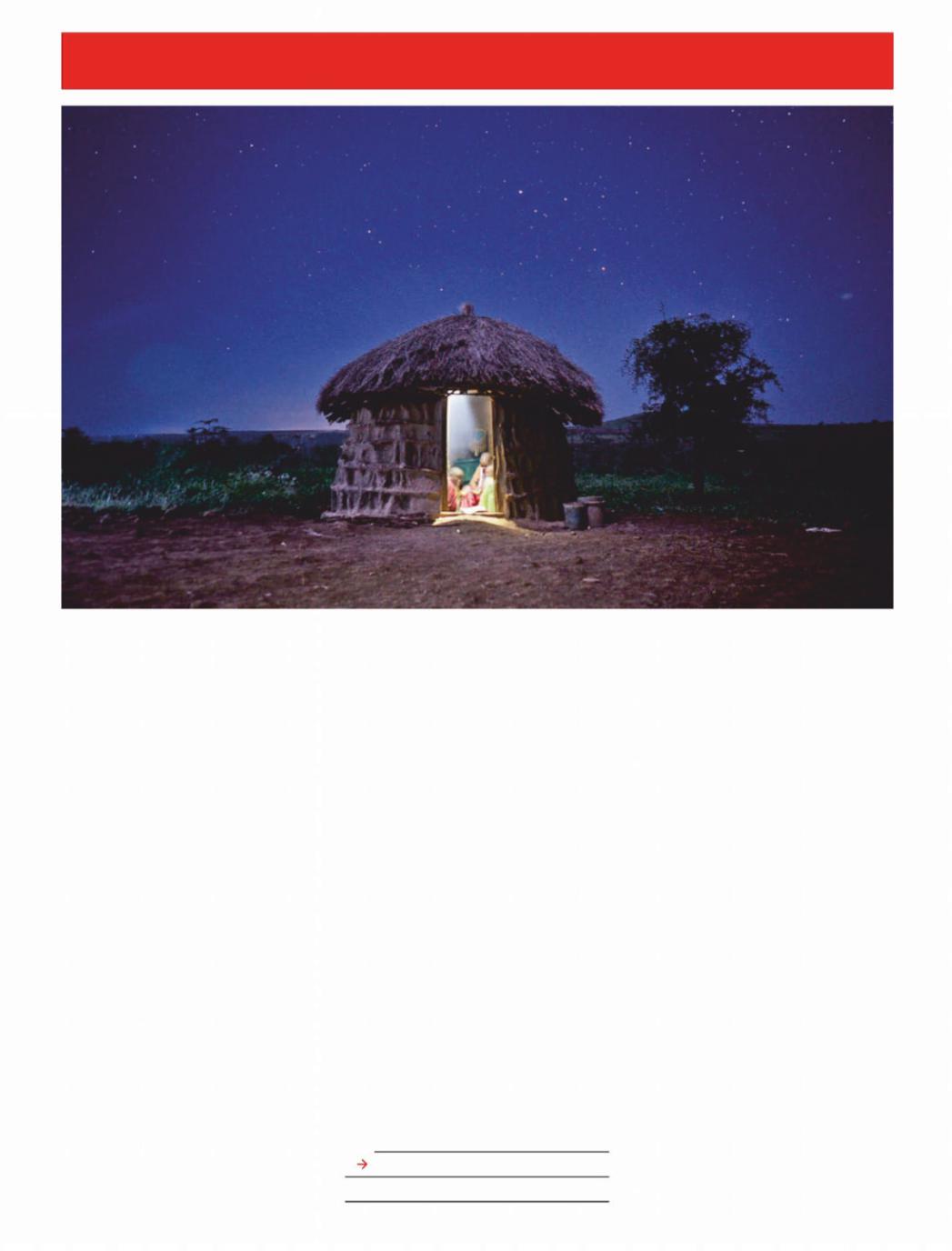
РЕЛИЗ ПОДГОТОВИЛА ГРУППА "What's News" VK.COM/WSNWS
vk.com/id446425943
50 |
International |
The Economist February 9th 2019 |
|
|
Electricity for the poor
Light to all nations?
K A G A B I R O , R W A N D A
It seems outrageous that many of the world’s poor still lack electricity. But outrage makes for bad policy
Though she lives in one of the world’s poorest countries, Drocella Yandereye is a picture of upward mobility. Her small
farm in Rwanda, where she grows maize, beans, bananas and co ee, is thriving. She has built a new house and turned her old one into a chicken shed. Her interests range well beyond her village, evidenced by the two posters on her living-room wall showing African leaders and the countries of the world. What makes her even more unusual is that she has electric light.
It is not the kind of bright, leave-it-on light that people in rich countries take for granted. A small solar panel on Ms Yandereye’s roof is connected to a wall-mounted battery, which powers a radio and three led ceiling lamps. Ms Yandereye also uses the battery to charge her mobile phone and a portable lamp that she hangs around her neck. All the lamps are rather dim. But they produce just enough light to allow her children to study after sunset, and they do not kick out foul fumes, like the kerosene lamps she used to depend on.
Almost 140 years after Thomas Edison began selling filament light bulbs, just under 1bn people worldwide still lack access to electricity, according to the International Energy Agency, a research group. Almost two-thirds live in Africa, mostly in the countryside. The un believes all should have power, and has set a target date to achieve universal access of 2030. That sounds plausible—since 2000 the number of people without power has fallen by 700m. Sadly, it is unlikely to happen. And recent economic research shows that rushing to illuminate the world is a bad idea.
The old-fashioned way of bringing electricity to the masses entails building power stations and transmission lines. This is still popular. Last year India’s government claimed that it had connected every village to the power grid, although this does not
Also in this section
51 Measuring electricity usage
mean every household is connected, still less that power is available 24 hours a day (see box on next page). Myanmar and Senegal are racing to do the same.
In the past few years, though, governments and aid agencies have put more faith in solar power. They have built or paid for “mini-grids” that can power a village or a school. More often they have given tax breaks and subsidies to firms that sell small solar kits. In Bangladesh, the number of solar home systems (that is, closed electricity systems powered by a small panel on the roof) shot up from 16,000 in 2003 to 4.1m by the end of 2 Ethiopia’s017. “national electrification programme” calls for connecting 35% of the population to small solar systems by 2025. That proportion is expected to decline thereafter as more homes are plugged into the grid.
Sun spots
Solar home systems provide much less power than grid connections, but are far cheaper to set up. The more advanced ones are often sold on a pay-as-you-go basis. Every few months, a household is asked to pay another instalment, which can be done by mobile phone. The company then sends a code, which the householder types into the battery. That keeps the lights on.
Rwanda is trying all of these approaches at once. The government already claims to have connected 31% of households to the electricity grid, up from less than 10% in1
http://new.guap.ru/i04/contacts
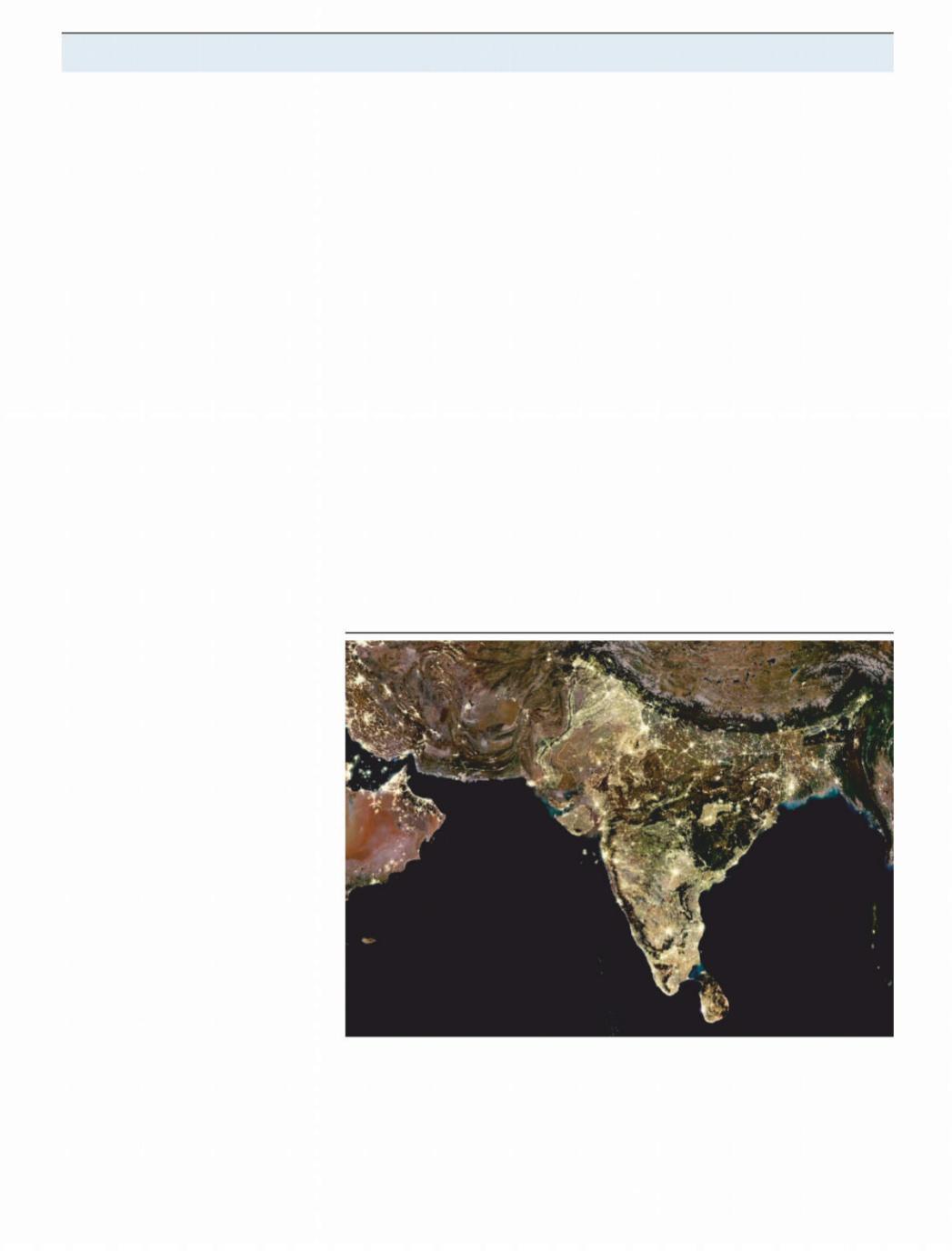
vk.com/id446425943 |
РЕЛИЗ ПОДГОТОВИЛА ГРУППА "What's News" VK.COM/WSNWS |
|
|
The Economist February 9th 2019 |
International 51 |
22009. Another11% are thought to have solar power. Helped by foreign aid, o cials are now trying to connect every household to the grid or to solar power by 2025. This is just about feasible. Rwanda is small and densely populated, if annoyingly hilly, and its government is competent. Yet the projected cost is huge. Add up the mini-grids, the transmission lines, the new power stations and the credit lines to sellers of solar home systems, and Rwanda’s energy plan amounts to $3.1bn over six years. The entire government budget this year is $2.8bn.
Not surprisingly, people enjoy having even small amounts of electricity. Ms Yandereye, who bought her lamps from One Acre Fund, a charity, says that her neighbours admire them. She has found uses for the power. She uses a portable lamp to get to her local church at night and another to light her chicken shed. Two years ago, her chickens caught a disease. Now that they have a light, she can keep the door closed, which she hopes will protect them.
Yet most people who live in poor remote places are like Ms Yandereye’s neighbours: they desire electric light and power but cannot a ord it, even with modest subsidies. For essentials, such as charging a phone, they can pay a neighbour or a shop. One study of Rwanda published last year, by Michael Grimm of the University of Passau and others, found people ready to pay between 38% and 55% of the retail price for solar-lighting kits, on average. The researchers’ kits cost between $13 and $182 depending on power levels and quality.
Even small towns in Rwanda have shops selling solar home systems—but not necessarily to poor farmers. Local salesmen for b boxx and Mobisol, two of the market leaders, report that many of their customers are middle-class urbanites already connected to the electricity grid. Some are buying kit for their parents in the villages. Others have become frustrated with flickering mains power and want a backup.
A connection to the electricity grid is far more expensive. As a rule of thumb, it costs at least $1,000 in a rural area. Academics at the University of California, Berkeley, have tested Kenyan villagers’ willingness to pay. They o ered a large subsidy, which brought the price of a connection down to $171. Only 24% of people plumped for it.
If electricity and light truly transformed people’s lives, it might make sense to o er large subsidies for solar systems and grid connections or even to give them away. It might bring benefits that people could not have imagined. Or they might know about the benefits but be unable to a ord the upfront cost. But there is little evidence of this. Another study by Mr Grimm and his colleagues found that Rwandans who were given solar lamps responded by lighting their households more brightly, for more hours each day. They burned less kerosene,
and their children studied a little more, especially at night. But the adults’ working lives changed hardly at all. Solar lamps appear not to rescue people from poverty.
Nor even does a grid connection. A detailed study of rural Tanzania, where America’s Millennium Challenge Corporation built power lines and subsidised connections, found little e ect on adults’ welfare. O ering cheap connections cut the proportion of people living on less than $2 a day from 93% to 90%—hardly a transformation. Children’s lives changed, but perhaps not in a good way. Those who were connected went from watching almost no television to one and a half hours a day, and did even less housework than before.
Another study, of Bangladesh, found that the benefits of grid power accrue mainly to better-o households. Hussain Samad and Fan Zhang of the World Bank estimate that connections boost the spending of people in the top fifth of the earnings scale by11%. People in the bottom fifth see a benefit of 4%.
A connection to the electricity grid often puts the utility company—and ultimately the government—on the hook. Many newly connected households pay little or nothing for their power, either because the power company has a progressive tari , because people refuse to pay, or
because they tap transmission lines illegally. An ongoing study of Bihar in north India by the International Growth Centre (igc ) in London finds that only10% of people think it likely they will be penalised for failing to pay their bills or for an illegal hookup.
The passing of the torch
One oft-cited benefit of connecting a person to the grid or to solar energy is actually diminishing. That is because many people who lack electricity no longer rely on kerosene. One Rwandan woman who is picking up her first solar lamp at a distribution point in Nzaratsi says that she has hitherto used simple torches—just batteries wired to led s. These are extremely cheap, costing about $0.25, and are available from village shops. People tend to throw the dead batteries in their latrines, which is hardly ideal, but is not as immediately harmful as the smoke from kerosene lamps.
Electrification may bring benefits that economic studies miss. Robin Burgess of the igc argues that a short-run study of households may not be the right lens: electrification might mostly benefit businesses, and not at once. Moreover, countries will have to bring power to their people eventually. But to spend a lot of scarce cash doing so now, in the hope that benefits will turn up, hardly seems enlightened. 7
When politicians see the light
For years American satellites have circled the Earth, measuring light levels at night and estimating how much is man-made. One straightforward use of such data is to see whether a place has electricity. Take India. Brian Min of the University of Michigan has shown that the government’s ambitious plan to connect every village to the grid is less dazzling than it appears. Many newly connected villages do not quickly light up, perhaps because the power supply is so unreliable. Indian states do, however, get brighter shortly before elections, suggesting politicians lean on power companies to minimise blackouts. The effect is strongest when the governing party is defending a slim majority.
http://new.guap.ru/i04/contacts
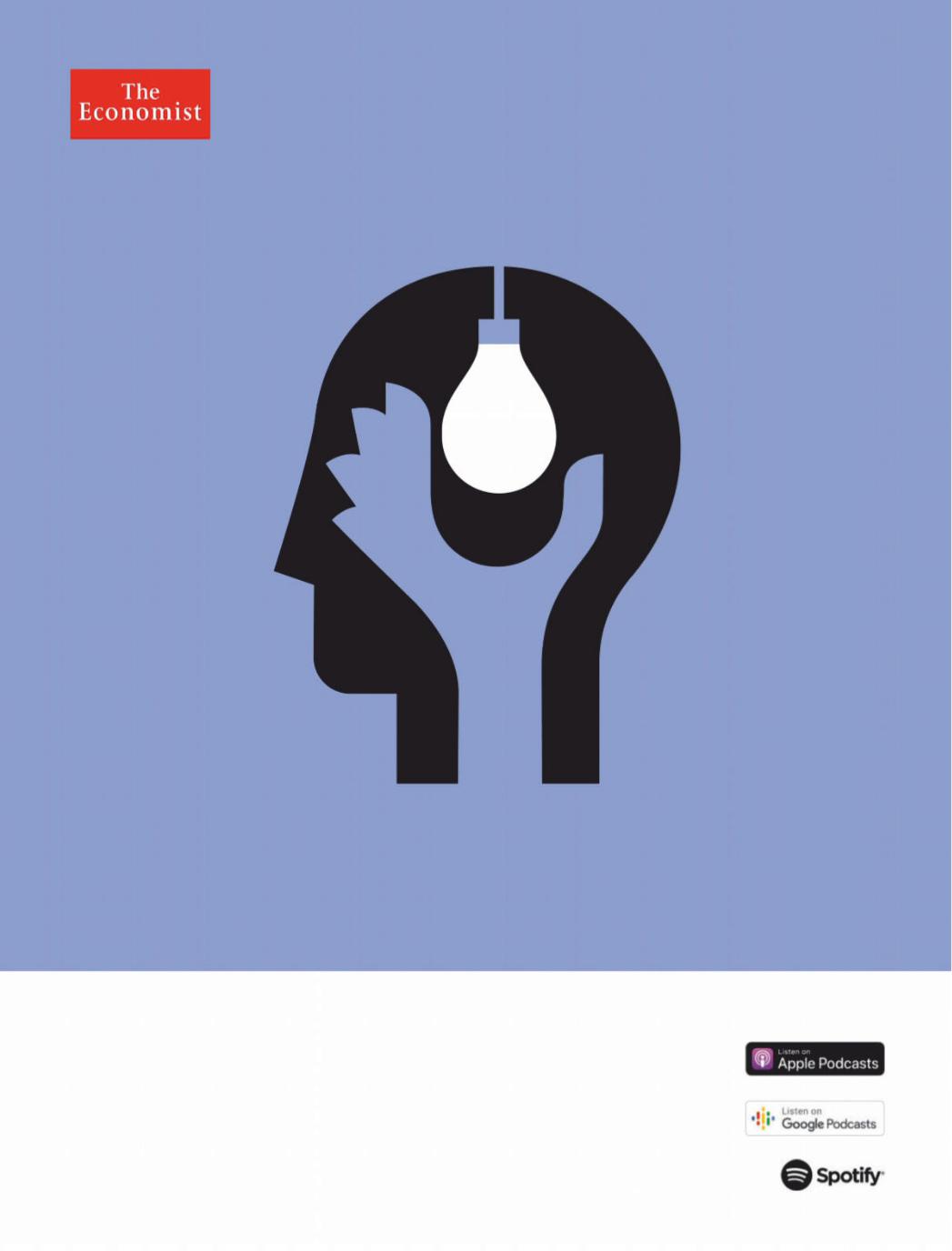
РЕЛИЗ ПОДГОТОВИЛА ГРУППА "What's News" VK.COM/WSNWS
vk.com/id446425943
Illumination, every weekday.
More than just the facts. The Intelligence.
The Intelligence is a new current-affairs podcast, published every weekday by Economist Radio, that provides a fresh perspective on the events shaping your world. Drawing on the expertise of The Economist’s global network of correspondents,
each episode digs past the headlines to get to the stories beneath—and to stories that aren’t making headlines, but should be. For a daily burst of global illumination, you need more than just the facts. You need The Intelligence.
theintelligence.economist.com
http://new.guap.ru/i04/contacts
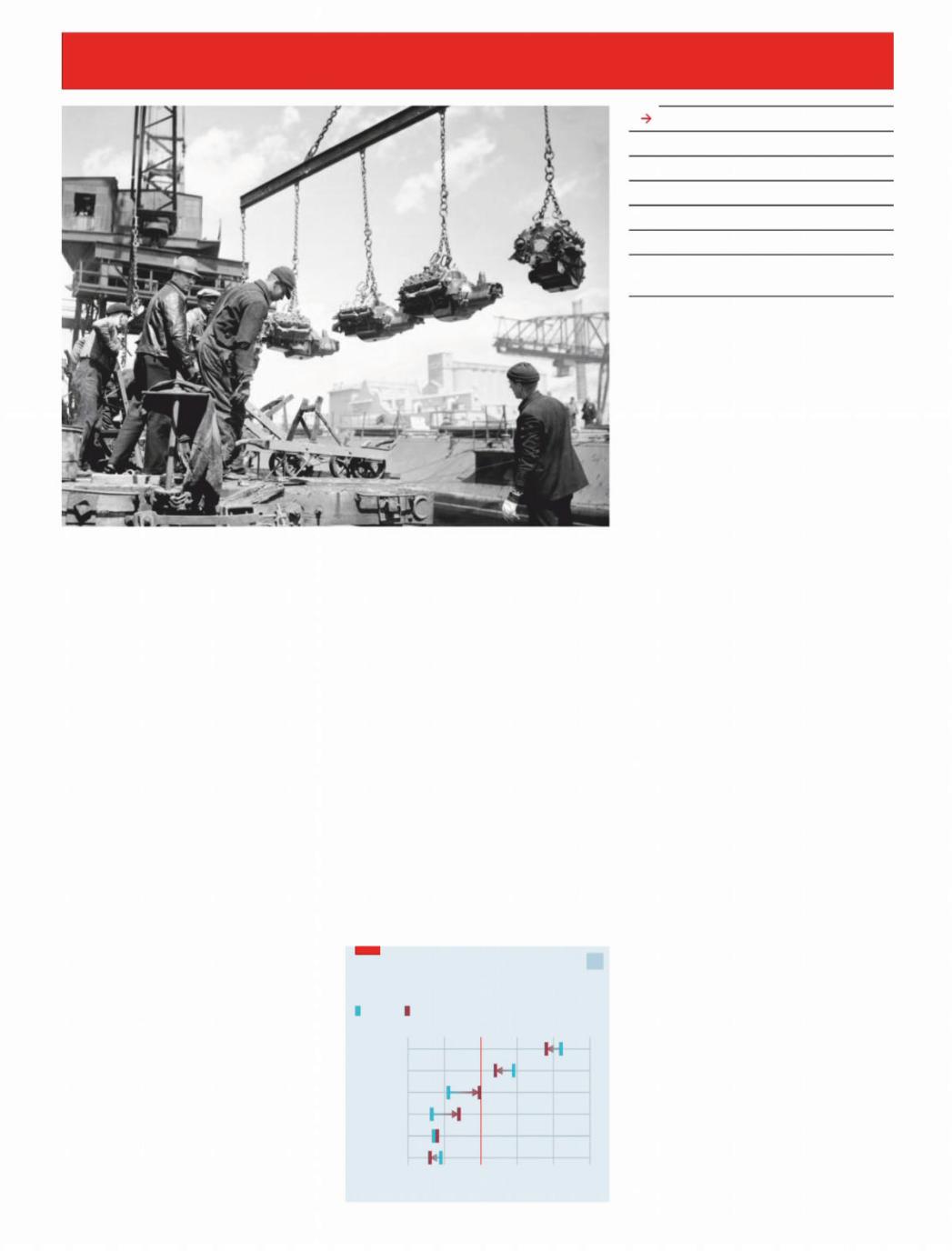
РЕЛИЗ ПОДГОТОВИЛА ГРУППА "What's News" VK.COM/WSNWS
vk.com/id446425943
Busi n ess
The Economist February 9th 2019 53
Also in this section
54Intel and the state of chip-making
55Bartleby: McDonald’s and CSR
56UNIQLO’s expansion plans
56Cheap long-haul in trouble
57A French foodfight
58Schumpeter: How China sees intellectual property
Manufacturing’s revival
Making it in America
M O U N T P L E A S A N T
American manufacturing companies large and small have a spring in their step
Adrive along the narrow county roads of Mount Pleasant, Wisconsin, used to be a sleepy a air. You would spot a pump-
kin farm, the odd homestead and red barn. But a recent visit revealed a cacophonous building site: a factory is emerging in this corner of the Midwest. Where chicken coops once stood, Foxconn, a Taiwanese contract-manufacturing giant best-known for assembling iPhones, has arrived.
When in 2017 the firm announced plans to build a massive factory for high-end televisions, many cheered, not least President Donald Trump, who came for last year’s ground breaking ceremony. Electronics manufacturers had long ago abandoned America for cheaper countries, especially China, so the investment seemed to mark a reversal. Having secured a promise of over $4bn in subsidies from Wisconsin, Foxconn vowed to create 13,000 jobs, many of them on the assembly line, with an average annual salary of $54,000.
But what Foxconn will do in these hinterlands is now in question. The company has discovered that it is hard to get thousands of Midwesterners to work long hours at stressful assembly-line jobs for relatively low pay. Last week Mr Trump personally intervened and persuaded Foxconn’s boss,
Terry Gou, not to pull out. Even so, Foxconn has scaled back its mass-manufacturing plans, and an insider confirms that it will now make only unspecified quantities of “high-value products”. It has not retracted its jobs promise, but observers doubt if it will hire at the scale it originally envisaged.
At first glance, the Foxconn reversal confirms that American manufacturing is in trouble. Consider the recent wobbles at other big firms with local factories. Electrolux, a Swedish white-goods giant, announced on January 31st that it is shutting
The great convergence |
|
|
1 |
|||
Manufacturing-cost index*, United States=100 |
||||||
2004 |
2018 |
|
|
|
|
|
|
80 |
90 |
100 |
110 |
120 |
130 |
Germany |
|
|
|
|
|
|
Japan |
|
|
|
|
|
|
South |
|
|
|
|
|
|
Korea |
|
|
|
|
|
|
China |
|
|
|
|
|
|
India |
|
|
|
|
|
|
Mexico |
|
|
|
|
|
|
Source: Boston |
|
*Incorporates wages, productivity, |
||||
Consulting Group |
|
energy costs and exchange rates |
||||
down an oven-making plant in Memphis, Tennessee. It blamed higher costs arising from the Trump administration’s tari s on imported steel and aluminium, as well as the bankruptcy of Sears, a big retailer that sold its products. On January 28th, Caterpillar, a legendary American maker of heavy equipment, reported disappointing profits for the fourth quarter thanks in part to a slowdown in China’s economy, which has been hit by America’s trade war.
A closer look, however, suggests manufacturing is undergoing a revival, especially among agile smaller firms and those using advanced techniques. According to the Bureau of Labour Statistics, manufacturing employment leapt by 261,000 jobs in 2018, reaching a total of 12.8m, coming after another rise in 2 017, of000207,jobs. The sector has rebounded from the financial crisis of 2008-09 (see chart 2). The Institute for Supply Management’s manufacturing pur- chasing-managers’ index, a closelywatched indicator, rose to 56.6 in January from 54.3 in December (a figure above 50 signals expansion). It has shown expansion for 29 consecutive months.
With characteristic modesty, Mr Trump is claiming most of the credit. His tax-re- form package, passed at the end of 2017 by Congress, reduced corporate-tax rates, made capital investment more attractive and cut the incentive for American multinationals to hoard cash overseas. Though some firms have used the bounty from tax reform to undertake big share buy-backs, it seems that large firms are increasing investments in plant and equipment in America. Analysts at Goldman Sachs, an investment bank, estimate that the big in-1
http://new.guap.ru/i04/contacts
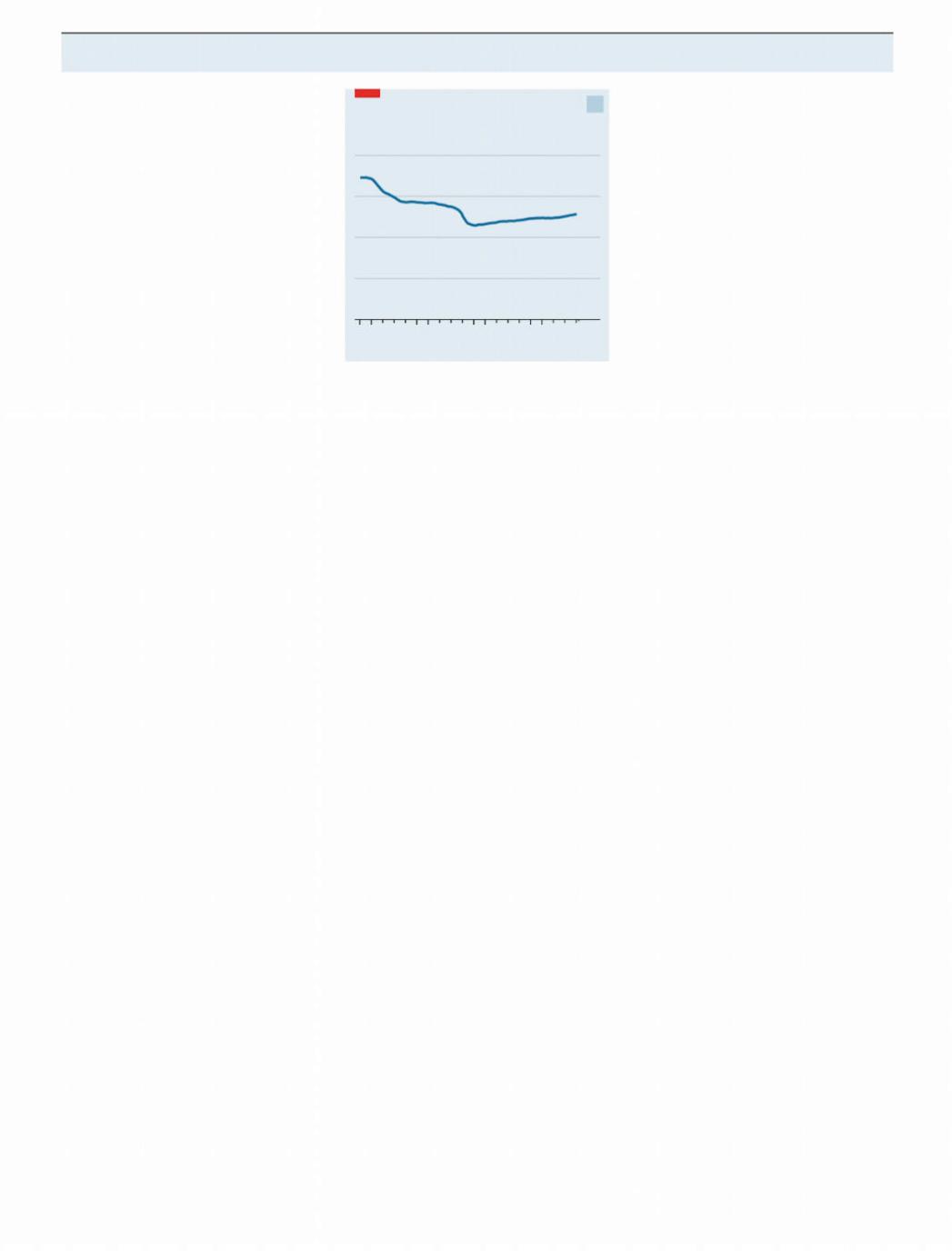
vk.com/id446425943 |
РЕЛИЗ ПОДГОТОВИЛА ГРУППА "What's News" VK.COM/WSNWS |
|
|
54 Business |
The Economist February 9th 2019 |
2 dustrial firms of the 500sindex&p (leaving out the large technology firms) during the first three quarters of 2018 spent $460bn on capital expenditures, up from $400bn in
the same period in 2 |
017. |
In a survey of leading American firms released on January 28th by the National Association for Business Economics, a trade association, four times as many firms in the “goods-producing sector” (which includes manufacturing) expect to increase capital spending in the next three months as those expecting to cut spending. Foreign direct investment into American manufacturing shot up to roughly $185bn during the first nine months of 2018, compared with under $100bn in 2017.
Yet forces that predate Mr Trump’s arrival into the White House are also boosting the fortunes of American factories. A new analysis by the Boston Consulting Group, a consultancy, shows that the cost of manufacturing is approaching parity for the two economic superpowers (see chart1) whereas 15 years ago Chinese costs were over an eighth lower. Manufacturers were bringing supply chains home (partly by investing in automation) well before Mr Trump took o ce, according to a forthcoming report from the Conference Board, a research group. Researchers conclude that nearly two-thirds of manufacturers in America, domestic and foreign, in leading sectors were localising sourcing and manufacturing from 2011 to 2016, and only about a quarter were globalising. Since Mr Trump’s election, higher oil prices have helped manufacturing businesses linked to the energy industry.
Home run
The report also o ers clues as to what went wrong in Wisconsin. Electronics was among the sectors that did the least reshoring during the period studied. This is because electronics supply chains and innovation ecosystems in China are highly specialised, e cient and hard to duplicate. In contrast, the automobile and metals industries were aggressive localisers.
To catch a glimpse of what could be the future of American manufacturing, travel to southern New England, home of America’s first manufacturing boom two centuries ago. Here, Mr Trump has been good for Trumpf. The German firm’s North American headquarters and manufacturing hub in Farmington, Connecticut, is bustling. Trumpf makes machine tools, each costing $500,000 or more, that cut, bend and shape metal with the aid of proprietary lasers. Unlike the traditional metal-bashing kit found on typical factory floors, which are cost-e ective only for mass production, these computer-controlled marvels allow short runs and high variation, making mass customisation economic.
Business is booming. Trumpf counts
Upping tools |
2 |
Chip-making |
|
Swanning in |
|||
United States, manufacturing employment, m |
|
||
|
20 |
|
|
|
15 |
|
|
|
10 |
Intel’s new boss heads a company that |
|
|
is dominant and troubled |
5
0
2000 |
05 |
10 |
15 |
19 |
Source: Federal Reserve Bank of St Louis
such American industrial icons as John Deere, a manufacturer of tractors, and Toro, which makes lawnmowers, as customers. Sales rose 21% to $699m in the year to June 2018, and were a healthy $400m in the second half of 2018. Customers frequently cite tax breaks from being able to expense the cost more quickly as reasons for investment. Behind a giant tarpaulin in Trumpf’s factory can be glimpsed a new as- sembly-line being built for its next-genera- tion o ering. Trumpf has also spent some $30m building a “factory of the future” in Chicago, close to its industrial clients.
In Cromwell, a nearby town by the bucolic Connecticut River, John Carey, founder of Carey Manufacturing, reflects on his small company’s experience with reshoring. The family-controlled firm makes automobile components as well as metallic handles and latches for such things as toolboxes. Unable to face a flood of cheap Chinese imports around 2000, he outsourced operations to mainland China but found it to be a race to the bottom on quality and price. He brought back the work to America starting in 2014, a process he has accelerated in the past two years. He invested $2.5m in equipment from Trumpf and embraced advanced manufacturing. Consumers want products in ever greater variety, on demand, and Trumpf’s advanced tools allow even small manufacturers like Carey to be nimble. Carey is growing—it hopes to earn $4m in revenues from reshored product lines in 2019, more than double the figure three years ago.
Mr Carey praises Mr Trump for taking on China’s unfair subsidies, but berates him for his steel and aluminium tari s, which have raised his costs. Like Foxconn, his firm’s big challenge is finding enough skilled workers. America needs a system of apprenticeships like that of Germany, he says. Instead of wasting billions on a border wall with Mexico, he argues, Mr Trump should spend the money helping develop a highly-skilled manufacturing workforce. The evidence suggests that if America builds it, companies will come. 7
After a seven-month search, Intel on January 31st announced that its new chief executive would be its chief financial o cer. Robert Swan had been filling in as the boss since last year, when Brian Krzanich, his predecessor, left after violating company rules about relationships with subordinates. Mr Swan inherits a company with dominant products and an enviable market position—but also one whose core
business has stumbled.
The good news is that an increasingly electronic world has an insatiable appetite for the computer chips that Intel makes. A week before Mr Swan’s appointment Intel announced results that reflected strong growth. Its annual revenue, of $70.8bn, set a record, and its operating income of $23.3bn was up by 29% from the same period in 2017 (though the numbers were slightly below the market’s expectations).
Intel’s chips power 84% of desktop computers, leaving scraps for Advanced Micro Devices, its only competitor. It has a near100% market share in the more profitable market for the beefier chips used in data-centres and cloud-computing farms.
On the face of it the future looks promising, too. The personal computer market is growing again after years of decline. As connected gizmos proliferate—every- thing from smart speakers to tv s, cars and medical devices—the market for server chips to process the information they collect should grow briskly as well.
Under Mr Krzanich, Intel had hoped to reinforce its cloud-computing dominance by expanding into new areas, particularly specialised “accelerator” chips designed to speed up specific data-centre workloads. It bought Altera, a maker of field-program- mable gate arrays, or chips that can be programmed, in 2015, and Nervana, which makes machine-learning chips, a year later. The aim was to compete with firms like Nvidia, which already o ers silicon customised for certain data-centre workloads, chiefly artificial intelligence. It acquired Mobileye, an Israeli maker of computer-vi- sion chips for cars, in 2 017.
Mr Swan’s most urgent job, though, is to ensure Intel’s misfiring core business can bring it into that future. One vital ingredient of its dominance has been its prowess in ultra-high-tech manufacturing, repeatedly shrinking the components in its chips as predicted by Moore’s Law, which was named for the firm’s co-founder. Each time1
http://new.guap.ru/i04/contacts

vk.com/id446425943 |
РЕЛИЗ ПОДГОТОВИЛА ГРУППА "What's News" VK.COM/WSNWS |
|
|
The Economist February 9th 2019 |
Business 55 |
2 those components shrank, the chips built from them got faster, cheaper and less power-hungry. Intel was better at doing that than any of its competitors, releasing improved chips with such metronomic regularity that its product-release schedule was given the name “tick-tock”.
But it has stumbled lately. Its newest “10-nanometre” factories were due to start producing chips in 2016 (the number refers, in a very loose sense, to how densely packed the components in a chip are). They will not now be ready until 2020, an unprecedented delay. That has allowed two ri-
vals, Taiwan Semiconductor Manufactur- |
thing from better chip packaging to exotic |
|
ing Company and Samsung, a South |
ideas like quantum-mechanical transis- |
|
Korean firm, to catch up. |
|
tors. But none is yet ready for prime time. |
Things will only get harder. The cost of |
Some worry that Intel’s attempts at di- |
|
yet more component-shrinking is becom- |
versification risk misallocating both cash |
|
ing prohibitive. State-of-the-art chip fac- |
and its engineers’ attention. In any case, |
|
tories cost more than $10bn, a number that |
says Joseph Moore at Morgan Stanley, a |
|
is rising. Many formerly cutting-edge firms |
bank, Intel has always struggled outside its |
|
have thrown in the towel over the past de- |
core business of desktop and server chips. |
|
cade. Worse, the physics of how electronic |
In a post-appointment email to employees, |
|
components behave at near-atomic scales |
Mr Swan said he was not minded to change |
|
means that each new round of shrinkage |
the fundamentals of his predecessors’ |
|
o ers fewer benefits than it used to. Intel |
strategy. But he did not mince his other |
|
spends heavily on |
r & d , exploring evewords:y- “our execution must improve”. 7 |
|
Bartleby Do you want ethics with that?
A 25-year battle to improve the image of a fast-food chain
Every day McDonald’s serves 69m customers, more than the population
of Britain or France. The company has what is estimated to be the most valuable fast-food brand in the world, cherished as a cheap dining option for families.
But do consumers perceive McDonald’s as a socially or environmentally responsible company? If they do not, it is in spite of the best e orts of Bob Langert. In1988, he took a temporary assignment managing a furore over polystyrene “clamshells” in which the company’s burgers were served, and which were being damned for their contribution to America’s litter problem. That turned into a 25-year career (he has since left the firm) dealing with the chain’s various negative external e ects.
It was a Herculean task, akin to being fashion consultant to Steve Bannon. Apart from litter, he had to deal with animal welfare, environmental destruction, obesity and workers’ rights. When he began, the company’s mascot was being dubbed “Ronald McToxic” because of the clamshell problem. But he had more success than outsiders might think. His book “The Battle to Do Good: Inside McDonald’s Sustainability Journey” is a must-read even for those who are cynical about the business of corporate social responsibility.
At times, the fast-food chain did not help itself. In the1990s, it sued two Greenpeace activists for producing leaflets about its practices. The ensuing “McLibel” trial gave the claims worldwide publicity and was described as the world’s biggest corporate-pr disaster. Mr Langert tried to reduce the damage. The company consulted panels of independent experts and engaged with campaigning groups. On occasion it aimed to keep one step ahead of the activists—
McDonald’s took action even when there was little sign of public concern. Shaving one inch o the napkins saved 3m lbs of paper annually, for example, but few consumers noticed.
Environmentalists did attack the firm for its impact on the Amazon rainforest, saying trees were being cut down to make room for cattle pasture or the expansion of soy farming for cattle feed. In1989 the company announced that it “never has and never will buy beef from recently deforested rainforests” and it has also worked to limit the expansion of soy farming in the region. The rise of veganism amid doubts about the health e ects of eating meat have given McDonald’s new worries.
Accomplishing change is not just a matter of the company snapping its fingers. Most McDonald’s restaurants are operated by franchisees and its goods are bought from a wide range of suppliers, so three or four layers may separate the McDonald’s head o ce and the cattle-rancher who supplies the firm’s beef.
In the late1990s, after complaints from campaign groups about the living condi-
tions of hens, Mr Langert visited an egg facility to find that conditions were indeed terrible. In August 2000 the firm said it would buy eggs only from suppliers that gave hens 72 square inches of space, compared with an industry average of 48 square inches. Suppliers resisted so strongly that McDonald’s had to find new sources for its eggs. But those who complied found that the mortality rates of hens decreased and egg-laying rates increased, o setting the extra costs.
Mr Langert found it took a long time to get agreement within the company on a particular subject and then to persuade suppliers to comply. But once he reached that stage, he had enormous clout; McDonald’s is the largest purchaser of beef and pork in America, as well as the sec- ond-largest buyer of chicken. Another victory was persuading a supplier to phase out the use of gestation stalls for sows which make it impossible for the animals to move.
Human working conditions also caused the company trouble. One day Mr Langert got a call from a Catholic bishop who was concerned about the low wages paid to tomato-pickers. Another issue was the use of “trans fats” to cook the restaurant’s fries, which were deemed to increase the risk of heart disease; it took six years for the chain to phase out the practice. But the company has also added more salads and healthy options.
Was all the e ort worth it? It seems likely that many of the people who care a lot about these issues would never eat a fast-food burger in the first place. But Mr Langert did more than most to reduce environmental waste and animal cruelty. A decent career record for an obviously decent man.
Economist.com /blogs/bartleby
http://new.guap.ru/i04/contacts
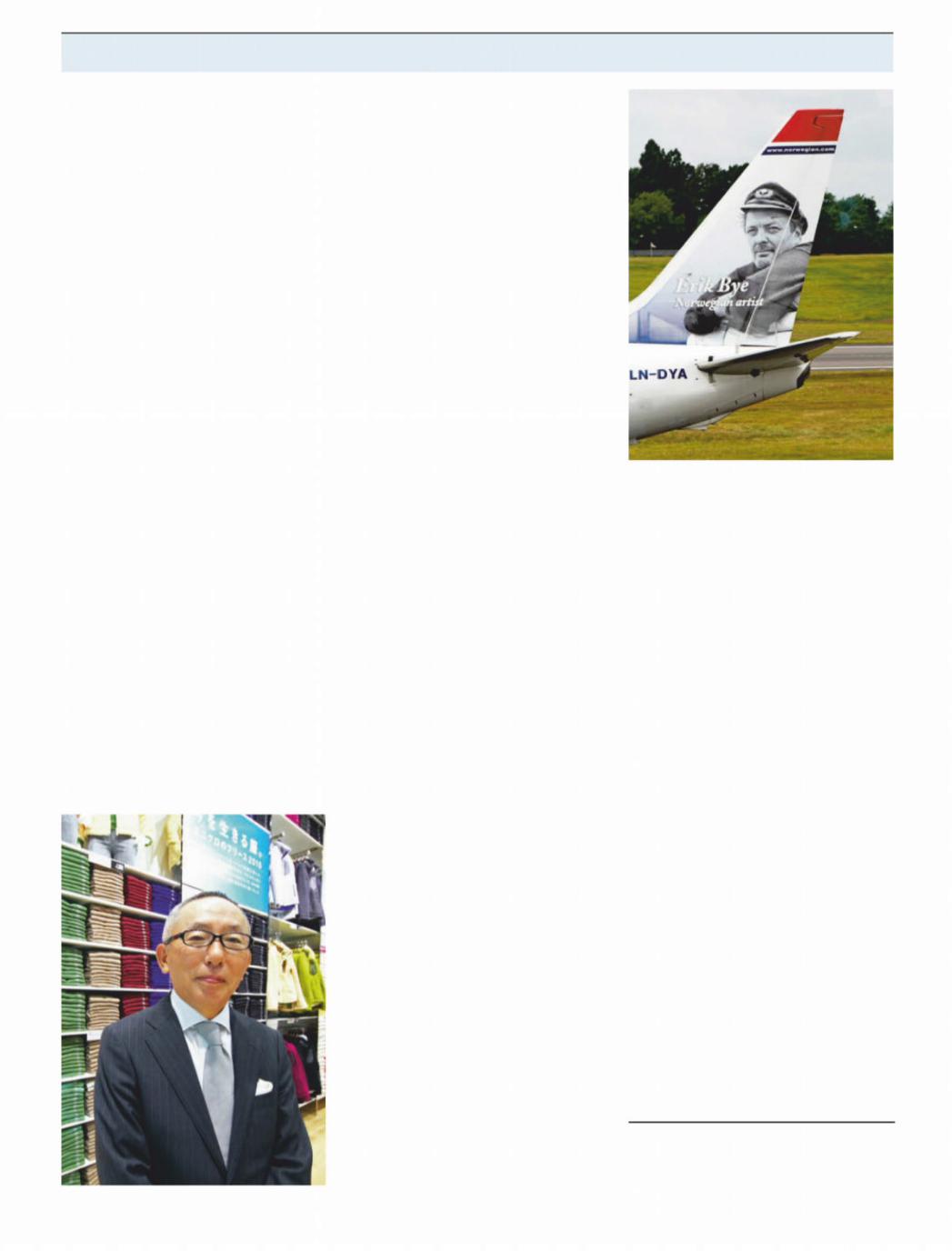
РЕЛИЗ ПОДГОТОВИЛА ГРУППА "What's News" VK.COM/WSNWS
The Economist February 9th 2019
UNIQLO |
rising since 2015, largely, analysts reckon, |
||
Back to basics |
owing to its international expansion and |
||
improved logistics. At home the firm is |
|||
|
closing stores because the population is |
||
|
shrinking. Fast Retailing’s operating profit |
||
|
in the year to August 2018 was ¥236.2bn |
||
T O K Y O |
($2.15bn), the bulk of which is made up by |
||
uniqlo . Last year |
uniqlo ’s international |
||
The third-largest clothing retailer |
|||
revenue overtook its domestic sales for the |
|||
wants to dominate the world from Asia |
|||
first time and its foreign operating profit |
|||
hen asked what guides his vision of |
|||
almost equalled its Japanese equivalent. |
|||
Wuniqlo , Tadashi Yanai, its founder |
uniqlo has a strong Asian foothold by |
||
and chief executive, pulls o the shelf the |
way of China, home to over half its overseas |
||
1987 autumn/winter collection catalogue |
shops. China contributed around 70% of |
||
of Next, a mass-market British retailer. All |
total international revenues last year. This |
||
of the clothes are so classic, he says, that |
success has surprised some, and not only |
||
they could be worn today. While Inditex of |
because of ill-feeling towards Japan from |
||
Spain, which owns Zara, and Hennes & |
many Chinese because of the latter’s war- |
||
Mauritz of Sweden, the world’s two largest |
time record. China is not an easy place to |
||
clothing retailers, slavishly follow fashion |
work, and, in clothing at least, Chinese |
||
trends, uniqlo , the main brand of the consumers tend to revere brands. But even |
|||
third-largest, Fast Retailing, of Japan, |
the label-obsessed need plain bits and bobs |
|
|
|
|||||
sticks to timeless basics. |
|
for layering or co-ordination. Chinese con- |
|
|
|
||||
Mr Yanai has a solid base at home from |
sumers are after quality, and uniqlo ’s spe- |
Long-haul low-cost airlines |
|
||||||
which to expand into his Western compet- |
cial fabrics, especially its Heattech range |
|
|||||||
itors’ main markets of Europe and Ameri- |
for cold weather, function well. Above all |
Laker Airways 2.0 |
|||||||
ca. But instead his priority remains Asia. |
analysts point to the company’s savvy Ja- |
||||||||
He wants to turn |
uniqlointo the world’s |
pan-educated Chinese executives who un- |
|
|
|
||||
largest clothing retailer by becoming the |
derstand both the culture of the Japanese |
|
|
|
|||||
first Asian “ |
spa ” or speciality store retailerbusiness and that of China. |
|
|
|
|
||||
of private-label apparel. “Asia is the engine |
But the rest of Asia may be harder to |
|
|
|
|||||
of growth today,” he says, pointing to the |
crack. For one thing, a warm climate in sev- |
The disappearance of Norwegian would |
|||||||
millions of consumers across the region |
eral countries means that |
cannotuniqlo |
|||||||
be bad news for consumers |
|
||||||||
who are reaching the middle class. |
relyuniqloon its cold-weather products as a main |
n the 1960 slong-haul air travel was a |
|||||||
will open its first shop in India this year |
driver of sales. It may have to tweak its for- |
||||||||
and is considering whether to expand into |
mula, which could be risky, says Takahiro |
Iglamorous but expensive proposition. |
|||||||
Vietnam and other countries (it has already |
Saito, a fashion-retail analyst and author of |
Then in the 1970s Sir Freddie Laker, a Brit- |
|||||||
opened networks of shops in Indonesia, |
a book comparing |
uniqloand Zara. |
ish entrepreneur, set about trying to open it |
||||||
Singapore and Thailand). |
Though they are very di erent markets, |
up to the masses. In 1977 he launched Sky- |
|||||||
The success or not of uniqlo ’s overseas Europe and America o er a cautionary tale. |
train, the first low-cost, long-haul service |
||||||||
operations matters greatly to investors at |
uniqlo in America struggled outside the |
between London and New York. Within |
|||||||
home. Fast Retailing’s shares—Mr Yanai |
big cities of the east and west coasts. |
only five years Laker Airways went bust. |
|||||||
owns just over 20% of the firm—have been |
Growth in the heartlands remains elusive |
Recently another European entrepreneur, |
|||||||
|
|
|
for uniqlo both there and in Europe. In |
Bjorn Kjos of Norwegian, hoped to succeed |
|||||
|
|
|
part that is because the same business |
where Laker failed and in 2013 he re- |
|||||
|
|
|
model exists there already with firms such |
launched low-cost flights across the Atlan- |
|||||
|
|
|
as Gap, says Mr Saito. But uniqlo could do |
tic. It looks as if Norwegian may su er the |
|||||
|
|
|
better at explaining what it does. Well |
same fate as Laker Airways. |
|
||||
|
|
|
thought-out partnerships with ambassa- |
Norwegian’s finances have been in a |
|||||
|
|
|
dors, such as tennis player Roger Federer, |
bad way since it embarked on its new pro- |
|||||
|
|
|
and collaborations with designers, like Jil |
ject. As an airline mainly flying domestic |
|||||
|
|
|
Sander, are starting to help. |
|
and short-haul routes in Scandinavia, in |
||||
|
|
|
Mr Yanai, an ardent fan of globalisation |
2013 it made an annual operating profit of |
|||||
|
|
|
unlike many Japanese executives (the |
NKr970m ($166m). On February 7th Norwe- |
|||||
|
|
|
firm’s working language is English and |
gian said it had made operating losses of |
|||||
|
|
|
many employees, even in Japan, are for- |
NKr3.85bn in 2018, during which almost |
|||||
|
|
|
eign), is confident that he can guide un- |
half of its flights were on long-haul routes. |
|||||
|
|
|
iqlo through the changes needed. He also |
The firm had been limping on hoping |
|||||
|
|
|
talks of expanding into shoes as well as |
for a takeover from |
or Lufthansa,iag |
two |
|||
|
|
|
dresses and skirts, where |
|
currentlyniqlo |
big European airline groups. But in late |
|||
|
|
|
has only slim o erings. |
|
|
January its shares fell by a third after its po- |
|||
|
The backlash against globalisation is |
tential suitors walked away due to worries1 |
|
|
the biggest risk to |
uniqlo ’s Asian plans, he |
|
|
says. It could limit free movement of goods |
Correction: Our leader on Huawei (February 2nd) |
|
|
and people, disrupting both supply chains |
said that Canada’s courts are considering a request |
|
|
and workers. Still, a Japanese firm that has |
to extradite Meng Wanzhou, a Huawei executive. In |
|
|
fact, Canada’s justice department is considering |
||
|
managed as much foreign success as |
||
|
un- |
||
The essential Mr Yanai |
iqlo should be able to cope. 7 |
whether to commence the formal extradition |
|
process. |
|||
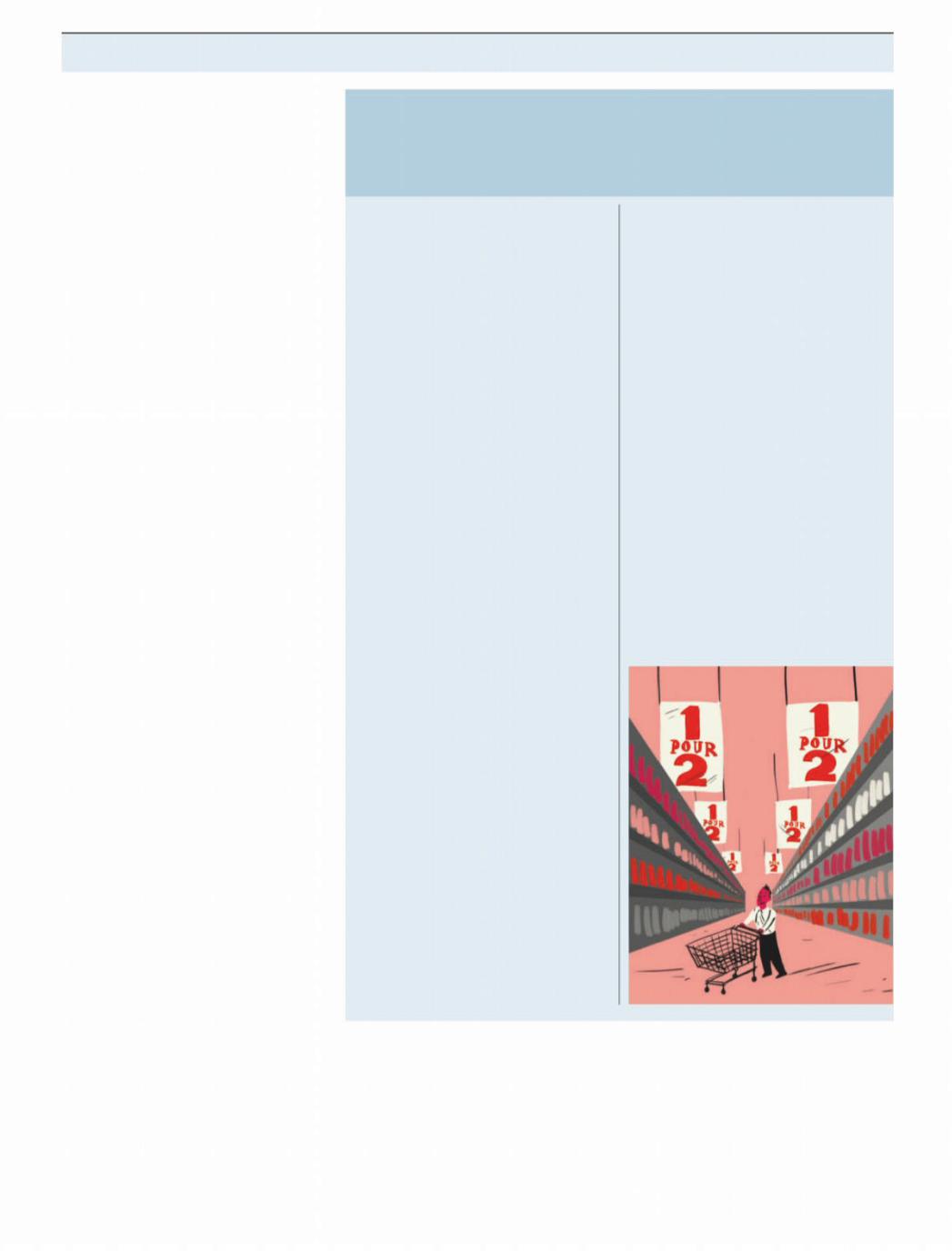
vk.com/id446425943 |
РЕЛИЗ ПОДГОТОВИЛА ГРУППА "What's News" VK.COM/WSNWS |
|
|
The Economist February 9th 2019 |
Business 57 |
2 over the pricing of a deal and about losing |
|
||
flying rights in the event of a no-deal |
|
||
Brexit. To avoid bankruptcy through |
|
||
breaching agreements with bondholders, |
|
||
Norwegian was obliged to raise 3bn |
|
||
krone—over half its market capitalisa- |
|
||
tion—in a rights issue. |
|
|
|
Analysts are sceptical about whether it |
iven that five supermarket chains |
||
can continue operating. Mr Kjos plans to |
Gcontrol around 80% of all organised |
||
rein in growth ambitions and cut costs to |
food retailing in France, the authorities |
||
keep the airline aloft in 2019. An ongoing |
there may seem justified in probing how |
||
fare war in Europe and rising fuel prices are |
competitive the market really is. Too |
||
likely to make losses worse. The company |
competitive, apparently: on February1st |
||
hopes that shifting planes from loss-mak- |
a new law forced retailers to raise prices |
||
ing European holiday routes to South |
of food staples lest consumers be unduly |
||
America, where countries are opening up |
profiting from shops trying to lure them |
||
to foreign airlines, will reduce its losses. |
with good deals. |
||
But political and financial instability in |
The aim of the new “Loi Alimenta- |
||
some markets mean that returns could |
tion” is to ensure better pay for French |
||
prove volatile. |
|
|
farmers and for small-scale food produc- |
If Norwegian disappears, will the long- |
ers, who currently earn little. Its flagship |
||
haul, low-cost model survive? The idea was |
measure aims to stymie price wars by |
||
to apply the low-cost model as successfully |
ensuring no food can be sold with less |
||
mastered by Ryanair, to longer routes. Nor- |
than a10% profit margin. But the imme- |
||
wegian and its imitators, such as Primera |
diate impact is not to raise prices of |
||
of Denmark and |
ofwowIceland, have of- |
vegetables, meat and other products sold |
|
fered loss-making fares on routes, hoping |
by French farmers to supermarkets: |
||
to make the money back by filling planes to |
margins on those are already far higher |
||
capacity and by selling extras on-board |
than the mandated floor. Rather, news- |
||
rather than with tickets. |
|
papers have been full of horror stories |
|
The strategy has not worked well on |
about the rocketing price of pastis, a |
||
longer routes. Norwegian filled only 76% of |
boozy staple (up by 9.9% in one retailer, |
||
its seats in January compared with 91% for |
according to Le Parisien ), Nutella (up |
||
Ryanair. One reason is that flyers will more |
8.4%), Président camembert (8.6% |
||
readily choose a no-frills flight for an hour- |
dearer) and Coca-Cola (5%), which were |
||
long flight than for eight hours. Other long- |
previously sold more or less at cost to |
||
haul budget rivals are doing worse: Primera |
attract penny-pinching shoppers. |
||
went bust last October and |
is teeterwow- |
How consumers paying more for |
|
ing on the edge of bankruptcy. |
|
Coke will result in higher milk prices for |
|
Yet Norwegian also made mistakes that |
France’s farmers is unclear. Proponents |
||
could be avoided by other airlines, argues |
of the law argue that retailers making |
||
Ross Harvey of Davy, a stockbroking firm. |
fatter margins on pots of Nutella will |
||
First, it grew too quickly with too weak a |
have more money left over to pay farmers |
||
balance-sheet. The losses that Norwegian |
higher prices. They fall short of mandat- |
||
racked up in order to stimulate demand |
ing exactly how this might happen. |
||
were not steep enough to trouble a big air- |
Sceptics abound. Michel-Édouard |
||
line group with deep pockets. But Norwe- |
Leclerc, chief executive of E. Leclerc, |
||
gian, which is heavily indebted, cannot |
France’s largest supermarket chain, says |
||
easily absorb them. |
|
|
that the idea pennies added on to junk |
Second, unlike Ryanair and easyJet, the |
food will trickle down to farmers is “a |
||
airline did not control its costs tightly. “It is |
scam”. Farmers complain that in spite of |
||
not a long-haul, low-cost airline, but a |
the new law they are still at the mercy of |
||
long-haul, low-fare one”, says Daniel |
supermarkets whose hypercapitaliste |
||
Roeska of Bernstein, a research firm. Its |
behaviour has prompted the need for |
||
weak balance-sheet also means it has to |
legislation in the first place. Consumer |
||
pay high interest to finance aircraft. |
groups think shoppers will be €1.4bn a |
||
The rise of low-fare startups such as |
|
||
Norwegian has reduced the share of seats |
|
||
across the Atlantic carried by the big three |
the same with Eurowings’ long-haul |
||
European airlines and their joint-venture |
routes. For a while, low-cost long-haul car- |
||
partners from 80% in 2015 to 72%, accord- |
riers will live on as part of larger airline |
||
ing to capa , an aviation consultancy. Theirgroups. But the bad news for flyers is that if
success has prompted larger airline groups |
Norwegian goes bust, the big airlines |
to copy the model. iag has responded to |
would have free rein to raise fares, presum- |
Norwegian, for example, by launching its |
ably while keeping no-frills service. |
own budget long-haul operation, called |
A takeover by a low-cost rival with mon- |
level . It is converting Aer Lingus, its Irish |
ey to spare, such as Ryanair, is another pos- |
airline, into another. Lufthansa has done |
sible outcome. The Irish firm has been |
year out of pocket as a result. Supermarkets are already finding
ways of circumventing the spirit of the law. O ering steep discounts on food, such as buy-one-get-one-free deals, is now banned, but retailers have simply promised to push the savings onto loyalty cards instead. Forcing up the cost of Nutella and Nescafé is an opportunity for them to promote their own-brand equivalents, where margins are well into double digits already.
The agriculture ministry says the average family will pay just 50 cents per month more as a result of the law, as long as its shopping basket is not stu ed with the wrong kinds of food. It understandably wants to find more ways for France’s 400,000 farmers to square up to an ever-more concentrated retail sector. But trying to put more money in farmers’ pockets means someone else losing out. The new law was due to come into force late last year, but was pushed back after gilets jaunes protesters drew attention to the many ways that government meddling was pushing up the cost of living.
looking for opportunities to expand outside its western European territories, where the market for air travel is saturated. But its boss, Michael O’Leary, is wary about a bid. He has looked at buying Norwegian but thinks that Europe’s three big airline groups will do everything they can to destroy low-cost rivals competing with the long-haul flights which earn their corn. That seems a reasonable conclusion. 7
http://new.guap.ru/i04/contacts
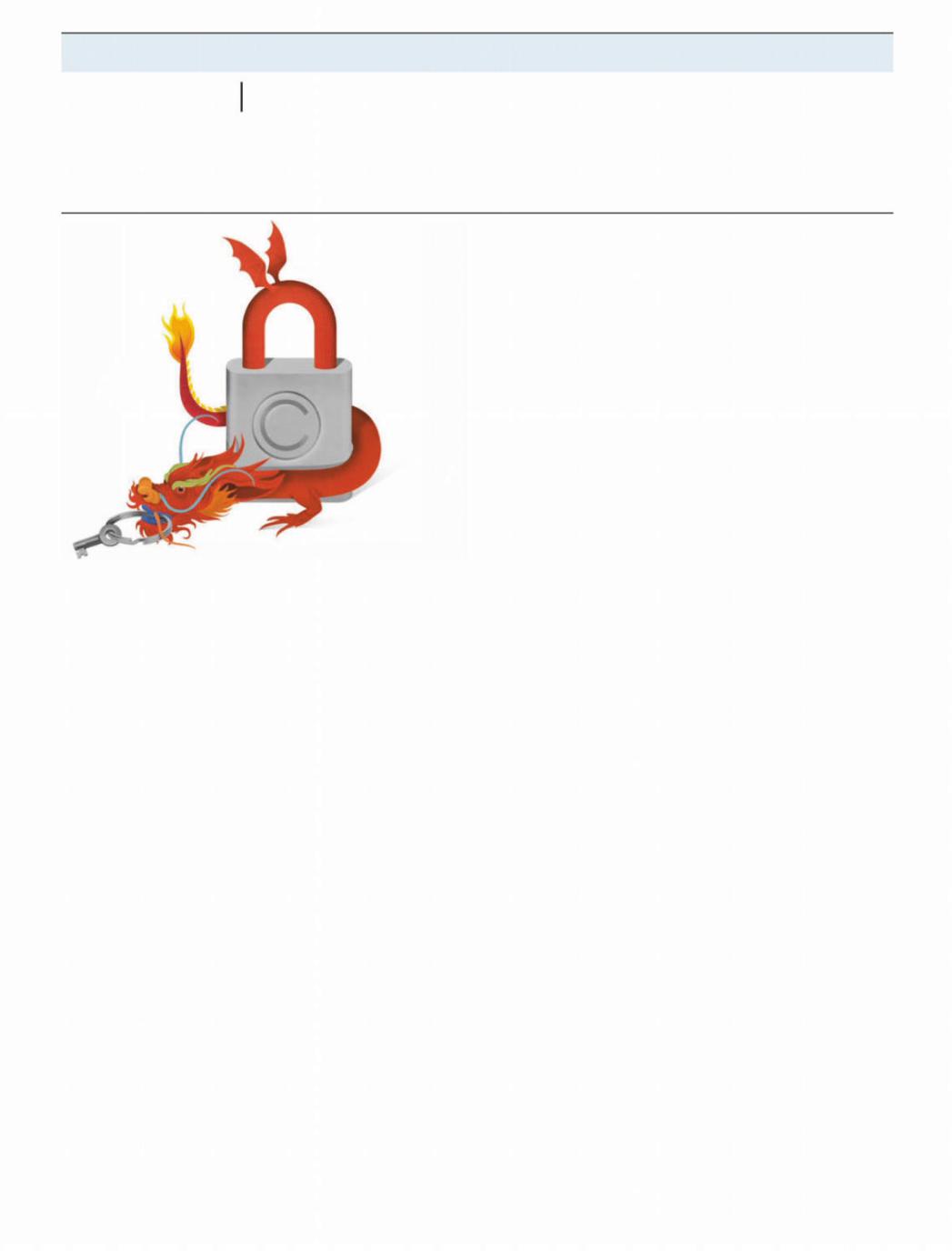
РЕЛИЗ ПОДГОТОВИЛА ГРУППА "What's News" VK.COM/WSNWS |
|
vk.com/id446425943 |
|
58 Business |
The Economist February 9th 2019 |
Schumpeter Good copy, bad copy |
|
Believe it or not, Chinese firms are not all serial intellectual-property thieves
|
|
cartoon character, are being sought by scores of patent “squatters”, |
|
|
using a rule that lets them get in ahead of its British owners. Two |
|
|
American tech firms, Qualcomm and InterDigital, have been |
|
|
mauled in Chinese courts in royalty-related antitrust cases. China |
|
|
is a long way from living up to the ip commitments it made on en- |
|
|
tering the World Trade Organisation in 2001. It still forces firms in |
|
|
joint ventures with state-owned enterprises to surrender ip , and |
|
|
pursues a Communist Party-first industrial policy far removed |
|
|
from the free-for-all of19th-century American entrepreneurship. |
|
|
Yet among Chinese firms, the mindset is starting to change—as |
|
|
it eventually did among Japanese firms after they robbed America |
|
|
blind in the 1970s and 1980s. From humble beginnings (Mr Hu ap- |
|
|
plied for his first patent in a half-built bungalow), China account- |
|
|
ed for 44% of the world’s patent filings in 2017, submitting twice as |
|
|
many applications as America, according to the World Intellectual |
|
|
Property Organisation. Companies, mostly Chinese ones, sue each |
|
|
other over patents in China more than in any other country. |
|
|
When foreigners do litigate in China, Rouse, a law firm, says |
|
|
they have a higher win rate in patent cases than domestic ones, and |
|
|
are awarded more damages overall. Such fines are low by interna- |
|
|
tional standards, but are improving: Alfred Dunhill, a British luxu- |
|
|
ry brand, won a $1.4m payout in October over trademark infringe- |
ars sometimes have moments of cultural levity—even trade |
ment by a Chinese menswear brand called Danhuoli. In January, |
|
Wwars. Last summer, as America and China were bombarding |
the ip court system was bolstered by the establishment of an ap- |
|
each other with tari s, a quaint exhibition opened at the National |
peals tribunal at the Supreme People’s Court in Beijing. |
|
Museum of China on Tiananmen Square paying tribute to, of all |
The more inventive it is, the more protection benefits China. |
|
things, American intellectual-property ( |
ip ) protectionHuawei. was the world’s biggest filer of international patents in |
|
It was a surprise hit. More than 1m visitors filed past 60 beauti- |
2017; whatever misgivings there are about its loyalties to the Chi- |
|
fully crafted models of inventions, such as an ice-cream maker, |
nese state, it is hard to doubt its commitment to innovation. An ex- |
|
submitted to the United States Patent O ce between1836 and1890 |
ecutive at Alibabanotes that as Chinese firms expand globally, par- |
|
(all property of the Hagley Museum in Delaware). No doubt some |
ticularly in South-East Asia, they, too, su er from having their |
|
visitors were arm-twisted to go, because it coincided with the start |
ideas ripped o , making them keener to protect them. As China’s |
|
of an innovation drive by President Xi Jinping. But many were sim- |
economy weakens, says an executive of Beiqi Foton Motor, a vehi- |
|
ply in thrall to American inventiveness. One remarkable visitor, |
cle manufacturer, his firm will need to protect its patents from ri- |
|
says David Cole, the Hagley Museum’s boss, was an elderly man, |
vals even more, to guard its share of a shrinking market. |
|
Hu Guohua, who was granted the first-ever patent in Communist |
Executives admit to gaping holes in the system, particularlyip |
|
China, in 1985. It was a reminder of how young |
protection is inip |
in inland regions where local tribunals are subject to heavy-hand- |
China; in America the first patent dates back to 1790 and was |
ed interference by provincial governments keen to shield local |
|
signed by George Washington. |
|
copycats. That is why some ip executives in China accept the ratio- |
ip is one of the main fronts in President Donald Trump’s trade |
nale behind American arm-twisting. After all, they admit, if it were |
|
war against China. It is also the crux of an indictment in America |
not for American pressure on intellectual property, China would |
|
against Huawei, a Chinese tech giant. In both cases, the govern- |
not have come half as far. That is not to say they approve of Mr |
|
ment seeks to give the impression that stealing from the West is |
Trump’s bombastic approach, which adds to the sense that Ameri- |
|
part of the modus operandi of Chinese firms, something a Wall |
ca is trying to stifle China’s rise. But the desire for change is both |
|
Street Journal columnist described last week as a practice they re- |
internally and externally driven. As one executive puts it, “No one |
|
gard as a “patriotic duty”. |
|
likes to be called a thief—not even kids.” |
But that is lazy thinking. The Chinese state may encourage phi- |
Imitation is a form of flattery |
|
landering of ideas, and foreign firms in China doubtless face pres- |
||
sure to surrender their secrets. Yet protectionipin China, for all its |
It is also worth recalling how much of a cultural wrench the Anglo- |
|
flaws, has improved at rocket speed of late. As Chinese firms issue |
Saxon ip system is for China. The country that invented printing |
|
more patents, the keener they are to protect them. Some execu- |
had no Western concept of copyright. There is even a Chinese say- |
|
tives even tacitly support American pressure, hoping it will |
ing that “to steal a book is an elegant o ence”. When inventions |
|
strengthen the rule of law. In an echo of the fawning nickname “Xi |
were flourishing in19th-century America, the West tried to impose |
|
Dada”, some have whispered “Trump Dada”, or Daddy Trump. |
ip codes on a humbled China that simply could not square them |
|
The litany of complaints about piracy in China, to be sure, goes |
with its Confucian traditions. Yet America was no saint either. As |
|
back decades: copyright infringement in the case of software, and |
the Hagley Museum’s Mr Cole points out, its patent o ce in the |
|
trademark violation against firms such as Disney. Michael Jordan, |
early days charged more to foreigners for patents than it did to |
|
a basketball legend, spent years trying to stop a sportswear firm us- |
Americans, especially the British, with whom America was en- |
|
ing his name, which read as Qiaodan in Chinese, until he was par- |
gaged in an earlier version of “strategic competition”. That point |
|
tially successful in 2016. Today, local trademarks of Peppa Pig, a |
was not emphasised at the exhibition in Tiananmen Square. 7 |
|
http://new.guap.ru/i04/contacts

vk.com/id446425943 |
РЕЛИЗ ПОДГОТОВИЛА ГРУППА "What's News" VK.COM/WSNWS |
|
|
Property |
59 |
http://new.guap.ru/i04/contacts

РЕЛИЗ ПОДГОТОВИЛА ГРУППА "What's News" VK.COM/WSNWS
vk.com/id446425943
Trade options like you went to school for it.
Options trading doesn’t have to be intimidating. TD Ameritrade provides educational courses, expert trading support, and online coaching to help you learn to trade with confidence.
Get up to $600 when you open and fund an account.
Visit tdameritrade.com/tradeoptions to learn more.
Options tradin is subjectg to si |
g nificant risks and is not suitable for all investorsOptions. trading privileg es sub |
|
and approval. Before trading options, carefully read C haracteristics and Risks of |
Standardized Options. C |
|
a copy. |
|
|
ject to TD Ameritrade review ontact TD Ameritrade at 800-66
See tdameritrade.com/600offer for offer details and restrictions. This is not an offer or solicitation in any jurisdiction where we are not authorized to do business. TD Ameritrade, Inc., member FINRA/SIPC. © 2017 TD Ameritrade.
http://new.guap.ru/i04/contacts
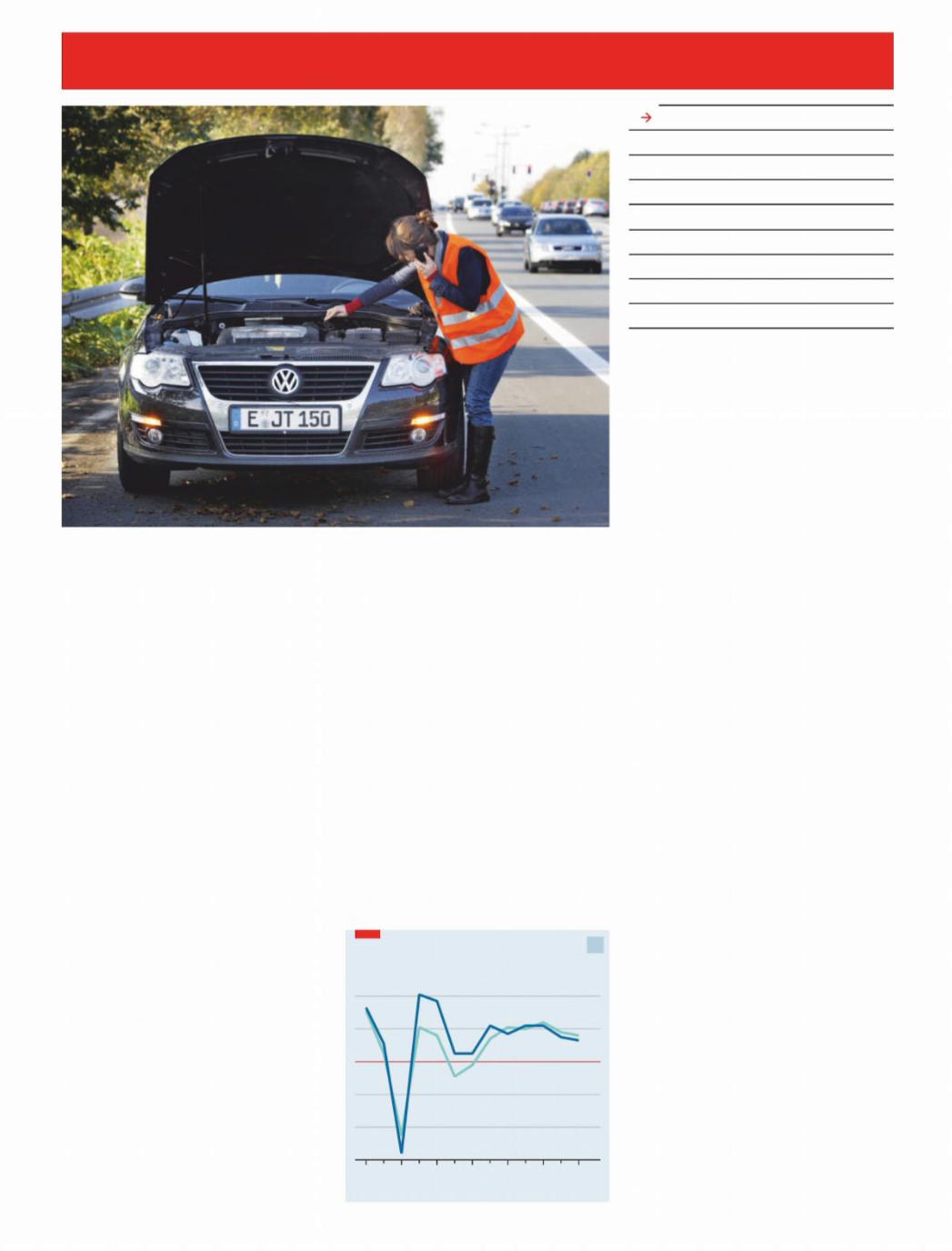
РЕЛИЗ ПОДГОТОВИЛА ГРУППА "What's News" VK.COM/WSNWS
vk.com/id446425943
Fin a n ce & eco n om i cs
The Economist February 9th 2019 61
Also in this section
621MDB
63America’s optimistic pension plans
63The bond-market king abdicates
64Australia’s misbehaving banks
64Cryptocurrencies
65Buttonwood: Modelling credit risk
66The impact of America’s tax cuts
67Free exchange: Brave new deal
Germany’s economy
Engine trouble
B E R L I N
A long expansion comes under threat as Germany feels the limits of its export-oriented growth model
ermany’s exporting prowess is so im- |
rises in public spending, should help Ger- |
||||||||
Gpressive that other countries seek to |
many avoid outright recession. But the flip |
||||||||
import even its policies. France recently |
side of exporting success is vulnerability to |
||||||||
passed labour reforms inspired by its |
conditions abroad. Exports make up half of |
||||||||
neighbour to the east. British politicians |
gdp , compared with 12% for America and |
||||||||
periodically try to copy its vocational- |
30% for Britain. The risks of increasing |
||||||||
training system. Governments far and near |
protectionism and a hard Brexit mean that |
||||||||
have sought to emulate the |
Mitstelstand,manufacturers expect another poor year. |
||||||||
small and mid-size producers. Germany’s |
After a robust 2 |
|
net017,exports detract- |
||||||
knack for producing goods desired by |
ed from gdpgrowth in 2018, which proba- |
||||||||
emerging economies, notably a booming |
bly slightly lowered Germany’s mammoth |
||||||||
China, helped it recover rapidly from the fi- |
current-account surplus of 8% of gdp . Ex- |
||||||||
nancial crisis of 2007-08, and cushioned |
|
|
|
|
|
|
|
||
the impact of the sovereign-debt crisis that |
Sputtering |
|
|
|
|
1 |
|||
subsequently engulfed the euro zone. |
|
|
|
|
|||||
Now Germany is propelling the curren- |
GDP, % change on a year earlier |
|
|
||||||
cy bloc into a slowdown. The economy |
|
|
|
|
|
|
4 |
||
shrank in the third quarter of 2018 and |
|
|
|
|
|
|
|||
|
|
Germany |
|
|
|||||
probably grew only slightly in the fourth. |
|
|
|
2 |
|||||
|
|
|
|
|
|
||||
Over the year as a whole, gdp grew by 1.5%, |
|
|
|
|
|
|
|||
|
|
|
|
|
|
|
|||
down from 2.2% in 2017 and below the |
|
|
|
|
|
|
0 |
||
euro-zone average (see chart 1). New emis- |
|
|
|
|
|
|
|||
|
|
|
Euro area |
|
|
||||
sions tests slammed the brakes on car pro- |
|
|
|
|
-2 |
||||
duction in the summer; low water levels in |
|
|
|
|
|
|
|||
|
|
|
|
|
|
|
|||
the Rhine delayed shipments. But even |
|
|
|
|
|
|
-4 |
||
without these temporary |
disturbances, |
|
|
|
|
|
|
||
|
|
|
|
|
|
|
|||
says Holger Schmieding from Berenberg, a |
|
|
|
|
|
|
-6 |
||
bank, annualised gdp growth would have |
|
|
|
|
|
|
|||
2007 |
09 |
11 |
13 |
15 |
17 |
18* 19† |
|||
slowed to below1% in the second half. |
|||||||||
|
|
|
|
|
|
|
|||
Domestic-facing sectors, and planned
ports to Britain fell. Those to a number of emerging economies slowed. China’s appetite for German goods became a little less voracious (see chart 2 on next page). Volkswagen, a large carmaker, reported a drop in sales to China in the second half of 2018. Wolfgang Schäfer, the chief financial o - cer for Continental, a car-parts manufacturer, notes that an unprecedented fall in Chinese demand and the new emissions tests dented revenue growth in the car industry. Cars, their parts and accessories make up over15% of German exports.
There was also disappointment at home. Spending by consumers grew more slowly last year than in 2016-17, despite rock-bottom interest rates, the lowest unemployment rate since reunification and annual wage growth picking up to a heady—by German standards—2.8%. Instead they saved more. Some economists think households are preparing to weather a downturn; others see an ageing population preparing for retirement. Either way, they are unlikely to propel growth this year.
The industrial slowdown seems set to continue. Figures published on February 7th showed that industrial production fell in December. Mr Schäfer expects the first half of the year to reflect a continuation of the declining demand seen in the second half of 2018. Analysts at Deutsche Bank think that data for January are consistent with gdp shrinking in the first quarter. Both the imfand Germany’s economy ministry have marked down their forecasts for gdp growth this year to1-1.3%.
Worse is quite possible. Three of Germany’s five biggest export markets—Amer- ica, China and Britain—could su er sharp1
http://new.guap.ru/i04/contacts
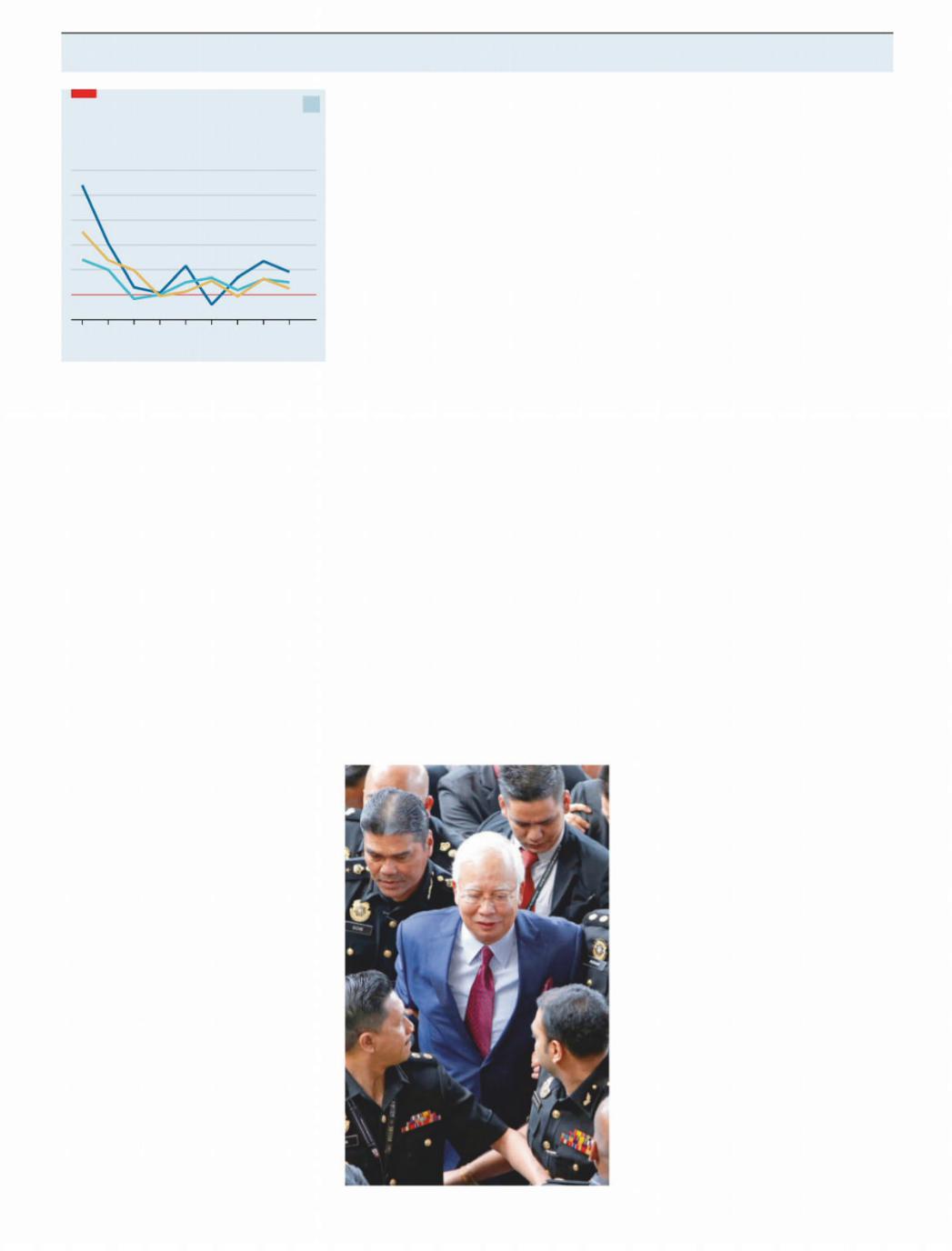
РЕЛИЗ ПОДГОТОВИЛА ГРУППА "What's News" VK.COM/WSNWS
vk.com/id446425943
62 Finance & economics |
|
|
|
|
|
|
|
|
The Economist February 9th 2019 |
|||||||
Wheels coming off |
|
|
|
2 |
1MDB |
|
|
|
The prosecution’s star witness is the |
|||||||
|
|
|
Settling up |
|
|
former director of |
|
src , Suboh Yassin. After |
||||||||
Germany, exports |
|
|
|
|
|
|
|
three years on the run, last year he surren- |
||||||||
% change on a year earlier |
|
|
|
|
|
|
|
|
dered to Malaysia’s anti-corruption au- |
|||||||
|
|
|
|
|
|
|
|
50 |
|
|
|
|
thorities and is in |
a |
witness-protection |
|
|
|
|
|
|
|
|
|
|
|
|
|
programme. The prosecution is expected |
||||
|
|
|
|
|
|
|
|
40 |
|
|
|
|
||||
|
China† |
|
|
|
|
|
KU A L A LU M P U R A N D N E W Y O R K |
|
|
to call around 60 other witnesses, includ- |
||||||
|
|
|
|
|
|
30 |
|
|
ing government o cials. Mr Low will be |
|||||||
|
|
|
|
|
|
The first of many trials linked to a vast |
||||||||||
|
|
|
|
|
|
|
|
absent, however. Wanted by America and |
||||||||
|
|
|
|
|
|
|
|
20 |
financial scandal is about to start |
|||||||
|
|
|
|
|
|
|
|
Singapore as well as Malaysia, his where- |
||||||||
|
|
|
|
|
|
|
|
|
|
|
|
|||||
|
|
|
|
|
|
|
|
|
ccording to America’s Department of |
abouts is unknown; he is rumoured to be in |
||||||
|
|
|
|
|
|
|
|
10 |
AJustice, between 2009 and 2015 $4.5bn |
China. The deals under investigation were |
||||||
|
|
|
|
|
|
|
|
0 |
disappeared from 1 Malaysia Development |
“undertaken openly and lawfully”, says a |
||||||
Rest of EU* |
|
|
|
Outside EU† |
Berhad (1mdb ), a Malaysian state develop- |
spokesman for Mr Low, through his law- |
||||||||||
|
|
|
|
|
|
|
|
-10 |
ment fund set up a decade ago by Najib Ra- |
yers. He adds that Mr Low “intends to de- |
||||||
2010 |
11 |
12 |
13 |
14 |
15 |
16 |
17 |
18 |
||||||||
zak, then the prime minister. The money |
fend himself against these false allega- |
|||||||||||||||
Source: Eurostat |
|
|
*To October |
†To November |
||||||||||||
|
|
passed through a maze of institutions and |
tions”, but has been presumed guilty and |
|||||||||||||
|
|
|
|
|
|
|
|
|
||||||||
|
|
|
|
|
|
|
|
|
accounts in the Middle East, the Caribbean |
“cannot get a fair trial in Malaysia”. |
||||||
2 slowdowns this year. Trade tensions could |
and the Seychelles. It was frittered away on |
If found guilty, Mr Najib could face de- |
||||||||||||||
heat up. If President Donald Trump acts on |
property, parties, gems, art, private jets and |
cades in prison, though lengthy appeals |
||||||||||||||
his threat to whack tari s on imports of |
a superyacht. It helped fund a film on |
mean that any sentence will start next year |
||||||||||||||
European cars it could knock 0.2% o Ger- |
scamming, “The Wolf of Wall Street”. The |
at the earliest. No clemency is likely to be |
||||||||||||||
man gdp , says the Institute for Economic |
mastermind behind the fraud is allegedly |
o ered by the new government. Mahathir |
||||||||||||||
Research, a think-tank in Munich. |
|
Jho Low, a Malaysian financier. But more |
Mohamad, Mr Najib’s former mentor and |
|||||||||||||
Some cooling, German o cials say, is |
than $600m ended up in Mr Najib’s perso- |
successor as prime minister, campaigned |
||||||||||||||
only to be expected in an expansion’s tenth |
nal bank accounts. |
|
|
against kleptokrasi |
. The1mdba air split the |
|||||||||||
year. Reports of rising capacity utilisation |
Mr Najib denies wrongdoing and says |
party the two men once shared and caused |
||||||||||||||
and skills shortages had stoked fears of |
the money was a gift, since returned, from |
Dr Mahathir to align himself with the op- |
||||||||||||||
overheating, even though price pressures |
an unnamed Saudi royal. His claims of in- |
posing coalition that now runs the country. |
||||||||||||||
remain subdued. In January Jens Weid- |
nocence in one of the biggest financial |
Authorities in America, Singapore and |
||||||||||||||
mann, the head of the Bundesbank, said he |
scandals ever are about to be put to the test. |
Switzerland are also investigating wrong- |
||||||||||||||
saw no need for the European Central Bank |
On February12th he is due to enter the High |
doing related to 1mdb |
. Their targets go be- |
|||||||||||||
to loosen monetary policy. Philipp Stein- |
Court in Kuala Lumpur for the first of sever- |
yond those accused of perpetrating the |
||||||||||||||
berg, the chief economist at the economy |
al trials relating to 1mdb |
, for dozens of |
fraud to those accused of facilitating it, in- |
|||||||||||||
ministry, points out that social-security |
counts of money-laundering, abuse of |
cluding Goldman Sachs and Deloitte. Gold- |
||||||||||||||
spending and income-tax relief will sup- |
power and criminal breach of trust, all of |
man faces particular trouble for underwrit- |
||||||||||||||
port demand. Tax incentives for research |
which he denies. This |
trial relates to |
ing three bond o erings for 1mdb , worth |
|||||||||||||
and development have also been agreed |
$10.6m from |
International,src |
a unit of |
$6.5bn in total, more than a third of which |
||||||||||||
on. And if recession looms Germany has |
1mdb set up to invest in energy projects, |
then vanished. |
|
|
||||||||||||
plenty of room for stimulus. A fifth consec- |
which ended up in one of his accounts. |
That work earned Goldman a startlingly |
||||||||||||||
utive budget surplus last year brought gov- |
|
|
|
|
juicy $600m. Last November it emerged |
|||||||||||
ernment debt to below 60% of |
|
gdp . |
|
|
|
that its former chairman for South-East |
||||||||||
But behind these short-term consider- |
|
|
|
|
Asia, Tim Leissner, had pleaded guilty to |
|||||||||||
ations looms a bigger worry: that Germany |
|
|
|
|
charges of bribery and money-laundering |
|||||||||||
could lose its competitive edge. Despite re- |
|
|
|
|
filed by prosecutors in New York. A former |
|||||||||||
cent high immigration, the |
|
expectsimfthe |
|
|
|
|
colleague, Roger Ng, was also indicted, |
|||||||||
workforce to start shrinking in 2020. To- |
|
|
|
|
along with Mr Low. Goldman’s newish |
|||||||||||
gether with lacklustre productivity growth, |
|
|
|
|
chairman, David Solomon, has apologised |
|||||||||||
that will limit the economy’s potential. |
|
|
|
|
to Malaysians. But the country wants more |
|||||||||||
Businesses and economists want to spur |
|
|
|
|
than words: Lim Guan Eng, the finance |
|||||||||||
investment, which has been chronically |
|
|
|
|
minister, is demanding $7.5bn in penal- |
|||||||||||
weak, and to upgrade public infrastructure, |
|
|
|
|
ties. Malaysian prosecutors filed criminal |
|||||||||||
from roads to broadband. |
|
|
|
|
|
|
|
charges against Goldman and Messrs |
||||||||
In an industrial strategy published on |
|
|
|
|
Leissner, Ng and Low in December; Mr Lim |
|||||||||||
February 5th Peter Altmaier, the economy |
|
|
|
|
says the government might discuss drop- |
|||||||||||
minister, warns that Germany’s economic |
|
|
|
|
ping those against the bank if it pays up. |
|||||||||||
strengths are not “God-given” and must be |
|
|
|
|
Goldman argues that the fault lies with |
|||||||||||
earned—particularly as China shifts from |
|
|
|
|
rogue bankers, rather than the firm itself. |
|||||||||||
consumer to competitor. Proposals in- |
|
|
|
|
In a filing this month it raised the prospect |
|||||||||||
clude lowering energy prices, and support- |
|
|
|
|
of clawing back compensation from some |
|||||||||||
ing industry and increasing investment |
|
|
|
|
senior executives “if it is later determined |
|||||||||||
with tax incentives. More controversially, |
|
|
|
|
that the results of the 1mdb proceedings |
|||||||||||
Mr Altmaier wants to loosen antitrust rules |
|
|
|
|
would have impacted the [compensation |
|||||||||||
and protect “national champions” from |
|
|
|
|
committee’s] 2018 year-end compensation |
|||||||||||
foreign takeovers, so that they can compete |
|
|
|
|
decisions”. It is due to file written defences |
|||||||||||
with Chinese behemoths. For all that other |
|
|
|
|
in March; any substantive admissions are |
|||||||||||
countries may want to learn from Ger- |
Mr Najib awaits his day in court |
|
likely to be followed up by America’s De- |
|||||||||||||
many, its government is looking East. 7 |
|
partment of Justice. Depending on what its1 |
||||||||||||||
http://new.guap.ru/i04/contacts
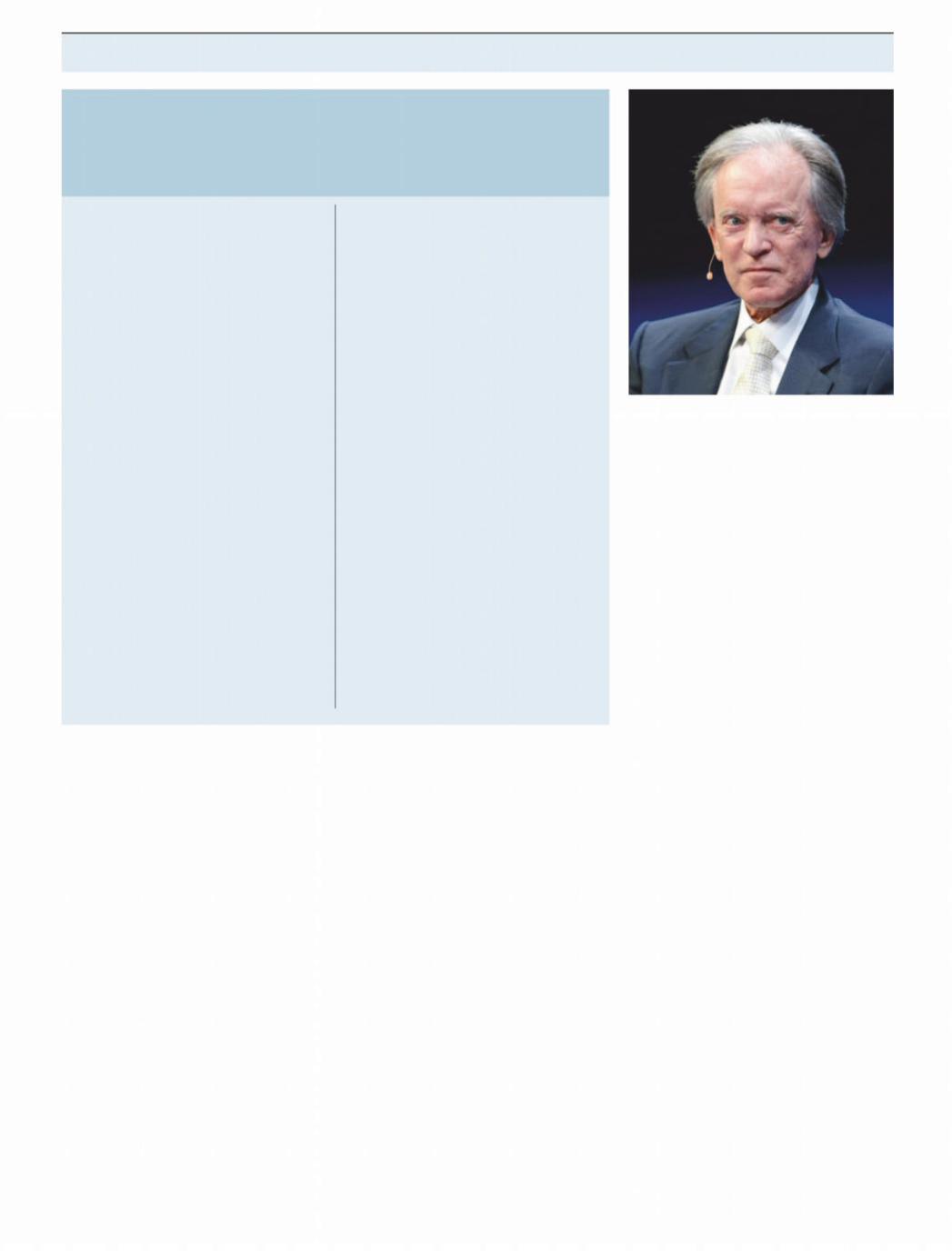
vk.com/id446425943 |
РЕЛИЗ ПОДГОТОВИЛА ГРУППА "What's News" VK.COM/WSNWS |
|
|
The Economist February 9th 2019 |
Finance & economics 63 |
Pensions
Uncalculated risk
America’s public pension plans make over-optimistic assumptions about returns
romising a pension is a long-term |
in e ect, a long-term debt, private-sector |
||||
Pand expensive business, especially if |
schemes must use a bond yield as the |
||||
the payout is linked to earnings. But |
discount rate, according to accounting |
||||
whether the employer is private or pub- |
rules. But public-sector plans can use the |
||||
lic, the cost ought to be the same in the |
expected rate of return on their invest- |
||||
long run and so, you might assume, |
ments. The higher the assumed return, |
||||
would be the investment approach. Until |
the higher the discount rate and the |
||||
2008 that was true for American pension |
lower the current cost appears. Public- |
||||
plans: private and public-sector schemes |
sector plans assume, on average, 7.4%. |
||||
had roughly the same asset allocation. |
In e ect, then, public-sector plans |
||||
But a new report by Jean-Pierre Aubry |
have riskier portfolios because they |
||||
and Caroline Crawford of the Centre for |
must, in order to justify their return |
||||
Retirement Research ( |
crr ) at Bostonassumptions. In turn, this allows them to |
||||
College shows that things have changed. |
keep down annual contributions, and |
||||
Public plans have 72% of their portfolios |
thus reduce the burden on today’s tax- |
||||
in risky assets (equities and alternatives |
payers. But the report finds that, even |
||||
such as hedge funds), and private plans |
allowing for asset allocation, public |
||||
just 62%. Since private plans have more |
pension plans make optimistic assump- |
||||
scheme members who are retired, they |
tions about future returns, compared |
||||
should have a less risky approach, be- |
with those of professional investors. |
||||
cause they must focus on paying benefits |
All this might not matter if public |
||||
immediately rather than on long-term |
pension plans were right. They would be |
||||
growth. However, even allowing for this |
widely applauded for funding pensions |
||||
and other factors such as plan size, pub- |
in a cost-e ective manner. But the aver- |
||||
lic-sector schemes are taking more risk. |
age public pension was 72% funded at |
||||
The cost of paying pensions stretches |
the end of 2 |
017,cordingac |
to |
crrdata, |
|
far into the future; a 25-year-old today |
even using the optimistic accounting |
||||
could still be receiving an income in the |
approach—down from full funding in |
||||
2080s. So employers must discount |
2001. Dismal market returns in 2018 |
||||
future payments by some rate to calcu- |
mean the problem will only have wors- |
||||
late the current cost. Since a pension is, |
ened. The gamble isn’t working. |
|
|||
2 investigators find, the bank risks censure for inadequate supervision and perhaps a sti fine. The bigger issues are whether more Goldman sta are drawn in, whether the bank will be prosecuted in America and, if criminal rather than civil charges are pursued, whether it can keep all its operating licences.
Some Malaysians think Mr Najib’s prosecution may mark a turning point for their country in the fight against corruption. The election last May was the first his party had lost in more than six decades. “I don’t think there will be any prime minister who can muster as much administrative and financial leeway as Najib had,” says Rafizi Ramli, a politician linked to the ruling coalition. He was tried and found guilty in 2016 of leaking parts of a secret government audit into 1mdb . After an appeal last year, his jail sentence was lifted.
The new government has devolved more powers and removed the ministry of finance from the purview of the prime minister. But far more is needed to clean up Malaysian business. Government-linked companies constitute about 42% of the market capitalisation of all listed firms in
Malaysia, according to Terence Gomez of the University of Malaya in Kuala Lumpur. They are opaque and unaccountable, and some are vehicles for patronage and corruption. A fund for retired people and another supposed to help pilgrims save for the haj were plundered to bail out 1mdb When campaigning, the new administration promised to reform the government’s business dealings. But it continues to appoint politicians to positions on the boards of government-linked companies.
Discussions with China over Mr Low and its involvement with1mdb are particularly delicate. Malaysia cannot a ord to offend its largest trading partner. An investigation by the Wall Street Journallast month contends that in 2016 China o ered to bail out 1mdb in return for infrastructure deals in Malaysia worth tens of billions of dollars. The Chinese embassy in Malaysia dismissed the claims as “groundless”. Wrangling continues over Chinese infrastructure projects in Malaysia agreed upon by Mr Najib. For Malaysia’s government, sorting out the scandal at 1mdb and prosecuting those behind it will be as much a diplomatic challenge as a legal one. 7
Bill Gross
Final call
N E W Y O R K
The king of the bond market abdicates
Outsize returns are hard to come by in the bond market: the approach pio-
|
neered by Jack Bogle at Vanguard of match- |
|
|
ing a benchmark while minimising tran- |
|
|
saction fees is tough to beat. There was one |
|
|
person, however, that even Vanguard’s |
|
|
fixed-income team considered in a class of |
|
|
his own and thus worth paying for: Bill |
|
|
Gross, who co-founded Pacific Investment |
|
|
Management Company ( |
pimco ) in 19 |
|
after a conventional career in finance and |
|
|
risk, plus a brief professional foray onto |
|
|
the blackjack tables of Las Vegas. On Febru- |
|
|
ary 4th Mr Gross and Janus Henderson, his |
|
|
employer for the past few years, an- |
|
|
nounced that he was retiring. |
|
. |
For decades Mr Gross displayed extraor- |
|
|
dinary acumen, not only in evaluating se- |
|
|
curities but also in structuring the dura- |
|
|
tion, or time-frame, of his portfolio. He |
|
|
displayed uncanny judgment about when |
|
|
to push maturities just a bit longer or shor- |
|
|
ter than average. His calls were amplified |
|
|
by his willingness to o er his punchy opin- |
|
|
ions on television, unlike the reclusive, |
|
|
grumpy gnomes who managed most fixed- |
|
|
income investments. |
|
|
That combination of talent and publici- |
|
|
ty attracted a flood of money. The assets of |
|
|
the fund he personally managed, pimco |
|
|
Total Return, reached a record $293bn in |
|
|
2013. Mr Gross left |
inpimco2014 after a |
coup. Although he was as good at picking brainy colleagues as he was as picking securities, his analytical skills did not, apparently, extend to assessing their loyalty. Subsequently he joined Janus Henderson,
a mid-sized fund manager. Customers fled1
http://new.guap.ru/i04/contacts
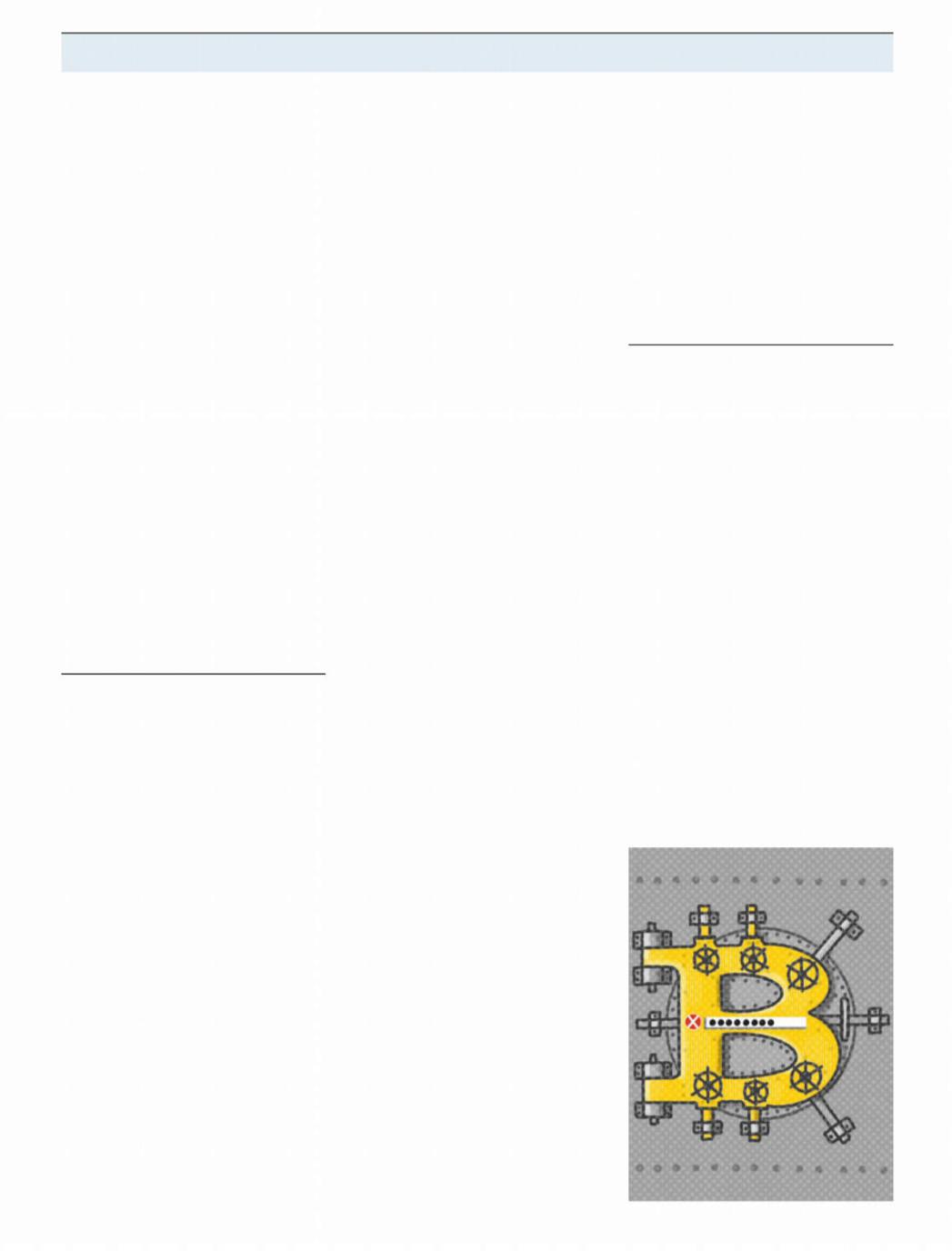
РЕЛИЗ ПОДГОТОВИЛА ГРУППА "What's News" VK.COM/WSNWS
The Economist February 9th 2019
2 pimco after he left, some of them following |
had lied to the regulators about it. On Feb- |
|||
him to his new firm. But his magic was |
ruary 4th Kenneth Hayne, the judge who |
|||
gone. Performance was lacklustre and a |
led the inquiry, handed his final report to |
|||
steady flow of redemptions followed. Half |
the government. Heads have rolled: the |
|||
of the $950m remaining under his control |
chairman and chief executive of National |
|||
is his own money. |
|
Australia Bank, which Mr Hayne singled |
||
Theories explaining the decline are not |
out for particular criticism, have resigned. |
|||
in short supply. During his long tenure, his |
The commissioner has asked regulators |
|||
techniques have been studied and copied |
to investigate 24 possible breaches of civil |
|||
by other clever people. And the nature of |
or criminal law. Mr Hayne expressed par- |
|||
debt markets may have changed over the |
ticular disgust at those who gouged fees |
|||
decades. In a televised interview after the |
without providing services. Almost A$1bn |
|||
news of his retirement, he said that his |
has already been paid in compensation to |
|||
greatest error had been to misjudge the rel- |
the victims. O enders may have broken a |
|||
ative trajectories of German and American |
law against “dishonest conduct in relation |
|||
interest rates. Both are consequences of |
to a financial product or financial service”. |
|||
novel post-crisis monetary policy set by |
The report said the Australian Securities |
|||
central banks. Human factors may have |
and Investments Commission ( |
|||
taken their toll, too. His professional spat |
corporate regulator, should consider the |
|||
with pimco was echoed by a messy divorce |
maximum penalties: large fines, or up to |
|||
that played out in the press. |
|
ten years in prison for individuals. Thus |
||
Mr Gross said he had continued to out- |
Australia, a country widely regarded as |
|||
perform in the management of some funds |
having had a “good” financial crisis, with a |
|||
outside his signature e ort. This perhaps |
stable, profitable banking system, may be- |
|||
says something about where active man- |
come one of the few places where bankers |
|||
agement can be e ective—in niches. He |
are jailed for institutional wrongdoing. |
|||
will now focus on managing his own mon- |
The report’s 76 recommendations set |
|||
ey and his $390m charitable foundation. |
out to clean up the industry. One is for a |
|||
That his departure closely follows the acco- |
new bank-funded compensation scheme |
|||
lade-packed obituaries of Mr Bogle, the ar- |
for victims of banking misconduct. Some |
|||
chitect of Vanguard’s strategy of emphasis- |
measures target the intermediaries who |
|||
ing e ciency over genius, underlines just |
flog insurance, pensions and mortgages to |
|||
how much money-management changed |
befuddled Australians. Mr Hayne wants |
|||
during the two men’s storied careers. 7 |
their bonuses slashed, starting with “trail- |
|||
|
|
ing” commissions paid to mortgage-bro- |
||
Australia’s banks |
|
kers years after they sell a loan. Financial |
||
|
advisers would need customers’ approval |
|||
Profit and loss |
to roll fees forward. It would become illegal |
|||
to tout pensions or insurance by phone. |
||||
|
|
These are welcome measures, but many |
||
|
|
think they do not go far enough. “In the end |
||
|
|
the banks have got o lightly,” says Michael |
||
S Y D N E Y |
|
Ra erty, an economist at |
Universityrmit |
|
|
in Melbourne. The commission exposed |
|||
Some think a royal commission has |
||||
the harm to customers caused by conflicts |
||||
gone too easy on rotten institutions |
||||
of interest within banks. Yet it stopped |
||||
f a healthy banking system is dull, then |
||||
short of demanding that they spin o the |
||||
IAustralia’s must be sick to the core. A roy- |
advisory and wealth-management units |
|||
al commission with a broad remit to inves- |
implicated in much of the wrongdoing. |
|||
tigate abuses by the country’s financial in- |
Three big banks had expected such a ruling |
|||
stitutions has found many troubling |
and are restructuring along these lines, yet |
|||
practices. Hearings revealed that for years |
forced separation would be “costly and dis- |
|||
banks had hidden fees, charged money for |
ruptive”, Mr Hayne concluded. |
|
||
non-existent services and docked charges |
Nor did he call for stricter checks on af- |
|||
from the dead. Financial advisers earned |
fordability before making loans. Lenders |
|||
bonuses for channelling clients’ cash to- |
have already tightened up here, too, but |
|||
wards underperforming funds. Insurance |
consumer-protection groups fear they may |
|||
companies flogged junk schemes to the |
ease up once the pressure is o . Shares in |
|||
poor or mentally disabled. |
|
the four big banks rose by an average of |
||
Australia’s four biggest lenders saw |
6.7% the day after the report’s publication. |
|||
their market capitalisation fall by an aver- |
The commission accused industry reg- |
|||
age of 16.3% while the commission was sit- |
ulators of being too cosy with the industry. |
|||
ting, knocking A$66bn ($47.1bn) o their |
It recommends that they be given more |
|||
combined value. In April the country’s big- |
power to punish misdemeanours and curb |
|||
gest asset manager, |
amp , sacked itsbonuses,chief with a new oversight panel set up |
|||
executive and chairman after the inquiry |
to ensure they do their job. Yet it is unclear |
|||
heard that it had not only charged custom- |
how much authority the panel would have, |
|||
ers for advice that was never provided, but |
and the corporate regulator has seen its |
|||
funding squeezed. “ hasasicbeen called out for its ine ectiveness since the early 1990s,” complains Allan Fels, a former chairman of the competition commission. “What’s di erent now?”
Both the coalition government, which looks set for an electoral trouncing in May, and the Labor Party, which is likely to form the next government, have promised to enact the commission’s recommendations. Little will happen before the vote. But the commission at least gained a hearing from politicians. Banks can count themselves lucky it did not crack down harder. 7
Cryptocurrencies
asic ), the
Taking it with you
What happens when your bitcoin banker dies?
Bitcoin was introduced to the world in August 2008, in the aftermath of the fi- nancial crisis. According to its techno-lib- ertarian fan-base, one of its main attractions was the promise that users could avoid dealing with the hated banks. But after a decade of amateurism, scams and billions of dollars of lost or stolen money, it is clear that many of the ramshackle institutions that play the role of banks in the cryptocurrency world make even their most reckless conventional counterparts
look like paragons of good management. The latest example is Quadrigacx , a Ca-
nadian cryptocurrency exchange that was granted protection from its creditors on February 5th. The problem, according to the firm, is not that it has lost its customers’ money, but that it cannot get to it. It1
http://new.guap.ru/i04/contacts
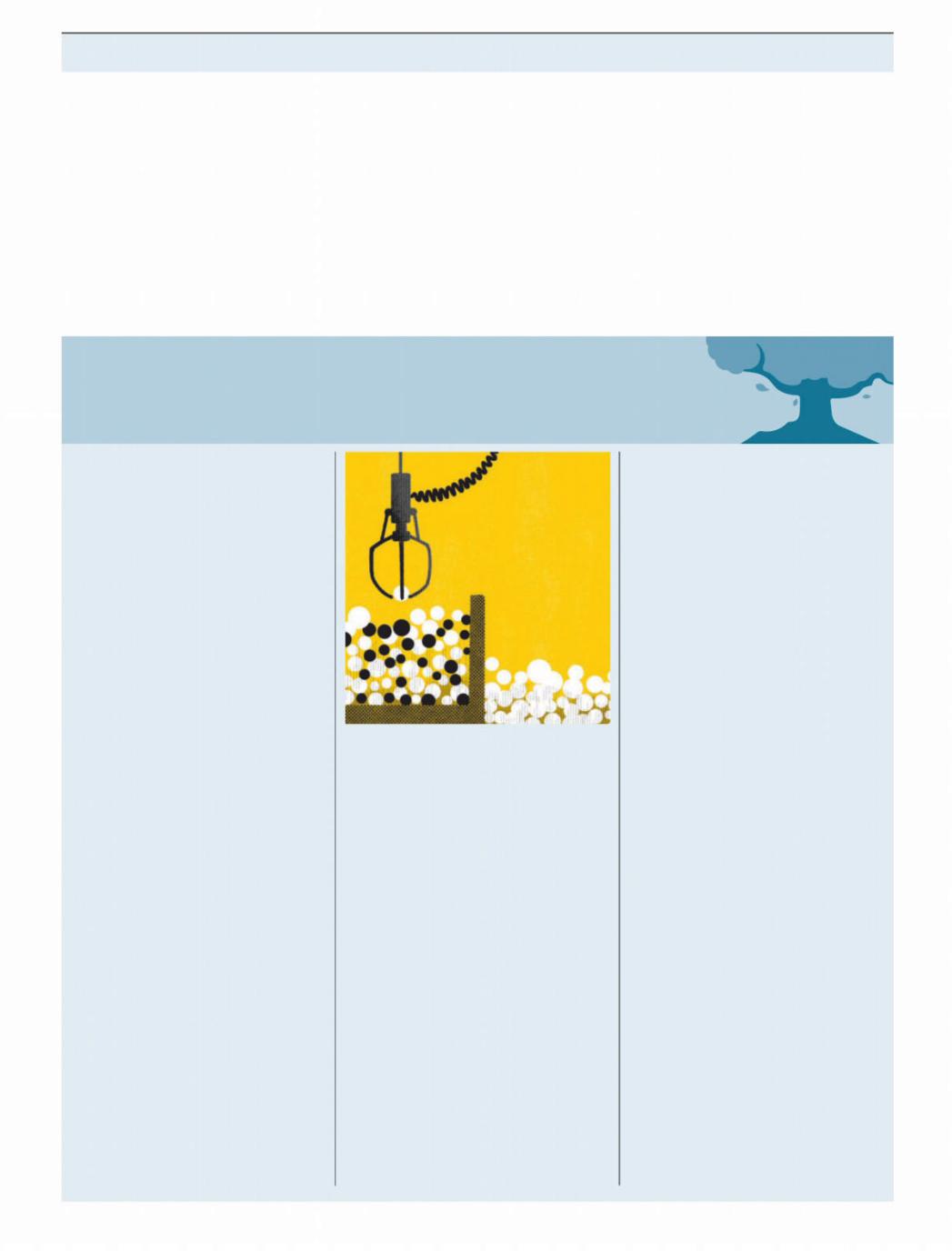
vk.com/id446425943 |
РЕЛИЗ ПОДГОТОВИЛА ГРУППА "What's News" VK.COM/WSNWS |
|
|
The Economist February 9th 2019 |
Finance & economics 65 |
2says that Gerald Cotten, its boss, died unexpectedly in India in December.
Few banks would be brought to ruin by the death of a single member of sta . But Quadrigacx says that Mr Cotten was in sole charge of handling deposits and payouts, running everything from an encrypted laptop to which only he knew the password. In court documents Mr Cotten’s widow says that “despite repeated and diligent searches, I have not been able to find [the passwords] written down anywhere”. Quadrigacx ’s 90,000 customers cannot get to around C$180m ($136m) of bitcoin, Lite-
coin, Ethereum and various other cryptocurrencies stored on the exchange. One is thought to have lost access to C$70mworth of cryptocurrency.
Discussion of Quadrigacx online is a swamp of anger, amateur detective work and conspiracy theories. The firm seems to have been in trouble for a while; in January 2018 the Canadian Imperial Bank of Commerce froze C$28m held by Costodian, Quadrigacx ’s payment processor. The bank tried repeatedly to contact Mr Cotten, to no avail. There are other curiosities. A screenshot supposedly showing a death certifi-
cate issued by the government of Rajasthan misspells Mr Cotten’s name. Experts consulting bitcoin’s public transaction register have struggled to identify the inaccessible deposits. Jesse Powell, the boss of Kraken, another cryptocurrency exchange, said on Twitter that Quadrigacx ’s story was “bizarre and, frankly, unbelievable”.
This is not the first time that large amounts of cryptocurrency have been inadvertently removed from circulation. James Howells, a British cryptocurrency enthusiast, amassed 7,500 Bitcoins in 2009, when they were nearly worthless, be-1
Buttonwood Gauged against the machine
Why the benefits of better models of credit risk will be spread unevenly
In “player piano”, a novel by Kurt Vonnegut, society is divided into a
workless majority and an elite who tend all-powerful machines. A character tells how her husband lost his status as a writer when his novel fails to hit the “readability quotient”. She turns to sex work after he refuses the public-rela- tions job he is assigned. “I’m proud to say that he’s one of the few men on earth with a little self-respect left,” she says.
The novel, published in1952, anticipates present-day fears about the social impact of automation. Clever algorithms already make finely graded distinctions about the price each consumer pays for an air ticket, or which advertisements or news he sees. They will soon decide who gets credit, and on what terms. Vonnegut touches on a deeper worry. The husband fails to reach the mark because his book is anti-machine. It is easy to imagine credit being similarly denied for reasons other than credit risk—such as race.
Such concerns are the motivation for a recent academic paper.* Its authors use a unique data set of more than 9m mortgages, approved between 2009 and 2013, which they track over the following three years. They use the data to build a conventional model of default and a mach- ine-learning model. A comparison reveals some stark results. The machine-learning model allows for a more accurate pricing of default risk and thus for a greater supply of credit. But the benefits in cheaper mortgages go disproportionately to white borrowers.
The paper might easily be filed under dystopian science fiction, alongside “Player Piano”. In fact, it is part of an academic sub-genre, known as household finance, which looks at how ordinary people handle their financial a airs. Mortgage choice is a natural focus for
this kind of research, as it is one of the biggest financial decisions people make. In this instance, though, the authors study how mortgage firms pick borrowers. And what lenders care about most is getting their money back. To stay solvent, they must set the price of borrowing to reflect the likely risk of default. This kind of reckoning requires a statistical model. A standard one would uncover how default risk varies with income, loan size and a host of other factors. A model of this kind is the paper’s baseline.
The machine-learning model is more sophisticated. It sorts the data continuously to come up with better predictions of default. Imagine there are only two bits of information about loan applicants—their income and a score based on their credit history. The machine-learning model searches the data set for people with a similar combination of salary and credit score. Its decision to advance a loan, and at what rate of interest, will depend on how reliable these near-neighbours have proved to be as borrowers. In reality, such profiles will use far more data (though race
is not an input in either model). To build them requires lots of computing power.
The machine-learning model is better at predicting default. It thus allows for a modest increase in credit supply, which brings in some marginal borrowers. And with regard to rates of interest, it creates more “winners” (ie, those who are classified as less risky than by the standard model) than losers. But the proportion of winners is significantly higher, at about 65%, for white and Asian borrowers than for blacks and Hispanics, at around 50%. The natural question to ask is whether the model is tacitly sorting by race. Tests by the authors suggest not. Including information about race changes the forecasts of default only marginally.
To understand this skewed outcome, imagine a crude model that sorts borrowers into three buckets: good, bad and middling. Some of the middle group are close to being good credits; others are close to being bad. A property of statistical models is that, as they improve, they are able to discern subtler di erences and so make finer judgments. Some almost-good borrowers benefit; some almost-bad borrowers lose out. It seems that the sophisticated model more accurately picks up their underlying fragility.
It is a disquieting result. A hypothetical lender concerned only with allocative e ciency (the better pricing of risk) is nevertheless sure to have unwished-for societal e ects. Technology has a tendency to amplify inequalities that already exist. Indeed it is the merciless sorting by technical criteria that makes the world of “Player Piano” a dystopia.
.............................................................
*“Predictably Unequal? The Effects of Machine Learning on Credit Markets” by Andreas Fuster, Paul Goldsmith-Pinkham, Tarun Ramadorai and Ansgar Walther (November 2018)
http://new.guap.ru/i04/contacts
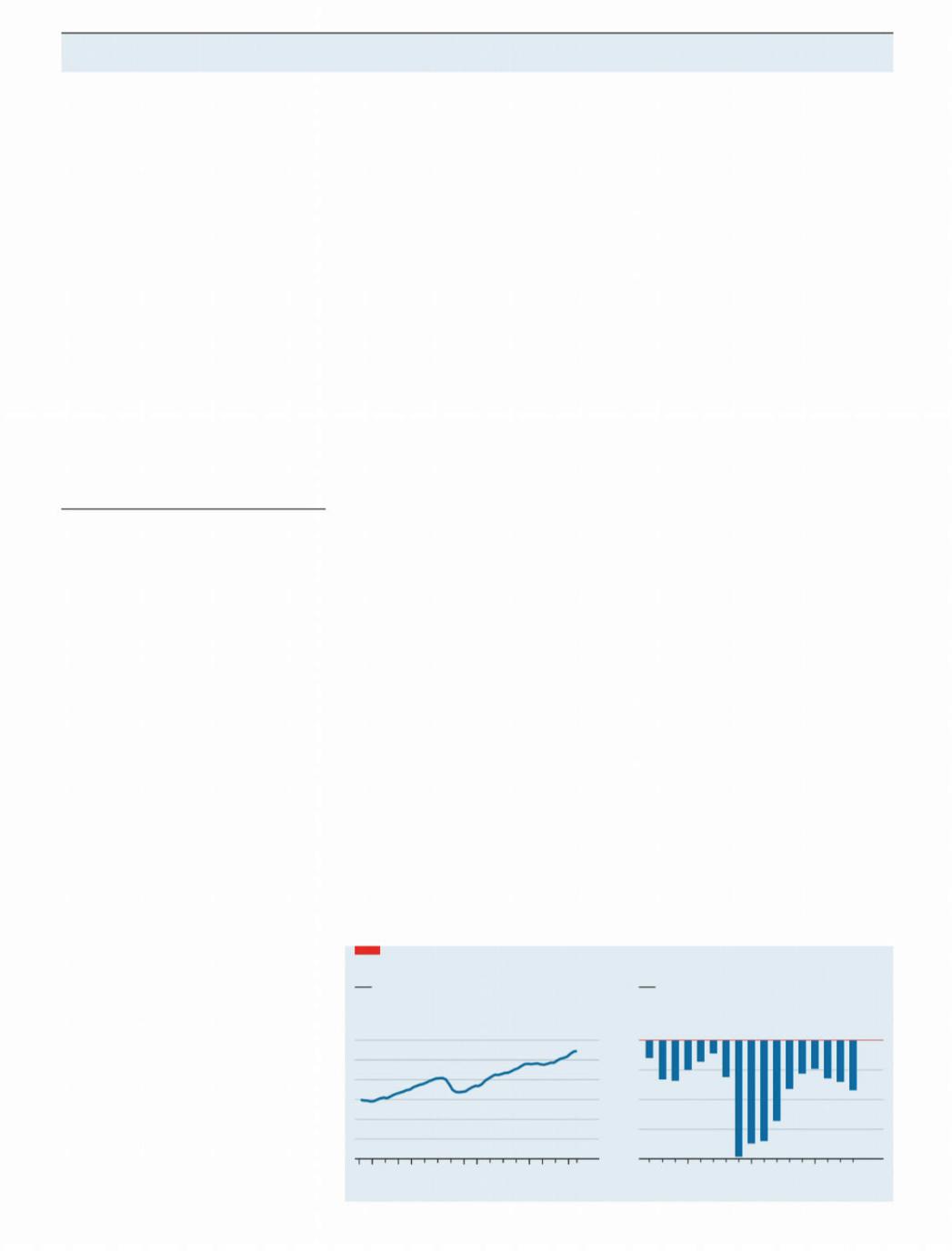
РЕЛИЗ ПОДГОТОВИЛА ГРУППА "What's News" VK.COM/WSNWS
The Economist February 9th 2019
W A S H I N GT O N , D C
The biggest fight over the Tax Cuts and Jobs Act may never be won
urried through |
Congress |
|
H2017, the Tax Cuts and Jobs Act ( |
) |
|
was the biggest overhaul to America’s tax system in more than 30 years. Boosters claimed it would turbocharge investment and growth, generating so much extra taxable income that it would pay for itself. Critics claimed it would shower the rich with tax breaks, and that balancing the books would mean the costs were ultimately born by the poor. Over a year later, beliefs on neither side have been shaken.
The law’s complexity makes its impact hard to assess. It sprawls across individual and corporate taxation, and a ects individuals’ health insurance, too. Some changes are temporary, others permanent. It redraws the basis for taxing multinationals, which are expert at finding loopholes.
Though it has been clear all along that the tax cuts go mainly to richer Americans, there is disagreement over just how regressive they are. Alan Auerbach of the University of California, Berkeley, Laurence Kotliko of Boston University and Darryl Koehler of the Fiscal Analysis Centre, for example, find that comparing people of similar ages, and considering lifetime tax liability, make the relative benefits for the best-o seem much less outsized. That is because some of those who benefit in a given year will lose out later on.
Others have compared the tcja with what might have been. Economists at the Tax Policy Centre, a think-tank in Washington, dc , looked at more than 9,000 possible reforms to the same bit of the personal-tax code. Nearly three-quarters would have cost the government less revenue. Less than 1% would have given more benefits to the richest 20% at no extra cost, whereas half would have been cheaper and benefited the poorest 20% more.
The tcja aimed to increase investment by slashing the tax rate on corporate profits from 35% to 21%, and temporarily allowing companies to deduct capital spending from profits immediately. It was hoped that encouraging firms to add to America’s capital stock would ultimately raise growth and wages. The bill’s backers say they have been proved right. Investment rose in 2018 (see chart), gdp accelerated and wage growth continued on its longstanding upward trend. Kevin Hassett, the chairman of President Donald Trump’s council of economic advisers, argues that economic growth since the tax cuts compares favourably to the trend from 2009-16. Those who say the tax cuts aren’t working are, he told a room of economists in January, “in some kind of denial”.
In reality there are at least three possible causes of America’s boom in 2018: animal spirits, which picked up globally before the tax bill passed; the bump from more government borrowing; and the direct e ect of lower tax rates on incentives
in tolateinvest. Of these, only the third could be expectedtcja to last very long. With so much going on in the economy, it is clearly outlandish to claim, as some do, that all the improvements in long-term economic forecasts since 2017 are thanks to the tcja.
Companies certainly claim that they have responded to the lower taxes with higher investment (see Business section). One study finds that 95 of 424 companies in the s&p500 announced a -relatedtcja increase in investment in the first quarter of 2018. Mr Hassett calculates, again relative to the trend in 2009-16, that the contribution of investment to growthgdpis up
by around 0.4 percentage points.
But some remain sceptical. Investment was already rising before the tax cuts. Higher oil prices since 2016 have stimulated investment in the shale industry and its suppliers. Alexander Arnon of the Penn Wharton Budget Model, a research initiative, thinks that this accounts for almost all the rise in investment growth in 2018. Then there is the fact that investment is volatile and may respond to policy changes only after some time. “The results from this year support almost anybody’s forecast,” says Richard Prisinzano, also of the Penn Wharton Budget Model.
One conclusion seems reasonably firm: the tax cuts will not pay for themselves. Despite a hotter-than-expected economy, revenues in the 2018 fiscal year were $200bn lower than the Congressional Budget Of-
fice’s forecast in 2 017. Tax cuts, togethe with a spending bill implemented in early
2018, have increased the fiscal deficit. The bill does include income-tax cuts set to expire. But that will be politically awkward, and so the cuts may well be rolled over. Either future generations will be lumped with extra debt, or future legislators will have to fill the budget hole.
The need for future policy changes to o set the tcja’s costs makes any assessment “inherently speculative”, says Greg Leiserson of the Washington Centre for Equitable Growth, a think-tank. If those policies were to include spending cuts along the lines proposed by the administration last year, he adds, poorer Americans, who have gained relatively little from the tax cuts, could end up losing out overall.
A private poll commissioned by the Republican National Committee before the midterms found that many voters thought that the beneficiaries of the tcja were “large corporations and rich Americans”. It concluded that “we’ve lost the messaging battle.” Published polls since autumn 2018 suggest that roughly even numbers of voters approve and disapprove of the reform, with a split along party lines. Even as the battle of the wonks rages on, the fight for public opinion seems largely over. 7
Tax assessment
United States, non-residential fixed investment |
United States, budget deficit |
|
|
||||||
2012 dollars, annualised, $trn |
|
|
% of GDP |
|
|
|
|||
|
|
|
|
3.0 |
|
|
|
|
0 |
|
|
|
|
2.5 |
|
|
|
|
-2.5 |
|
|
|
|
2.0 |
|
|
|
|
|
|
|
|
|
|
|
|
|
|
|
|
|
|
|
1.5 |
|
|
|
|
-5.0 |
|
|
|
|
1.0 |
|
|
|
|
-7.5 |
|
|
|
|
0.5 |
|
|
|
|
|
|
|
|
|
|
|
|
|
|
|
|
|
|
|
0 |
|
|
|
|
-10.0 |
2002 |
05 |
10 |
15 |
18 |
2002 |
05 |
10 |
15 |
18* |
Sources: Bureau of Economic Analysis; Office of Management and Budget |
|
|
|
|
*Estimate |
||||
http://new.guap.ru/i04/contacts
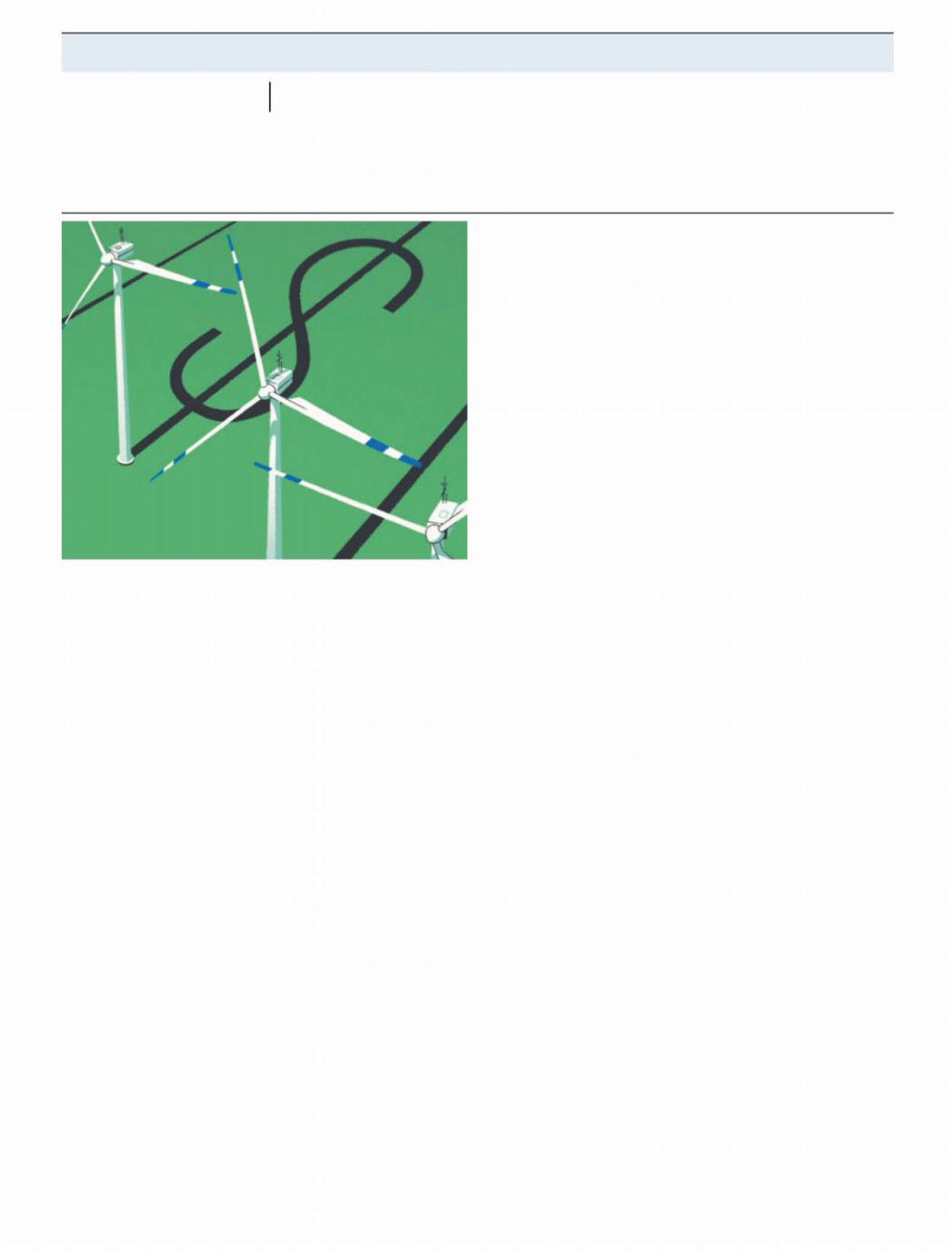
vk.com/id446425943 |
РЕЛИЗ ПОДГОТОВИЛА ГРУППА "What's News" VK.COM/WSNWS |
|
|
The Economist February 9th 2019 |
Finance & economics 67 |
Free exchange Brave new deal
A bold new strategy to tackle climate change pays little heed to economic orthodoxy
|
|
omy both greener and more equitable. Their plan remains ill- |
|
|
defined, though Democrats are expected to release draft legisla- |
|
|
tion that may provide more details soon. But its primary aims are |
|
|
clear. It proposes a move to 100% clean and renewable energy |
|
|
within a decade or two, and to zero net emissions by mid-century. |
|
|
Carbon prices might be included, but the emphasis is elsewhere. |
|
|
Supporters describe massive public investment to overhaul ener- |
|
|
gy and transport infrastructure; extensive state support for green |
|
|
industries, with the goal of turning America into a leading export- |
|
|
er of clean technologies; and large-scale e orts to help workers |
|
|
through training, job-placement schemes and perhaps a federal |
|
|
job guarantee (essentially, a promise of public work to anyone in- |
|
|
voluntarily unemployed). Supporters are vague about costs and |
|
|
funding. But decarbonising the economy so quickly would cer- |
|
|
tainly require vast sums, some of which would probably be raised |
|
|
by borrowing and some, almost certainly, by taxes on the well-o . |
|
|
Why bundle together the seemingly unrelated issues of climate |
|
|
change and economic inequality? To some, the appeal rests in po- |
|
|
litical economy. Any plan to free an industrialised economy from |
|
|
fossil-fuel dependence will create losers. To succeed politically, it |
|
|
must mobilise groups of winners more powerful and passionate |
|
|
than those losers. Plans to tax carbon and pay out the revenue as a |
s deals go |
, the New one was a big one. Franklin Roosevelt’sdividend may seem appealing; what voter could resist cash re- |
|
Aplan to yank America out of depression permanently altered |
bates? But the benefits, from lowering emissions to paying out div- |
|
the contours of the country’s economy and politics. Proponents of |
idends, are shared broadly and thinly, while the costs are concen- |
|
a “Green New Deal” harbour similar ambitions. Though still nebu- |
trated on a few politically powerful industries. A carbon refund of |
|
lous the proposal, championed most loudly by Alexandria Ocasio- |
$100 per month might be too small to mobilise a critical mass of |
|
Cortez, a new congresswoman from New York, has been met with |
voters, while the associated tax would prompt a no-holds-barred |
|
surprising enthusiasm in Washington. It is an outright rejection of |
campaign by deep-pocketed fossil-fuel firms. A Green New Deal, |
|
the orthodox economic approach to climate change. |
in contrast, might promise su cient goodies to su ciently or- |
|
In economics, climate change is a big but straightforward ex- |
ganised interest groups, such as labour unions and domestic |
|
ample of a market failure, with a correspondingly straightforward |
manufacturers, to gather a winning political coalition. |
|
solution. People take environmentally harmful decisions because |
To others, the Green New Deal is something more revolution- |
|
the private benefits of doing so (using a car to get to work, say) out- |
ary. Roosevelt saw the Depression as both a threat to liberal democ- |
|
weigh the private costs (the price of the petrol to run the car). But |
racy and the product of an economic system that put profits ahead |
|
emission-producing activities also impose social costs—deaths |
of the welfare of the working man. Similarly, left-wing activists |
|
from pollution and collisions, the contribution of carbon emis- |
view climate change as the result of unbridled capitalism. They |
|
sions to climate change—that do not influence an individual’s de- |
aim to solve it by redistributing economic and political power. |
|
cision to drive rather than walk or take public transport. To solve |
|
|
the climate problem, then, governments need only include the so- |
Feeling green |
|
cial cost of carbon in the prices people pay. The simplest approach |
From either perspective, there is plenty in the Green New Deal to |
|
is a levy on emissions corresponding to that social cost. Carbon- |
make economists nervous. Yes, many approve of government |
|
intensive activities become more expensive, and people e cient- |
funding for public goods such as infrastructure and education. |
|
ly reduce their emissions by responding to prices. It is an elegant |
Some see the sense of embracing second-best solutions to serious |
|
approach favoured by this newspaper. In January a distinguished |
problems when the ideal approach is politically untenable. But the |
|
and bipartisan list of economists signed a letter that ran in the Wall |
Green New Deal largely dispenses with analysis of the costs and |
|
Street Journal arguing in favour of a version that would refund |
benefits of climate policy. It would create large opportunities for |
|
carbon-tax revenue in the form of a flat, universal dividend. |
rent-seeking and protectionism, with no guarantee that the prom- |
|
But robust carbon taxation is politically elusive. Schemes exist |
ised climate benefits will follow. It might chuck growth-throttling |
|
that put a price on carbon, some through a carbon tax and others |
tax rises and dangerously high deficits into the bargain as well. |
|
through a functionally similar system of tradable carbon-emis- |
Of course, much the same could be said for the New Deal, or in- |
|
sion permits. Only a fifth or so of global emissions are covered, |
deed the e ort to win the second world war. In fact, the criticism of |
|
however, and only about 1% of emissions subject to such schemes |
the economic approach to climate change implicit in the Green |
|
face a price as high as $40 per tonne of carbon dioxide, the bottom |
New Deal is not that it is flawed or politically unrealistic, but that it |
|
of the $40-80 range deemed necessary to limit warming to no |
is a category error, like trying to defeat Hitler with a fascism tax. |
|
more than 1.5°C relative to pre-industrial temperatures. Time is |
Climate change is not a market glitch to be fixed through pricing, |
|
short. And other policies less loved by economists, such as green |
in this view, but part of a dire social crisis. It is hard to judge such |
|
subsidies and regulatory restrictions, have brought a solution to |
arguments without decades of hindsight. But they seem to be win- |
|
the climate problem no closer. |
ning, raising the possibility that, for the moment, economists |
|
Green New Dealers reckon the secret lies in making the econ- |
have lost the chance to lead the fight against climate change. 7 |
|
http://new.guap.ru/i04/contacts
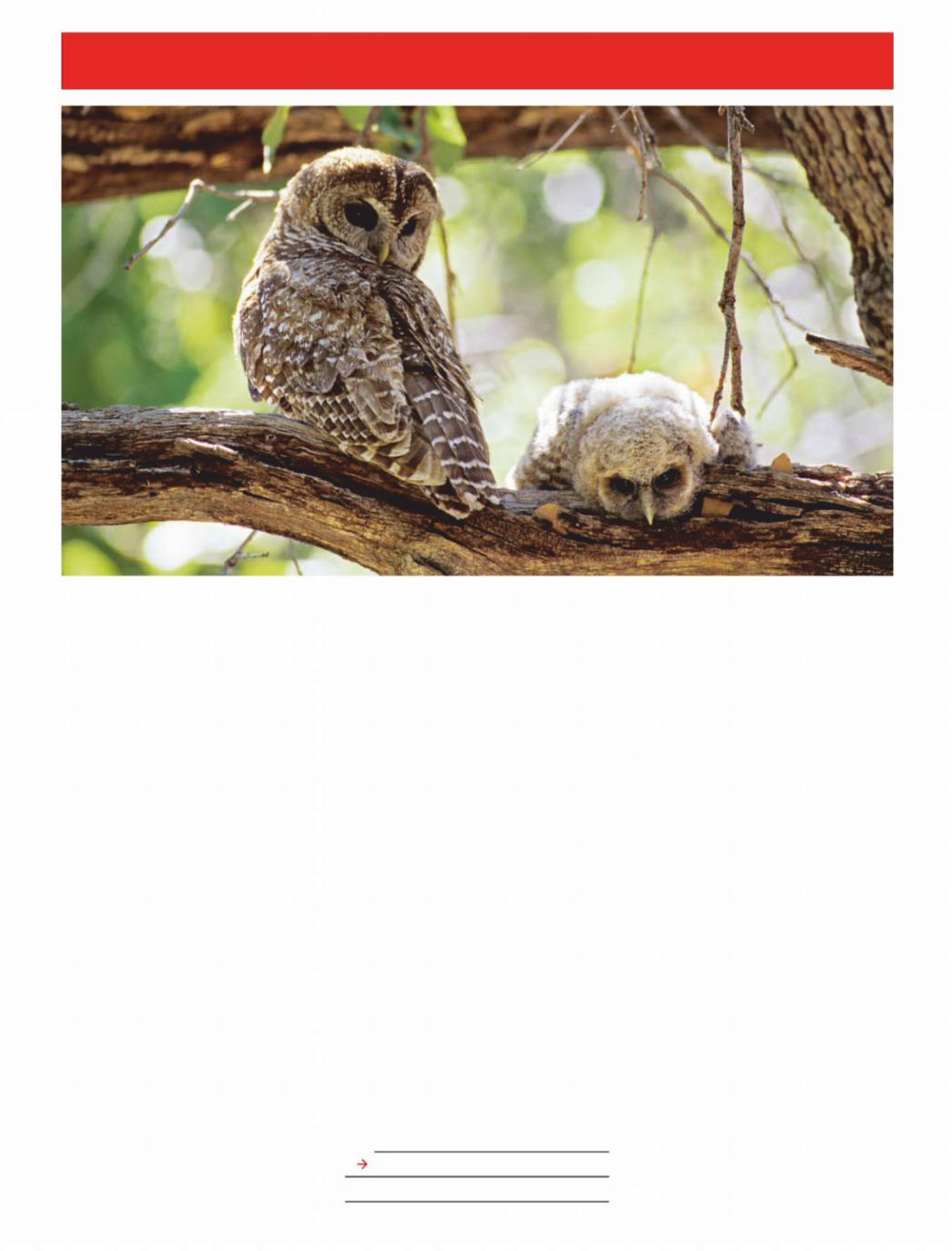
РЕЛИЗ ПОДГОТОВИЛА ГРУППА "What's News" VK.COM/WSNWS
vk.com/id446425943
68 |
Science & technology |
The Economist February 9th 2019 |
|
Saving species
Eco-nomics
Conservationists are rethinking how to preserve nature on a changing planet—and within a tight budget
he northern spotted owl, pictured |
federal recovery plans in place got more |
||
Tabove, is a handsome creature. Dark |
than their fair share of public resources, as |
||
brown and, as the name implies, dappled |
defined by |
usfwsrecommendations. The |
|
with white flecks, it stands up to half a me- |
surplus totalled $150m a year, more than a |
||
tre tall when perched on branches in the |
quarter of spending in the area. Re-allocat- |
||
ancient forests of America’s north-west. Its |
ed, this could bring nearly 900 currently |
||
swivel neck lets it scan its sylvan habitat for |
underfunded plans up to budget. |
||
woodrats, flying squirrels and other |
|
|
|
prey—or, rather, to scan what is left of that |
Mussel beach |
|
|
habitat, after decades of heavy logging. |
Conservation then, as is true of so many |
||
This logging has caused the owl’s numbers |
other things in life, is not fair. People have |
||
to decline steadily. Fewer than 2,500 pairs |
favourites, even within the o cial lists— |
||
remain, mainly in Oregon, northern Cali- |
and those favourites receive special treat- |
||
fornia and Washington. As a result, the |
ment. Spotted owls get money. Scaleshell |
||
spotted owl is listed under America’s En- |
mussels, pictured overleaf, do not. Yet ac- |
||
dangered Species Act. |
|
cording to the Nature Conservancy, a big |
|
Listing means money. E orts directed |
American charity, about 70% of North |
||
at preserving spotted owls receive $4.4m a |
American mussel species are extinct or im- |
||
year, through various channels, from |
perilled. That compares with15% of birds. |
||
American taxpayers. This sum is almost |
Some of this favouritism may not mat- |
||
double what the United States Fish and |
ter (though freshwater mussels are impor- |
||
Wildlife Service ( |
usfws ), a federal agency,tantparts of their local ecosystems and |
||
recommends be spent on the species. Nor |
|
|
is the owl the only over-endowed threat- |
Also in this section |
|
ened organism in America. In 2016 Leah |
||
Gerber of Arizona State University found |
70 Rewilding Argentina |
|
that139 of the1,124 plants and animals with |
||
|
were, until recent decades, so abundant that entire industries, such as buttonmaking, depended on them). But with extinction rates estimated as being between 100 and1,000 times their pre-human level, and man-made climate change reshaping even those parts of Earth’s surface that humanity has yet to trample under foot, ship or fishing net, a rational approach to conservation would be welcome.
The instinctive response of many con-
servationists to the sprawl of |
Homo sapien |
|
across Earth’s surface is to fence o sprawl- |
||
free areas as rapidly and extensively as pos- |
||
sible. That thought certainly dominates |
||
discussions of the |
Conventionun |
on Bio- |
logical Diversity, the main relevant international treaty. An eight-year-old addendum to the pact calls for 17% of the world’s land surface and 10% of the ocean’s water column (that is, the water under 10% of the ocean’s surface) to be protected by 2020. Currently, those figures are 15% and 6%. Campaigners want the next set of targets, now under discussion, to aim for 30% by 2030—and even 50% by 2050. This last goal, biogeographers estimate, would preserve 85% of life’s richness in the long run.
As rallying cries go, “Nature needs half” has a ring to it, but not one that sounds so tuneful in the poor countries where much of the rhetorically required half will have to be found. Many people in such places already feel “Cornered by Protected Areas”, to cite the title of a report last year by the un special rapporteur on indigenous rights.
Some conservation projects wash their1
http://new.guap.ru/i04/contacts
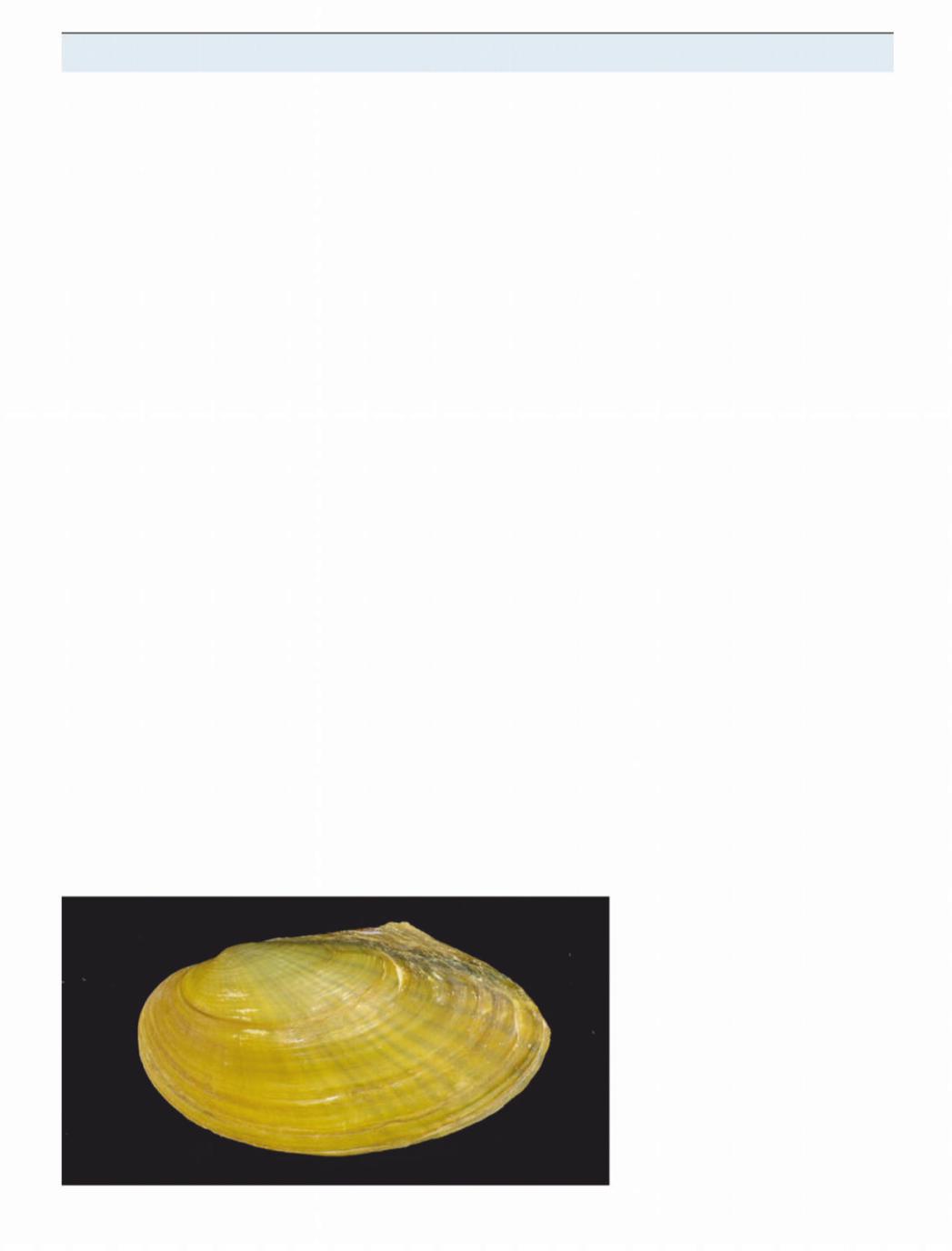
vk.com/id446425943 |
РЕЛИЗ ПОДГОТОВИЛА ГРУППА "What's News" VK.COM/WSNWS |
|
|
The Economist February 9th 2019 |
Science & technology 69 |
2 faces as sources of income, by attracting high-spending tourists. Most, though, are seen as impediments to development.
James Watson, chief scientist at the Wildlife Conservation Society ( ), another American charity, has an additional worry about focusing on the fence-it-o approach. If you care about the presence of species rather than the absence of humans, he warns, “‘nature needs half’ could be a ca- tastrophe—if you get the wrong half.” Many terrestrial protected areas are places that are mountainous or desert or both. Expanding them may not translate into saving more species. Moreover, in 2009 Lucas Joppa and Alexander Pfa , both then at Duke University in North Carolina, showed that protected areas disproportionately occupy land that could well be fine even had it been left unprotected: agriculture-un- friendly slopes, areas remote from transport links or human settlements, and so on. Cordoning o more such places may have little practical e ect.
The reverse of this, as Dr Joppa (who has since moved to Microsoft) and Stuart Pimm, another ecologist at Duke, have shown, is that even 17% of the world’s land surface, if chosen carefully, could be arranged to protect as many as 67% of the world’s plant species. In the United States it is the underprotected southern Appalachians, in the south-east of the country, that harbour the main biodiversity hotspots. The largest patches of ring-fenced wilderness, however, sit in the spectacular but barren mountain ranges of the west and north-west. In Brazil, the world’s most speciose country, the principal hotspots are not, as might naively be assumed, in the vast expanse of the Amazon basin, but rather in the few remaining patches of Atlantic rainforest that hug the south-eastern coast. These are where SavingSpecies, a charity that Dr Pimm has founded, has focused its resources.
Nor is speciosity the only consideration. So is risk-spreading. A team from the
The owls have it
University of Queensland, in Australia, led |
all-o ” approach—is that a mixed econ- |
|||
by Ove Hoegh-Guldberg, has used a piece of |
omy of conservation and exploitation can |
|||
financial mathematics called modern port- |
work. For example, rates of deforestation |
|||
folio theory to select 50 coral reefs around |
in a partly protected region of Peru, the Alto |
|||
wcsthe world as suitable, collectively, for pres- |
Mayo, declined by 78% between 2011 and |
|||
ervation. Just as asset managers pick un- |
2017, even as co ee production increased |
|||
correlated stocks and bonds in order to |
from 20 tonnes a year to 500 tonnes. |
|||
spread risk, Dr Hoegh-Guldberg and his |
This chimes with Dr Pfa ’s observation |
|||
colleagues picked reefs that have di erent |
of the Chico Mendes reserve in Brazil, |
|||
exposures to rising water temperatures, |
which is deep in the Amazon basin but |
|||
wave damage from cyclones and so on. The |
where some rubber-tapping and farming is |
|||
resulting portfolio, reported last June in |
permitted. Ungazetted parts of this region |
|||
Conservation Letters |
, includes |
reefsat insimilar distances from roads and other |
||
northern Sumatra and the southern Red |
sources of human pressure experience |
|||
Sea that have not previously registered on |
considerably |
higher deforestation rates, |
||
conservationists’ radar screens. |
|
but without any concomitant increase in |
||
Local knowledge |
|
|
economic productivity. In this area, then, |
|
|
|
having (and enforcing) the right rules |
||
Knowing where biodiversity worth saving |
seems to benefit biodiversity without con- |
|||
is concentrated is useful, says Dr Watson. |
straining the economy. It is true that fully |
|||
But knowing how to save it is just as impor- |
protected areas see less deforestation than |
|||
tant. The world’s big nature conservancies, |
the reserve, but these, as Dr Pfa shows, are |
|||
the wcs included, are therefore busily |
areas where you would not expect much |
|||
tracking what works, and at what price. |
|
tree-cutting in the first place. They are, in |
||
Conservation International ( |
ci ),othera wildwords,- |
the sorts of places that do not |
||
life charity headquartered, like the Nature |
really need regulatory protection. Dr Pfa |
|||
Conservancy, in Virginia, maintains a |
and his colleagues have replicated these |
|||
spreadsheet marking nearly 200 past and |
findings in other countries, including Peru |
|||
present projects on things like deforesta- |
and Cameroon. |
|||
tion rates and species counts, as well as |
Environmental groups can also draw on |
|||
variables such as grant size and manage- |
a growing body of academic research into |
|||
ment quality. This latter is certainly impor- |
the e ective stewardship of particular spe- |
|||
tant. In 2017 Michael Mascia, ci ’s chief sci- |
cies. For too long, says William Sutherland, |
|||
entist, published a paper on the matter in |
of Cambridge University, conservationists |
|||
Nature . He and his colleagues found large have relied on gut feelings. Fed up with his
disparities in sta numbers and skills be- |
fellow practitioners’ confident but unsub- |
tween 62 marine sanctuaries in 24 coun- |
stantiated claims about their methods, and |
tries. Though fish populations recovered in |
inspired by the idea of “evidence-based |
70% of these sanctuaries after their estab- |
medicine”, he launched, in 2004, an online |
lishment, those in the best-managed re- |
repository of relevant peer-reviewed litera- |
serves did so three times faster than those |
ture called Conservation Evidence. |
in the worst-managed ones. Creating more |
Today this repository contains more |
reserves without investing adequately in |
than 5,400 summaries of documented in- |
the means of running them, Dr Mascia and |
terventions. These are rated for e ective- |
his colleagues conclude, “is likely to lead to |
ness, certainty and harms. Want to con- |
sub-optimal conservation outcomes”. |
serve bird life threatened by farming, for |
Another common finding—counter- |
example? The repository lists 27 interven- |
intuitive to those who take the “fence-it- |
tions, ranging from leaving a mixture of |
|
seed for wild birds to peck (highly benefi- |
|
cial, based on 41 studies of various species |
|
in di erent countries) to marking bird |
|
nests during harvest (likely to be harmful |
|
or ine ective, based on a single study of |
|
lapwing in the Netherlands). |
|
Dr Sutherland’s dozen full-time sta |
|
and 250 collaborators sift through 230 or so |
|
ecological journals for updates. To cata- |
|
logue dead-ends as well as successes, they |
|
look at foreign-language journals, where |
|
negative results spurned by more presti- |
|
gious English-language periodicals as un- |
|
interesting are likelier to appear. The book |
|
version of their compendium, “What |
|
Works in Conservation”, runs to 662 pages. |
|
It has been downloaded 35,000 times. |
|
The next step, says Dr Sutherland, is to |
|
factor in costs. This is harder than it |
|
sounds. Few studies disclose expendi-1 |
http://new.guap.ru/i04/contacts

vk.com/id446425943 |
РЕЛИЗ ПОДГОТОВИЛА ГРУППА "What's News" VK.COM/WSNWS |
|
|
70 Science & technology |
The Economist February 9th 2019 |
2tures. Labour costs vary a lot: besuited consultants are more expensive than sandalwearing volunteers. Financial-reporting standards in the conservation business are a work in progress. Only in July did
vation Biology publish a proposed set of guidelines, by a group led by Hugh Possingham, of the University of Queensland.
Then there is land. Its price rises with demand, mostly from ranchers, miners, property developers and others eager to exploit rather than preserve it. This could be taken to imply that conservationists should be eyeing expensive plots, not cheap ones where the price signals a lesser threat. In Dr Pfa ’s words, “no trade-o s means no impact”. But others seek out bargains. Conservationists should “go to places five to 20 years from the bulldozer”, Dr Possingham reckons. The Nature Conservancy, where he moonlights as chief scientist, has adopted this approach to its own considerable land purchases.
Pro bono publico
Tompkins Conservation, an outfit set up by the late Douglas Tompkins, founder of the North Face, a maker of outdoor kit, does one better. It has snapped up cheap properties in Chile and Argentina, next to larger areas of disused public land, with the aim of donating them to the state on condition that adjacent private and public plots are united into single national parks. And it is working. A year ago Chile’s government created two such hybrids, both in Patagonia, with a total area of 40,000km2— roughly the size of the Netherlands. For Tompkins, which contributed 4,000km2, it was thus a tenfold return on investment.
Debates about which places to focus on pale in comparison to arguments over which species to save. Such arguments involve the concept of triage, which has divided ecologists since at least 1976, when Thomas Lovejoy, now at George Mason University, published a paper entitled “We must decide which species will go forever”. Triage is a term borrowed from Allied forces’ field hospitals in the first world war, which sorted the wounded into three groups: those too injured to be saved, those likely to recover on their own, and those for whom medics could make a di erence. “When the numbers of endangered species were small, it did not seem necessary to choose between trying to save the ivorybilled woodpecker or the whopping crane,” Dr Lovejoy wrote. “With longer and growing lists of endangered species such choices are being forced.”
Businesses, politicians and philanthropists are unlikely to part with as much cash as conservationists deem necessary to save every species. Faced with limited resources, conservation groups have no option but to engage in triage, however unwitting. Nor is it evident that prioritisation
The rewilding movement
Back from the dead
Conser-
I B E R Á
Efforts to reintroduce species to their native habitats are spreading
Tapirs are South America’s largest land mammals. They are one of six
species Ignacio Jiménez and his team are trying to re-introduce to the Iberá project, a 7,500km2 wetland reserve in north Argentina, run by Tompkins Conservation, an American charity. Like jaguars, pampas deer, giant anteaters, macaws and peccaries (a type of wild pig), tapirs were driven extinct here years ago by ranchers and hunters. For now, to assuage the area’s ranchers, Iberá’s jaguars are confined to an island deep inside the reserve. The macaws, previously caged, have been taught to recognise danger (by exposing them to a stu ed conspecific being savaged by cats), to find fruit and to fly for distances longer than a few metres. And the tapirs, as the picture shows, are breeding successfully. The renewed presence of all these animals is part of a plan to restore the place to its prelapsarian glory—and thus lure eco-tourists to a poor corner of the country.
Cute? Moi?
crimps budgets. The Save Our Species programme introduced by New South Wales, in Australia, in 2015, has nine “management streams” into which species are allocated, according to the nature and seriousness of threats to them. But this came with an additional sum of A$100m ($70m) over five years. As for the acceptability of extinctions, Dr Possingham adds, sadly, that they are already “very much acceptable”. Just witness their accelerating rate.
In the end, economic calculations will
Such “rewilding” is gaining currency among eco-entrepreneurs and ecologists. Its commercial appeal is obvious (“We are in show-business,” quips Mr Jiménez). Scientifically, it rests on the theory of trophic cascades. This holds that ecosystems are shaped by “apex consumers”—large herbivores and carnivores atop food chains. Remove them, as humans are wont to do, and the mixture of species lower down the food chain mutates, often to the detriment of biodiversity. When wolves were chased out of Yellowstone National Park, in the United States, for instance, unchecked deer outcompeted bison and beavers for food. The wolves’ return in1995 rapidly unwound these changes. That success has spurred dozens of other projects. Iberá is one, though most are in Europe and North America.
Not all rewildings turn out well. Oostvaardersplassen is a 56km2 piece of reclaimed land near Amsterdam. It has been populated with red deer, and also semi-feral cattle and ponies intended to fill ecological niches occupied by longextinct aurochs and tarpans. The idea is to prevent an important bird habitat from overgrowing. But lack of predators and a run of mild winters pushed the number of these ungulates above 5,000. A harsh winter last year then starved two-thirds of them, fuelling a public backlash against perceived cruelty.
As for Iberá, it was one of three projects graded by Aurora Torres of Martin Luther University, in Germany, in the first systematic attempt to measure rewilding’s progress, which was reported recently in the Philosophical Transactions of the Royal Society. The habitat was judged to have improved since rewilding began late last century, from 3.6 to 4.9 on a rewilding index that runs from zero to ten. The hope, eventually, is to make the area a national park.
not resolve such ethical dilemmas any more than they explain why the American public prefers spotted owls to scaleshell mussels. But nor will economic considerations go away. Estimates of how much the world spends on conservation vary between about $4bn and $10bn a year. Implementing even current targets,unlet alone “nature needs half”, would cost more than $70bn. Dyed-in-the-wool greens who bridle at talk of “return on investment” or “cost-benefit analysis” need to grow up. 7
http://new.guap.ru/i04/contacts
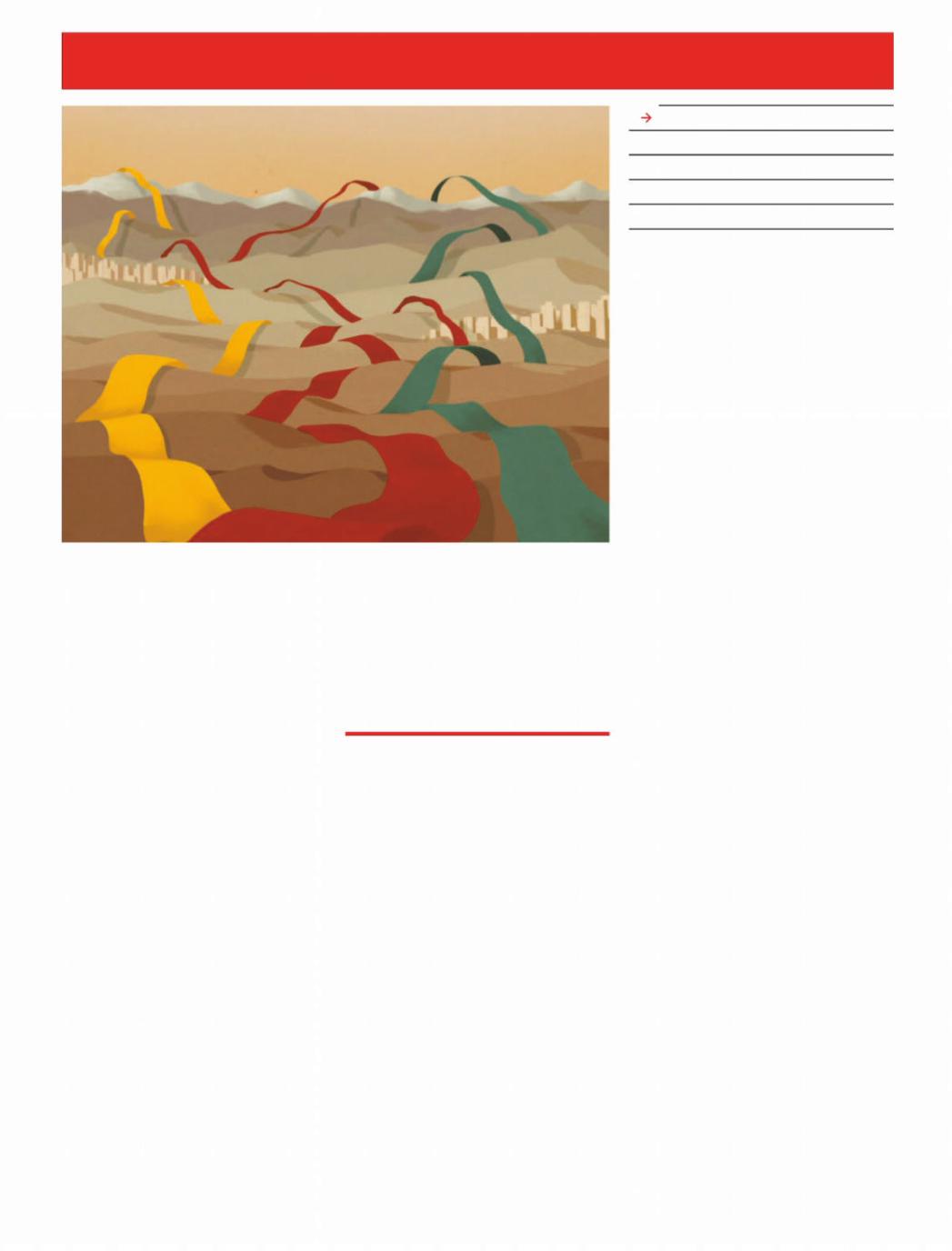
РЕЛИЗ ПОДГОТОВИЛА ГРУППА "What's News" VK.COM/WSNWS
The Economist February 9th 2019 71
Also in this section
72 An art gallery on the beach
73 Segregation and the law
73 A memoir of madness
74 Women and the sea
|
|
er of the United States radiated to the Euro- |
|
Together under heaven |
|
pean and East Asian edges of Eurasia, act- |
|
|
ing as “a kind of forward deployment |
||
|
|
against the dangers emanating from its in- |
|
|
|
ner core”—that is, the communist chal- |
|
|
|
lenges from Moscow and Beijing. |
|
|
|
Today, the increasingly integrated na- |
|
|
|
ture of the Eurasian supercontinent that |
|
Three books examine the emergence and future of the Eurasian world order |
has emerged from the cold war—all the |
||
glitzy cities springing up out of deserts, all |
|||
|
|
||
The New Silk Roads. By Peter Frankopan. |
those ports being built along Indo-Pacific |
||
coasts—should not be a surprise to stu- |
|||
Knopf; 336 pages; $26.95. Bloomsbury; £14.99 |
dents of capitalism and development. |
||
The Future is Asian. By Parag Khanna. |
What many Western prognosticators got |
||
Simon & Schuster; 448 pages; $29.95. |
wrong, however, was assuming this world |
||
Weidenfeld & Nicolson; £20 |
would be made in the West’s image; that it |
||
Belt and Road: A Chinese World Order. By |
would embrace not just Western econom- |
||
Bruno Maçães. |
Hurst; 224 pages; $29.95 andics but also liberal political values, with |
||
£20 |
|
their supposedly universal appeal and va- |
|
|
|
lidity. You only have to look at the two big- |
|
needs of Western markets. |
gest players by land mass, China and Rus- |
||
But now the modernisation that Europe |
sia, to see the folly of that presumption. |
||
first brought to Asia is racing back the other |
Other illiberal powers, notably Turkey and |
||
way. The Eurasian land mass is fizzing with |
Iran, are using past historical glories to |
||
new connections, thanks to fibre-optic ca- |
conjure a resurgent future, projecting pow- |
||
bles, pipelines, roads, bridges and manu- |
er along the new silk roads. |
||
facturing zones linking East with West. |
Economic integration seems not to be |
||
Two years ago a freight train that began its |
dissolving such di erences in values, but |
||
journey in Yiwu in eastern China pulled |
heightening them. Nor is it clear that |
||
into a depot in east London. The feat was |
America and Europe can do much about it. |
||
largely symbolic. But nobody should doubt |
Spreading democratic ideals is not a con- |
||
that Asia and Europe are being brought |
sistent priority for the United States; it in- |
||
onto a common plane. |
creasingly wants to wield power from a dis- |
||
That process is the starting point of |
tance. Western Europe is turning in on |
||
three stimulating new books, which make |
itself in part—and here is the deep iro- |
||
it clear that the map of world politics as it |
ny—as a response to crises sweeping in |
||
has been drawn for seven decades is no |
from Eurasia, among them waves of immi- |
||
longer fit for purpose. From the old map’s |
grants and Russia’s meddling both in Eu- |
||
centre, as Mr Maçães describes it, the pow- |
rope’s borderlands and its internal politics.1 |
||
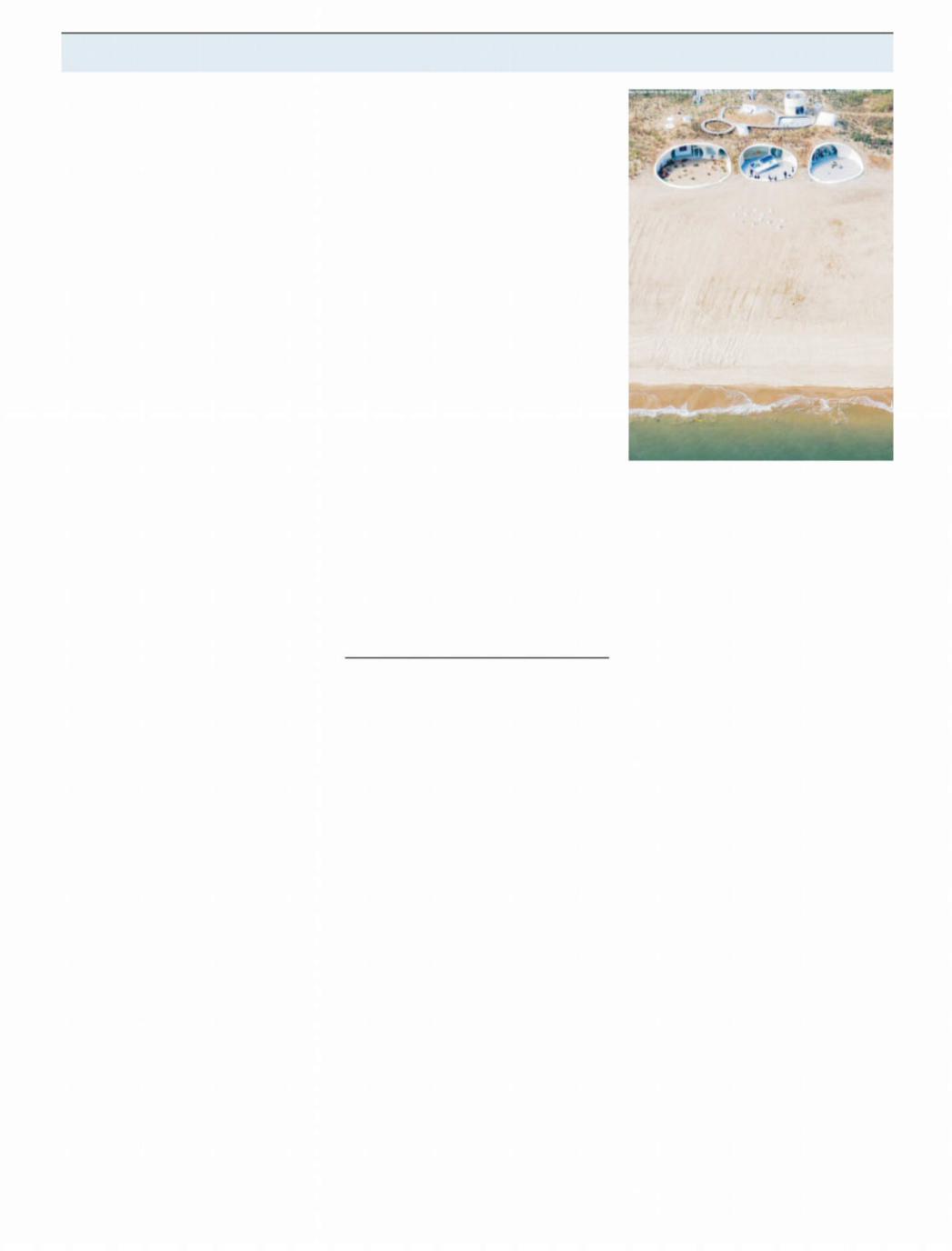
vk.com/id446425943 |
РЕЛИЗ ПОДГОТОВИЛА ГРУППА "What's News" VK.COM/WSNWS |
|
|
72 Books & arts |
The Economist February 9th 2019 |
2 Mr Maçães, a Portuguese political scientist and former foreign minister, sketched some of his arguments in “The Dawn of Eurasia” (published last year). In “Belt and Road” he looks chiefly at China’s part in reshaping the world. Until now, its signature foreign-policy project has been known in English as the Belt and Road Initiative. That final word already sounds too diminutive. Encompassing scores of countries and $1trn of real or promised infrastructure spending, the aim, first, is to create a new global economy with China at its heart. For all China’s denials, the Belt and Road is also a major piece of geopolitical engineering. It reflects China’s desire to shape its external environment rather than simply adapting to it; some worry that it is China’s means to replace an American-led international order with its own. As a phrase, “the Belt and Road” may come to be used in the same, shorthand way as “the West” is today.
Debt and diplomacy
Start with the map, and the story follows. Yet there is no plan or plot, says Mr Maçães. President Xi Jinping and his acolytes are no Marxist determinists. Lenin is the better role model as they seize a fleeting chance to change the course of history.
And how. As Peter Frankopan, an Oxford historian, deliciously puts it in “The New Silk Roads”, when Mike Pompeo, the secretary of state, last July unveiled America’s counter to the Belt and Road, the sum promised—$113m in new programmes— was only somewhat more than the combined earnings of Ivanka Trump and Jared Kushner. Just as “Belt and Road” augments Mr Maçães’s earlier work, so “The New Silk Roads” updates Mr Frankopan’s magnificent history “The Silk Roads” (2015), which altered many readers’ views of where the world’s historical centre of gravity lay.
China is now repurposing an old tenet. The ancient concept of , ortianxia“all under heaven”, put China at the heart of power and civilisation. Moral precepts governed relations among states. There are echoes of that in Mr Xi’s notion of a “Community of Shared Future for Mankind”, and in the constant emphasis on “win-win” outcomes, mutual dependence and respect. Countries’ obligations depend on their place in a China-centred network.
The gratitude and dependency of others are convenient for China as it seeks to recycle its foreign-currency surplus, employ its workers on construction sites abroad, secure raw materials and fob o low-grade production onto others so that it may keep the best high-tech manufacturing and services at home. The Trump administration calls this approach “debt-trap diplomacy”. But that misses the appeal for many recipients of Chinese largesse. For a start, no one else is o ering so much of it.
What is more, as Parag Khanna says in
“The Future is Asian”, an upbeat examination of a changing “Greater Asia”, others welcome China’s infrastructural forays “becausetheyprovidecovertopursuetheir own commercial agendas.” Nor does the fact of India, Japan, South Korea and Turkey jumping into an infrastructural arms race imply a zero-sum contest. Rather, says Mr Khanna, a Singapore-based geostrategist, China is thereby “kick-starting the process by which Asians will come out from under its shadow.”
Mr Khanna is too blithe about the drawbacks of authoritarianism. He imputes too much technocratic brilliance to the region’s elites and glosses over the brutal dimensions of development, including China’s high-tech repression against Uighurs. But on an important point, he agrees with Mr Maçães and Mr Frankopan: Eurasia’s future is likely to be more ductile than fixed and hegemonic. In this new world order, actions still lead to reactions. The increasing alignment of democratic Japan, Australia and India as a response to Chinese assertiveness is only one case in point.
Ineluctably, Eurasia is cohering, but that does not have to be under the stifling “togetherness” of tianxia. In their di erent ways,thesebooksallserveasanantidoteto American fears of a Manichaean contest withChina. Theygiveshapetolatentforces that are already impossible to ignore. 7
Contemporary art in China
The sands of time
B E I DA I H E
A museum on the Chinese coast aims to merge with its environment
Buried beneath a sand dune, in the beach town of Beidaihe, nestles one of China’s newest art galleries. An o shoot of the Ullens Centre for Contemporary Art in Beijing, 300km away, the Duneuccais unlike any other cutting-edge art museum in China. Most are high-profile architectural statements, erected in the middle of bustling cities. The Dune is subtle and secluded, its galleries unfolding against the back-
drop of the sands.
Interdependence with the landscape and the local community is at the heart of the Dune’s purpose. It aims to be sustainable ecologically as well as financially, and to help protect the environment rather than destroying it. “Our work was not just to design a physical structure,” says Li Hu of open Architecture, one of the overseers of the project, but to “dream up an entirely new type of institution.”
Mr Li wanted to create a gallery that was not “juxtaposed” to its environment but
Rooms with a view
“merged into it”. Instead of placing the museum on top of the dunes as was originally planned, he decided to bury the building beneath them to preserve the coastal ecology. The structure is heated by geothermal energy; its walls and windows and the wooden tables in its café were handmade from local materials, a tribute to the craftsmanship of the Hebei region. Because the museum is lit naturally by skylights, visitors’ experiences of the artwork will vary with the seasons and time of day.
The Dune’s interiors are meant to cultivate an intimacy between viewer, work and space. “Going to a museum in China often feels like going to a shopping centre,” says Mr Li—an experience of rushed consumerism, typically characterised by large crowds and smartphone selfies. By contrast, the Dune’s subterranean galleries invoke the caves in which the most primitive human art was first daubed. The design was inspired by Louis Kahn, a 20th-century American architect who envisaged museums as a “society of rooms”, which foster interaction and encourage people to slow down. Given the isolated location, visitors will have to make a deliberate “pilgrimage to the art”, as Mr Li puts it, rather than just a hurried urban fly-by.
“After Nature”, the inaugural exhibit (curated by Luan Shixuan), focuses on a pertinent subject: the future of humanity’s relationship with the natural world. Each of the nine contemporary Chinese artists in the show engages cleverly with the space that their work occupies. Visitors standing in front of Liu Yujia’s “Wave”, a digital diptych featuring aerial footage of waves rushing against the coast, need only to turn around to find themselves looking out at the Bohai Sea. Beyond a glass door lies Zheng Bo’s “Dune Botanical Garden”, a1
http://new.guap.ru/i04/contacts

РЕЛИЗ ПОДГОТОВИЛА ГРУППА "What's News" VK.COM/WSNWS
vk.com/id446425943
The Economist February 9th 2019 |
|
|
|
|
Books & arts 73 |
||
2 work of bio-art made of transplanted local |
A key facet of the story, unknown by |
A memoir of madness |
|
||||
weeds that also functions as a museum |
many—including, apparently, the justices |
Physician, curb |
|
||||
garden. Nearby stands “Destination”, an in- |
who heard the case—is that the episode |
|
|||||
stallation by Na Buqi, which comprises an |
spurring Plessy was an elaborate set-up de- |
thyself |
|
|
|||
overturned billboard advertising an eerily |
signed to hasten just such a reckoning. |
|
|
||||
photoshopped beachside getaway. |
When Homer Plessy, a French-speaking |
|
|
|
|||
Ms Na’s contribution is a wry commen- |
Creole with only one black great-grandpar- |
|
|
|
|||
tary on the museum itself. Its location, Bei- |
ent, took his seat in the white carriage of a |
|
|
|
|||
daihe, is well-established as both a sum- |
Louisiana train in |
1892, |
an o cer ap- |
Let Me Not be Mad. By A.K. Benjamin. |
|||
mer retreat for Beijing’s political elite and a |
proached him. “Are you a coloured man?” |
||||||
Bodley Head; 213 pages; £16.99. To be |
|
||||||
popular beach resort for domestic tourists. |
he asked. When the fair-skinned Mr Plessy |
|
|||||
published in America by Dutton in June; $27 |
|||||||
Cranes crowd behind the dunes, supervis- |
answered “yes”, yet refused to budge, he |
||||||
|
|
|
|||||
ing construction work by Aranya, a Chi- |
was arrested for violating the state’s Sepa- |
his is a golden age for books written by |
|||||
nese developer that also funded and built |
rate Car Act. The scene had been carefully |
Tdoctors, psychoanalysts, surgeons and |
|||||
the museum. Much as the Dune wants to |
choreographed by the Comité des Ci- |
the like. In Britain, “This Is Going To Hurt”, |
|||||
attract visitors, a big influx might threaten |
toyens, a civil-rights alliance of blacks, |
Adam Kay’s memoir about his time as a ju- |
|||||
its sustainable vision: like that forlorn bill- |
whites and Creoles in New Orleans whose |
nior doctor, has featured on bestseller lists |
|||||
board, a picture-perfect ideal risks being |
first attempt at a test case (with Daniel Des- |
for months. Atul Gawande, an American |
|||||
compromised by the double-edged forces |
dunes, a citoyen’s son, in Plessy’s role) had |
surgeon, has written a series of thoughtful |
|||||
of consumption. 7 |
recently foundered on a technicality. |
inquiries into the limits of surgical inter- |
|||||
|
“Separate” notes that several prominent |
vention and end-of-life care. Books by Oli- |
|||||
Segregation in America |
men of colour, including Frederick Doug- |
ver Sacks, a neurosurgeon who popular- |
|||||
lass—the escaped slave who became a cele- |
isedthegenrewithworkssuch as “The Man |
||||||
Lines of colour |
brated abolitionist |
and |
orator—never |
Who Mistook His Wife for a Hat” before his |
|||
thought much of the legal strategy of chal- |
death in 2015, are still being published. |
||||||
|
lenging segregation on the rails. It stung |
“Let Me Not Be Mad” seems, at first |
|||||
|
Louis Martinet, editor of the New Orleans |
glance, to fit into this trend. Written by a |
|||||
|
Crusader, that Douglass “saw no good in the |
clinical neurologist under the pseudonym |
|||||
|
undertaking”. But Martinet experienced |
A.K. Benjamin, it begins at an anonymous, |
|||||
|
moments of doubt, too, wondering if white |
presumably British, hospital. A female pa- |
|||||
Separate: The Story of Plessy v Ferguson, |
racism and black “submissiveness” ren- |
tient—an amalgam, like all the figures in |
|||||
dered their fight a “hopeless battle”. |
the book, of several di erent case studies |
||||||
and America’s Journey from Slavery to |
|||||||
Albion Tourgée and James Walker, the |
and encounters, |
both “real and |
imag- |
||||
Segregation. By Steve Luxenberg. W.W. |
|||||||
lawyers arguing Plessy’s case at the Su- |
ined”—sits down |
in the doctor’s |
o ce, |
||||
Norton; 624 pages; $35.00 |
|||||||
preme Court, knew at the outset that the |
having been referred to him because her |
||||||
he key to success at the Supreme Court, |
|||||||
justices were “somewhat adverse” to their |
brain appears to be “rotting”. Mr Benjamin |
||||||
Tas the late Justice William Brennan |
position. So they pulled out all the stops |
zooms out to predict her future: “Forgetful- |
|||||
liked to say, is the number five. With five |
with a nearly 80-page brief. Segregation in |
ness first…The onset of ‘anomia’ following |
|||||
votes—a majority of the justices—you can |
railcars violated the Thirteenth Amend- |
the rule of frequency: losing the name for1 |
|||||
do anything. But as an impassioned group |
ment banning slavery, they reasoned, as it |
|
|
|
|||
of activists discovered in1896, falling short |
“reimpose[d] the caste system”. It was |
|
|
|
|||
sometimes does more than disappoint a |
barred by each of the four provisions of the |
|
|
|
|||
losing litigant: it can cement a disastrous |
Fourteenth Amendment, |
including the |
|
|
|
||
status quo for generations. |
citizenship and equal-protection clauses. |
|
|
|
|||
In “Separate”, the context and aftermath |
Most creatively, the lawyers contended |
|
|
|
|||
of the court’s ruling in Plessy v Ferguson are |
that tossing a light-skinned man with a few |
|
|
|
|||
woven into a nuanced history of America’s |
drops of coloured blood out of a white car- |
|
|
|
|||
struggles in the 19th century as a civil war |
riage violated his due-process rights, as it |
|
|
|
|||
was fought, slavery ended and a new, com- |
amounted to a “forcible confiscation” of |
|
|
|
|||
plex racial politics haltingly took form. |
“the reputation of being white”. |
|
|
|
|||
Steve Luxenberg, an editor at the Washing- |
Wrapping these claims in a vision of |
|
|
|
|||
ton Post , dwells on the personal lives of the colour-blindness, Tourgée and Walker per- |
|
|
|
||||
men who built and decided a case that |
suadedonlyonejustice—Harlan—that seg- |
|
|
|
|||
wound up blessing the regime of Jim Crow |
regation was a “badge of servitude” at odds |
|
|
|
|||
segregation in America’s South. His narra- |
with the constitution’s promise of equality. |
|
|
|
|||
tive culminates in an irony: six of the seven |
Meanwhile Justice Henry Brown, writing |
|
|
|
|||
justices who signed onto what became one |
for the majority, found separate carriages |
|
|
|
|||
of the Supreme Court’s most reviled rulings |
stigmatising only if “the coloured race |
|
|
|
|||
were northerners. John Marshall Harlan—a |
chooses to put that construction upon it”. |
|
|
|
|||
Kentuckian who once “had no quarrel with |
Luxenberg attributes Brown’s myopic view |
|
|
|
|||
slavery” and whose family owned many |
that “separate did not mean unequal” to his |
|
|
|
|||
slaves—wrote a dissent articulating the |
sheltered New England upbringing and |
|
|
|
|||
constitutional principle of racial equality |
“most conventional” outlook. “Separate” |
|
|
|
|||
that was not upheld by a majority of the |
shows how seven justices launched a half- |
|
|
|
|||
court until Brown v Board of Education |
century, of racial cruelty because, unlike |
|
|
|
|||
nearly six decades later. |
Harlan, they failed to see that “equality and |
|
|
|
|||
Like any good history, “Separate” intro- |
opportunity could not survive if they came |
A naughty night to swim in |
|
||||
duces some puzzles while resolving others. |
in di erent colours”. 7 |
|
|
||||
http://new.guap.ru/i04/contacts
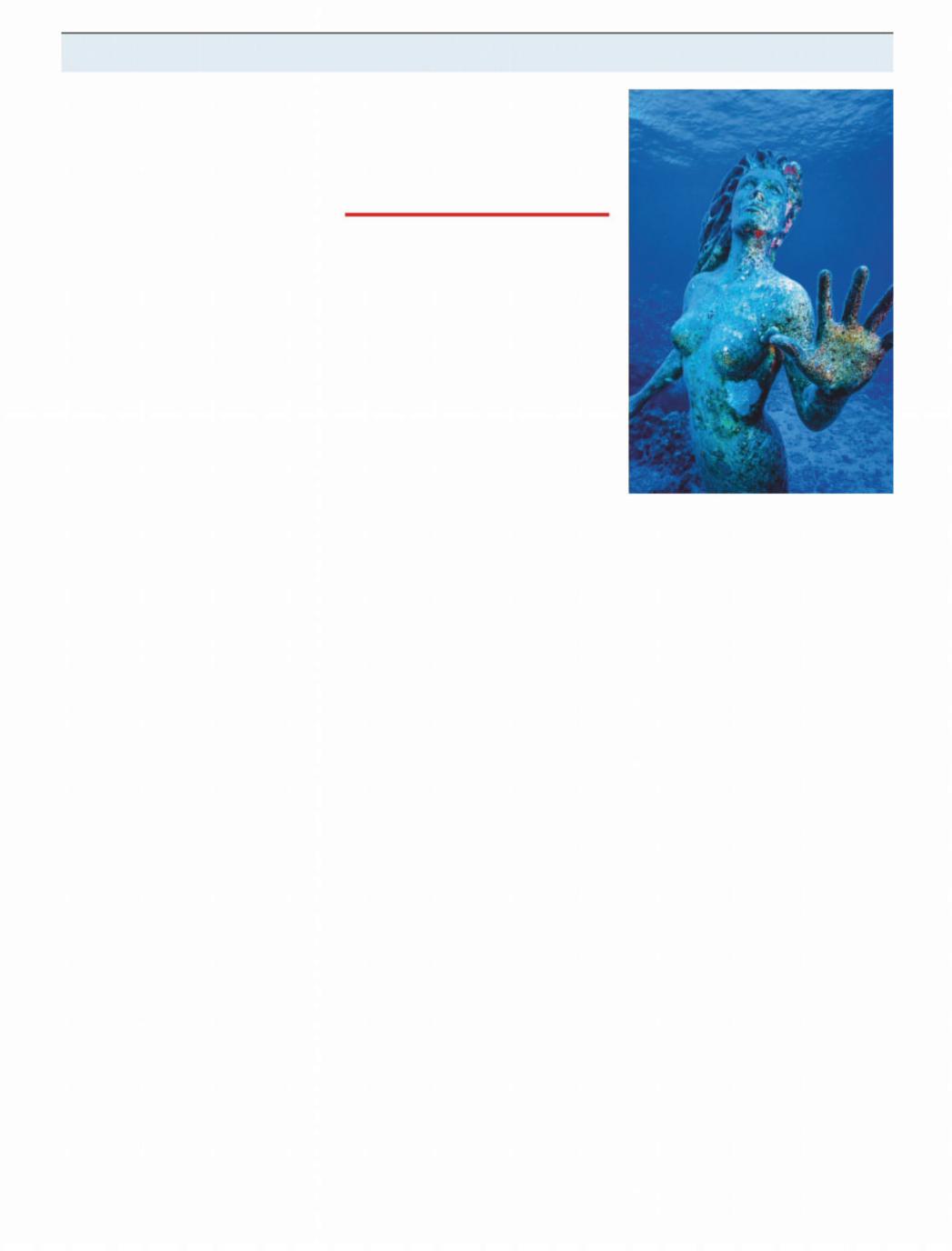
РЕЛИЗ ПОДГОТОВИЛА ГРУППА "What's News" VK.COM/WSNWS
vk.com/id446425943
74 Books & arts |
|
|
The Economist February 9th 2019 |
||
2 Caerphilly, |
then Cheddar, then cheese, |
Mermaids and monsters |
|
|
|
then children, your children.” |
The sirens’ song |
|
|||
So far, so familiar. But soon it becomes |
|
||||
clear that the main subject is not the pa- |
|
|
|
||
tients, but the doctor himself. As the book |
|
|
|
||
progresses, he appears to lose his job—or at |
|
|
|
||
least to be prevented from seeing patients. |
|
|
|
||
His frame of reference shrinks to a few ec- |
|
|
|
||
centric acquaintances, pop songs and |
Salt on Your Tongue: Women and the |
|
|||
scraps of reading. Indeed, “Let Me Not Be |
|
||||
Sea. By Charlotte Runcie. Canongate; 365 |
|
||||
Mad” relies more on literary and cultural |
|
||||
pages; $24.00 and £14.99 |
|
|
|||
references than on clinical ones; the au- |
|
|
|||
|
,menandwomenex- |
||||
thor explains that before becoming a neu- |
y long tradition |
||||
rologist, he was, among other things, a |
Bperience the sea in di erent ways. Men |
|
|||
screenwriter and a monk. |
set out on it, looking for land, gold, adven- |
|
|||
“King Lear” recurs throughout—from |
ture; women stay on shore, waiting and |
|
|||
the title to various references to “Poor |
worrying. Men scoop up shoals of fish, or |
|
|||
Tom”, the madman as whom a character in |
harpoon great whales; women, wrapped in |
|
|||
the play disguises himself, to passages that |
shawls and with hands rubbed raw, gut and |
|
|||
echo Lear’s own descent into madness. Al- |
fillet, preserve and sell whatever the seafar- |
|
|||
lusions are made to Kafka, Dostoyevsky, |
ers bring in. Even young weekenders on |
|
|||
David Foster Wallace and many other writ- |
England’s beaches, faced with a rough sea, |
|
|||
ers (nearly all of them men). Occasionally |
react in di erent ways. The girls jump and |
|
|||
Mr Benjamin himself brings out pin-prick |
scream; the posturing lads throw stones. |
|
|||
details with a novelist’s skill: the “fading |
This di erence both intrigues Charlotte |
Creatures of the deep |
|||
impression of goggles like quotation |
Runcie and bothers her. When she was |
||||
marks” around the eyes of one patient, or |
small, to stand in a rock-pool of clear sea- |
|
|||
an early Autumn morning “set like a da- |
water made her feel “bright and fierce”. |
flight of gannets and sea eagles and visits |
|||
guerreotype by a gossamer of frost”. |
That feeling seems to dissipate with the |
shrines and caves where saints, all male, |
|||
The argument that loosely emerges is |
knowledge that women were traditionally |
communed with God and the waves. Her |
|||
that doctors can be as damaged as their pa- |
kept away from the sea, their mere pres- |
prose is often lovely, but the sea keeps its |
|||
tients. And Mr Benjamin is sceptical of the |
ence on a boat unlucky and the great sea ep- |
distance. Real close grappling with it, she |
|||
tendency, perhaps even the mania, for clas- |
ics almost empty of them. The sea was not |
finds, is not to sing the men’s sea shanties |
|||
sification, the glib assurance of diagnosis: |
their place. In her lyrical and gently digres- |
(though they make her feel temporarily |
|||
I walked over London Bridge in rush hour, |
sive book she analyses, and works to recov- |
elated again), nor to try lone yachting, nor |
|||
er, the countering power of her first, ele- |
to swim in it. It is to have a baby. |
||||
faces thronging around me, and diagnosed |
mental, female response to the sea. |
The connection of the sea and the hu- |
|||
each one in an instant: Psychosis…Depres- |
She begins by considering who is really |
man body is familiar: the salt of tears, the |
|||
sion…Lewy Bodies…Panic…Depression…So- |
|||||
|
|
|
|||
ciopathy… |
ocd …Cynophobia…Panic…Guam’s.in charge of it. Her chapter headings are the |
make-up of the blood. A connection with |
|||
Everybody has something, and now there’s a |
names of the seven Pleiades, the stars—all |
pregnancy and childbirth seems more ten- |
|||
girls, most variously abused by gods— |
uous, and is sometimes too far a stretch, |
||||
name for it, even if it’s fear of having some- |
|||||
thing, of going insane, aka dementophobia. |
whose rising told Greek sailors when to |
but Ms Runcie sets the theme early: the sea |
|||
|
|
embark. The moon, female in most cul- |
is “a gradual process of becoming, of wid- |
||
But these points would be stronger if he re- |
tures, controls the tides. The goddess Athe- |
ening and ageing and growing into more”. |
|||
lied less on personal anecdote and more on |
na sorted out the waves for Odysseus. Our |
In some ways she becomes the sea herself, |
|||
professional expertise. Some moments in |
Lady, star of the sea, smooths it for all who |
a fluid, heavy medium in which the baby |
|||
the book are moving, such as when the au- |
invoke her. |
|
grows from something light as sea-silk, or a |
||
thor’s daughter seems to have a fit or when |
The sea is also inhabited by mysterious, |
tiny curled sea-snail, into a seafarer. In oth- |
|||
a close colleague dies. Other vignettes—in |
terrifying or bewitching women. Sirens |
er ways she is a sailor on a ship, sick, en- |
|||
which he describes his rather strange on- |
sing men towards doom on their rock; Scyl- |
cumbered, chronically fearful and, in sev- |
|||
line dating persona, say, or returns to a |
la, her teeth “full of black death”, writhes in |
eral harrowing passages, racked by the |
|||
kind of monastery at the end of the book— |
her whirlpool. Underwater caves hide Syc- |
dangers of a di cult birth and over- |
|||
fall flat. Moreover Mr Benjamin’s slippery |
orax, Caliban’s mother, and the awful pro- |
whelmed by waves of pain. Men have Odys- |
|||
method proves problematic. |
genetrix of Grendel in “Beowulf”. Mer- |
seus clinging to his raft, the smashing of |
|||
He is an openly unreliable narrator; |
maids, selkies and naiads, all alluring in |
the Pequod , the horror-voyages of the Fly- |
|||
even before he admits that some of the case |
their beauty, draw sailors down to the |
ing Dutchman and the Ancient Mariner; |
|||
studies “were me, are me”, there is a whi |
depths. When men sail, what they fear is |
but women, every day and everywhere, |
|||
of uncertainty, of fact melding with fiction |
often females who know the sea better. |
have this. |
|||
and becoming distorted, grotesque. But in |
On the other hand, as second-mate |
And in the end, as usually in sea stories, |
|||
the end these elisions undermine his |
Stubb cries in “Moby-Dick”, “Such a funny, |
the sea has the last word. Ms Runcie carries |
|||
theme. The e ect of the best medical mem- |
sporty, gamy, jesty, joky, hoky-poky lad, is |
her tiny new daughter down to the beach at |
|||
oirs, like those of Sacks, is to make idiosyn- |
the Ocean, ho!” A man’s thing. All down the |
St Monans and introduces her, in a sort of |
|||
cratic cases seem emblematic of wider |
ages men engage with the sea closely, ag- |
baptism, to salt water. Her encounter with |
|||
maladies. In “Let Me Not Be Mad”, the focus |
gressively; they grapple with it and fight it. |
the sea of motherhood has indeed made |
|||
is on a single, highly subjective and ex- |
Ms Runcie spends much of her book in the |
her grow into someone else. She is steadier |
|||
treme experience. Rather than plumbing |
women’s place, on the shore of the East |
and calmer; she is unafraid. But she has not |
|||
the depths of an “unravelling mind”, it |
Neuk of Fife, where she walks the dog, |
aged, as she supposed. Instead she is that |
|||
seems instead to skim the surface. 7 |
hunts for shells and sea-glass, exults in the |
little girl again, bright and fierce. 7 |
|||
http://new.guap.ru/i04/contacts
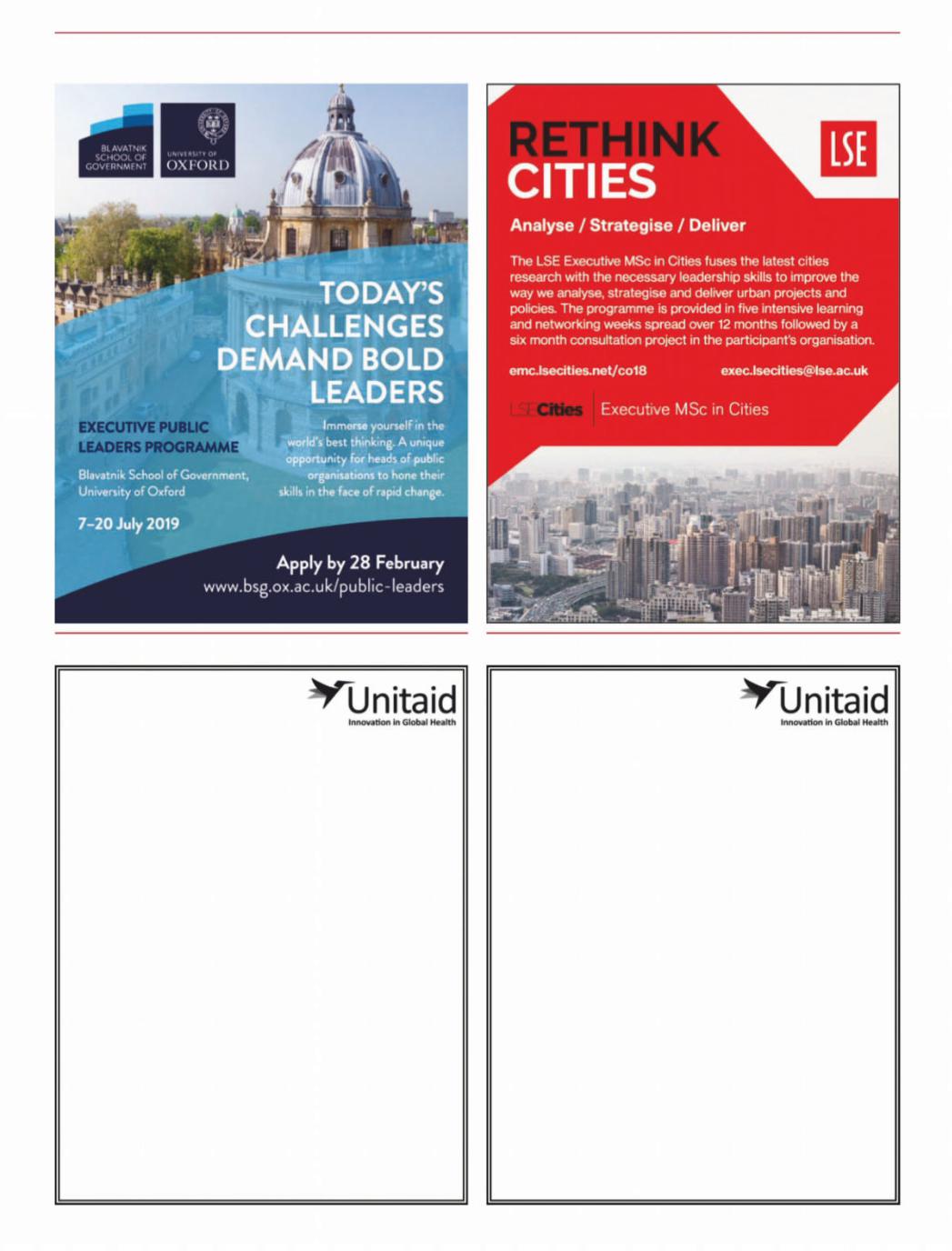
РЕЛИЗ ПОДГОТОВИЛА ГРУППА "What's News" VK.COM/WSNWS
vk.com/id446425943
Courses |
75 |
Tenders |
Appointments |
Unitaid |
is seeking a suitable Contractor to support the Secretariat in |
Unitaid is a multilateral organization that brings the power of new medical |
|||
enhancing its external communications, including developing a corporate |
discoveries to the people who most need them. Through time-limited |
||||
communications and social media strategy, graphic design, brand |
investments, Unitaid identifies the best health innovations with the potential to |
||||
positioning, website maintenance, production of audiovisual assets such |
alleviate the burden of major diseases and sets the stage for their large-scale |
||||
as short films and animations, and management of relations with new and |
introduction by governments and partners such as the President’s Emergency |
||||
Plan for AIDS Relief (PEPFAR) and the Global Fund. Its investments result |
|||||
traditional media. |
|
|
|||
|
|
in better ways to prevent, diagnose and treat diseases including HIV/AIDS, |
|||
|
|
|
|
||
All interested prospective bidders are invited log-in as a registered Supplier |
hepatitis C, tuberculosis and malaria more quickly, affordably and effectively. |
||||
A growing number of its projects address more than one disease, maximizing |
|||||
(Account registration accessible on |
https://www.ungm.org/Account/ |
||||
Registration |
). Kindly pay attention to the below tender timeline: |
|
the effectiveness of health systems as a whole, and more than half of Unitaid’s |
||
|
portfolio is linked to antimicrobial resistance. |
||||
1) No later than 25 February 2019 17:00 hours Geneva Time, |
the bidder |
||||
shall submit the corresponding forms, duly completed and signed under |
Unitaid is hosted and administered by World Health Organization (WHO), |
||||
located at the Global Health Campus, Le Pommier, 1218 Le Grand-Saconnex, |
|||||
the “Correspondence” tab of UNGM: |
|
|
Switzerland. |
||
2)For clarification on technical, contractual or commercial matters, bidders may submit questions via UNGM using the “Correspondence”
tab at no later than |
15 February 2019 |
. |
The Unitaid team overseeing the tender will respond in writing (via the “Correspondence” tab of UNGM) to any request for clarification of the Request for Proposal (RFP) that it receives prior to the date mentioned in the Request for Proposals. A consolidated document of Unitaid’s response to all questions (including an explanation of the query but without identifying the source of enquiry) will be published on the UNGM for the perusal of all prospective bidders.
3) Proposals must be uploaded via UNGM, under the “Tender Documents” tab no later than 28-Feb-2019 at 17:00 hours, Geneva time
Unitaid is looking for: |
|
1) Head of Communications at P5 level. |
|
Duration 24 months Contract Schedule: |
Full-time staff |
•An experienced and highly skilled professional to lead a creative multimedia team focused on communicating to diverse audiences Unitaid’s unique contribution to improving global health through innovation.
2)Senior Resource Mobilization officer at Grade P5 level.
Duration 24 months Contract Schedule: |
Full-time staff |
•A Senior resource Mobilization Manager to lead the design, development and implementation of Unitaid’s resource mobilization strategy, while liaising with existing and potential donors.
Deadline. for submission of the profi le: 3 March 2019
For more finite details, terms and conditions, and relevant documents |
For further information about this advertisement and how to apply online please |
|
for this tender, please go to: |
https://www.ungm.org/Public/Notice/83075go to: https://www.who.int/careers/en/under “External Candidates Access.” |
|
http://new.guap.ru/i04/contacts
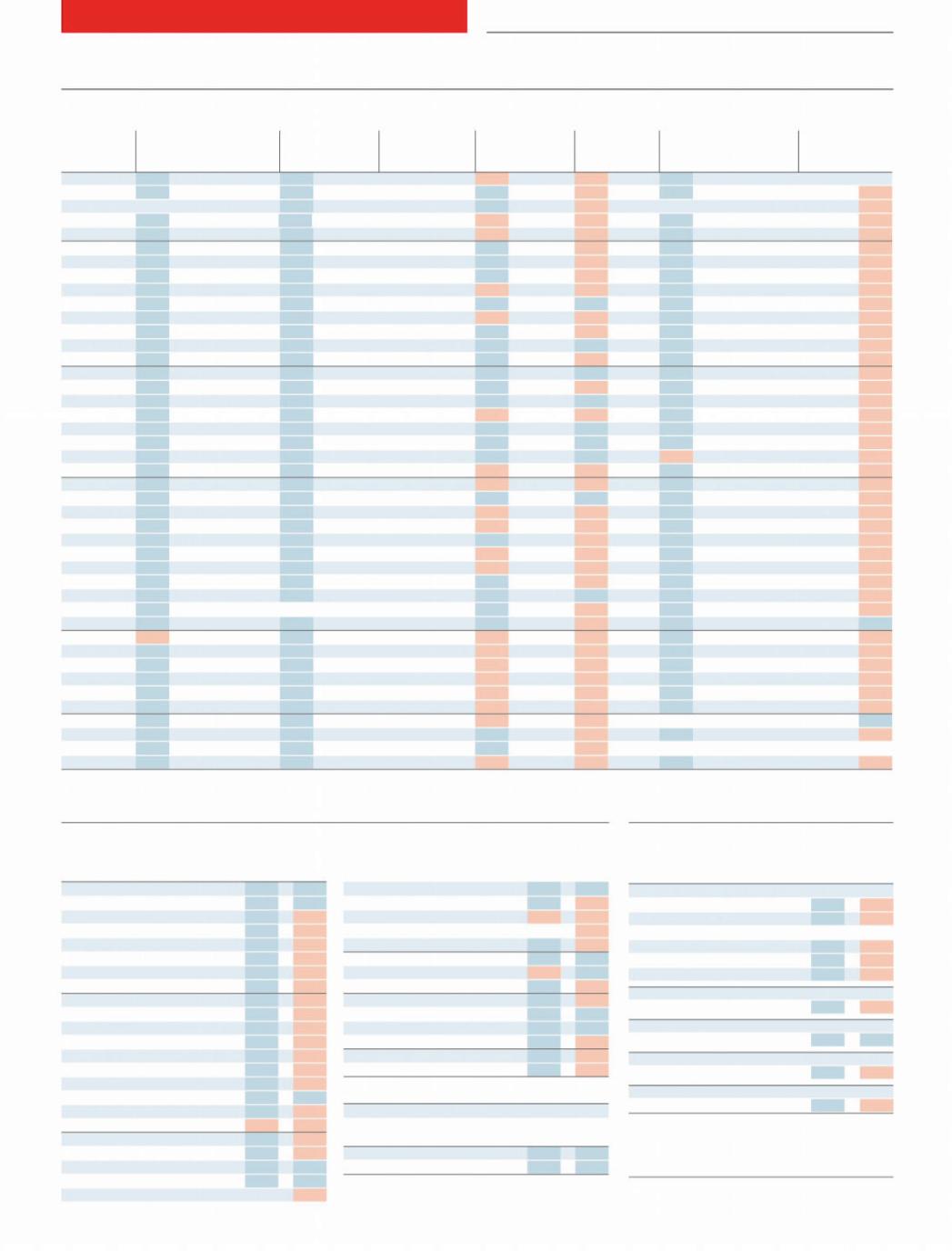
РЕЛИЗ ПОДГОТОВИЛА ГРУППА "What's News" VK.COM/WSNWS
vk.com/id446425943 |
|
|
nan indic ia lc at so r |
|
|
|
|
|
|
|||||||
76 Econ o mi c & fi |
|
|
The Economist February 9th 2019 |
|||||||||||||
Economic data |
|
|
|
|
|
|
|
|
|
|
|
|
|
|
|
|
|
Gross domestic product |
Consumer prices |
Unemployment |
Current-account |
Budget |
Interest rates |
|
Currency units |
||||||||
|
% change on year ago |
|
% change on year ago |
rate |
|
balance |
balance |
10-yr gov't bonds |
change on |
per $ |
% change |
|||||
|
latest |
quarter* |
2018† |
latest |
|
2018† |
% |
|
% of GDP, 2018† |
% of GDP, 2018† |
latest,% |
year ago, bp |
Feb 6th |
on year ago |
||
United States |
3.0 |
Q3 |
3.4 |
2.9 |
1.9 |
Dec |
2.4 |
4.0 |
Jan |
-2.5 |
-3.8 |
2.7 |
|
-11.0 |
- |
|
China |
6.4 |
Q4 |
6.1 |
6.6 |
1.9 |
Dec |
1.9 |
3.8 |
Q4§ |
0.3 |
-3.9 |
2.9 |
§§ |
-93.0 |
6.74 |
-6.8 |
Japan |
nil |
Q3 |
-2.5 |
1.0 |
0.3 |
Dec |
1.0 |
2.4 |
Dec |
3.7 |
-3.5 |
nil |
|
-9.0 |
110 |
-0.5 |
Britain |
1.5 |
Q3 |
2.5 |
1.3 |
2.1 |
Dec |
2.3 |
4.0 |
Oct†† |
-3.9 |
-1.3 |
1.3 |
|
-32.0 |
0.77 |
-6.5 |
Canada |
2.1 |
Q3 |
2.0 |
2.1 |
2.0 |
Dec |
2.3 |
5.6 |
Dec |
-2.8 |
-2.2 |
1.9 |
|
-44.0 |
1.32 |
-5.3 |
Euro area |
1.2 |
Q4 |
0.9 |
1.9 |
1.6 |
Dec |
1.7 |
7.9 |
Dec |
3.5 |
-0.7 |
0.2 |
|
-53.0 |
0.88 |
-8.0 |
Austria |
2.2 |
Q3 |
-1.9 |
2.6 |
1.9 |
Dec |
2.1 |
4.7 |
Dec |
2.1 |
-0.3 |
0.4 |
|
-42.0 |
0.88 |
-8.0 |
Belgium |
1.2 |
Q4 |
1.2 |
1.4 |
2.0 |
Jan |
2.3 |
5.5 |
Dec |
0.5 |
-1.0 |
0.7 |
|
-23.0 |
0.88 |
-8.0 |
France |
0.9 |
Q4 |
1.1 |
1.5 |
1.2 |
Jan |
2.1 |
9.1 |
Dec |
-0.8 |
-2.6 |
0.6 |
|
-44.0 |
0.88 |
-8.0 |
Germany |
1.2 |
Q3 |
-0.8 |
1.4 |
1.7 |
Dec |
1.9 |
3.3 |
Dec‡ |
7.6 |
1.4 |
0.2 |
|
-53.0 |
0.88 |
-8.0 |
Greece |
2.4 |
Q3 |
4.3 |
2.1 |
0.6 |
Dec |
0.6 |
18.6 |
Oct |
-1.9 |
-0.1 |
3.9 |
|
17.0 |
0.88 |
-8.0 |
Italy |
0.1 |
Q4 |
-0.9 |
0.9 |
0.9 |
Jan |
1.2 |
10.3 |
Dec |
2.6 |
-1.9 |
2.9 |
|
88.0 |
0.88 |
-8.0 |
Netherlands |
2.4 |
Q3 |
0.6 |
2.5 |
2.0 |
Dec |
1.6 |
4.4 |
Dec |
10.3 |
1.2 |
0.3 |
|
-50.0 |
0.88 |
-8.0 |
Spain |
2.4 |
Q4 |
2.8 |
2.5 |
1.0 |
Jan |
1.7 |
14.3 |
Dec |
1.0 |
-2.7 |
1.3 |
|
-20.0 |
0.88 |
-8.0 |
Czech Republic |
2.4 |
Q3 |
2.4 |
2.8 |
2.0 |
Dec |
2.2 |
2.2 |
Dec‡ |
0.8 |
1.1 |
1.7 |
|
-4.0 |
22.7 |
-9.8 |
Denmark |
2.4 |
Q3 |
2.9 |
0.9 |
0.8 |
Dec |
0.8 |
3.8 |
Dec |
6.1 |
-0.4 |
0.3 |
|
-44.0 |
6.56 |
-8.1 |
Norway |
1.1 |
Q3 |
2.3 |
1.7 |
3.5 |
Dec |
2.7 |
3.8 |
Nov‡‡ |
8.0 |
7.0 |
1.8 |
|
-19.0 |
8.52 |
-8.0 |
Poland |
5.7 |
Q3 |
7.0 |
5.1 |
1.1 |
Dec |
1.7 |
5.8 |
Dec§ |
-0.5 |
-0.9 |
2.7 |
|
-78.0 |
3.77 |
-10.3 |
Russia |
1.5 |
Q3 |
na |
1.7 |
5.0 |
Jan |
2.9 |
4.8 |
Dec§ |
6.6 |
2.7 |
8.2 |
|
98.0 |
65.7 |
-13.1 |
Sweden |
1.7 |
Q3 |
-0.9 |
2.3 |
2.0 |
Dec |
2.0 |
6.0 |
Dec§ |
2.2 |
0.9 |
0.4 |
|
-56.0 |
9.17 |
-13.1 |
Switzerland |
2.4 |
Q3 |
-0.9 |
2.6 |
0.7 |
Dec |
0.9 |
2.4 |
Dec |
9.6 |
0.9 |
-0.2 |
|
-36.0 |
1.00 |
-6.0 |
Turkey |
1.6 |
Q3 |
na |
3.1 |
20.4 |
Jan |
16.4 |
11.6 |
Oct§ |
-4.5 |
-1.9 |
14.5 |
|
262 |
5.22 |
-27.6 |
Australia |
2.8 |
Q3 |
1.0 |
3.0 |
1.8 |
Q4 |
2.0 |
5.0 |
Dec |
-2.4 |
-0.6 |
2.2 |
|
-64.0 |
1.40 |
-9.3 |
Hong Kong |
2.9 |
Q3 |
0.3 |
3.4 |
2.6 |
Dec |
2.4 |
2.8 |
Dec‡‡ |
3.0 |
2.0 |
1.8 |
|
-19.0 |
7.85 |
-0.4 |
India |
7.1 |
Q3 |
3.3 |
7.3 |
2.2 |
Dec |
4.0 |
7.1 |
Jan |
-2.7 |
-3.6 |
7.6 |
|
nil |
71.6 |
-10.3 |
Indonesia |
5.2 |
Q4 |
na |
5.2 |
2.8 |
Jan |
3.2 |
5.3 |
Q3§ |
-2.8 |
-2.6 |
7.7 |
|
135 |
13,920 |
-2.6 |
Malaysia |
4.4 |
Q3 |
na |
4.7 |
0.2 |
Dec |
1.0 |
3.3 |
Nov§ |
2.2 |
-3.7 |
4.1 |
|
15.0 |
4.09 |
-4.2 |
Pakistan |
5.4 |
2018** |
na |
5.4 |
7.2 |
Jan |
5.1 |
5.8 |
2018 |
-5.3 |
-5.1 |
13.2 |
††† |
474 |
138 |
-20.0 |
Philippines |
6.1 |
Q4 |
6.6 |
6.2 |
4.4 |
Jan |
5.3 |
5.1 |
Q4§ |
-2.8 |
-2.8 |
6.1 |
|
-12.0 |
52.3 |
-1.5 |
Singapore |
2.2 |
Q4 |
1.6 |
3.2 |
0.5 |
Dec |
0.4 |
2.2 |
Q4 |
17.9 |
-0.5 |
2.2 |
|
-12.0 |
1.35 |
-2.2 |
South Korea |
3.2 |
Q4 |
3.9 |
2.7 |
0.8 |
Jan |
1.5 |
3.4 |
Dec§ |
5.1 |
0.3 |
2.0 |
|
-77.0 |
1,119 |
-2.4 |
Taiwan |
1.8 |
Q4 |
1.6 |
2.6 |
nil |
Dec |
1.4 |
3.7 |
Dec |
12.9 |
-0.7 |
0.9 |
|
-19.0 |
30.7 |
-4.4 |
Thailand |
3.3 |
Q3 |
-0.1 |
4.1 |
0.3 |
Jan |
1.1 |
0.9 |
Dec§ |
6.9 |
-3.0 |
2.2 |
|
-23.0 |
31.2 |
1.0 |
Argentina |
-3.5 |
Q3 |
-2.7 |
-2.0 |
47.1 |
Dec |
34.3 |
9.0 |
Q3§ |
-6.0 |
-5.5 |
11.3 |
|
562 |
37.4 |
-47.4 |
Brazil |
1.3 |
Q3 |
3.1 |
1.2 |
3.7 |
Dec |
3.7 |
11.6 |
Dec§ |
-0.8 |
-7.1 |
7.0 |
|
-171 |
3.70 |
-11.9 |
Chile |
2.8 |
Q3 |
1.1 |
4.0 |
2.6 |
Dec |
2.4 |
6.7 |
Dec§‡‡ |
-2.5 |
-2.0 |
4.2 |
|
-41.0 |
654 |
-8.2 |
Colombia |
2.6 |
Q3 |
0.9 |
2.6 |
3.1 |
Jan |
3.2 |
9.7 |
Dec§ |
-3.2 |
-2.4 |
6.6 |
|
11.0 |
3,103 |
-8.5 |
Mexico |
1.8 |
Q4 |
1.2 |
2.1 |
4.8 |
Dec |
4.9 |
3.6 |
Dec |
-1.7 |
-2.5 |
8.4 |
|
80.0 |
19.1 |
-1.8 |
Peru |
2.3 |
Q3 |
-8.3 |
3.7 |
2.1 |
Jan |
1.3 |
5.7 |
Dec§ |
-2.2 |
-2.4 |
5.6 |
|
64.0 |
3.33 |
-2.4 |
Egypt |
5.3 |
Q3 |
na |
5.3 |
11.9 |
Dec |
14.4 |
10.0 |
Q3§ |
-2.2 |
-9.5 |
na |
|
nil |
17.6 |
0.3 |
Israel |
2.9 |
Q3 |
2.3 |
3.2 |
0.8 |
Dec |
0.8 |
4.3 |
Dec |
1.7 |
-3.0 |
2.1 |
|
25.0 |
3.62 |
-3.9 |
Saudi Arabia |
2.2 |
2018 |
na |
1.5 |
2.2 |
Dec |
2.5 |
6.0 |
Q3 |
6.1 |
-5.3 |
na |
|
nil |
3.75 |
nil |
South Africa |
1.1 |
Q3 |
2.2 |
0.8 |
4.5 |
Dec |
4.6 |
27.5 |
Q3§ |
-3.1 |
-3.9 |
8.7 |
|
18.0 |
13.5 |
-10.7 |
Source: Haver Analytics. *% change on previous quarter, annual rate. †The Economist Intelligence Unit estimate/forecast. §Not seasonally adjusted. ‡New series. **Year ending June. ††Latest 3 months. ‡‡3-month moving average. §§5-year yield. †††Dollar-denominated bonds.
Markets
|
|
% change on: |
|
In local currency |
Index |
one |
Dec 29th |
Feb 6th |
week |
2017 |
|
United States S&P 500 |
2,731.6 |
1.9 |
2.2 |
United States NAScomp |
7,375.3 |
2.7 |
6.8 |
China Shanghai Comp |
2,618.2 |
1.7 |
-20.8 |
China Shenzhen Comp |
1,310.0 |
2.0 |
-31.0 |
Japan Nikkei 225 |
20,874.1 |
1.5 |
-8.3 |
Japan Topix |
1,582.1 |
2.0 |
-13.0 |
Britain FTSE 100 |
7,173.1 |
3.3 |
-6.7 |
Canada S&P TSX |
15,712.3 |
1.5 |
-3.1 |
Euro area EURO STOXX 50 |
3,212.8 |
1.6 |
-8.3 |
France CAC 40 |
5,079.1 |
2.1 |
-4.4 |
Germany DAX* |
11,324.7 |
1.3 |
-12.3 |
Italy FTSE/MIB |
19,996.5 |
1.1 |
-8.5 |
Netherlands AEX |
536.6 |
3.5 |
-1.5 |
Spain IBEX 35 |
9,100.9 |
0.3 |
-9.4 |
Poland WIG |
61,319.0 |
2.5 |
-3.8 |
Russia RTS, $ terms |
1,215.8 |
1.4 |
5.3 |
Switzerland SMI |
9,143.0 |
2.0 |
-2.5 |
Turkey BIST |
102,584.3 |
-1.5 |
-11.1 |
Australia All Ord. |
6,091.8 |
2.4 |
-1.2 |
Hong Kong Hang Seng |
27,990.2 |
1.3 |
-6.4 |
India BSE |
36,975.2 |
3.9 |
8.6 |
Indonesia IDX |
6,547.9 |
1.3 |
3.0 |
Malaysia KLSE |
1,683.6 |
nil |
-6.3 |
|
|
% change on: |
|
|
index |
one |
Dec 29th |
|
Feb 6th |
week |
2017 |
Pakistan KSE |
41,505.7 |
2.2 |
2.6 |
Singapore STI |
3,184.6 |
0.3 |
-6.4 |
South Korea KOSPI |
2,203.5 |
-0.1 |
-10.7 |
Taiwan TWI |
9,932.3 |
nil |
-6.7 |
Thailand SET |
1,658.7 |
1.6 |
-5.4 |
Argentina MERV |
36,731.7 |
1.9 |
22.2 |
Brazil BVSP |
94,635.6 |
-2.4 |
23.9 |
Mexico IPC |
43,855.8 |
0.5 |
-11.1 |
Egypt EGX 30 |
14,766.6 |
4.8 |
-1.7 |
Israel TA-125 |
1,414.9 |
0.8 |
3.7 |
Saudi Arabia Tadawul |
8,633.3 |
0.6 |
19.5 |
South Africa JSE AS |
54,574.3 |
0.8 |
-8.3 |
World, dev'd MSCI |
2,047.1 |
1.8 |
-2.7 |
Emerging markets MSCI |
1,048.5 |
1.1 |
-9.5 |
US corporate bonds, spread over Treasuries |
|
|
|
|
|
|
Dec 29th |
Basis points |
|
latest |
2017 |
Investment grade |
|
174 |
137 |
High-yield |
|
484 |
404 |
Sources: Datastream from Refinitiv; Standard & Poor's Global Fixed Income Research. *Total return index.
Commodities
The Economist |
commodity-price index |
% change on |
|||
|
|
|
|
||
2005=100 |
Jan 29th |
Feb 5th* |
month |
year |
|
Dollar Index |
|
|
|
|
|
All Items |
138.4 |
141.0 |
|
2.6 |
-7.3 |
Food |
146.0 |
147.8 |
|
0.3 |
-2.9 |
Industrials |
|
|
|
|
|
All |
130.5 |
133.9 |
|
5.2 |
-11.8 |
Non-food agriculturals 123.3 |
125.6 |
|
4.5 |
-8.4 |
|
Metals |
133.5 |
137.4 |
|
5.5 |
-13.0 |
Sterling Index |
|
|
|
|
|
All items |
191.5 |
198.1 |
|
0.9 |
-0.3 |
Euro Index |
|
|
|
|
|
All items |
150.8 |
153.6 |
|
2.8 |
0.3 |
Gold |
|
|
|
|
|
$ per oz |
1,310.7 |
1,313.5 |
|
2.3 |
-1.0 |
West Texas Intermediate |
|
|
|
|
|
$ per barrel |
53.3 |
53.7 |
|
7.8 |
-15.3 |
Sources: CME Group; Cotlook; Darmenn & Curl; Datastream from Refinitiv; FT; ICCO; ICO; ISO; Live Rice Index; LME; NZ Wool Services; Thompson Lloyd & Ewart; Urner Barry; WSJ. *Provisional.
For more countries and additional data, visit
Economi st.co m/indi atc ors
http://new.guap.ru/i04/contacts
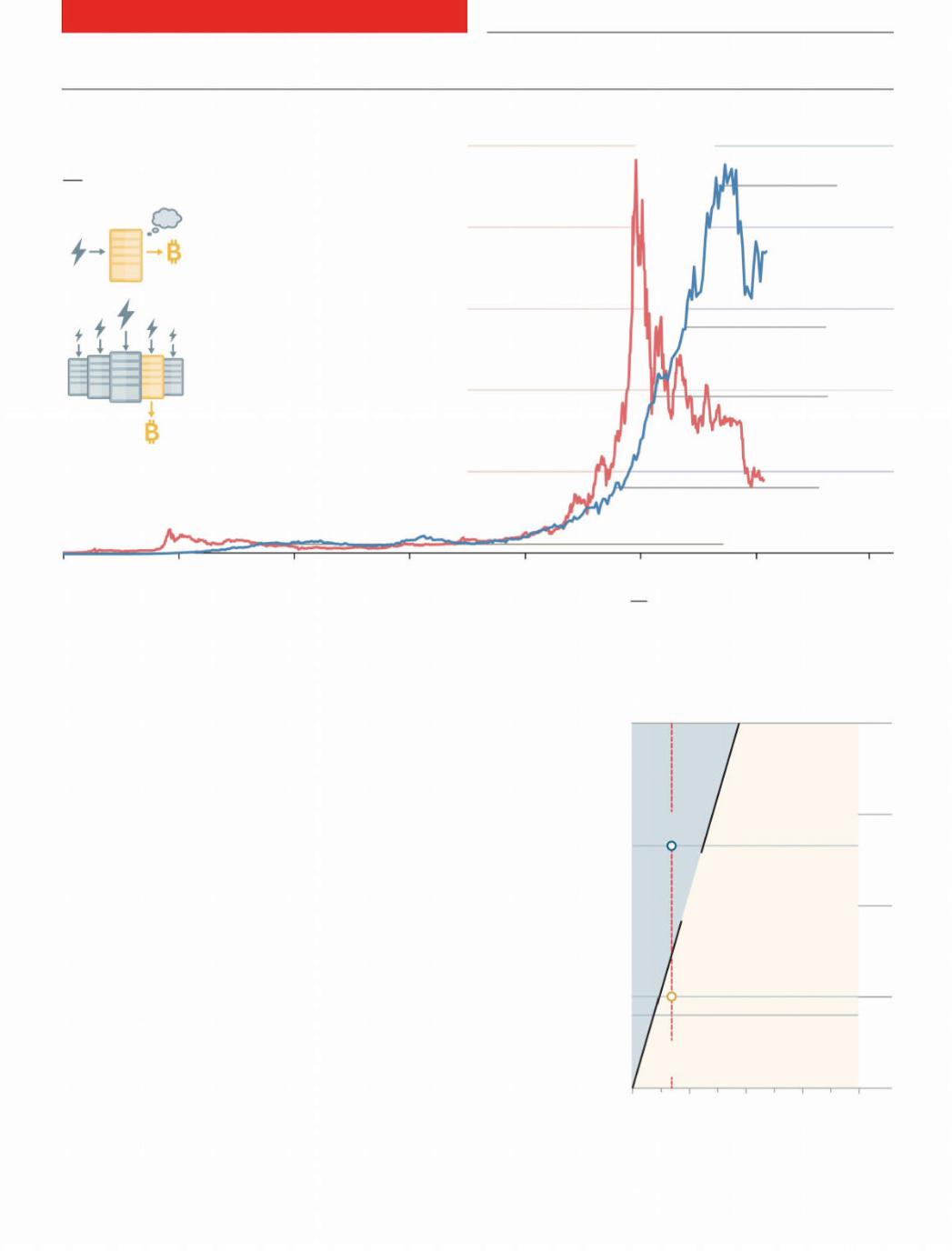
РЕЛИЗ ПОДГОТОВИЛА ГРУППА "What's News" VK.COM/WSNWS
vk.com/id446425943
G raphi dce tail
Bitcoin’s price has fallen to 2017 levels, but its energy use is five times higher
Why bitcoin uses lots of electricity
A bitcoin is created, or “mined”, by having computers solve a maths problem. The first miner to find the answer is rewarded with bitcoin
As more miners enter the market, the problems get harder, but the reward remains the same. More difficult problems require more energy
Bitcoin price
$
20,000
16,000
12,000
8,000
|
|
|
4,000 |
During bitcoin’s first |
|
In the following years, prices |
|
price surge in 2013-14, |
|
and power consumption |
|
energy use stayed low |
|
rose in tandem |
|
2013 |
2014 |
2015 |
2016 |
The Economist February 9th 2019 77
Power consumption of bitcoin mining
Terawatt-hours per year, estimated
50
|
Energy use |
|
|
|
kept rising |
|
|
|
for ten |
Hong |
|
|
months |
|
|
|
Kong |
|
|
|
after the |
|
|
|
|
|
|
|
bubble |
|
40 |
|
burst |
|
|
|
|
|
|
Price |
|
Energy use |
|
|
|
|
30 |
|
|
London |
|
|
|
↑ |
|
|
|
Equivalent |
|
|
|
power consumption* |
|
|
|
↓ |
20 |
|
|
Iceland |
|
10
Alphabet
(Google)
|
|
CERN (Large Hadron Collider) |
0 |
2017 |
2018 |
2019 |
|
Bitcoin
Mining their own business
Will bitcoin’s price crash cut into the currency’s voracious energy use?
When gold prices fall, precious-met- als firms suspend exploration and close mines with high operating costs. In theory, bitcoin miners should act similarly. Although bitcoin is a virtual currency, it is expensive to obtain. To “mine” new bit- coins—ones that do not already belong to someone else—users hook up their computers to a network, and instruct them to keep guessing the solution to a maths pro-
blem until they get it right.
The di culty of these tasks protects the integrity of the system: anyone seeking to rewrite bitcoin’s transaction ledger would face the monumental burden of repeating them. However, such security is not cheap. Finding the answers requires lots of computing power, and thus lots of energy. At their peak in late 2018, bitcoin miners were thought to be using electricity at an annualised pace of at least 45 terawatt-hours per year, the average rate of all of Hong Kong.
As wasteful as it may seem, miners were rewarded handsomely for responding to a surge in demand for bitcoin. In 2017 the currency’s price rose from $1,000 to nearly $20,000, yielding profits for speculators
and miners alike. But in order to limit the supply of coins, the system adjusts the difficulty of the maths problems in response to computers entering or leaving its network. As more computing power becomes available, the solutions become harder to guess, raising the amount of electricity needed to mine each coin. Moreover, during the past year the bitcoin bubble has burst. Its price is now $3,400, down more than 80% from the peak.
With higher costs and lower proceeds, miners should have stampeded out of the market. But in fact, relatively few have departed. Bitcoin’s daily energy consumption today is still 16 times its level of two years ago, and just 30% below its record high.
At the current price and bitcoin network size, mining returns are sensitive to energy costs. Even within one country, industrial electricity prices can vary widely. In Washington state, a part of America rich in hydropower, each bitcoin fetches 45% more than the market price of the energy needed to mine it on an average day. But in nearby California, electricity costs 2.5 times more. Bitcoin would need to rebound to $6,200 to make full-time mining there profitable.
As the roller-coaster ride of bitcoin’s price makes clear, the currency’s value is impossible to predict. Miners have mostly weathered the crash so far. But a further decline of 50% or so would start forcing them out of business. The shake-out would only abate once the maths problems get easy enough that less power is needed, enabling the remaining miners to scrape by. 7
Mining returns depend on the prices of bitcoin and energy
At February 5th 2019
Approximate price of electricity
US cents per kWh 20
Losing money
|
|
|
Making |
|
|
|
money |
$2,810 loss |
15 |
||
|
|||
per bitcoin |
California |
||
|
|
|
|
BREAK |
- |
EVEN |
|
|
10 |
||
|
|
||
|
|
|
|
|
$1,060 profit |
|
|
|
|
|
per bitcoin |
Washington state, US |
5 |
||
|
|
|
|
China† |
|
|
Current |
|
|
|
|
|
bitcoin |
|
|
|
|
|
price |
|
|
|
0 |
|
|
|
|
|
|
0 |
5,000 |
10,000 |
15,000 |
20,000 |
|
Bitcoin price, $
*2018 or latest available †Price to bitcoin miners in Sichuan and Inner Mongolia
Sources: Alex de Vries; blockchain.com;
EIA; press reports; national statistics
http://new.guap.ru/i04/contacts
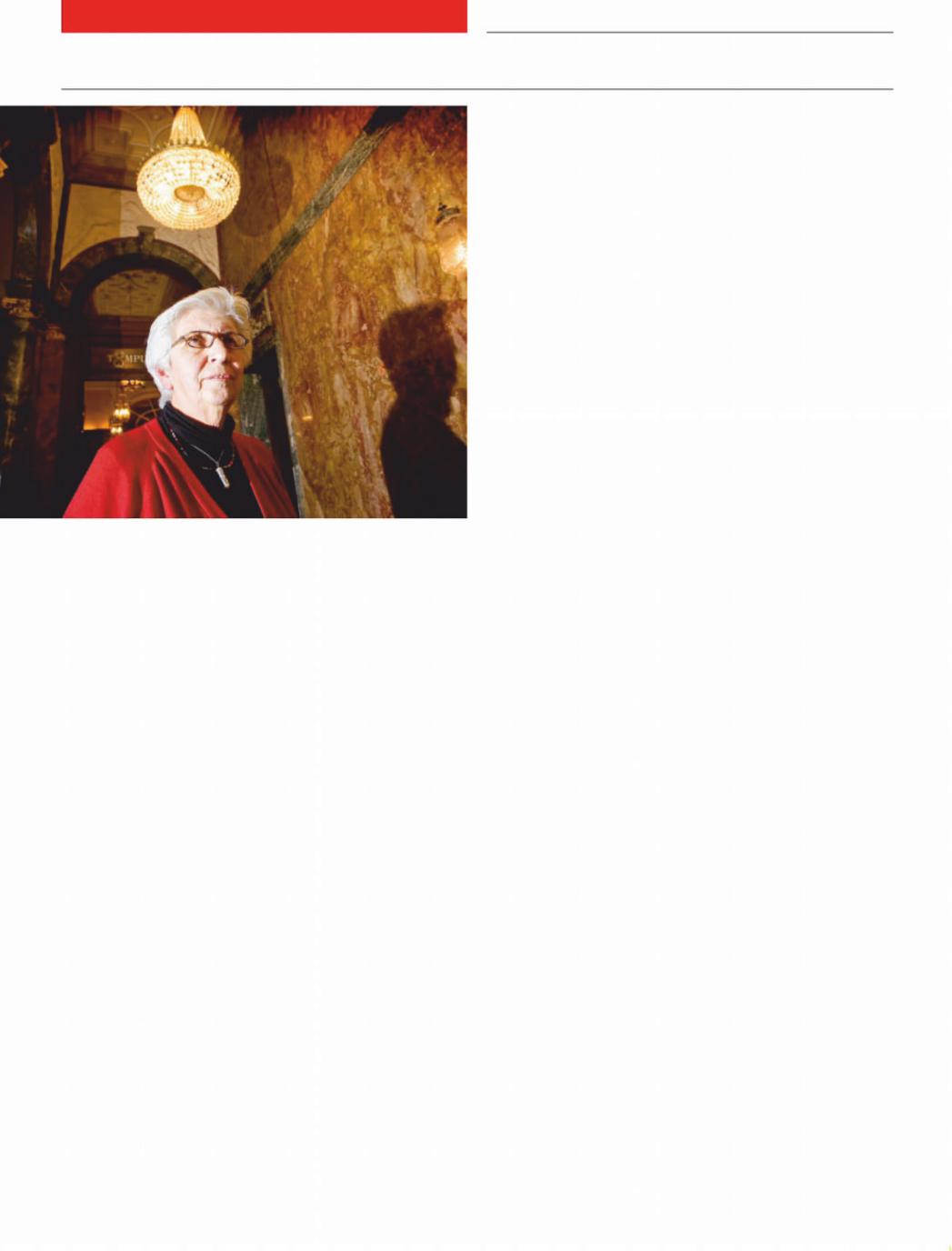
РЕЛИЗ ПОДГОТОВИЛА ГРУППА "What's News" VK.COM/WSNWS
vk.com/id446425943 |
|
|
78 Obituary Lamia al-Gailani |
The Economist February 9th 2019 |
|
|
contrast with her favourite large piece in the museum, the wonder- |
|
|
ful copper Bassetki statue of a seated human figure, these little |
|
|
seals had no obvious cachet. But almost every one had gone. |
|
|
Despair came first; then fury. Iraqi archaeologists had warned |
|
|
the Americans beforehand, even going to Washington to beg them |
|
|
to protect the building. She lent weight to the delegation as some- |
|
|
one who moved easily between Iraq and the West, living in London |
|
|
and returning to the museum, for months each year, to work on the |
|
|
seals. The Bush administration did nothing. A tank at last appeared |
|
|
at the museum entrance two months later, almost useless. “Stu |
|
|
happens,” said America’s secretary of defence. |
|
|
Yes, so it did, no thanks to him, and had been happening in her |
|
|
country for centuries before. In Baghdad her family, which was dis- |
|
|
tinguished, had charge of the shrine of Abdul Qadir al-Gilani, a Sufi |
|
|
mystic of the 12th century; in the library was a battered small Ko- |
|
|
ran, the sole survivor of the sack of the ruling Abbasids’ libraries by |
|
|
Mongol troops in 1258. In this “grandmother of all nations”, as she |
|
|
thought of Mesopotamia, every mound covered a lost city; if you |
|
|
only dug a hole, as any robber could, you found something. In the |
|
|
early 20th century, just before the borders of modern Iraq were |
|
|
drawn, Western archaeologists more or less took what they want- |
|
|
ed. That plunder had been stopped by one intrepid Englishwoman, |
|
|
Gertrude Bell, who was her heroine for all kinds of reasons. Of |
|
|
course, she was a colonialist; but she was still devoted to the coun- |
|
|
try, founded the National Museum and set rules for the export of |
|
|
antiquities, a fearless woman in a man’s world. |
|
In Mesopotamia’s halls |
All that was worth imitating, especially the last part. Her family, |
|
despite its ancestry, did not care much for history or for girls know- |
||
|
ing it. They had merely wanted her to be nice, speak English and get |
|
|
married, but she defied them to study first law, then archaeology |
|
|
(and then get married). From her first days at the museum in 1961, |
|
|
when it was still in central Baghdad, she strove to involve women |
|
Lamia al-Gailani-Werr, guardian of the smallest antiquities |
more, watching as housewives on their way to the main bazaar |
|
stopped to examine the Babylonian lions and Assyrian winged |
||
of Iraq, died on January 18th, aged 80 |
||
bulls at the entrance gate. She lobbied tirelessly to go on digs, |
||
|
||
n that dreadful day in April 2003, some of the sta of the Na-which well-behaved young women did not do, and was at last al- |
||
Otional Museum of Iraq met Lamia al-Gailani in the lobby. They |
lowed to work on a small site, Tell al-Dhibai, just outside Baghdad. |
|
were in such shock that they could not finish a sentence. Days after |
Small but very important, she always insisted, since in the 1930s it |
|
the American invasion, looters had got in and raided the place. |
had produced a cuneiform tablet that proved Pythagoras’s theo- |
|
They had rampaged unhindered for two days. Objects too heavy to |
rem, 2,000 years before he had thought of it. Iraqi genius! |
|
carry had been smashed; about 15,000 pieces had been stolen. |
Yet there was no getting away from violence in her part of the |
|
Even the ledgers and index cards on which the collection was cata- |
world. She had only to look at the seals. Men fought with each oth- |
|
logued—the record of the civilisations of Babylon, Assyria, Ur, |
er, and with lions which they threw in triumph over their heads. |
|
Nineveh and Sumer, of mankind’s first cities, empires and writ- |
Bull-men struggled with human-headed bulls. The goddess Ishtar |
|
ings—lay torn and scattered everywhere. Among them the deputy |
carried a bristling quiver of arrows, a club and a scimitar. In mod- |
|
director sat crying, his face buried in his hands. |
ern wars, the very smallness of the seals made them ideal booty. |
|
She did not have time for that. Instead she rushed to check her |
They could be fenced with almost no one noticing—unlike the life- |
|
special treasures, 7,000 cylinder seals from ancient Mesopotamia, |
size terracotta lions of Tell Harmal or the Greek-Roman-Persian |
|
stored in a corner of the basement. They were so small: just tiny |
statues of Harat, world-famous treasures of the museum, which |
|
plugs or cylinders of limestone, marble or hematite, used to seal |
had their heads destroyed with sledgehammers. |
|
loans and contracts. It was only when they were rolled across wet |
She especially mourned the Harat figures. Their oddness was |
|
clay—as in Babylon or Nineveh, and when she impressed them for |
not only fun—togas worn with curled Eastern beards, Greek ring- |
|
displays—that the carvings and inscriptions in intaglio revealed, |
lets with Persian trousers—but also a sign that di erent cultures |
|
sharp as the original cutting, the world from 3,000 years before. |
could blend, not fight. Yet even as the National Museum painfully |
|
King-gods sat on panelled thrones covered with fleeces, flanked by |
got itself back together, eventually re-opening in 2015 with Ameri- |
|
nude attendants with three sidelocks. Men rowed boats on a river, |
cans now helping to recover objects and train new curators, along- |
|
while women processed with baskets on their heads. Shamash, |
side her, the bigots of Islamic State were destroying “unIslamic” |
|
god of the sun, stood with one foot on a mountain and a saw in his |
sites all over Iraq, erasing the history she was trying to preserve. |
|
hand. Goddesses swayed in beads and flouncy dresses. A man and |
Joy came when two American military police turned up to hand |
|
a woman drank beer through straws, with filters at the ends to |
her the Bassetki statue, crusted with smelly gunk from the cesspit |
|
strain out worms. Gazelles lifted their long horns, date palms held |
in which it had been hidden. Satisfaction came from choosing cyl- |
|
out their branches, and crescent moons rose in the sky. |
inder seals for a new museum, built with British help, in Basra. But |
|
From looking so long at these seals, the subject of her thesis at |
she often spared a wistful thought for the rest of the collection. |
|
University College London and her love ever since, she could tell |
Only 600 seals had found their way back to the museum. The oth- |
|
the styles not only of di erent cities but of di erent workshops, |
ers had not shown up on the market. They must be sitting some- |
|
from the carving of pleats or hair. From their impression, firm or |
where, probably out of the way of anyone who knew much about |
|
vague, on ancient tablets, she knew how they had been handled. In |
them. And each little cylinder encompassed a world. 7 |
|
http://new.guap.ru/i04/contacts
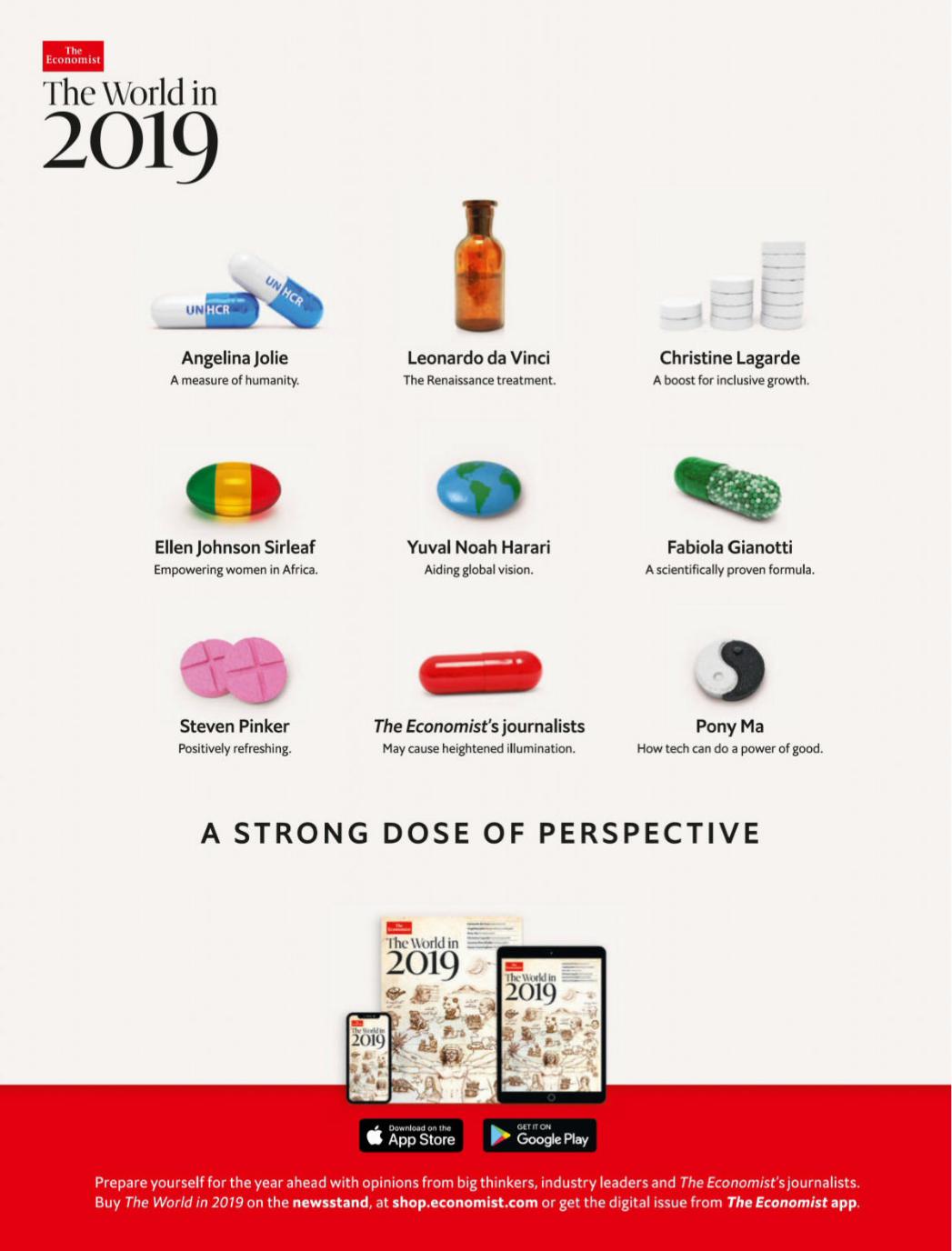
РЕЛИЗ ПОДГОТОВИЛА ГРУППА "What's News" VK.COM/WSNWS
vk.com/id446425943
http://new.guap.ru/i04/contacts

vk.com/id446425943КОРПОРАТИВНЫЙ СЕКТОР
ПРОГНОЗ
МЕТАЛЛУРГИЯ
17 декабря 2018
Торговые войны и природные катаклизмы способствовали поддержанию высоких цен на сырье и стальной прокат...…..3
Заморозка торговых конфликтов вернет внимание рынка к вопросам стоимости сырья
и загрузки мощностей ....….........3
Российский рынок стали: потребление будет расти, а цены станут снижаться…………5
План Белоусова не приведет к инвестиционному буму
в российской металлургии….…6
Прогноз подготовлен в соответствии с Общими
принципами прогнозирования социально-экономических показателей АКРА.
Максим Худалов
Директор, группа корпоративных рейтингов
+7 (495) 139-0496 maxim.khudalov@acra-ratings.ru
Наталья Порохова
Директор, руководитель группы исследований и прогнозирования
+7 (495) 139-0490 natalia.porokhova@acra-ratings.ru
Контакты для СМИ
Алексей Чурилов
Младший менеджер по внешним коммуникациям
+7 (495) 139-0480, доб. 169 alexey.churilov@acra-ratings.ru
Кому торговая война, а кому прибыль одна: черные металлы сопротивляются падению цен, сохраняя кредитоспособность отрасли
Прогноз развития рынка черных металлов до 2023 года
—В 2018 году торговые войны между США, Китаем и другими
странами — производителями стали удержали цены на стальной прокат и сырье от падения. Тем не менее с 2019-го по 2023-й мы ожидаем снижения цен на указанную продукцию. Искусственный рост цен на стальной прокат в США за счет введенных в этом году пошлин на импорт стали в размере 25% будет сходить на нет: поддержку окажет рост предложения сырья для черной металлургии. К 2023 году АКРА ожидает снижения цен на коксующийся уголь и железорудный концентрат до 140–150
и62 долл./т соответственно (по итогам текущего года — до 194
и68 долл./т). Одновременно с этим с 2019-го по 2023-й продолжится ввод в строй новых сталеплавильных мощностей в Индии и странах Азиатско-Тихоокеанского региона, что приведет к снижению уровня загрузки мировых мощностей до 72% (по итогам текущего года — до 76%). Все это создает предпосылки для падения цен на стальной прокат. К 2023 году горячекатаный плоский прокат на рынке США подешевеет с 810 до 560–580 долл./т.
—Производство стали в РФ превысит пиковый уровень 2014 года и к 2023-му достигнет 75–76 млн т. Рост объемов ипотечного кредитования на фоне повышения его доступности за
счет исторически более низких ставок в сравнении с периодом 2011–2016 годов позволит увеличить объемы ввода в эксплуатацию новых жилых зданий: с 78 млн кв. м в 2017-м до 83–85 млн кв. м к 2023-му.
—Ослабление рубля в 2018 году и ожидаемое внешнеполитическое давление на российскую валюту поддержат экспортеров. К 2023 году экспорт коксующегося угля вырастет до 27–28 млн т (+4 млн т к показателю 2017-го), поставки на внешние рынки железорудных окатышей сохранятся на уровне этого года. К 2023-му экспорт слябов и заготовок увеличится до 18–19 млн т (в 2017-м он составил 16 млн т).
—Рост цен на стальной прокат на внутреннем рынке РФ прекратится. К 2023-му подешевеют горячекатаный плоский прокат (с 36,7 тыс. до 25–26 тыс. руб./т) и сырье для черной металлургии. Тем не менее средняя по отрасли рентабельность по FFO останется на уровне выше 25%, а рентабельность по FCF будет находиться в устойчивой положительной зоне.
—Долговая нагрузка сектора сохранится на низком уровне: план Белоусова не приведет к инвестиционному буму.
Индикативный уровень долговой нагрузки отрасли, рассчитанный на будущий год, останется низким (как и в 2018-м) даже с учетом ожидаемого нами некоторого увеличения капитальных затрат отдельных компаний.
http://new.guap.ru/i04/contacts

|
vk.com/id446425943 |
|
|
|
|
|
|
Кому торговая война, а кому прибыль одна: черные металлы |
|
17 декабря 2018 |
|
|
|
сопротивляются падению цен, сохраняя кредитоспособность отрасли |
|
|
|
|
|
|
|
|
|
|
|
|
|
|
|
|
|
|
|
|
|
|
Таблица 1. Прогноз показателей черной металлургии в РФ и мире |
|
|
|
|
|
Показатели |
|
Ед. изм. |
|
Факт |
|
Оценка |
|
|
Прогноз |
|
|
|
|
|
|
2015 |
2016 |
2017 |
2018 |
2019 |
2020 |
2021 |
2022 |
2023 |
|
|
|
|
|
|
|
|
|
|
|
|
|
|
Производство стали |
|
млн т |
70,9 |
70,4 |
71,3 |
71,9 |
71,9 |
73,6 |
74,6 |
75,6 |
76,6 |
|
|
|
|
|
|
|
|
|
|
|
|
|
|
|
|
|
|
|
|
|
|
|
|
|
|
|
Мощности по выплавке стали |
|
млн т |
86,5 |
87,3 |
87,3 |
88,5 |
88,5 |
88,5 |
88,5 |
88,5 |
88,5 |
|
|
|
|
|
|
|
|
|
|
|
|
|
|
Загрузка мощностей |
% |
82% |
81% |
82% |
81% |
81% |
83% |
84% |
85% |
87% |
|
|
|
|
|
|
|
|
|
|
|
|
|
|
|
Производство чугуна |
|
млн т |
52,5 |
51,8 |
51,6 |
52,7 |
53,9 |
54,1 |
54,1 |
54,1 |
54,1 |
|
|
|
|
|
|
|
|
|
|
|
|
|
|
Производство листового проката |
|
млн т |
28,1 |
27,9 |
28,2 |
28,6 |
29,4 |
29,8 |
30,2 |
30,5 |
30,9 |
|
|
|
|
|
|
|
|
|
|
|
|
|
|
Производство сортового и фасонного |
|
млн т |
22,9 |
22,8 |
24,1 |
23,8 |
24,1 |
25,1 |
25,4 |
25,7 |
26,0 |
|
проката |
|
|
|
|
|
|
|
|
|
|
|
|
|
|
|
|
|
|
|
|
|
|
|
|
|
Производство заготовок и слябов |
|
млн т |
15 |
16 |
15 |
16 |
17 |
17 |
17 |
17 |
18 |
|
на экспорт |
|
|
|
|
|
|
|
|
|
|
|
|
Производство кокса металлургического |
|
млн т |
28,6 |
28,4 |
27,9 |
28,5 |
29,1 |
29,2 |
29,2 |
29,2 |
29,2 |
|
|
|
|
|
|
|
|
|
|
|
|
|
|
Производство железорудного |
|
млн т |
105 |
107 |
106 |
107 |
111 |
113 |
113 |
113 |
113 |
|
концентрата (ЖРК) |
|
|
|
|
|
|
|
|
|
|
|
|
Производство железорудных окатышей |
|
млн т |
41 |
43 |
48 |
53 |
51 |
52 |
52 |
52 |
53 |
|
(ЖРО) |
|
|
|
|
|
|
|
|
|
|
|
|
|
|
|
|
|
|
|
|
|
|
|
|
|
Добыча аглоруды |
|
млн т |
4 |
4 |
4 |
5 |
5 |
5 |
5 |
5 |
5 |
|
|
|
|
|
|
|
|
|
|
|
|
|
|
Производство горячебрикетированного |
|
млн т |
5 |
6 |
7 |
8 |
8 |
9 |
9 |
9 |
9 |
|
|
|
|
|
|
|
|
|
|
|
|
|
|
железа (ГБЖ) и металлизированных |
|
|
|
|
|
|
|
|
|
|
|
|
окатышей |
|
|
|
|
|
|
|
|
|
|
|
|
Экспорт ЖРК |
|
млн т |
12 |
12 |
7 |
6 |
6 |
6 |
6 |
6 |
7 |
|
|
|
|
|
|
|
|
|
|
|
|
|
|
Экспорт ЖРО |
|
млн т |
6 |
9 |
12 |
11 |
11 |
11 |
12 |
12 |
12 |
|
|
|
|
|
|
|
|
|
|
|
|
|
|
Добыча коксующегося угля |
|
млн т |
77 |
80 |
82 |
82 |
85 |
86 |
87 |
89 |
90 |
|
Экспорт коксующегося угля |
|
млн т |
18 |
22 |
23 |
24 |
24 |
25 |
26 |
27 |
28 |
|
|
|
|
|
|
|
|
|
|
|
|
|
|
Добыча энергетического угля |
|
млн т |
296 |
305 |
326 |
343 |
346 |
348 |
351 |
355 |
359 |
|
|
|
|
|
|
|
|
|
|
|
|
|
|
Экспорт энергетического угля |
|
млн т |
126 |
139 |
167 |
170 |
171 |
172 |
173 |
175 |
177 |
|
|
|
|
|
|
|
|
|
|
|
|
|
|
Горячекатаный лист, РФ |
|
руб./т |
24 414 |
29 309 |
33 174 |
36 709 |
32 436 |
28 198 |
26 829 |
25 526 |
25 117 |
|
(EXW Москва) |
|
без НДС |
|
|
|
|
|
|
|
|
|
|
|
|
|
|
|
|
|
|
|
|
|
|
|
|
|
|
|
|
|
|
|
|
|
|
|
|
Арматура, РФ (EXW ЮФО) |
|
руб./т |
22 152 |
25 360 |
26 017 |
31 606 |
27 927 |
24 278 |
23 099 |
21 977 |
21 625 |
|
|
без НДС |
|
|
|
|
|
|
|
|
|
|
|
|
|
|
|
|
|
|
|
|
|
|
|
|
Цены на горячекатаный лист в США |
|
долл./т |
462 |
501 |
578 |
822 |
715 |
663 |
619 |
576 |
562 |
|
|
|
|
|
|
|
|
|
|
|
|
|
|
|
|
|
|
|
|
|
|
|
|
|
|
|
Чугун на рынке РФ |
|
руб./т |
14 042 |
14 663 |
18 370 |
20 800 |
18 379 |
15 978 |
15 202 |
14 464 |
14 232 |
|
|
без НДС |
|
|
|
|
|
|
|
|
|
|
|
|
|
|
|
|
|
|
|
|
|
|
|
|
|
|
|
|
|
|
|
|
|
|
|
|
|
Экспортная цена на чугун, |
|
долл./т |
244 |
256 |
362 |
388 |
337 |
313 |
292 |
272 |
265 |
|
FOB Черное море |
|
|
|
|
|
|
|
|
|
|
|
|
Лом, РФ (СРТ ЦФО) |
|
руб./т |
10 910 |
11 704 |
14 749 |
17 688 |
15 629 |
13 587 |
12 927 |
12 299 |
12 102 |
|
|
|
|
|
|
|
|
|
|
|
|
|
|
Концентрат железной руды, РФ (FCA) |
|
руб./т |
2 048 |
2 175 |
3 209 |
3 646 |
3 608 |
3 425 |
3 278 |
3 185 |
3 261 |
|
|
без НДС |
|
|
|
|
|
|
|
|
|
|
|
|
|
|
|
|
|
|
|
|
|
|
|
|
|
|
|
|
|
|
|
|
|
|
|
|
|
Железорудные окатыши, РФ (FCA) |
|
руб./т |
3 067 |
3 228 |
4 392 |
4 865 |
4 814 |
4 569 |
4 374 |
4 249 |
4 350 |
|
|
без НДС |
|
|
|
|
|
|
|
|
|
|
|
|
|
|
|
|
|
|
|
|
|
|
|
|
Концентрат железной руды, |
|
долл./т |
55 |
57 |
71 |
69 |
67 |
68 |
64 |
61 |
62 |
|
Китай (CIF Циндао) |
|
|
|
|
|
|
|
|
|
|
|
|
Кокс, РФ (FCA СФО) |
|
руб./т |
8 148 |
9 295 |
13 717 |
13 656 |
12 401 |
10 770 |
10 561 |
9 860 |
9 764 |
|
|
без НДС |
|
|
|
|
|
|
|
|
|
|
|
|
|
|
|
|
|
|
|
|
|
|
|
|
Коксующийся уголь марки |
|
руб./т |
4 419 |
5 792 |
9 085 |
9 603 |
8 720 |
7 573 |
7 427 |
6 934 |
6 866 |
|
|
без НДС |
|
|
|
|
|
|
|
|
|
|
|
Ж+ГЖ, РФ (FCA) |
|
|
|
|
|
|
|
|
|
|
|
|
|
|
|
|
|
|
|
|
|
|
|
|
|
Цены на коксующийся уголь (hard |
|
долл./т |
90 |
106 |
148 |
194 |
173 |
160 |
154 |
141 |
138 |
|
coking coal), Австралия (FOB контракт) |
|
|
|
|
|
|
|
|
|
|
|
|
Энергетический уголь марки Тр, |
|
руб./т |
1 693 |
1 723 |
2 200 |
2 617 |
2 351 |
2 162 |
2 150 |
2 122 |
2 126 |
|
РФ 6000 ккал (FCA) |
|
без НДС |
|
|
|
|
|
|
|
|
|
|
Экспортная цена энергетического угля, |
|
долл./т |
57,4 |
67,1 |
90,7 |
108,2 |
73,6 |
72,2 |
70,5 |
68,0 |
67,6 |
|
РФ, 6000 ккал (FOB Восточный, Высоцк) |
|
|
|
|
|
|
|
|
|
|
|
|
|
|
|
|
|
|
|
|
|
|
|
|
|
|
|
|
|
|
|
|
|
|
|
|
|
Источник: отчетные данные — ЕМИСС, Metals and Mining Intelligence, Bloomberg, Минпромторг России, прогноз — АКРА
2
http://new.guap.ru/i04/contacts

|
vk.com/id446425943 |
|
|
|
|
|
|
Кому торговая война, а кому прибыль одна: черные металлы |
|
17 декабря 2018 |
|
|
|
сопротивляются падению цен, сохраняя кредитоспособность отрасли |
|
|
|
|
|
|
|
|
|
|
|
|
|
|
|
|
|
|
|
|
|
В2018 году рынок испытал эффект торговых войн и шоков предложения в связи с природными катаклизмами.
Впрогнозном периоде АКРА ожидает его возвращения к нормальному состоянию, что позволит основным ценовым зависимостям, описанным в подготовленном Агентством прогнозе «Восстановление цен на рынках сырья поддержит российскую металлургию» от 7 ноября 2016 года, определять конъюнктуру рынков.
Торговые войны и природные катаклизмы способствовали поддержанию высоких цен на сырье и стальной прокат
В своем прошлогоднем прогнозе аналитики АКРА предсказывали, что рост производства сырьевых материалов на фоне высоких цен на них приведет к перепроизводству и снижению их стоимости. Это, в свою очередь, должно было вызвать падение цен на сталь. Именно по такому сценарию события развивались в начале 2018 года, пока президент США не объявил о введении пошлин на импорт стали и алюминия. Подстегнув цены на стальной прокат на внутреннем рынке США, это решение одновременно способствовало их повышению на мировом (глобальный рынок стального проката ориентируется на динамику американского, который отличает самый высокий уровень ликвидности). Еще одной причиной роста цен на американском рынке стало повышение спроса на сталь — в ноябре текущего года тонна горячекатаного плоского проката на внутреннем рынке страны стоила 850–900 долл.
На сырьевые рынки повлиял и погодный фактор: дожди и штормовой ветер в Австралии в начале года снизили поставки коксующегося угля из страны, а летом сильные дожди сорвали погрузку угля из Индонезии. На фоне роста спроса на уголь это привело к увеличению цен в ноябре этого года до 230 долл. /т коксующегося угля на базисе FOB в австралийских портах.
Рост цен и спроса на коксующийся уголь совпал с повышением спроса на качественную железную руду. Строительство в 2004–2018 годах крупных доменных печей в азиатских странах — потребителях сырья — привело к росту спроса на готовые железорудные окатыши с высоким содержанием железа или на железорудные концентраты с высоким содержанием металла (62–67%). При этом запущенная в конце 2014-го — начале 2016-го значительная доля проектов по добыче железной руды с содержанием железа менее 58% спровоцировала существенное снижение цен на мировом рынке. На создавшуюся ситуацию рынок отреагировал ростом цен на качественное сырье — спред между концентратами с содержанием железа 58% и качественным (62% железа и более) сырьем увеличился. Свою лепту внесли и задержки с восстановлением после аварии 2016 года производства окатышей бразильским предприятием Samarco — одним из крупнейших в мире поставщиков окатышей. В результате сегодня железорудный концентрат на базисе CIF («Стоимость, страхование и фрахт») в порты Китая поставляется по цене 70–75 долл./т.
Заморозка торговых конфликтов вернет внимание рынка к вопросам стоимости сырья и загрузки мощностей
АКРА ожидает, что с 2019 по 2023 год влияние торговой войны между США и Китаем на динамику стального и сырьевых рынков будет ослабевать, а значит, на первый план выйдут традиционные факторы — загрузка мировых сталелитейных мощностей и динамика цен на сырье. Эти два фактора окажут понижательное давление на цены стального проката в мире. В результате стоимость стального горячекатаного проката на рынке США составит 560–580 долл./т.
3
http://new.guap.ru/i04/contacts
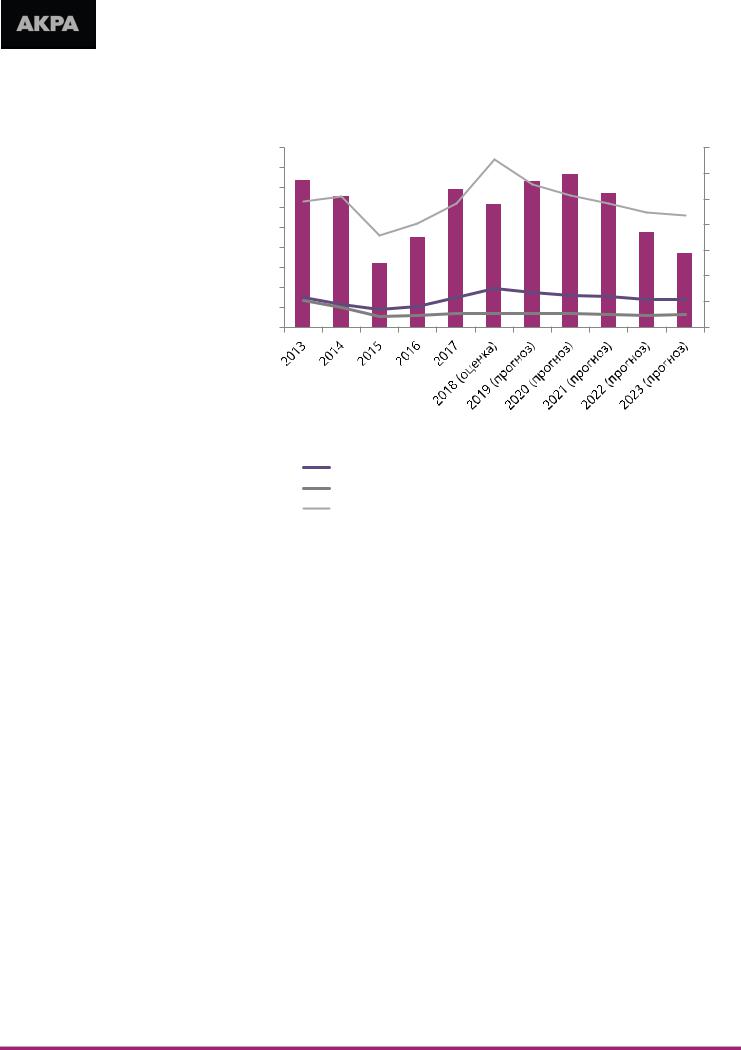
|
vk.com/id446425943 |
|
|
|
|
|
|
Кому торговая война, а кому прибыль одна: черные металлы |
|
17 декабря 2018 |
|
|
|
сопротивляются падению цен, сохраняя кредитоспособность отрасли |
|
|
|
|
|
|
|
|
|
|
|
|
|
|
|
|
|
|
|||
|
|
Рисунок 1. На фоне сокращающейся загрузки и падения цен на сырье |
|||
|
|
стоимость стального проката будет снижаться |
|
|
|
900 |
80 |
|
800 |
78 |
|
|
||
700 |
76 |
|
600 |
||
|
||
500 |
74 |
|
400 |
72 |
|
300 |
70 |
|
200 |
||
|
||
100 |
68 |
|
|
||
0 |
66 |
 Загрузка мощностей, %
Загрузка мощностей, %
Цены на коксующийся уголь (долл./т, Австралия FOB) Цены на железорудный концентрат (долл./т, Китай CIF) Цены на горячекатаный плоский прокат (долл./т, США FOB)
Источник: OECD, Worldsteel, Bloomberg, расчеты АКРА
Несмотря на то что Китай сократил мощности в сталелитейном секторе, выполнив свои обещания, в прогнозном периоде Индия, Вьетнам и другие страны Азиатско-Тихоокеанского региона продолжат вводить в
эксплуатацию новые сталелитейные комплексы. При этом рост спроса на стальной прокат замедлится — к 2023 году загрузка мощностей снизится с текущих 76 до 72%.
На рынке коксующегося угля рост предложения со стороны США, Монголии, Мозамбика и России приведет к возникновению профицита, поэтому цены на уголь начнут снижаться и достигнут 140–150 долл./т (комфортный показатель для большинства поставщиков с низким уровнем себестоимости продукции).
Динамика цен на рынке энергетического угля также будет нисходящей, что будет связано с удешевлением альтернативных источников энергии и ростом предложения угля из США, Индонезии, России и Австралии. По оценкам АКРА, цены на энергетический уголь снизятся со 100–110 долл./т в ноябре текущего года до 60–70 долл./т к 2023-му.
Железорудное сырье будет дешеветь под влиянием растущего предложения из Бразилии и Австралии. Дефицит на рынке графитовых электродов, который в прошлом году привел к ажиотажному спросу на чугун, в этом году существенно ослаб и в перспективе не будет оказывать на рынок столь значимого влияния. Железорудный концентрат, который сегодня стоит 68 долл./т, подешевеет до 62 долл./т.
4
http://new.guap.ru/i04/contacts
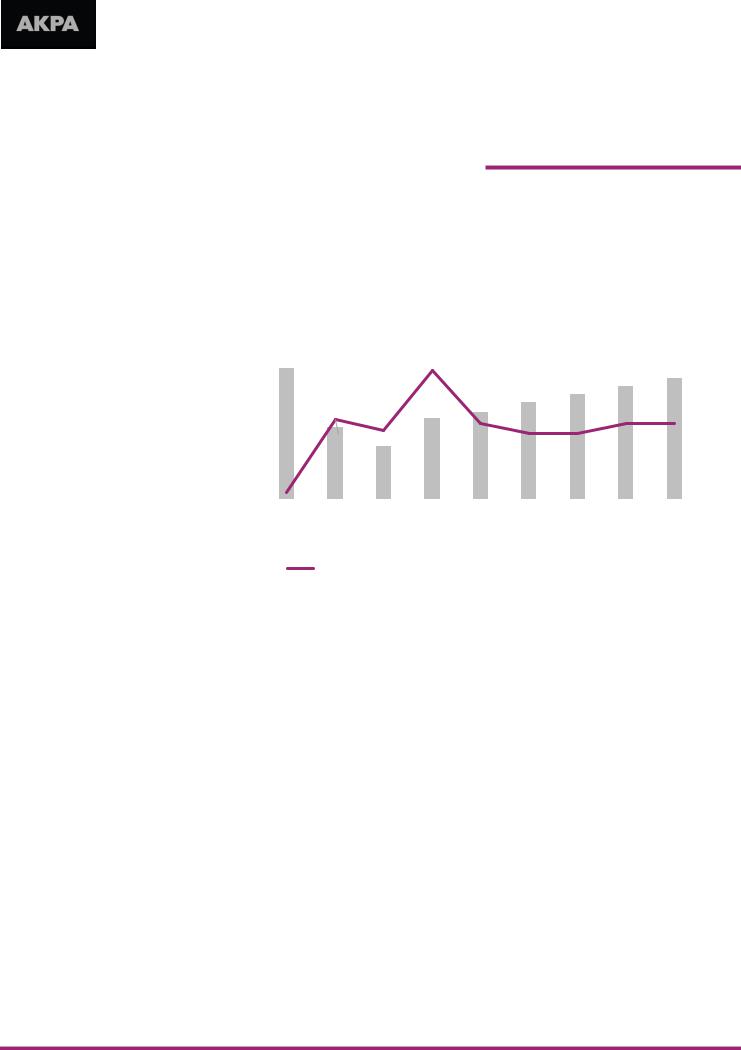
|
vk.com/id446425943 |
|
|
|
|
|
|
Кому торговая война, а кому прибыль одна: черные металлы |
|
17 декабря 2018 |
|
|
|
сопротивляются падению цен, сохраняя кредитоспособность отрасли |
|
|
|
|
|
|
|
|
|
|
|
|
|
|
|
|
|
|
|
|
|
В настоящее время в связи с введением нового регулирования строительной отрасли существуют риски серьезного ухудшения в отрасли в связи с возможным банкротством мелких игроков на фоне
удорожания ресурсов (кредиты банков вместо средств дольщиков). В этом случае к 2023 году потребление стали
в России может сократиться до 38–40 млн т, при этом экспорт проката вырастет на 5–7 млн т к уровню базового
прогноза. АКРА пока не считает данный сценарий вероятным.
С 1 июля 2018 года вступили в силу поправки
в законодательство о долевом строительстве жилья, предусматривающие большие изменения для застройщиков, которые получают разрешение на строительство.
См. подготовленный АКРА макропрогноз на 2019–2022 годы «Стрессовые сценарии становятся более вероятными для российской экономики» от 25 октября 2018 года.
Российский рынок стали: потребление будет расти, а цены станут снижаться
В 2017 году объем производства стали в России составил 71,3 млн т., а внутреннее потребление стального проката выросло до 44,8 млн т. Основной вклад в рост спроса внесли трубная промышленность и отрасль строительства. При этом сегмент фасонного проката развивался более высокими темпами, что указывает на то, что сектор высотного строительства находится на подъеме.
Рисунок 2. На фоне низких темпов роста промпроизводства жилое строительство становится основным фактором роста спроса на сталь в России
86 |
85,3 |
|
|
2,7% |
|
|
|
|
84,4 |
3% |
|
|
|
|
|
|
|
||||
|
|
|
|
|
|
|
83,7 |
|
||
84 |
|
|
|
|
|
|
83,1 |
|
|
|
|
|
|
|
|
82,3 |
|
|
|
||
|
|
|
|
|
81,5 |
|
|
|
2% |
|
|
|
|
|
81,0 |
|
|
|
|
||
82 |
|
|
|
|
|
|
|
|
||
|
80,2 |
|
|
|
|
|
|
|
||
|
|
|
|
|
|
|
|
|
|
|
80 |
|
|
78,6 |
|
1,2% |
|
|
1,2% |
1,2% |
1% |
|
|
1,3% |
|
|
|
|
||||
|
|
1,0% |
|
0,9% |
0,9% |
|
||||
78 |
|
|
|
|
|
|
||||
|
|
|
|
|
|
|
|
|||
|
|
|
|
|
|
|
|
|
|
0% |
76 |
|
|
|
|
|
|
|
|
|
|
74 |
|
|
|
|
|
|
|
|
|
-1% |
-0,8% |
|
|
|
|
|
|
|
|
||
|
|
|
|
|
|
|
|
|
|
|
|
2015 |
2016 |
2017 2018о 2019п 2020п |
2021п 2022п |
2023п |
|
||||
 Введено в эксплуатацию жилых домов (млн кв. м общей площади) Индекс промпроизводства (%)
Введено в эксплуатацию жилых домов (млн кв. м общей площади) Индекс промпроизводства (%)
Источник: Росстат, прогноз АКРА
Ожидалось, что в 2017 году по сравнению с 2016-м объемы ввода в
эксплуатацию новых жилых зданий увеличатся, однако этого не произошло. Причины — недостаточно быстрое снижение ставок по ипотеке и ажиотажный спрос застройщиков на новые площадки (разрешение на строительство на новых площадках необходимо было получить до принятия поправок в законодательство о долевом строительстве жилья). Теперь, когда поправки уже вступили в силу, застройщики будут возводить жилье на полученных территориях. Продолжит повышаться доступность ипотечного кредитования в сравнении с уровнями 2011–2016 годов. Это станет дополнительным фактором, который позволит строительной отрасли приблизиться к рекордному уровню 2015-го (85,3 млн кв. м жилья). К 2023 году может быть введено в эксплуатацию 84,4 млн кв. м жилья.
В 2018 году темпы роста промышленного производства на волне удешевления российской валюты и усиления темпов импортозамещения достигли 2,7%. Однако мы не ожидаем, что в будущем столь удачная для российской промышленности динамика продолжится. Тем не менее рост на 1% в год будет поддерживать спрос на сортовой прокат.
5
http://new.guap.ru/i04/contacts

|
vk.com/id446425943 |
|
|
|
|
|
|
Кому торговая война, а кому прибыль одна: черные металлы |
|
17 декабря 2018 |
|
|
|
сопротивляются падению цен, сохраняя кредитоспособность отрасли |
|
|
|
|
|
|
|
|
|
|
|
|
|
|
|
|
|
|
|
|
|
Цены на внутреннем рынке будут повторять динамику мирового рынка с учетом прогнозов по ослаблению российской валюты. Так, горячекатаный прокат должен подешеветь с 36,7 тыс. руб./т без учета НДС (текущая цена в Московском регионе) до 25 тыс. руб./т к 2023 году. За тот же временной период арматура подешевеет с 31,6 тыс. руб./т без НДС до 21,6 тыс. руб./т без НДС на рынке Московского региона.
План Белоусова не приведет к инвестиционному буму в российской металлургии
Несмотря на то что после публикации письма Белоусова о возможном росте налогообложения металлургических и химических предприятий компании металлургического сектора приняли решение активизировать свои инвестиционные программы, АКРА не ожидает существенного увеличения инвестиционных расходов в секторе черной металлургии. С 2004 по 2014 год бóльшая часть производственных активов была успешно модернизирована. Новые проекты в основном будут охватывать аглодоменное производство, коксохимические мощности и транспортные системы комбинатов, что не потребует значительных капитальных вложений.
В рамках прогнозируемой динамики цен на рынках сырья и черной металлургии, а также с учетом консервативной оценки потенциала роста инвестиций в развитие указанных отраслей АКРА не ожидает повышения долговой нагрузки в секторе в среднесрочной перспективе. Отношение общего долга к FFO до фиксированных платежей и налогов в 2018 году составит 2,0х и останется на этом уровне с 2019-го по 2020-й (умеренно низкий уровень долговой нагрузки).
Следует понимать, что долговая нагрузка отдельных компаний отрасли будет существенно отличаться от средневзвешенной, однако в целом риск кредитования предприятий отрасли находится на умеренном уровне.
6
http://new.guap.ru/i04/contacts

|
vk.com/id446425943 |
|
|
|
|
|
|
Кому торговая война, а кому прибыль одна: черные металлы |
|
17 декабря 2018 |
|
|
|
сопротивляются падению цен, сохраняя кредитоспособность отрасли |
|
|
|
|
|
|
|
|
|
|
|
|
|
|
|
|
|
|
|
|
|
(С) 2018
Аналитическое Кредитное Рейтинговое Агентство (Акционерное общество), АКРА (АО) Москва, Садовническая набережная, д. 75
www.acra-ratings.ru
Аналитическое Кредитное Рейтинговое Агентство (АКРА) создано в 2015 году. Акционерами АКРА являются 27 крупнейших компаний России, представляющие финансовый и корпоративный сектора, а уставный капитал составляет более 3 млрд руб. Основная задача АКРА — предоставление качественного рейтингового продукта пользователям российского рейтингового рынка. Методологии и внутренние документы АКРА разрабатываются в соответствии с требованиями российского законодательства и с учетом лучших мировых практик в рейтинговой деятельности.
Представленная информация, включая, помимо прочего, кредитные и некредитные рейтинги, факторы рейтинговой оценки, подробные результаты кредитного анализа, методологии, модели, прогнозы, аналитические обзоры и материалы и иную информацию, размещенную на сайте АКРА (далее — Информация), а также программное обеспечение сайта и иные приложения, предназначены для использования исключительно в ознакомительных целях. Настоящая Информация не может модифицироваться, воспроизводиться, распространяться любым способом и в любой форме ни полностью, ни частично в рекламных материалах, в рамках мероприятий по связям с общественностью, в сводках новостей, в коммерческих материалах или отчетах без предварительного письменного согласия со стороны АКРА и ссылки на источник. Использование Информации в нарушение указанных требований и в незаконных целях запрещено.
Кредитные рейтинги АКРА отражают мнение АКРА относительно способности рейтингуемого лица исполнять принятые на себя финансовые обязательства или относительно кредитного риска отдельных финансовых обязательств и инструментов рейтингуемого лица на момент опубликования соответствующей Информации.
Некредитные рейтинги АКРА отражают мнение АКРА о некоторых некредитных рисках, принимаемых на себя заинтересованными лицами при взаимодействии с рейтингуемым лицом.
Присваиваемые кредитные и некредитные рейтинги отражают всю относящуюся к рейтингуемому лицу и находящуюся в распоряжении АКРА существенную информацию (включая информацию, полученную от третьих лиц), качество и достоверность которой АКРА сочло надлежащими. АКРА не несет ответственности за достоверность информации, предоставленной клиентами или связанными третьими сторонами. АКРА не осуществляет аудита или иной проверки представленных данных и не несет ответственности за их точность и полноту. АКРА проводит рейтинговый анализ представленной клиентами информации с использованием собственных методологий. Тексты утвержденных методологий доступны на сайте АКРА по адресу: www.acraratings.ru/criteria.
Только в случае распространения информации о присвоенном кредитном рейтинге и прогнозе по кредитному рейтингу любым способом, обеспечивающим доступ к ней неограниченного круга лиц, данный кредитный рейтинг и прогноз по кредитному рейтингу входит в сферу регулирования Центрального банка Российской Федерации.
Единственным источником, отражающим актуальную Информацию, в том числе о кредитных и некредитных рейтингах, присваиваемых АКРА, является официальный интернет-сайт АКРА — www.acra-ratings.ru. Информация представляется на условии «как есть».
Информация должна рассматриваться пользователями исключительно как мнение АКРА и не является советом, рекомендацией, предложением покупать, держать или продавать ценные бумаги или любые финансовые инструменты, офертой или рекламой. АКРА, его работники, а также аффилированные с АКРА лица (далее — Стороны АКРА) не предоставляют никакой выраженной в какойлибо форме или каким-либо образом непосредственной или подразумеваемой гарантии в отношении точности, своевременности, полноты или пригодности Информации для принятия инвестиционных или каких-либо иных решений. АКРА не выполняет функции фидуциария, аудитора, инвестиционного или финансового консультанта. Информация должна расцениваться исключительно как один из факторов, влияющих на инвестиционное или иное бизнес-решение, принимаемое любым лицом, использующим ее. Каждому из таких лиц необходимо провести собственное исследование и дать собственную оценку участнику финансового рынка, а также эмитенту и его долговым обязательствам, которые могут рассматриваться в качестве объекта покупки, продажи или владения. Пользователи Информации должны принимать решения самостоятельно, привлекая собственных независимых консультантов, если сочтут это необходимым.
Стороны АКРА не несут ответственности за любые действия, совершенные пользователями на основе данной Информации. Стороны АКРА ни при каких обстоятельствах не несут ответственности за любые прямые, косвенные или случайные убытки и издержки, возникшие у пользователей в связи с интерпретациями, выводами, рекомендациями и иными действиями третьих лиц, прямо или косвенно связанными с такой информацией.
Информация, предоставляемая АКРА, актуальна на дату подготовки и опубликования материалов и может изменяться АКРА в дальнейшем. АКРА не обязано обновлять, изменять, дополнять Информацию или уведомлять кого-либо об этом, если это не было зафиксировано отдельно в письменном соглашении или не требуется в соответствии с законодательством Российской Федерации.
АКРА не оказывает консультационных услуг. АКРА может оказывать дополнительные услуги, если это не создает конфликта интересов с рейтинговой деятельностью.
АКРА и его работники предпринимают все разумные меры для защиты всей имеющейся в их распоряжении конфиденциальной и/или иной существенной непубличной информации от мошеннических действий, кражи, неправомерного использования или непреднамеренного раскрытия. АКРА обеспечивает защиту конфиденциальной информации, полученной в процессе деятельности, в соответствии с требованиями законодательства Российской Федерации.
7
http://new.guap.ru/i04/contacts

vk.com/id446425943КОРПОРАТИВНЫЙ СЕКТОР
ПРОГНОЗ
НЕФТЯНАЯ ОТРАСЛЬ
15 января 2019
Снижение среднегодовых цен нефти в 2019–2020 годах станет результатом роста добычи сланцевой нефти благодаря решению проблемы ее транспортировки….……………..…3
Замедление ввода в
эксплуатацию новых крупных месторождений отодвигает пик добычи нефти в РФ на 2021–2022
годы…………………………….………..3
Продолжение модернизации российских НПЗ обеспечит рост экспорта нефтепродуктов………..5
Капитальные расходы ВИНК достигнут пика в 2019–2020
годах …………………………………….5
Прогноз подготовлен в соответствии с Общими
принципами прогнозирования социально-экономических показателей АКРА.
Василий Танурков Заместитель директора,
группа корпоративных рейтингов
+7 (495) 139-0344 vasilii.tanurcov@acra-ratings.ru
Наталья Порохова Старший директор, руководитель
группы суверенных рейтингов и прогнозирования
+7 (495) 139-0490 natalia.porokhova@acra-ratings.ru
Контакты для СМИ
Алексей Чурилов Младший менеджер по внешним коммуникациям
+7 (495) 139-0480, доб. 169 alexey.churilov@acra-ratings.ru
Cоглашение ОПЕК+ стало причиной замедления темпов ввода новых месторождений в России
Российская нефтяная отрасль: прогноз до 2023 года
—Ввод новых трубопроводных мощностей приведет к новому витку роста добычи сланцевой нефти в США, что окажет давление на нефтяные цены во второй половине 2019 года и в
2020 году. Прогноз АКРА предполагает снижение среднегодовой цены нефти марки Urals с 70,01 долл./барр. в 2018 году до 63,6 долл./барр. в 2019-м и 58,7 долл./барр. в 2020-м.
—Участие России в сделке об ограничении добычи нефти стало причиной замедления ввода в эксплуатацию новых месторождений. Пик добычи нефти в России придется на 2021– 2022 годы, при этом, по оценке АКРА, пиковый объем добычи будет достигать 575 млн т в год.
—Увеличение объемов переработки нефти предполагает рост экспорта нефтепродуктов. Прирост экспорта российского моторного топлива в 2017–2023 годах составит 14,4 млн т при росте объема переработки на 15,5 млн т за указанный период. Увеличение добычи нефти в России и относительно низкие темпы роста объемов переработки будут способствовать росту экспорта сырой нефти до 266 млн т в 2022 году против 256 млн т в 2018 году.
—Санкции не привели к снижению инвестиций в российской нефтяной отрасли... Рост инвестиций вертикально интегрированных нефтяных компаний (ВИНК) без учета «Газпрома» продолжится вплоть до 2020 года. Рост рублевых цен на нефть в 2018 году привел к существенному увеличению EBITDA российских нефтегазовых компаний, благодаря чему доля капитальных расходов в EBITDA ВИНК снизилась до вполне комфортного уровня в 54,6%. Отношение долга к EBITDA ВИНК снизилось с 2,3х в 2017 году до 1,3х в 2018-м, фактически вернувшись к уровню 2013 года.
—… но изменили структуру долга нефтегазовых компаний. Доля рублевого долга выросла с 13 до 41%, доля облигаций — с 40 до
66%.
http://new.guap.ru/i04/contacts

|
vk.com/id446425943 |
|
|
|
|
|
|
Cоглашение ОПЕК+ стало причиной замедления темпов ввода новых |
|
15 января 2019 |
|
|
|
месторождений в России |
|
|
|
|
|
|
|
|
|
|
|
|
|
|
|
|
|
|
|
|
|
|
Таблица 1. Прогноз показателей нефтяной отрасли России на 2019–2023 годы |
|
|
|
|
|
Показатели |
|
|
ед. изм. |
|
|
|
|
|
Факт |
|
|
|
|
|
Оценка |
|
|
|
|
|
|
|
|
Прогноз |
|
|
|
|
|
||
|
|
|
|
|
|
|
|
|
|
|
|
|
|
|
|
|
|
|
|
|
|
|
|
|||||||||
|
|
|
|
|
2015 |
|
|
2016 |
|
|
2017 |
|
|
2018 |
|
|
2019 |
|
|
2020 |
|
|
2021 |
|
|
2022 |
|
|
2023 |
|
||
|
|
|
|
|
|
|
|
|
|
|
|
|
|
|
|
|
|
|
|
|
|
|
|
|||||||||
|
|
|
|
|
|
|
|
|
|
Производство |
|
|
|
|
|
|
|
|
|
|
|
|
|
|
|
|
|
|||||
|
|
|
|
|
|
|
|
|
|
|
|
|
|
|
|
|
|
|
|
|
|
|
|
|
|
|
|
|
|
|
|
|
|
Добыча нефти с газовым |
|
млн т |
534,1 |
|
547,5 |
|
546,8 |
|
|
555,8 |
559,5 |
|
568,9 |
|
575,0 |
|
|
575,0 |
|
573,0 |
|
||||||||||
|
конденсатом* |
|
|
|
|
|
|
|
|
|
|
|
||||||||||||||||||||
|
|
|
|
|
|
|
|
|
|
|
|
|
|
|
|
|
|
|
|
|
|
|
|
|
|
|
|
|
|
|
||
|
Первичная переработка |
|
млн т |
281,9 |
|
279,7 |
|
279,5 |
|
|
286,1 |
291,7 |
|
295,0 |
|
295,0 |
|
|
295,0 |
|
295,0 |
|
||||||||||
|
нефти |
|
|
|
|
|
|
|
|
|
|
|
||||||||||||||||||||
|
|
|
|
|
|
|
|
|
|
|
|
|
|
|
|
|
|
|
|
|
|
|
|
|
|
|
|
|
|
|
||
|
Производство бензина |
|
млн т |
39,2 |
|
39,9 |
|
39,2 |
|
|
39,4 |
41,1 |
|
42,2 |
|
42,5 |
|
|
43,0 |
|
43,5 |
|
||||||||||
|
|
|
|
|
|
|
|
|
|
|
|
|
|
|
|
|
|
|
|
|
|
|
|
|
|
|
|
|
|
|
|
|
|
Производство |
|
млн т |
76,0 |
|
76,3 |
|
76,9 |
|
|
78,3 |
82,2 |
|
84,4 |
|
85,0 |
|
|
86,0 |
|
87,0 |
|
||||||||||
|
дизельного топлива (ДТ) |
|
|
|
|
|
|
|
|
|
|
|
||||||||||||||||||||
|
|
|
|
|
|
|
|
|
|
|
|
|
|
|
|
|
|
|
|
|
|
|
|
|
|
|
|
|
|
|
||
|
Производство мазута |
|
млн т |
71,5 |
|
57,1 |
|
51,2 |
|
|
47,9 |
48,1 |
|
48,1 |
|
47,2 |
|
|
45,7 |
|
44,3 |
|
||||||||||
|
|
|
|
|
|
|
|
|
|
|
|
|
|
|
|
|
|
|
|
|
|
|
|
|
|
|
|
|
|
|
||
|
|
|
|
|
|
|
|
|
|
|
Экспорт |
|
|
|
|
|
|
|
|
|
|
|
|
|
|
|
|
|
||||
|
|
|
|
|
|
|
|
|
|
|
|
|
|
|
|
|
|
|
|
|
|
|||||||||||
|
Экспорт сырой нефти* |
|
млн т |
241,3 |
|
253,7 |
|
256,9 |
|
|
257,5 |
254,4 |
|
260,2 |
|
266,0 |
|
|
266,0 |
|
264,1 |
|
||||||||||
|
|
|
|
|
|
|
|
|
|
|
|
|
|
|
|
|
|
|
|
|
|
|
||||||||||
|
Экспорт бензина |
|
млн т |
4,7 |
|
5,2 |
|
4,3 |
|
|
4,3 |
6,2 |
|
7,2 |
|
7,5 |
|
|
7,9 |
|
8,3 |
|
||||||||||
|
|
|
|
|
|
|
|
|
|
|
|
|
|
|
|
|
|
|
|
|
|
|
||||||||||
|
Экспорт ДТ |
|
млн т |
51,0 |
|
48,6 |
|
50,9 |
|
|
54,3 |
58,5 |
|
60,6 |
|
61,1 |
|
|
62,1 |
|
63,0 |
|
||||||||||
|
|
|
|
|
|
|
|
|
|
|
|
|
|
|
|
|
|
|
|
|
|
|
||||||||||
|
Экспорт мазута |
|
млн т |
57,2 |
|
42,3 |
|
39,2 |
|
|
37,7 |
34,0 |
|
34,2 |
|
33,5 |
|
|
32,0 |
|
30,5 |
|
||||||||||
|
|
|
|
|
|
|
|
|
|
|
|
|
|
|
|
|
|
|
|
|
|
|
|
|
|
|
|
|
|
|||
|
|
|
|
|
|
|
|
|
|
Инвестиции |
|
|
|
|
|
|
|
|
|
|
|
|
|
|
|
|
|
|||||
|
|
|
|
|
|
|
|
|
|
|
|
|
|
|
|
|
|
|
|
|
|
|||||||||||
|
CAPEX ВИНК, всего |
|
млрд руб. |
3215 |
|
2898 |
|
3199 |
|
|
3675 |
3814 |
|
3665 |
|
3262 |
|
|
3215 |
|
3279 |
|
||||||||||
|
|
|
|
|
|
|
|
|
|
|
|
|
|
|
|
|
|
|
|
|
|
|
||||||||||
|
EBITDA ВИНК |
|
млрд руб. |
4627 |
|
3944 |
|
4207 |
|
|
6727 |
6907 |
|
7144 |
|
6687 |
|
|
6802 |
|
6980 |
|
||||||||||
|
|
|
|
|
|
|
|
|
|
|
|
|
|
|
|
|
|
|
|
|
|
|
||||||||||
|
CAPEX/EBITDA ВИНК |
% |
|
69,5 |
|
73,5 |
|
76,0 |
|
|
54,6 |
55,2 |
|
51,3 |
|
48,8 |
|
|
47,3 |
|
47,0 |
|
||||||||||
|
|
|
|
|
|
|
|
|
|
|
|
|
|
|
|
|
|
|
|
|
|
|
|
|
|
|
|
|
|
|
||
|
|
|
|
|
|
|
|
|
|
|
|
Цены |
|
|
|
|
|
|
|
|
|
|
|
|
|
|
|
|
|
|||
|
|
|
|
|
|
|
|
|
|
|
|
|
|
|
|
|
|
|
|
|
|
|||||||||||
|
Цена нефти марки Urals |
|
долл./барр. |
51,3 |
|
42,3 |
|
53,9 |
|
|
70,01 |
63,6 |
|
58,7 |
|
60,2 |
|
|
61,7 |
|
63,2 |
|
||||||||||
|
|
|
|
|
|
|
|
|
|
|
|
|
|
|
|
|
|
|
|
|
|
|
|
|
|
|
|
|
|
|
|
|
|
Бензин марки АИ-92, |
|
руб./л |
33,1 |
|
34,7 |
|
36,8 |
|
|
40,3 |
42,4 |
|
44,1 |
|
45,8 |
|
|
47,7 |
|
49,6 |
|
||||||||||
|
розничная цена |
|
|
|
|
|
|
|
|
|
|
|
||||||||||||||||||||
|
|
|
|
|
|
|
|
|
|
|
|
|
|
|
|
|
|
|
|
|
|
|
|
|
|
|
|
|
|
|
||
|
Бензин марки АИ-95, |
|
руб./л |
36,0 |
|
37,7 |
|
39,9 |
|
|
43,3 |
45,7 |
|
47,6 |
|
49,5 |
|
|
51,4 |
|
53,5 |
|
||||||||||
|
розничная цена |
|
|
|
|
|
|
|
|
|
|
|
||||||||||||||||||||
|
|
|
|
|
|
|
|
|
|
|
|
|
|
|
|
|
|
|
|
|
|
|
|
|
|
|
|
|
|
|
||
|
ДТ, розничная цена |
|
руб./л |
34,7 |
|
35,6 |
|
38,3 |
|
|
43,4 |
47,4 |
|
49,3 |
|
51,3 |
|
|
53,3 |
|
55,5 |
|
||||||||||
|
|
|
|
|
|
|
|
|
|
|
|
|
|
|
|
|
|
|
|
|
|
|
|
|
|
|
|
|
|
|
|
|
Источник: АКРА
* Приведен базовый прогноз с учетом продления соглашения о заморозке добычи на вторую половину 2019 года при неизменных параметрах соглашения. Если соглашение не будет продлено, добыча в 2019 году составит 565,2 млн т, экспорт сырой нефти — 260,1 млн т.
2
http://new.guap.ru/i04/contacts

|
vk.com/id446425943 |
|
|
|
|
|
|
Cоглашение ОПЕК+ стало причиной замедления темпов ввода новых |
|
15 января 2019 |
|
|
|
месторождений в России |
|
|
|
|
|
|
|
|
|
|
|
|
|
|
|
|
|
|
|
|
|
Снижение среднегодовых цен нефти в 2019–2020 годах станет результатом роста добычи сланцевой нефти благодаря решению проблемы ее транспортировки
Продление соглашения ОПЕК+, предполагающее суммарное сокращение среднесуточной добычи нефти на 1,2 млн барр. в первом полугодии 2019 года, а также объявленное Канадой в начале декабря 2018 года снижение добычи на 325 тыс. барр. в сутки позволят сбалансировать рынок нефти ко второму кварталу 2019 года. Однако дальнейший рост добычи сланцевой нефти в США может потребовать продления договоренностей до конца текущего года.
Существенным фактором, сдерживавшим рост добычи сланцевой нефти в США в первой половине 2018 года, стала нехватка трубопроводных мощностей. Бурный рост объемов добычи во втором полугодии 2018 года стал возможен исключительно благодаря росту цен, достаточному для покрытия издержек, связанных с железнодорожной транспортировкой сланцевой нефти. Однако уже во второй половине 2019 года транспортное ограничение добычи будет снято за счет ввода четырех новых трубопроводов (Cactus II, Enterprise, EPIC и Grey Oak) общей пропускной способностью 2,67 млн барр. в сутки. К концу 2020 года будут введены еще три трубопровода (Exxon/PAA JV, Jupiter и PermianGulf Coast) совокупной мощностью 2 млн барр. в сутки. Ввод в эксплуатацию новых трубопроводных мощностей приведет к новому витку роста добычи в США, что окажет давление на нефтяные цены во второй половине 2019 года и в 2020 году. Прогноз АКРА предполагает снижение среднегодовой цены нефти марки Urals с 70,01 долл./барр. в 2018-м до 63,6 долл./барр. в 2019-м и 58,7 долл./барр. в 2020-м.
Замедление ввода в эксплуатацию новых крупных месторождений отодвигает пик добычи нефти в РФ на 2021–2022 годы
Участие России в соглашении ОПЕК+ стало причиной замедления ввода в
эксплуатацию новых месторождений. Так, ввод в эксплуатацию Русского месторождения «Роснефти» был перенесен с 2017 года на четвертый квартал 2018-го, а запланированный на 2018 год ввод месторождений Таас-Юрях, Куюмбинское и Тагульское произошел также лишь в четвертом квартале 2018 года. Перенос сроков ввода в эксплуатацию новых крупных месторождений отодвигает спрогнозированный ранее (см. прогноз АКРА «Новые рекорды российской нефтяной отрасли будут достигнуты вне зависимости от итогов переговоров о заморозке» от 17 мая 2017 года) пик добычи нефти в России на 2021–2022 годы, при этом, по оценке АКРА, пиковый объем добычи будет достигать 575 млн т в год.
Несмотря на продление соглашения ОПЕК+ на первую половину 2019 года, квота России на уровне 11,18 млн барр. в сутки (с учетом постепенного снижения среднесуточной добычи до установленного уровня в первые месяцы 2019 года) позволяет прогнозировать рост добычи нефти в РФ до 559,5 млн т в 2019 году против 555,8 млн т в 2018-м и 546,8 млн т в 2017-м. Базовый прогноз предполагает продление соглашения на существующих условиях до конца 2019 года. Если соглашение не будет продлено, добыча нефти в РФ в 2019 году прогнозируется на уровне 565,2 млн т.
3
http://new.guap.ru/i04/contacts

|
vk.com/id446425943 |
|
|
|
|
|
|
Cоглашение ОПЕК+ стало причиной замедления темпов ввода новых |
|
15 января 2019 |
|
|
|
месторождений в России |
|
|
|
|
|
|
|
|
|
|
|
|
|
|
|
|
|
|
|||
|
|
Рисунок 1. Суммарная пиковая добыча введенных в эксплуатацию |
|||
|
|
месторождений, млн т |
|
|
|
35 |
32,65 |
|
|
|
|
|
|
|
|
|
|
|
|
|
||
30 |
|
28,1 |
|
|
|
|
|
|
|
|
|
|
|
|||
|
|
|
|
|
|
|
|
|
|
|
|
|
|
|||
25 |
|
|
|
|
|
|
|
|
|
|
|
|
|
|
||
20 |
|
|
|
|
19 |
|
|
|
|
|
|
|
|
|||
|
|
|
|
|
|
|
|
|
|
|
|
|
|
|||
|
|
|
|
|
|
|
|
|
|
15,25 |
|
|
||||
15 |
|
|
|
10 |
|
|
|
|
|
|
|
|
|
|
||
|
|
|
|
|
|
|
|
|
|
|
|
|
||||
|
|
|
|
|
|
|
|
|
|
|
|
|
|
|
||
10 |
|
|
|
|
|
|
|
|
|
|
|
|
|
|
||
5 |
|
|
|
|
|
|
|
|
|
|
|
|
|
|
||
0 |
|
|
|
|
|
|
|
|
|
|
|
|
|
|
||
2014–2015 |
2016 |
2017 |
2018 |
2019–2021 |
||||||||||||
|
|
|||||||||||||||
|
Источник: АКРА |
|
|
|
|
|
|
|
|
|
|
|
|
|
||
Таблица 2. График ввода новых крупных месторождений (пиковая добыча свыше 1 млн т/г) |
|
|
|
|
|
|
||||||||||
|
|
|
|
|
|
|
|
|
|
|
|
|
|
|
|
|
|
Месторождение |
|
|
|
Компания |
|
|
|
Дата |
|
|
Полка добычи, |
|
|||
|
|
|
|
|
|
|
ввода |
|
|
|
млн т/г |
|
||||
|
|
|
|
|
|
|
|
|
|
|
|
|
||||
|
|
|
|
|
|
|
|
|
|
|
|
|
|
|
|
|
|
Северное Чайво |
|
|
|
«Роснефть» |
|
|
2014–2015 |
|
1,6 |
|
|||||
|
|
|
|
|
|
|
|
|
|
|
|
|
|
|||
|
Лабаганское |
|
|
|
«Роснефть» |
|
|
2014–2015 |
|
1,25 |
|
|||||
|
|
|
|
|
|
|
|
|
|
|
|
|
|
|||
|
Среднеботуобинское |
|
|
|
«Роснефть» |
|
|
2014–2015 |
|
5,0 |
|
|||||
|
|
|
|
|
|
|
|
|
|
|
|
|
|
|||
|
Имилорское |
|
|
|
ЛУКОЙЛ |
|
|
2014–2015 |
|
5,0 |
|
|||||
|
|
|
|
|
|
|
|
|
|
|
|
|
|
|||
|
Приразломное |
|
|
|
«Газпром нефть» |
|
|
2014–2015 |
|
5,0 |
|
|||||
|
|
|
|
|
|
|
|
|
|
|
|
|
|
|||
|
Новопортовское |
|
|
|
«Газпром нефть» |
|
|
2014–2015 |
|
6,5 |
|
|||||
|
|
|
|
|
|
|
|
|
|
|
|
|
||||
|
Месторождения им. Требса (Варкнавтское) и им. Титова |
|
|
«Башнефть», ЛУКОЙЛ |
|
|
2014–2015 |
|
4,8 |
|
||||||
|
|
|
|
|
|
|
|
|
|
|
|
|
|
|||
|
Ярудейское |
|
|
|
НОВАТЭК |
|
|
2014–2015 |
|
3,5 |
|
|||||
|
|
|
|
|
|
|
|
|
|
|
|
|
|
|
||
|
Сузунское |
|
|
|
«Роснефть» |
|
|
|
2016 |
|
6,0 |
|
||||
|
|
|
|
|
|
|
|
|
|
|
|
|
|
|
||
|
Наульское |
|
|
|
«Роснефть» |
|
|
|
2016 |
|
2,5 |
|
||||
|
|
|
|
|
|
|
|
|
|
|
|
|
|
|
||
|
Месторождение им. Филановского |
|
|
|
ЛУКОЙЛ |
|
|
|
2016 |
|
6,0 |
|
||||
|
|
|
|
|
|
|
|
|
|
|
|
|
|
|
||
|
Пякяхинское |
|
|
|
ЛУКОЙЛ |
|
|
|
2016 |
|
3,5 |
|
||||
|
|
|
|
|
|
|
|
|
|
|
|
|
|
|
||
|
Южно-Талаканское |
|
|
|
«Сургутнефтегаз» |
|
|
|
2016 |
|
1,5 |
|
||||
|
|
|
|
|
|
|
|
|
|
|
|
|
|
|||
|
Месторождение им. Шпильмана (Северо-Рогожниковское) |
|
|
«Сургутнефтегаз» |
|
|
|
2016 |
|
3,0 |
|
|||||
|
|
|
|
|
|
|
|
|
|
|
|
|
|
|
|
|
|
Восточно-Мессояхское |
|
|
|
«Газпром нефть», |
|
|
|
2016 |
|
5,6 |
|
||||
|
|
|
|
«Роснефть» |
|
|
|
|
|
|||||||
|
|
|
|
|
|
|
|
|
|
|
|
|
|
|
||
|
Юрубчено-Тохомское |
|
|
|
«Роснефть» |
|
|
|
2017 |
|
5,0 |
|
||||
|
|
|
|
|
|
|
|
|
|
|
|
|
|
|||
|
Кондинская группа (Кондинское, Западно-Эргинское, Чапровское, |
|
«Роснефть» |
|
|
|
2017 |
|
5,0 |
|
||||||
|
Ново-Ендырское) |
|
|
|
|
|
|
|
|
|||||||
|
|
|
|
|
|
|
|
|
|
|
|
|
|
|
||
|
Русское |
|
|
|
«Роснефть» |
|
|
|
2017 |
|
6,5 |
|
||||
|
|
|
|
|
|
|
|
|
|
|
|
|
|
|
||
|
Таас-Юрях (вторая очередь) |
|
|
|
«Роснефть» |
|
|
|
2018 |
|
5,0 |
|
||||
|
|
|
|
|
|
|
|
|
|
|
|
|
|
|
|
|
|
Куюмбинское |
|
|
|
«Газпром нефть», |
|
|
|
2018 |
|
3,0 |
|
||||
|
|
|
|
«Роснефть» |
|
|
|
|
|
|||||||
|
|
|
|
|
|
|
|
|
|
|
|
|
|
|
||
|
Тагульское |
|
|
|
«Роснефть» |
|
|
|
2018 |
|
4,5 |
|
||||
|
|
|
|
|
|
|
|
|
|
|
|
|
|
|
||
|
Лодочное |
|
|
|
«Роснефть» |
|
|
|
2019 |
|
2,0 |
|
||||
|
|
|
|
|
|
|
|
|
|
|
|
|
|
|||
|
Месторождения им. Севостьянова, им. Лисовского, Санарское |
|
|
«Роснефть» |
|
|
|
2021 |
|
10,0 |
|
|||||
|
|
|
|
|
|
|
|
|
|
|
|
|
|
|||
|
Чонский проект (Игнялинское, Тымпучиканское и Вакунайское) |
|
|
«Газпром нефть» |
|
|
|
2021 |
|
3,25 |
|
|||||
|
|
|
|
|
|
|
|
|
|
|
|
|
|
|
||
Источник: АКРА |
|
|
|
|
|
|
|
|
|
|
|
|
|
|
||
|
|
|
http://new.guap.ru/i04/contacts |
4 |
|
|
||

|
vk.com/id446425943 |
|
|
|
|
|
|
Cоглашение ОПЕК+ стало причиной замедления темпов ввода новых |
|
15 января 2019 |
|
|
|
месторождений в России |
|
|
|
|
|
|
|
|
|
|
|
|
|
|
|
|
|
|
|
|
|
Продолжение модернизации российских НПЗ обеспечит рост экспорта нефтепродуктов
В случае реализации запланированных проектов по дальнейшей модернизации российских НПЗ мощности по производству ДТ увеличатся на 22 млн т в год, а мощности по производству нафты — на 10 млн т в год к 2022 году.
Дополнительный объем нафты может поглощаться внутренним рынком благодаря росту спроса на фоне увеличения объемов производства нефтехимической продукции, тогда как опережающий внутренний спрос рост объемов производства моторного топлива потребует увеличения его экспорта.
Рисунок 2. Прирост производства и экспорта моторного топлива
8
6
4
2
0
2014 |
2015 |
2016 |
2017 |
2018 |
2019 |
2020 |
2021 |
2022 |
2023 |
-2
-4
 Годовой прирост производства бензина и ДТ, млн т
Годовой прирост производства бензина и ДТ, млн т  Годовой прирост экспорта бензина и ДТ, млн т
Годовой прирост экспорта бензина и ДТ, млн т
Источник: АКРА
Согласно оценке АКРА, прирост экспорта российского моторного топлива в 2017–2023 годах составит 14,4 млн т при росте объема переработки на 15,5 млн т за указанный период. Увеличение добычи нефти в России и относительно низкие темпы роста объемов переработки будут способствовать росту экспорта сырой нефти до 266 млн т в 2022 году против 256 млн т в 2018 году.
Капитальные расходы ВИНК достигнут пика в 2019–2020 годах
Несмотря на тормозящий эффект, который оказывает заморозка нефтедобычи на темпы роста инвестиций, капитальные расходы российских ВИНК в 2018 году существенно выросли. Согласно оценке АКРА, рост инвестиций ВИНК без учета «Газпрома» продолжится вплоть до 2020 года (объем инвестиций «Газпрома» достигнет пика на год раньше в связи с завершением инвестиций в крупные трубопроводные проекты).
Рост рублевых цен на нефть в 2018 году привел к существенному увеличению EBITDA российских нефтегазовых компаний, благодаря чему доля капитальных расходов в EBITDA ВИНК снизилась до вполне комфортного среднего уровня в 54,6%. Также произошло снижение относительной
5
http://new.guap.ru/i04/contacts
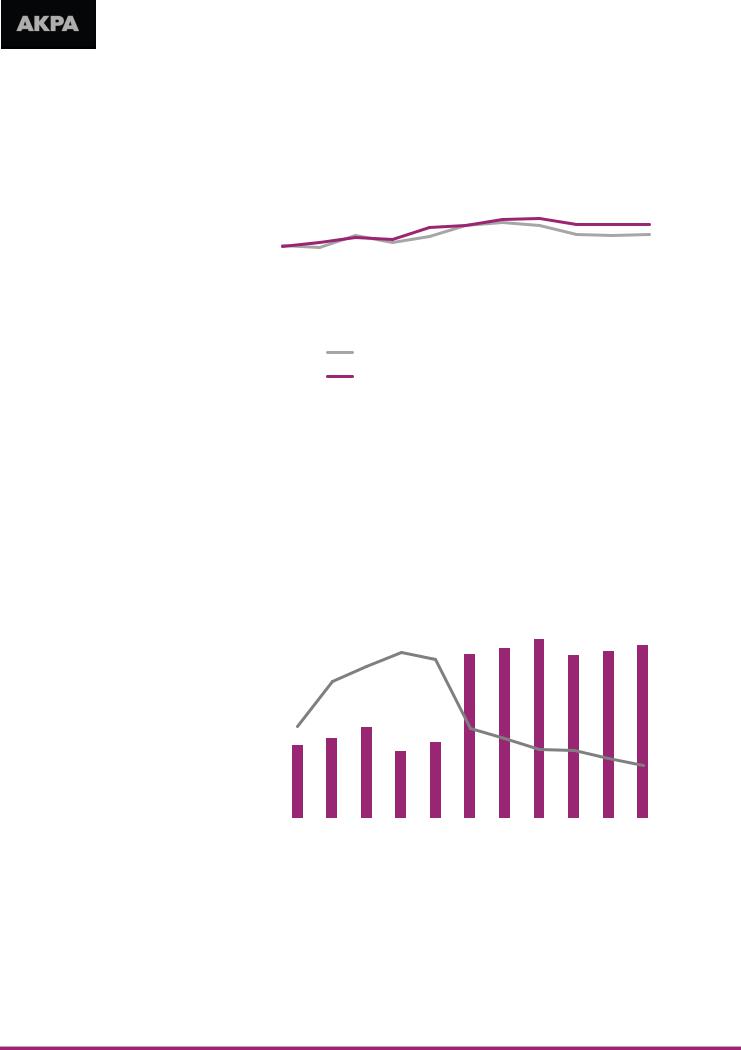
|
vk.com/id446425943 |
|
|
|
|
|
|
Cоглашение ОПЕК+ стало причиной замедления темпов ввода новых |
|
15 января 2019 |
|
|
|
месторождений в России |
|
|
|
|
|
|
|
|
|
|
|
|
|
|
|
|
|
|
|
|
|
долговой нагрузки — отношение общего долга к EBITDA ВИНК сократилось с 2,3х в 2017 году до 1,3х в 2018-м. Таким образом, долговая нагрузка фактически вернулась к уровню 2013 года. АКРА ожидает дальнейшего снижения данного показателя вплоть до 0,77х в 2023 году.
Рисунок 3. Пик капитальных расходов ВИНК придется на 2019–2020 годы
5000 |
|
|
|
|
|
|
|
|
|
|
2500 |
|
4000 |
|
|
|
|
|
|
|
|
|
|
2000 |
|
3000 |
|
|
|
|
|
|
|
|
|
|
1500 |
|
2000 |
|
|
|
|
|
|
|
|
|
|
1000 |
|
1000 |
|
|
|
|
|
|
|
|
|
|
500 |
|
0 |
|
|
|
|
|
|
|
|
|
|
|
0 |
|
|
|
|
|
|
|
|
|
|
|
||
2013 |
2014 |
2015 |
2016 |
2017 |
2018 |
2019 |
2020 |
2021 |
2022 |
2023 |
|
|
CAPEX ВИНК, всего (лев. шк.)
CAPEX ВИНК без учета «Газпрома» (прав. шк.)
Источник: АКРА
Введение антироссийских санкций не оказало ощутимого влияния на размер инвестиций, но привело к изменению структуры долга нефтегазовых компаний: доля рублевых заимствований выросла с 13 до 41%, доля облигаций — с 40 до 66%. Также изменилась география заимствований — произошло снижение доли американских и европейских банков при увеличении доли китайских контрагентов.
Рисунок 4. Рост EBITDA и снижение CAPEX приведут к дальнейшему снижению долговой нагрузки российских нефтегазовых компаний
8 000 3,0
7 000 |
|
|
|
|
|
2,39 |
|
|
|
|
|
|
|
|
|
|
2,5 |
||
|
|
|
|
|
|
2,29 |
|
|
|
|
|
|
|
|
|
|
|||
|
|
|
|
|
2,19 |
|
|
|
|
|
|
|
|
|
|
|
|
|
|
6 000 |
|
|
1,98 |
|
|
|
|
|
|
|
|
|
|
|
|
2,0 |
|||
5 000 |
|
|
|
|
|
|
|
|
1,30 |
|
|
|
|
|
|
|
1,5 |
||
1,32 |
|
|
|
|
|
|
|
|
|
|
|
|
|
|
|||||
|
|
|
|
|
|
1,16 |
|
|
|
|
|
|
|
||||||
|
|
|
|
|
|
|
|
|
|
|
|
|
|
|
|
|
|||
4 000 |
|
|
|
|
|
|
|
|
|
|
|
1,00 |
|
|
|
|
1,0 |
||
|
|
|
|
|
|
|
|
|
|
|
|
0,98 |
0,87 |
|
|
||||
|
|
|
|
|
|
|
|
|
|
|
|
|
|
|
|
0,770,5 |
|||
3 000 |
|
|
|
|
|
|
|
|
|
|
|
|
|
|
|
|
|
||
2 000 |
|
|
|
|
|
|
|
|
|
|
|
|
|
|
|
|
|
|
0,0 |
|
|
|
|
|
|
|
|
|
|
|
|
|
|
|
|
|
|
||
2013 |
2014 |
2015 |
2016 |
2017 |
2018 |
2019 |
2020 |
2021 |
2022 |
2023 |
|
||||||||
|
|
|
|
EBITDA ВИНК, млрд руб. |
|
Долг/EBITDA ВИНК |
|
|
|
||||||||||
|
|
|
|
|
|
|
|
||||||||||||
Источник: АКРА
6
http://new.guap.ru/i04/contacts

|
vk.com/id446425943 |
|
|
|
|
|
|
Cоглашение ОПЕК+ стало причиной замедления темпов ввода новых |
|
15 января 2019 |
|
|
|
месторождений в России |
|
|
|
|
|
|
|
|
|
|
|
|
|
|
|
|
|
|
|
|
|
(С) 2019
Аналитическое Кредитное Рейтинговое Агентство (Акционерное общество), АКРА (АО) Москва, Садовническая набережная, д. 75
www.acra-ratings.ru
Аналитическое Кредитное Рейтинговое Агентство (АКРА) создано в 2015 году. Акционерами АКРА являются 27 крупнейших компаний России, представляющие финансовый и корпоративный сектора, а уставный капитал составляет более 3 млрд руб. Основная задача АКРА — предоставление качественного рейтингового продукта пользователям российского рейтингового рынка. Методологии и внутренние документы АКРА разрабатываются в соответствии с требованиями российского законодательства и с учетом лучших мировых практик в рейтинговой деятельности.
Представленная информация, включая, помимо прочего, кредитные и некредитные рейтинги, факторы рейтинговой оценки, подробные результаты кредитного анализа, методологии, модели, прогнозы, аналитические обзоры и материалы и иную информацию, размещенную на сайте АКРА (далее — Информация), а также программное обеспечение сайта и иные приложения, предназначены для использования исключительно в ознакомительных целях. Настоящая Информация не может модифицироваться, воспроизводиться, распространяться любым способом и в любой форме ни полностью, ни частично в рекламных материалах, в рамках мероприятий по связям с общественностью, в сводках новостей, в коммерческих материалах или отчетах без предварительного письменного согласия со стороны АКРА и ссылки на источник. Использование Информации в нарушение указанных требований и в незаконных целях запрещено.
Кредитные рейтинги АКРА отражают мнение АКРА относительно способности рейтингуемого лица исполнять принятые на себя финансовые обязательства или относительно кредитного риска отдельных финансовых обязательств и инструментов рейтингуемого лица на момент опубликования соответствующей Информации.
Некредитные рейтинги АКРА отражают мнение АКРА о некоторых некредитных рисках, принимаемых на себя заинтересованными лицами при взаимодействии с рейтингуемым лицом.
Присваиваемые кредитные и некредитные рейтинги отражают всю относящуюся к рейтингуемому лицу и находящуюся в распоряжении АКРА существенную информацию (включая информацию, полученную от третьих лиц), качество и достоверность которой АКРА сочло надлежащими. АКРА не несет ответственности за достоверность информации, предоставленной клиентами или связанными третьими сторонами. АКРА не осуществляет аудита или иной проверки представленных данных и не несет ответственности за их точность и полноту. АКРА проводит рейтинговый анализ представленной клиентами информации с использованием собственных методологий. Тексты утвержденных методологий доступны на сайте АКРА по адресу: www.acra-ratings.ru/criteria.
Только в случае распространения информации о присвоенном кредитном рейтинге и прогнозе по кредитному рейтингу любым способом, обеспечивающим доступ к ней неограниченного круга лиц, данный кредитный рейтинг и прогноз по кредитному рейтингу входит в сферу регулирования Центрального банка Российской Федерации.
Единственным источником, отражающим актуальную Информацию, в том числе о кредитных и некредитных рейтингах, присваиваемых АКРА, является официальный интернет-сайт АКРА — www.acra-ratings.ru. Информация представляется на условии «как есть».
Информация должна рассматриваться пользователями исключительно как мнение АКРА и не является советом, рекомендацией, предложением покупать, держать или продавать ценные бумаги или любые финансовые инструменты, офертой или рекламой.
АКРА, его работники, а также аффилированные с АКРА лица (далее — Стороны АКРА) не предоставляют никакой выраженной в какой-либо форме или каким-либо образом непосредственной или подразумеваемой гарантии в отношении точности, своевременности, полноты или пригодности Информации для принятия инвестиционных или каких-либо иных решений. АКРА не выполняет функции фидуциария, аудитора, инвестиционного или финансового консультанта. Информация должна расцениваться исключительно как один из факторов, влияющих на инвестиционное или иное бизнес-решение, принимаемое любым лицом, использующим ее. Каждому из таких лиц необходимо провести собственное исследование и дать собственную оценку участнику финансового рынка, а также эмитенту и его долговым обязательствам, которые могут рассматриваться в качестве объекта покупки, продажи или владения. Пользователи Информации должны принимать решения самостоятельно, привлекая собственных независимых консультантов, если сочтут это необходимым.
Стороны АКРА не несут ответственности за любые действия, совершенные пользователями на основе данной Информации. Стороны АКРА ни при каких обстоятельствах не несут ответственности за любые прямые, косвенные или случайные убытки и издержки, возникшие у пользователей в связи с интерпретациями, выводами, рекомендациями и иными действиями третьих лиц, прямо или косвенно связанными с такой информацией.
Информация, предоставляемая АКРА, актуальна на дату подготовки и опубликования материалов и может изменяться АКРА в дальнейшем. АКРА не обязано обновлять, изменять, дополнять Информацию или уведомлять кого-либо об этом, если это не было зафиксировано отдельно в письменном соглашении или не требуется в соответствии с законодательством Российской Федерации.
АКРА не оказывает консультационных услуг. АКРА может оказывать дополнительные услуги, если это не создает конфликта интересов с рейтинговой деятельностью.
АКРА и его работники предпринимают все разумные меры для защиты всей имеющейся в их распоряжении конфиденциальной и/или иной существенной непубличной информации от мошеннических действий, кражи, неправомерного использования или непреднамеренного раскрытия. АКРА обеспечивает защиту конфиденциальной информации, полученной в процессе деятельности, в соответствии с требованиями законодательства Российской Федерации.
http://new.guap.ru/i04/contacts

vk.com/id446425943
Министерство экономического развития Российской Федерации
Картина экономики. Январь 2019 года
По данным Росстата, рост ВВП в 2018 г. ускорился до 2,3 % с 1,6 % годом ранее, что превзошло как оценки Минэкономразвития России, осуществленные на основе оперативных данных, так и рыночный консенсус-прогноз. Ускорение темпов роста ВВП во многом обусловлено разовыми факторами и не является устойчивым. В текущем году ожидается замедление экономического роста до 1,3 %.
Вотраслевом разрезе ускорение роста ВВП по сравнению с предыдущим годом было обеспечено такими секторами, как добывающая промышленность, транспортировка и хранение, строительство, деятельность финансовая и страховая. Вклад сельского хозяйства был слабоотрицательным (после положительного вклада годом ранее) на фоне более низкого урожая ряда ключевых культур (в первую очередь зерновых).
Вразрезе компонентов использования ускорение роста ВВП в 2018 г. по сравнению с предыдущим годом было связано с внешним сектором – более высоким темпом роста экспорта при значительном замедлении импорта в реальном выражении. При этом компоненты внутреннего спроса продемонстрировали замедление.
Динамика показателей потребительского спроса была разнонаправленной. Темп роста оборота розничной торговли увеличился до 2,6 % в 2018 г. после 1,3 % годом ранее, в том числе за счет расширения спроса на товары длительного пользования (рост продаж легковых автомобилей составил 12,8 % в 2018 г. после 11,9 % в 2017 году). Другие компоненты потребительского спроса показали замедление темпов роста. В частности, покупки в зарубежных Интернет-магазинах в январе сентябре 2018 г. увеличились на 6,5 % г/г в долларовом эквиваленте после роста на 83,9 % в 2017 году. В целом расходы домашних хозяйств на конечное потребление выросли на 2,2 % в 2018 г. после 3,2 % годом ранее.
Несмотря на высокие темпы роста заработных плат (+6,8 % в 2018 г. в реальном выражении), реальные располагаемые доходы населения снизились на 0,2 % (с учетом единовременной выплаты пенсионерам). В то же время динамика показателя для различных доходных групп была неоднородной. Негативные факторы (падение доходов от банковских депозитов, увеличение налогов на недвижимость, рост платежей по ипотечным кредитам) сказались, в первую очередь, на доходах более обеспеченных групп населения. В то же время повышение МРОТ, увеличение выплат семьям с детьми, повышение зарплат в бюджетной сфере серьезно поддержали доходы менее обеспеченных групп населения (см. врезку на стр. 13).
Положительное сальдо счета текущих операций в 2018 г. достигло максимального значения за всю историю наблюдений (114,9 млрд. долл. США). Увеличение экспорта было обеспечено не только благоприятной ценовой конъюнктурой мировых товарных рынков, но и ростом физических объемов экспорта, в том числе и ненефтегазового. Среди компонентов ненефтегазового экспорта рост в реальном выражении наблюдался по продукции металлургии, продовольствию, химическим товарам, продукции деревообработки. Одновременно на фоне ослабления рубля произошло существенное замедление роста импорта.
Инфляция в январе 2019 г. составила 1,0 % м/м, оказавшись ниже официального прогноза Минэкономразвития России. По сравнению с соответствующим периодом предыдущего года инфляция в январе ускорилась до 5,0 % г/г после 4,3 % г/г в декабре 2018 года. Повышение НДС внесло меньший вклад в рост цен, чем ожидалось ранее. По итогам года при сохранении стабильного курса рубля инфляция опустится ниже 5 %.
11 февраля 2019 г.
http://new.guap.ru/i04/contacts
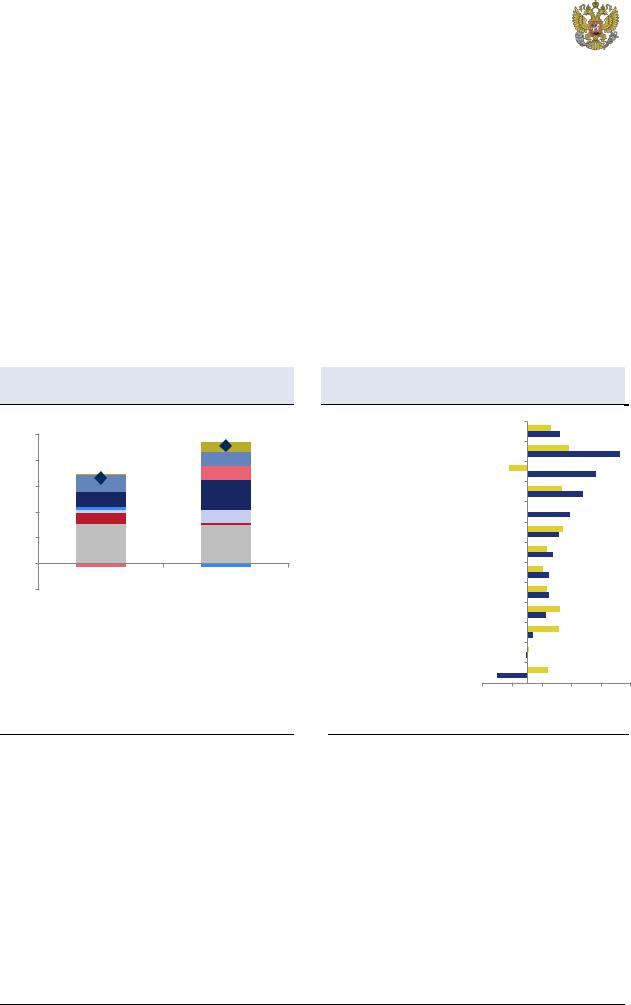
vk.com/id446425943
Министерство экономического развития Российской Федерации
Производственная активность
По данным Росстата, экономический рост по итогам 2018 г. ускорился до 2,3 % с 1,6 % годом ранее.
Темпы роста ВВП превзошли как оценки Минэкономразвития России, осуществленные на основе оперативных данных (см. Картина деловой активности. Январь 2019 года), так и консенсус-прогноз аналитиков (1,7 % в декабре).
В отраслевом разрезе ключевыми драйверами экономического роста стали промышленность и строительство (вклад в экономический рост 0,6 п.п. и 0,3 п.п. соответственно). Позитивный вклад в динамику ВВП также внесли торговля (0,3 п.п.) и транспортная отрасль (0,2 п.п.), в то время как вклад сельского хозяйства был слабоотрицательным на фоне ухудшения урожая ряда ключевых культур (в первую очередь зерновых) и замедления роста выпуска животноводства (см. врезку «Итоги года в сельском хозяйстве»).
Около 0,8 п.п. роста ВВП было обеспечено сектором услуг. По сравнению с предыдущим годом ускорение роста наблюдалось в финансовой и страховой деятельности, деятельности гостиниц и ресторанов, в то время как рост в сфере операций с недвижимым имуществом замедлился.
Рис. 1. Вклады видов экономической деятельности в темпы роста ВВП
вклад, п.п
2,5
2,0 |
|
1,5 |
|
1,0 |
|
0,5 |
|
0,0 |
|
-0,5 |
|
2017 |
2018 |
 транспортировка и хранение
транспортировка и хранение
 торговля оптовая и розничная
торговля оптовая и розничная
 строительство
строительство
 промышленное производство
промышленное производство
 сельское хозяйство
сельское хозяйство
 деятельность финансовая и страховая
деятельность финансовая и страховая
 деятельность по операциям с недвижимым имуществом
деятельность по операциям с недвижимым имуществом
 прочие услуги и чистые налоги
прочие услуги и чистые налоги  ВВП
ВВП
Источник: Росстат, расчеты Минэкономразвития России.
Рис. 2. Темпы роста по основным видам экономической деятельности
% г/г
ВВП
деятельность финансовая и страховая
строительство
добыча полезных ископаемых
транспортировка и хранение
торговля оптовая и розничная
деятельность в области информации и связи
обрабатывающие производства
образование
деятельность профессиональная, научная и техническая
операции с недвижимым имуществом
здравоохранение и социальные услуги
сельское хозяйство
-3 |
-1 |
1 |
3 |
5 |
7 |
 2017
2017  2018
2018
Источник: Росстат, расчеты Минэкономразвития России.
Рост промышленного производства в 2018 г. ускорился до 2,9 % (с 2,1 % в 2017 году).
Рост выпуска в промышленности в прошлом году происходил достаточно равномерно. Годовые темпы ее роста в течение года оставались в пределах 2–4 % (в 2017 г. диапазон колебаний составил практически 9 п.п.).
По итогам года положительную динамику продемонстрировали все укрупненные отрасли промышленности. Продолжался рост в добыче полезных ископаемых и обрабатывающих отраслях, темпы роста электроэнергетики и водоснабжения вернулись в положительную область после спада в 2017 году. В то же время структура роста промышленного производства в течение года менялась. Если в первой половине года расширение выпуска промышленности опиралось на обрабатывающие отрасли, то во втором полугодии драйвером роста стали добывающие производства.
11 февраля 2019 г. |
Страница 2 |
http://new.guap.ru/i04/contacts
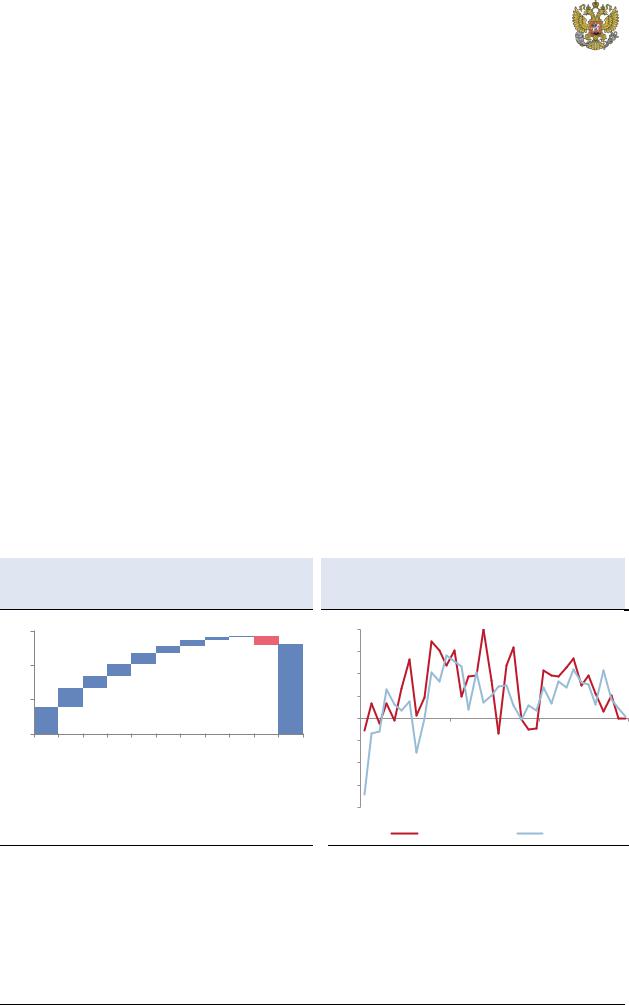
vk.com/id446425943
Министерство экономического развития Российской Федерации
Добыча полезных ископаемых в 2018 г. выросла на 4,1 % (в 2017 г. – на 2,1 %). При этом во второй половине года наблюдалось существенное улучшение ее динамики (4,9 % г/г и 7,2 % г/г в 3кв18 и 4кв18 соответственно после 1,9 % г/г в январе–июне), обусловленное в первую очередь результатами июньского заседания ОПЕК+, на котором было принято решение об увеличении совокупного предложения нефти странами – участницами соглашения приблизительно на 1 млн. барр. / сутки до конца года. В соответствии с новыми параметрами сделки Россия к декабрю нарастила добычу нефти почти на 0,5 млн. барр. / сутки по сравнению с майским уровнем, до исторического максимума 11,45 млн. барр. / сутки. В целом по итогам года добыча нефти и нефтяного (попутного) газа выросла на 1,7 % после падения на 0,2 % годом ранее. Вместе с тем начиная с января 2019 г. новые договоренности ОПЕК+ об ограничении добычи, достигнутые на декабрьском заседании в Вене, будут оказывать сдерживающее влияние на динамику нефтяной отрасли.
Рост в газовой отрасли в 2018 г. также ускорился – до 16,5 % по сравнению с 7,1 % в 2017 году. Высокие темпы роста добычи газа были обеспечены в первую очередь активным ростом выпуска сжиженного природного газа (на 70,1 % в 2018 г. после 7,6 % в 2017 году). В то же время рост производства естественного природного газа по итогам прошлого года замедлился до 5,3 % с
8,7 % в 2017 году.
Позитивные тенденции наблюдались и в добыче ненефтегазовых полезных ископаемых. Добыча угля и металлических руд в 2018 г. продолжала демонстрировать уверенный рост (на 4,2 % и 4,6 % соответственно). Предоставление услуг в области добычи полезных ископаемых второй год подряд росло двузначными темпами.
Динамика обрабатывающей промышленности в 2018 г. сохранилась практически на уровне предыдущего года (2,6 % и 2,5 % соответственно). Как и в 2017 г., ее рост опирался в первую очередь на позитивную динамику основополагающих обрабатывающих производств – химической и пищевой отрасли, деревообработки, производства стройматериалов. Совокупный вклад перечисленных отраслей в темп роста обрабатывающей промышленности в 2018 г. составил 1,9 процентных пункта.
Рис. 3. Все отрасли обрабатывающей |
|
|
Рис. 4. Медианный темп роста обрабатывающей |
||||||||
промышленности внесли положительный вклад в |
промышленности в декабре продолжил |
||||||||||
ее рост в январе–декабре 2018 года |
|
|
снижаться |
|
|
||||||
п.п. |
|
|
|
|
|
|
|
|
% г/г |
|
|
3 |
|
|
|
|
0,2 |
0,1 |
0,0 |
|
8 |
|
|
|
|
|
|
|
|
-0,2 |
|
|
|
|
|
|
|
|
|
|
|
|
|
|
|
|
|
|
|
|
|
0,3 |
0,2 |
|
|
2,6 |
6 |
|
|
2 |
|
|
|
|
|
|
|
|
|
||
|
|
|
|
|
|
|
|
|
|
||
|
|
0,3 |
|
|
|
|
|
4 |
|
|
|
|
|
|
|
|
|
|
|
|
|
||
|
|
0,3 |
|
|
|
|
|
|
|
|
|
|
|
|
|
|
|
|
|
|
|
|
|
1 |
0,6 |
|
|
|
|
|
|
|
2 |
|
|
|
|
|
|
|
|
|
|
|
|
||
0,8 |
|
|
|
|
|
|
|
|
0 |
|
|
0 |
|
комплексхимический |
|
|
машиностроение неметаллическая минеральная… |
прочее |
|
обработка |
-2 |
|
|
пищевая промышленность |
деревообработка |
металлургия |
нефтепродуктыикокс |
легкая промышленность расхождение |
|
|
|||||
-4 |
|
|
|||||||||
|
|
|
|
|
|
|
|
|
|
|
|
|
|
|
|
|
|
|
|
|
-6 |
|
|
|
|
|
|
|
|
|
|
|
-8 |
|
|
|
|
|
|
|
|
|
|
|
2016 |
2017 |
2018 |
|
|
|
|
|
|
|
|
|
|
средняя |
медиана |
Источник: Росстат, расчеты Минэкономразвития России. |
|
Источник: Росстат, расчеты Минэкономразвития России. |
|||||||||
|
|
|
|
|
|
|
|
|
С исключением календарного фактора. |
|
|
По итогам прошлого года небольшой рост выпуска также продемонстрировали металлургия (+1,6 %) и машиностроение (+1,2 %). Вместе с тем динамика указанных отраслей, как и в предшествующие годы, характеризовалась повышенной волатильностью: стандартное отклонение годовых темпов их роста составило 7,9 % и 6,8 % соответственно. Во второй половине года в металлургической и машиностроительной отраслях наметилась тенденция к замедлению роста, что внесло основной вклад в торможение обрабатывающей промышленности в целом.
11 февраля 2019 г. |
Страница 3 |
http://new.guap.ru/i04/contacts

vk.com/id446425943
Министерство экономического развития Российской Федерации
Замедление обрабатывающей промышленности отражает и динамика медианного темпа ее роста, который позволяет сгладить влияние наиболее волатильных компонент. Во втором полугодии показатель рос темпом 1,9 % г/г по сравнению с 3,0 % г/г в январе–июне, а к декабрю замедлился до 0,2 % г/г (темп роста обрабатывающей промышленности, рассчитанный по формуле средней, в последние два месяца 2018 г. находился на нулевом уровне).
Таблица 1. Показатели производственной активности
|
в % к соотв. периоду предыдущего |
|
2018 |
|
|
4кв18 |
|
|
дек.18 |
|
|
ноя.18 |
|
|
окт.18 |
|
|
3кв18 |
|
|
2кв18 |
|
|
1кв18 |
|
|
2017 |
|
|
|
года |
|
|
|
|
|
|
|
|
|
|
|
|
|
|
|
|
|
|
|
|||||||||
|
|
|
|
|
|
|
|
|
|
|
|
|
|
|
|
|
|
|
|
|
|
|
|
|
|
|
|
|
|
ВВП |
|
2,3 |
|
2,5* |
|
2,2* |
|
2,0* |
|
3,4* |
|
2,2* |
|
2,5* |
|
1,8* |
|
1,6 |
|
||||||||||
Сельское хозяйство |
-0,6 |
|
4,1 |
|
-0,1 |
|
-6,1 |
|
12,1 |
|
-5,1 |
|
1,8 |
|
2,4 |
|
3,1 |
|
|||||||||||
Строительство |
|
5,3 |
|
4,1 |
|
2,6 |
|
4,3 |
|
5,7 |
|
5,6 |
|
6,9 |
|
5,2 |
|
-1,2 |
|
||||||||||
Розничная торговля |
2,6 |
|
2,7 |
|
2,3 |
|
3,0 |
|
2,0 |
|
2,6 |
|
2,9 |
|
2,4 |
|
1,3 |
|
|||||||||||
Грузооборот транспорта |
2,9 |
|
2,6 |
|
3,2 |
|
3,0 |
|
1,6 |
|
3,0 |
|
3,4 |
|
2,5 |
|
5,5 |
|
|||||||||||
Промышленное производство |
2,9 |
|
2,7 |
|
2,0 |
|
2,4 |
|
3,7 |
|
2,9 |
|
3,2 |
|
2,8 |
|
2,1 |
|
|||||||||||
Добыча полезных ископаемых |
4,1 |
|
7,2 |
|
6,3 |
|
7,8 |
|
7,4 |
|
4,9 |
|
2,2 |
|
1,5 |
|
2,1 |
|
|||||||||||
добыча угля |
|
4,2 |
|
7,4 |
|
8,8 |
|
8,0 |
|
5,5 |
|
4,6 |
|
3,9 |
|
0,7 |
|
3,7 |
|
||||||||||
добыча сырой нефти и природного |
2,8 |
|
5,7 |
|
5,8 |
|
5,6 |
|
6,1 |
|
4,2 |
|
1,6 |
|
-0,4 |
|
0,4 |
|
|||||||||||
газа |
|
|
|
|
|
|
|
|
|
|
|||||||||||||||||||
|
|
|
|
|
|
|
|
|
|
|
|
|
|
|
|
|
|
|
|
|
|
|
|
|
|
|
|
||
добыча металлических руд |
4,6 |
|
7,3 |
|
7,2 |
|
8,4 |
|
6,3 |
|
5,4 |
|
1,6 |
|
3,7 |
|
3,5 |
|
|||||||||||
добыча прочих полезных ископаемых |
4,0 |
|
7,3 |
|
4,0 |
|
16,9 |
|
1,0 |
|
0,6 |
|
-0,6 |
|
10,7 |
|
15,6 |
|
|||||||||||
Обрабатывающие производства |
2,6 |
|
0,9 |
|
0,0 |
|
0,0 |
|
2,7 |
|
2,2 |
|
4,3 |
|
3,7 |
|
2,5 |
|
|||||||||||
пищевая промышленность |
4,4 |
|
4,9 |
|
5,3 |
|
5,9 |
|
3,6 |
|
4,9 |
|
6,3 |
|
0,7 |
|
1,5 |
|
|||||||||||
легкая промышленность |
2,3 |
|
-2,1 |
|
0,0 |
|
-5,6 |
|
-0,5 |
|
3,6 |
|
3,5 |
|
4,5 |
|
5,4 |
|
|||||||||||
деревообработка |
|
11,7 |
|
13,3 |
|
10,5 |
|
12,8 |
|
16,8 |
|
14,6 |
|
10,9 |
|
5,9 |
|
3,9 |
|
||||||||||
производство кокса и нефтепродуктов |
1,8 |
|
0,7 |
|
0,2 |
|
0,3 |
|
1,5 |
|
1,9 |
|
2,6 |
|
2,2 |
|
1,1 |
|
|||||||||||
химический комплекс |
3,3 |
|
3,3 |
|
5,1 |
|
2,5 |
|
1,8 |
|
4,1 |
|
3,2 |
|
4,2 |
|
5,8 |
|
|||||||||||
производство прочей |
|
|
|
|
|
|
|
|
|
|
|
|
|
|
|
|
|
|
|
|
|
|
|
|
|
|
|
||
неметаллической минеральной |
4,4 |
|
3,3 |
|
2,0 |
|
2,8 |
|
5,1 |
|
11,1 |
|
4,9 |
|
-0,8 |
|
11,2 |
|
|||||||||||
продукции |
|
|
|
|
|
|
|
|
|
|
|
|
|
|
|
|
|
|
|
|
|
|
|
|
|
|
|
|
|
металлургия |
|
1,6 |
|
5,6 |
|
-4,8 |
|
6,4 |
|
15,0 |
|
-2,5 |
|
-0,8 |
|
5,9 |
|
0,8 |
|
||||||||||
машиностроение |
|
1,2 |
|
-4,1 |
|
5,9 |
|
-11,2 |
|
-6,8 |
|
3,7 |
|
7,6 |
|
3,3 |
|
5,6 |
|
||||||||||
прочие производства |
1,4 |
|
-3,0 |
|
-11,8 |
|
-2,2 |
|
8,5 |
|
4,6 |
|
3,4 |
|
5,7 |
|
-2,3 |
|
|||||||||||
Обеспечение |
электроэнергией, |
1,6 |
|
1,2 |
|
4,5 |
|
2,4 |
|
-3,2 |
|
0,5 |
|
0,5 |
|
2,9 |
|
-0,4 |
|
||||||||||
газом и паром |
|
|
|
|
|
|
|
|
|
|
|||||||||||||||||||
|
|
|
|
|
|
|
|
|
|
|
|
|
|
|
|
|
|
|
|
|
|
|
|
|
|
|
|
||
Водоснабжение, водоотведение, |
2,0 |
|
5,2 |
|
3,8 |
|
7,0 |
|
4,8 |
|
4,1 |
|
-1,9 |
|
-2,3 |
|
-2,1 |
|
|||||||||||
утилизация отходов |
|
|
|
|
|
|
|
|
|
||||||||||||||||||||
|
|
|
|
|
|
|
|
|
|
|
|
|
|
|
|
|
|
|
|
|
|
|
|
|
|
|
|||
|
|
|
|
|
|
|
|
|
|
|
|
|
|
|
|
|
|
|
|
|
|
|
|
|
|
|
|
|
|
Источник: Росстат, расчеты Минэкономразвития России
*Оценка Минэкономразвития России.
11 февраля 2019 г. |
Страница 4 |
http://new.guap.ru/i04/contacts
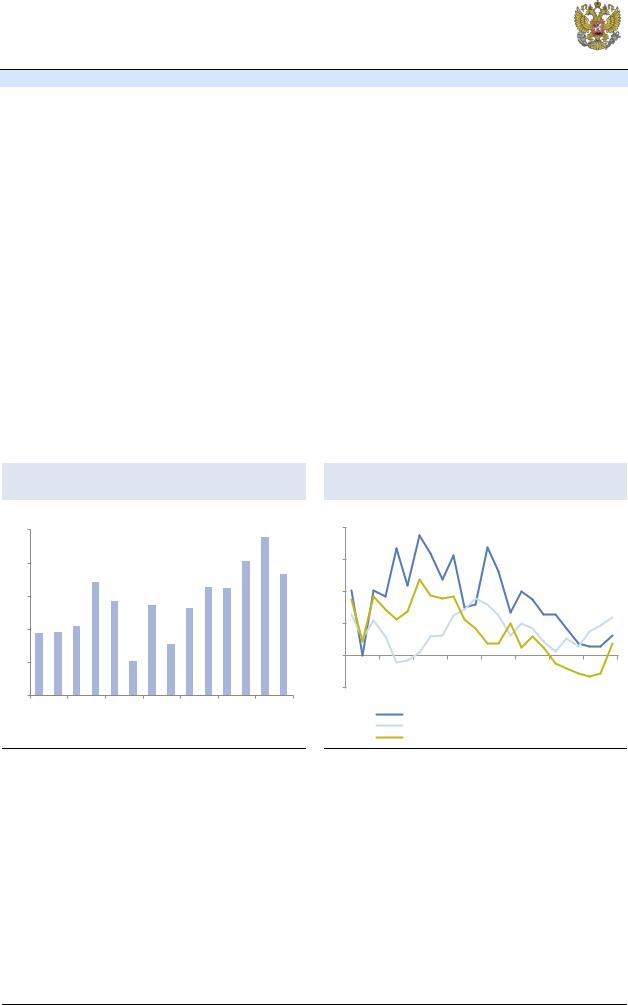
vk.com/id446425943
Министерство экономического развития Российской Федерации
Врезка: Итоги года в сельском хозяйстве
Производство сельскохозяйственной продукции в 2018 г. снизилось на 0,6 % после двух лет уверенного роста (на 3,1 % в 2017 году, на 4,8 % – в 2016 году).
Основную роль в снижении выпуска в сельском хозяйстве в 2018 г. сыграла нормализация урожая зерновых после рекордных показателей предшествующих двух лет. Сбор зерновых и зернобобовых культур в 2018 г. составил 112,9 млн. тонн по сравнению со 120,7 млн. тонн в 2016 г. и 135 млн. тонн в 2017 году, когда был достигнут исторический максимум. Снижение сбора зерновых было обусловлено главным образом снижением урожайности (на 13 %) вследствие неблагоприятных природных условий в различные периоды развития этих культур (засуха в южных регионах страны, аномально низкие температуры в Сибири и на Урале в период посевной, затяжные дожди в центральных регионах в период уборки). Вместе с тем урожай зерна в 2018 г. стал третьим по величине с 1992 года.
Наряду с зерновыми культурами, выраженная негативная динамика также наблюдалась по сбору сахарной свеклы (-20,6 %). Вместе с тем рекордные показатели были зафиксированы по подсолнечнику, урожай которого увеличился на 20,2 % по сравнению в предыдущим годом. Росту сбора подсолнечника способствовало как увеличение посевных площадей, так и рост урожайности за счет благоприятных погодных условий в основных производящих культуру регионах (в 2017 г., напротив, неблагоприятные погодные условия привели к более позднему созреванию культуры и, как следствие, увеличению неубранных площадей).
Снижение выпуска в растениеводстве в 2018 г. не было компенсировано динамикой животноводства. Значительно замедлилось производство скота и птицы, молока. Рост производства яиц практически остановился на фоне снижения поголовья птицы (на 2,3 % г/г).
Рис. 5. В 2018 г. наблюдалась нормализация урожая зерновых
млн. тонн
140
120
100
80
60
40
2005 |
2007 |
2009 |
2011 |
2013 |
2015 |
2017 |
|
|
|
сбор зерновых и зернобобовых культур |
|
||||
|
|
|
|||||
|
|
|
|||||
Источник: Росстат, расчеты Минэкономразвития России.
Рис. 6. Рост производства в животноводстве в |
2018 г. замедлился |
% г/г |
8 |
6 |
4 |
2 |
0 |
-2 |
янв.17 апр.17июл.17 окт.17 янв.18 апр.18июл.18 окт.18 |
скот и птица на убой в живом весе |
молоко |
яйца |
Источник: Росстат, расчеты Минэкономразвития России. |
Таблица 2. Показатели сельского хозяйства в 2018 году
|
2018 |
2017 |
2016 |
2015 |
Растениеводство, млн. тонн |
|
|
|
|
зерновые и зернобобовые культуры |
112,9 |
135,5 |
120,7 |
104,7 |
сахарная свекла |
41,2 |
51,9 |
51,3 |
39,0 |
подсолнечник |
12,6 |
10,5 |
11,0 |
9,3 |
картофель |
22,4 |
21,7 |
22,5 |
25,4 |
овощи |
13,6 |
13,6 |
13,2 |
13,2 |
Животноводство |
|
|
|
|
скот и птица на убой (в живом весе), тыс. тонн |
14,9 |
14,5 |
13,9 |
13,4 |
молоко, тыс. тонн |
30,6 |
30,2 |
29,8 |
29,9 |
яйца, млн. штук |
44,9 |
44,8 |
43,5 |
42,5 |
|
|
|
|
|
11 февраля 2019 г. |
Страница 5 |
http://new.guap.ru/i04/contacts
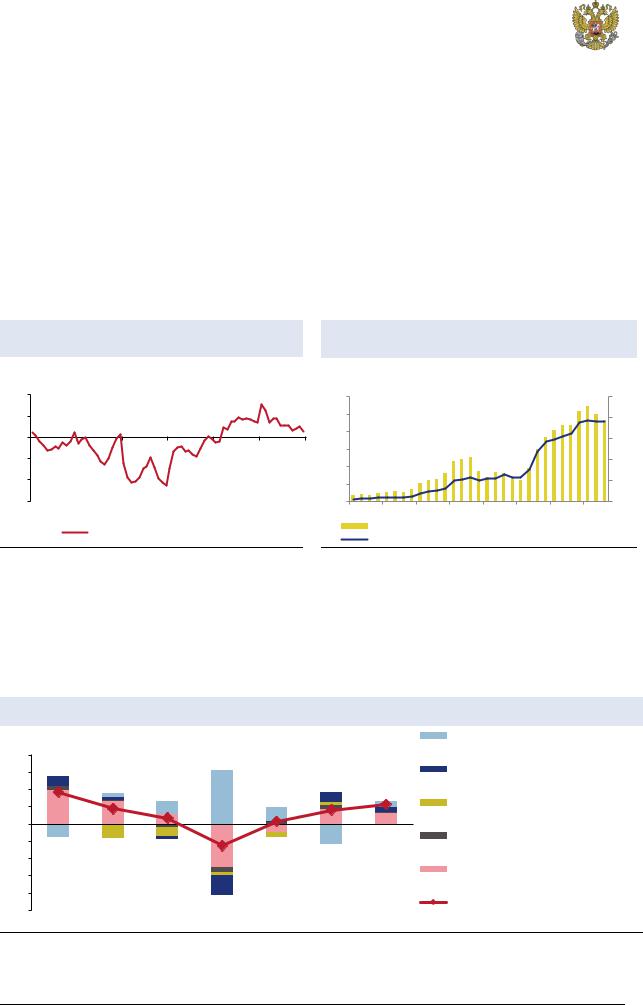
vk.com/id446425943
Министерство экономического развития Российской Федерации
Внутренний спрос
В течение 2018 г. наблюдалось перераспределение источников экономического роста от внутреннего спроса к внешнему.
Основной вклад в рост ВВП в 2018 г. внес потребительский спрос, который увеличился на 2,2 % по сравнению с 3,2 % в 2017 году.
Оборот розничной торговли в 2018 г. вырос на 2,6 % после 1,3 % годом ранее, в том числе за счет расширения спроса на товары длительного пользования. Автомобильный рынок второй год подряд показал двузначный рост (на 12,8 % в 2018 г. после 11,9 % в 2017 году). Кроме того, рост оборота общественного питания ускорился до 3,6 % в 2018 г. с 3,2 % в 2017 году, что стало отражением в том числе проведенного в России чемпионата мира по футболу. Вместе с тем перечисленные индикаторы потребительского спроса в течение года демонстрировали нисходящую годовую динамику. Так, темпы роста продаж легковых автомобилей в декабре составили 5,6 % г/г, что стало самым низким показателем с начала восстановления автомобильного рынка в 1кв17.
Рис. 7. Темпы роста продаж новых легковых |
Рис. 8. Рост покупок товаров в иностранных |
||||||||||||
автомобилей в течение года снижались |
|
Интернет-магазинах также замедлился |
|
||||||||||
%г/г |
|
|
|
|
|
млрд. |
|
|
|
|
|
|
млрд. |
|
|
|
|
|
|
долл. США |
|
|
|
|
|
рублей |
|
40 |
|
|
|
|
|
3,0 |
|
|
|
|
|
|
200 |
20 |
|
|
|
|
|
2,5 |
|
|
|
|
|
|
160 |
0 |
|
|
|
|
|
2,0 |
|
|
|
|
|
|
120 |
|
|
|
|
|
|
|
|
|
|
|
|
||
-20 |
|
|
|
|
|
1,5 |
|
|
|
|
|
|
|
|
|
|
|
|
1,0 |
|
|
|
|
|
|
80 |
|
|
|
|
|
|
|
|
|
|
|
|
|
|
|
-40 |
|
|
|
|
|
0,5 |
|
|
|
|
|
|
40 |
|
|
|
|
|
|
|
|
|
|
|
|
|
|
-60 |
|
|
|
|
|
0,0 |
|
|
|
|
|
|
0 |
2013 |
2014 |
2015 |
2016 |
2017 |
2018 |
2011 |
2012 |
2013 |
2014 |
2015 |
2016 |
2017 |
2018 |
|
|
продажи легковых автомобилей |
|
покупки в зарубежных Интернет-магазинах |
|
||||||||
|
|
|
покупки в зарубежных Интернет-магазинах, правая ось |
||||||||||
|
|
|
|
|
|
|
|||||||
Источник: Росстат, расчеты Минэкономразвития России. |
Источник: Банк России, расчеты Минэкономразвития России. |
Прочие компоненты потребительского спроса, которые включаются в показатель конечного потребления домашних хозяйств, в 2018 г. продолжили демонстрировать позитивную динамику, однако темпы их роста снизились по сравнению с 2017 годом. По данным Росавиации, рост пассажирских перевозок в 2018 г. замедлился до 10,6 % с 18,6 % годом ранее, главным образом за счет международных направлений. Покупки в зарубежных Интернет-магазинах в январе сентябре 2018 г. увеличились на 6,5 % в долларовом эквиваленте после роста на 83,9 % в 2017 г. (в рублевом эквиваленте – 17,9% г/г против 63,7% соответственно).
Рис. 11. Основной вклад в ускорение ВВП в 2018 г. внес внешний спрос |
||||||
вклад в прирост |
|
|
|
|
|
чистый экспорт |
ВВП, п.п. |
|
|
|
|
|
|
8 |
|
|
|
|
|
|
6 |
|
|
|
|
|
валовое накопление основного |
|
|
|
|
|
капитала |
|
4 |
|
|
|
|
|
|
|
|
|
|
|
|
|
2 |
|
|
|
|
|
изменение запасов материальных |
|
|
|
|
|
оборотных средств |
|
0 |
|
|
|
|
|
|
|
|
|
|
|
|
|
-2 |
|
|
|
|
|
расходы на конечное потребление |
|
|
|
|
|
органов государственного |
|
|
|
|
|
|
|
|
-4 |
|
|
|
|
|
управления |
-6 |
|
|
|
|
|
расходы на конечное потребление |
|
|
|
|
|
домашних хозяйств |
|
|
|
|
|
|
|
|
-8 |
|
|
|
|
|
ВВП |
-10 |
|
|
|
|
|
|
|
|
|
|
|
|
|
2012 |
2013 |
2014 |
2015 |
2016 |
2017 |
2018 |
Источник: Росстат, расчеты Минэкономразвития России. |
|
|
||||
Рост валового накопления основного капитала замедлился до 2,3 % в 2018 г. (с 5,5 % в 2017 г.) при |
||||||
сохранении инвестиционной активности приблизительно на уровне прошлого года (4,1 % г/г, |
||||||
согласно оперативным данным Росстат за январь–сентябрь 2018 года). По информации Росстата, |
||||||
11 февраля 2019 г. |
Страница 6 |
http://new.guap.ru/i04/contacts

vk.com/id446425943
Министерство экономического развития Российской Федерации
опубликованной на официальном сайте, это обусловлено тем, что приобретение продуктов интеллектуальной собственности и других активов, не включаемых в состав инвестиций в основной капитал, по предварительной оценке, сократилось.
На фоне ослабления рубля темпы роста импорта товаров и услуг снизились до 3,8 % в 2018 г. после 17,4 % годом ранее. При этом экспорт товаров и услуг продолжал уверенно расти (на 6,3 % в реальном выражении после 5,0 % годом ранее). В результате вклад чистого экспорта в темпы роста ВВП в 2018 г., по оценке, составил 0,8 п.п. (по сравнению с -2,3 п.п. годом ранее). Таким образом, чистый экспорт более чем компенсировал замедление внутреннего спроса и стал основным драйвером ускорения роста ВВП в 2018 году.
Таблица 3. Показатели потребительской активности
|
2018 |
4кв18 |
дек.18 |
ноя.18 |
окт.18 |
3кв18 |
2кв18 |
1кв18 |
2017 |
2016 |
|
|
|
|
|
|
|
|
|
|
|
Оборот розничной торговли |
|
|
|
|
|
|
|
|
|
|
в % к соотв. периоду предыдущего года |
2,6 |
2,7 |
2,3 |
3,0 |
2,0 |
2,6 |
2,9 |
2,4 |
1,3 |
-4,6 |
в % к предыдущему периоду (SA) |
|
0,5 |
-0,1 |
0,5 |
0,1 |
0,5 |
0,8 |
0,5 |
|
|
Продовольственные товары |
|
|
|
|
|
|
|
|
|
|
в % к соотв. периоду предыдущего года |
1,7 |
1,9 |
1,8 |
1,6 |
0,4 |
1,0 |
2,6 |
1,9 |
1,1 |
-5,0 |
в % к предыдущему периоду (SA) |
|
0,5 |
0,2 |
0,5 |
0,2 |
0,0 |
0,7 |
0,0 |
|
|
Непродовольственные товары |
|
|
|
|
|
|
|
|
|
|
в % к соотв. периоду предыдущего года |
3,4 |
3,4 |
2,8 |
4,3 |
3,4 |
4,1 |
3,3 |
2,8 |
1,5 |
-4,2 |
в % к предыдущему периоду (SA) |
|
0,6 |
-0,2 |
0,5 |
0,0 |
1,0 |
0,8 |
1,0 |
|
|
Платные услуги |
|
|
|
|
|
|
|
|
|
|
в % к соотв. периоду предыдущего года |
2,5 |
1,9 |
1,6 |
2,3 |
1,8 |
2,8 |
4,0 |
2,0 |
1,4 |
0,7 |
в % к предыдущему периоду (SA) |
|
0,1 |
0,0 |
0,7 |
-0,4 |
0,1 |
1,0 |
0,8 |
|
|
|
|
|
|
|
|
|
|
|||
Источник: Росстат, расчеты Минэкономразвития России. |
|
|
|
|
|
|
|
|||
Таблица 4. Показатели инвестиционной активности |
|
|
|
|
|
|
||||
|
2018 |
4кв18 |
дек.18 |
|
ноя.18 |
|
окт.18 |
|
3кв18 |
|
2кв18 |
1кв18 |
2017 |
|
Инвестиции в основной капитал |
|
|
|
|
|
|
|
|
|
|
|
|
|
|
% к соответствующему периоду |
|
|
|
|
|
|
|
|
5,2 |
|
2,8 |
3,6 |
4,8 |
|
предыдущего года |
|
|
|
|
|
|
|
|
|
|
||||
|
|
|
|
|
|
|
|
|
|
|
|
|
|
|
% к предыдущему периоду (SA) |
|
|
|
|
|
|
|
|
1,5 |
|
1,0 |
0,8 |
|
|
Строительство |
|
|
|
|
|
|
|
|
|
|
|
|
|
|
% к соответствующему периоду |
5,3 |
4,1 |
2,6 |
|
4,3 |
|
5,7 |
|
5,6 |
|
6,9 |
5,2 |
-1,2 |
|
предыдущего года |
|
|
|
|
|
|||||||||
|
|
|
|
|
|
|
|
|
|
|
|
|
|
|
% к предыдущему периоду (SA) |
|
0,9 |
0,4 |
|
0,6 |
|
0,2 |
|
0,9 |
|
1,3 |
3,3 |
|
|
Производство инвесттоваров1 |
|
|
|
|
|
|
|
|
|
|
|
|
|
|
% к соответствующему периоду |
8,4 |
3,9 |
3,6 |
|
2,3 |
|
5,6 |
|
13,7 |
|
8,9 |
6,7 |
13,2 |
|
предыдущего года |
|
|
|
|
|
|||||||||
|
|
|
|
|
|
|
|
|
|
|
|
|
|
|
% к предыдущему периоду (SA) |
|
0,6 |
1,3 |
|
1,0 |
|
-9,4 |
|
0,9 |
|
2,0 |
0,9 |
|
|
Импорт инвесттоваров из дальнего |
|
|
|
|
|
|
|
|
|
|
|
|
|
|
зарубежья |
|
|
|
|
|
|
|
|
|
|
|
|
|
|
% к соответствующему периоду |
9,0 |
-1,6 |
-8,3 |
|
0,3 |
|
3,9 |
|
-0,5 |
|
14,7 |
32,3 |
28,5 |
|
предыдущего года |
|
|
|
|
|
|||||||||
|
|
|
|
|
|
|
|
|
|
|
|
|
|
|
% к предыдущему периоду (SA) |
|
-3,8 |
-3,4 |
|
1,7 |
|
-2,3 |
|
-4,3 |
|
-0,9 |
2,9 |
|
|
Импорт инвестиционных товаров2 |
|
|
|
|
|
|
|
|
|
|
|
|
|
|
% к соответствующему периоду |
|
|
|
|
-11,6 |
|
-34,6 |
|
-29,8 |
|
-0,2 |
29,9 |
40,7 |
|
предыдущего года |
|
|
|
|
|
|
|
|
||||||
|
|
|
|
|
|
|
|
|
|
|
|
|
|
|
% к предыдущему периоду (SA) |
|
|
|
|
8,9 |
|
-6,1 |
|
-16,4 |
|
-11,3 |
-9,8 |
|
|
Грузоперевозки инвест. товаров3 |
|
|
|
|
|
|
|
|
|
|
|
|
|
|
% к соответствующему периоду |
-6,7 |
-8,3 |
-6,6 |
|
-8,2 |
|
-9,8 |
|
-11,3 |
|
-7,3 |
2,4 |
-4,8 |
|
предыдущего года |
|
|
|
|
|
|||||||||
|
|
|
|
|
|
|
|
|
|
|
|
|
|
|
% к предыдущему периоду (SA) |
|
1,0 |
0,9 |
|
1,6 |
|
0,6 |
|
-5,2 |
|
-7,5 |
-1,9 |
|
|
|
|
|
|
|
|
|
|
|
|
|
|
|
|
|
1 Индекс производства инвестиционных товаров рассчитан на основе индексов физического объема производства отдельных видов экономической деятельности, доли рассчитаны на основе стоимостных объемов отгрузки по каждому виду деятельности.
2 Индекс импорта инвестиционных товаров рассчитан на основе физических объемов импорта отдельных товаров, доли рассчитаны на основе стоимостных объемов импорта в текущем году по каждому товару.
3 Индекс погрузки инвестиционных товаров железнодорожным транспортом рассчитан путем нормирования суммы погрузки трех типов грузов – строительных грузов, цемента, машин и оборудования.
11 февраля 2019 г. |
Страница 7 |
http://new.guap.ru/i04/contacts
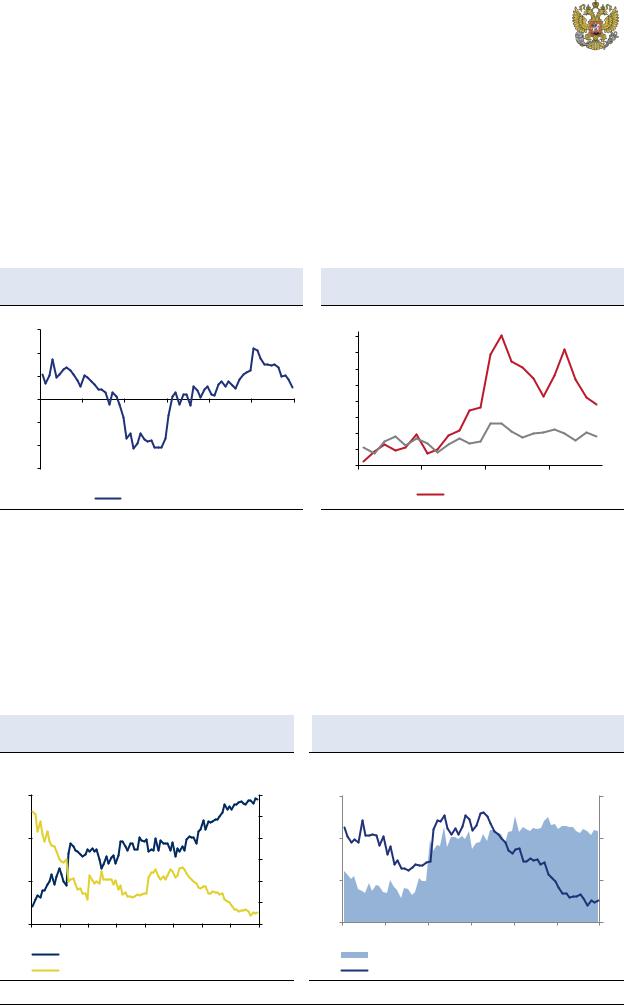
vk.com/id446425943
Министерство экономического развития Российской Федерации
Рынок труда
Ситуация на рынке труда в 2018 г. характеризовалась активным ростом заработных плат как в социальном, так и во внебюджетном секторах.
По предварительной оценке Росстата, в целом за 2018 год рост реальной заработной платы составил 6,8 % (в 2017 г. – 2,9 %).
Существенное увеличение темпов роста заработных плат в 2018 г. было связано в первую очередь с достижением соотношений, установленных указами Президента Российской Федерации в части повышения оплаты труда отдельных категорий работников бюджетной сферы. По оценке Минэкономразвития России, темп роста реальных заработных плат в социальном секторе экономики в январе–ноябре составил 16,8 % г/г.
Рис. 12. В 2018 г. рост реальной заработной |
|||||
платы ускорился… |
|
|
|
||
% г/г |
|
|
|
|
|
15 |
|
|
|
|
|
10 |
|
|
|
|
|
5 |
|
|
|
|
|
0 |
|
|
|
|
|
-5 |
|
|
|
|
|
-10 |
|
|
|
|
|
-15 |
|
|
|
|
|
2013 |
2014 |
2015 |
2016 |
2017 |
2018 |
|
|
реальная зарплата |
|
||
Рис. 13. … на фоне опережающего роста в |
|||
социальном секторе |
|
|
|
% г/г |
|
|
|
27 |
|
|
|
24 |
|
|
|
21 |
|
|
|
18 |
|
|
|
15 |
|
|
|
12 |
|
|
|
9 |
|
|
|
6 |
|
|
|
3 |
|
|
|
янв.17 |
июл.17 |
янв.18 |
июл.18 |
|
|
социальный сектор |
|
Источник: Росстат, расчеты Минэкономразвития России. |
Источник: Росстат, расчеты Минэкономразвития России. |
||||||
Декабрь 2018 г. – оценка Росстата. |
|
|
|
|
|
|
|
Рост заработных плат в частном секторе, по оценке Минэкономразвития России, составил 6,3 % г/г |
|||||||
в реальном выражении в январе–ноябре 2018 года. Дополнительными факторами роста |
|||||||
заработных плат как в социальном, так и во внебюджетном секторах в 2018 г. стали индексация |
|||||||
оплаты труда других работников бюджетной сферы и повышение минимального размера оплаты |
|||||||
труда с 1 января и с 1 мая 2018 года. |
|
|
|
|
|
|
|
В конце года наметилась тенденция к стабилизации роста реальных заработных плат (по |
|||||||
предварительной оценке Росстата, 2,5 % г/г в декабре). Данное замедление было ожидаемым и |
|||||||
было связано с изменением внутригодовой динамики оплаты труда в социальном секторе в 2018 г. |
|||||||
из-за особенностей достижения установленных президентскими указами целевых соотношений, а |
|||||||
также с ускорением потребительской инфляции во второй половине года. |
|
|
|||||
Рис. 14. Безработица в течение 2018 г. достигла |
Рис. 15. …в условиях стагнации численности |
||||||
исторических минимумов… |
|
рабочей силы |
|
|
|
|
|
% к числ. |
% к раб. |
% от |
|
|
|
|
млн. чел. |
населения |
силе |
рабочей |
|
|
|
|
|
|
|
|
|
|
|||
|
|
силы |
|
|
|
|
|
60 |
7,5 |
6,0 |
|
|
|
|
77 |
|
7,0 |
|
|
|
|
|
|
59 |
6,5 |
5,5 |
|
|
|
|
76 |
|
6,0 |
|
|
|
|
|
|
58 |
5,5 |
5,0 |
|
|
|
|
75 |
|
5,0 |
|
|
|
|
|
|
57 |
4,5 |
4,5 |
|
|
|
|
74 |
2011 2012 2013 2014 2015 2016 2017 2018 |
|
2013 |
2014 |
2015 |
2016 |
2017 |
2018 |
уровень занятости, sa |
|
|
численность рабочей силы, SA (правая шкала) |
||||
уровень безработицы (правая шкала), sa |
|
уровень безработицы, SA |
|
|
|||
Источник: Росстат, расчеты Минэкономразвития России. |
Источник: Росстат, расчеты Минэкономразвития России. |
||||||
11 февраля 2019 г. |
Страница 8 |
|
|
|
|
|
|
http://new.guap.ru/i04/contacts |
|
|
|
|
|
|
|
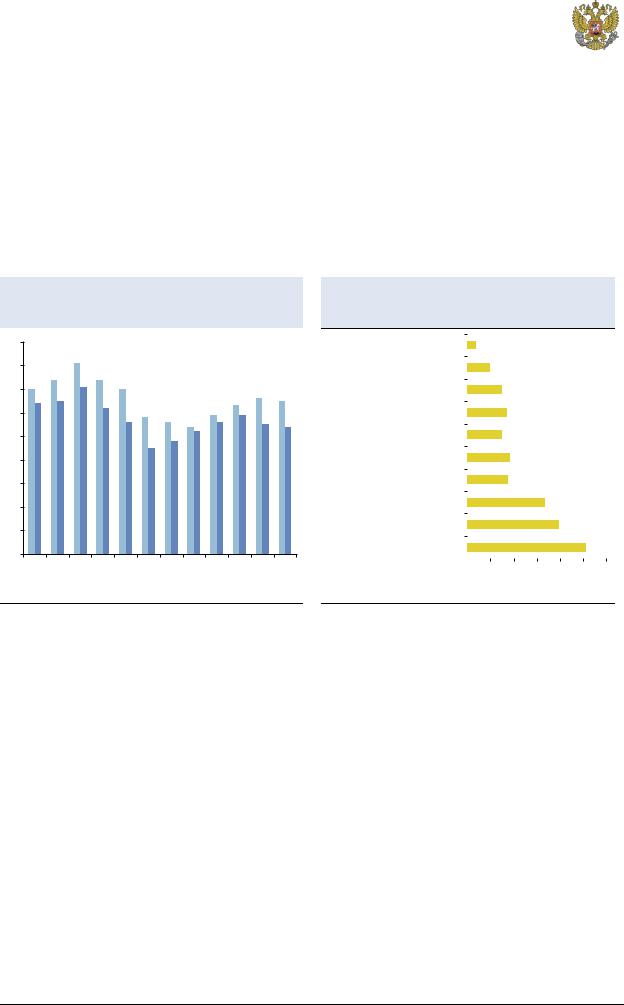
vk.com/id446425943
Министерство экономического развития Российской Федерации
Уровень безработицы в 2018 г. опустился до исторического минимума 4,8 %.
В целом за 2018 г. совокупная численность рабочей силы изменилась незначительно, снизившись по сравнению с 2017 годом на 95,3 тыс. человек (-0,1 %). При этом наблюдалось дальнейшее перераспределение рабочей силы между занятыми и безработными. Численность занятого населения увеличилась на 215,7 тыс. человек (+0,3 %) за счет снижения общей численности безработных на 311,0 тыс. человек (-7,8 %).
Об ограничениях на рынке труда свидетельствуют и данные компании HeadHunter. Публикуемый ею hh-индекс, который показывает дефицитность специалистов через отношение количества активных резюме к вакансиям, снизился по сравнению с предыдущим годом на 0,9 п. (до 5,7 пунктов в среднем за 2018 год). На протяжении 2018 г. ограниченное предложение кадров требуемой квалификации наблюдалось среди рабочего персонала, медицины и фармацевтики.
Рис. 16. За 2018 год hh-индекс снизился по сравнению с 2017 годом
9
8
7
6
5
4
3
2
1
0
янв фев мар апр май июн июл авг сен окт ноя дек
|
2017 |
|
2018 |
|
|
||
|
|
Источник: HeadHunter, расчеты Минэкономразвития России.
hh-индекс рассчитывается как отношение количества активных резюме к вакансиям. Чем ниже значение индекса, тем выше дефицитность специалистов.
Рис. 17. Ограниченное предложение кадров наблюдается в некоторых сферах экономической деятельности
рабочий персонал |
|
0,8 |
|
|
|
|
|
|
|||
медицина, фармацевтика |
|
|
2,0 |
|
|
|
|
|
|||
продажи |
|
|
3,0 |
|
|
|
|
|
|||
банки, инвестиции, лизинг |
|
|
3,4 |
|
|
|
|
|
|||
строительство, недвижимость |
|
|
3,0 |
|
|
|
|
|
|||
производство |
|
|
3,7 |
|
|
|
|
|
|||
транспорт, логистика |
|
|
3,5 |
|
|
|
|
|
|||
административный персонал |
|
|
|
|
6,7 |
|
|
|
|||
бухгалтерия, управленческий |
|
|
|
|
|
7,9 |
|
|
|||
учет, финансы предприятия |
|
|
|
|
|
|
|
||||
|
|
|
|
|
|
|
|
||||
начало карьеры, студенты |
|
|
|
|
|
|
10,2 |
||||
|
|
|
|
|
|
|
|
|
|
|
|
0 |
2 |
4 |
6 |
8 |
10 |
12 |
|||||
|
|
hh-индекс |
|
|
|
|
|
|
|||
|
|
|
|
|
|
|
|
||||
|
|
|
|
|
|
|
|
||||
Источник: HeadHunter, расчеты Минэкономразвития России.
11 февраля 2019 г. |
Страница 9 |
http://new.guap.ru/i04/contacts

vk.com/id446425943
Министерство экономического развития Российской Федерации
Таблица 5. Показатели рынка труда
|
2018 |
4кв18 |
дек.18 |
|
ноя.18 |
|
окт.18 |
|
3кв18 |
|
2кв18 |
|
1кв18 |
2017 |
2016 |
|
Реальная заработная плата |
|
|
|
|
|
|
|
|
|
|
|
|
|
|
|
|
в % к соотв. периоду предыдущего |
6,8 |
3,8 |
2,5 |
|
4,2 |
|
5,2 |
|
6,3 |
|
7,6 |
|
10,2 |
2,9 |
0,8 |
|
года |
|
|
|
|
|
|
||||||||||
|
|
|
|
|
|
|
|
|
|
|
|
|
|
|
|
|
в % к предыдущему периоду (SA) |
|
0,3 |
-0,6 |
|
0,0 |
|
0,6 |
|
0,5 |
|
0,4 |
|
4,0 |
|
|
|
Номинальная заработная плата
в% к соотв. периоду предыдущего года
в% к предыдущему периоду (SA)
Реальные располагаемые доходы
в% к соотв. периоду предыдущего года
в% к предыдущему периоду (SA)
в% к соотв. периоду предыдущего года с искл. валюты, недвижимости
Численность рабочей силы*
9,9 |
7,8 |
6,9 |
8,2 |
8,9 |
9,5 |
10,1 |
12,7 |
6,7 |
7,9 |
|
1,6 |
0,0 |
0,4 |
1,0 |
2,0 |
1,5 |
4,0 |
|
|
-0,2/ |
-0,7 |
0,1 |
-3,1 |
0,3 |
-1,6 |
1,3 |
0,3/ |
-1,2 |
-5,8 |
0,32 |
2,34 |
||||||||
|
-0,1 |
1,9 |
-1,7 |
0,7 |
-1,0 |
-0,6 |
0,9 |
|
|
-0,4 |
-0,5 |
0,4 |
-3,1 |
0,4 |
-2,0 |
0,8 |
0,0/ |
-0,5 |
-4,8 |
2,11 |
в % к соотв. периоду предыдущего |
-0,1 |
-0,3 |
-0,2 |
-0,1 |
-0,6 |
-0,2 |
0,0 |
0,0 |
-0,7 |
0,1 |
|
года |
|||||||||||
|
|
|
|
|
|
|
|
|
|
||
млн. чел. (SA) |
|
76,1 |
76,2 |
76,2 |
76,1 |
76,2 |
76,2 |
76,3 |
|
|
|
Численность занятых* |
|
|
|
|
|
|
|
|
|
|
|
в % к соотв. периоду предыдущего |
0,3 |
-0,1 |
0,0 |
0,2 |
-0,3 |
0,3 |
0,5 |
0,5 |
-0,3 |
0,1 |
|
года |
|||||||||||
|
|
|
|
|
|
|
|
|
|
||
млн. чел. (SA) |
|
72,5 |
72,5 |
72,6 |
72,4 |
72,5 |
72,6 |
72,5 |
|
|
|
Численность безработных* |
|
|
|
|
|
|
|
|
|
|
|
в % к соотв. периоду предыдущего |
-7,8 |
-5,7 |
-4,6 |
-6,0 |
-6,4 |
-8,5 |
-8,4 |
-8,7 |
-6,5 |
-0,5 |
|
года |
|||||||||||
|
|
|
|
|
|
|
|
|
|
||
млн. чел. (SA) |
|
3,6 |
3,6 |
3,6 |
3,6 |
3,6 |
3,7 |
3,7 |
|
|
|
Уровень занятости* |
|
|
|
|
|
|
|
|
|
|
|
в % к населению в возрасте |
|
59,9 |
59,9 |
59,9 |
59,8 |
59,8 |
59,8 |
59,7 |
|
|
|
15 лет и старше (SA) |
|
|
|
||||||||
|
|
|
|
|
|
|
|
|
|
||
Уровень безработицы** |
|
|
|
|
|
|
|
|
|
|
|
в % к рабочей силе /SA |
4,8/- |
4,8/4,8 |
4,8/4,8 |
4,8/4,7 |
4,7/4,8 |
4,6/4,8 |
4,8/4,8 |
5,1/4,9 |
5,2/- |
5,5/- |
*Данные за 2016–2017 гг. представлены по возрастной группе «15–72 года», за 2018 год – по возрастной группе «15 лет и старше».
**Данные за 2016 год представлены по возрастной группе «15–72 года», за 2017–2018 год – по возрастной группе «15 лет и старше».
Источник: Росстат, расчеты Минэкономразвития России.
4 С учетом/ без учета единовременной денежной выплаты пенсионерам в размере 5 тыс. рублей в январе 2017 года.
11 февраля 2019 г. |
Страница 10 |
http://new.guap.ru/i04/contacts
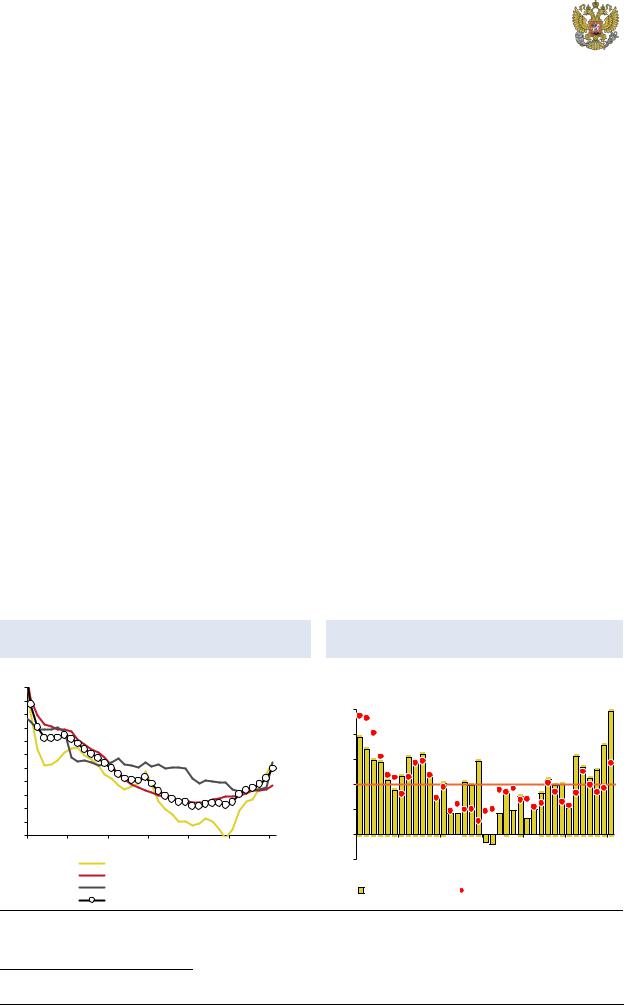
vk.com/id446425943
Министерство экономического развития Российской Федерации
Инфляция
Инфляция в январе 2019 г. составила 1,0 % м/м, оказавшись ниже официального прогноза Минэкономразвития России. По сравнению с соответствующим периодом предыдущего года инфляция в январе ускорилась до 5,0 % г/г после 4,3 % г/г в декабре 2018 года. С учетом данных за первые несколько дней февраля, показывающих замедление среднесуточного темпа роста цен, можно сделать вывод о том, что эффект от повышения НДС оказался меньше предварительных оценок.
Значимый вклад (+0,24 п.п.) в инфляцию в январе внесла индексация регулируемых цен и тарифов. При этом стоимость коммунальных услуг выросла на 2,6 % м/м, в том числе в результате повышения НДС и изменения порядка оплаты услуги по вывозу твердых коммунальных отходов. В июле динамика тарифов окажет понижательное давление на годовую инфляцию, в силу более низкого уровня индексации по сравнению с прошлым годом.
Темп роста цен на непродовольственные товары за исключением подакцизной продукции ускорился с 0,3 % м/м до 0,6 % м/м (с исключением сезонного фактора – значения аналогичны) при том, что 86% данной группы товаров облагается базовой ставкой НДС. Ускорение темпа роста цен на бензин было более заметным – до 0,8 % м/м SA в январе с 0,2 % м/м SA в декабре прошлого года (0,8 % м/м в январе после снижения на 0,1 % м/м месяцем ранее). Темп роста цен на табачные изделия остался практически неизменным: 0,8 % м/м SA в январе 2019 г. после 0,9 % м/м SA в декабре 2018 г. (0,8 % м/м в январе после 0,7 % м/м месяцем ранее).
Инфляция в сегменте продовольственных товаров, большинство из которых облагается льготной ставкой НДС, в январе 2019 года замедлилась до 0,6 % м/м SA с 1,0 % м/м SA
месяцем ранее (1,3 % м/м в январе после 1,7 % м/м в декабре). Замедление темпов роста цен наблюдалось как в сегменте плодоовощной продукции, так и в сегменте других продовольственных товаров.
Монетарная5 инфляция в январе ускорилась до 0,46 % м/м SA с 0,30 % м/м SA в декабре.
Показатель, приведенный к годовым темпам роста, ускорился до 5,71 % м/м SAAR. По оценке, такое ускорение является временным.
В феврале 2019 г. инфляция, по оценке, составит 0,5–0,6% м/м (5,2–5,4 % г/г). При этом пиковые значения (5,5–5,7 % г/г) инфляция пройдет в марте–мае текущего года. По итогам года при сохранении стабильного курса рубля инфляция опустится ниже 5 %.
Рис. 18. Потребительская инфляция ускорилась… |
Рис. 19. …в том числе за счет монетарного |
|
|||||
|
|
|
|
компонента |
|
|
|
% г/г |
|
|
|
|
|
|
|
11 |
|
|
|
% |
|
|
|
10 |
|
|
|
|
|
|
|
|
|
|
10 |
|
|
|
|
9 |
|
|
|
|
|
|
|
|
|
|
|
|
|
|
|
8 |
|
|
|
8 |
|
|
|
7 |
|
|
|
|
|
|
|
|
|
|
|
|
|
|
|
6 |
|
|
|
6 |
|
|
|
5 |
|
|
|
|
|
|
|
|
|
|
|
|
|
|
|
4 |
|
|
|
4 |
|
|
|
|
|
|
|
|
|
|
|
3 |
|
|
|
|
|
|
|
2 |
|
|
|
2 |
|
|
|
1 |
|
|
|
|
|
|
|
0 |
|
|
|
0 |
|
|
|
янв.16 |
июл.16 |
янв.17 июл.17 янв.18 июл.18 |
янв.19 |
|
|
|
|
|
|
продовольствие |
|
-2 |
|
|
|
|
|
|
янв.16 июл.16 |
янв.17 |
июл.17 янв.18 июл.18 |
янв.19 |
|
|
|
монетарная инфляция |
|
||||
|
|
|
|
|
|
|
|
|
|
тарифы |
|
ИПЦ, м/м SAAR |
базовая инфляция, м/м SAAR |
||
|
|
инфляция |
|
||||
|
|
|
|
|
|
|
|
Источник: Росстат, расчеты Минэкономразвития России. |
Источник: Росстат, расчеты Минэкономразвития России. |
|
|||||
5 Инфляция, за исключением продовольствия, регулируемых цен и тарифов и подакцизной продукции.
11 февраля 2019 г. |
Страница 11 |
http://new.guap.ru/i04/contacts

vk.com/id446425943
Министерство экономического развития Российской Федерации
Таблица 6. Индикаторы инфляции
|
янв.18 |
дек.18 |
ноя.18 |
окт.18 |
2017 |
2016 |
2015 |
Инфляция |
|
|
|
|
|
|
|
в % к соотв. периоду предыдущего года |
5,0 |
4,3 |
3,8 |
3,5 |
2,5 |
5,4 |
12,9 |
в % к предыдущему месяцу |
1,0 |
0,8 |
0,5 |
0,4 |
- |
- |
- |
в % к предыдущему месяцу, SA |
0,8 |
0,6 |
0,4 |
0,4 |
- |
- |
- |
Продовольственные товары |
|
|
|
|
|
|
|
в % к соотв. периоду предыдущего года |
5,5 |
4,7 |
3,5 |
2,7 |
1,1 |
4,6 |
14,0 |
в % к предыдущему месяцу |
1,3 |
1,7 |
1,0 |
0,6 |
- |
- |
- |
в % к предыдущему месяцу, SA |
0,6 |
1,0 |
0,6 |
0,4 |
- |
- |
- |
Непродовольственные товары |
|
|
|
|
|
|
|
в % к соотв. периоду предыдущего года |
4,5 |
4,1 |
4,2 |
4,1 |
2,8 |
6,5 |
13,7 |
в % к предыдущему месяцу |
0,6 |
0,2 |
0,4 |
0,5 |
- |
- |
- |
в % к предыдущему месяцу, SA |
0,6 |
0,3 |
0,3 |
0,3 |
- |
- |
- |
Услуги |
|
|
|
|
|
|
|
в % к соотв. периоду предыдущего года |
5,0 |
3,9 |
3,8 |
4,0 |
4,4 |
4,9 |
10,2 |
в % к предыдущему месяцу |
1,1 |
0,4 |
0,0 |
-0,1 |
- |
- |
- |
в % к предыдущему месяцу, SA |
1,3 |
0,3 |
0,3 |
0,3 |
- |
- |
- |
Базовая инфляция (Росстат) |
|
|
|
|
|
|
|
в % к соотв. периоду предыдущего года |
4,1 |
3,7 |
3,4 |
3,1 |
2,1 |
6,0 |
13,7 |
в % к предыдущему месяцу |
0,6 |
0,5 |
0,4 |
0,4 |
- |
- |
- |
в % к предыдущему месяцу, SA |
0,4 |
0,4 |
0,4 |
0,4 |
- |
- |
- |
Инфляция, за искл. продовольствия, регулируемых |
|
|
|
|
|
|
|
цен и тарифов и подакцизной продукции |
|
|
|
|
|
|
|
в % к соотв. периоду предыдущего года |
3,8 |
3,4 |
3,4 |
3,4 |
2,6 |
5,8 |
12,9 |
в % к предыдущему месяцу |
0,6 |
0,3 |
0,3 |
0,3 |
- |
- |
- |
в % к предыдущему месяцу, SA |
0,5 |
0,3 |
0,3 |
0,3 |
- |
- |
- |
11 февраля 2019 г. |
Страница 12 |
http://new.guap.ru/i04/contacts

vk.com/id446425943
Министерство экономического развития Российской Федерации
Врезка: О динамике доходов населения
В 2018 году реальные располагаемые доходы населения снизились на 0,2 % по сравнению с предшествующим годом. При этом динамика основных компонентов доходов была разнонаправленной.
Факторами, предопределившими отрицательную динамику сводного показателя, стали:
Сокращение доходов от собственности, в том числе от накоплений на депозитах в банковской системе. Последнее стало следствием снижения номинальных процентных ставок по вкладам на фоне снижения инфляции. Общий вклад этого фактора достиг минус
0,5 п.п.
Рост объемов процентных платежей по банковским кредитам. Их объем учитывается в статистике располагаемых доходов с отрицательным знаком. Двузначные темпы роста кредитования населения при сохранении процентных ставок по необеспеченным потребительским кредитам на высоком уровне обусловили рост расходов на обслуживание долга на 10,5% к уровню прошлого года. Отрицательный вклад в динамику реальных располагаемых доходов составил минус 0,2 п.п.
Рост прочих обязательных платежей, в том числе налоговых выплат. Повышение платежей по налогу на недвижимость, рост поступлений по налогам на доходы (на фоне их обеления) привели к приросту прочих обязательных платежей на 14,8 %. Вклад в общий показатель реальных располагаемых доходов составил минус 1,0 п.п.
Факторами, оказавшими положительное либо нейтральное влияние, стали:
Рост среднего уровня заработной платы. Оплата труда наемных работников увеличилась на 6,7 % в реальном выражении. Наряду с позитивной ситуацией на рынке труда росту заработных плат в реальном выражении способствовали повышение минимального размера оплаты труда, индексация оплаты труда работникам бюджетной сферы (в том числе в результате исполнения майских указов Президента от 2012 года).
Близкая к инфляции динамика социальных платежей. Пенсии и другие социальные выплаты внесли слабоотрицательный вклад (менее 0,1 п.п.) в динамику реальных располагаемых доходов населения, что было связано с превышением фактически сложившегося среднегодового уровня инфляции в 2018 году (2,9 %) над уровнем инфляции базового года, а также с высокой базой 2017 года, сформировавшейся в результате единовременной выплаты всем пенсионерам в размере 5000 рублей.
Динамика «прочих доходов» в течение 2018 года оставалась крайне волатильным показателем: ее динамика колебалась от ~ -7 % г/г до плюс ~3% г/г к уровню прошлого года. Показатель рассчитывается балансовым методом и представляет собой разницу между расходами на покупку товаров и услуг (рост на 5,6 % г/г в прошлом году) и динамикой сбережений. Меньший по сравнению с предыдущим годом прирост сбережений обусловил оценку темпа прироста «прочих доходов» на уровне -2,1 % г/г в номинальном выражении.
Особенностью изменения уровня доходов населения в прошлом году стала серьезная дифференциация в зависимости от уровня доходов. Негативные факторы (падение доходов от банковских депозитов, увеличение налогов на недвижимость, рост платежей по ипотечным кредитам) сказались, в первую очередь, на доходах более обеспеченных групп населения. В то же время повышение МРОТ, увеличение выплат семьям с детьми, повышение зарплат в бюджетной сфере серьезно поддержали доходы менее обеспеченных групп населения.
Согласно данным Росстата за январь–сентябрь 2018 года, наименьший рост доходов пришелся на последние 4 децильные группы населения, то есть на группы населения с наибольшим среднедушевым доходом, в то время как увеличение доходов у первых двух групп составило 7,0 % г/г и 5,2 % г/г (прирост на 3,9 % г/г и 2,2 % г/г в реальном выражении). В итоге совокупная негативная динамика показателя по итогам года была сформирована группами населения с доходами выше среднего уровня.
11 февраля 2019 г. |
Страница 13 |
http://new.guap.ru/i04/contacts
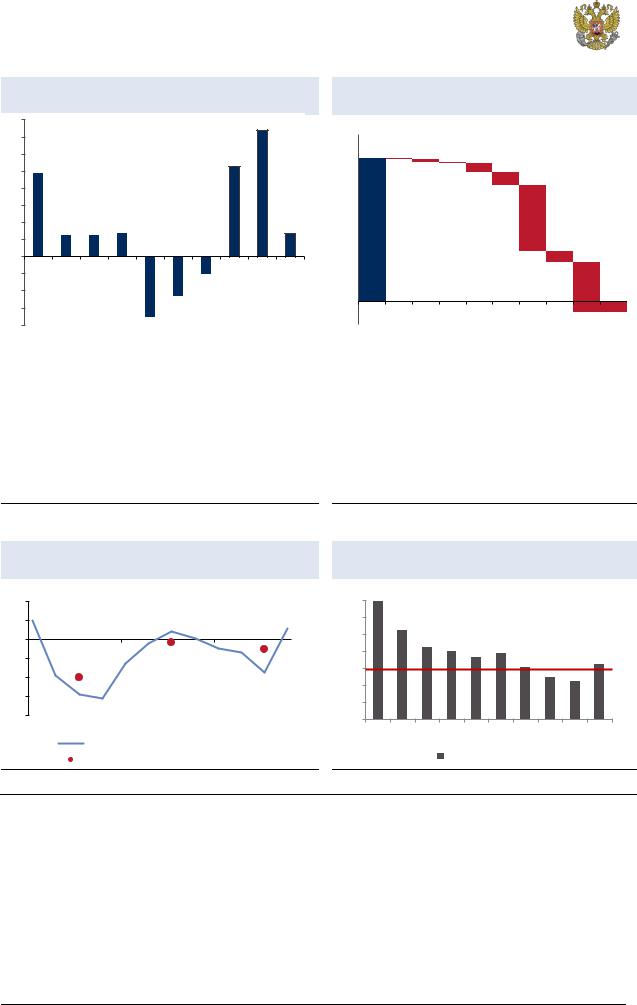
vk.com/id446425943
Министерство экономического развития Российской Федерации
Рис. 20. Изменение |
компонент доходов и |
|
Рис. 21. … и соответствующие им вклады в |
обязательных платежей… |
|
|
изменение реальных располагаемых доходов |
16 |
% г/г |
|
|
|
|
|
|
|
14,8 |
|
п.п. |
|
|
|
|
|
|
|
|
|
|
|
|
|
|
|
|
|
|
|
|
|
|
|
|
|
|
|
|
|
|
|
|||
14 |
|
|
|
|
|
|
|
|
|
|
4 |
-0.04-0.06 |
|
|
|
|
|
|
|
|
|
|
12 |
|
|
|
|
|
|
|
10,5 |
|
|
|
-0.01 -0.2 |
|
|
|
|
|
|
|
|||
9,7 |
|
|
|
|
|
|
|
|
|
|
|
|
|
|
|
|
|
|
||||
10 |
|
|
|
|
|
|
|
|
|
|
3.1 |
|
|
|
|
-0.3 |
|
|
|
|
|
|
8 |
|
|
|
|
|
|
|
|
|
|
3 |
|
|
|
|
|
|
|
|
|
|
|
|
|
|
|
|
|
|
|
|
|
|
|
|
|
|
|
|
|
|
|
|
||
|
|
|
|
|
|
|
|
|
|
|
|
|
|
|
|
|
|
|
|
|
|
|
6 |
|
|
|
|
|
|
|
|
|
|
|
|
|
|
|
|
-1.4 |
|
|
|
|
|
4 |
|
2,5 |
2,5 |
2,7 |
|
|
|
|
|
2,7 |
2 |
|
|
|
|
|
|
|
|
|
|
|
2 |
|
|
|
|
|
|
|
|
|
|
|
|
|
|
|
|
|
|
||||
|
|
|
|
-7,2 |
-4,6 |
-2,1 |
|
|
|
|
|
|
|
|
|
|
|
|
|
|
|
|
0 |
|
|
|
|
|
|
|
|
|
|
|
|
|
|
|
|
|
|
|
|||
|
|
|
|
|
|
|
|
|
|
|
|
|
|
|
|
|
-0,2 |
|
|
|
|
|
-2 |
|
|
|
|
|
|
|
|
|
|
1 |
|
|
|
|
|
|
|
-0.8 |
|
|
|
|
|
|
|
|
|
|
|
|
|
|
|
|
|
|
|
|
|
-0.2 |
||||
-4 |
|
|
|
|
|
|
|
|
|
|
|
|
|
|
|
|
|
|
|
|
||
|
|
|
|
|
|
|
|
|
|
|
|
|
|
|
|
|
|
|
|
|
|
|
-6 |
|
|
|
|
|
|
|
|
|
|
|
|
|
|
|
|
|
|
|
|
|
|
-8 |
|
доходы от предпринимательской деятельности |
пенсии |
прочие социальные выплаты |
|
прочие доходы от собственности |
другие доходы |
проценты, уплаченные за кредиты (вкл.валютные) |
прочие обязательные платежи |
|
-1 |
доходы от предпринимательской деятельности |
пенсии |
прочие социальные выплаты |
|
прочие доходы от собственности |
другие доходы |
проценты, уплаченные за кредиты (вкл.валютные) |
прочие обязательные платежи |
|
|
|
|
оплата труда |
проценты, полученные по банковским счетам, депозитам и пр. |
располагаемые денежные доходы |
оплата труда |
проценты, полученные по банковским счетам, депозитам и пр. |
|
реальные располагаемые денежные |
доходы |
||||||||||||||
Источник: Росстат, расчеты Минэкономразвития России. |
|
Источник: Росстат, расчеты Минэкономразвития России. |
|
|
||||||||||||||||||
Рис. 22. Динамика «прочих» доходов |
|
|
|
Рис. 23. Динамика среднедушевого денежного |
||||||||||||||||||
|
|
|
|
|
|
|
|
|
|
|
дохода по децильным группам (I-III кв. 2018) |
|
|
|||||||||
% г/г |
|
|
|
|
|
|
|
|
|
% г/г |
|
|
|
|
|
|
|
|
|
|
|
|
8 |
|
|
|
|
|
|
|
|
|
|
7 |
|
|
|
|
|
|
|
|
|
|
|
4 |
|
|
|
|
|
|
|
|
|
|
6 |
|
|
|
|
|
|
|
|
|
|
|
|
|
|
|
|
|
|
|
|
|
|
|
|
|
|
|
|
|
|
|
|
|
|
0 |
|
|
|
|
|
|
|
|
|
|
5 |
|
|
|
|
|
|
|
|
|
|
|
|
|
|
|
|
|
|
|
|
|
|
|
|
|
|
|
|
|
|
|
|
|
|
-4 |
|
|
|
|
|
|
|
|
|
|
4 |
|
|
|
|
|
|
2,9% |
|
|
|
|
|
|
|
|
|
|
|
|
|
|
|
|
|
|
|
|
|
|
|
|
|||
-8 |
|
|
|
|
|
|
|
|
|
|
3 |
|
|
|
|
|
|
|
|
|
|
|
|
|
|
|
|
|
|
|
|
|
2 |
|
|
|
|
|
|
|
|
|
|
|
|
|
|
|
|
|
|
|
|
|
|
|
|
|
|
|
|
|
|
|
|
|
|
|
-12 |
|
|
|
|
|
|
|
|
|
|
1 |
|
|
|
|
|
|
|
|
|
|
|
|
|
|
|
|
|
|
|
|
|
|
|
|
|
|
|
|
|
|
|
|
|
|
-16 |
|
|
|
|
|
|
|
|
|
|
0 |
|
|
|
|
|
|
|
|
|
|
|
|
2016 |
|
|
2017 |
|
|
2018 |
|
|
|
|
|
|
|
|
|
|
|
|
|
||
|
|
|
|
|
|
|
1 |
2 |
3 |
4 |
5 |
6 |
7 |
8 |
9 |
10 |
|
|||||
|
|
|
|
|
|
|
|
|
|
|
|
|||||||||||
|
|
|
другие доходы, включая "теневые" |
|
|
|
|
|
|
|
децильные группы |
|||||||||||
|
|
|
в целом за год |
|
|
|
|
|
|
|
|
денежный доход |
|
|
|
|
|
|||||
|
|
|
|
|
|
|
|
|
|
|
|
|
|
|
|
|
|
|
|
|||
Источник: Росстат, Банк России, расчеты Минэкономразвития |
Источник: Росстат, расчеты Минэкономразвития России. |
|
|
|||||||||||||||||||
России. |
|
|
|
|
|
|
|
|
|
|
|
|
|
|
|
|
|
|
|
|
|
|
11 февраля 2019 г. |
Страница 14 |
http://new.guap.ru/i04/contacts
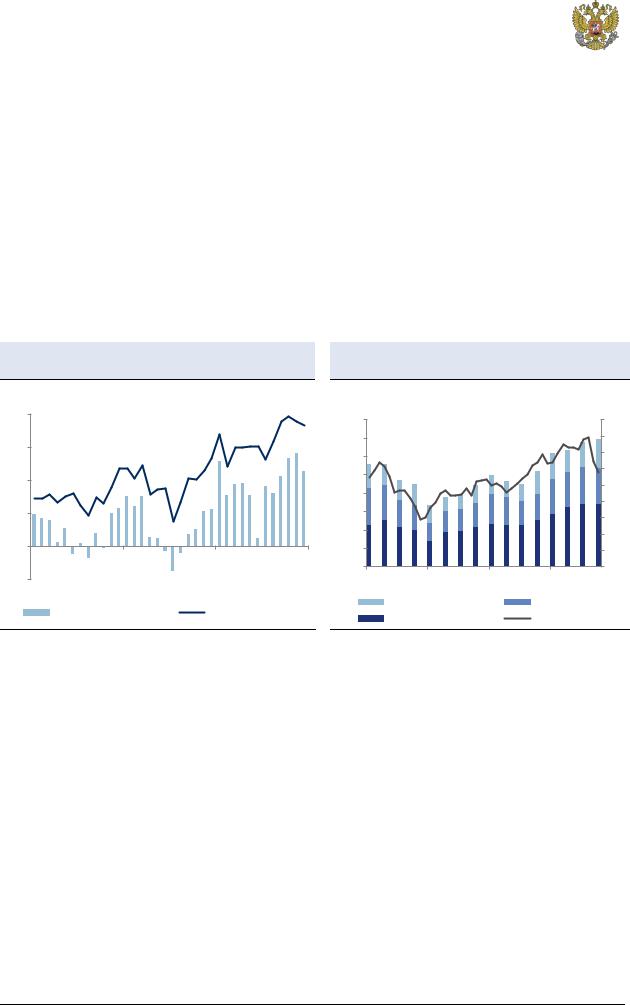
vk.com/id446425943
Министерство экономического развития Российской Федерации
Платежный баланс
В 2018 году профицит счета текущих операций достиг самого высокого значения за всю историю наблюдений. По итогам года положительное сальдо текущего счета увеличилось до 114,9 млрд. долл. США (по оценке, 6,9 % ВВП) после 33,3 млрд. долл. США в 2017 году
(2,1 % ВВП).
Рекордный профицит текущего счета был обеспечен в первую очередь увеличением нефтегазового экспорта (+32,5 %) на фоне благоприятной конъюнктуры мировых рынков энергоносителей. Средняя цена на нефть марки «Юралс» в 2018 году составила 70,0 долл. США за баррель по сравнению с 53,0 долл. США за баррель в 2017 году. По данным ФТС России, существенный рост продемонстрировали также среднеконтрактные цены на нефтепродукты и российский газ.
Вклад в увеличение нефтегазового экспорта в 2018 году также внес рост его физических объемов. Экспорт естественного природного газа вырос на 3,7 %, экспорт СПГ – на 50,4 %. Положительные темпы роста наблюдались и по сырой нефти и нефтепродуктам (на 2,9 % и 1,1% соответственно), что стало результатом июньских договоренностей стран ОПЕК+ об увеличении добычи.
Рис. 24. Профицит текущего счета достиг |
||
рекордных уровней… |
|
|
млрд. долл. |
|
|
США |
|
|
20 |
|
|
15 |
|
|
10 |
|
|
5 |
|
|
0 |
|
|
-5 |
|
|
2016 |
2017 |
2018 |
|
счет текущих операций |
торговый баланс |
Источник: Банк России, расчеты Минэкономразвития России. |
||
Рис. 25. … благодаря позитивной динамике |
|||
нефтегазового экспорта |
|
|
|
млрд. долл. |
|
|
долл. |
|
|
|
США/барр. |
80 |
|
|
90 |
70 |
|
|
80 |
60 |
|
|
70 |
|
|
|
|
50 |
|
|
60 |
|
|
|
|
40 |
|
|
50 |
|
|
40 |
|
|
|
|
|
30 |
|
|
30 |
|
|
|
|
20 |
|
|
20 |
|
|
|
|
10 |
|
|
10 |
0 |
|
|
0 |
2015 |
2016 |
2017 |
2018 |
газ |
|
|
нефтепродукты |
нефть |
|
|
Юралс, пр.ось |
Источник: Банк России, расчеты Минэкономразвития России. |
|||
Ненефтегазовый экспорт по итогам прошлого года также продемонстрировал уверенный рост (на 13,6 % г/г по сравнению с 2017 годом). Из товаров сырьевой группы значительный рост наблюдался по углю (+25,9 % в стоимостном, +10,0 % – в натуральном выражении). В рост несырьевого неэнергетического экспорта наибольший вклад внесла продукция металлургии – как черной, так и цветной (в частности, стоимостной объем экспорта алюминия в 2018 году вырос на 2,7 %). Уверенная положительная динамика в стоимостном выражении наблюдалась и по другим товарным группам – продовольствию, химическим товарам, продукции деревообработки и машиностроения.
Вместе с тем во второй половине 2018 г. наметилась тенденция к снижению годовых темпов роста несырьевого неэнергетического экспорта. Она была обусловлена в первую очередь коррекцией цен на металлы на глобальных рынках, а также замедлением роста физических объемов продовольственного экспорта по мере исчерпания эффекта рекордного урожая 2017/2018 сельскохозяйственного года.
Экспорт услуг в 2018 г. вырос на 13,2 %, что стало отражением проведенного в России чемпионата мира по футболу. Особенно активный рост экспорта услуг в прошлом году наблюдался по статье «поездки».
11 февраля 2019 г. |
Страница 15 |
http://new.guap.ru/i04/contacts
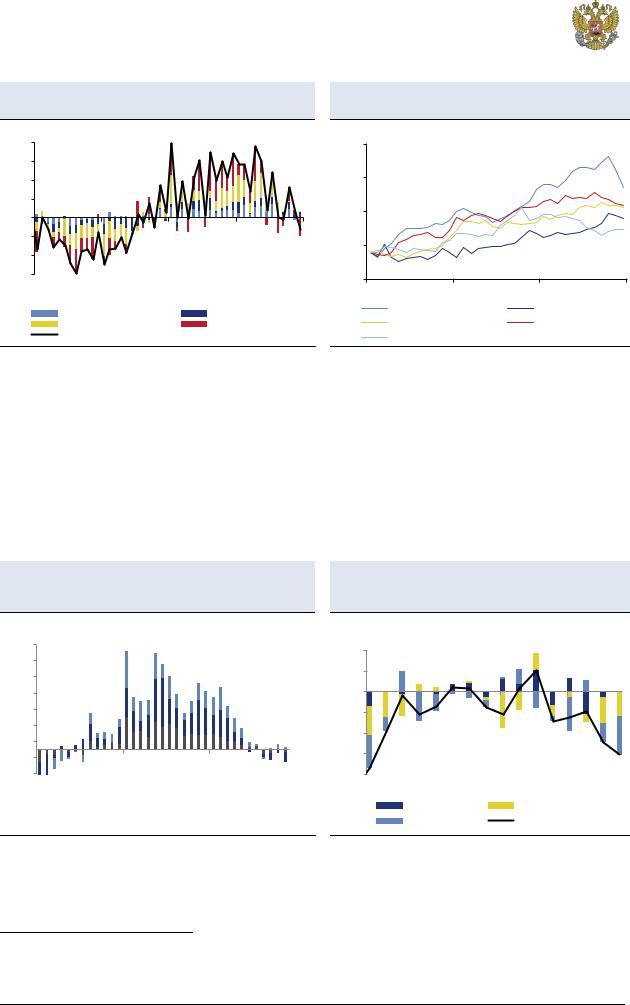
vk.com/id446425943 |
|
|
|
|
|
|
||
Министерство экономического развития |
|
|
|
|||||
Российской Федерации |
|
|
|
|
|
|||
Рис. |
26. |
Ненефтегазовый |
экспорт также |
Рис. 27. …в том числе под влиянием ценового |
||||
демонстрировал уверенный рост… |
фактора |
|
|
|||||
|
%, г/г |
|
|
|
янв.16=100% |
|
||
|
|
|
|
|
|
|
||
40 |
|
|
|
|
260 |
|
|
|
30 |
|
|
|
|
|
|
|
|
20 |
|
|
|
|
210 |
|
|
|
10 |
|
|
|
|
|
|
|
|
0 |
|
|
|
|
160 |
|
|
|
|
|
|
|
|
|
|
||
-10 |
|
|
|
|
110 |
|
|
|
|
|
|
|
|
|
|
||
-20 |
|
|
|
|
|
|
|
|
-30 |
|
|
|
|
60 |
|
|
|
2015 |
2016 |
2017 |
2018 |
|
|
|||
2016 |
2017 |
2018 |
||||||
|
|
|
|
|
||||
|
продовольствие |
|
химич. продукция |
|
нефть сырая |
газ |
||
|
|
|
уголь |
черные металлы |
||||
|
металлы |
|
прочее |
|
||||
|
сумма |
|
|
|
медь |
|
||
|
|
|
|
|
|
|
||
Источник: ФТС, расчеты Минэкономразвития России. |
Источник:ФТС, расчеты Минэкономразвития России. |
|||||||
Наряду с динамичным ростом экспорта, вклад в улучшение сальдо текущего счета в 2018 г. внесло существенное замедление роста импорта. По итогам года импорт товаров увеличился лишь на 4,6 % (после роста на 24,4 % в 2017 году). При этом в условиях ослабления рубля (на 7,7 % в реальном эффективном выражении в целом за год) в течение года наблюдалось последовательное замедление динамики товарного импорта, так что во второй половине года годовые темпы его роста перешли в отрицательную область впервые со 2кв16. В то время как снижение темпов роста продемонстрировали все компоненты импорта – и потребительский, и промежуточный, и инвестиционный, – ухудшение динамики последнего было наиболее выраженным. Импорт услуг на протяжении года сохранял положительную годовую динамику, однако по итогам года его рост также существенно замедлился (до 7,5 % по сравнению с 19,1 % годом ранее).
Рис. 28. Значимый вклад в сокращение импорта во второй половине 2018 г. внес инвестиционный импорт
% г/г
130 |
|
|
110 |
|
|
90 |
|
|
70 |
|
|
50 |
|
|
30 |
|
|
10 |
|
|
-10 |
|
|
-30 |
|
|
2016 |
2017 |
2018 |
 потребительские
потребительские  инвестиционные
инвестиционные  промежуточные
промежуточные
Источник: ФТС, расчеты Минэкономразвития России
Рис. 29. Прочие сектора и банки активно |
|||
сокращали внешние обязательства |
|||
млрд. долл. США |
|
"-" - отток капитала |
|
20 |
|
|
|
10 |
|
|
|
0 |
|
|
|
-10 |
|
|
|
-20 |
|
|
|
-30 |
|
|
|
-40 |
|
|
|
2015 |
2016 |
2017 |
2018 |
|
госсектор |
|
банки |
|
прочие секторы |
|
фин.счет |
Источник: Банк России, расчеты Минэкономразвития России |
|||
Отрицательное сальдо финансового счета в 2018 г. расширилось до 76,8 млрд. долл. США
(по сравнению с 12,6 млрд. долл. США в 2017 году). Отток по частному сектору составил 72,1 млрд. долл. США6 (годом ранее – 32,4 млрд. долл. США). Он был в основном обеспечен
6 Показатель, скорректированный на объем ликвидности в иностранной валюте, предоставленной Банком России кредитным организациям на возвратной основе, на сумму операций по корреспондентским счетам банков-резидентов в Банке России, а также на сумму средств в иностранной валюте, полученных Банком России в рамках операций валютный своп.
11 февраля 2019 г. |
Страница 16 |
http://new.guap.ru/i04/contacts

vk.com/id446425943
Министерство экономического развития Российской Федерации
сокращением внешних обязательств банковского сектора, которое было зафиксировано пятый год подряд, и увеличением финансовых активов «прочих» секторов.
По государственному сектору в 2018 г. наблюдался отток капитала в размере 6,9 млрд. долл. США (после притока 13,3 млрд. долл. США в 2017 году), который был преимущественно связан с выходом нерезидентов с рынка российского госдолга начиная с апреля. За апрель–декабрь их вложения в ОФЗ снизились на 561 млрд. рублей, при этом наиболее активная фаза оттока пришлась на 2кв18. Доля нерезидентов на рынке ОФЗ на 1 января 2019 г. составила 24,4 % по сравнению с 34,5 % на 1 апреля 2018 года.
Снижение внешних обязательств как частного, так и государственного сектора привело к сокращению российского внешнего долга до 454 млрд. долл. США на 1 января 2019 г. по сравнению с 518 млрд. долл. США на начало прошлого года. При этом отношение внешнего долга к ВВП на конец 2018 г. (по оценке, 27,4 %) приблизилось к минимальным уровням с начала 2000-х годов.
В условиях превышения профицита текущего счета над отрицательным сальдо финансового счета международные резервы в 2018 г. продолжили рост. Их объем за год увеличился на 38,2 млрд. долл. США (22,6 млрд. долл. США в 2017 года). Основным источником накопления резервов стали операции Банка России по покупке иностранной валюты в рамках бюджетного правила, объем которых за период с начала года по 22 августа, когда было принято решение об их приостановке до конца 2018 года, составил 35,4 млрд. долл. США.
Таблица 7. Показатели платежного баланса
|
2018 |
4кв18 |
9м18 |
6м18 |
2017 |
4кв17 |
9м17 |
6м17 |
Счет текущих операций |
114,9 |
38,8 |
76,1 |
48,4 |
33,3 |
13,5 |
19,7 |
22,9 |
Торговый баланс |
194,4 |
57,0 |
137,4 |
89,4 |
115,4 |
35,0 |
80,4 |
59,7 |
Экспорт товаров
Импорт товаров
Баланс услуг
Экспорт услуг
Импорт услуг
Баланс оплаты труда
Баланс инвестиционных доходов
Баланс ренты и вторичных доходов
Счет операций с капиталом
Сальдо счета текущих операций и счета операций с капиталом Сальдо финансового счета, кроме резервных активов
Сектор государственного управления и центральный банк
Частный сектор
443,4 |
122,5 |
320,9 |
210,2 |
353,5 |
102,6 |
251,0 |
166,4 |
249,0 |
65,6 |
183,5 |
120,8 |
238,1 |
67,5 |
170,6 |
106,8 |
-30,2 |
-7,6 |
-22,6 |
-14,0 |
-31,1 |
-8,4 |
-22,7 |
-12,8 |
65,3 |
16,7 |
48,7 |
31,1 |
57,7 |
15,4 |
42,3 |
27,1 |
95,5 |
24,3 |
71,3 |
45,1 |
88,8 |
23,8 |
65,0 |
39,9 |
-1,8 |
-0,6 |
-1,2 |
-0,7 |
-2,3 |
-0,7 |
-1,6 |
-1,2 |
-38,9 |
-8,0 |
-31,0 |
-22,2 |
-39,8 |
-10,0 |
-29,8 |
-19,0 |
-8,6 |
-2,0 |
-6,6 |
-4,2 |
-8,9 |
-2,4 |
-6,5 |
19,0 |
-0,6 |
-0,1 |
-0,4 |
-0,4 |
-0,2 |
0,0 |
-0,2 |
-0,1 |
114,3 |
38,6 |
75,7 |
48,0 |
33,1 |
13,5 |
19,6 |
22,8 |
76,8 |
30,5 |
46,4 |
22,0 |
12,6 |
14,3 |
-1,7 |
8,9 |
6,9 |
-0,4 |
7,4 |
4,5 |
-13,3 |
6,7 |
-20,0 |
-9,7 |
69,9 |
30,9 |
39,0 |
17,5 |
25,9 |
7,6 |
18,3 |
18,6 |
Чистые ошибки и пропуски |
0,7 |
-5,6 |
6,3 |
4,6 |
2,2 |
-2,0 |
4,1 |
4,9 |
|
Изменение резервных активов* |
38,2 |
2,6 |
35,6 |
30,6 |
|
-2,7 |
25,4 |
18,9 |
|
Чистый ввоз/вывоз капитала частным сектором |
67,5 |
36,5 |
31,1 |
11,9 |
25,2 |
11,5 |
13,7 |
13,3 |
|
('+' - вывоз, '-' - ввоз) |
|||||||||
|
|
|
|
|
|
|
|
Источник: Банк России, расчеты Минэкономразвития России. * '+' - рост, '-' - снижение
11 февраля 2019 г. |
Страница 17 |
http://new.guap.ru/i04/contacts
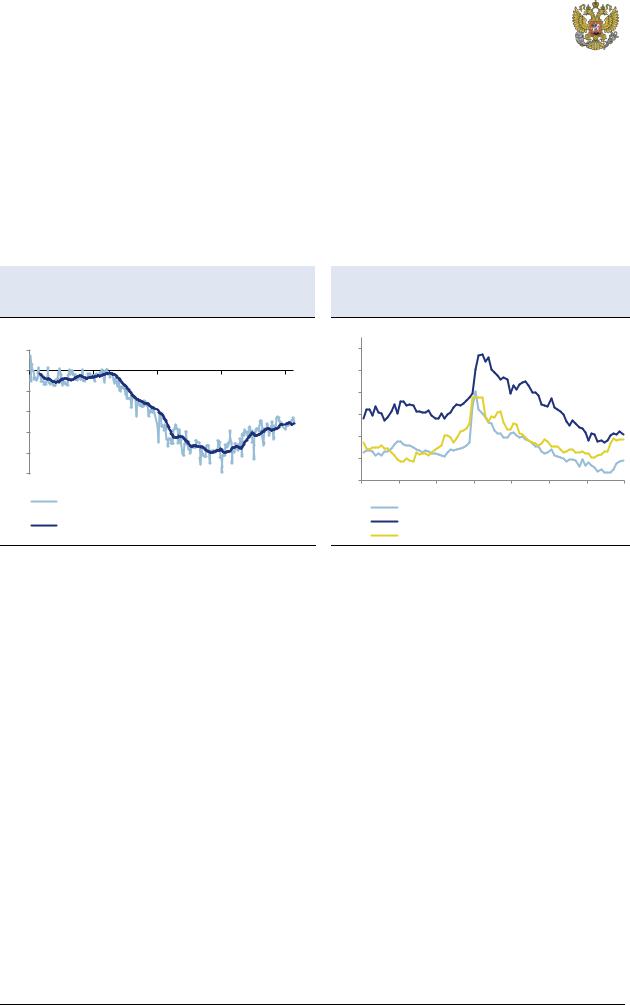
vk.com/id446425943
Министерство экономического развития Российской Федерации
Банковский сектор
Понижательный тренд процентных ставок в 2018 г. развернулся на фоне ухудшения условий на финансовых рынках и ужесточения денежно-кредитной политики Банком России.
В условиях ослабления рубля, роста российской премии за риск и оттока нерезидентов с рынка ОФЗ Банк России в апреле приостановил цикл смягчения денежно-кредитной политики, а с сентября перешел к ее ужесточению. В сентябре и в декабре регулятор поднял ключевую ставку на 25 б.п. (до 7,75 % на конец года). Оба решения совпали с ожиданиями рынка, при этом январский консенсус-прогноз Блумберг указывал, что участники рынка прогнозируют снижение ключевой ставки не раньше 4кв19.
Рис. 30. Банковский сектор продолжает |
|
||||
функционировать в условиях структурного |
|
||||
профицита ликвидности |
|
|
|||
трлн. |
|
|
|
|
|
рублей |
|
|
|
|
|
1 |
+ = дефицит ликвидности |
|
|
|
|
0 |
|
|
|
|
|
-1 |
|
|
|
|
|
-2 |
|
|
|
|
|
-3 |
|
|
|
|
|
-4 |
|
|
|
|
|
-5 |
|
|
|
|
|
янв.17 |
июл.17 |
янв.18 |
июл.18 |
янв.19 |
|
|
|
структурный баланс ликвидности банковского |
|||
|
|
сектора |
|
|
|
|
|
структурный баланс ликвидности банковского |
|||
|
|
сектора, среднее за 20 дней |
|
|
|
Источник: Банк России, расчеты Минэкономразвития России. |
|||||
Валютная переоценка исключена. |
|
|
|||
Рис. 31. Тренд на снижение долгосрочных |
||||||
процентных ставок с середины года |
|
|||||
развернулся |
|
|
|
|
|
|
% |
|
|
|
|
|
|
17 |
|
|
|
|
|
|
15 |
|
|
|
|
|
|
13 |
|
|
|
|
|
|
11 |
|
|
|
|
|
|
9 |
|
|
|
|
|
|
7 |
|
|
|
|
|
|
5 |
|
|
|
|
|
|
2012 |
2013 |
2014 |
2015 |
2016 |
2017 |
2018 |
|
депозиты населения (свыше года) |
|
||||
|
корпоративные кредиты (свыше года) |
|||||
|
ОФЗ (10 лет), бескупонная доходность |
|||||
Источник: Банк России, расчеты Минэкономразвития России. Валютная переоценка исключена.
Банки отреагировали на ситуацию на финансовых рынках и решения Банка России повышением основных кредитных и депозитных ставок. В июле декабре ставки по розничным депозитам на срок свыше 1 года прибавили 1,1 п.п., по кредитам нефинансовым организациям на аналогичный срок – 0,7 п.п. Ставки по ипотечным кредитам во второй половине года выросли (до 9,7 % в декабре) после двух лет практически непрерывного снижения. В то же время в других сегментах рынка потребительского кредитования повышения ставок не наблюдалось.
Основным драйвером роста депозитной базы банков в 2018 г. оставались рублевые депозиты.
Тенденции на рынках корпоративных и розничных депозитов в 2018 г. были разнонаправленными. Рост вкладов физических лиц в течение года последовательно замедлялся (до 5,3 % г/г в декабре 2018 г. с 8,7 % г/г в декабре 2017 года). Темп роста корпоративных депозитов, напротив, находился на восходящей траектории и в декабре достиг 10,5 % г/г (по сравнению с 8,4 % г/г в декабре 2017 года). Начиная со второй половины 2018 г. годовой рост корпоративных депозитов устойчиво опережал динамику розничных вкладов, при этом разрыв между двумя показателями продолжает увеличиваться.
Рост депозитов как в корпоративном, так и в розничном сегменте обеспечивался главным образом рублевыми депозитами (на 2,3 и 1,7 млрд. рублей соответственно). В конце года в условиях роста неопределенности на мировых финансовых рынках и ослабления рубля временно возросла волатильность валютной структуры вкладов физических лиц. Однако в целом по итогам года
11 февраля 2019 г. |
Страница 18 |
http://new.guap.ru/i04/contacts
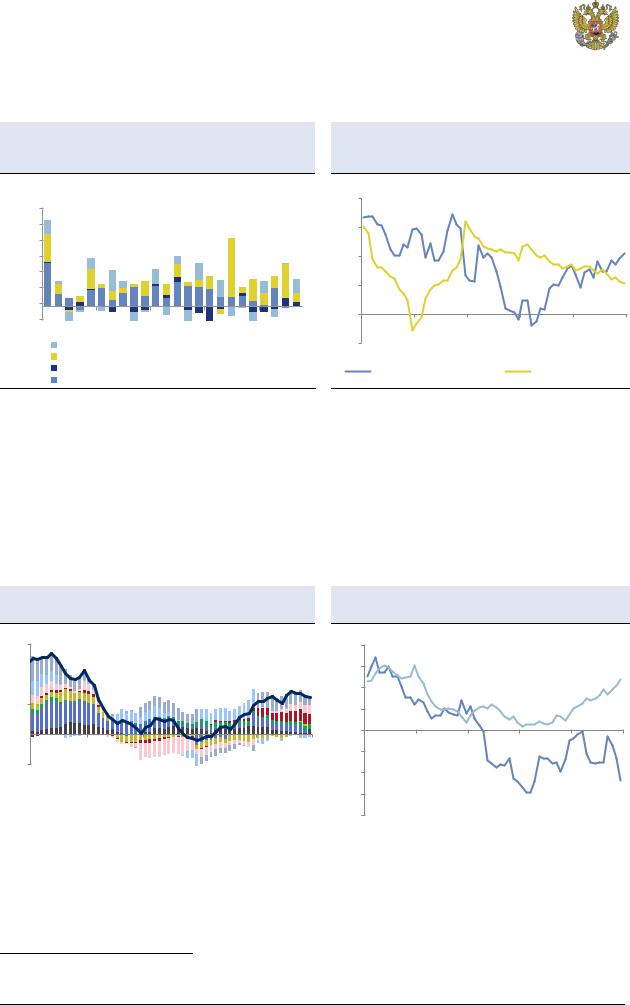
vk.com/id446425943
Министерство экономического развития Российской Федерации
депозиты физических лиц в иностранной валюте7 сократились на 315 млрд. рублей, в то время как по юридическим лицам наблюдался умеренный рост показателя (193 млрд. рублей).
Рис. 32. Рост депозитной базы в течение 2018 г. |
Рис. 33. Со второй половины 2018 г. годовой |
|||||
опирался на рублевые депозиты |
|
рост корпоративных депозитов устойчиво |
||||
|
|
опережал динамику розничных вкладов |
||||
млрд. руб., |
|
% г/г, с искл. переоценки |
|
|
||
м/м SA |
|
|
|
|||
|
20 |
|
|
|
|
|
1240 |
|
|
|
|
|
|
|
|
|
|
|
|
|
1040 |
|
15 |
|
|
|
|
|
|
|
|
|
|
|
840 |
|
|
|
|
|
|
640 |
|
10 |
|
|
|
|
440 |
|
|
|
|
|
|
240 |
|
5 |
|
|
|
|
40 |
|
|
|
|
|
|
-160 |
|
0 |
|
|
|
|
|
|
|
|
|
|
|
янв.17 июн.17 ноя.17 апр.18 |
сен.18 |
|
|
|
|
|
депозиты компаний в иностранной валюте |
-5 |
|
|
|
|
|
депозиты компаний в рублях |
|
2014 |
2015 |
2016 |
2017 |
2018 |
вклады населения в иностранной валюте |
корпоративные депозиты |
вклады населения |
||||
вклады населения в рублях |
|
|||||
|
|
|
|
|
|
|
Источник: Банк России, расчеты Минэкономразвития России. |
Источник: Банк России, расчеты Минэкономразвития России. |
|||||
Валютная переоценка исключена. |
|
Валютная переоценка исключена. |
|
|
||
Ускорение роста корпоративного кредитного портфеля в 2018 г. сопровождалось изменением его валютной структуры в пользу рублевых кредитов.
Задолженность по кредитам нефинансовым организациям в целом за 2018 г. выросла на 4,7 % (в 2017 г. – на 1,8 %). По сопоставимому кругу банков, как и годом ранее, наблюдался более динамичный рост кредитного портфеля, – 5,8 % после 3,7 % в 2017 году.
В отраслевом разрезе наибольший вклад в динамику корпоративного кредитования вносят обрабатывающая промышленность, торговля, а также транспортная отрасль. Замедление динамики кредитного портфеля в текущем году наблюдается в добыче полезных ископаемых и в сфере операций с недвижимым имуществом.
Рис. 34. Расширение корпоративного кредитования |
Рис. 35. …и сопровождается девалютизацией |
|||||
наблюдается в широком круге отраслей… |
кредитной задолженности |
|||||
% г/г |
|
|
|
|
% г/г |
|
15 |
|
|
|
|
20 |
|
|
|
|
|
|
15 |
|
|
|
|
|
|
10 |
|
5 |
|
|
|
|
5 |
|
|
|
|
|
|
||
|
|
|
|
|
0 |
|
|
|
|
|
|
-5 |
|
-5 |
|
|
|
|
-10 |
|
2014 |
2015 |
2016 |
2017 |
2018 |
||
|
||||||
|
|
прочее |
-15 |
|
|
|
|
|
|
|
|
|
|
|
|
|
|||
|
|
|
|
|
|
|
|||
|
|
операции с недвижимым имуществом |
|
|
|
|
|
|
|
|
|
торговля |
-20 |
|
|
|
|
|
|
|
|
|
|
|
|
|
|||
|
|
|
|
|
|
|
|||
|
|
транспорт и связь |
|
|
|
|
|
||
|
|
|
|
|
|
||||
|
|
|
|
|
|
||||
|
|
строительство |
2014 |
2015 |
2016 |
2017 |
2018 |
||
|
|
||||||||
|
|
сельское хозяйство |
|
|
|
кредиты компаниям в иностранной валюте |
|||
|
|
|
|
|
|||||
|
|
электроэнергетика и водоснабжение |
|
|
|
||||
|
|
|
|
|
|||||
|
|
обрабатывающая промышленность |
|
|
|
кредиты компаниям в рублях |
|
||
|
|
|
|
|
|
||||
|
|
добывающая промышленность |
|
|
|
|
|||
|
|
|
|
|
|
||||
|
|
кредиты нефинансовым организациям |
|
|
|
|
|
|
|
|
|
|
|
|
|
|
|
|
|
|
|
|
|
|
|
||||
Источник: Банк России, расчеты Минэкономразвития России. |
Источник: Банк России, расчеты Минэкономразвития России. |
||||||||
Валютная переоценка исключена. |
Валютная переоценка исключена. |
|
|
||||||
7 Здесь и далее объемные показатели и темпы роста кредитов и депозитов приводятся с исключением валютной переоценки, где это применимо.
11 февраля 2019 г. |
Страница 19 |
http://new.guap.ru/i04/contacts
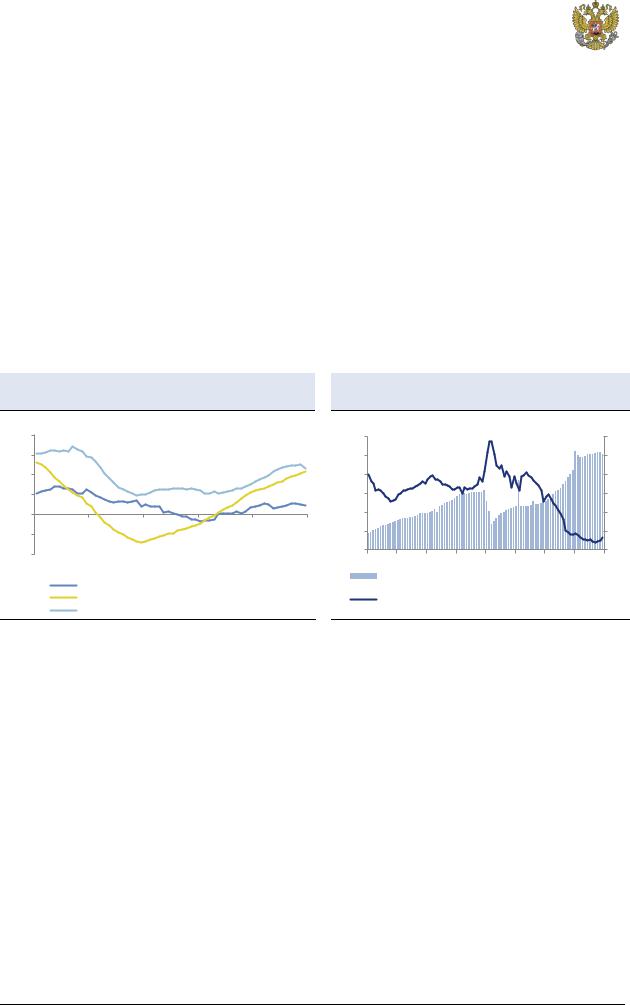
vk.com/id446425943 |
|
|
|
|
|
||
Министерство экономического развития |
|
|
|||||
Российской Федерации |
|
|
|
|
|||
Корпоративные кредиты, номинированные в рублях, росли опережающими темпами и по итогам |
|||||||
года показали рост на 12,0 % (3,8 % в 2017 году). При этом валютная задолженность |
|||||||
демонстрируют отрицательную годовую динамику с апреля 2016 года (с исключением валютной |
|||||||
переоценки). В 2018 г. сокращение портфеля кредитов, номинированных в иностранной валюте, |
|||||||
ускорилось до -11,7 % по сравнению с -2,4 % в 2017 году. |
|
||||||
Наиболее активный процесс девалютизации кредитного портфеля наблюдается в таких отраслях, |
|||||||
как операции с недвижимым имуществом, транспорт и связь, торговля, где доля кредитов в |
|||||||
иностранной валюте исторически находилась на повышенных уровнях. За последние два года |
|||||||
существенно снизилась валютная задолженность строительных организаций, однако в конце |
|||||||
2018 г. ее объем вновь начал расти на фоне восстановления динамики кредитования отрасли. |
|
||||||
Кредиты населению в 2018 г. продолжали расти опережающими темпами. По итогам 2018 г. |
|||||||
темпы роста розничного кредитного портфеля выросли до 22,4 % с 12,8 % годом ранее. |
|
||||||
Рост ипотечного кредитного портфеля в 2018 г. ускорился до 23,1 % с 15,1 % в 2017 году. Выдачи |
|||||||
новых ипотечных кредитов на протяжении года продолжали расти высокими темпами (в целом по |
|||||||
году – на 62 %), в том числе в результате рефинансирования заемщиками ранее выданных |
|||||||
кредитов по более выгодным ставкам. Вместе с тем в конце года динамика показателя начала |
|||||||
замедляться на фоне приостановки удешевления ипотечного кредитования. |
|
||||||
Рис. 36. |
Кредиты населению в 2018 г. продолжали |
Рис. 37. Рост выдачи ипотеки замедляется на |
|
||||
расти опережающими темпами |
|
|
фоне приостановки снижения ставок |
|
|||
% г/г |
|
|
|
|
млрд.руб. |
% |
|
|
|
|
|
|
|||
40 |
|
|
|
|
300 |
15 |
|
30 |
|
|
|
|
250 |
14 |
|
20 |
|
|
|
|
200 |
13 |
|
10 |
|
|
|
|
150 |
12 |
|
0 |
|
|
|
|
100 |
11 |
|
-10 |
|
|
|
|
50 |
10 |
|
|
|
|
|
|
|
||
-20 |
|
|
|
|
0 |
9 |
|
|
|
|
|
2011 2012 2013 2014 2015 2016 2017 2018 |
|
||
2014 |
2015 |
2016 |
2017 |
2018 |
|
||
объем вновь выданных ипотечных кредитов, SA |
|||||||
|
кредиты компаниям и корп. облигации |
||||||
|
|
|
|||||
|
кредиты населению (кроме жилищных) |
средняя ставка по вновь выданным ипотечным |
|||||
|
жилищные кредиты |
|
|
кредитам (правая шкала) |
|
||
Источник: Банк России, расчеты Минэкономразвития России. |
Источник: Банк России, расчеты Минэкономразвития России. |
|
|||||
Валютная переоценка исключена. |
|
|
Валютная переоценка исключена. |
|
|||
Рост розничного кредитного портфеля (за исключением ипотеки) в 2018 г. ускорился почти вдвое – |
|||||||
до 21,6 % с 11,1 % в 2017 году. В абсолютном выражении рост показателя составил 1,5 трлн. |
|||||||
рублей и внес основной вклад в прирост кредитов населению. |
|
||||||
В условиях широких возможностей для рефинансирования ранее выданных кредитов уровень просроченной задолженности физических лиц продолжил снижаться (до 5,1 % на 1 января 2019 г. с уровней около 7 % в начале года) и достиг минимальных с апреля 2014 года уровней. Вместе с тем рост кредитного портфеля существенно превышал рост номинальных заработных плат.
Наблюдаемая динамика потребительского кредитования создает риски ухудшения качества кредитного портфеля в будущем. Кроме того, растущие процентные платежи оказывают все более выраженное негативное влияние на динамику реальных располагаемых доходов населения. В целях ограничения рисков в сфере потребительского кредитования Банк России принял решение с 1 апреля 2019 г. повысить на 30 п.п. надбавки к коэффициентам риска по потребительским кредитам с полной стоимостью кредитования от 10 до 30 %. С 1 сентября 2018 г. указанные надбавки уже были повышены на 20 60 процентных пунктов.
11 февраля 2019 г. |
Страница 20 |
http://new.guap.ru/i04/contacts
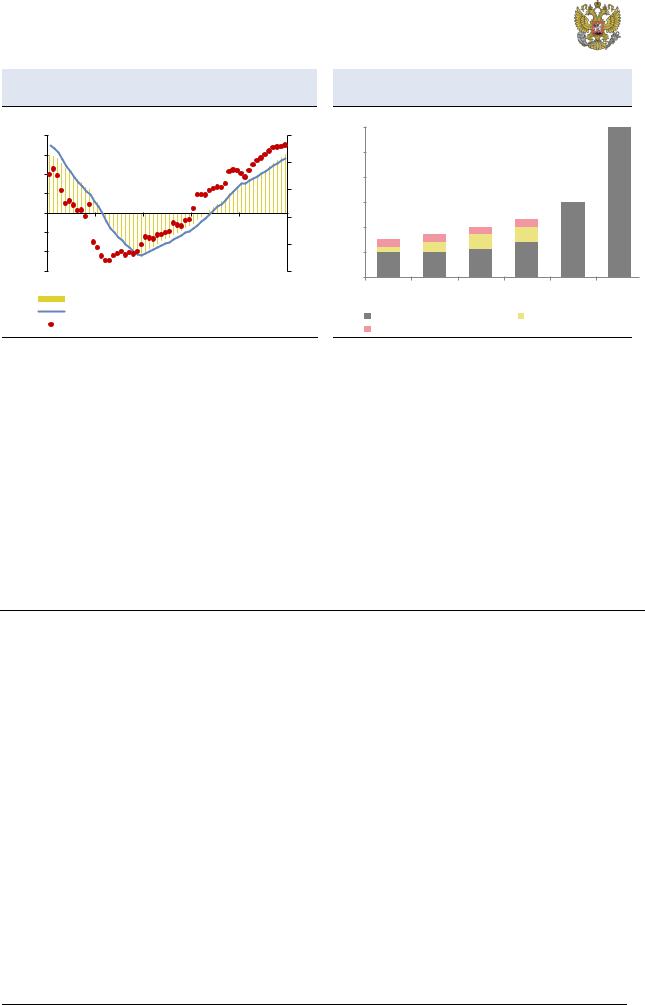
vk.com/id446425943 |
|
|
|
|
|
|
|
|
|
|
|
|
Министерство экономического развития |
|
|
|
|
|
|
|
|
||||
Российской Федерации |
|
|
|
|
|
|
|
|
|
|
||
Рис. 38. Портфель потребительских кредитов, |
|
Рис. 39. Банк России повысил коэффициенты |
|
|||||||||
кроме ипотеки, в 2018 г. вырос на 1,5 трлн. руб. |
|
риска по потребительским кредитам |
|
|
||||||||
млн. руб. |
|
|
|
|
% |
% |
|
|
|
|
|
|
|
|
|
|
600 |
|
|
|
|
|
|
||
2000 |
|
|
|
|
30 |
|
|
|
|
|
|
|
|
|
|
|
|
|
|
|
|
|
|
||
1500 |
|
|
|
|
20 |
500 |
|
|
|
|
|
|
|
|
|
|
|
|
|
|
|
|
|
|
|
1000 |
|
|
|
|
|
400 |
|
|
|
|
|
|
|
|
|
|
|
|
|
|
|
|
|
|
|
500 |
|
|
|
|
10 |
|
|
|
|
|
|
|
|
|
|
|
|
300 |
|
|
|
|
|
600 |
|
|
|
|
|
|
|
|
|
|
|
|
||
0 |
|
|
|
|
0 |
|
|
|
|
|
|
|
|
|
|
|
|
|
|
|
|
30 |
|
|
|
-500 |
|
|
|
|
|
200 |
|
|
30 |
|
|
|
|
|
|
|
|
|
|
60 |
|
|
|||
|
|
|
|
|
|
|
30 |
300 |
|
|||
|
|
|
|
|
-10 |
|
30 |
60 |
|
|||
|
|
|
|
|
|
|
|
|||||
-1000 |
|
|
|
|
|
40 |
|
|
|
|||
|
|
|
|
|
100 |
20 |
|
140 |
|
|
||
|
|
|
|
|
|
|
100 |
100 |
110 |
|
|
|
-1500 |
|
|
|
|
-20 |
|
|
|
|
|||
|
|
|
|
0 |
|
|
|
|
|
|
||
2014 |
2015 |
2016 |
2017 |
2018 |
|
|
|
|
|
|
|
|
|
|
10-15 |
15-20 |
20-25 |
25-30 |
30-35 |
35+ |
|||||
|
|
|
|
|
|
|
||||||
|
прирост потреб. кредитов за скользящий год |
|
|
|
|
ПСК |
|
|
|
|||
|
потреб. кредиты (% г/г), пр. ось |
|
|
|
до 31 августа 2018 г. |
с 1 сентября 2018 г. |
||||||
|
потреб. кредиты (м/м SAAR), пр. ось |
|
|
|||||||||
|
|
|
c 1 апреля 2019 г. |
|
|
|
|
|||||
|
|
|
|
|
|
|
|
|
|
|
||
Источник: Банк России, расчеты Минэкономразвития России. |
|
|
Источник: Банк России, расчеты Минэкономразвития России. |
||||||||||||||
|
|
|
|
|
Валютная переоценка исключена. |
|
|
|
|
|
|||||||
Таблица 8. Показатели банковского сектора |
|
|
|
|
|
|
|
|
|
|
|
|
|
||||
|
|
|
|
|
|
|
|
|
|
|
|
|
|
|
|
|
|
|
дек.18 |
|
ноя.18 |
|
окт.18 |
|
сен.18 |
|
авг.18 |
|
1кв18 |
|
2кв17 |
1кв17 |
|
2016 |
|
Ключевая ставка (на конец периода) |
7,75 |
|
7,50 |
|
7,50 |
|
7,50 |
|
7,25 |
|
7,25 |
|
9,00 |
9,75 |
|
10,00 |
|
Процентные ставки, % годовых |
|
|
|
|
|
|
|
|
|
|
|
|
|
|
|
|
|
По рублевым кредитам нефинансовым |
9,2 |
|
9,5 |
|
9,2 |
|
9,2 |
|
9,1 |
|
9,0 |
|
10,9 |
11,9 |
|
13,0 |
|
организациям (свыше 1 года) |
|
|
|
|
|
|
|
|
|||||||||
|
|
|
|
|
|
|
|
|
|
|
|
|
|
|
|
|
|
По рублевым жилищным кредитам |
9,7 |
|
9,5 |
|
9,4 |
|
9,4 |
|
9,4 |
|
9,8 |
|
11,3 |
11,8 |
|
12,5 |
|
По рублевым депозитам физлиц |
6,8 |
|
6,8 |
|
6,6 |
|
6,0 |
|
5,7 |
|
6,4 |
|
6,9 |
7,4 |
|
8,4 |
|
(свыше 1 года) |
|
|
|
|
|
|
|
|
|||||||||
|
|
|
|
|
|
|
|
|
|
|
|
|
|
|
|
|
|
Кредит экономике, % г/г* |
9,7 |
|
10,3 |
|
10,4 |
|
10,0 |
|
8,8 |
|
6,6 |
|
-0,1 |
-2,7 |
|
0,0 |
|
Жилищные кредиты, % г/г* |
23,1 |
|
25,1 |
|
24,9 |
|
24,5 |
|
24,1 |
|
17,6 |
|
11,1 |
11,1 |
|
12,4 |
|
Потребительские кредиты, % г/г* |
21,6 |
|
20,8 |
|
19,9 |
|
19,2 |
|
18,0 |
|
12,7 |
|
1,0 |
-3,0 |
|
-9,5 |
|
Кредиты организациям, % г/г* |
4,7 |
|
5,5 |
|
5,9 |
|
5,6 |
|
4,4 |
|
3,6 |
|
-1,8 |
-4,3 |
|
0,7 |
|
Выдачи жилищных рублевых кредитов, |
17,3 |
|
29,7 |
|
40,3 |
|
38,4 |
|
49,1 |
|
80,9 |
|
31,9 |
-1,0 |
|
26,7 |
|
% г/г |
|
|
|
|
|
|
|
|
|||||||||
|
|
|
|
|
|
|
|
|
|
|
|
|
|
|
|
|
|
Источник: Банк России, расчеты Минэкономразвития России. *Данные с исключением валютной переоценки.
11 февраля 2019 г. |
Страница 21 |
http://new.guap.ru/i04/contacts
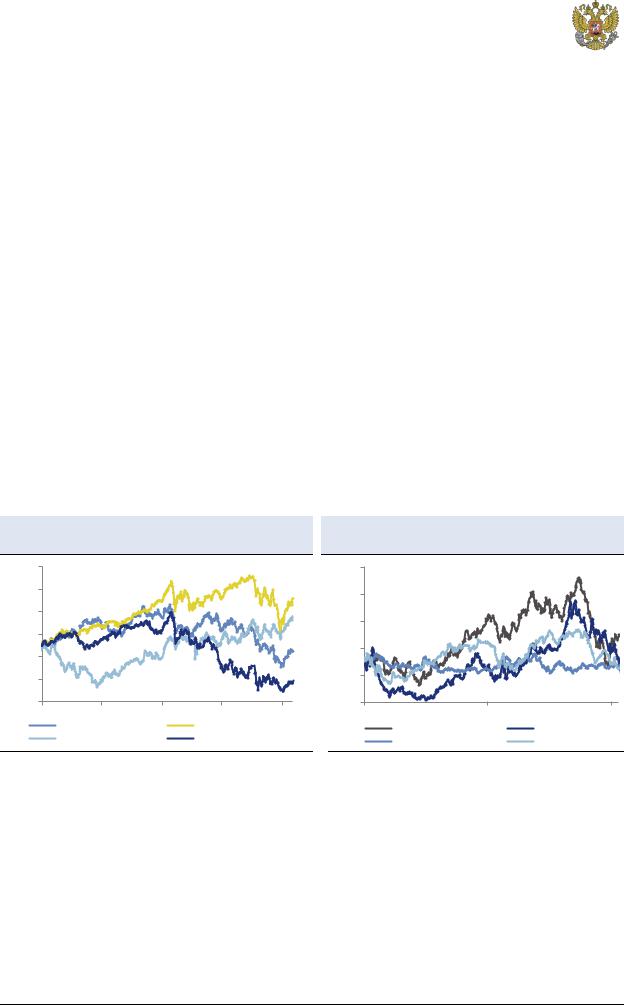
vk.com/id446425943
Министерство экономического развития Российской Федерации
Глобальные рынки
Ситуация на глобальных рынках в течение 2018 года развивалась неравномерно.
Вплоть до сентября конъюнктура как финансовых, так и товарных рынков в целом складывалась позитивно. Продолжался уверенный рост американского фондового рынка, особенно выраженный в технологическом секторе. Цены на нефть марки «Юралс» также демонстрировали повышательную тенденцию, главным образом под воздействием произошедшего и ожидаемого снижения предложения со стороны ряда крупных нефтеэкспортеров. В начале октября цены на нефть марки «Юралс» достигли четырехлетнего максимума (почти 85 долл. США за баррель), несмотря на увеличение добычи нефти странами ОПЕК+ в соответствии с решениями, принятыми на июньском заседании в Вене.
Вместе с тем в 4кв18 на мировых финансовых рынках началась масштабная коррекция, спровоцированная продолжающимся ужесточением денежно-кредитной политики ФРС США, усилением торговых противоречий между крупнейшими мировыми экономиками, а также ухудшением ожиданий участников рынка относительно перспектив роста мировой экономики. Снижение индекса S&P 500 в 4кв18 составило почти 15 %, в целом за год – около 7 %. Фондовые рынки других крупнейших развитых стран также завершили 2018 г. в минусе. Индекс акций стран с формирующимися рынками MSCI EM снизился на 17 % после роста на 34 % в 2017 году.
Турбулентность на мировых финансовых рынках затронула и рынок нефти: на фоне снижения аппетита к риску глобальных инвесторов цена на нефть марки «Юралс» к 28 декабря опустилась до 50,7 долл. США за баррель. Что касается фундаментальных факторов, со стороны спроса давление на нефтяные котировки оказывали ожидания замедления роста мировой экономики в 2019 г., со стороны предложения – продолжающийся рост нефтедобычи в США, а также временные послабления санкционного режима, введенные США для ряда стран – крупнейших импортеров иранской нефти в начале ноября.
Рис. 40. В 4кв18 на финансовых рынках |
|
||||
наблюдалась коррекция… |
|
|
|||
135 |
янв.2017=100% |
|
|
|
|
125 |
|
|
|
|
|
115 |
|
|
|
|
|
105 |
|
|
|
|
|
95 |
|
|
|
|
|
85 |
|
|
|
|
|
75 |
|
|
|
|
|
янв.17 |
июл.17 |
янв.18 |
июл.18 |
янв.19 |
|
|
DAX |
|
|
S&P500 |
|
|
ММВБ |
|
Shanghai Composite |
||
Источник: Bloomberg, расчеты Минэкономразвития России. |
|||||
Рис. 41. …которая затронула и рынки сырьевых |
||
товаров |
|
|
170 |
янв.2017=100% |
|
150 |
|
|
130 |
|
|
110 |
|
|
90 |
|
|
70 |
|
|
2017 |
2018 |
2019 |
|
Urals |
газ, Европа |
|
с/х товары |
уголь, Европа |
Источник: Bloomberg, расчеты Минэкономразвития России. |
||
В условиях снижения склонности к риску в 2018 г. наблюдалось ослабление большинства валют стран с формирующимися рынками, которое также усиливалось опасениями инвесторов относительно финансовой стабильности в отдельных странах (Турция, Аргентина). Индекс валют стран с формирующимися рынками JP Morgan по итогам 2018 г. снизился более чем на 10 %.
На курс рубля, наряду с общемировыми тенденциями, оказывала негативное воздействие санкционная политика США. Введение в апреле новых ограничений в отношении российских компаний и бизнесменов, а также обсуждение американскими властями возможных дополнительных санкций против России начиная с августа сопровождалось ростом российской премии за риск и оттоком иностранного капитала с рынка облигаций федерального займа (ОФЗ).
Под влиянием перечисленных факторов рубль за 2018 г. потерял к корзине валют стран – торговых партнеров 8,2 %, к доллару США – 13 %. Нижняя точка ослабления национальной
11 февраля 2019 г. |
Страница 22 |
http://new.guap.ru/i04/contacts
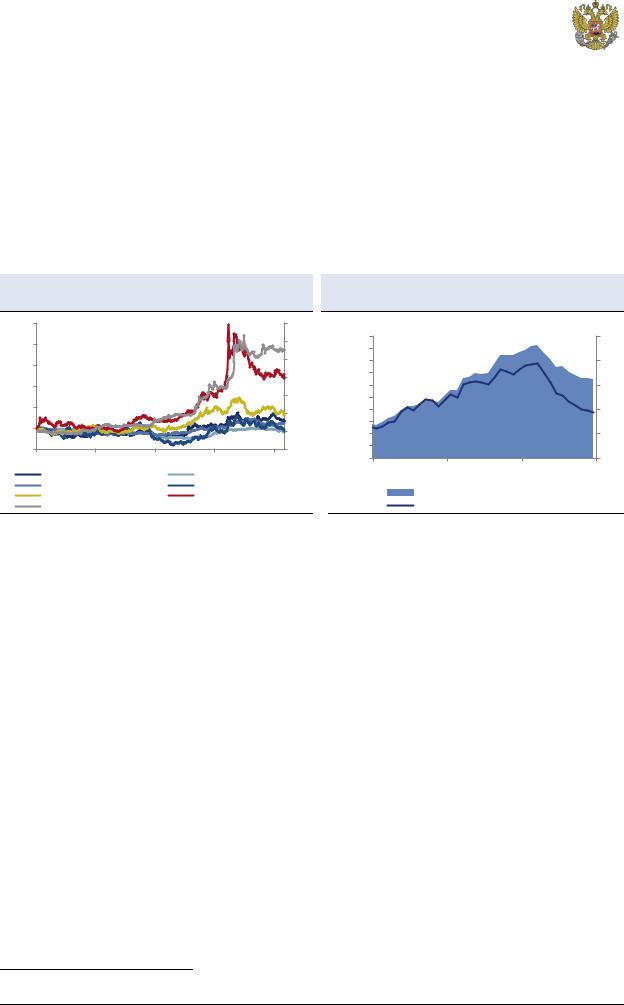
vk.com/id446425943
Министерство экономического развития Российской Федерации
валюты была достигнута в конце августа–сентябре (в моменте курс рубля превышал отметку 70 рублей за долл. США).
В этих условиях в целях обеспечения финансовой стабильности на валютном рынке Банк России приостановил операции по покупке иностранной валюты в рамках бюджетного правила с 9 по 16 августа и с 23 августа до конца 2018 года. При этом решение Банка России не повлекло за собой нарушения реализации бюджетной политики в соответствии с бюджетным правилом, которое определяет использование нефтегазовых доходов в бюджетной системе. Параметры бюджетного правила (в частности, объемы накопления дополнительных нефтегазовых доходов в Фонде национального благосостояния) рассчитываются в соответствии с нормативно закреплённым алгоритмом, основанном на динамике цен на энергоносители и не допускающем дискретности при определении объемов операций.
Рис. 42. Валюты развивающихся стран в 2018 году |
|||||
продемонстрировали ослабление |
|
||||
200 |
янв.2017=100% |
|
|
280 |
|
|
|
|
|
||
180 |
|
|
|
|
250 |
|
|
|
|
|
|
160 |
|
|
|
|
220 |
|
|
|
|
|
|
140 |
|
|
|
|
190 |
|
|
|
|
160 |
|
|
|
|
|
|
|
120 |
|
|
|
|
130 |
|
|
|
|
|
|
100 |
|
|
|
|
100 |
|
|
|
|
|
|
80 |
|
|
|
|
70 |
янв-17 |
июл-17 |
янв-18 |
июл-18 |
янв-19 |
|
|
российский рубль |
|
китайский юань |
||
|
индийская рупия |
|
южноафр. ранд |
||
|
бразильский реал |
|
турецкая лира |
||
|
аргентин. песо (пр.шк.) |
|
|
||
Источник: Bloomberg, расчеты Минэкономразвития России. |
|||||
Рис. 43. С апреля доля нерезидентов на рынке |
||
ОФЗ снижалась |
|
|
млрд.руб |
|
% |
2 500 . |
|
40 |
2 300 |
|
|
2 100 |
|
35 |
1 900 |
|
|
1 700 |
|
30 |
1 500 |
|
|
1 300 |
|
25 |
1 100 |
|
|
900 |
|
20 |
700 |
|
|
500 |
|
15 |
2016 |
2017 |
2018 |
|
объем ОФЗ у нерезидентов |
|
|
доля нерезидентов на рынке ОФЗ |
|
Источник: Банк России, расчеты Минэкономразвития России. |
||
Вместе с тем фундаментальные факторы, определяющие курс рубля к иностранным валютам (состояние платежного баланса, показатели государственных финансов, экономическая динамика), оставались благоприятными. Кроме того, действующая конструкция макроэкономической политики ограничивает чувствительность основных макроэкономических показателей к изменениям внешней конъюнктуры. Одним из свидетельств возросшей устойчивости российской экономики к внешним шокам является динамика курса рубля в 4кв18. Цена на нефть марки «Юралс» в октябре–декабре снизилась приблизительно на 40 %, при этом ослабление рубля за тот же период составило около 5 %. Для сравнения, в 4кв14 при сопоставимом по масштабу снижении цен на нефть рубль ослаб более чем на треть в номинальном выражении относительно доллара США.
В январе 2019 г. мировые рынки отыграли часть декабрьского падения на фоне прогресса в торговых переговорах между США и Китаем, а также благодаря сильной годовой отчетности ряда крупных американских компаний. Данные факторы перевесили эффект неопределенности, связанной с частичной приостановкой деятельности государственных учреждений в США и ходом переговоров о выходе Великобритании из Евросоюза.
Цены на нефть марки «Юралс» в январе 2019 года выросли на 22,9 %8 – до 62,3 долл. США за баррель на конец месяца. Главным позитивным фактором стало повышение аппетита к риску на мировых рынках. Поддержку нефтяным котировкам также оказывало сокращение добычи нефти в соответствии с новыми договоренностями сделки ОПЕК+, достигнутыми на декабрьском заседании в Вене (так, Саудовская Аравия в декабре 2018 года сократила добычу на 486 тыс. барр./сутки до 10,6 млн. барр. / сутки). Однако фактором риска для мирового рынка нефти остается растущая добыча нефти в США, которая в декабре достигла 11,9 млн. барр./сутки.
8 Здесь и далее данные финансовых рынков приведены по состоянию на закрытие торгов 31 января, если не указано иное.
11 февраля 2019 г. |
Страница 23 |
http://new.guap.ru/i04/contacts

vk.com/id446425943
Министерство экономического развития Российской Федерации
Восстановление конъюнктуры мировых рынков в январе 2019 г. оказывало позитивное влияние на российский валютный и фондовый рынки. Индекс ММВБ в январе вырос на 6,4%. Российский 5-летний CDS-спред в моменте опускался ниже 130 б.п., а его среднее значение в январе составило 139,8 б. п. по сравнению с 153,1 б.п. в декабре.
Российский рубль в январе стал одним из лидеров укрепления среди валют стран с формирующимися рынками (+6,2%). Дополнительную поддержку рублю оказало решение OFAC об исключении из санкционного списка российских компаний «РУСАЛ», «En+» и «Евросибэнерго».
С учетом стабилизации ситуации на валютном рынке Банк России возобновил регулярные покупки иностранной валюты в рамках бюджетного правила с 15 января 2019 года. С 1 февраля регулятор также приступил к проведению отложенных в 2018 г. покупок иностранной валюты на внутреннем рынке, которые будут осуществляться равномерно в течение 36 месяцев.
Таблица 9. Основные показатели глобальных рынков по состоянию на 31.01.2019
|
|
|
|
|
|
|
|
|
Изменение, % |
|
|
|
|
12 месяцев |
|
||||
|
|
|
|
|
|
|
|
|
|
|
|
|
|
|
|
|
|
|
|
|
Валютные рынки |
|
|
Значение |
|
1 день |
|
1 нед |
|
1 мес |
|
3 мес |
|
YTD |
|
max |
|
min |
|
|
|
|
|
|
|
|
|
|
|
|
|
|
|
|
|
|
|
|
|
USD Index (DXY) |
95,28 |
-0,1 |
-1,4 |
-0,9 |
|
-1,9 |
-0,9 |
97,71 |
88,25 |
|
|||||||||
EUR/USD |
1,1504 |
0,2 |
1,8 |
0,3 |
|
1,7 |
0,3 |
1,2555 |
1,1216 |
|
|||||||||
RUB корзина |
69,98 |
-0,4 |
0,5 |
-5,2 |
|
0,3 |
-5,2 |
75,73 |
61,39 |
|
|||||||||
USD/RUB |
65,55 |
-0,1 |
-0,3 |
-6,0 |
|
-0,5 |
-6,0 |
70,59 |
55,56 |
|
|||||||||
EUR/RUB |
75,39 |
-0,4 |
1,4 |
-5,2 |
|
1,2 |
-5,2 |
81,91 |
68,49 |
|
|||||||||
Японская Йена (USD/JPY) |
108,75 |
0,3 |
-0,8 |
-0,9 |
|
-3,7 |
-0,9 |
114,55 |
104,56 |
|
|||||||||
Китайский юань (USD/CNY) |
6,70 |
0,2 |
-1,3 |
-2,6 |
|
-3,9 |
-2,6 |
6,98 |
6,24 |
|
|||||||||
Турецкая лира (USD/TRY) |
5,23 |
0,0 |
-0,7 |
-1,2 |
|
-6,4 |
-1,2 |
7,24 |
3,73 |
|
|||||||||
Южноафриканский рэнд (USD/ZAR) |
13,38 |
-0,3 |
-2,5 |
-6,8 |
|
-9,5 |
-6,8 |
15,70 |
11,51 |
|
|||||||||
Бразильский реал (USD/BRL) |
3,68 |
1,3 |
-2,4 |
-5,0 |
|
-1,2 |
-5,0 |
4,21 |
3,16 |
|
|||||||||
Индийская рупия (USD/INR) |
71,05 |
0,1 |
0,0 |
1,8 |
|
-3,9 |
1,8 |
74,48 |
63,56 |
|
|||||||||
Южнокорейский вон (USD/KRW) |
1113 |
0,3 |
-1,4 |
-0,3 |
|
-2,4 |
-0,3 |
1145 |
1054 |
|
|||||||||
|
Фондовые рынки |
|
|
Значение |
|
1 день |
|
1 нед |
|
1 мес |
|
3 мес |
|
YTD |
|
max |
|
min |
|
|
|
|
|
|
|
|
|
|
|
|
|
|
|
|
|
|
|
|
|
РТС |
1213 |
1 |
2 |
14 |
|
8 |
14 |
1339 |
1033 |
|
|||||||||
ММВБ |
2525 |
1 |
2 |
7 |
|
7 |
7 |
2529 |
2065 |
|
|||||||||
S&P 500 |
2681 |
2 |
2 |
7 |
|
-1 |
7 |
2941 |
2347 |
|
|||||||||
DJIA |
25015 |
2 |
2 |
7 |
|
0 |
7 |
26952 |
21713 |
|
|||||||||
FTSE |
6942 |
2 |
2 |
3 |
|
-3 |
3 |
7904 |
6537 |
|
|||||||||
DAX |
11182 |
0 |
1 |
6 |
|
-2 |
6 |
13301 |
10279 |
|
|||||||||
NIKKEI 225 |
20773 |
1 |
1 |
4 |
|
-5 |
4 |
24448 |
18949 |
|
|||||||||
Shanghai Composite |
2585 |
0 |
0 |
4 |
|
-1 |
4 |
3495 |
2441 |
|
|||||||||
VIX Index |
17,66 |
-7,7 |
-6,5 |
-30,5 |
|
-16,8 |
-30,5 |
50,30 |
10,17 |
|
|||||||||
|
Товарные рынки |
|
|
Значение |
|
1 день |
|
1 нед |
|
1 мес |
|
3 мес |
|
YTD |
|
max |
|
min |
|
|
|
|
|
|
|
|
|
|
|
|
|
|
|
|
|
|
|
|
|
WTI ($, bbl) |
54,52 |
0,5 |
2,6 |
19,2 |
|
-17,0 |
19,2 |
76,29 |
42,67 |
|
|||||||||
Brent ($, bbl) |
62,07 |
0,7 |
1,6 |
15,4 |
|
-17,3 |
15,4 |
85,58 |
50,22 |
|
|||||||||
Urals-Mediterranean ($, bbl) |
62,19 |
0,6 |
1,7 |
16,8 |
|
-15,0 |
16,8 |
85,44 |
48,87 |
|
|||||||||
Золото ($, oz) |
1321,0 |
0,1 |
3,1 |
3,0 |
|
8,8 |
3,0 |
1365 |
1160 |
|
|||||||||
Серебро ($, oz) |
16,04 |
-0,1 |
4,7 |
3,5 |
|
12,6 |
3,5 |
17,40 |
13,90 |
|
|||||||||
Медь ($, t) |
6136 |
1,4 |
3,6 |
2,9 |
|
2,4 |
2,9 |
7348 |
5725 |
|
|||||||||
Никель ($, t) |
12295 |
1,9 |
4,9 |
15,7 |
|
7,5 |
15,7 |
15693 |
10475 |
|
|||||||||
Алюминий ($, t) |
1910 |
0,9 |
1,0 |
3,4 |
|
-2,3 |
3,4 |
2718 |
1786 |
|
|||||||||
Пшеница |
518 |
0,2 |
-0,7 |
2,9 |
|
3,4 |
2,9 |
593 |
439 |
|
|||||||||
|
|
|
|
|
|
|
|
|
|
|
|
|
|
|
|
|
|
|
|
|
Долговые рынки (изменения - в |
|
|
Значение |
|
1 день |
|
1 нед |
|
1 мес |
|
3 мес |
|
YTD |
|
max |
|
min |
|
|
базисных пунктах) |
|
|
|
|
|
|
|
|
|
|
||||||||
|
|
|
|
|
|
|
|
|
|
|
|
|
|
|
|
|
|
|
|
Russia 42Y, доходность, % |
5,16 |
0 |
4 |
-26 |
|
-33 |
3,5 |
5,67 |
4,71 |
|
|||||||||
UST 2Y, доходность, % |
2,50 |
0 |
-3 |
0 |
|
-13 |
0,3 |
2,97 |
1,94 |
|
|||||||||
UST 10Y, доходность, % |
2,67 |
0 |
-2 |
-1 |
|
-15 |
-0,6 |
3,26 |
2,54 |
|
|||||||||
Russia CDS 5Y, б.п. |
132 |
-2 |
1 |
-14 |
|
-11 |
-14 |
182 |
100 |
|
|||||||||
ОФЗ -26207 (03.02.2027), доходность, % |
8,22 |
-4 |
0 |
-48 |
|
-40 |
2,4 |
9,19 |
6,91 |
|
|||||||||
|
|
|
|
|
|
|
|
|
|
|
|
|
|
|
|
|
|
|
|
11 февраля 2019 г. |
Страница 24 |
http://new.guap.ru/i04/contacts
